
Fig. 223. (S. 1–1.)
Two grooved effigies and two celts, from the Bahama Islands, West Indies. Reproduced in natural colors. B. W. Arnold’s collection, Albany, New York.
Transcriber’s Note:
New original cover art included with this eBook is granted to the public domain.

Fig. 223. (S. 1–1.)
Two grooved effigies and two celts, from the Bahama Islands, West Indies. Reproduced in natural colors. B. W. Arnold’s collection, Albany, New York.
![[Logo]](images/title.jpg)
| XXV. | Ground Stone | 1 |
| Effigies in stone and wood—bird-stones | 1 | |
| Animal and human effigies | 20 | |
| XXVI. | Ground Stone | 29 |
| Stone pipes | 29 | |
| The classification of pipes | 32 | |
| XXVII. | Ground Stone | 95 |
| Mortars and pestles | 95 | |
| XXVIII. | Objects of Shell | 117 |
| XXIX. | Objects of Bone | 134 |
| Mandan bone implements | 149 | |
| XXX. | Objects of Copper | 161 |
| The native copper implements of Wisconsin | 161 | |
| Fabrication | 172 | |
| Distribution | 174 | |
| Classes and functions | 178 | |
| Axes | 180 | |
| Chisels | 184 | |
| Spuds | 186 | |
| Gouges | 188 | |
| Adzes | 189 | |
| Spatulas | 192 | |
| Knives | 196 | |
| Arrow- and spear-points | 198 | |
| Harpoon-points | 214 | |
| Pikes and punches | 216 | |
| Awls and drills | 219 | |
| Spikes | 220 | |
| Needles | 221 | |
| Fish-hooks—peculiar implements | 222 | |
| Banner-stones—beads | 224 | |
| Bangles | 225 | |
| Finger-rings—ear-rings | 226 | |
| Ear-spools or ear-plugs—gorgets and pendants | 227 | |
| Crescents | 228 | |
| Other ornaments | 230 | |
| vi | ||
| XXXI. | Textile Fabrics | 235 |
| XXXII. | Pottery of the United States | 247 |
| XXXIII. | Hematite Objects | 295 |
| XXXIV. | Miscellaneous Objects | 308 |
| XXXV. | The Stone Age in Eastern Canada, Utah, and Dakota | 330 |
| Eastern Canada | 330 | |
| The Plains of western and central Canada | 333 | |
| The stone age in Utah | 336 | |
| Objects made of wood | 336 | |
| Textiles; feather objects; bone objects | 337 | |
| Objects made from teeth; shell objects; stone objects; pottery objects | 338 | |
| The stone age in Dakota | 339 | |
| Hide and bark | 339 | |
| Objects made from deer antlers; bone objects; shell objects | 340 | |
| Stone objects | 341 | |
| Objects of copper; of pottery; of unbaked clay | 342 | |
| XXXVI. | Conclusions | 344 |
| The population in prehistoric times | 344 | |
| The stone age in historic times | 348 | |
| The antiquity of man in America | 350 | |
| Adaptation to conditions | 354 | |
| Art in ancient times and modern art | 355 | |
| XXXVII. | Conclusions | 357 |
| The ancient culture-groups | 357 | |
| The stone-age point of view | 363 | |
| Field study needed | 365 | |
| Bibliography | 369 | |
| Index | 411 |
Aboriginal man traced all sorts of figures on the rocks and occasionally on the surfaces of flat ornaments and ceremonials. Not only did he make pictures on shell gorgets and on birch bark, but he also carved complete figures.
I have not made a special chapter for pictographs and picture writings, but have dismissed them from this work, save with here and there a reference. However, they represent stone-age pictorial art. Dr. Fewkes, Mr. Cushing, Dr. Garrick Mallory and others have given us numerous papers on picture writings, pictographs, painted and sculptured symbols. Garrick Mallory’s report on the sign language among the American Indians was published in the Eleventh Annual Report of the Bureau of Ethnology and covers four hundred pages. This treats extensively of picture writings and pictographs. He portrayed the attempts of stone-age man at expressing his thoughts. He had not arrived at a written language save in Mexico and Central America. In North America he was in the advanced stone age. But he was very skillful in his pictographs and in his carvings of human, animal, bird, reptile, and fish figures. It has occurred to me that he first made rude scratches on flat surfaces, on wigwam sides, on trees, on rocks near trails.
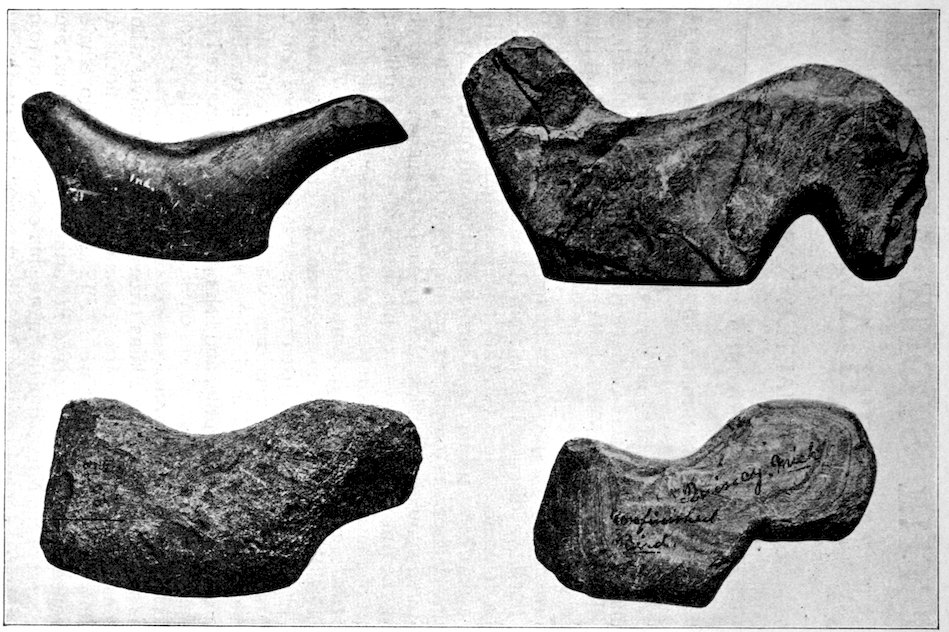
Fig. 399. (S. 2–3.) Unfinished bird-stones. Localities: Ohio, Indiana, Michigan. Phillips Academy collection.
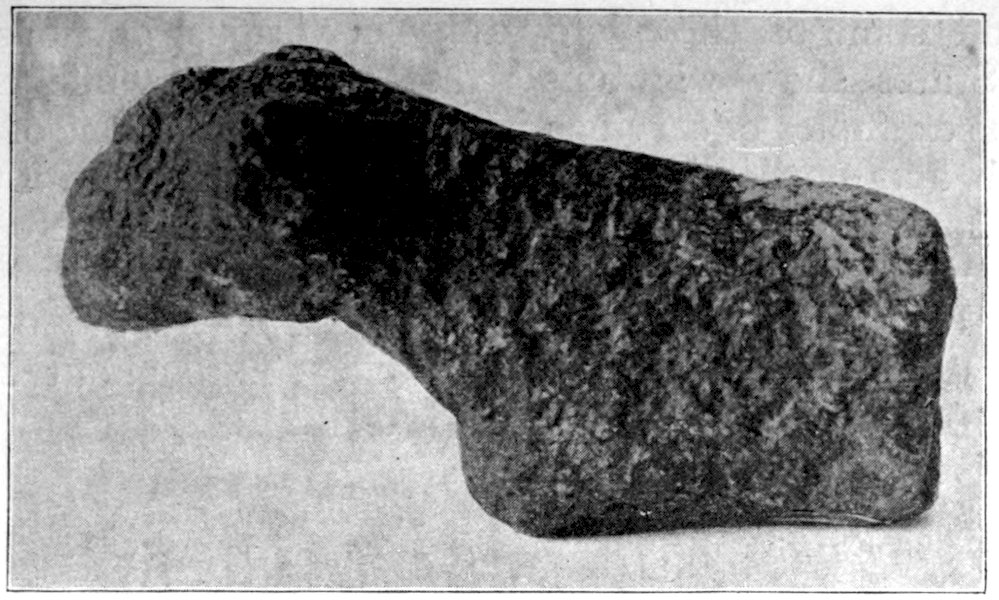
Fig. 400. (S. 1–1.) Unfinished bird-stone. Collection of Emily Fletcher, Westford, Massachusetts.
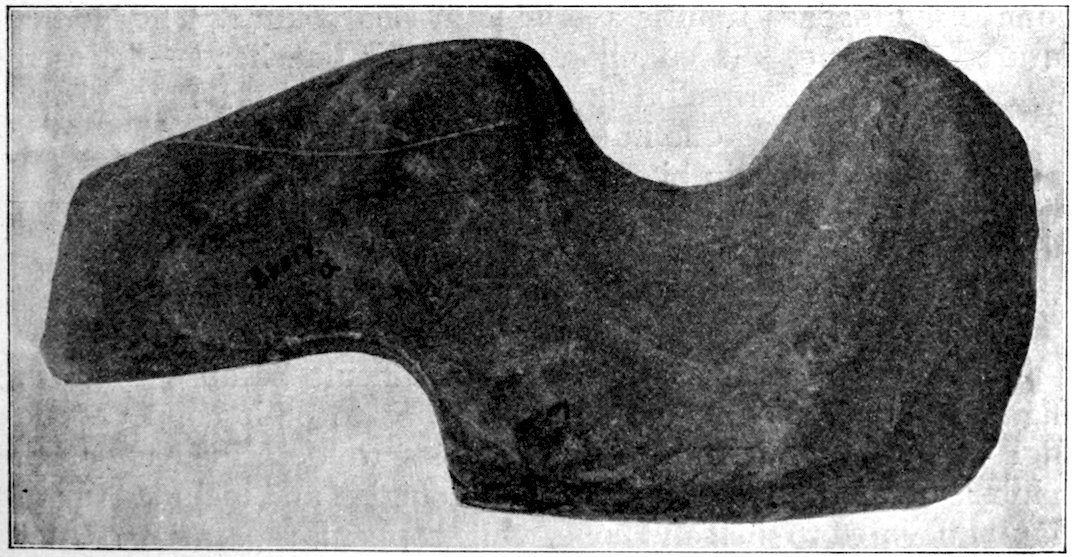
Fig. 401. (S. 2–3.) Unfinished bird-stone. Phillips Academy collection.
It is significant that the Plains tribes and all the natives who did not construct mounds or earthworks, natives that had not reached the stage of barbarism but were still savages, made no effigies of consequence. The effigies carved in catlinite, and observed among tribes west of the Mississippi during the historic period, seem to have been inspired by a knowledge of the superior arts of the white people. We find that while the roving tribes of the Plains painted various battle and hunting scenes on their tents and shields, yet they were inferior in art as compared with the Pueblo, the Cliff-Dweller, or the Mound-Building peoples. It is also significant, and I shall speak of it at greater length in my Conclusions, that the native American was so little influenced in his art by some life-forms. I have never seen an effigy of a mountain, a tree, a plant, or a flower. The modern Ojibwa Indians design flowers in their bead-work. The ancient Ojibwa did not. The native American did not seem to have been impressed by plant-life or inanimate 4objects. Occasionally, he scratched a trail or a tipi on an ornament, and some of the pictographs in various portions of the United States show wigwams, trails, etc. But while there are numerous examples of carvings in stone, shell, and bone of animals, birds, fish, and reptile life, we search in vain for carvings of the other things I have mentioned. The highest art is found where the largest villages, or the most numerous mounds or cliff-houses, were located. In small mound groups, or areas where the population was not sedentary, the art is very crude. Throughout the areas where the culture is highest, notably Alabama, Georgia, Wisconsin, Tennessee, Arkansas, Missouri, Ohio, and Illinois, we find these large mound groups referred to, all of which proves that the people lived long enough in one place to develop an art.
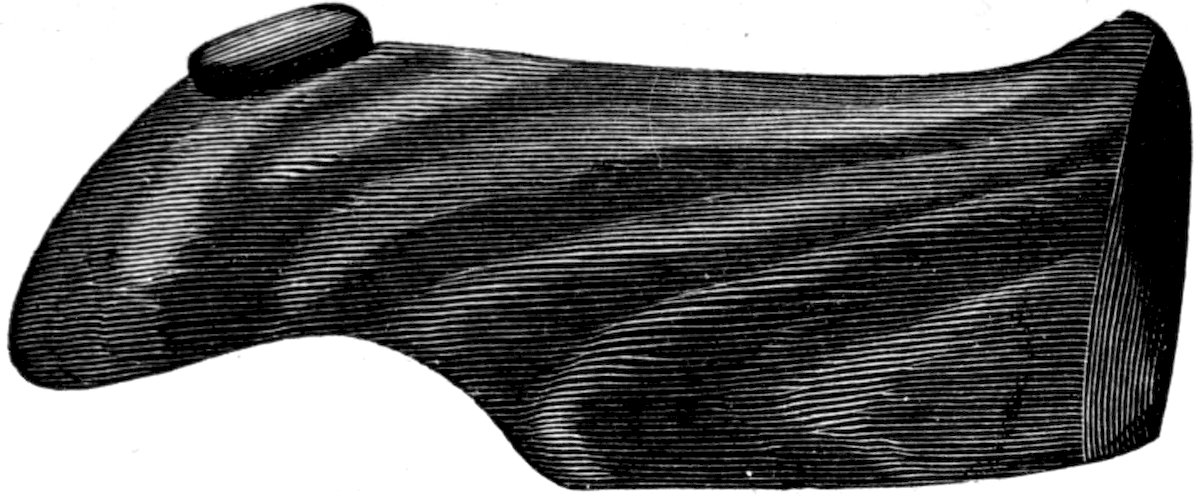
Fig. 402. (S. 1–1.) Central Ontario, Canada. Provincial Museum collection.
This art we see in the carved effigies. To study them in detail requires more space than is available in this volume. The Nomenclature Committee placed all effigies under one head—“Resemblances to known forms.” Under that general head I have placed:
The classification made is rendered difficult because there are effigies in bone, shell, clay, and stone, not to omit copper. Such effigies as were drilled and used as pipes are described under the chapter devoted to pipes. The bone effigies are included in the chapter devoted to shell and bone, while copper is separately treated. Yet there remains, after treating more or less completely of these 5various divisions, a large class of stone objects which are not pipes, or tools, or dishes, and which I have thought best to include by themselves. The largest division in effigies is the so-called bird- or saddle-stone which is found between the following lines: Davenport, Iowa, to central Minnesota, east to New Brunswick, south to the Atlantic Coast, and thence south down the coast to Washington, thence west to Davenport. Few bird-stones occur south of Kentucky, west of Davenport, or north of St. Paul. The other effigies are of multitudinous kinds and are widely scattered throughout the United States.
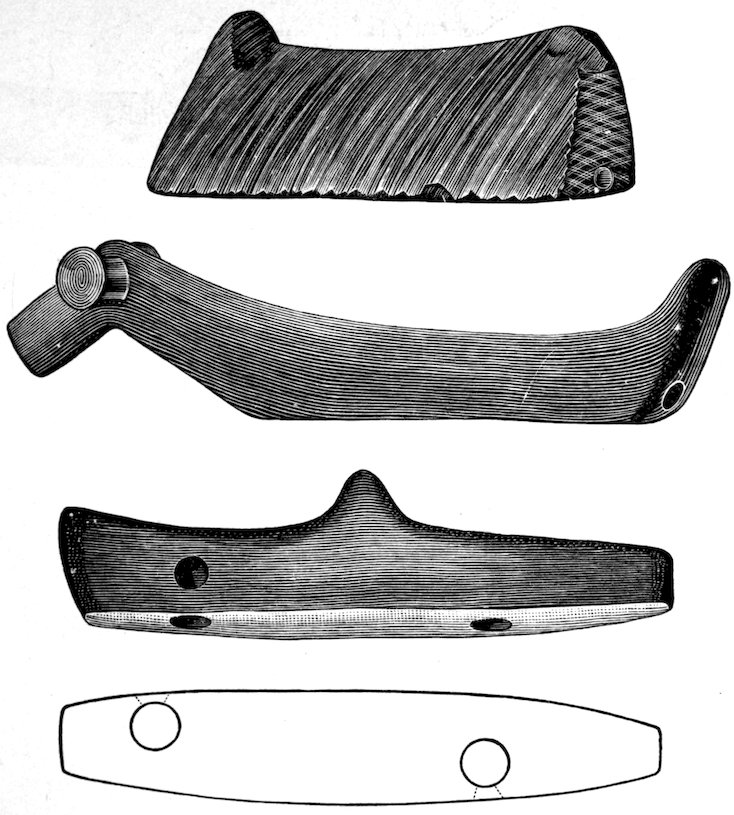
Fig. 403. (S. 1–1 and 1–2.) These three problematical forms are from the Provincial Museum collection, Ontario, Canada. The upper one is from central Ontario. The base view of the lower specimen is also shown.
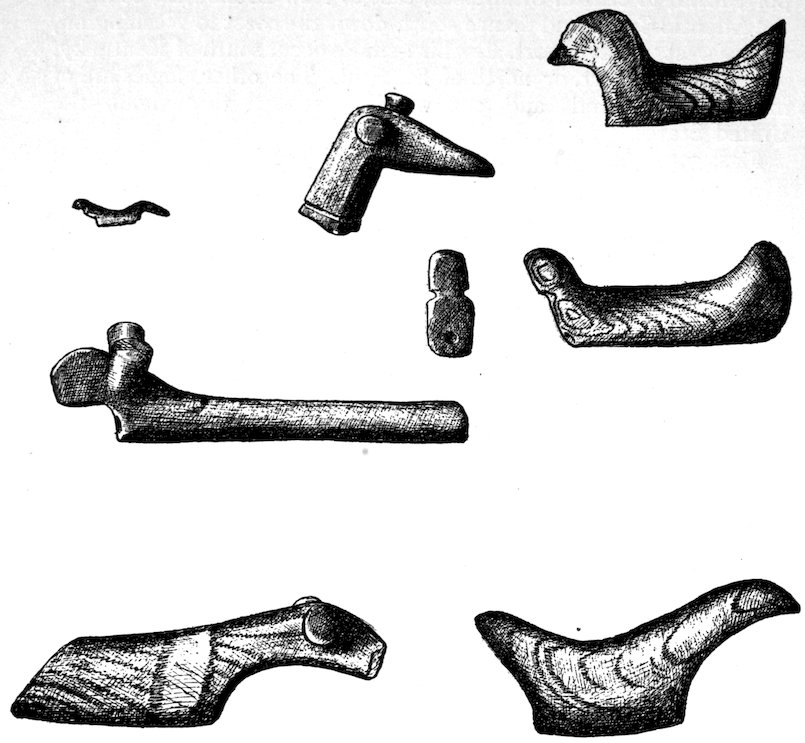
Fig. 404. (S. 1–2.) Andover collection.
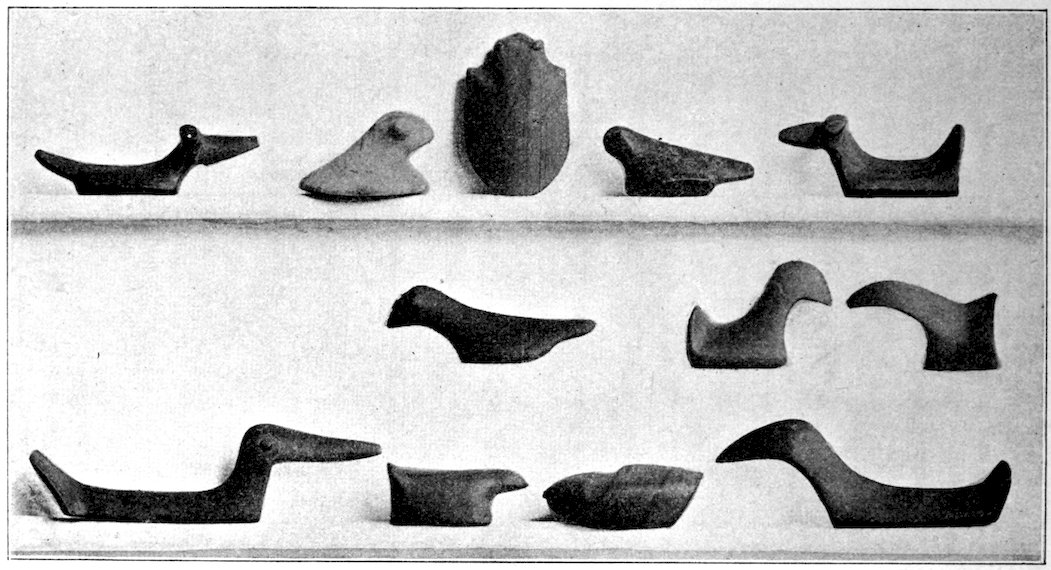
Fig. 405. (S. 1–4.) W. A. Holmes’s collection, Chicago.
8Figs. 399, 400, 401, and the central object in Fig. 269 are all unfinished bird-stones. It was difficult for me to procure these, but after some years of correspondence they were obtained.
The specimens clearly show the work of the hand-hammer. Fig. 401 and the upper right-hand specimen in Fig. 399 have been pecked into shape and the grinding-polishing process was well under way when the specimen was set aside, or lost.

Fig. 406. (S. about 1–3.) Collection of Leslie W. Hills, Fort Wayne, Indiana.
In collecting numbers of these unfinished bird-stones, my object was to prove that these slender, delicate objects did not indicate European knowledge or influence, but were wrought after much labor from ordinary stone by prehistoric man. None of them show 9the marks of steel cutting-tools. Fig. 400 is the roughest one and yet the ears or eyes stand out in relief. Fig. 399 is interesting in that it shows three on which the result of pecking and battering is in evidence. The one to the left, lower row, has been pecked, and ground, and was in process of being polished when the work ceased.
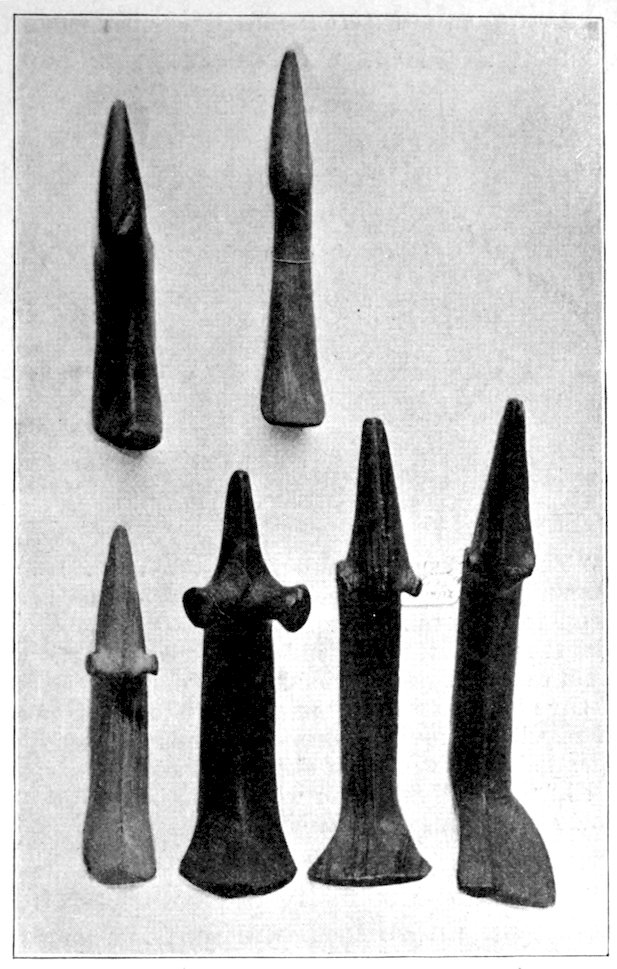
Fig. 407. (S. 1–2.) Collection of Leslie W. Hills, Fort Wayne, Indiana.
Fig. 401, Andover collection, found in Ohio, is a large bird-stone about five inches in length. The marks of the flint cutting-tool or of the hard grained rubbing-stone, which cut the softer surface of the slate, are still apparent. Fig. 404 presents various bird-stones, both rare and common forms, with and without ears. These are found long and slender, short and thick, almost as low as the bar-amulet, 10and also so high that they merge into other effigies. Six bird-stones from the collection of Mr. Leslie W. Hills of Fort Wayne, Indiana, are shown in Fig. 407.
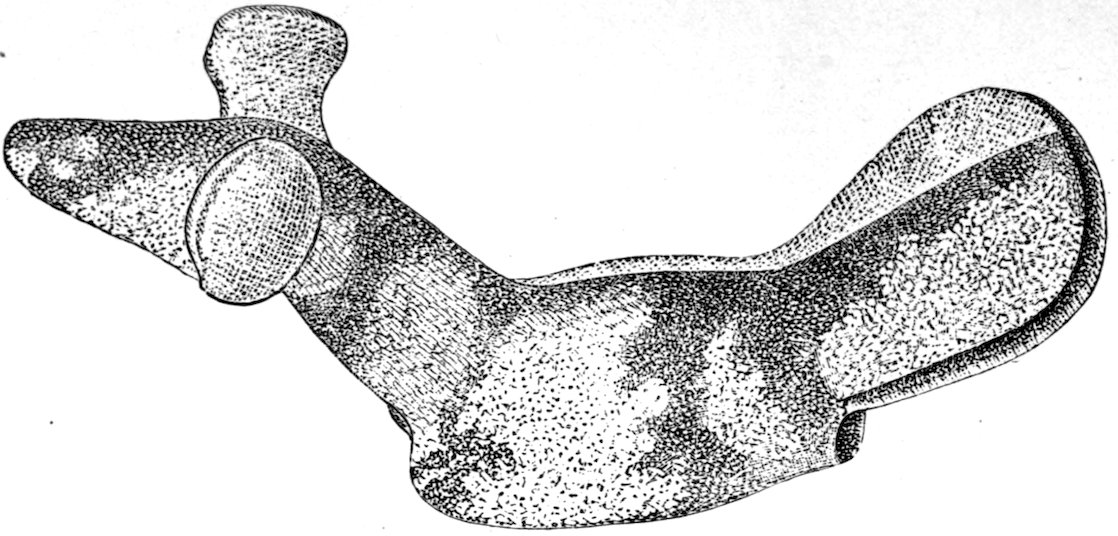
Fig. 408. (S. 3–5.) “This specimen is from western New York. It is made in the form of a bird which from the number of similar specimens have given the name to this class. The eyes are represented by great protuberances, which must have greatly increased the difficulty of manufacture. It is made from a boulder or large piece, and while the material is hard, it is not rough but rather fragile. It could not be chipped like flint nor whittled like soapstone, but must have been hammered or pecked into shape and afterwards ground to its present form, then polished until it is as smooth as glass. A consideration of the conditions demonstrates the difficulty of making this object and the dexterity and the experienced working required.”[1] Material: diorite with feldspar crystals. Smithsonian collection. Otis M. Bigelow’s collection, Baldwinsville.
The bird-stones with projection on either side, which by some are called ears, and by others eyes, are quite frequently found in the eastern United States, and Canada. An unusual one is illustrated in Fig. 402, this having one button-shaped knob on the top of the head. Figs. 406 and 409 from the collection of Mr. Hills illustrate bird-stones about one third size, from various portions of Indiana, Ohio, and Canada; an unfinished one in Fig. 409 (number on its side 561) is interesting in that the bill or nose is unusually long, the head high, and the body quite short. One beautiful specimen owned by Mr. George Little of Xenia, Ohio, is illustrated in Fig. 410, and the specimen is turned in Fig. 411 so that the perforations are visible. The neck of this is unusually long. It will be observed that all of these bird-stones have flat bases; none of the bases are round.
In Figs. 404 to 411 are presented bird-stones, Class I, divisions A and B. Naturally, there are more of plain bird-stones (A) than 11those with large projecting ears, or elaborate heads. It will be observed that the width of the tail varies, being long and narrow in some, short and slightly flaring in others, and in still others broad, or fan-shaped. Sometimes the eye is very small, as in the lower left-hand specimen, Fig. 405. Or it may be sunken, several of which are shown in Fig. 409. But usually it is worked in high relief.
There are presented, all told, in this chapter, sixty bird-stones. It would be possible for me to present ten times this number. There are included in the series numbers of effigy-like objects that might not be classed by other observers as bird-stones. For instance, the central specimen, top row, of Fig. 405.
The bird-stones are very interesting and unique objects and the range in them is considerable. Sometimes they are almost square, as is seen in the central specimen, lower row, Fig. 405. Again, the head is a prominent feature, as is observed in the lower one in Fig. 409, and the body is of secondary consideration. A group of these stones from the Andover collection is shown in Fig. 404. The very small bird-stone in the upper row to the left is half size of the original, as are the others. This is the smallest bird-stone, the genuineness of which is beyond question, brought to my attention. Just below it is a peculiarly straight effigy from Tennessee, which is almost bar-amulet in shape, and marks the merging of the bird-stone into the bar-amulet. Fig. 408 is an expanded-wing type of unusual beauty. Fig. 405, from the collection of W. A. Holmes, Chicago, shows typical bird-stones, with an unusual one, almost like a frog, and shown in the centre at the top. Next to it to the left is a short stone, hardly bird-like in character, of which a few have been found in the United States. Fig. 403, from the collection in the Provincial Museum, Toronto, Ontario, Canada, presents at the top a stone as much bar-amulet as bird in character, and also a stone at the bottom in the centre of which is worked a projection or knob.
Fig. 412, from the Reverend William Beauchamp’s collection, is somewhat different from ordinary bird-stones, although it is included under that class. In 1899 I issued a bulletin, “The Bird-Stone Ceremonial,” which is now out of print. It illustrated fifty-three bird-stones. Since that time Mr. Charles E. Brown has published a study of bird-stones.[2] This is an excellent review.
Dr. Thomas Wilson once made a statement[3] concerning bird-stones, and I quote one of his paragraphs: “The United States 12National Museum possesses many of these specimens. While they bear a greater resemblance to birds than anything else, yet scarcely any two of them are alike and they change in form through the whole gamut until it is difficult to determine whether it is a bird, a lizard, or a turtle, and finally the series ends in a straight bar without pretense of presenting any animal.”

Fig. 409. (S. about 1–3.) Collection of Mr. Leslie W. Hills, Fort Wayne, Indiana.
The range of material is from Huronian slate or shale to red sandstone, granite, and porphyry. Usually the stone from which they are made is banded or contains spots of color. They are either red, gray, or brown, with variations. Sometimes feldspathic granite, diorite, and porphyritic-feldspar are made use of. Dr. William Beauchamp gives a very good description of some fifteen bird-stones.[4] I have reproduced none of the illustrations he gives, but as his text is timely, I quote at length from his paper:—
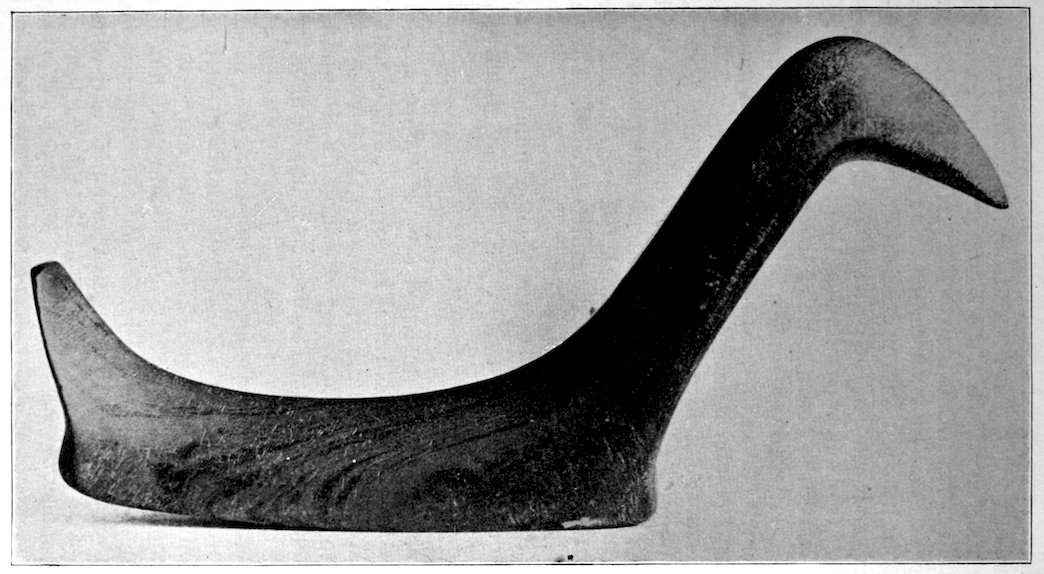
Fig. 410. (S. 1–1.) Collection of George Little, Xenia, Ohio.
14“The theories about their use seem fanciful, as some certainly are. Two writers assert that they were worn by married or pregnant women only, and many have accepted this statement. Others think they were worn by conjurors, or fixed on the prows of canoes. It is enough to say that some of the perforations are not adapted to any of these uses. It seems better to class them with the war and prey or hunting gods of the Zuñis, some of which they resemble. In that case the holes, of whatever kind, would have given a firm hold on the thongs which bound the arrows to the amulet, a matter of importance in an irregular figure.
“These perforations form the most important feature. The amulet may be but a simple bar, but to each end of the base is a sloping hole, bored from the end and base and meeting. To this necessary feature may be added a simple head or tail, and there may also be projecting ears. None of these are essential. They are but appropriate or tasteful accessories.
“Two notable collections contain a large number of amulets. In the Canadian collection at Toronto there are about fifty bird-amulets.”
Dr. Beauchamp mentions Mr. Douglass’s seventy specimens in the American Museum of Natural History collection, and also refers to the rarity of bar-amulets in Western New York:—
“They were variable in material as well as form, although most commonly made of striped slate. Perhaps full half have projecting ears, when of the bird-form. In the wider forms, usually of harder materials, there are often cross-bars on the under side, in which the perforations are made. Occasionally these are not entirely enclosed, yet are without signs of breakage. This seems to prove that these were not intended as means of attaching them to any larger object, on which they would rest, but rather for fastening articles upon them, as in the Zuñi amulets already mentioned, and which were illustrated by Mr. Frank H. Cushing, in the Second Report of the Bureau of Ethnology. On comparison a general resemblance to these will be seen, and in a few cases it is quite striking. That they were used in this way, rather than in those suggested by others, 15is a reasonable conclusion which gains strength with fuller study. As a class they belong to the St. Lawrence basin.”
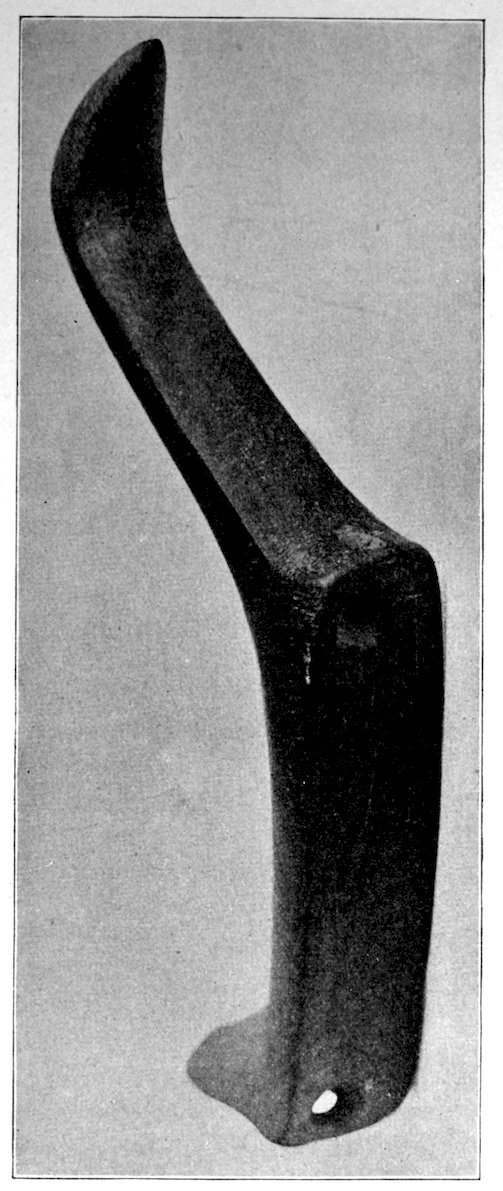
Fig. 411. (S. 1–1.) Side view of Fig. 410.
Mr. Gerard Fowke and Professor David Boyle should be quoted upon this subject. Mr. Fowke says:[5]
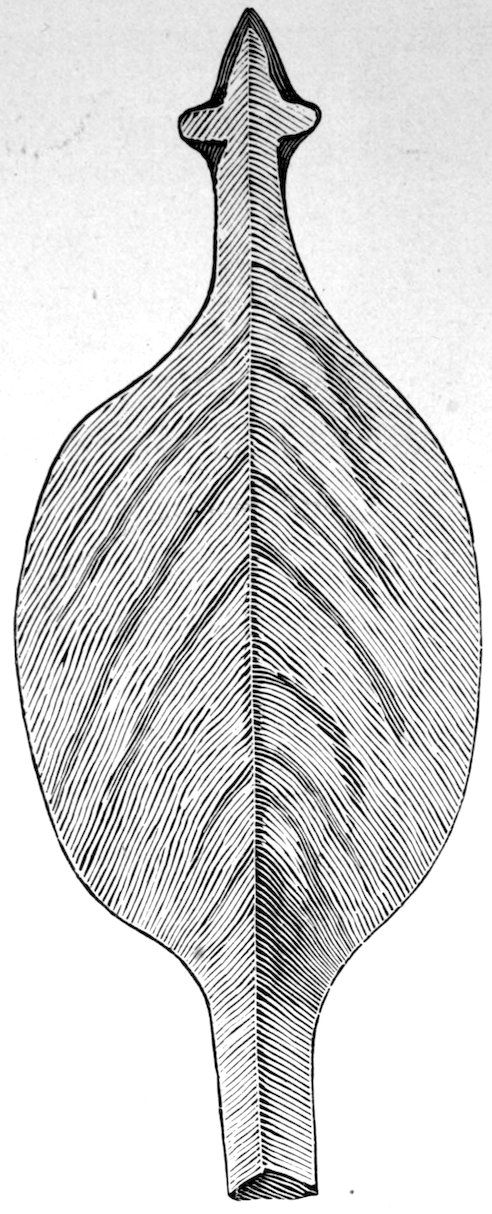
Fig. 412. (S. 1–1.) Rev. William Beauchamp’s collection. From Michigan.
“Stone relics of bird-form are quite common north of the Ohio River, but are exceedingly rare south of that stream. [He illustrates the same specimen figured by Dr. Wilson.]
“According to Gilman,[6] the bird-shape stones were worn on the head by the Indian women, but only after marriage. Abbott quotes Colonel Whittlesey to the effect that they were worn by Indian women to denote pregnancy, and from William Penn that when the squaws were ready to marry they wore something on their heads to indicate the fact.
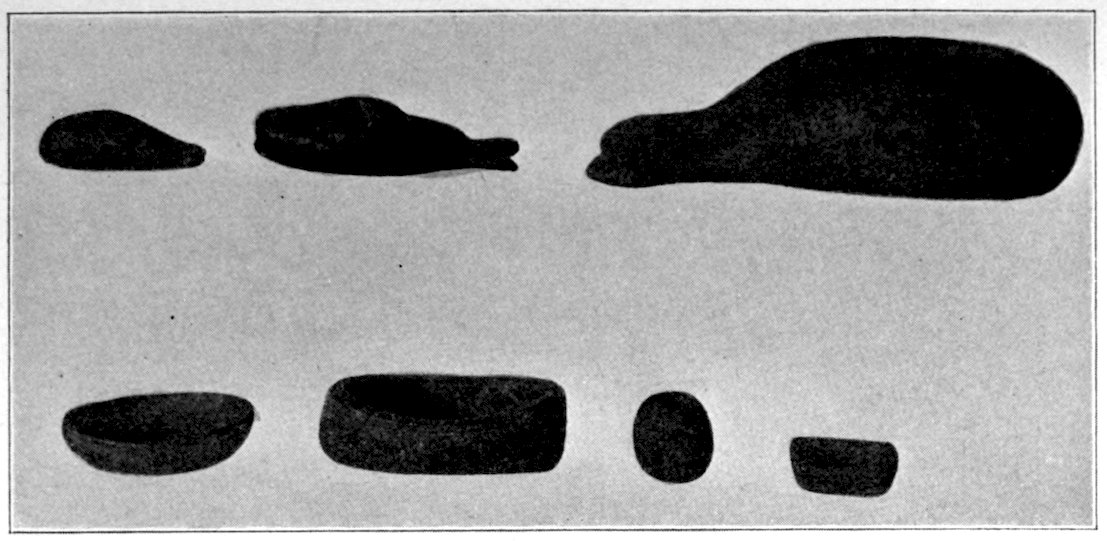
Fig. 413. (S. 1–4.) Peabody Museum, Cambridge.
“Jones[7] quotes from De Bry that the conjurors among the Virginia Indians wore a small black bird above one of their ears as a badge of office.”
Professor Boyle[8] says: “Although for convenience known as bird-amulets—most of them being apparently highly conventionalized bird-forms—now and again one sees specimens that are not suggestive of birds, whatever else they may have been intended to symbolize. In some instances there has not been any attempt to imitate eyes even by means of a depression, but in the majority of cases the eyes are enormously exaggerated, and stand out like buttons on a short stalk, fully half an inch beyond the side of the head. In every finished specimen the hole is bored diagonally through the middle of each end of the base, upwards and downwards. If merely for suspension when being carried, one hole would be sufficient, but the probability is that these were intended for fastening the ‘amulets’ to some other object, but what, or for what purpose, is not known.
“It has been suggested that these articles ... were employed in playing a game; that they are totems of tribes or clans; and that they were talismans in some way connected with the hunt for waterfowl. They are, at all events, among the most curious and highly finished specimens of Indian handicraft in stone found in this part of America, and the collection of them in the Provincial Archæological Museum is said to be the best that has been made.”
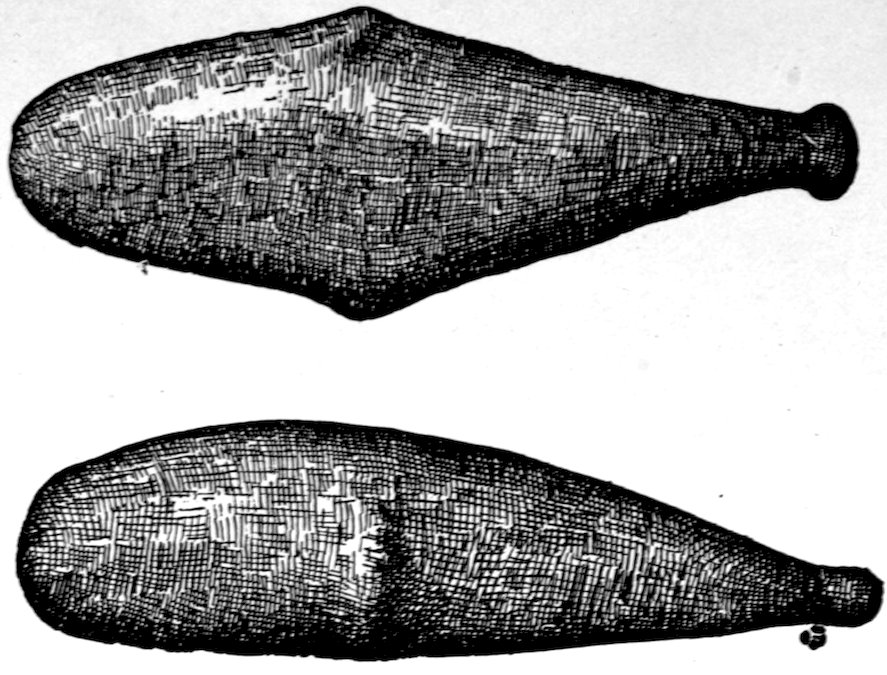
Fig. 414. (S. 3–8.) Effigy of a whale. Andover collection. This stone was found near Fall River, Massachusetts. It appears to be an effigy of a whale. Numbers of rude effigies, more or less whale-like in character, are found along the Atlantic seaboard in Connecticut and Massachusetts. Doubtless the whale would excite wonder in the minds of aborigines—hence the effigies.
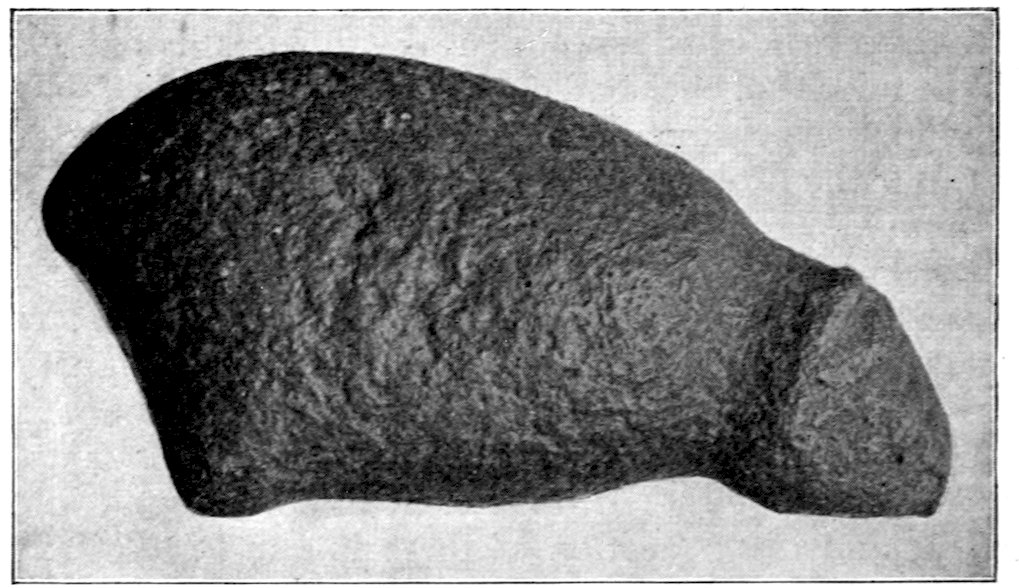
Fig. 415. (S. 1–2.) Bear effigy. Found near the corner of Essex and Boston Streets, Salem, Massachusetts, in 1830.
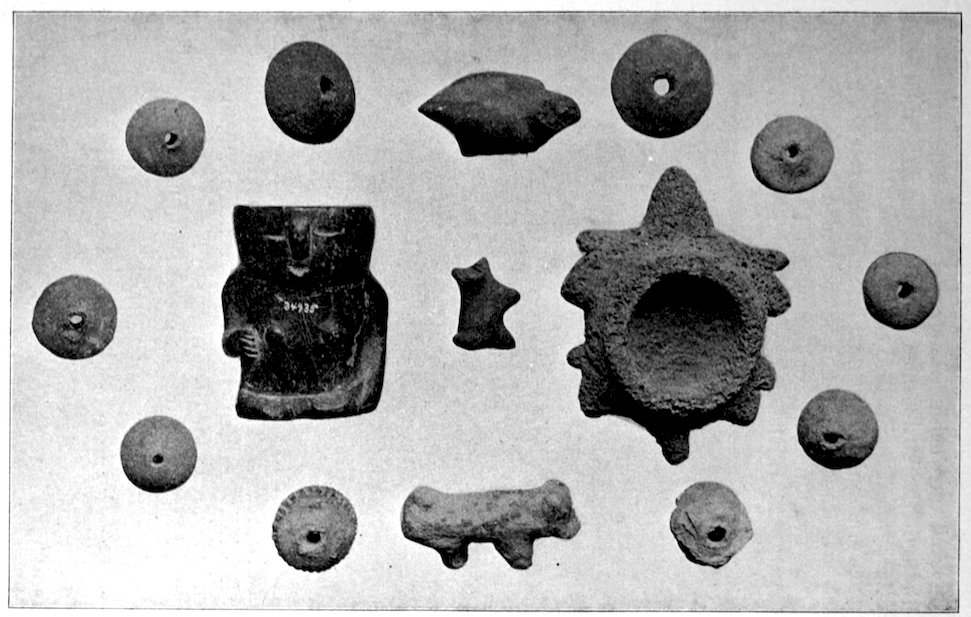
Fig. 416. (S. 1–3.) Group of various objects from ruins near Phœnix, Arizona. Phillips Academy collection.
20Professor Boyle speaks of the bar-amulet after treating of bird-stones, but he does not class them as the same kind of ceremonials.
Frank Hamilton Cushing illustrated bird-stones and flat tablets, and he thought the bird-stones were tied on flat tablets and these worn on the head. I inclined to that opinion when I published “The Bird-Stone Ceremonial,” but now I do not believe this, for the reason that most bird-stones could not be conveniently tied to flat tablets.
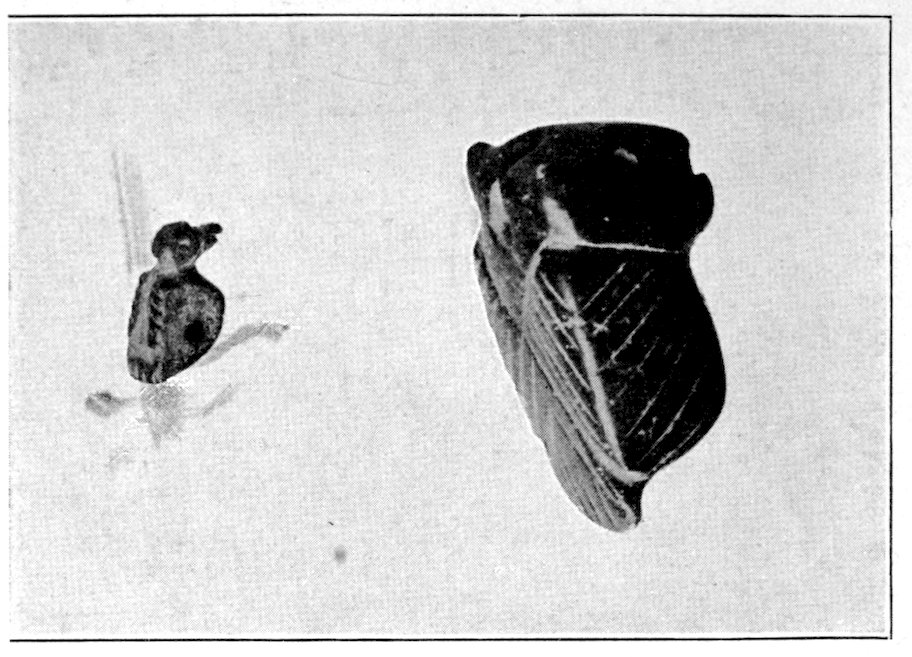
Fig. 417. (S. 1–1.) Phillips Academy collection.
That they are found in regions where there are many mounds used to be stated, but this is hardly correct. They have never been found in a mound, and I do not know of an instance where they have been found in graves. They occur more in northern Ohio, Canada, and New York State than elsewhere except Michigan and Wisconsin. I firmly believe that they were not made and used by mound-building tribes but antedate the mound-building period. As to the exact purpose of these things I leave others to judge.
There are many crude effigies, many grotesque sculptures found in this country. There are also stones that are in the border-lands between highly developed problematical forms and effigies. Fig. 413 presents a group of these from the Peabody Museum at Cambridge, Massachusetts. The upper row appears to be whale effigies. In the lower row are small stone bowls or paint-cups.
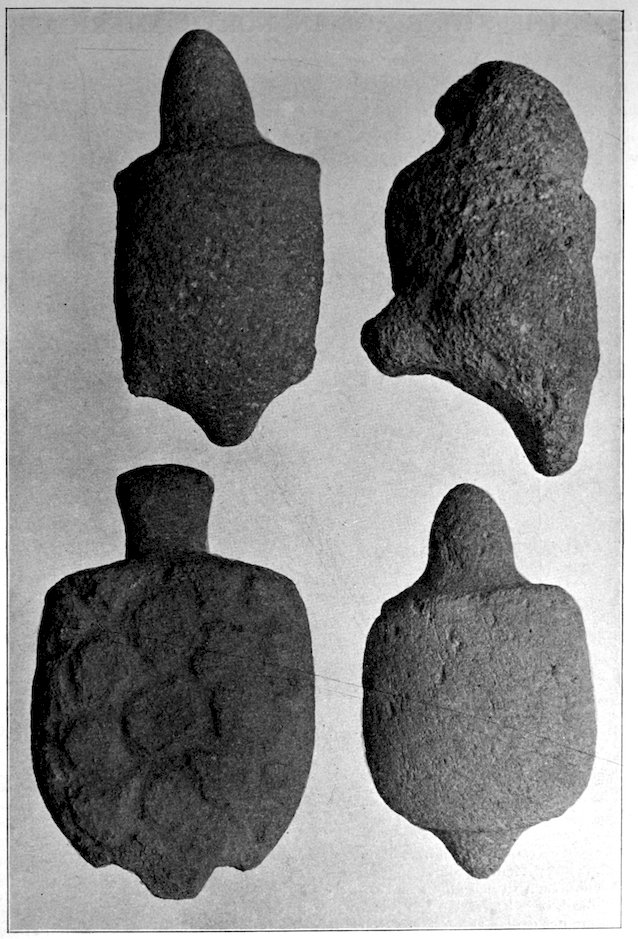
Fig. 418. (S. 1–2.) shows four peculiar stones from the Salt River Valley, Arizona. The one in the lower left-hand corner illustrates an armadillo; in the upper right-hand corner, an owl. The others are unknown effigies. These Arizona specimens are all of volcanic tufa, and are typical of the region. Large numbers were found by Mr. Cushing during his explorations of the ruins of the Salt River Valley, and something like a hundred were dug up by me for Mr. Peabody when I visited the region. The purpose of these is unknown.

Fig. 419. (S. 1–1.) Front view of the “Owl Ornament,” found in a grave at Fort Ancient, Ohio, 1882. Collection of the Ohio State University. One of the first specimens collected by W. K. Moorehead at Fort Ancient. Material, graphite slate.
Few finer problematical forms have been found. There are two grooves on the face and back of this object. One runs from the top down about an inch and one half, intersecting the other. In the angles formed by these two grooves are two perforations extending through the stone and drilled from each side. At the bottom is an oval-shaped hole on the face extending through. This latter perforation does not exhibit an oval shape from the rear, but presents a round appearance. Around this oval-shaped depression are fourteen holes, each drilled about one eighth of an inch deep. They present the form of an arrow-head, or a heart. On the reverse side are two holes above the oval perforations which are not drilled through the stone, and which lie just under the horizontal groove. The remarkable part of this stone is that the symbol, three, occurs on it in three places—on the face twice and on the reverse once.
23Quite a number of these whale and other effigies have been found in New England; but effigy-work in stone, the making of art-forms from life, was more general in the South and Southwest than in New England, where, indeed, effigy animals are exceedingly rare.
Fig. 415 illustrates an effigy of a bear. This was found in Salem during excavations for a cellar and is in the Peabody Museum of that city.
Mr. L. C. Deming, Ft. Wayne, Indiana, owns a peculiar effigy in stone about six inches in height. Just what it represents I am unable to state, as the ancient workman’s sculpture is crude.

Fig. 420. (S. 1–1.) The “Owl Ornament,” rear view.
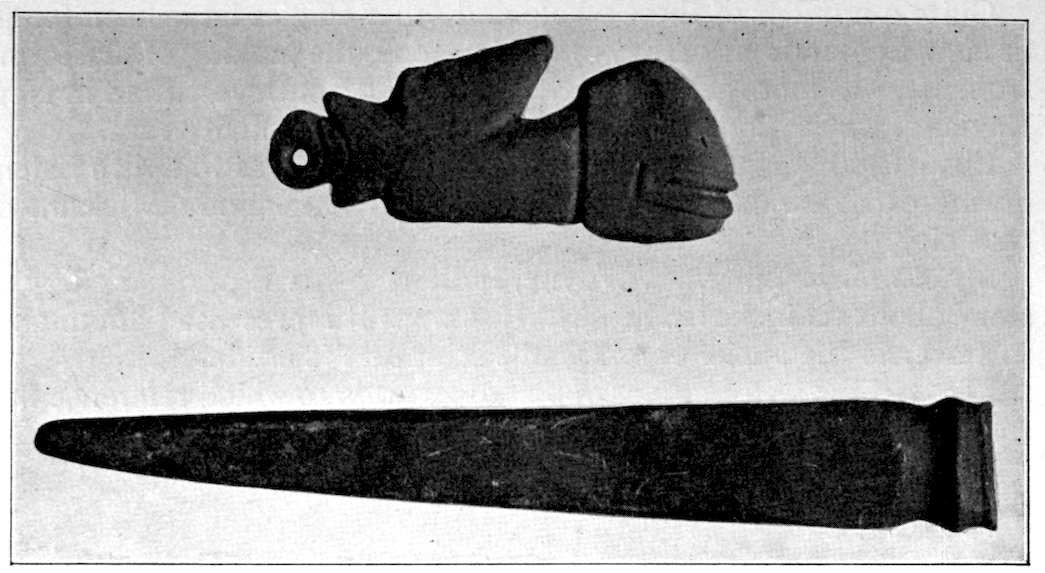
Fig. 421. (S. 1–1.) Salem collection. This shows a grooved bar-like object at the bottom, and a curious effigy pendant above.
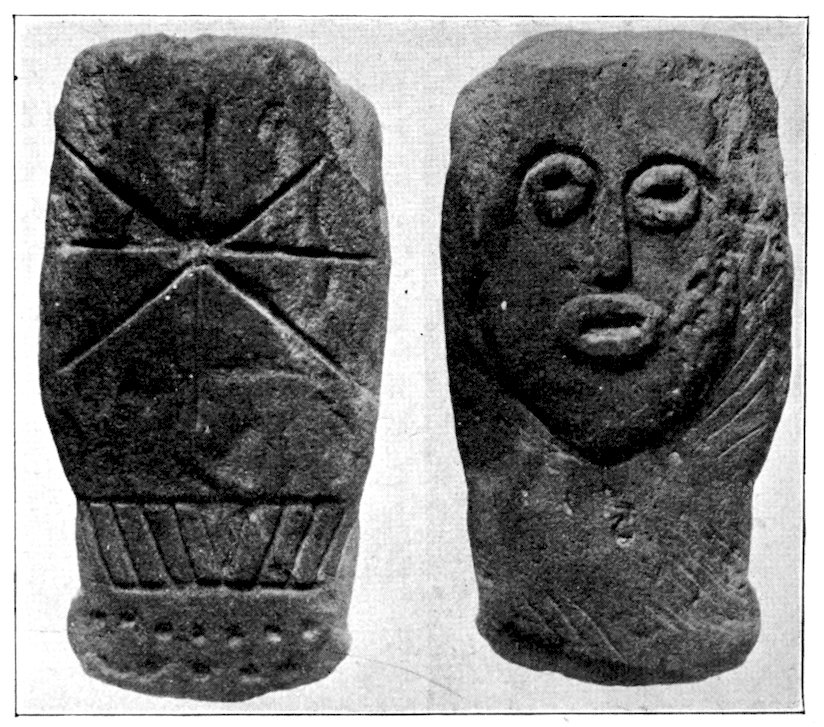
Fig. 422. (S. 1–3.) W. E. Bryan’s collection, Elmira, New York.
25Fig. 416 shows a number of spindle-whorls to which reference has been made elsewhere. These are made of clay, hard baked. In the lower centre is a stone idol found in a large ruin at Mesa, Arizona. It is made of hard redstone. There is a little depression in the top of the head half an inch in depth. Near the top is a curious animal effigy with eight legs. This is made of fine-grained lava and has a depression in the centre about one and one half inches in diameter.
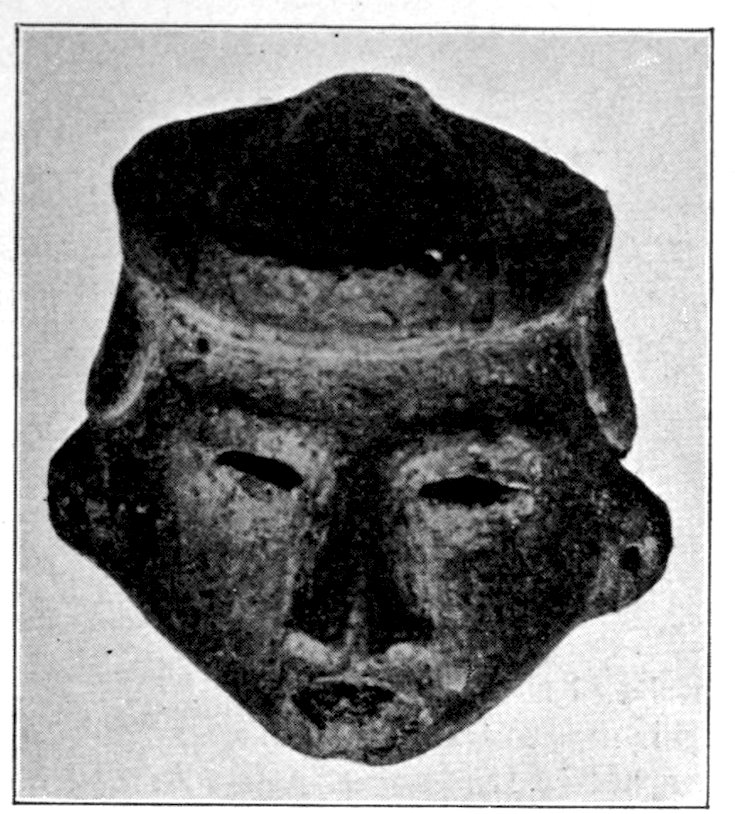
Fig. 423. (S. 1–1.) From a mound near South Carrollton, Kentucky. Presented to the Phillips Academy Museum, by F. G. Hilman, New Bedford, Massachusetts.
Fig. 417 illustrates two effigies, full size, of black onyx, each typifying a bird. These are very finely carved and were found in southern Arizona in a ruin, by the expedition sent there by Mr. R. S. Peabody, 1897–98.
The human form was frequently indicated in stone by the Indians. These sculptures range from very crude delineations, which I have not shown, to the first steps in more ambitious work, such as is exhibited in Fig. 422. This stone head was found near Elmira, New York, by Mr. Ward E. Bryan. The original was seven or eight inches in length. It is cut out of fine-grained sandstone. On the back are curious lines and dots as shown in the figure. The face shown is much cruder than that in Fig. 423. That face is of the peculiar type known as “Mound-Builder.” I have referred to this resemblance elsewhere. Inspection of Fig. 499 in the pipe series, found by Professor Mills at Adena, in the Scioto Valley, Ohio, and 26of the idol, Fig. 426, and some of the effigy pottery, will acquaint readers with this curious, strongly marked, Mound-Builder type of feature. Other examples are to be seen in books treating of American archæology.
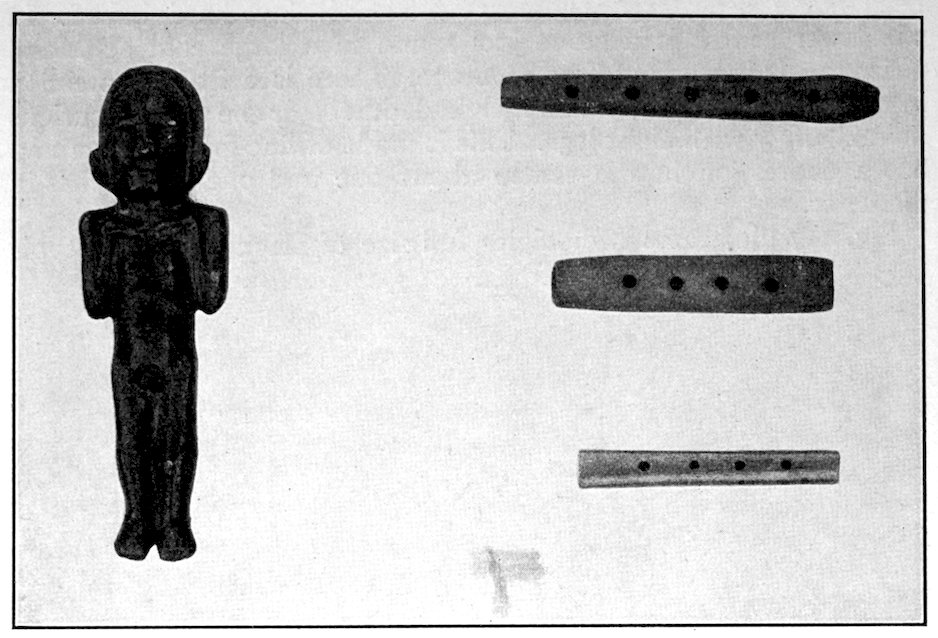
Fig. 424. (S. 1–4.) An idol and three flutes. B. H. Young’s collection.
The long flute at the top is made of slate. The head is an imitation of a serpent’s head. It has five holes regularly spaced. It is evident that a small block of wood was placed in the mouth to lessen the wind space.
The central one is of stone, open at both ends, with four holes.
The smallest one, of bone, is open at both ends.
On each of these instruments from seven to nine different sounds can be made.
The idol was found in Tennessee, near the Kentucky line. It is made of dark steatite, and is unique in representing the full human form.
The idol presented in Fig. 426 is a remarkable effigy. Not a few of these have been found near the Etowah Group of mounds in Georgia. All such idols have either been found in graves or on the sites of Southern villages, where population was considerable. I never knew of them being found in a mound, although there may have been such discoveries.
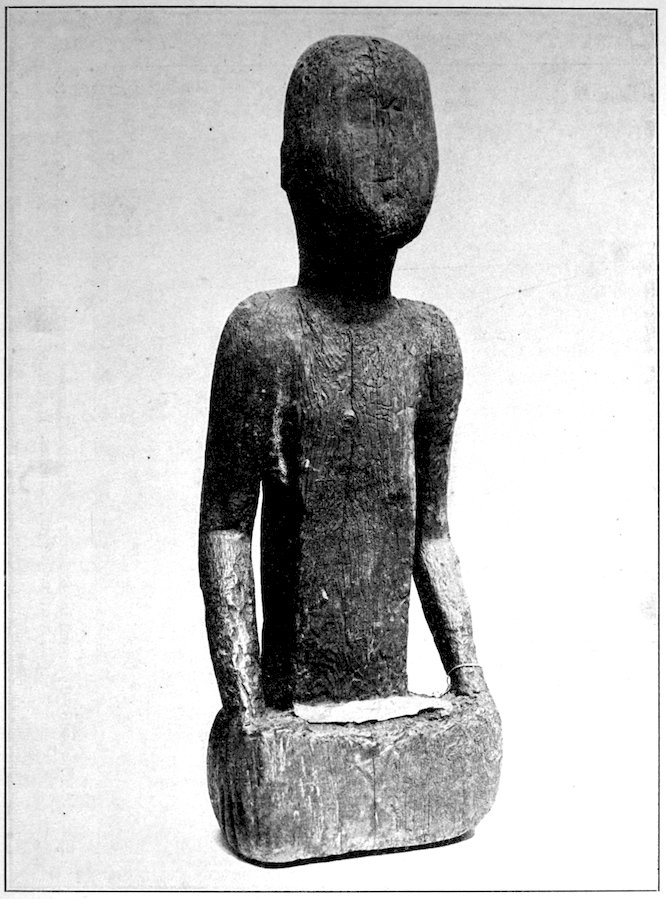
Fig. 425. (S. 1–3.) B. H. Young’s collection. Wooden image found many years ago in Bell County, Kentucky, near Middlesboro, in a cave by a turkey-hunter. It is made of yellow pine, and is of form similar to the stone effigies found in Kentucky. The ears are pierced for ear-rings, and the wrists grooved for bracelets.
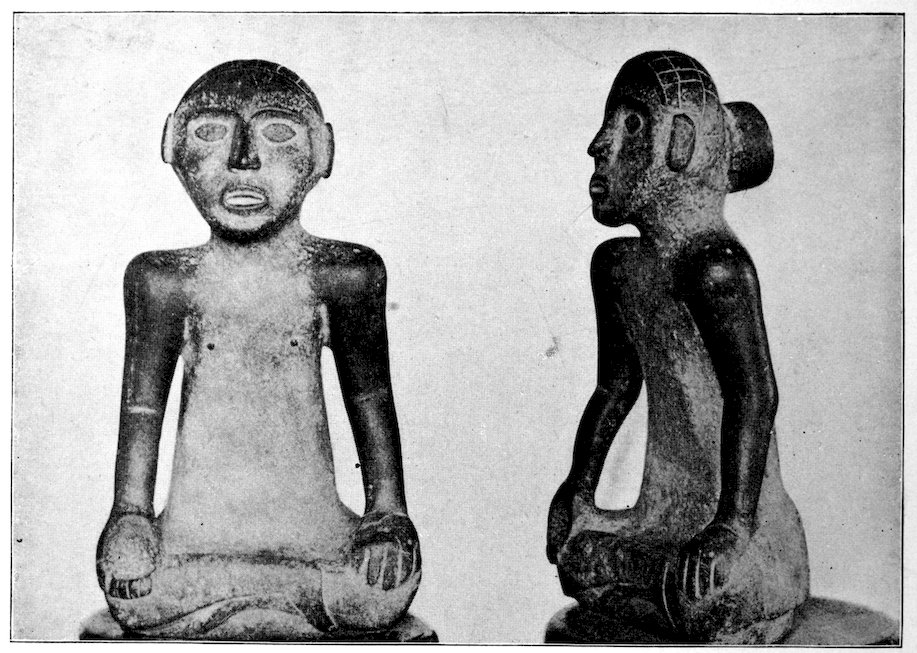
Fig. 426. (S. about 1–6.) Found in 1886 near the Etowah Group of mounds, Cartersville, Georgia. Material, steatite. Height, 21 inches. Weight, 56½ pounds.
Previous to the discovery of America, that strange custom of smoking was confined to the New World natives. There have been some vague references to inhaling of smoke by other ancient peoples elsewhere in the world. But these are still in the realm of doubt. Certain it is that the burning of tobacco, dried leaves, bark, etc., in stone, bone, clay, or copper receptacles was not known to any considerable number of men before Columbus set out upon his uncertain voyage, on an unknown sea.
There is an extensive literature dealing with pipes and smoking customs of America, and it is unfortunate that I am unable to produce more than a portion of what has been said by the early travelers, and later scholars and others, regarding this peculiar custom. However, there are two important publications accessible to all readers. The first was published by Mr. Joseph D. McGuire.[9] Mr. McGuire illustrates his paper with two hundred and thirty-one figures and five plates. The other paper was written by Mr. George A. West and contains seventeen plates and two hundred and three figures.[10] Mr. McGuire made a study of pipes and smoking customs throughout the United States; Mr. West, of the St. Lawrence basin and particularly Wisconsin, Michigan, Minnesota, and Canada. These two publications will give readers abundant material for consideration, and because of their excellence, I have made this somewhat lengthy reference to them.
In addition to the monographs cited, there are numerous shorter articles scattered throughout various publications and reports. These will be found if readers refer to the Bibliography.
In the following pages, I follow the classifications made by Messrs. McGuire and West with very few changes. These must both stand 30as the best that have appeared on the subject up to the present time.
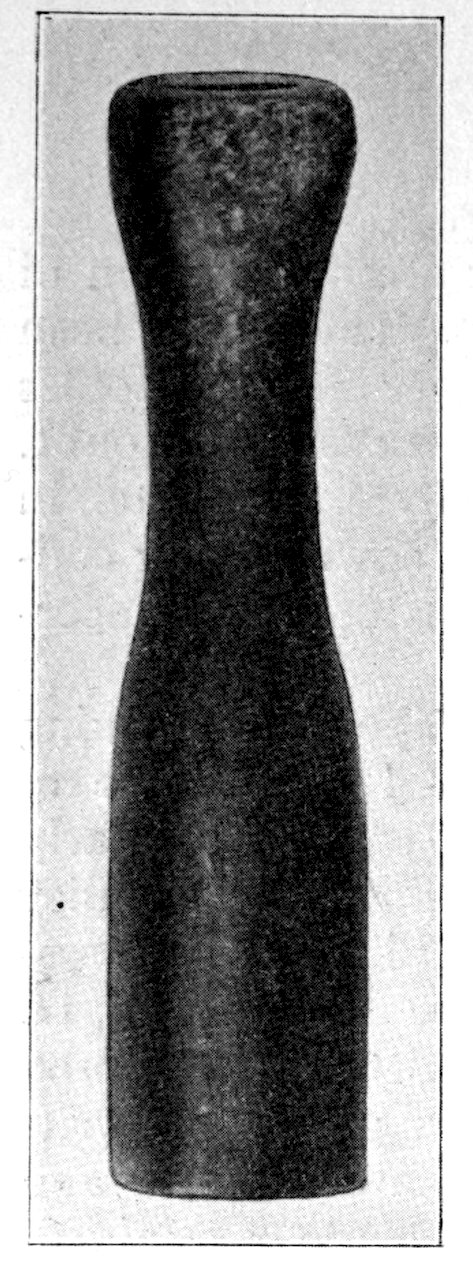
Fig. 427. (S. 1–1.) Stone pipe-bowl made of catlinite. Collection of the University of Toronto, Ontario. Found by Henry Montgomery in a mound in western Manitoba.
Since Mr. McGuire’s paper was published there have been large additions to pipe collections in the museums and private collections. As to the number of pipes in the Smithsonian, American Museum, Peabody Museum, and others, I do not know, but one might venture the opinion that each of these three institutions have at the least fifteen hundred or two thousand pipes scattered throughout the collections; and the smaller museums in proportion. Professor W. C. Mills informs me that there are two hundred and forty pipes in the exhibit under his charge at Columbus, comprising collections owned by the Ohio State University and the Ohio Archæological and Historical Society. They are divided as follows: Monitor, twenty-eight; effigy, forty; tubular, twenty-four; miscellaneous, one hundred and forty-eight. In the Andover collection there are about one hundred and seventy pipes.
There are two large private collections of pipes in America. Mr. John A. Beck of Pittsburg owns about eighteen hundred pipes of various kinds from the United States and Canada. Mr. George A. West reports that there are six hundred in his possession.
Pipes, from their very nature, were probably more highly prized among our aborigines than any other articles. The pipe was sacred, and it was not until Europeans, with their superior civilization, took up the smoking custom, that it became a habit and totally lost its original significance.
It is quite likely that pipes were more generally exchanged among tribes than other artifacts. Possibly, one should except copper, but I am not even sure of that. We find Northern forms South, Eastern types West, and a general indication that aboriginal barter or trade in pipes was extensive.
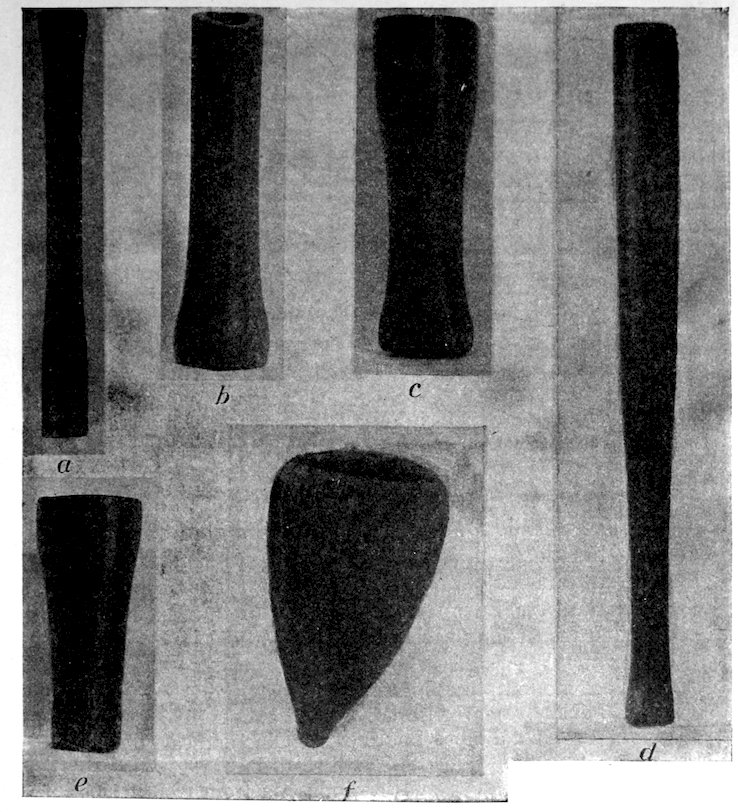
Fig. 428. (S. about 1–2.) Pipes from North Dakota mounds. Explorations of Henry Montgomery. (a) Pipe-bowl of catlinite. (b) Piece of catlinite pipe-bowl which had been cut off before burial. (c) Catlinite pipe, 2¼ inches in length. (d) Large bowl of catlinite pipe, 10¼ inches long; from Ramsey County. (e) Catlinite pipe-bowl found with the piece of pipe shown in (b). (f) Pipe-bowl made from deer antler; length, about 4 inches. (g) Clay pipe, bent; length, 5 inches; found in burial-pit in Benson County. (h) Catlinite pipe-bowl, 1½ inches long. (i) Straight bowl of clay pipe; length, 2¾ inches; found in burial-pit in Ramsey County. (See Fig. 429.)
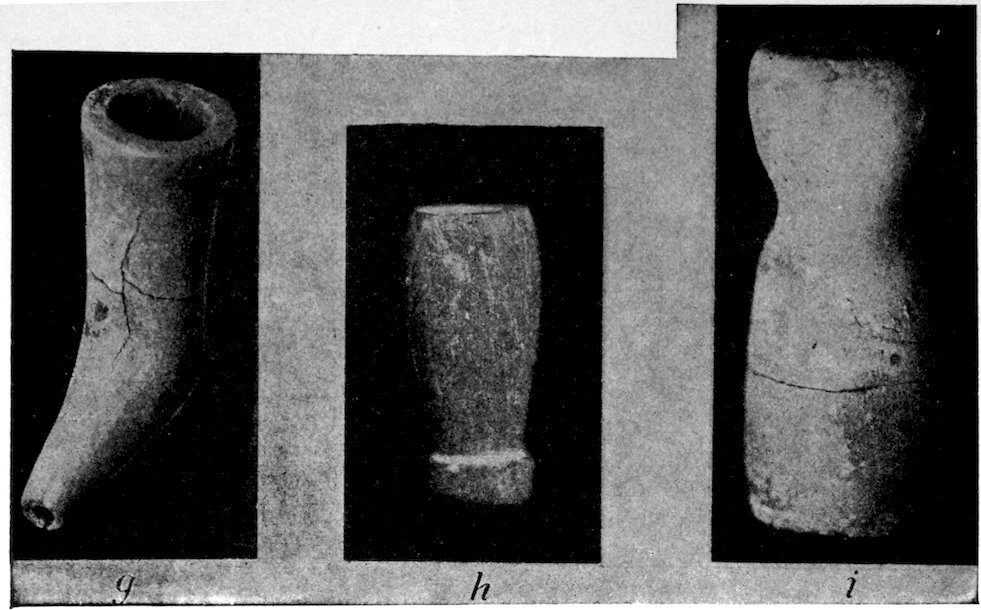
Fig. 429. (S. about 1–2.) Pipes from North Dakota mounds. Described under Fig. 428. (American Anthropologist, vol. 8, no. 4, plate 33.)
No one save Mr. J. D. McGuire has attempted to group these objects. In his classification, Mr. McGuire presented four plates in which he showed the distribution of fifteen types of pipes. I have followed his numbers, but instead of presenting a map, have named states or localities, from which these were taken.
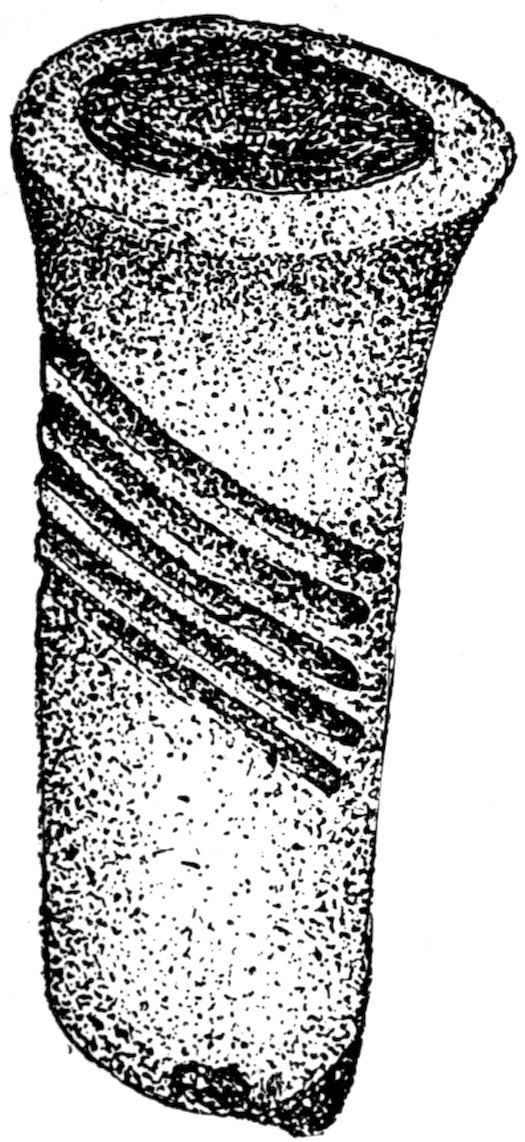
Fig. 430. (S. 1–1.) Earthenware pipe. Found near Lake Champlain. Collection of the University of Vermont.
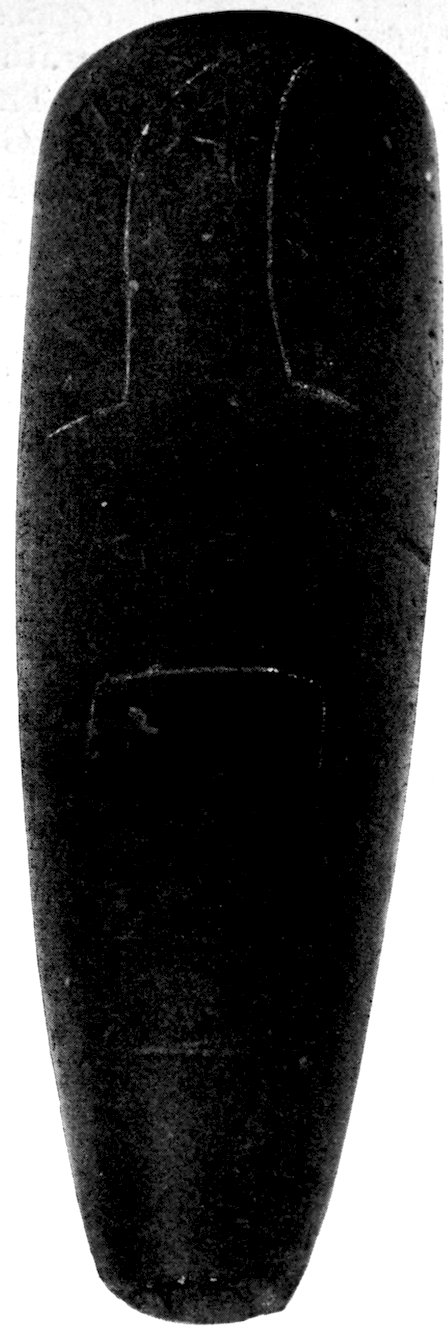
Fig. 431. (S. 1–1.) Conoidal tube pipe. Collection of G. A. West, Milwaukee, Wisconsin. Sheboygan County, red catlinite.
This table will serve as a beginning, but it is incomplete. Many pipes of 34the types mentioned by Mr. McGuire are found in other sections than those named by him.

Fig. 432. (S. a little over 1–3.) Found in a mound on Long Island, Tennessee River, Jackson County, Alabama. Collection of J. T. Reeder, Michigan.
The names of some pipes may not be familiar to all of my readers. I therefore repeat Mr. McGuire’s list of fifteen pipe-types, and state opposite each, the numbers of figures illustrating that particular type.
The fifteen types of pipes described by Mr. McGuire are illustrated in this chapter under the following figure numbers:—
Certain areas are characterized by particular forms of pipes, and in regions where the population was more dense, several types of pipes are usually found, thus indicating that they were taken from one region to another.
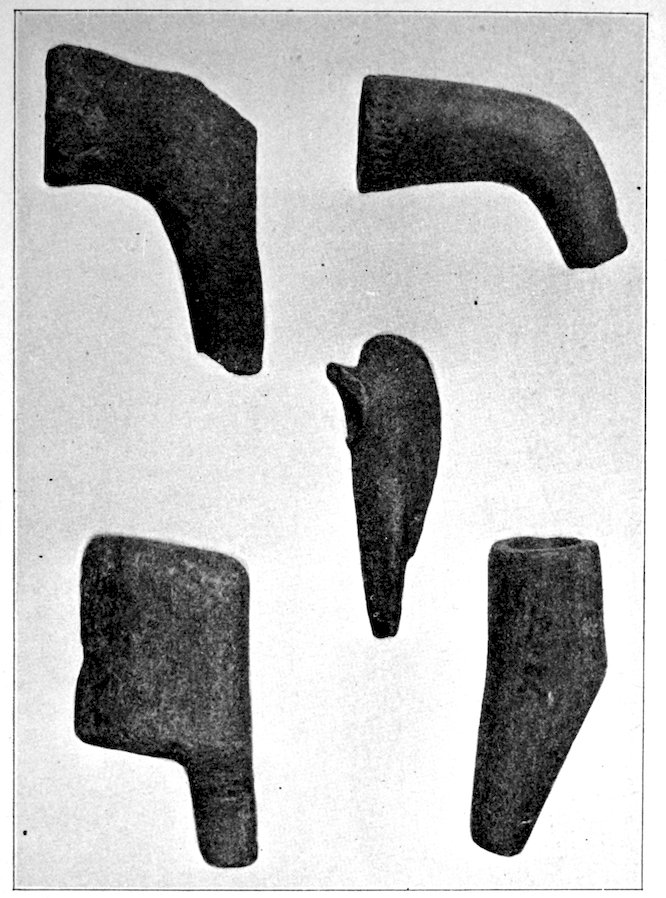
Fig. 433. (S. 1–2.) Collection of S. Van Rensselaer, Newark, New Jersey.
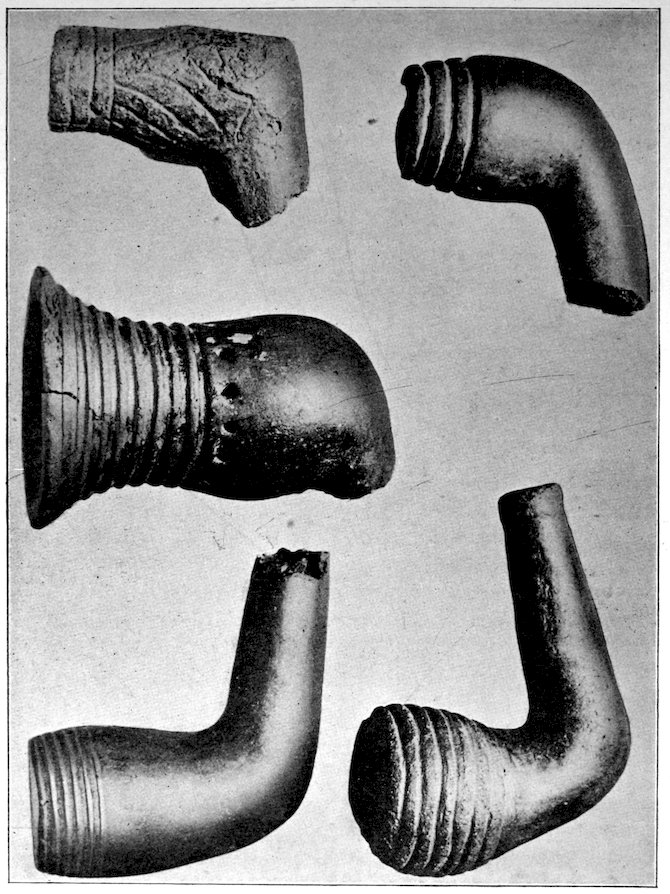
Fig. 434. (S. 1–2.) Pottery pipes from Simcoe and Durham counties, Ontario, Canada. Toronto University collection. Characteristic of northern central Ontario.
37One fact stands out prominently with reference to these pipes, and it is that any one who is familiar with conditions under which pipes are found can distinguish the prehistoric from the modern in most instances. Of course there are exceptions. Many modern pipes show the marks of steel tools, whereas the ancient forms do not. Certain specimens appear to those who have done a great deal of field work as ancient, whereas others do not. This is not merely a matter of opinion. I have found it very difficult, during my lifetime, to make those observers who have no intimate knowledge of field conditions realize the importance of this statement. There is no convenient formula whereby one may explain to a skeptic, how one specimen appears old and another does not. I shall consider this subject at greater length in the Conclusions.
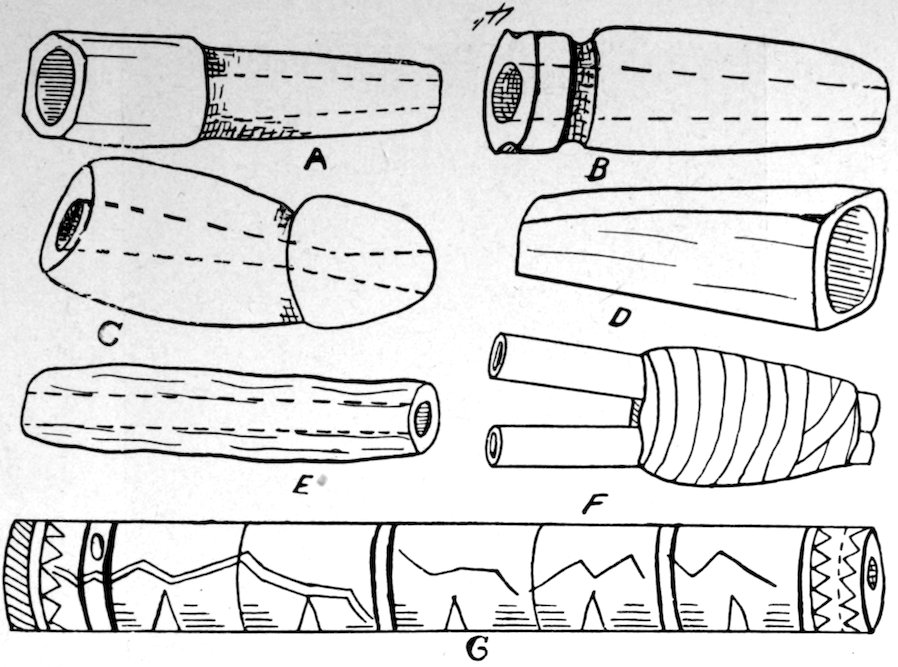
Fig. 435. Peculiar tube pipes. Collection of G. A. West, Milwaukee, Wisconsin. Tubular and trumpet-like pipes are shown in Figs. 427–28, and 430. These are considered to be earliest forms. More complicated tubes are observed in Fig. 435. Mr. West described these in his paper, previously cited.
Various remarks offered here and there on the pages of this chapter may be taken to represent my conclusions as to pipes. I have not offered a summary at the end of the chapter, preferring to state pertinent observations, suggested by the figures illustrating pipes, as they occur.
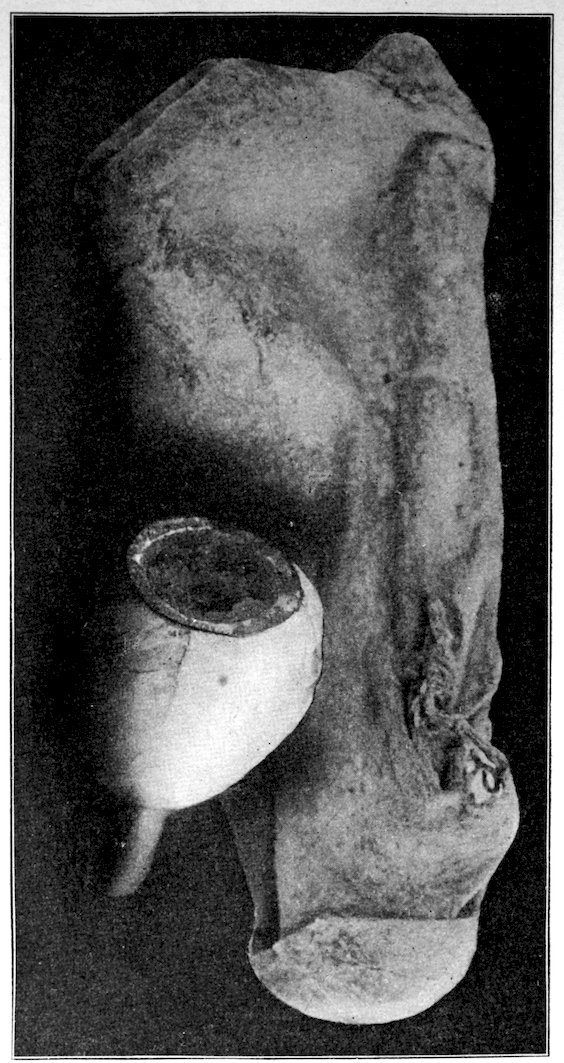
Fig. 436. (S. 2–3.) Onyx pipe-bowl with wooden stem. From cave-house ruins in San Juan County, Utah, February, 1894. The pipe lies against a fragmentary skin covering or robe. Henry Montgomery, Toronto, Ontario.
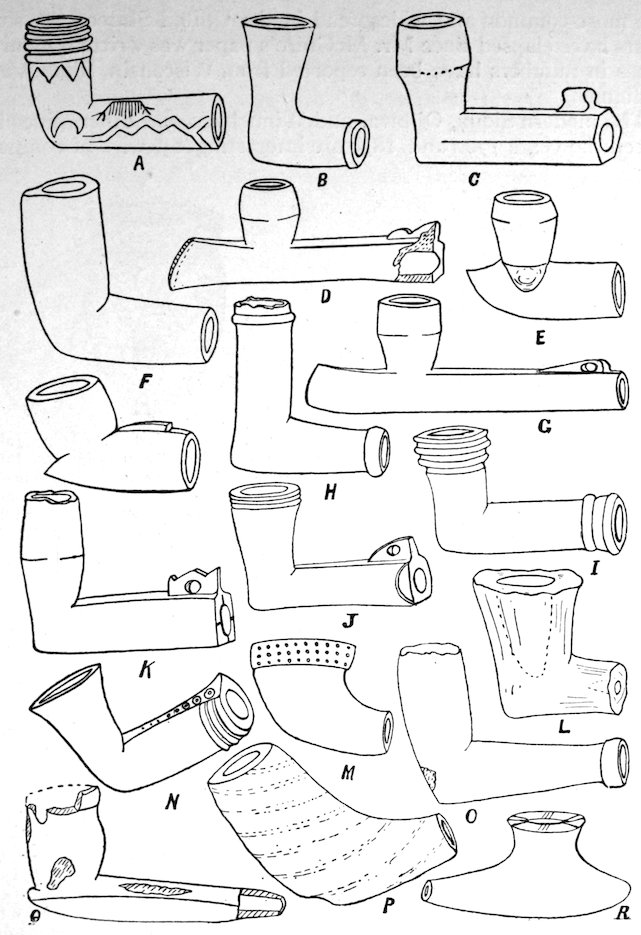
Fig. 437. (S. 1–2.) Diminutive Siouan pipes. Collection of G. A. West, Milwaukee, Wisconsin.
40Of the fifteen types named by Mr. McGuire, the tubular, rectangular, and slightly curved pipe (of the forms shown in Fig. 433), are most common and widespread in the United States. As some years have elapsed since Mr. McGuire’s paper was written, monitor pipes in numbers have been reported from Wisconsin, Illinois, and Indiana.

Fig. 438. (S. 1–2.) Peculiar stone pipe. Collection of H. M. Whelpley, St. Louis, Missouri.
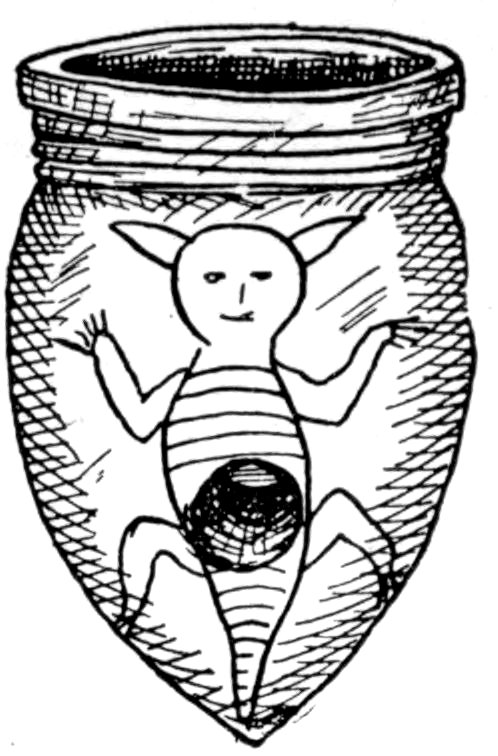
Fig. 439. (S. 1–2.) Vase-shaped pipe. John Weber’s collection. “Found by Mr. John Weber, in Killare, Juneau County, Wisconsin, in 1895, is of a pinkish-colored stone, and exhibits on its two opposite faces etched figures of some animal, possibly a lizard. The figure is after a sketch furnished by Mr. W. H. Elkey.”

Fig. 440. (S. 2–3.) Double conoidal pipe. J. P. Schumacher’s collection. “A very attractive example, from Brown County, Wisconsin, is of dark sandstone, nearly 4 inches long, 2½ inches high, 3 inches wide, and oval in shape with a flat base. Its stem and bowl cavities are each fully an inch in diameter at the surface, and are placed at right angles to each other. This pipe was evidently pecked into shape, both bowl and stem holes being made by the same process.”
The modern Sioux, Ojibwa, and Winnebago and other pipes between the years 1700 and 1850 are interesting by way of comparison. 41Mr. West[11] wrote a few paragraphs concerning them, which I quote.
“No pipe was ever regarded by the American aborigine with greater reverence and respect than the calumet. It was used in the ratification of treaties and alliances; in the friendly reception of strangers; as a symbol in declaring war or peace, and afforded its bearer safe transport among savage tribes. Its acceptance sacredly sealed the terms of peace, and its refusal was regarded as a rejection of them.
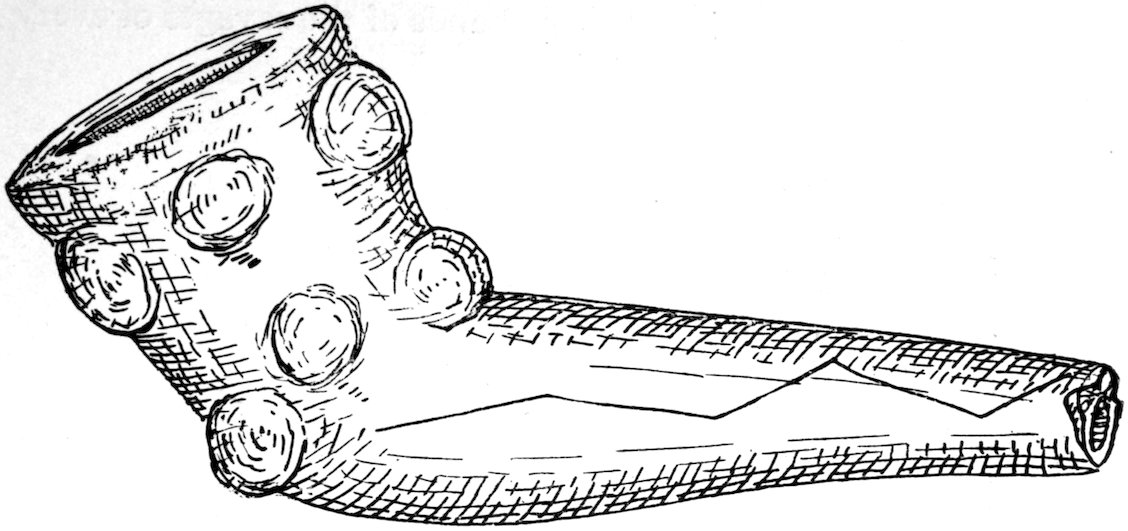
Fig. 441. (S. 1–2.) Black pottery pipe. Collection of G. A. West, Milwaukee, Wisconsin. “This is a type of Southern mound pipe taken from a mound in Pepin County, Wisconsin. It is well tempered with shell, contains eight knobs or coffee-bean protuberances about the bowl, and the stem is ornamented on one side by a zigzag line, probably intended to represent the emblem of lightning. This pipe is 3¼ inches long, and the only one of its kind so far found in this state.”
“Calumets made of steatite, limestone, sandstone, and granite, are often found, but a large majority of them are made of catlinite, a compact clay slate, named after Mr. George Catlin, who lived for many years among the Indians, and to whom great credit is due for his many portraits and other paintings true to aboriginal life. The color of catlinite is usually cherry red, often mottled and shading into ash, grey, or black. This material was quarried by the Indians in several places in Minnesota, Iowa, South Dakota, Missouri, and in Barron County, Wisconsin. Specimens of ‘pipestone’ are 42sometimes secured from the glacial drift. Pipes of catlinite are not necessarily of modern make. Examples have been found, over a wide area, in Indian mounds and graves. In 1880 a broken pipe of this material was found by Ole Rasmussen, in the town of Farmington, Waupaca County, while digging a well, eighteen or twenty feet below the surface. The material has been known, under different names, ever since the Discovery.
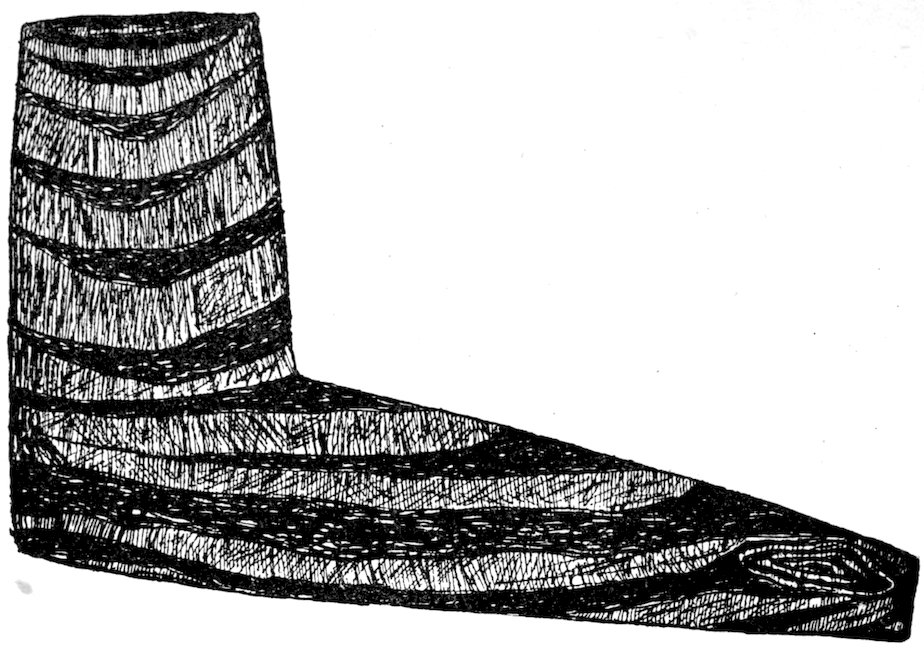
Fig. 442. (S. 1–1.) A pipe of banded slate from the collection of Albert L. Addis, Albion, Indiana. Pipes of slate are not wanting, and they are usually either rounded or angular. It is seldom that the banded slate is worked into pipe effigies.
“Catlin, who in 1835 visited the pipestone quarries of Minnesota, had previously found catlinite ‘in the hands of the savages of every tribe, and nearly every individual in the tribe has his pipe made of it.’ After a visit to the famous quarries, Catlin concludes as follows: ‘From the very numerous marks of ancient and modern diggings or excavations, it would appear that this place has been for many centuries resorted to for the redstone; and from the great number of graves and remains of ancient fortifications in its vicinity, it would seem, as well as from their actual traditions, that the Indians have long held this place in high superstitious estimation; also it has been the resort of different tribes who have made their regular pilgrimages here to renew their pipes.’”[12]
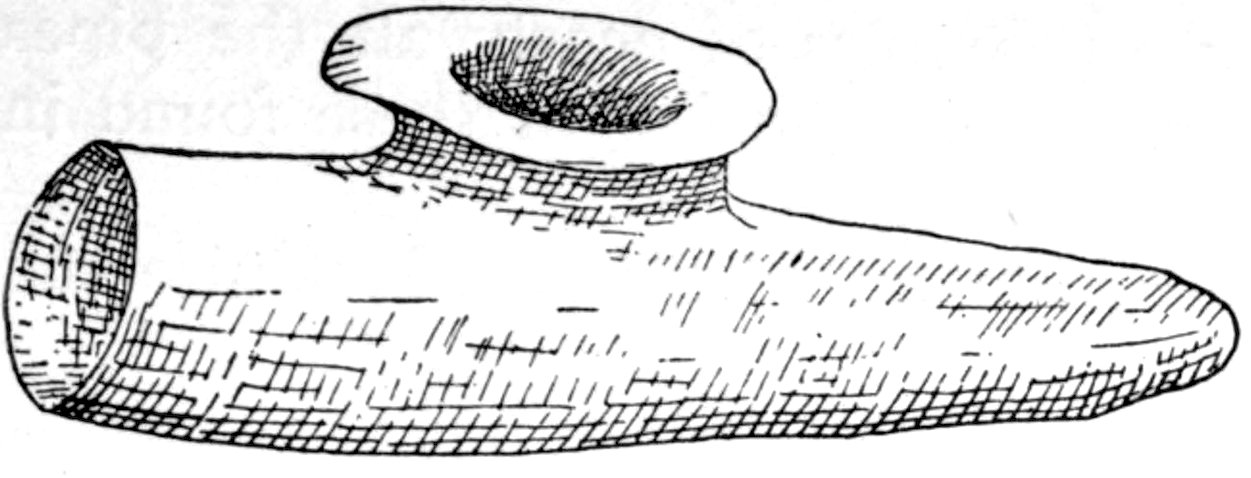
Fig. 443. (S. 4–5.) Handled disc pipe. Collection of G. A. West, Milwaukee, Wisconsin. A rare old specimen found in a mound near Delavan, Walworth County, Wisconsin, of greenish-colored limestone, the color probably due to copper stains.
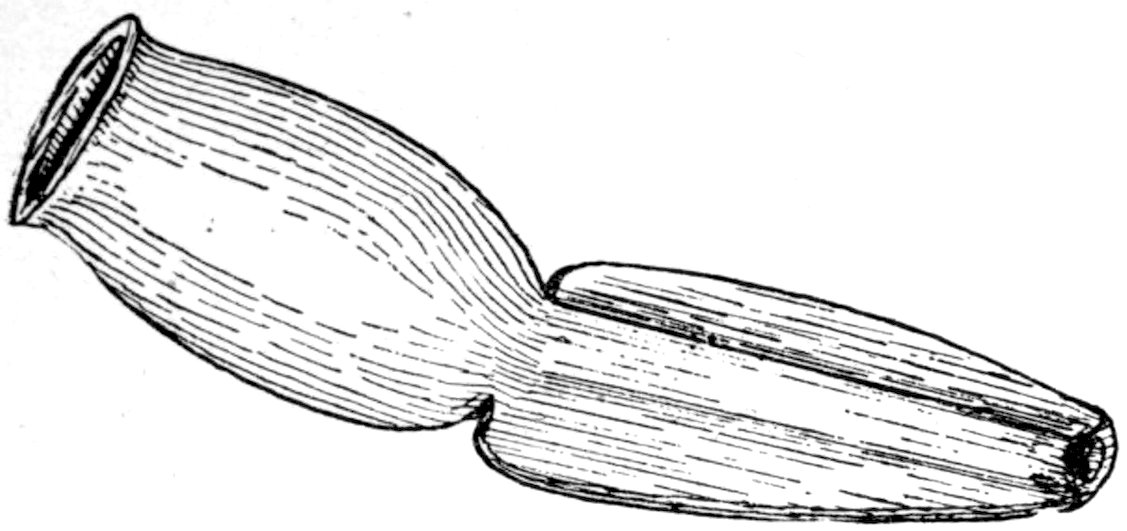
Fig. 444. (S. 1–2.) Type of monitor pipe. Collection of G. A. West, Milwaukee, Wisconsin. “Found near Buffalo Creek, Nelson County, Virginia; of dark schist, is 5 inches long. It has an alate stem, running the length of the centre of which is a pronounced ridge. The largest specimen of this type so far encountered is probably a ‘Great Pipe,’ having a bowl 8 inches long, being upward of 17 inches in total length, which was found in a mound in Marion County, Kentucky.”
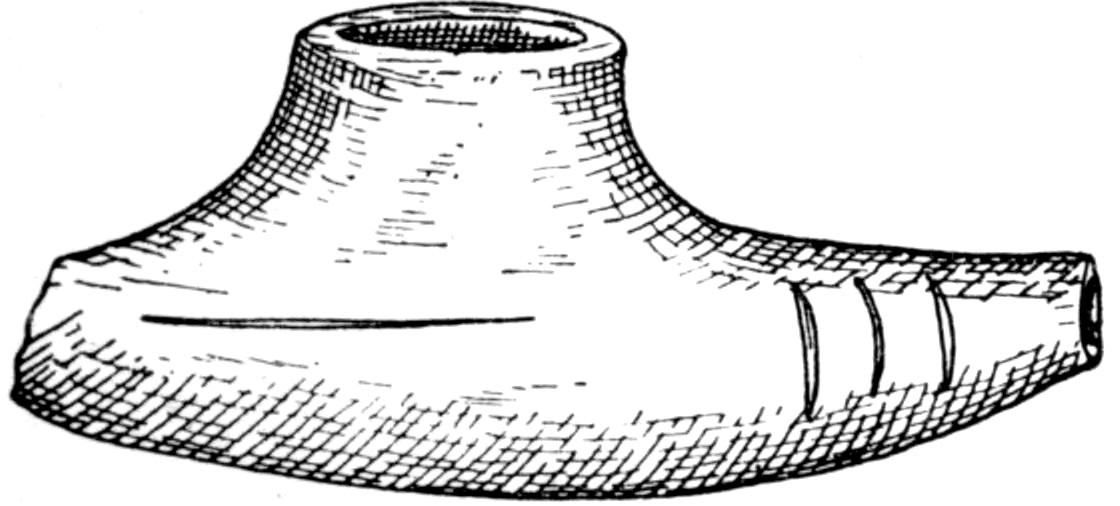
Fig. 445. (S. 4–5.) Short-base monitor pipe. Collection of S. D. Mitchell. This specimen was “found in the town of Aurora, Marquette County, Wisconsin, is of drab slate, 2½ inches long, the end broken away, base rounded, and is ornamented near the stem end on each side by three deep grooves. A second example of the same shape in G. A. West’s collection, found by Mr. August Bartle, in the town of Scott, Sheboygan County, Wisconsin, in 1901, is of drab steatite. The top of its bowl is ornamented by four sets of cross-lines, of three lines each. The bowl cavities in each pipe are irregularly conical in shape.”
44In Kentucky and Tennessee, as well as southern Ohio, where the population was dense, there are examples of nearly all the pipes except the Iroquois and the catlinite. The few of these found in that region must be set down as strays.
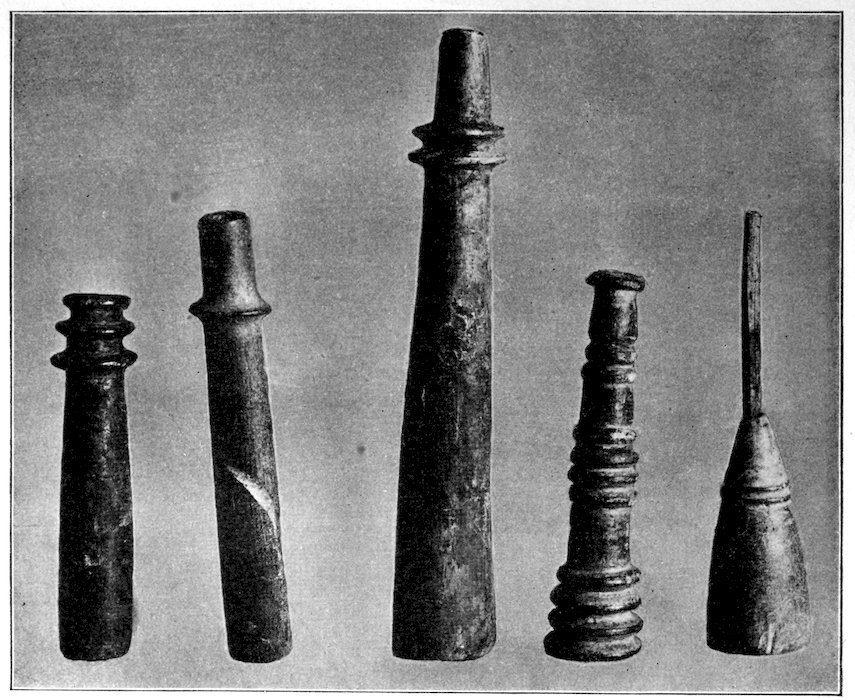
Fig. 446. (S. 1–2.) Five tubular pipes, from the collection of James A. Barr, Stockton, California.
The study of several specimens illustrated by both McGuire and West and the comparison of the fifteen figures presented in “The Stone Age” will acquaint readers with the distribution of forms and types. The striking thing in all this, and it may be verified by inspection of any large mound collection, is that the types shown in Figs. 435, 437, 439, and 465 are usually surface finds and may be distinguished from specimens found in mounds and from various village-sites.
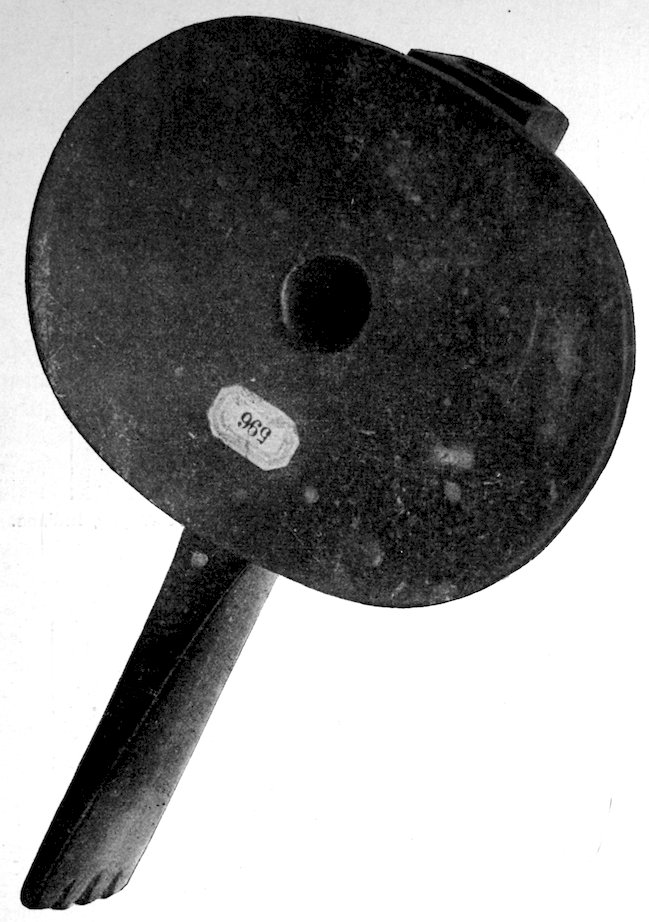
Fig. 447. (S. 1–1.) Handled disc pipe. H. P. Hamilton’s collection.
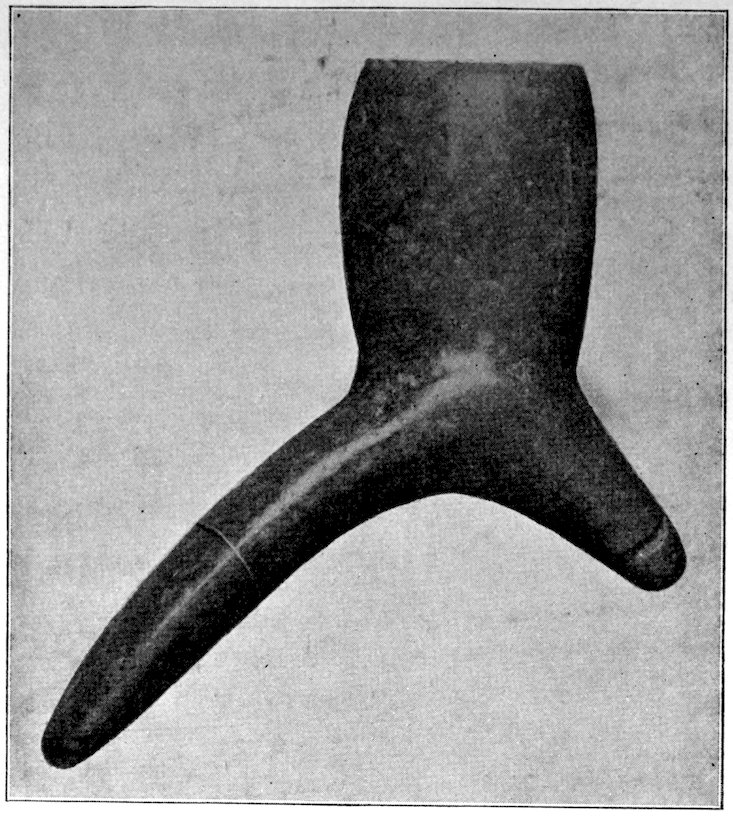
Fig. 448. (S. 1–1.) Collection of Leslie W. Hills, Fort Wayne, Indiana. From Kosciusko County, Indiana.

Fig. 449. (S. 2–5.) Straight-base monitor pipe, Logan collection, Beloit College. “It was ploughed up in an early day by Mr. L. Craigs, on Section 30, Eagle Township, Richland County, is of drab steatite and finely polished. It is 9 inches long, 2¾ inches wide at the base, 3 inches across the flange of the bowl, with the bowl cavity ¾ inch in its greatest diameter, and made with a tubular drill. This is certainly one of the finest examples of the straight-base monitor pipe as yet found in Wisconsin.”
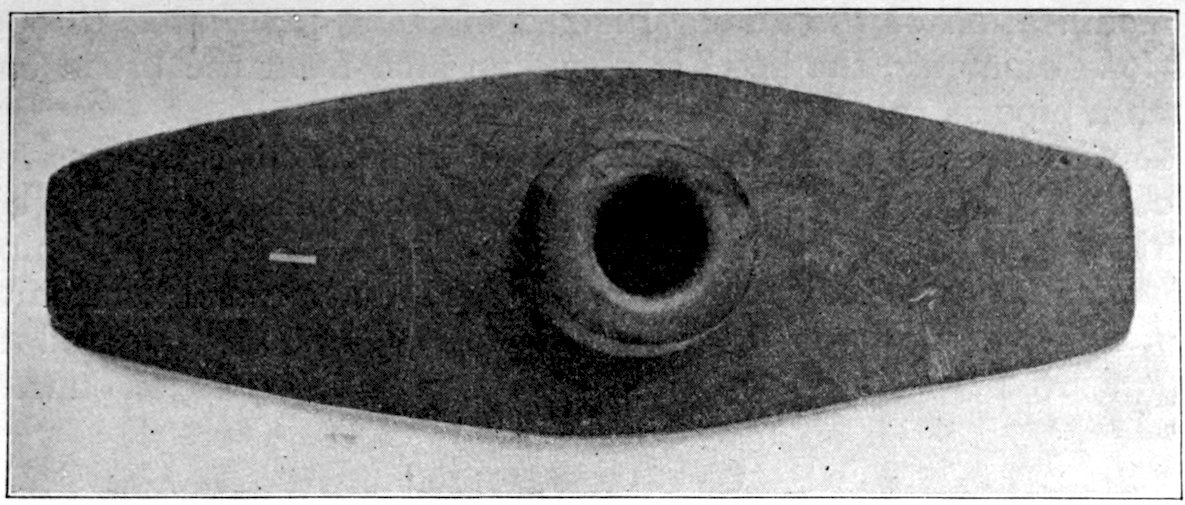
Fig. 450. (S. 1–1.) This figure shows the top view of pipe shown in Fig. 451, and is from the collection of Albert L. Addis, Albion, Indiana. Found in northern Indiana.
Mr. West has kindly permitted me to reproduce portions of his valuable paper on pipes, and I am sorry that space is insufficient to quote his descriptions of the numerous figures he has loaned me. Referring again to the Siouan pipes (Fig. 437), it requires no skill to distinguish these modern forms from the more ancient. Many of the pipes shown in that figure will apply to other living tribes as well as the Sioux.

Fig. 451. (S. 1–1.) Collection of A. L. Addis, Albion, Indiana.
One may suppose that the tubular pipe soon developed into other forms. That is, of course, taking it for granted that the tubular pipe is the first form. Modifications of the tube tending toward the rectangular are often met with, which seems to bear out this theory. Be that as it may, we have in Fig. 438 a pipe from Dr. Whelpley’s collection, oval in outline, curiously ornamented with circular depressions, and which is hardly of the tubular class, but seems to be 48a modification of the same. Instead of being perforated through its long diameter, the bowl is about an inch from the broad end. Such a pipe as this is of rare occurrence.
It will be seen from an inspection of either Mr. West’s or Mr. McGuire’s papers, as well as through a study of any museum collection, or of the various figures presented in this section, that pipes on which there are carvings or decorations, or pipes made in imitation of life-figures, are quite as frequently found as plain and unornamented pipes. Why so much skill should be employed on these pipes, whereas the flat surfaces of slate gorgets and ornaments could have been more easily decorated, is a problem. This may, however, be accounted for by the sacred significance accorded to the pipe by the savage, for it was used in all ceremonial performances, in the declaration of war and peace, and was among his most treasured possessions. It is very seldom that we find markings or tracings on any of these stone gorgets or ceremonial forms, yet on the pipes, as remarked above, ornamentation is the rule. All of this is significant to me, and I think that subsequently we shall be able to draw some valuable lessons from this peculiarity.
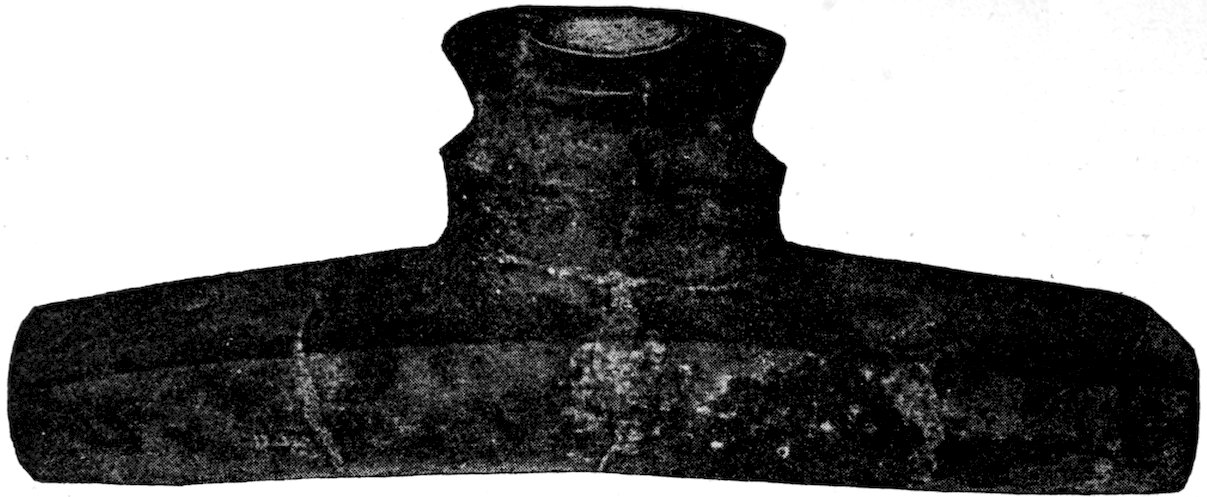
Fig. 452. (S. about 1–3.) Large, platform pipe from a burial. Length, 5⅕ inches. W. C. Mills’s explorations.
The Northern pipes, the pipes from the country west of the Mississippi, excepting of course the calumets, appear to be smaller as a rule than the Southern pipes, or the mound pipes. One might say that many of these were individual and sometimes emblematic pipes rather than council pipes. It must, however, not be forgotten that with the Indians of the Great Lakes region especially, all significance was attached to the stem and its ornamentation rather than to the bowl. Fig. 437 shows the well-known Siouan types of pipes of that people from the time of their migration to what is now known as Wisconsin. It is therefore possible that some of the pipes of this place are several centuries old, while others are distinctly of modern make.

Fig. 453. (S. 1–3.) Collection of Leslie W. Hills, Fort Wayne, Indiana.
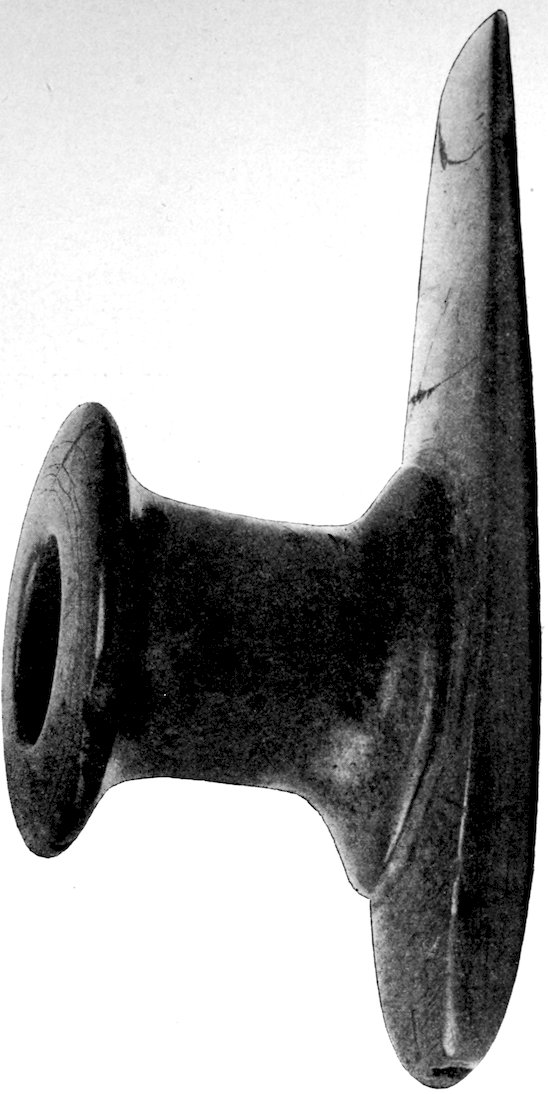
Fig. 454. (S. 1–1.) This is a straight-base monitor pipe from the collection of George A. West. It is made of greenish steatite and was found in Milwaukee County, Wisconsin. It is a beautiful specimen.
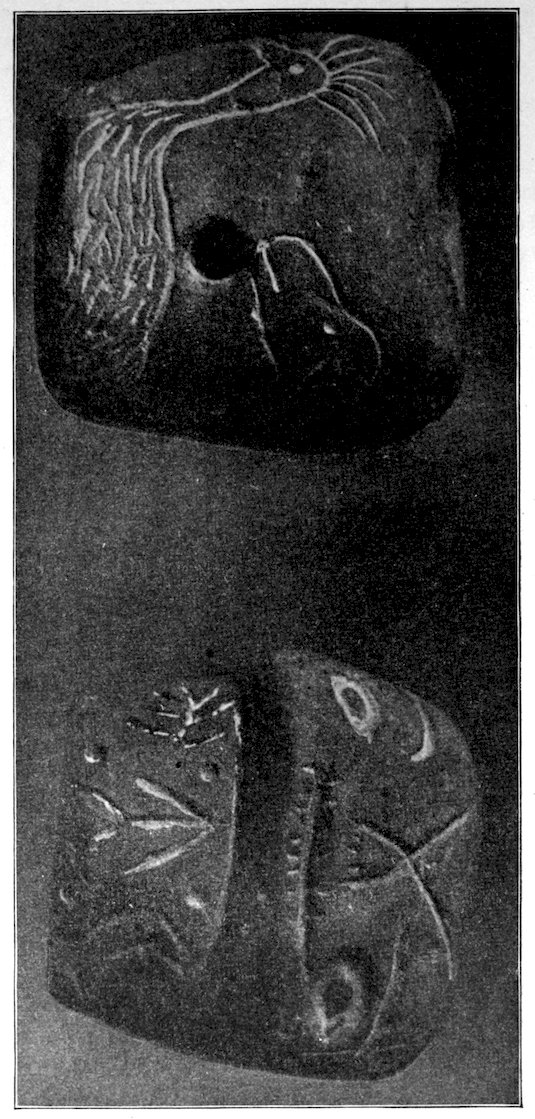
Fig. 455. (S. 1–1.) Collection of George Little, Xenia, Ohio.
51There has been some discussion as to the part played by catlinite in aboriginal trade or exchange. Catlinite does not appear to be as old as other stones. It has been my theory that the catlinite quarry was of recent discovery. By recent, I mean within two or three thousand years or less. Catlinite pipes are frequently found in the mounds and graves of Wisconsin, but not in those of the South in any considerable numbers.

Fig. 456. (S. 1–1.) Collection of H. E. Towns, Fond du Lac, Wisconsin.
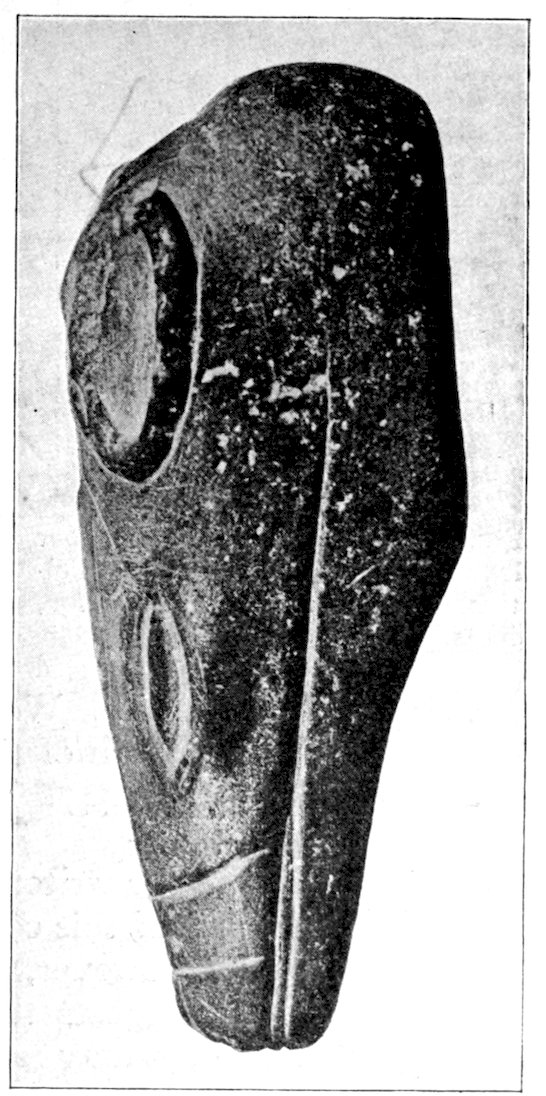
Fig. 457. (S. 1–1.) This pipe was ploughed up five miles east of Delaware, Ohio. Collection of Frank L. Grove, Delaware, Ohio.
In fact their occurrence there is very rare, yet they are found in great numbers in modern graves, in village-sites where tribes have lived in the historic period. This in itself is significant.
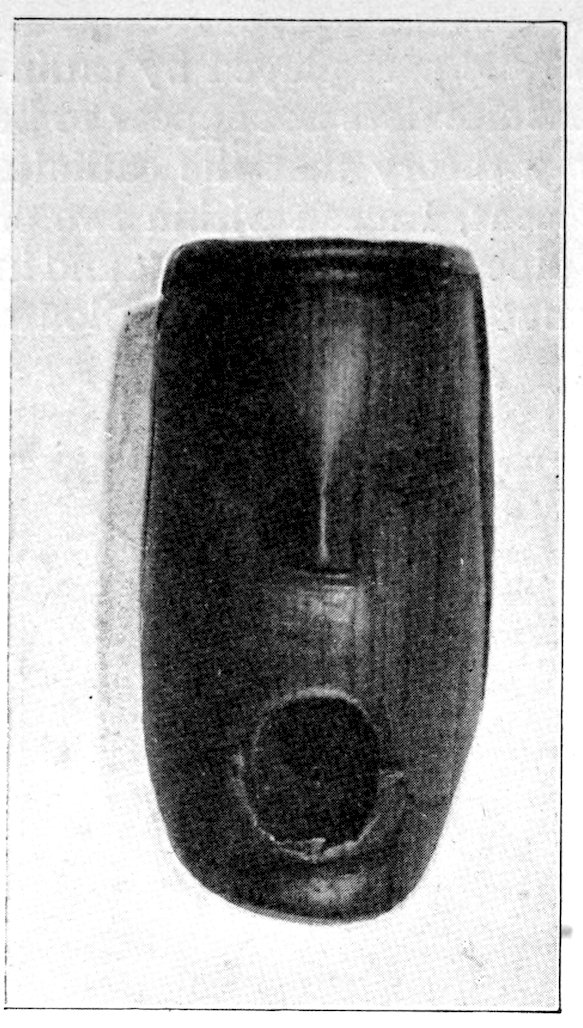
Fig. 458. (S. 1–1.) Found about four miles north of Pierceton, Indiana. Collection of W. F. Matchett, Pierceton, Indiana.
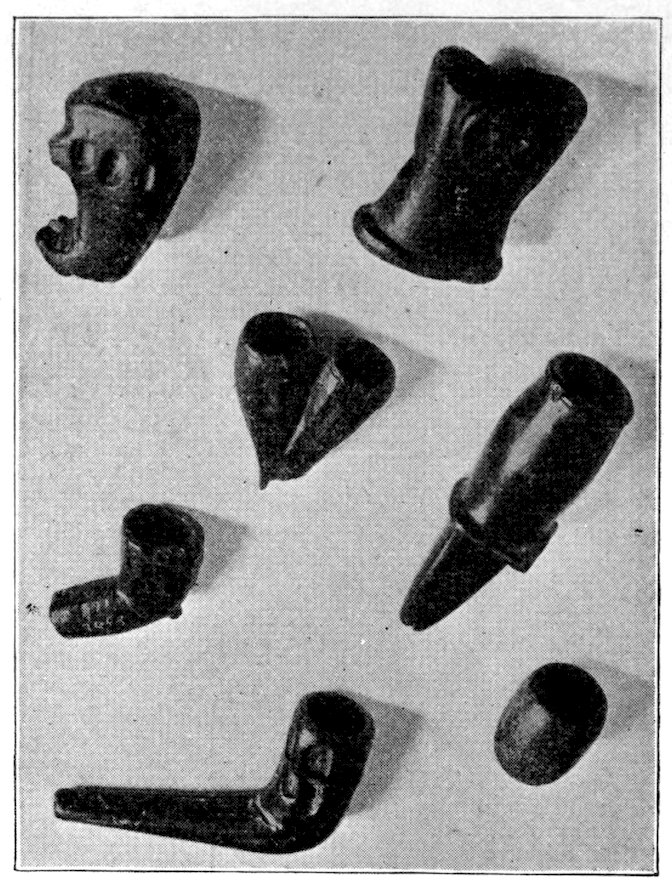
Fig. 459. (S. 1–5.) University of Vermont collection.
Fig. 446 shows five tubular pipes from California, collection of Professor James A. Barr. These are all specialized forms, and somewhat different in the method of treatment, being highly polished and ornamented by rings carved in relief.
The disc pipe is placed in a class by itself by Mr. McGuire. We have six of these at Andover, all from graves at the mouth of the Wabash, southern Indiana. One of these is shown in Fig. 447. Mr. West remarks as follows regarding this type of pipe:—
“The disc pipe, in the writer’s opinion, is an old type, and was in use by the aborigines of this country long before the coming of the whites. Authorities, however, differ as to this conclusion. General Gates P. Thruston suggests that the stem holes of the disc pipe being funnel-shaped, it may safely be regarded as an old type.
“Mr. J. D. McGuire writes: ‘The shape is so suggestive of the jewsharp, an instrument used extensively in trade with the Indians, as to indicate that the pipe itself is modeled after the form of this 53primitive musical instrument, even though the file marks, so common on many of the pipes, are absent from those coming under the writer’s observation.’
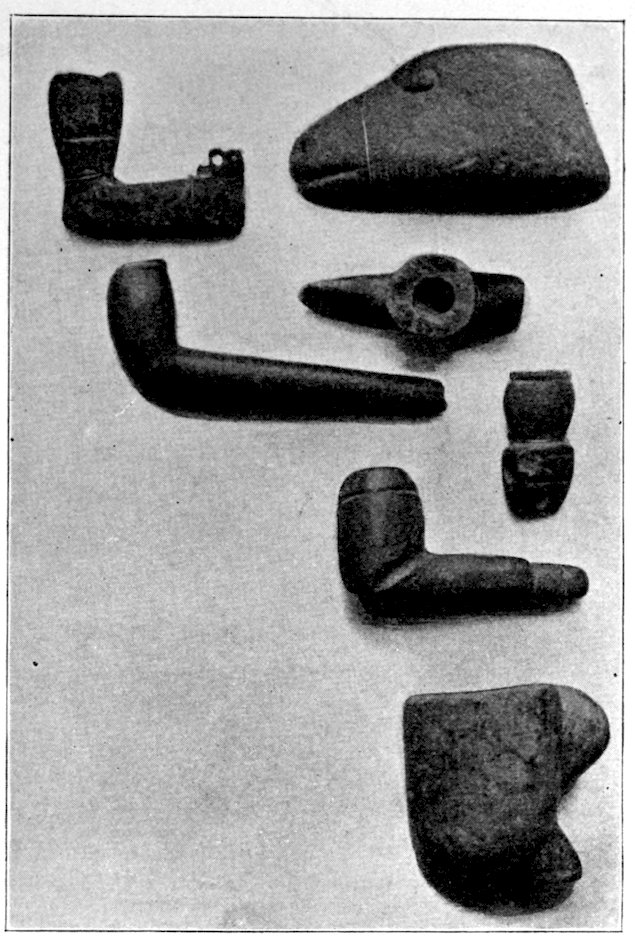
Fig. 460. (S. 1–3.) Collection of L. W. Hills, Fort Wayne, Indiana.
“A careful study of the several forms of this type convinces the author that it was not modeled after the jewsharp. Of the twenty-eight examples in the author’s collection, when examined with a powerful glass, all exhibited innumerable marks and scratches, that could have been made by the use of a piece of sandstone or flake of flint. In no case were file marks found.
“Mr. McGuire states: ‘Finding them of catlinite so far from the quarries would indicate that they are of no great age.’ If Mr. McGuire’s conclusion is correct, aboriginal barter and trade could not have been carried on between distant tribes until within a comparatively 54recent date, an abundance of evidence to the contrary notwithstanding.”[13]
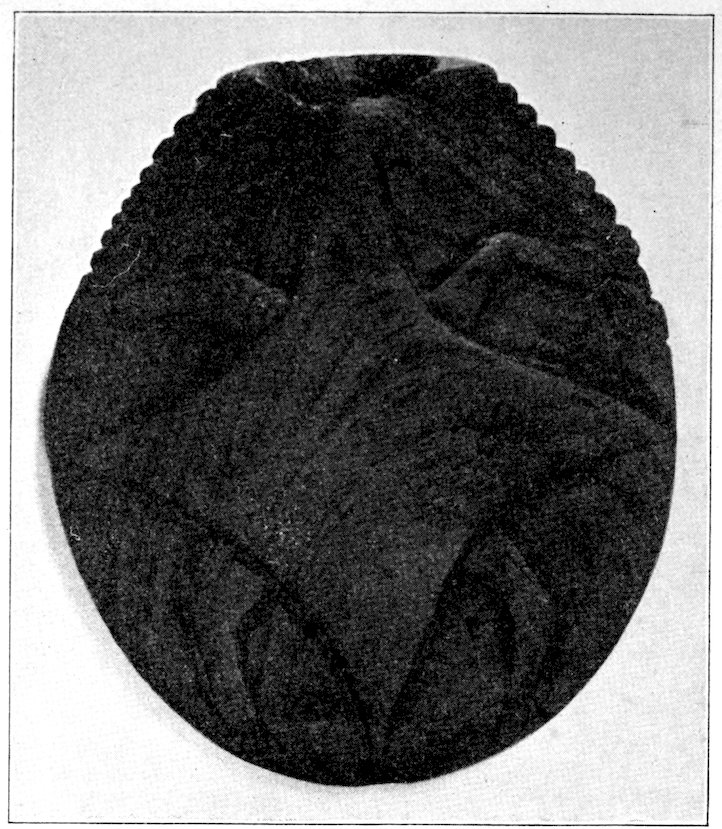
Fig. 461. (S. 1–1.) Turtle pipe found at Pierceton, Indiana. Front view. Collection of W. D. Matchett, Peirceton, Indiana.
“Fig. 447, found at Baldwin’s Mills, Waupaca County, the largest handled disc pipe so far found in Wisconsin, is of beautiful dark red catlinite with pink flecks. Its bowl is five inches long, terminating in a handle shaped like the blade of a hatchet, with what would be the cutting edge ornamented with three notches. The disc is 3½ inches wide and so thin that the distance through from the face of the disk to the outer side of the bowl is but three fourths of an inch. The stem hole has the characteristic curve and its interior is nicely polished. Both stem and bowl holes appear to have been started with a stone drill and enlarged with a wooden drill used in conjunction with sand. Under a glass this specimen 55shows innumerable scratches, but none of these appear to have been made by the use of metal tools. The same can be said of eleven handled disc pipes in the author’s collection.” Mr. West has a record of one hundred and four disc pipes found in Wisconsin.
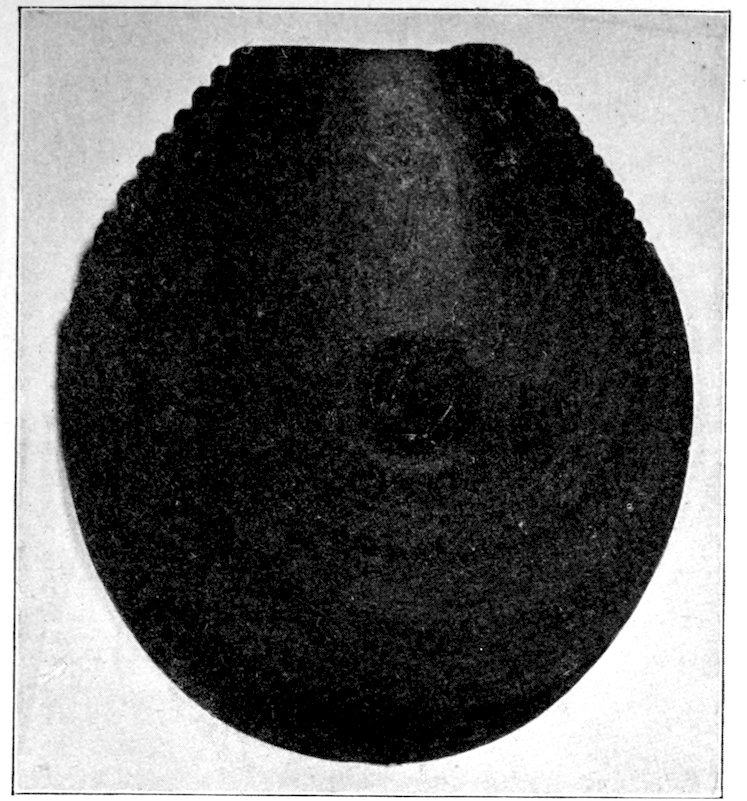
Fig. 462. (S. 1–1.) Rear view of Fig. 461.
The fact that these disc pipes are frequently made of catlinite leads me to believe that they are not as old as other forms; yet there seems to be no evidence of their use after the advent of white man.
The pipe with the curved base and monitor pipes are closely related. These are found throughout the entire Mississippi Valley, and are especially numerous in Illinois, to West Virginia and from southern Wisconsin to southern Tennessee. Many beautiful specimens have been taken from mounds and graves, particularly from the mounds. In Figs. 449–53, I show five of these. Perhaps the most beautiful ones have been found in the mounds of the Scioto Valley, Ohio.
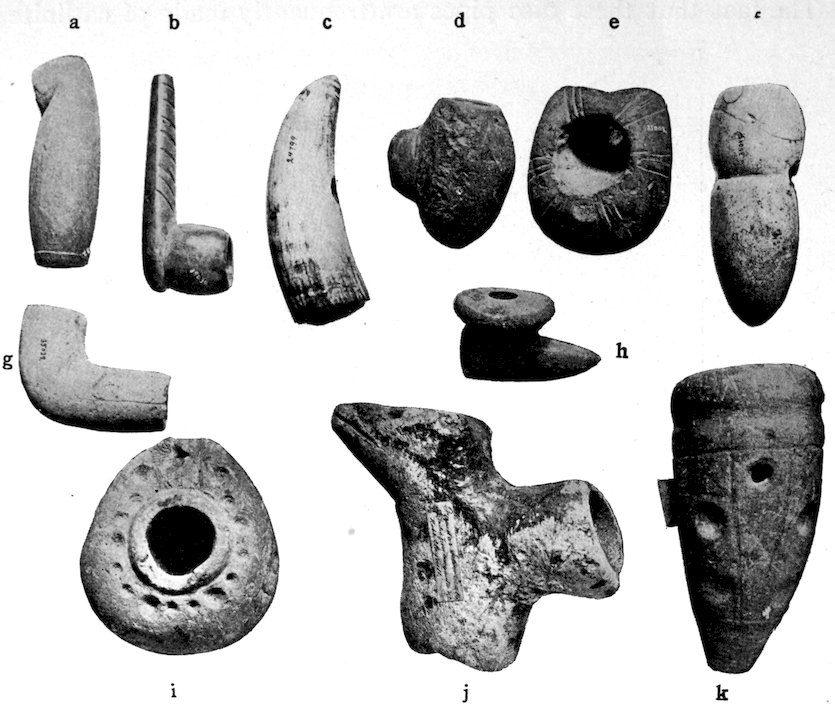
Fig. 463. (S. 1–3.) Group of pipes from various localities in the Mississippi Valley.
(a) Scioto County, Ohio.
(b) Ross County, Ohio.
(c) Pipe made from a whale’s tooth, Alaska.
(d) Scioto County, Ohio.
(e) Miami County, Ohio.
(f) Scioto County, Ohio.
(g) Scioto County, Ohio.
(h) Wabash Cemetery, Indiana.
(i) Hancock County, Ohio.
(j) Silver Creek, Morgantown, North Carolina.
(k) Grovetown, Georgia.
57Just how this peculiar form originated, no man may know. It was the favorite among the prehistoric peoples. A few examples found in use among historic tribes are very poor imitations of the old forms, and cannot compare in workmanship and beauty of finish with such as are removed from the mounds of the Middle West and the South.
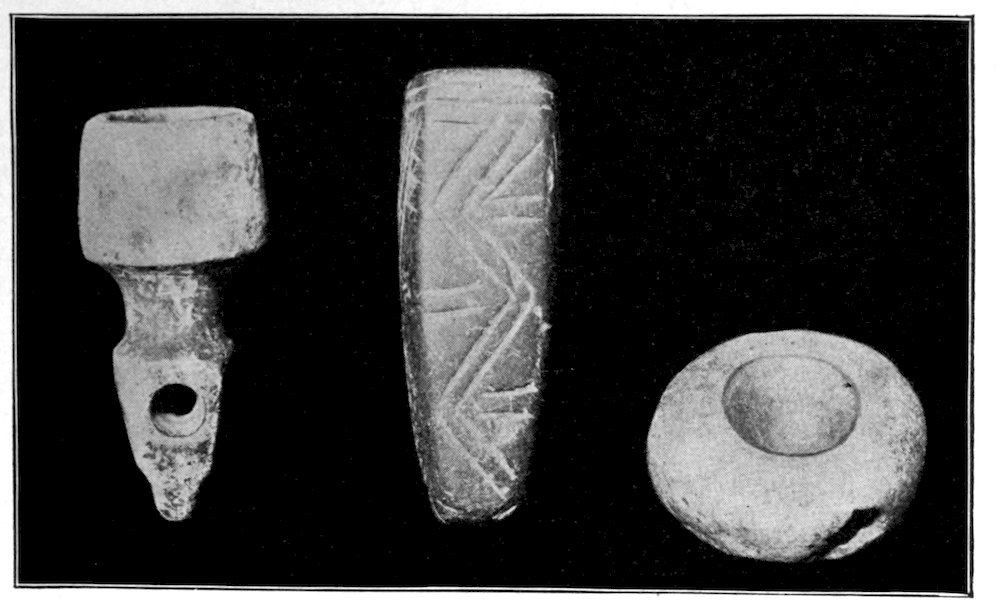
Fig. 464. Three pipe-bowls. Collection of Henry Montgomery, Toronto, Ontario.
Left. Pipe-bowl made of sandstone. From near Toronto, Ontario, Canada. Length, 2¾ inches.
Centre. Pipe-bowl made of limestone. From Markham, Ontario. Length, 3 inches.
Right. Pipe-bowl made of white quartzite. Found by Henry Montgomery in Simcoe County, Ontario. About one third actual size.
Beginning with Fig. 449 and continuing to Fig. 453, and from Fig. 471 through Fig. 500, I present a series of pipes, all of which are decorated either by incised lines or by likenesses of animals, birds, or human beings, carved in relief. These may be taken as typical of any large series of pipes in a public museum, and represent the height of pipe-making art.
As previously remarked, the decoration seems to be the essential thing in pipes. The idea of the maker was to portray something on the pipe or to have the pipe stand for more than a mere receptacle in which tobacco was smoked. No other conclusion is possible when we consider the high percentage of decorated and ornamented pipes, and the surprising number of pipes worked into effigies. Fig. 469 is a very clumsy pipe at best, and the decorations on it may not indicate age. Examples such as this are not wanting, and there are a great many in collections. Contrasted with this rough specimen is Fig. 455, which is also decorated but is worked less crudely.
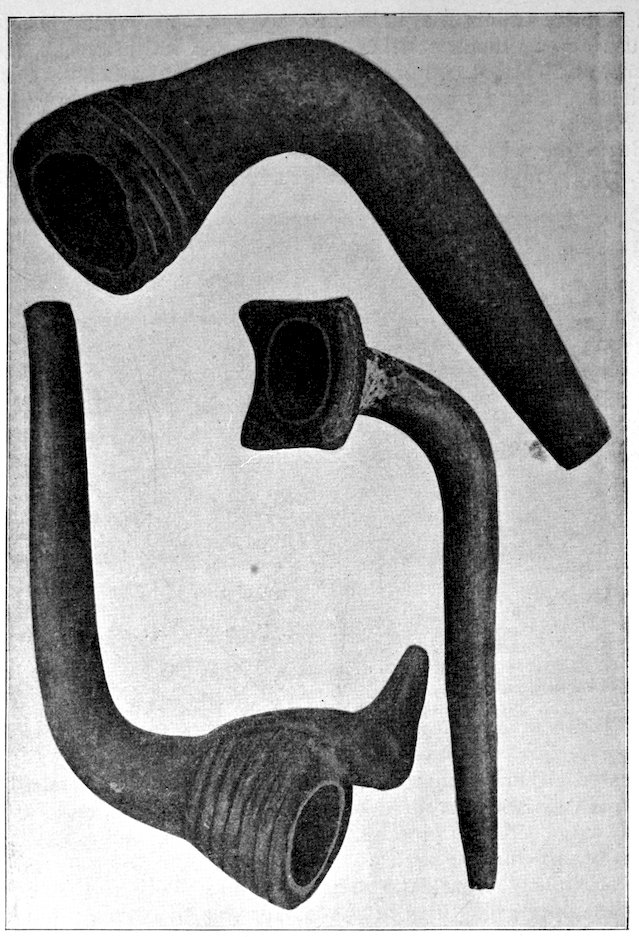
Fig. 465. (S. 1–1.) Collection of the Buffalo Society of Natural Sciences, Buffalo, New York. Typical Iroquois pipes. These are fine examples of Iroquois art and were found in western New York, where the Iroquois culture was high. From graves at Grand Island, New York.
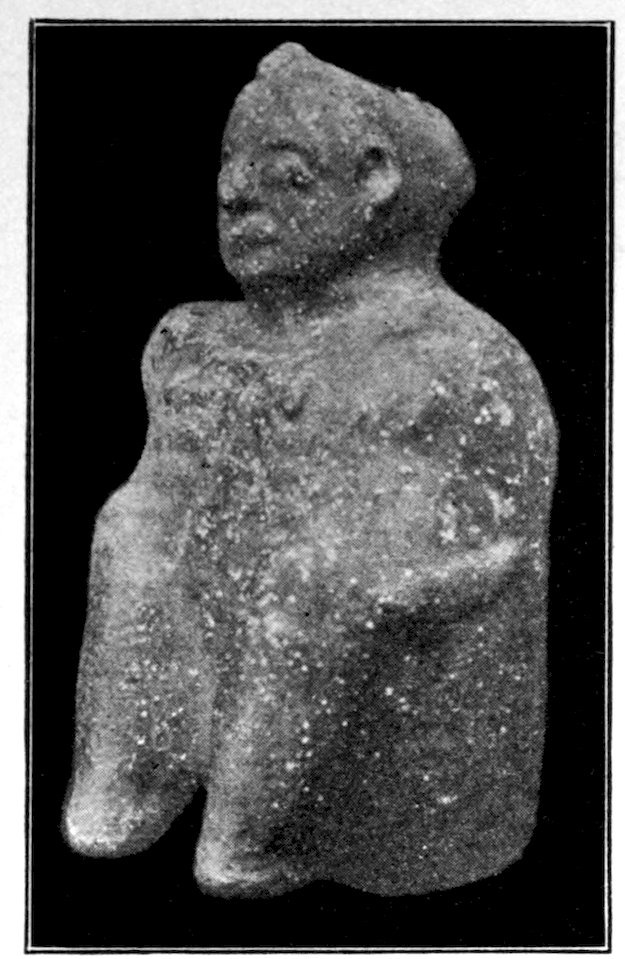
Fig. 466. (S. 1–3.)
From a stone grave, Wofford Farm, Hurricane Mills, Humphrey County, Tennessee. Material: red and brown clay.
Collection of J. T. Reeder, Houghton, Michigan.
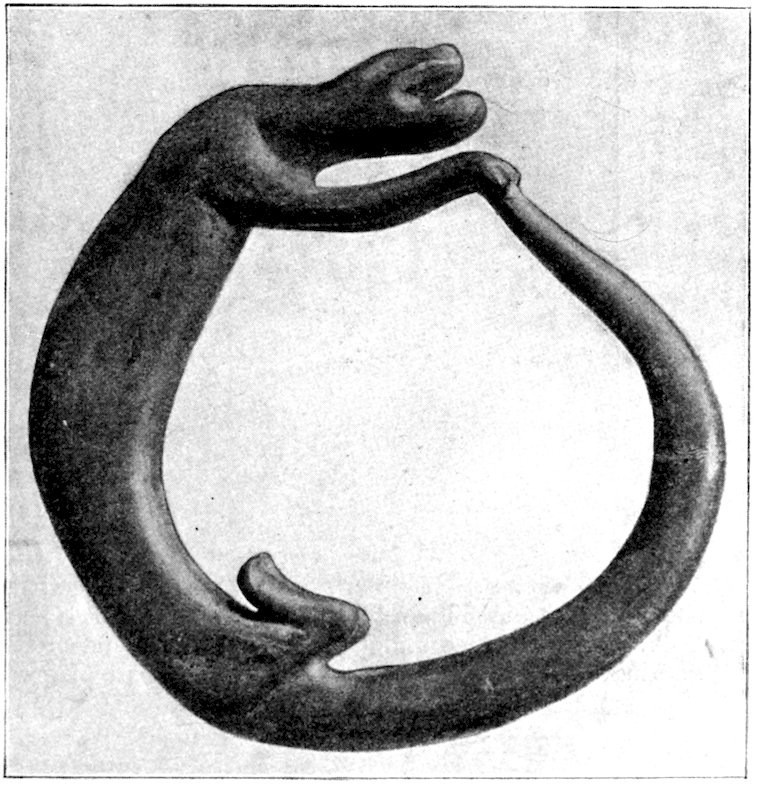
Fig. 467. (S. 1–1.)
Greenstone pipe found in Tennessee. Apparently an Iroquois type of pipe. This is a rare form.
From the collection of W. B. Rhodes, Danville, Pennsylvania.
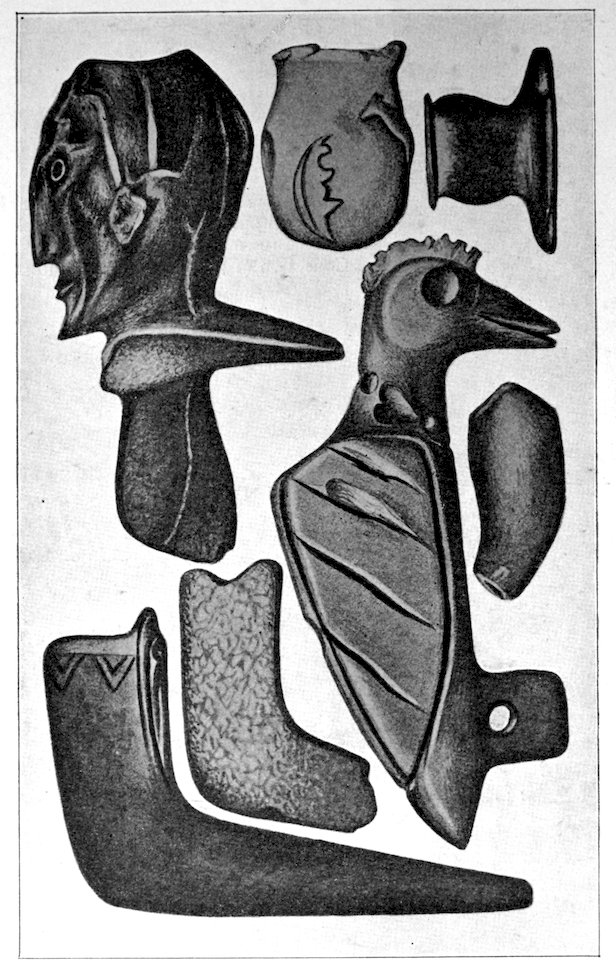
Fig. 468. (S. 2–3.) New York State Museum collection, Albany, New York. Human effigy and human bird-pipes from Iroquois sites in northwestern New York. Both of these sculptures are unusually fine examples of art in pipe-working, for the greater part of Iroquois pipes are plainer.
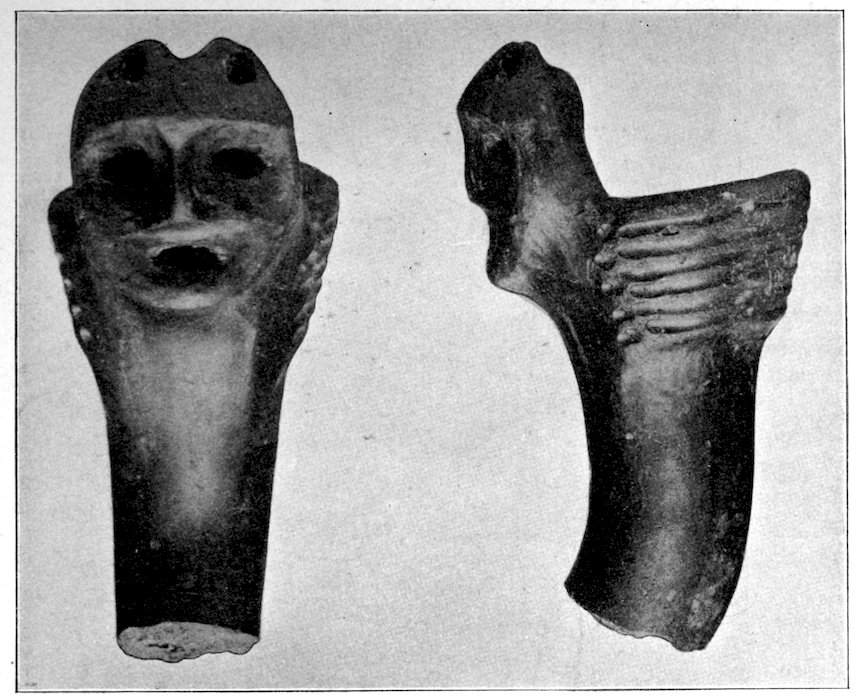
Fig. 469. Pottery pipe with human face; the stem part broken off. Simcoe County, Ontario, Canada. Toronto University Museum.
The human sculpture of the priest on the altar at Palenque, so frequently illustrated, illustrates an individual either blowing or drawing smoke through a tube. The tube is ornamented with bands, and appears to be larger at one end. It is a straight and not a curved pipe. I have always thought that this interesting figure from ancient Palenque typified what the pipe meant to the more cultured American tribes. There is a vast difference between the use of the pipe as portrayed in that sculpture, and the degeneration of the smoking ceremony as it appears to-day among modern tribes. We have in this figure the ancient shaman in full regalia; the elaboration with which the slab is wrought, and the fact that it was part of the sacred altar at Palenque, are significant.
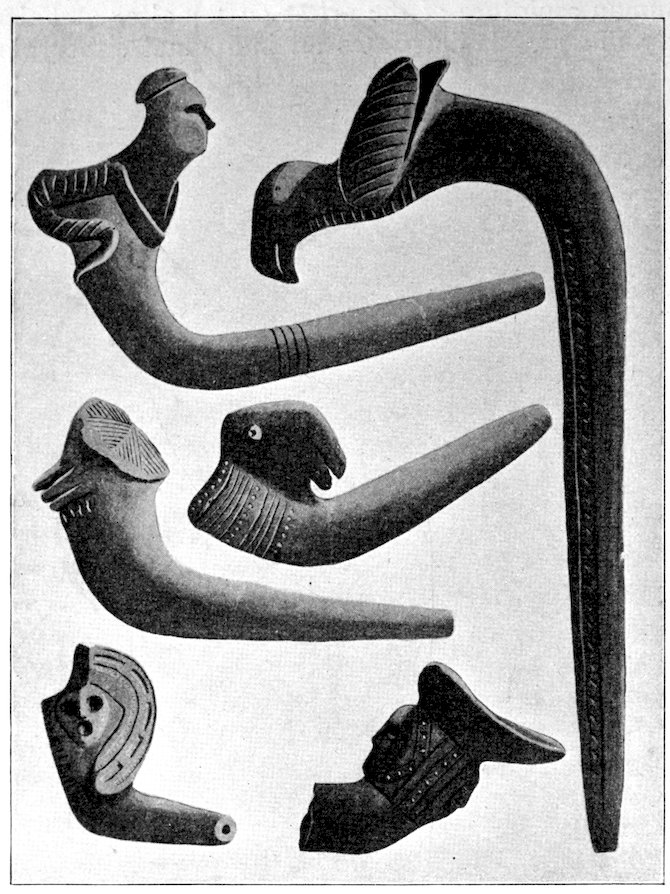
Fig. 470. New York State Museum collection, Albany, New York. The New York State Museum contains many fine specimens of early Iroquois make. The upper figure to the right, with long stem, is gracefully curved.
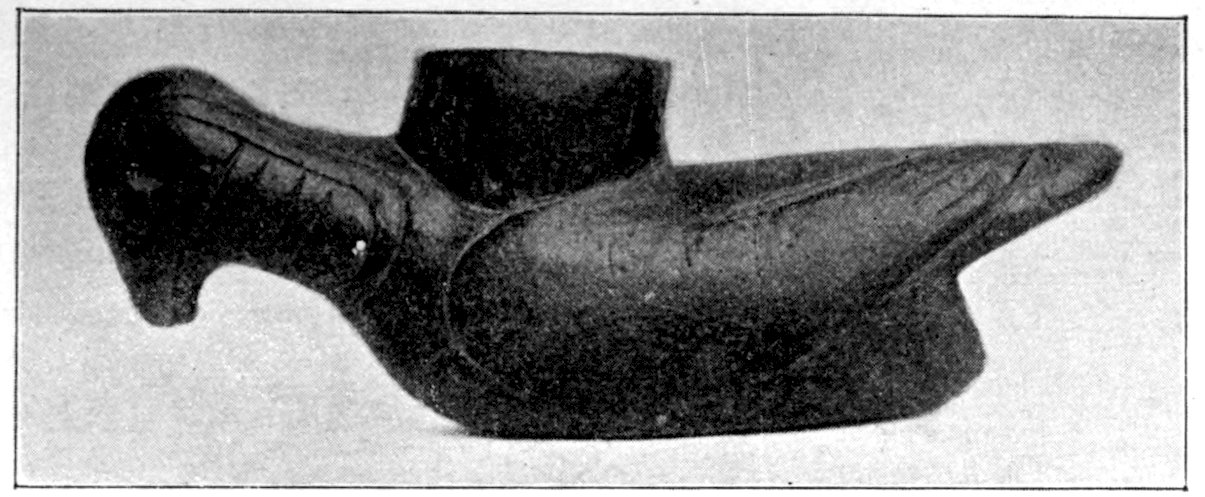
Fig. 471. (S. 1–1.) Collection of Leslie W. Hills, Fort Wayne, Indiana. This is the form of bird effigy most frequently found. That is, it is not common, but more of this type are found in the Mound-Builder country than other bird-forms.
We have no such sculptures in the Mississippi Valley, but we have altar mounds in which effigy and monitor pipes were buried. I have never found a crude pipe in an altar mound and I do not think that either Squier and Davis or Professor Mills ever found an example of crude art in an altar mound. This refers to original interments, on the base-line—not to intrusive burials. Everything indicates that the pipes in use in pre-Columbian times were of two kinds, the small, individual pipes, and the large council pipes, or those made use of at important functions either religious or tribal, being characteristic. I have never observed the mark of any steel or iron tool on a mound pipe in the Ohio Valley.
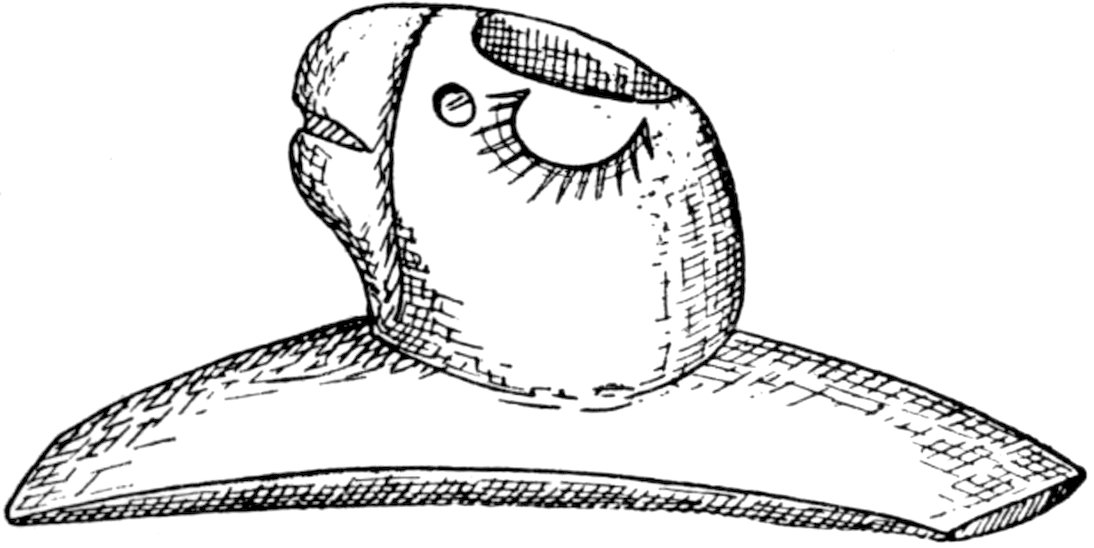
Fig. 472. (S. 1–2.) This form of pipe is rare in Wisconsin. But a few mouth-pipes with curved bases have been found in the St. Lawrence region. It may have been obtained by trade in the South. Collection of J. G. Pickett.
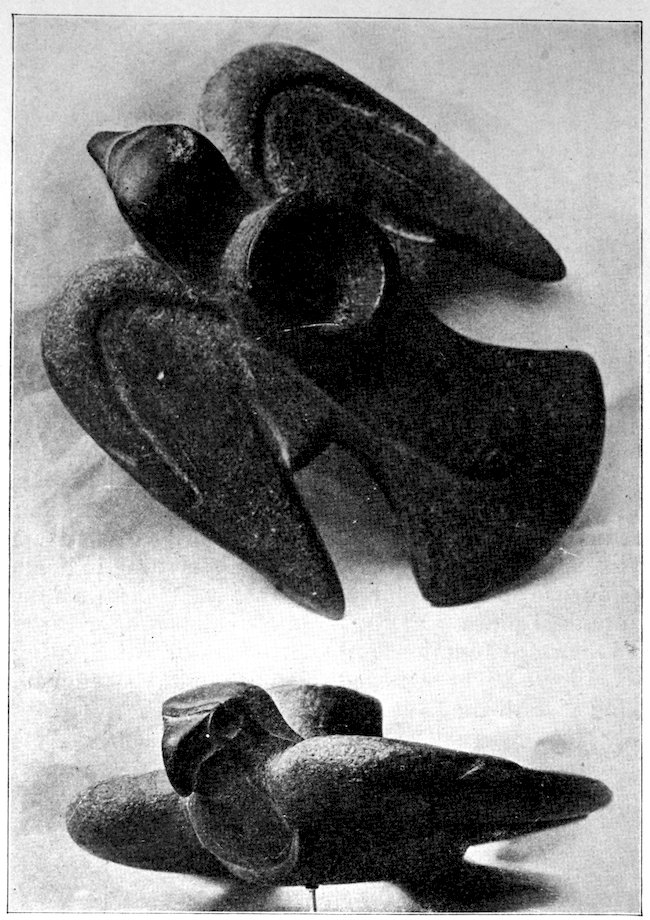
Fig. 473. (S. 1–2.) Collection of A. J. Powers, Mt. Vernon, Iowa. Eagle pipe, Georgia. This remarkable pipe has been described several times in various publications. It is a beautiful specimen.
65Whether smoking was discovered through accident, or developed from the use of the straight tube in the hands of the priests, is something we may never be able to determine with accuracy.
While the effigy pipes required particular skill in their manufacture, yet some of the tubular, rectangular, and disc pipes, although unornamented, are wrought skillfully and brought to a high finish, and the surfaces polished until almost as smooth as glass.
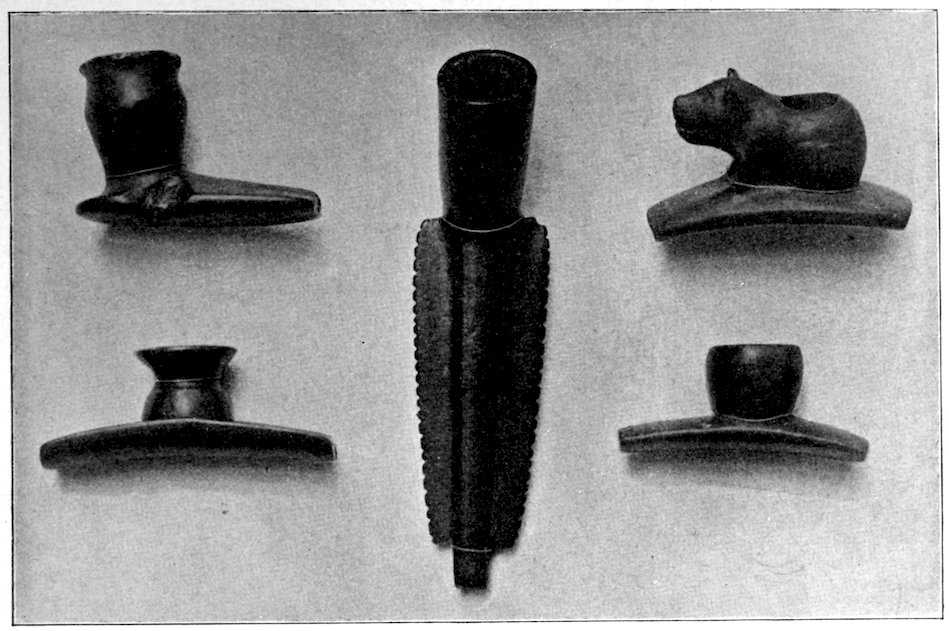
Fig. 474. Collection of Leslie W. Hills, Fort Wayne, Indiana. A group of beautiful mound pipes from Indiana, Kentucky, and Tennessee. None of these can be considered modern.
I have often thought that a careful catalogue of all pipes in our large museums, with a detailed statement as to where each was found, would be of great value, and enable us to prepare accurate tables as to these and their significance and age. In this connection it is to be regretted that greater care has not been at all times exercised in securing complete data relative to aboriginal pipes and other artifacts deposited in museums and private collections, for without this a specimen however interesting is of little value in solving archæological problems.
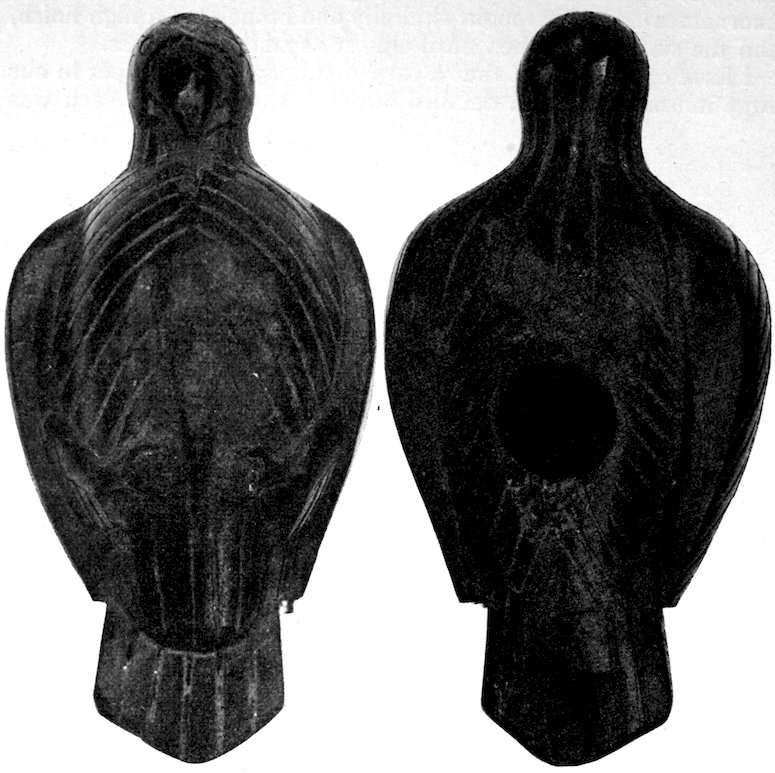
Fig. 474 A. (S. 2–3.) Front and rear view of pipe from Trigg County, Kentucky. Hard, compact, dark reddish stone. B. H. Young’s collection.
67The bird seems to have been the favorite sculpture, yet there are frequent portrayals of the frog. I present three of them, all of sandstone, in Figs. 485 and 486, and a beautiful one, full size, in a photogravure plate, Fig. 500, from the collection of Mr. F. P. Graves, Doe Run, Missouri.
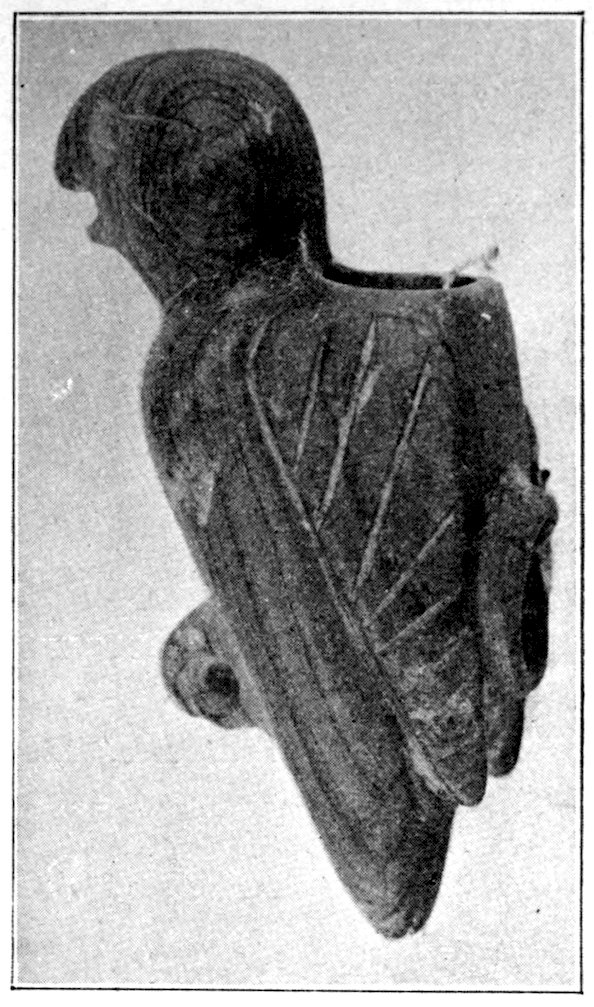
Fig. 475. (S. about 1–1.) Slate pipe, bird effigy. Collection of Mrs. Nellie Gowthrop, Camden, Michigan.
Among the Ojibwa Indians, during the summer of 1909, I observed a number of stone pipes in use. An excellent opportunity was afforded to study such among these Indians, as I was on White Earth Reservation, Minnesota, for seventeen weeks, and came in contact with all the full blood Indians and many of the mixed bloods. Being frequently in council with these Indians, I observed their pipes with some care. Except rectangular pipes of Siouan types, which were inlaid with lead or silver, most of the pipes were exceedingly crude and far inferior in every way to the ancient forms. Few Indians owned inlaid pipes. The major part of all the pipes I observed were common egg-shaped bowls without stem which were fitted with the common cane or wooden stem, such as are sold in stores at a penny each. Others were rectangular and unornamented. Two in use by old medicine-men, one smoked by a Cree woman, and several others were purchased by me and placed in the Andover collection.
As these Ojibwa are all in possession of steel tools, one would suppose that their pipes would be well made. But on the contrary, the art of making pipes has degenerated among them.
While there are tubular pipes in California, they do not occur in great numbers, and, as has been remarked, other types of pipes are either very scarce or entirely absent.
It seems to me that among our American aborigines the finest art existed previous to contact with European civilization. The finest sculptures on exhibition in our museums come from sites which appear to be prehistoric. To him who is skeptical and does not believe these statements, I suggest that he inspect modern Iroquoian, Siouan, Ojibwa, and Cherokee pipes, and compare them with the ancient forms such as have been taken from mounds and graves in southern Ohio, Kentucky, and Tennessee.
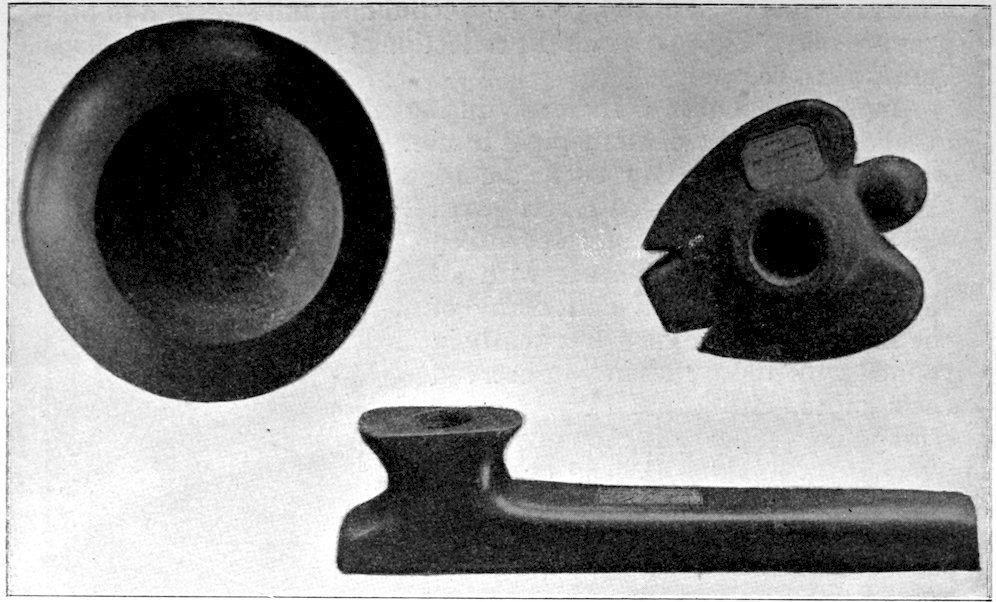
Fig. 476. (S. about 1–3.) Collection of J. T. Reeder, Houghton, Michigan. Locality, Tennessee. Materials: soapstone, slate, and quartz.
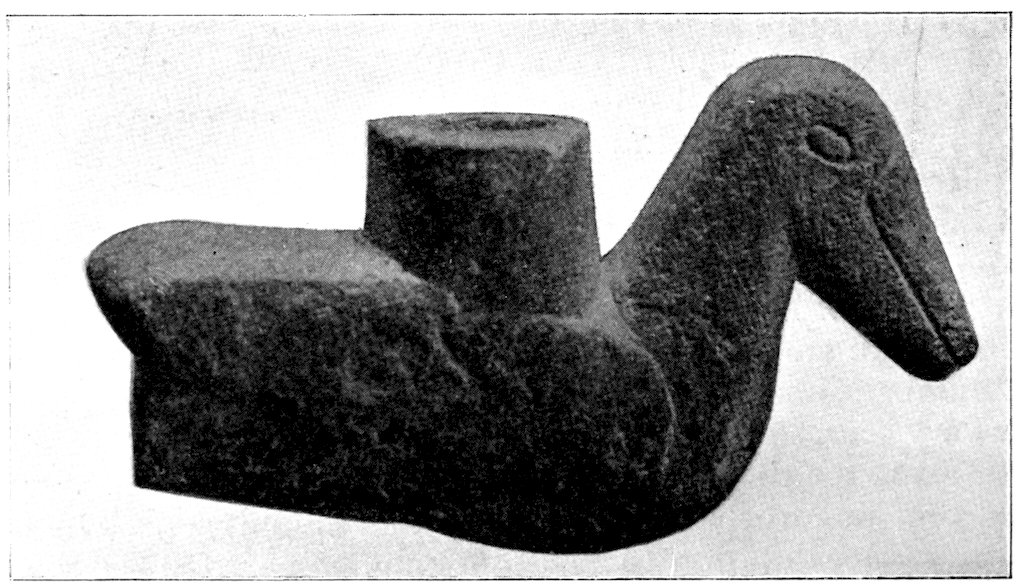
Fig. 476 A. (S. about 1–3.) Collection of J. T. Reeder, Houghton, Michigan. Locality, North Carolina. Material, soapstone.
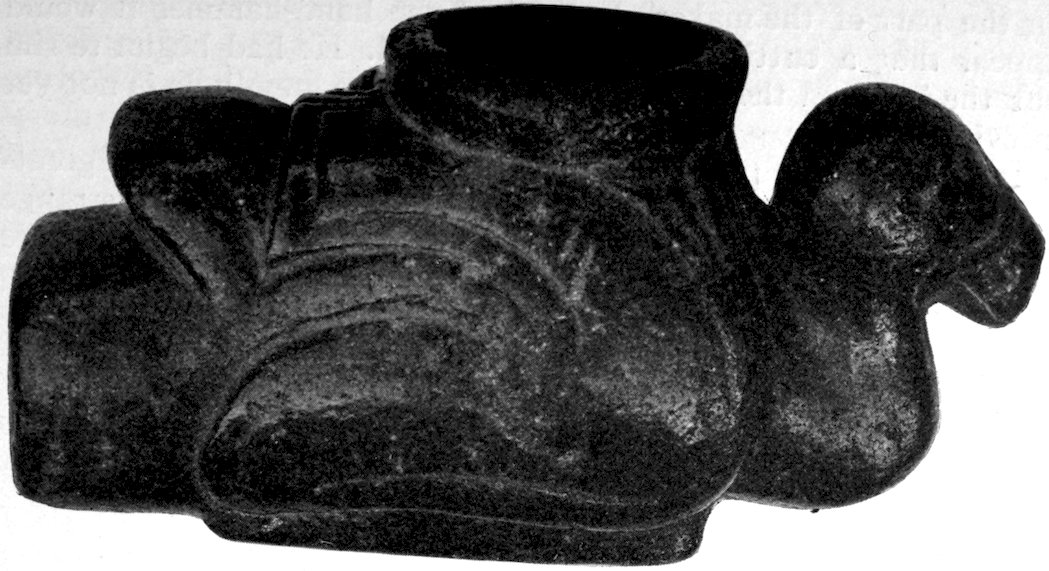
Fig. 476 B. (S. 3–4.) Steatite, Barbour County, Kentucky. From a mound on Stoner’s Creek. B. H. Young’s collection, Louisville, Kentucky.
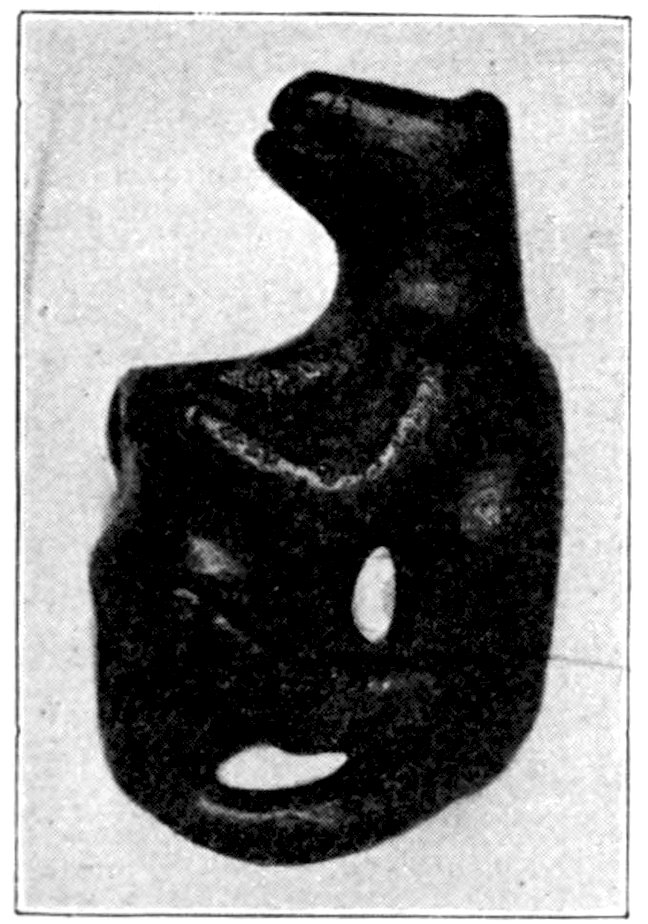
Fig. 476 C. (S. 1–2.) This beautiful little pipe is of a type occasionally found in Pennsylvania and the Carolinas. It may not be prehistoric. At any rate, it is an interesting specimen. Collection of Dudley A. Martin, Duboistown, Pennsylvania.
Most of these tubular pipes are much larger at one end than the other, corresponding to the bowl, which is more highly developed in later forms. There is one in the Andover collection that was obtained from the Hupa Indians of California about fifty years ago by an early settler. The stem is round, made of redwood, and a stone ring surrounds the bowl. The tobacco would of necessity have to be packed tightly when one smoked such a pipe, unless, as has been reported, the smoker lay upon his back.
Fig. 457 is a roughly outlined and unfinished effigy pipe, which when complete was intended to represent the head of some animal. In this we have evidence of the method of work 70on the part of the maker. Instead of the hand-hammer it would appear that a cutting-tool had been used. He had begun to rim out the bowl on the top of the head, but the stem hole is not yet in evidence.
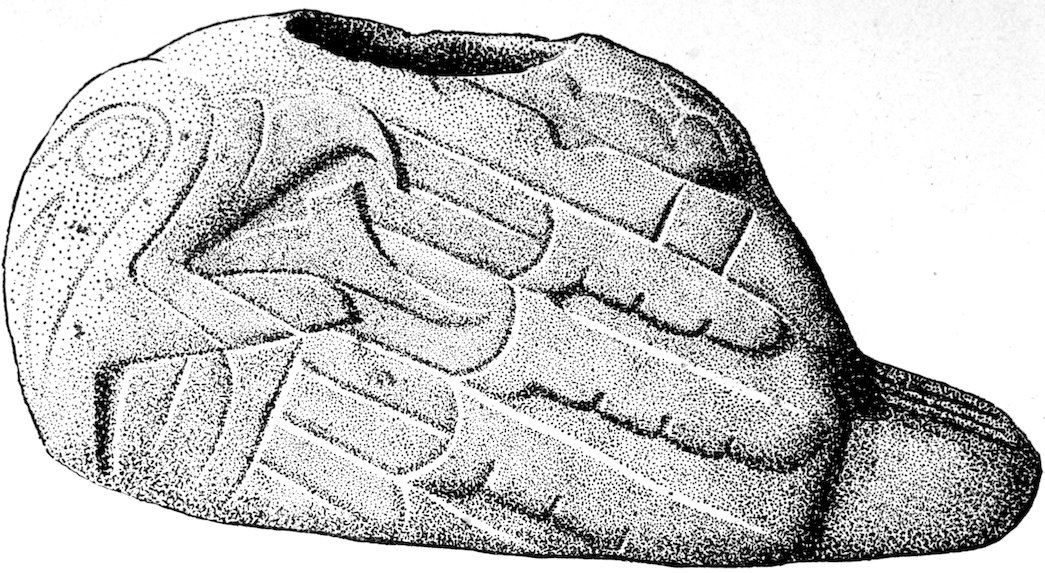
Fig. 477. (S. 1–1.) Eagle pipe. Clarence B. Moore. A superb pipe of limestone representing an eagle. “This pipe, 4.6 inches in length, carved with great spirit, is a worthy exemplar of the prehistoric art of Moundville. The bird is represented on its back, the head swung around to one side with the beak open and tongue extended. Incidentally, it may be said that the ‘hump’ shown on the tongue by the native artist, though somewhat exaggerated, is not imaginary, as may be proved upon examination of an eagle. It may be that this pipe, showing as it does the eagle lying on its back, its legs and claws on the belly, represents the dead bird. By pulling out the tongue of a dead eagle one would be certain to notice the ‘hump’; hence the examination of a dead bird would have sufficed so far as correct rendering on the pipe was concerned. On the other hand, the ‘hump’ on the tongue is plainly shown on pottery from Moundville, where the eagle’s head is erect and the bird is evidently represented as alive.”
It is in the effigy pipes themselves as a class that we see the greatest skill and care manifested in the manufacture of these strange objects. This does not, however, mean that all effigy pipes are models of the carver’s art, as many of them show poor workmanship. In other words, the art in pipes is no exception to the rule of art elsewhere. There were those who understood their business and produced masterpieces, and there were those who produced just the opposite. There may be a totally different method of treatment in representing the same creature, as for instance Figs. 468 and 470 showing the Iroquois treatment of human and bird forms in life; 71and the Southern Mound-Builder, Figs. 473, 474 A, 499, illustrating birds and men. The Iroquois and the Plains tribes made pipes more nearly like our modern pipes of to-day. The bowl was round or angular, and the stem long and tapering, or angular. Excellent examples from the Buffalo collection are shown in Fig. 465.
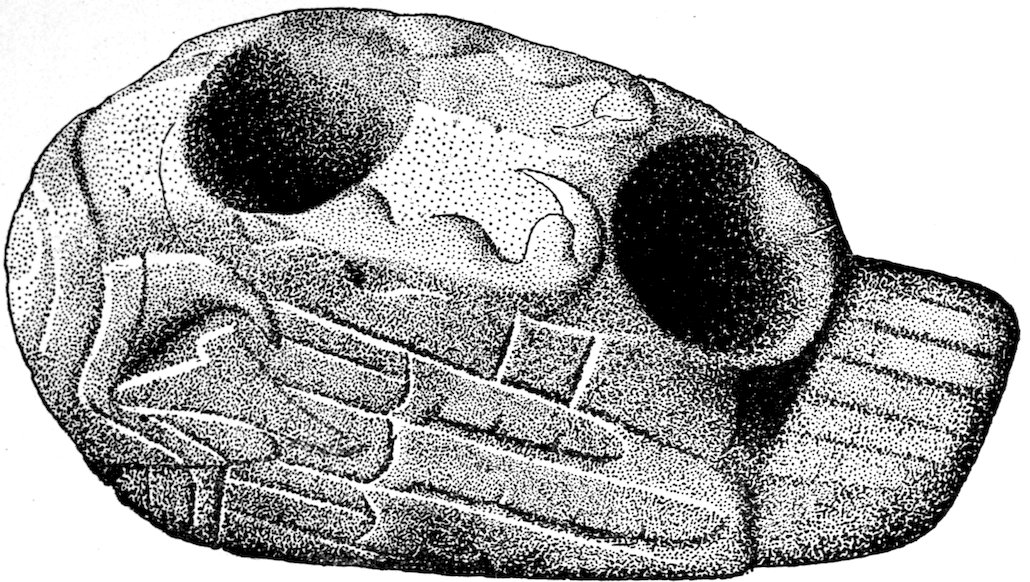
Fig. 477 A. (S. 1–1.) Eagle pipe. Clarence B. Moore. “Several experts who have charge of eagles in captivity inform us that under certain circumstances the ‘hump’ on the tongue is visible on the living bird. Possibly the aboriginal artist at Moundville was familiar with the characteristics on eagles through the possession there of captive birds—a custom observed among the Zuñi of New Mexico at the present time.
“Owing to slight disintegration of the stone at that part of the pipe where the head is, the details of the carving are somewhat indistinct, but by holding the pipe in a suitable light all the details of the head are still distinguishable. A wing is represented on each side. The legs, beginning at the tail, which extends outward, rise upward and forward, the feet and talons resting on the belly and embracing the orifice of the bowl. The opening for the stem is immediately above the tail.”[14]
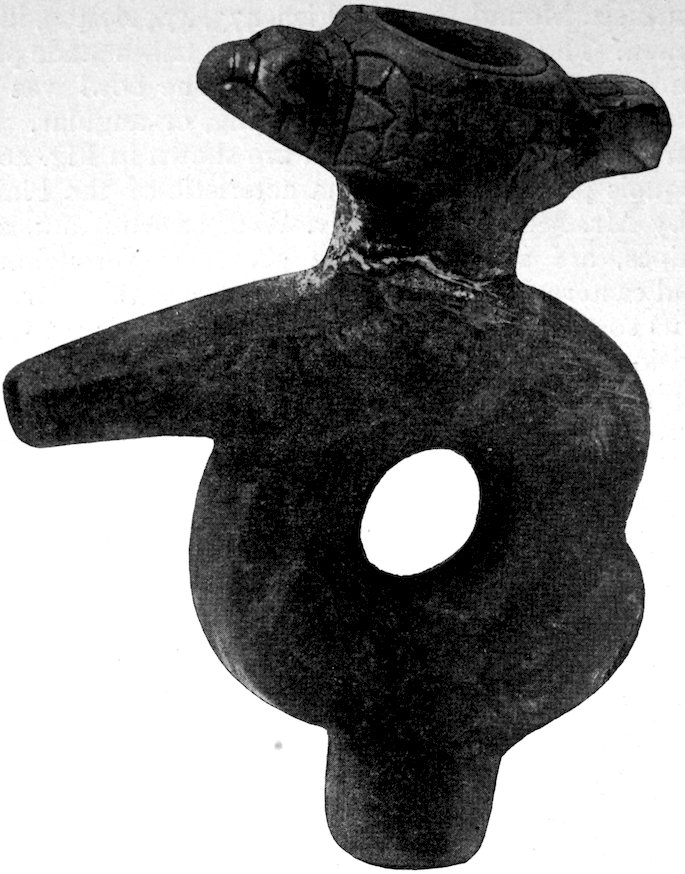
Fig. 478. (S. 1–1.) Handled pipe. This figure “represents one of the oldest handled pipes that has come under the writer’s observation. This interesting specimen was taken from a burial-mound, on the Nicholai farm, Big Bend, Waukesha County, Wisconsin, in July, 1902, by Mr. La Fayette Ellerson. With it was found a curved-base mound pipe.” From the collection of G. A. West, Milwaukee, Wisconsin.
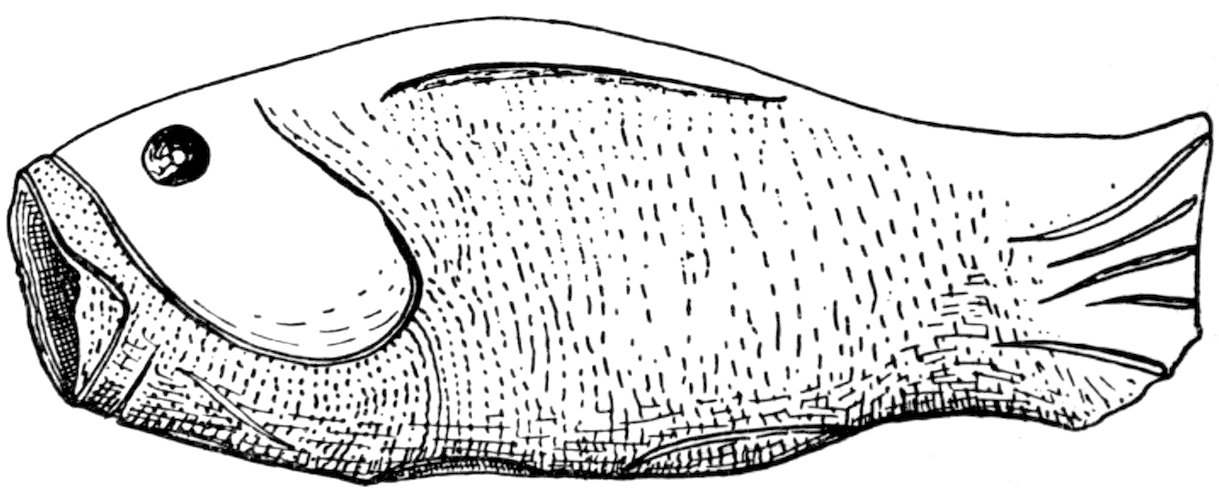
Fig. 478 A. (S. 1–2.) Handled pipe. “Found by Mr. O. S. Ludington, near Prairie du Chien, of red sandstone, formed, mainly by the pecking process, into the shape of a fish, and is 5½ inches long, 2½ inches wide, and 1 inch thick. Its bowl cavity is three fourths of an inch across, the stem hole nearly as large, and both are cone-shaped, having been made with a stone drill. This specimen is not worked down smooth, nor does it exhibit file marks.” From the collection of G. A. West, Milwaukee, Wisconsin.
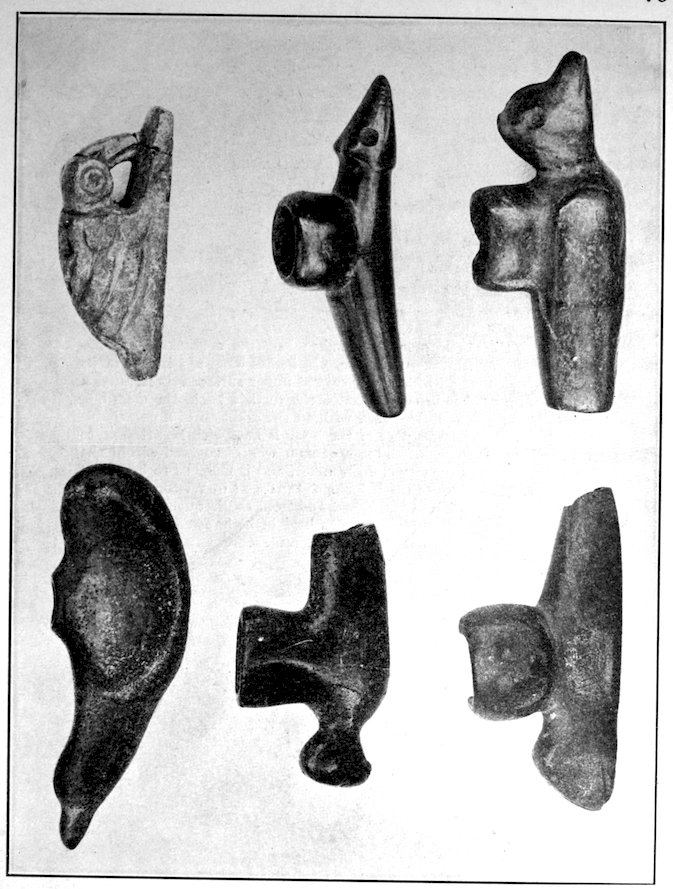
Fig. 479. (S. 1–3.) Six interesting effigy pipes from the collection of Bennett H. Young, Louisville, Kentucky.
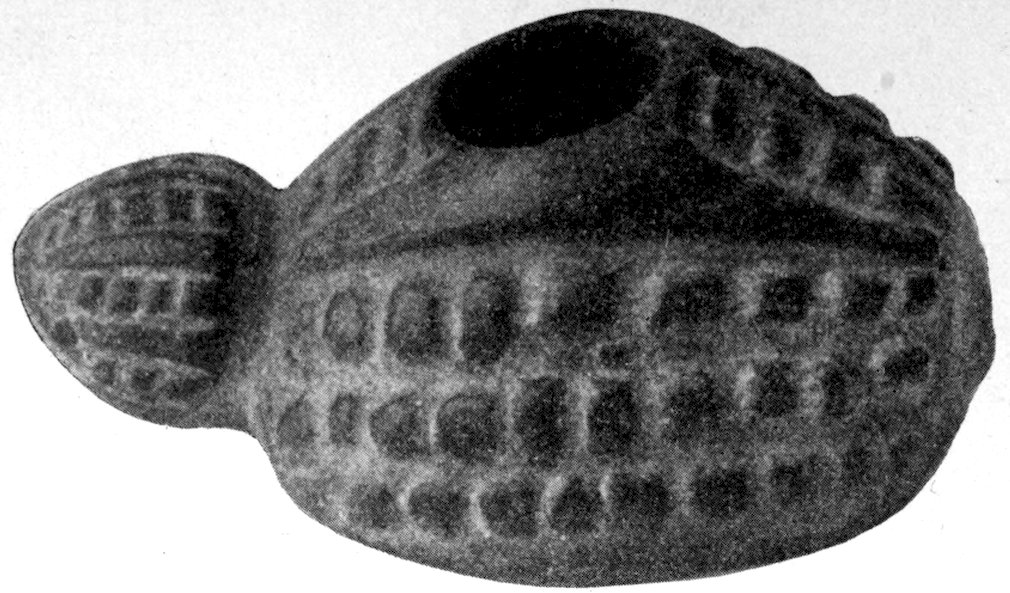
Fig. 479 A. Turtle pipe. Milwaukee Museum collection. This figure “is of grayish-brown steatite, 3¼ inches long, 2¼ inches in its greatest width, and with a finely carved upper surface representing a turtle. The bowl is in the centre of the turtle’s back, the stem hole is small, and was doubtless used without the addition of a detachable mouthpiece. The lower part of the body is flat, with no attempt to form either legs or tail.” This specimen was discovered within the southern limits of the city of Milwaukee, and is believed to be one of two ceremonial pipes of turtle-form, so far found in Wisconsin. “The turtle was an emblem of the Sioux, and from the frequent occurrence of its shell in graves must have been held in high esteem by the Indians; yet representations of it in stone are exceedingly rare.”
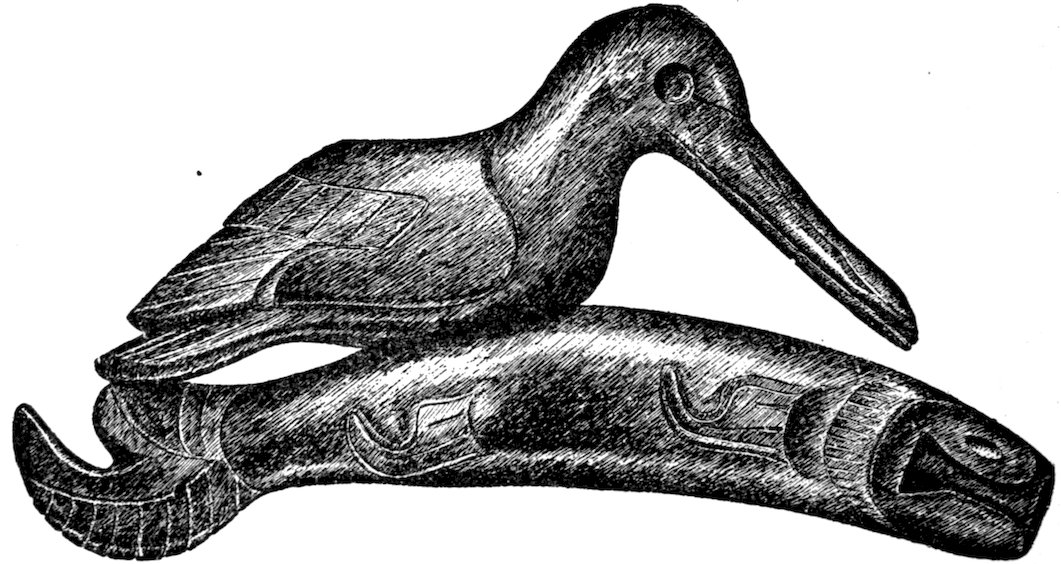
Fig. 480. (S. 1–1.) Effigy pipe, Hopewell Group.
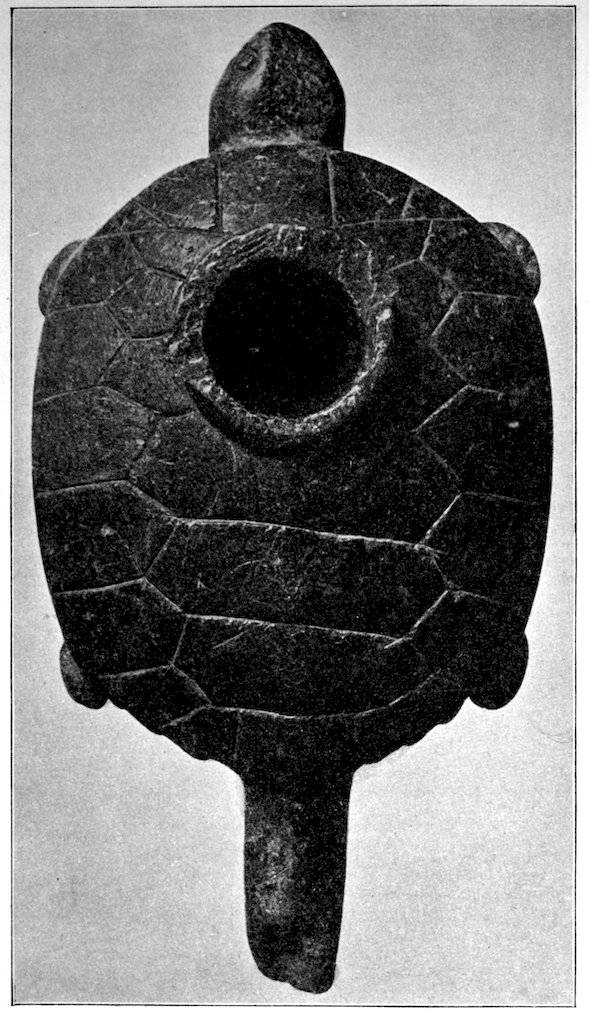
Fig. 481. (S. 1–1.) Turtle pipe found near Burnett, Dodge County, Wisconsin. Milwaukee Public Museum collection.
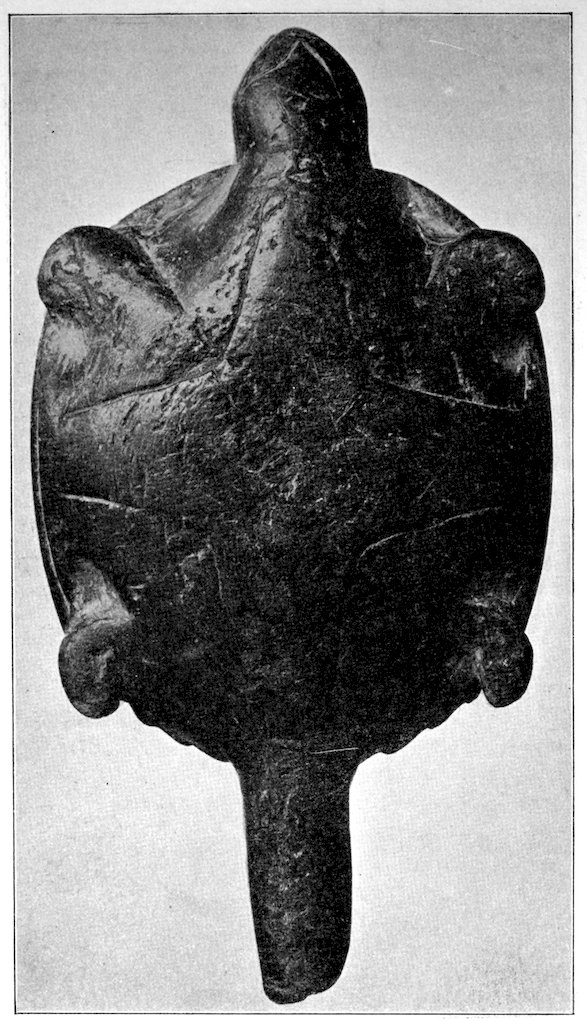
Fig. 481 A. (S. 1–1.) Another view of Fig. 481.
77The Iroquois pipes and pipes characteristic of the Plains, pipes classified by Mr. McGuire and Mr. West as Micmacs, and other modern pipes, are scattered quite generally throughout north, central, and eastern United States. It is good that Mr. McGuire has given us so careful a distribution of pipes as is set forth in his fifteen divisions. The student of archæology must distinguish between the pipes from the old burial-places and those that are apparently modern. The prehistoric cultures and the modern cultures of our American aborigines here in the United States may be compared with those of Europe; where on one site we might find Roman weapons or implements, those of early Germanic tribes associated with the Roman, and beneath all of these, those of the stone-age type. But if the soil had been disturbed, through digging on the part of people subsequent to these epochs, stone-age objects, together with those of Roman and Germanic occupations, might be found associated together. It follows, therefore, that here in America, when we find modern catlinite pipes and rectangular stone pipes on a village-site or beneath the surface, these may represent different epochs or cultures. These cultures may or may not be separated by hundreds of years.
There are many complications to be taken into consideration, in our study of the distribution of pipes. As has been pointed out, rude pipes are quite as likely to have been made by modern Indians as by prehistoric people.
It does not follow, because the type of pipes recognized as Iroquoian in character is widespread north of the Ohio Valley and Canada, that all pipes in that region were made by the tribes of this stock.
The Iroquois overran the entire territory north of the Ohio and east of the Scioto. We know that they overwhelmed the Eries, Hurons, and others, whose art was quite different.

Fig. 482. (S. 1–2.) Oolitic limestone pipe, Hart County, Kentucky. Highly polished, a beautiful specimen. Collection of Bennett H. Young. These long effigy pipes of this type are to be found in the Smithsonian and American Museum collections. An example in the G. A. West collection, found in Ohio, is 14 inches long.
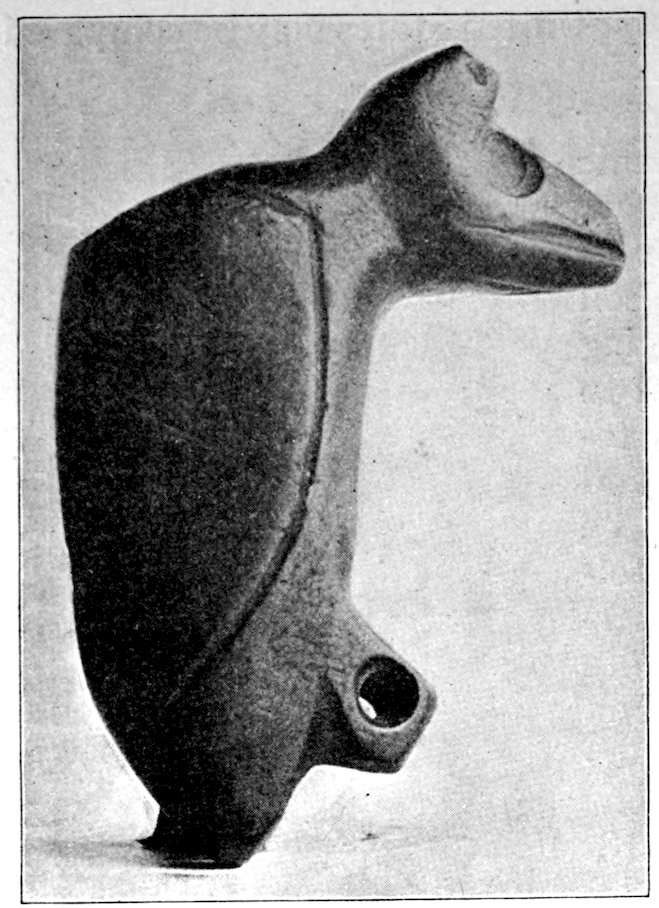
Fig. 483. (S. 1–1.)
From ossuary in the Township of Manvers, County of Durham, Ontario, Canada.
Collection of J. G. Ogle D’Olier, Rochester, New York.
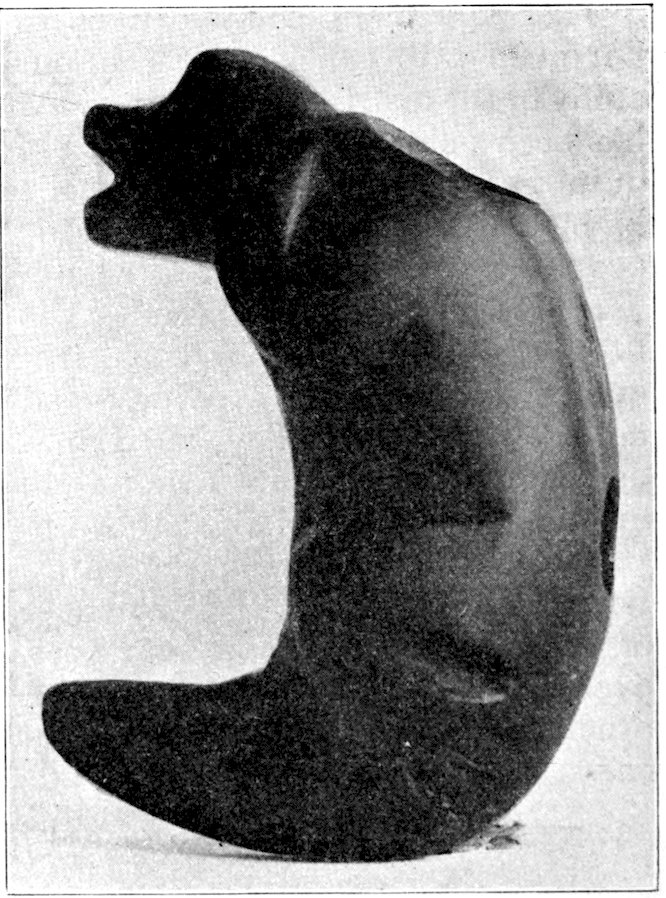
Fig. 484. (S. 1–1.)
From ossuary in the Township of Manvers, County of Durham, Ontario, Canada.
Collection of J. G. Ogle D’Olier, Rochester, New York.
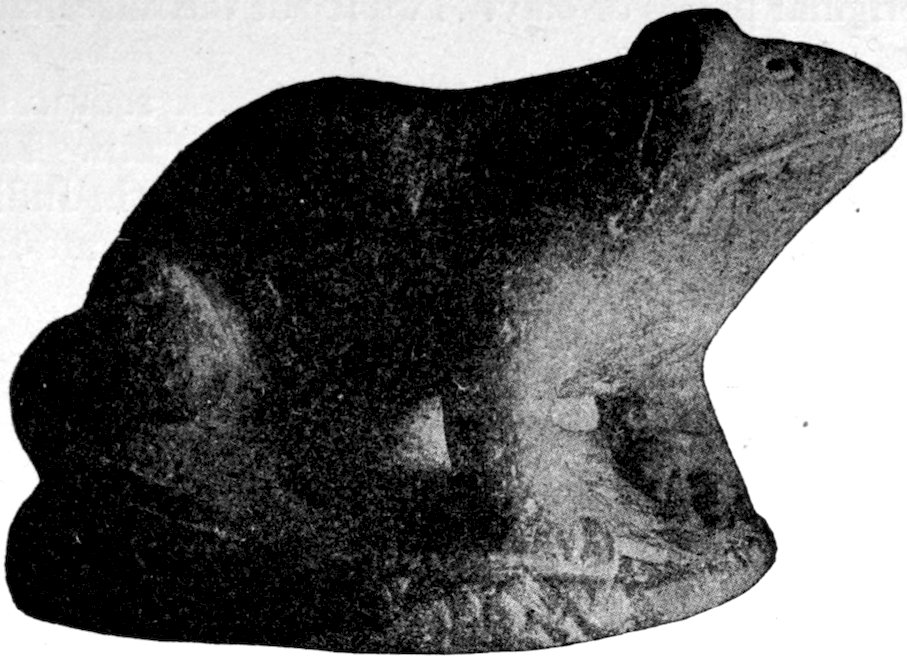
Fig. 485. (S. 2–3.) Beautiful effigy pipe of a frog found in a grave at Waynesville, Ohio, overlooking the Miami River. Secured by W. K. Moorehead, 1889. Now in the Ohio State University Museum, Columbus.
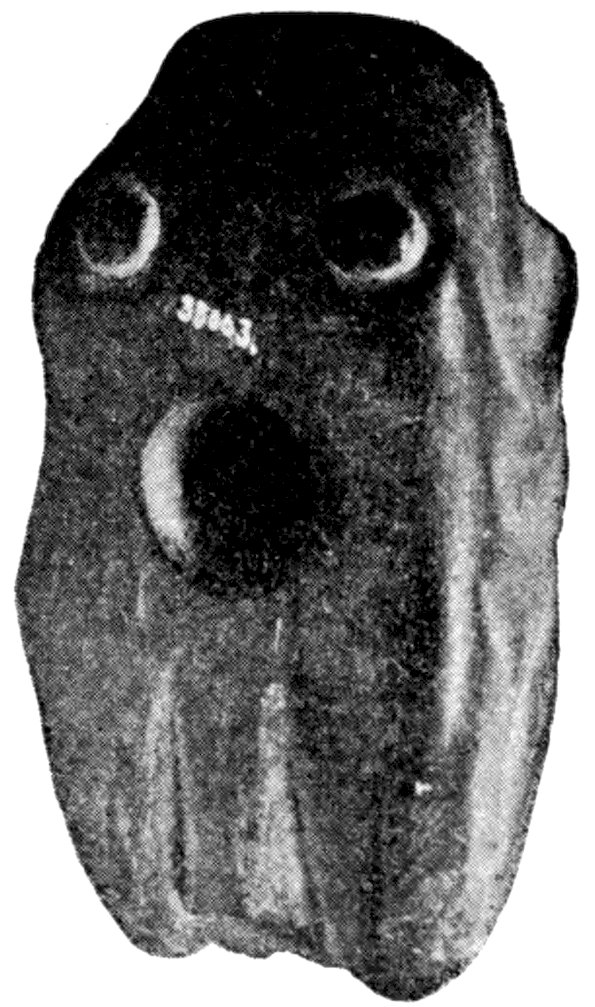
Fig. 486. (S. 1–2.) Frog pipe. From village-site at the mouth of Bush Creek, Adams County, Ohio.
As I have remarked, these Iroquoian pipes are easily distinguished from other forms; they are not found in the ancient burial-places of the Mississippi Valley. The beautiful mound and grave pipes from the Ohio Valley, the middle South, and the far South, shown in Figs. 474, 477 A, 485 to 491, 494, 496, and 499, are not only of ancient lineage, but show no mark of steel tools, and do not appear to have been inspired by European civilization. On the other hand, many of the pipes referred to do appear to have been suggested by a knowledge of European art. Some of the best effigy pipes, the monitor or platform pipes, were not made of stone, but of a fine grade of fire-clay. There are also effigies in pipes of terra-cotta. In answering a letter requesting information, Professor W. C. Mills, under date of April 27, 1910, said concerning the pipes in his collection: “Of the platform pipes, ten are fire-clay, of the effigy pipes, fifteen are fire-clay, and of the tubular pipes, twenty are fire-clay. The fire-clay pipes were never burned, but were 80cut from original pieces of clay. Twenty of the miscellaneous pipes are made of potter’s clay.”

Fig. 487. (S. 2–3.) An interesting human effigy found in northern Ohio, now in the collection of the Ohio State University, Columbus.
The bird is much in evidence as a prehistoric sculpture. In fact, there are more bird-pipes than any other life-form. This at once suggests the famous “Thunder Bird,” so famous in Indian mythology in America. Yet if it is true that these effigies are not totemic, as relating to tribes, but stand for “Thunder Birds,” it is curious that so many different kinds of birds should have been represented. There are the hawk, eagle, crow, woodcock, duck, woodpecker, paroquet, and others. Examine Fig. 474 A. It is one of the best sculptures presented in this chapter. Compare this beautiful carving with the following bird-pipes, Figs. 470, 471, 473, 476, 477, 480, where possible readers are advised to visit some public museum or consult a library and study the illustrations of bird-pipes. The range is considerable. Even in so brief space as is afforded in this chapter, it will be observed that it was the intention of the ancient people to represent not one kind of bird but many. The statement frequently made, that it is impossible in some instances to determine just what species of bird was intended, is true. But we have no difficulty in distinguishing between the duck, the eagle, the owl, or the crow, although the different kinds of ducks, or of hawks, might not be differentiated accurately.
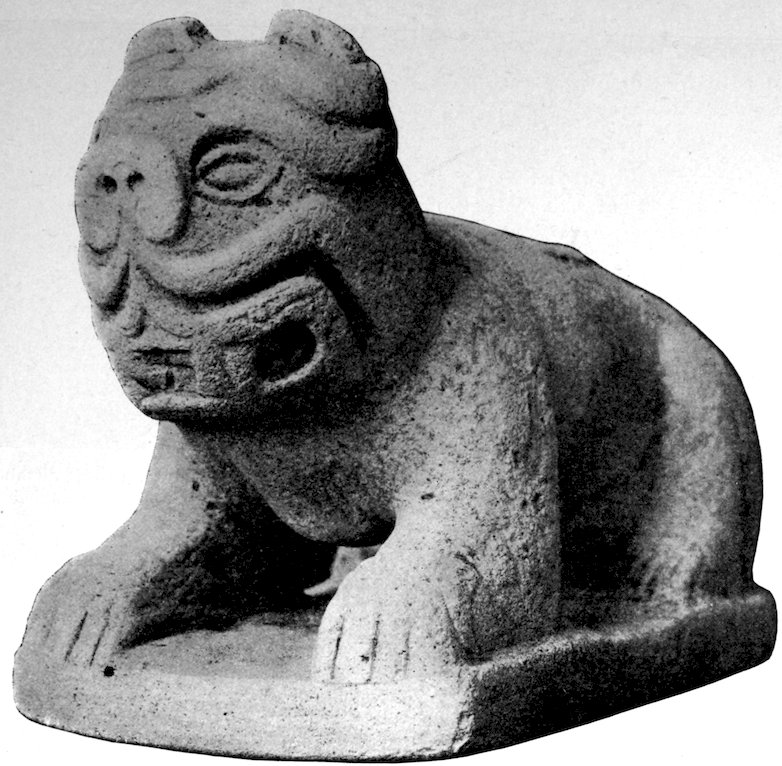
Fig. 488. (S. 1–1.) Effigy pipe of limestone. A remarkable effigy pipe found by Mr. Moore in one of the mounds at Moundville, Alabama. This group of mounds has furnished some remarkable specimens in stone and clay.
Mr. West says of the so-called handled pipes:—
“In this class the author has placed a small number of very interesting pipes which are provided with an elongated base or handle, by which they were held or supported; and in most examples with a short mouthpiece also. Some are without the latter feature, and were probably furnished with a short stem of wood or bone. They differ considerably as to general shape and manner of ornamentation. A few have the bowls artistically carved to represent the head of a human being, a fish, or an animal.
“A small number of similar pipes have been described from other sections of the United States. Twenty-two examples have been 82found in Wisconsin, no two of which are of exactly the same pattern. No theory of their authorship among the Wisconsin or other Indians has as yet been advanced. Even though originally limited to one tribe, so convenient a form of pipe is sure to have been copied by individuals belonging to others.
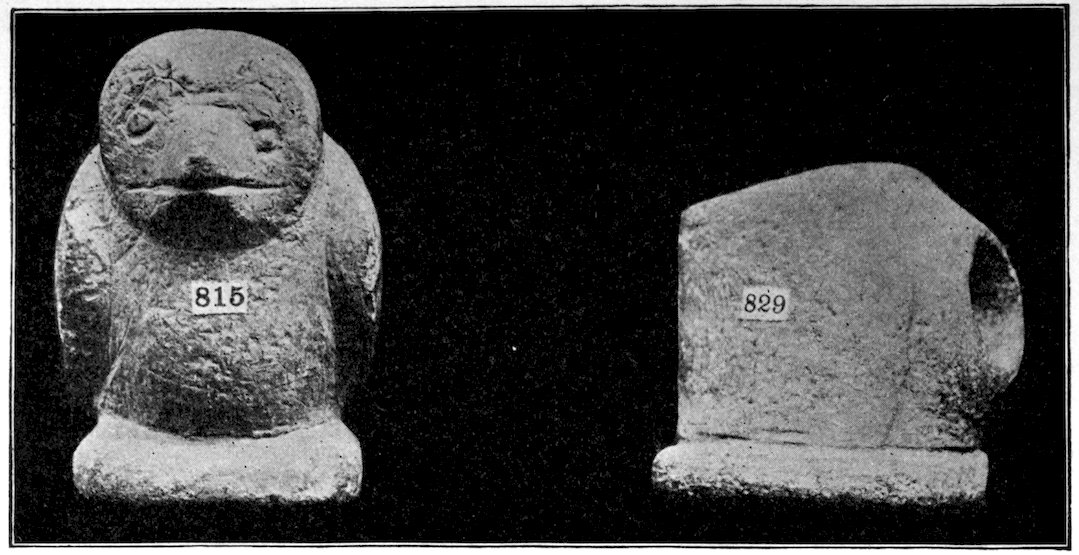
Fig. 489. (S. 2–3.) These pipes were found together in a small mound, a short distance south of St. Louis, Missouri. Collection of H. M. Braun, East St. Louis, Illinois.
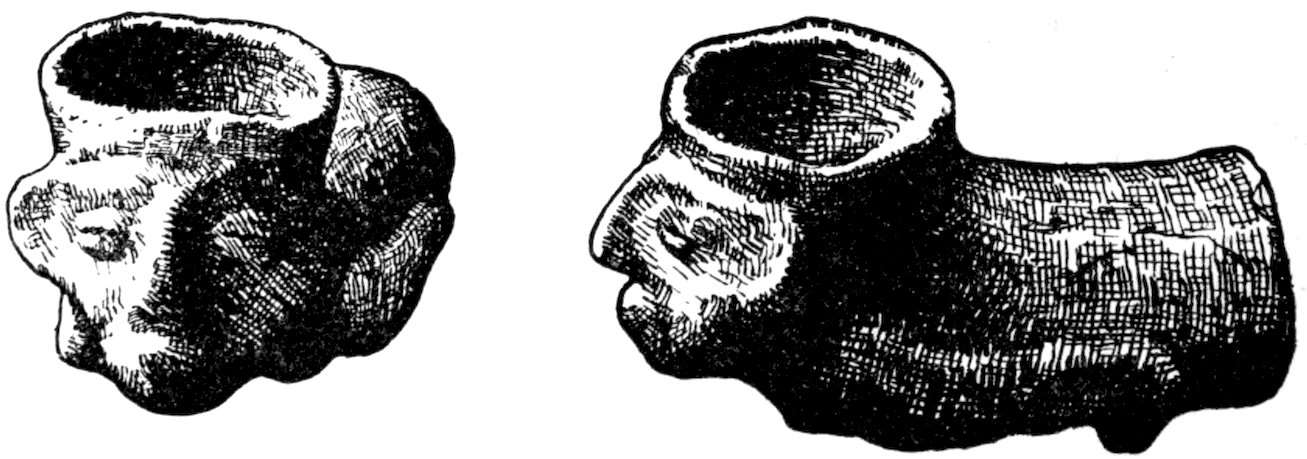
Fig. 490. (S. 2–3.) Human effigy pipe, from a grave in the Willis Cemetery, Hopkinsville, Kentucky. Phillips Academy collection.
“Authorities who have written on the subject, seem to regard this type of pipe as modern. Some of the Wisconsin finds contain no marks of metal tools, are unpolished, and have all indications of being prehistoric, while others are new in appearance, finely polished and show evidence of the use of metal tools in their manufacture.”[15]

Fig. 491. (S. 3–5.) The discs and the effigy pipes were found in 1904 by W. W. Almond while ploughing on a farm near Menard’s Mound, about eight miles from Arkansas Post. It would appear that these were buried together in a cache, and covered with a layer of pottery. These will be described more fully under Conclusions, chapters XXXVI, XXXVII.
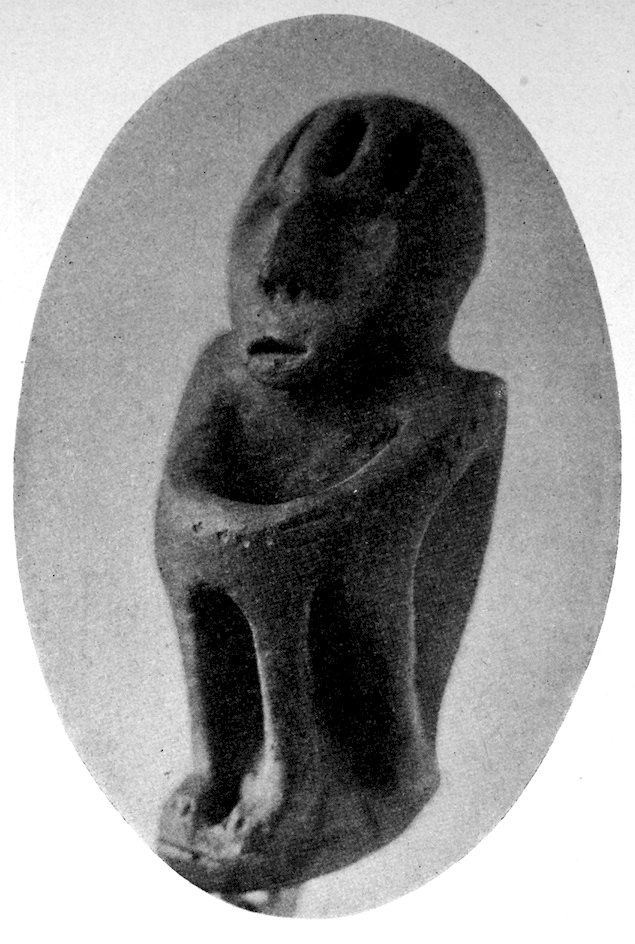
Fig. 492. (S. 4–5.) Collection of W. C. Herriman, Toronto, Ontario, Canada.
Figs. 492 and 493 present two views of a pipe of the ordinary clay material. The bowl is behind the head, passing down the region of the back. The unique feature of this pipe is that when shaken it gives evidence of a hollow sound in the head with several small, hard particles which distinctly rattle. These have never been investigated and their nature is not known.
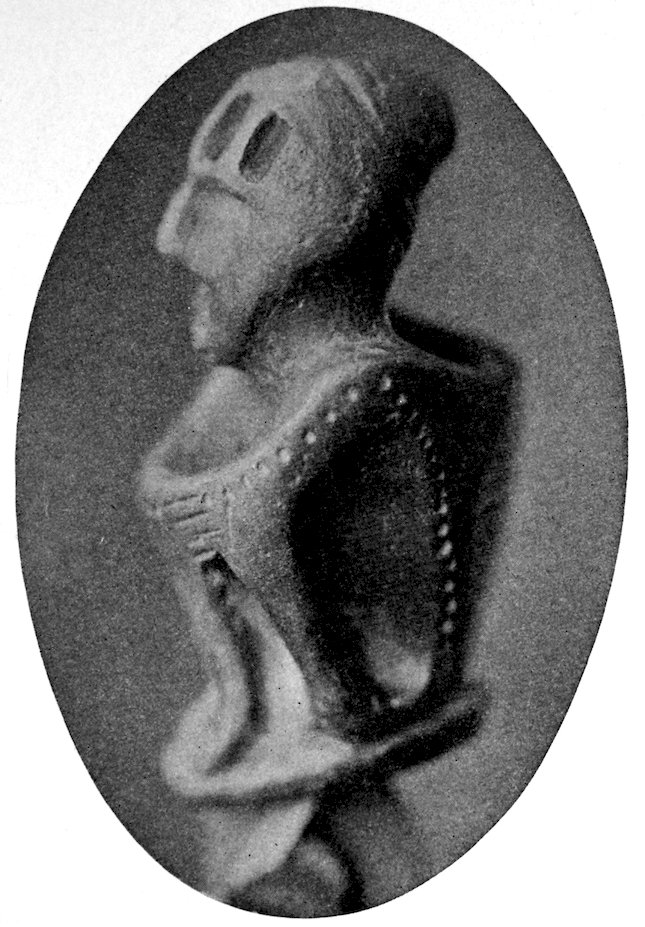
Fig. 493. (S. 4–5.) Side view of Fig. 492.
Fig. 480 is a remarkable carving in graphite slate. This was found by me on the altar of the effigy mound, Hopewell Group, Ross County, Ohio, during the course of explorations, August 1901–March 1902. The pipe represents a woodcock resting on the back of a grotesque fish. The bird is true to life, the fish is not. No pipe found by Squier and Davis in the famous Mound City Group exceeded this in its beautiful artistic lines and skill evinced in manufacture. With this pipe were thousands of pearl beads, copper ear ornaments, obsidian blades, and other remarkable objects, all of which are foreign to Ohio. The pipe, together with the other objects, is exhibited in the Field Museum of Natural History, Chicago.
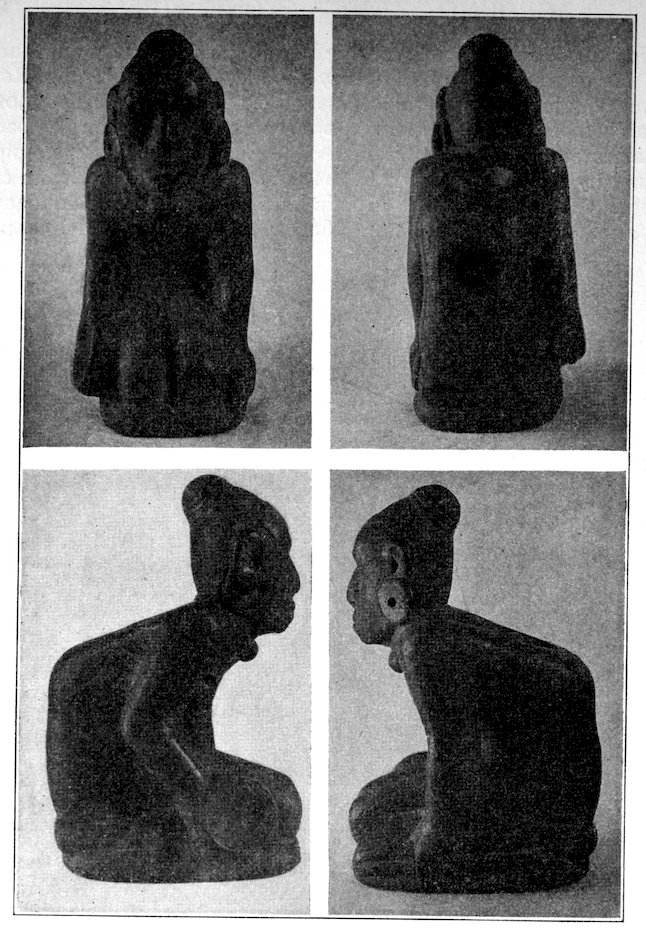
Fig. 494. (S. about 2–7.) Collection of H. M. Whelpley, St. Louis, Mo. Found near Muskogee, Ind. Ter. Color, terra-cotta; size, eight and one half inches high by five and one half inches anterio-posterior, by four and one eighth inches wide; weight, five pounds. The discoidal in the right hand measures one and three fourths by five eighths inches. Each of the two sticks in the left hand are four and one eighth inches long. Earrings, one by three eighths inch; bead under chin, three fourths by three eighths inch.
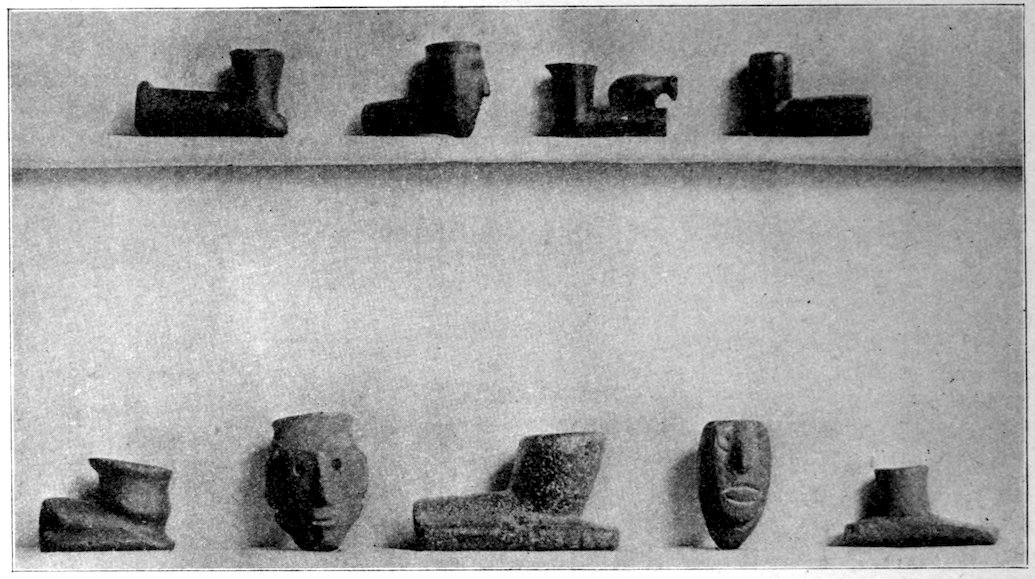
Fig. 495. (S. 1–6.) Collection of W. A. Holmes, Chicago, Illinois.
In Figs. 481 and 481 A, I present front and rear views of an effigy pipe from Wisconsin, now in the Milwaukee Public Museum. This is one of the finest examples of mound pipe found in 88the North. An inspection of the two figures will acquaint readers with the fact that the top and bottom of the pipe represent two kinds of reptilia. Prof. S. A. Barrett, who kindly furnished this and some other photographs for me, explains this peculiarity as follows:
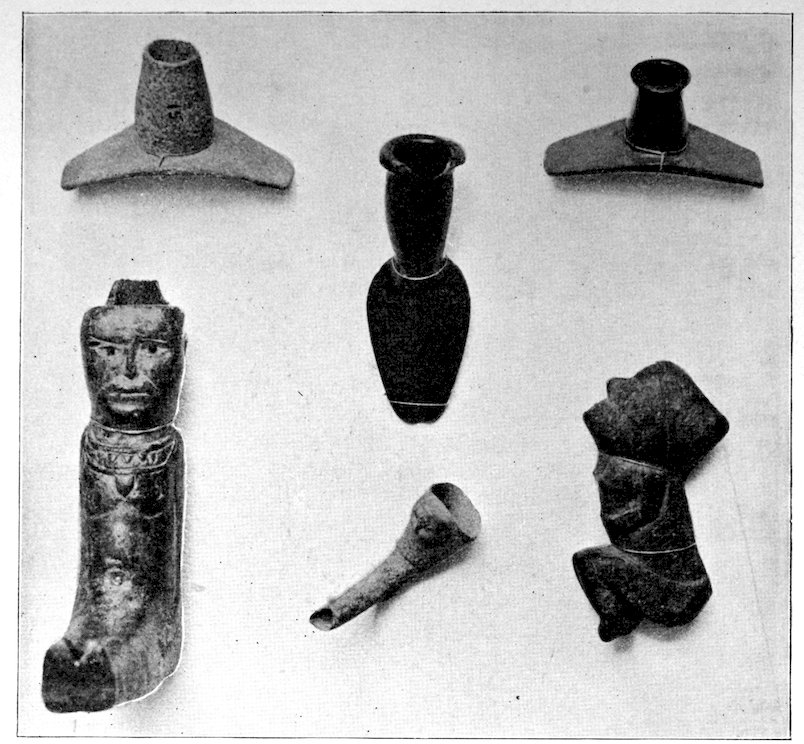
Fig. 496. (S. 1–2.) Collection of Leslie W. Hills, Fort Wayne, Indiana. The effigy to the left is a remarkable and interesting pipe, of hard black stone, and was found in Ohio.
“In sending you the information concerning specimens, there is one point that I overlooked, and that is the difference between the carapace and the plastron of the turtle pipe. It is an interesting fact that the carapace of this specimen is that of a terrapin, while the plastron is carved after the fashion of the snapping turtle.”
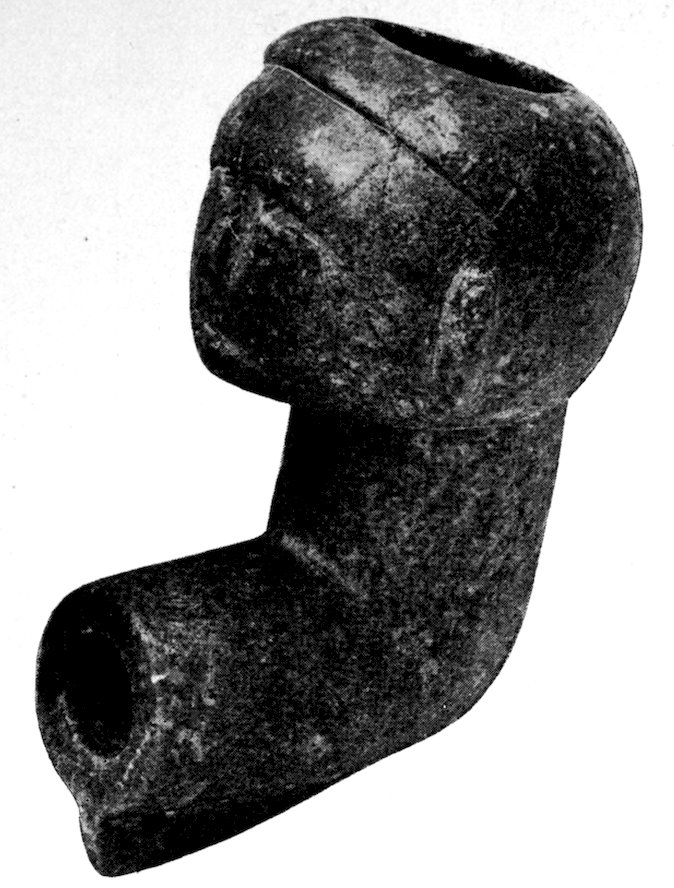
Fig. 497. (S. 1–1.) Portrait pipe. Collection of G. A. West, Milwaukee, Wisconsin. This figure was dug from a grave at East Jacksonport, Door County, Wisconsin, over which was an old pine stump 30 inches in diameter, by Mr. L. K. Erkskin, from whom it was secured by Mr. W. H. Elkey, for Mr. G. A. West. This pipe is of compact flinty limestone and most skillfully carved into a resemblance of the head and face of a frowning Indian. Both bowl and stem excavations are conical in shape, and were evidently made with stone drills.
I have referred in a number of places to smoking as a ceremony. In addition to being a rite, it was always practiced for medicinal purposes. Not only did the Indians in ancient times inhale fumes in order to alleviate distress, but the white people did likewise. Mr. McGuire, in his work which I have previously quoted, makes this perfectly clear and cites numerous instances as to the supposed curative property of tobacco. I quote one of his paragraphs[16] concerning the truly remarkable material gathered by Mr. Bragg:—

Fig. 498. (S. 1–2.) Portrait pipe. Described by G. A. West, Milwaukee, Wisconsin. This figure “is of dark sandstone, 10 inches long, with a portion of its bowl broken away. This remarkable pipe was found many years ago near Fort Atkinson, Jefferson County, Wisconsin, and is now in a private collection in the State of New Hampshire. It is a calumet but not of the Siouan type. The writer is informed that this specimen is unpolished, but has the appearance of great age, contains no metal tool-marks, and shows much use.”
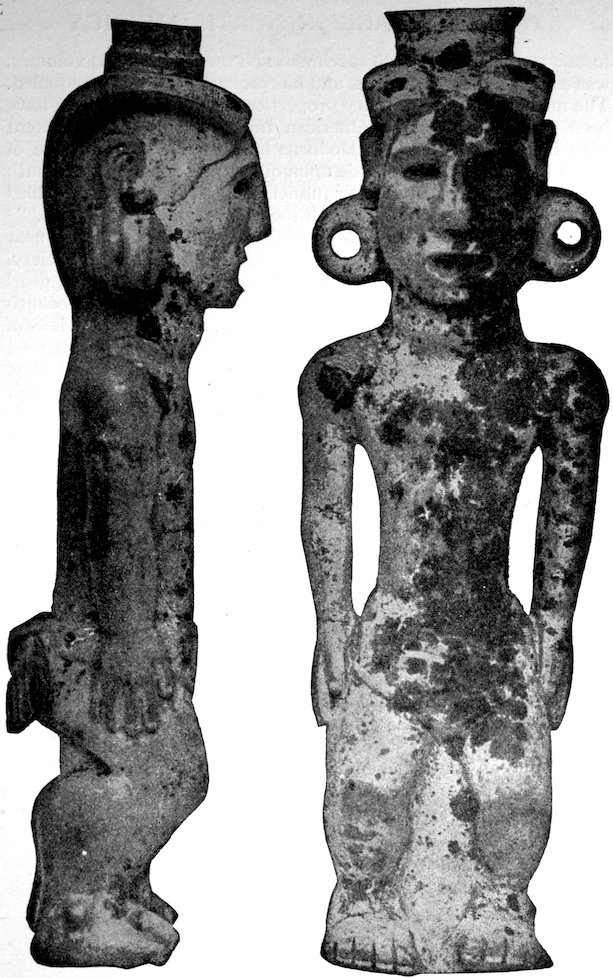
Fig. 499. (S. 1–1.) Collection of Professor W. C. Mills, Columbus, Ohio.
92“Bragg’s collection of pipes, now in the British Museum, made from all parts of the world, and his books relating to tobacco, the former consisting of 13,000 specimens and the latter of 500 volumes, was as rich as it was curious, and has probably never been equaled. The medicinal and imaginary properties attaching to tobacco have been marked among the American Indians to no greater extent than in Europe. Rembert Dodoens in 1578 said ‘the perfume of dryed leaves, he sayd he layde upon quick coles taken in the mouth through the pipe of a funnel or tunnel, helpeth such as are troubled with shortness of winde and fetch their breath thicke and often.’”[17]
In 1901 Professor W. C. Mills explored the Adena Mound near Chillicothe for the Ohio State Archæological and Historical Society. One of the skeletons, aside from having arrow-heads, knives, pearl and bone beads and other relics, had near the left hand the beautiful effigy pipe shown in Fig. 499. I present front and side views of this pipe, and quote from Professor Mills’s Report as follows:—
“This pipe is eight inches in length, and is composed of clay, resembling the fire-clay found in Scioto County, which is further south but in the same valley. The pipe is tubular in form, the hole extending the entire length of the body; the large opening is between the feet, having a hole five eighths inch in diameter. Within an inch of the top of the head it begins to narrow down to a very small aperture one eighth inch in diameter. The mouthpiece formed a part of the head-dress of the image. The front part of the pipe is of a light gray in color while the back part is of a brick red. The specimen is covered with a deposit of iron ore; this appears in small blotches over the entire surface of the specimen, the one side of the face and body being more densely covered with it than the other parts of the pipe.
“The effigy represents the human form in the nude state with the exception of the covering around the loins; this covering extends round the body and is tied in the back; the ends of the covering hang down and serve as ornaments. On the front of this covering is a serpentine or scroll-like ornamentation. From the lobe of each ear is hung an ear ornament which is quite large in proportion to the ear, and resembles very much the button-shaped copper ornaments which are so frequently found in the mounds of the Scioto Valley.”
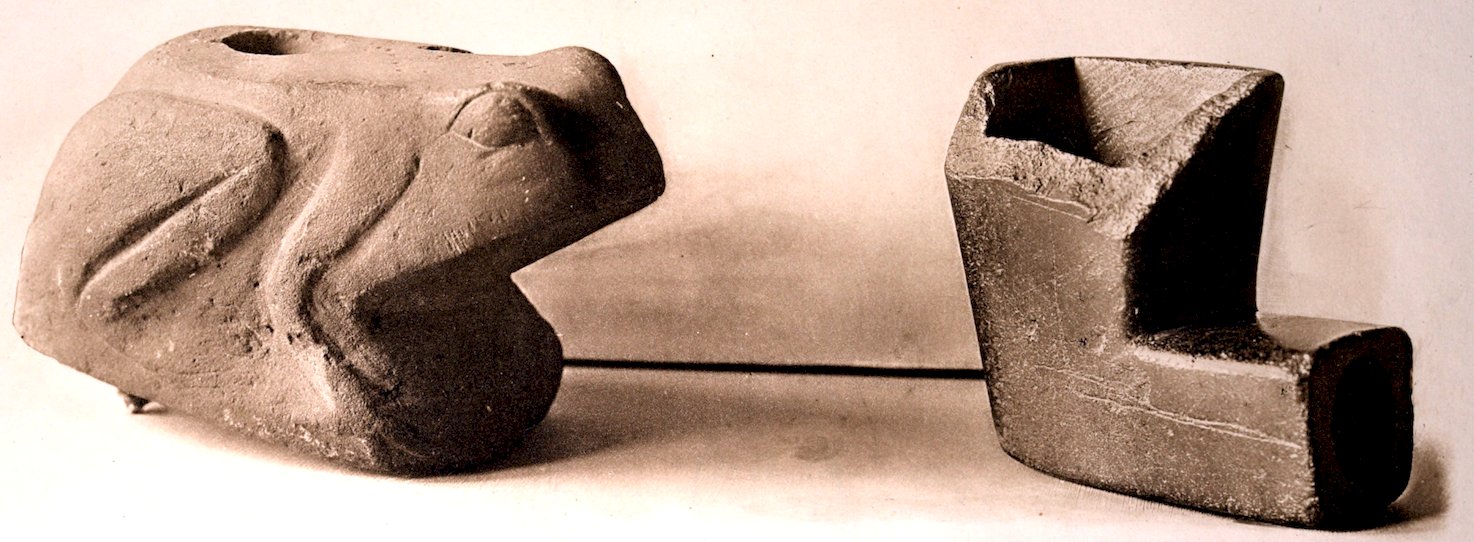
Fig. 500. (S. 1–1.)
Frog pipe, from Tennessee, and rectangular pipe, from Georgia. Both of fine sandstone. From the collection of F. P. Graves, Doe Run, Saint Francois County, Missouri.
Classification of mortars and pestles.
There grew in North America, at the time of its discovery by Columbus, a profusion of seeds, nuts, and roots of various kinds, developing according to climate from northern Canada to southern Arizona. Man found these a valuable addition to his food-supply, and he made use of many of them that we of to-day should consider unpalatable. He procured shell-fish of various kinds both salt and fresh water; he knew the properties of many roots, bulbs, barks, and other plants. With the exception of such molluscs as he ate, and his fresh meat, the greater bulk of his food-supply was in the form of kernels, or grains, or bulbs, or nuts, which must needs be reduced to meal, or stripped of husks, or cracked and broken. To convert the raw food into palatable flour, he used both wooden and stone pestles in flat, oval, or round mortars, the form varying in different parts of the country.
In 1895, the American Antiquarian Society published “The Food of Certain American Indians and Their Method of Preparing It,” by Professor Lucien Carr. Mr. Carr was long Assistant Curator of the Peabody Museum at Cambridge, and his research into historic Indian affairs is well known. I quote a few paragraphs from Mr. Carr:—
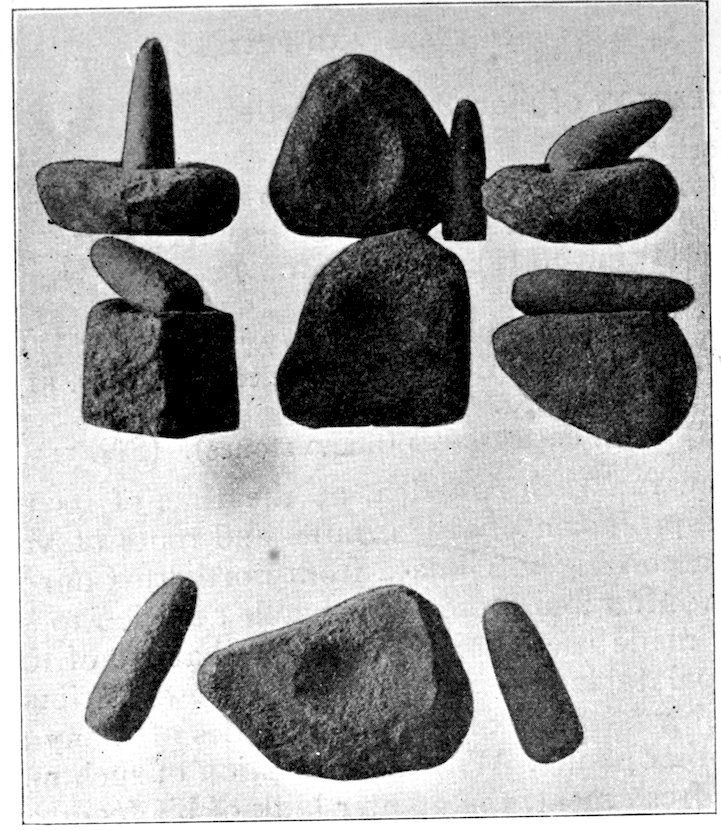
Fig. 501. (S. 1–8.) From the collection of Solon McCoy, Mountain Home, Idaho.
“Speaking in a general way, the old chronicler was not far wrong when he told us that the Indian ‘lived on what he got by hunting, fishing, and cultivating the soil.’ Unquestionably, he derived the bulk of his food from these sources, though there were times, and unfortunately they were somewhat frequent, when he was glad to fill out his bill of fare with the fruits, nuts, and edible roots and grasses with which a bountiful Nature supplied him. Dividing all these different articles according to their nature and origin, and beginning with those the production of which is believed to indicate racial progress, we find that corn, beans, and pumpkins were cultivated wherever, within the limits of the United States, they could be grown to advantage. Of these corn was by far the most important; and as it seems to have been the main dependence of all the tribes that lived south of the St. Lawrence and east of the tier of states that line the west bank of the Mississippi, and as the manner of cultivating it and the different ways of cooking it were practically the same everywhere and at all times, we shall confine our remarks to it and to the Indians living within these limits, merely premising 97that much of what is said about it will apply to ‘its sisters,’ as beans and squashes were lovingly termed by the Iroquois.
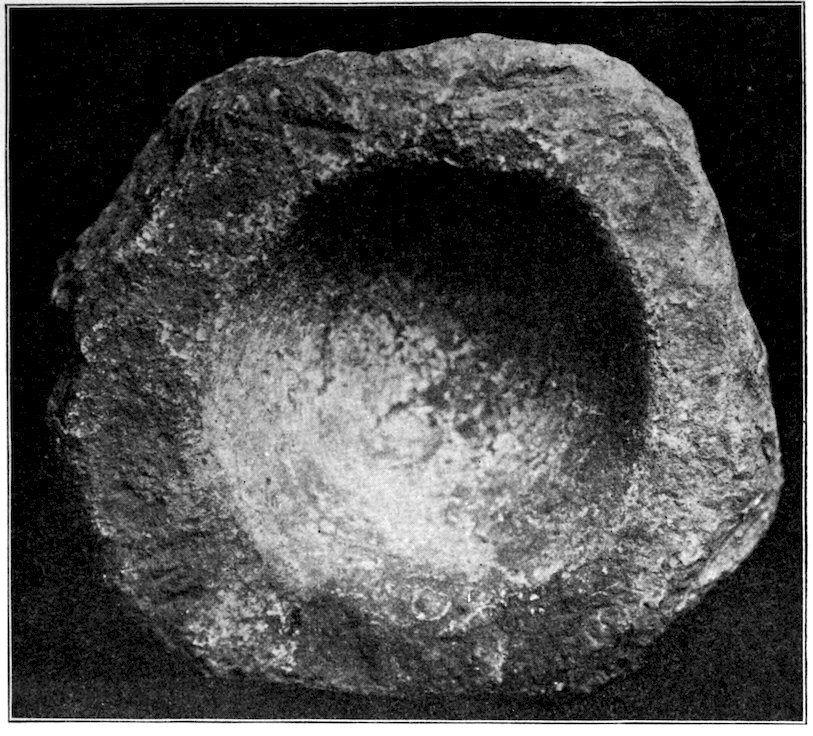
Fig. 502. (S. 1–3.) Ordinary mortar. Collection of Frank L. Grove, Delaware, Ohio.
“And here, at the outset of our investigation, we are met by the fact that modern research has failed to throw a positive light upon the question of its origin. That it was indigenous to America is generally believed, and so, also, the statement that it was first cultivated at some point between the tropics is accepted. Beyond this we have not been able to go; and without entering into a discussion of the subject, it is probably safe to assume that this is as near the truth as we can hope to get. However, be this as it may, there seems to be no doubt that its domestication took place ages ago, for in no other way is it thought possible to account for the vast extent of country over which its use had spread, and for the number of varieties to which it had given rise. Take our own country, for example, and when the whites first landed here, there were found growing, within certain limited areas, a number of different kinds, distinguished one from another, by the length of time they took to ripen, by the size of the ear, by the shape and hardness of the grain, and by the color, though this is said to be accidental.
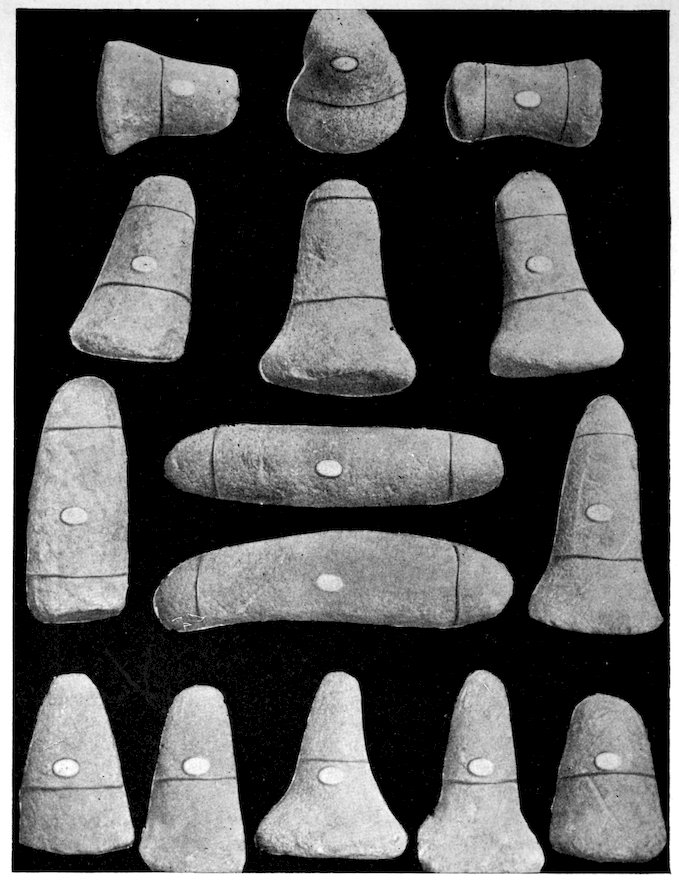
Fig. 503. (S. 1–4.) Pestles, Class “C.” Collection of J. A. Rayner, Piqua, Ohio.

Fig. 504. (S. 1–5.) Collection of W. A. Holmes, Chicago, Illinois.
“In addition to these, which were known to the whites as hominy corn, bread corn, and six-weeks corn, there was still another sort, called by the French blé fleuri, and by ourselves popcorn, of which the Indians were very fond, and which they served up to those of their guests whom they wished to honor. With so many kinds, and planting them at different times during the spring and early summer, they not only had successive crops, which they ate green as long as the season lasted, but they also raised enough for winter use, and, not unfrequently, had some to spare to their needy neighbors, white as well as red. Indeed, their pedlers made long trips for the purpose of exchanging their surplus corn for skins and anything else that they needed; and but for the supplies which the Pilgrim fathers, and we may add the settlers at Jamestown and New Orleans, ‘obtained from the Indians willingly or through force,’ it is probable, as a recent writer suggests,’that there would have been but few if any of their descendants left to write their histories and sing their praises.’”
The cultivation of corn in the United States was widespread. De Soto, Coronado, and other early explorers in their wanderings, as well as our military expeditions of the French and Indian War, the wars of the Revolution and of 1812, found large corn-fields wherever the Indian population was thickest.
In addition to corn, which is placed first, the Indians gathered wild rice in the North and koonti and tuckahoe in the South. Of these roots, it is stated: “It grew like a flagge, in the marshes, and when made into 100bread had the ‘taste of potatoes.’” There were also great stores of dried meat and fish put up in every village, quantities of maple sugar, squashes, beans, pumpkins, and an endless variety of roots and nuts.
We now know that there are seventeen separate foods for which civilization is indebted to the Indian.
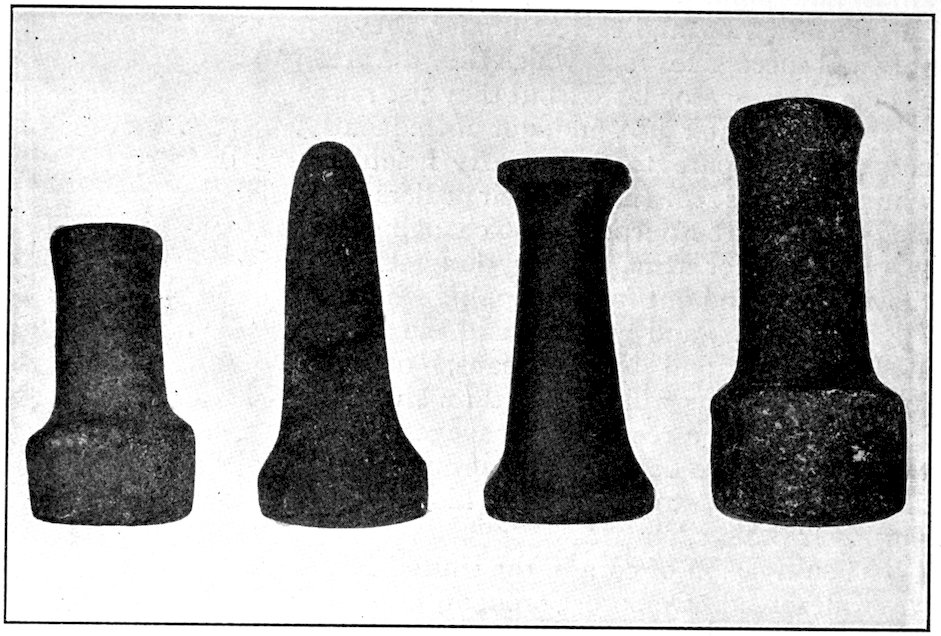
Fig. 504 A. (S. 1–4.) From the collection of B. H. Young, Louisville, Kentucky. Rare forms of pestles from the Cumberland and Tennessee valleys.
What we should consider the simplest form of mortar is a question. Of course, the mortar, rather than the pestle, is the essential thing. Man must have something in which to grind or crush his food, and it did not matter to him whether the receptacle was wood, stone, or leather so long as it served the purpose, and it was of no consequence to him whether his pestle was a round stone, an oval, an elongated pestle or bell-shaped, or a flat mano stone. What he wished to accomplish, the reduction of grains or nuts or chunks of dried beef to flour, was of primary importance, and the agencies employed to obtain this result were secondary. Of course, he may have used elaborately ornamented and artistically worked pestles and mortars in the preparation of sacred meal; as to that I do not know. What I am talking about now is the common form of mortar and pestle.
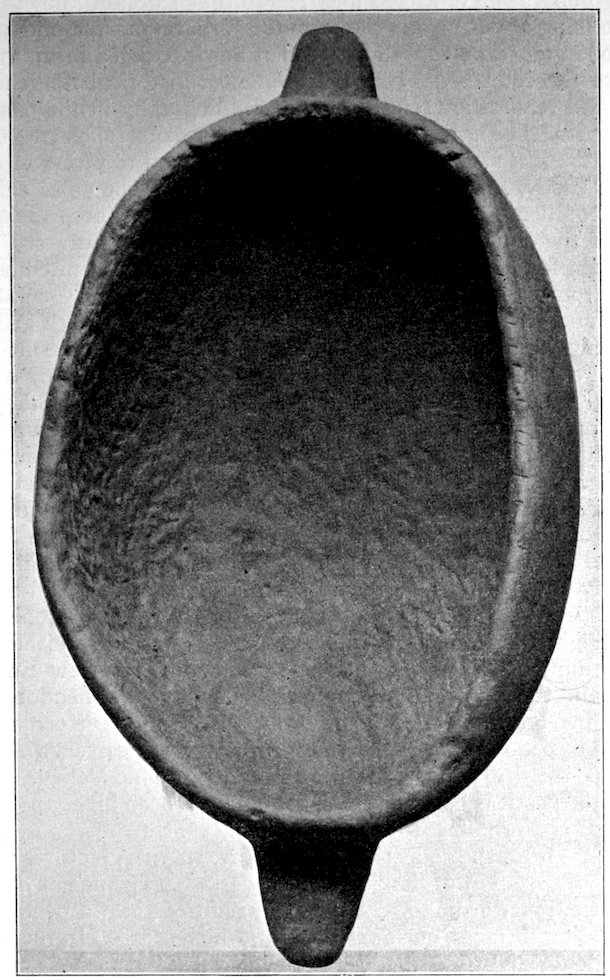
Fig. 505. (S. 1–4.) Cast of a steatite bowl. Found near Lynn. Collection of Salem Museum. Salem, Massachusetts.
102Wooden mortars, as well as wooden bowls, existed in many portions of the country. There are abundant historical references to these, and readers are referred to the Bibliography in this instance as in others. The natives smoothed the surface of a fallen tree-trunk, or the top of a stump, and, by constant friction of either stone or wooden pestle, soon wore out a mortar cavity. They also selected glacial boulders, convenient points of bluffs, ledges, etc., in various parts of the country, and worked out stationary mortars. These have been found in at least a hundred places in the United States. Aside from the stationary mortars, there were many small flat stones, and some large stones of convenient size on which grinding is evident for a considerable length of time, and as a result a depression varying from a few inches to a foot or more in depth occurs.
Paint stones are simply small mortars. Sometimes they are highly polished and well worked out, but usually they are rude and may be classed as small mortars, as they are receptacles for grinding. Fig. 501, from the collection of Mr. Solon McCoy of Mountain Home, Idaho, illustrates seven short pestles and seven small mortars, size one eighth, such as are common in the Southwest and not infrequent in most portions of the East. This illustration may stand as typical for all such forms in the United States. The pestles used in them were more properly rubbing-stones; the end is slightly flattened, more often they are round at either end. Great numbers of short oval pestles occur in the New England States, and the South. Fig. 504, from Mr. Holmes’s collection, illustrates three stone pestles; the one to the left may have come from any one of a dozen states, as the form is the same everywhere; to the right, the typical bell-shaped pestles of the Ohio Valley. In the centre, the pestle is bell-shaped, short, and has been highly polished, and there is a prominent depression in the centre.
Fig. 503, from the collection of Mr. J. A. Rayner, pictures fifteen pestles; all save four of the bell-shaped variety. The one at the top, the centre, is an ordinary cone, to the right of that, a pestle with two grinding surfaces, one at either end, which is rare. In the centre are two long, slightly curved objects which may be pestles or rollers used in preparing clay for the making of pottery. The variation in the bell pestle is from an ordinary plain form to that having a narrow top and an unusually broad, flat base. The pestles shown 103at the right in Fig. 514 are highly specialized forms from the Northwest. There are similar types in the Ohio Valley, as shown in Fig. 504 A, Colonel Young’s collection. But as a rule the natives of the Mississippi Valley paid little attention to artistic development of domestic tools, such as pestles and mortars. Fig. 502 is the ordinary large stone mortar common in the eastern United States. It ranges from a small paint-cup in which a muller no larger than one’s thumb was worked, to stationary mortars in glacial boulders, so large that they cannot be moved. Fig. 507 presents three mortars of lava, and some flat mortars of trap rock. These are from Mr. G. B. Abbott’s collection, Corning, California. The stones used on these are flat, or oval water-worn stones and not finished, like mano stones common to the Cliff-Dweller country.

Fig. 506. (S. 1–4.) Soapstone dish. From the Peabody Museum collection, Salem, Massachusetts.
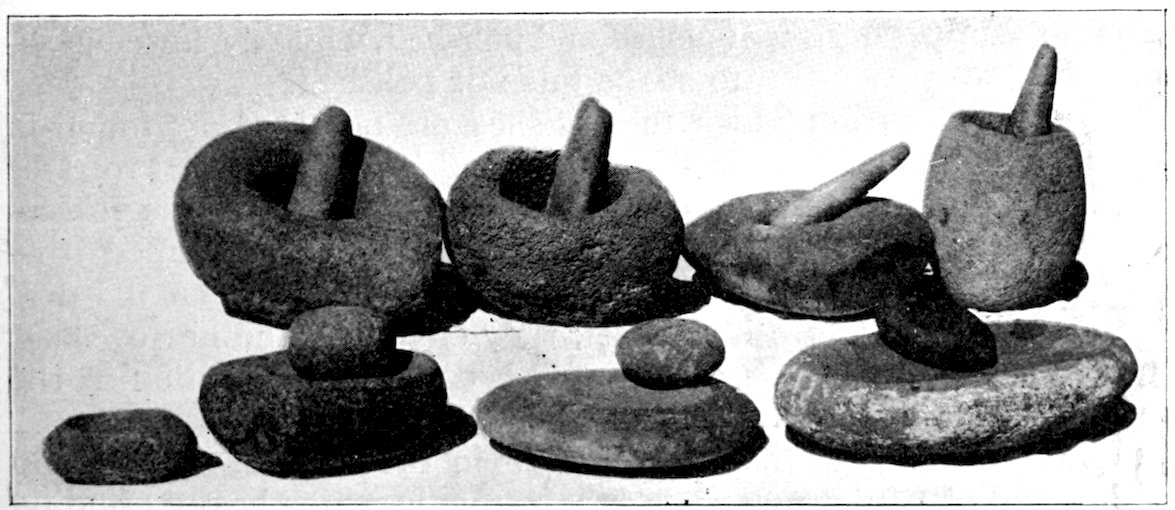
Fig. 507. (S. 1–9.) From the collection of G. B. Abbott, Corning, California.
104In the East and the South we have steatite or soapstone mortars, cooking-pots, dishes, bowls, and sometimes dippers. Most of the larger museums have examples of these and particularly in highly finished stone dishes. Fig. 505 is a large, thin stone dish from the Peabody Museum, Salem, which was found near Lynn. Fig. 508 presents four soapstone dishes, two of them dipper-like in form. The three upper ones are finished and polished, while the lower specimen has been pecked into shape but not polished.
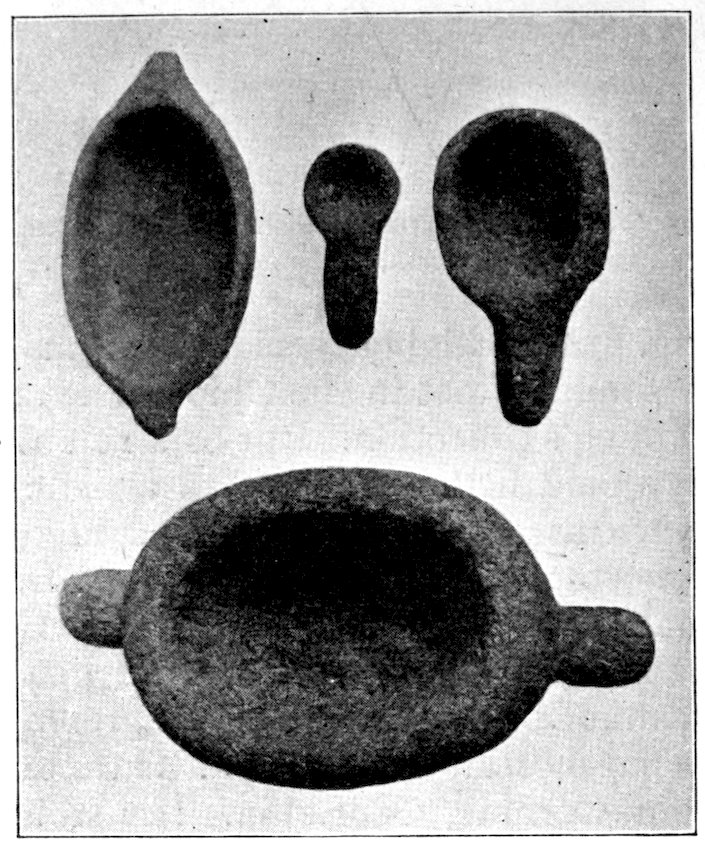
Fig. 508. (S. about 1–5.) Soapstone bowls. Collection of Peabody Museum, Cambridge, Massachusetts.
The quarries from which these dishes are obtained are found in New England, in the Potomac region, and in the South. Professor Holmes made them the subject of study. It seems that the natives worked around the mass they wished to remove and shaped it in situ, cutting a deep trench entirely around it, and when the dish had been brought into high relief, they cut away the narrow base and removed it. Numbers of unfinished dishes in position in the original ledge have been reported.
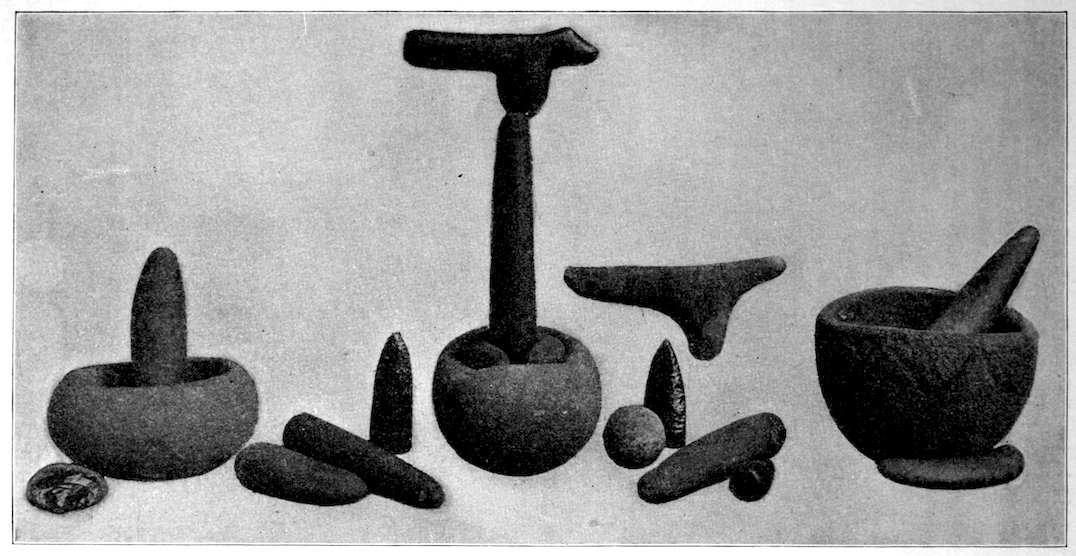
Fig. 509. (S. 1–6.) A portion of the collection of J. G. Crawford, Albany, Oregon. The peculiar objects above the central mortar are interesting. Similar ones have been found in the far Northwest. The purpose of such is at present a mystery. These were found in various portions of Oregon, not far above the mouth of the Columbia River.
106Widespread as was the use of steatite in the East for mortars and dishes and of harder materials for mortars in which heavy grinding was to be done, it is in the Southwest, California, and the Rocky Mountains where more millstones are found than elsewhere in the United States. The Southwestern metate (see Fig. 515) is well known to students of archæology. All the museums have on exhibition hundreds of these, and we have in our museum at Andover, a hundred or more of them. They vary from small slabs, presenting a flat surface, to deeply worn rectangular and square specimens, some of which are two feet in breadth and will weigh a hundred pounds. These were in common use about the pueblos and cliff-houses. In our museum and elsewhere there are metates that have seen service for so many years that they are worn entirely through.
On these metates a flat stone, known as a mano stone, was used, taking the place of the Eastern roller or bell-pestle. It was pushed back and forth with the hand. In the Southwest, California, and Mexico some of the metates are highly ornamented, and have legs, which raised the body of the stone several inches from the ground. When I visited the Chaco Group, in 1897, I saw several hundred metates scattered about on the surface near the ruins. In explorations near Phœnix, Arizona, in November, 1897, to June, 1898, I collected more than ninety good metates. In Kelley Cavern, the Ozark Mountains, which was explored by Dr. Charles Peabody and myself in May, 1908, we found thirty-seven stone mills in one cave alone, and that cavern was no more than two hundred feet across the front and about a hundred feet deep.
Mr. J. B. Lewis of Petaluma, California, now deceased, sent me the photograph of a remarkable collection of California mortars. After shipping generous quantities to various scientific institutions in the East, Mr. Lewis still had several hundred in his possession. He constructed an outdoor cabinet of plank and placed thereon a portion of his collection. Fig. 511 illustrates a number of his specimens. It will be observed, by comparison with the figure of Mr. Lewis who is standing at the right of his cabinet, that the largest mortars at the bottom are not upright but are placed at an angle. These mortars range from two feet in diameter to those about a foot high. Many of these weigh as much as seventy-five or a hundred pounds each. The smaller mortars are on the upper rows.
Mr. Lewis, during the last two years of his life, wrote me many interesting letters regarding the character of the various stone objects found in his region. He was a keen observer, and during his fifty years of residence at Petaluma he became thoroughly familiar with the various prehistoric sites in that part of California. While I make substantial quotations from these letters, I change his language slightly:—
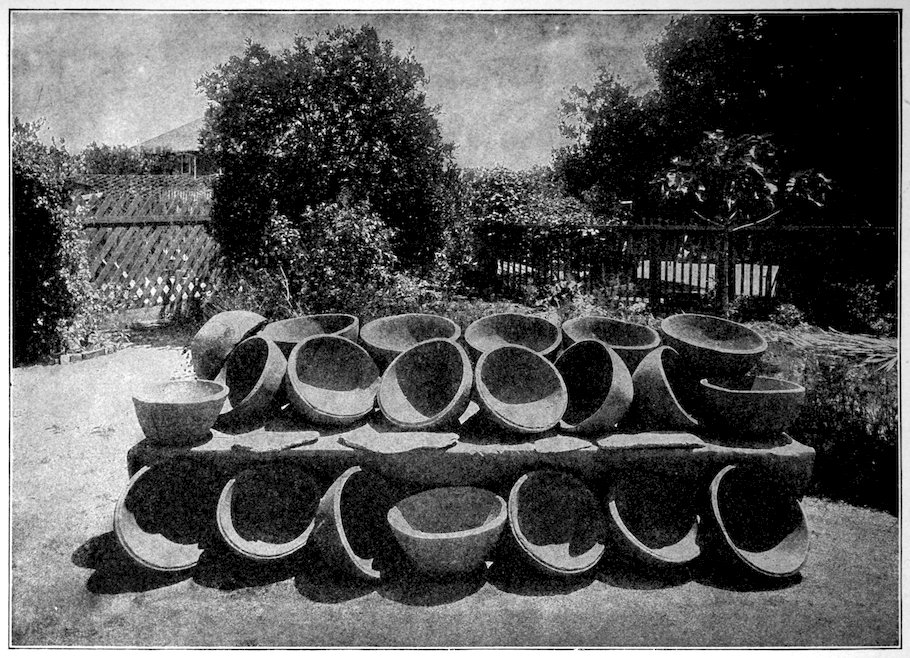
Fig. 510. (S. varying.) Stone bowls from a cache near San Fernando, California.
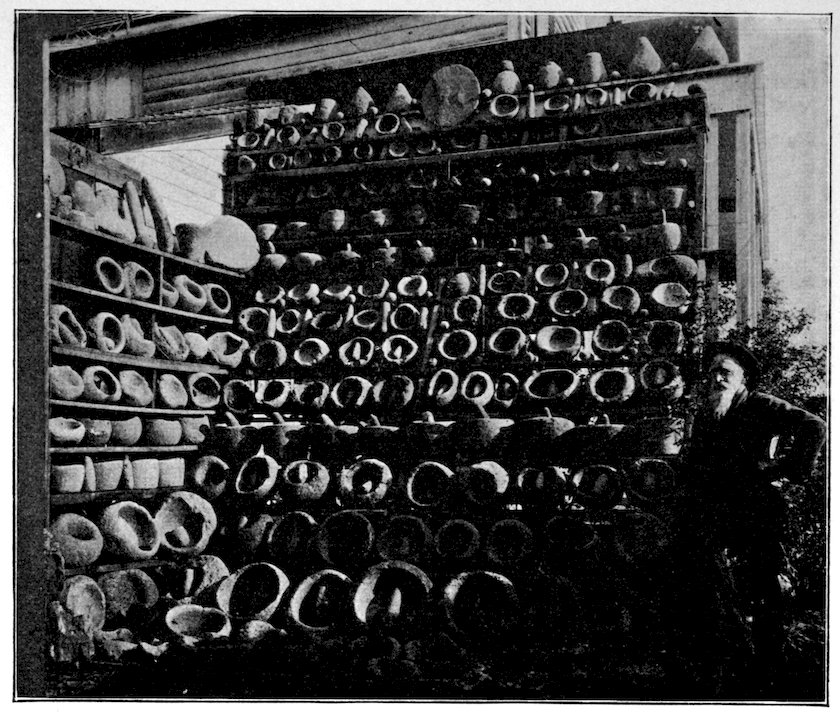
Fig. 511. Collection of J. B. Lewis, Petaluma, California. Mr. Lewis, who stands at the right, was fifty years in making this collection.
“On Sonoma Mountain, seven miles from Petaluma, is a depression in the hills in which the winter rains are collected, forming a large lake or lagoon of two hundred acres, called by the Indians Lagoon La Jara, formerly covered with a tall growth of tules, the home of geese and ducks and blackbirds in their season. Some forty years since, it was drained and brought under cultivation. On ploughing, stones were brought to light called ‘ceremonial sinkers,’ plumbs, etc. As time passes fewer are found, until now only three or four a year.”
Mr. Lewis, who lived within two miles of the lake, procured half 109of the objects thus discovered. Many of them are shown in Fig. 383. Another collector has secured four hundred. In the summer the lagoon was dry or nearly so. There was neither inlet nor outlet and no fish lived in its waters. Therefore the stones were not made use of as sinkers.
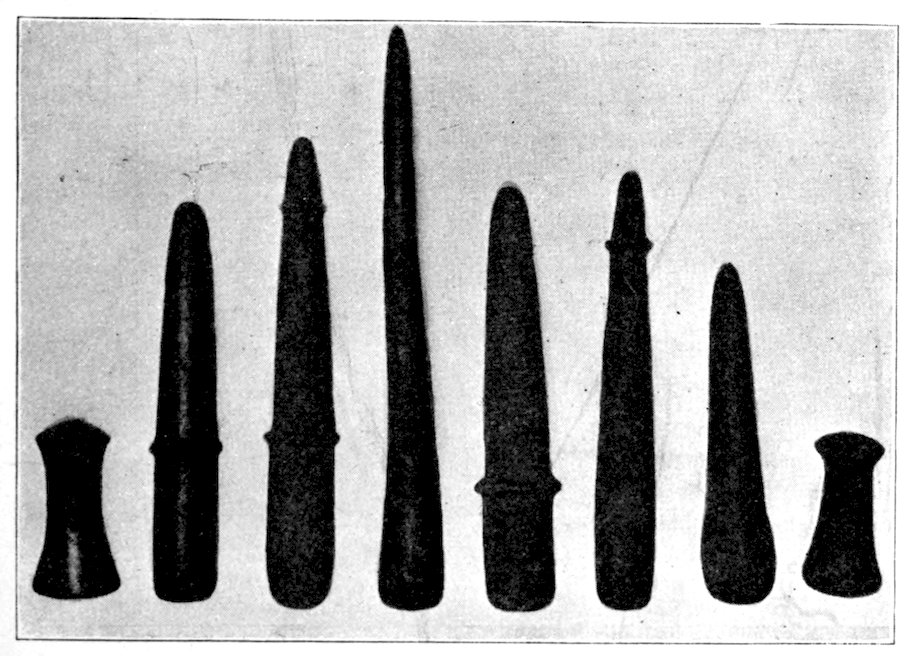
Fig. 512. (S. 1–10.) From the collection of H. K. Deisher, Kutztown, Pennsylvania.

Fig. 513. (S. 1–4.) Long effigy pestle. Butler farm, northwest part of Turkey Hill, Ipswich. From the collection of Peabody Museum, Salem, Massachusetts.
“When I came here in the early fifties, there used large numbers of Indians go by my ranch in the fall, down to the creek to catch sturgeon and dry them, and they always went back by the way of the lagoon and stayed a day or two and had some kind of a pow-wow. After the lagoon was drained, they never came back.”
Mr. Lewis, on arrival in California, heard that a numerous tribe living near Petaluma was practically exterminated by some contagious disease. He believed that the Indians returning annually to hold ceremonies at the lagoon belonged to this tribe.
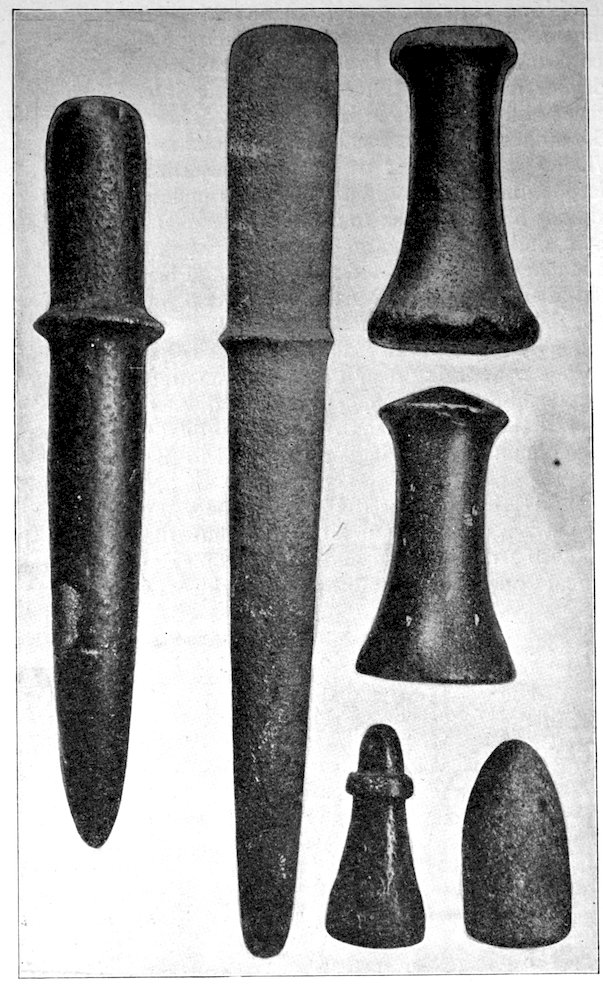
Fig. 514. (S. 1–4.) From the collection of Beloit College, Beloit, Wisconsin.
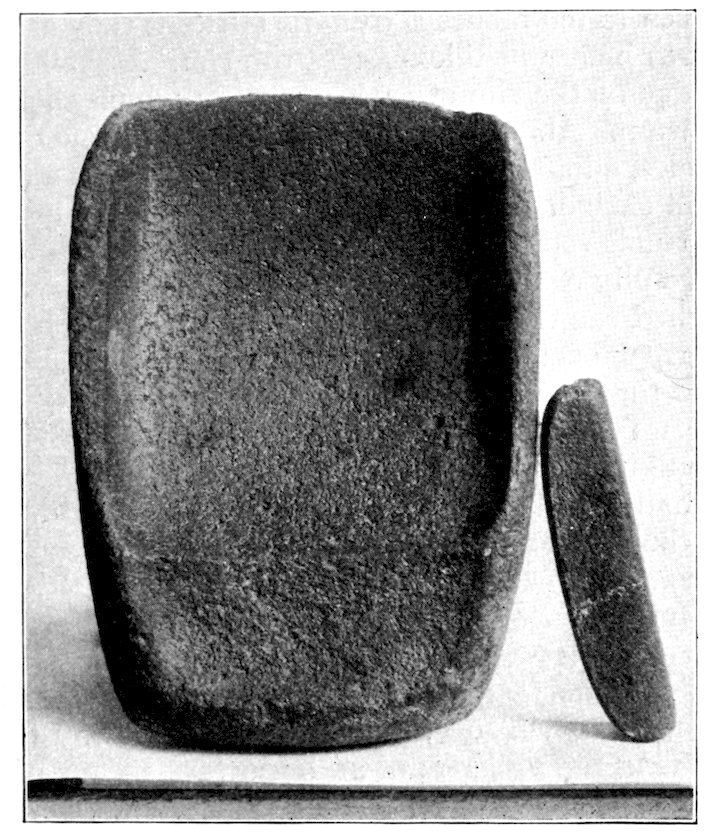
Fig. 515. (S. 1–6.) From the collection of W. A. Holmes, Chicago, Illinois.
It is interesting to note that during the years of Mr. Lewis’s observations he found that the mortars with straight sides and flat bottoms occurred near Sonoma Mountain, where boulders of basalt are common. But in the sandy hills west of Petaluma pointed or urn-shaped mortars, such as are shown on the top shelf of Fig. 511, are found in some numbers. It is clear, he states, that the various types of mortars were confined to certain regions. He knew of only two mortars found in Indian graves. In one instance, where a mortar was buried with an Indian, the skull was pierced by a flint point. Near Santa Rosa, twenty miles from his home, a large spring was cleaned out, and in it were found numerous objects of stone. Mr. Lewis states that he never found a mortar and pestle placed together. They were usually found separate. While the plummets and so-called sinkers are found scattered throughout this region, yet nine tenths of his collection came from the lagoon previously mentioned. Not only has he found mortars upon the surface, but specimens have been dug up from a depth of twelve feet in the ground. The cavities may be large or small, independent of size of mortar. Of 112his entire collection of two hundred and fifty mortars he states that seventy-five had holes in the bottom, seventy-five were more or less broken, fifty were considered fair specimens, and about fifty were perfect. The late Mr. Horatio N. Rust, an observer of much experience in California archæology, described an interesting cache of stone bowls some years ago.[18] I quote his article:—
“Mr. H. W. Hunt, of San Fernando, California, has been tilling for several years the site of an old Indian village, and in doing so has unearthed fragments of not fewer than thirty Indian bowls, but no whole specimen. A short time ago, while ploughing, he encountered a stone, and in digging it out discovered a cache of twenty-one sandstone bowls (see Fig. 510) carefully packed together in a space not exceeding four or five feet. On Mr. Hunt’s invitation I personally examined the contents of this interesting cache, finding the bowls quite symmetrical and all except one in perfect condition.
“These utensils measure about ten inches in greatest diameter, and from seven to ten inches across the bottom; they are about one and one fourth inches in thickness at the rim. A shallow groove is cut in the edge of the rim of each vessel, in which shell beads are set in asphaltum. About midway in the inside of one of the bowls a series of holes, about one fourth of an inch in depth and diameter, is cut, and in each of these holes a shell bead is set in asphaltum. These inset beads represent the only attempt at ornamentation.
“After carefully examining the field in which these vessels were found I reached the conclusion that the thirty broken bowls indicated the former occupancy of the site by a village of considerable size, and that they had been broken by an enemy rather than through use. I was led also to the belief that the villagers had been killed and many of their vessels destroyed, but that the predatory enemy had failed to find the cache of bowls, which had been secreted by their owners in fear of such an attack.
“This conclusion was reached in view of the experience gained from the examination of many village-sites in California. On one occasion, at a site south of San Jacinto Mountain, I discovered twenty-five stone mortars, within the radius of a mile, all of which had been broken by violence, evidently by an enemy for the purpose of depriving the villagers of an important means of preparing food. Beside these mortars, I found a slab of green talc, about eight by fifteen inches, and three slabs of sandstone of about the same width and length and one and one fourth inches in thickness. Fragments of similar sandstone slabs have been found near the same site, but no pestles or other artifacts that had not been broken, a circumstance that would seem to indicate that everything had been either stolen or deliberately destroyed.”
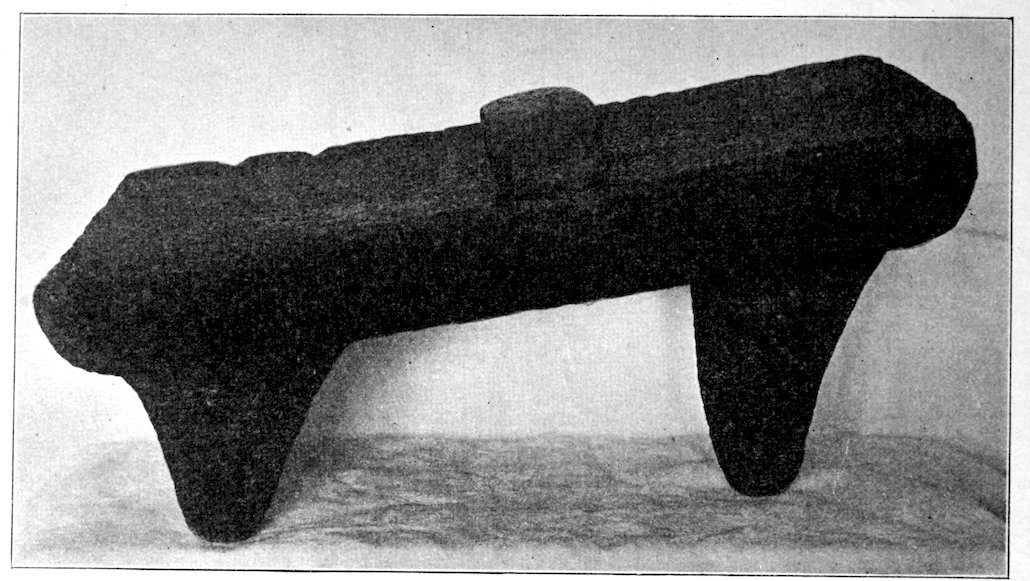
Fig. 516. (S. 1–5.) From the collection of James A. Barr, Stockton, California.

Fig. 517. (S. about 1–6.) Found at Riverside, Rhode Island. Material: greenish black slate. Collection of S. R. Turner, Riverside, Rhode Island.
On the top shelf of Mr. Lewis’s exhibit in Fig. 511 are pointed mortars such as I have placed under classification “C.” Usually these are of volcanic rock, worked down light and rather thin. They were pointed in order that they might be thrust into soft earth, or swampy places where certain reeds and roots abounded, they being held in position by the nature of the soil, while the women ground grain.
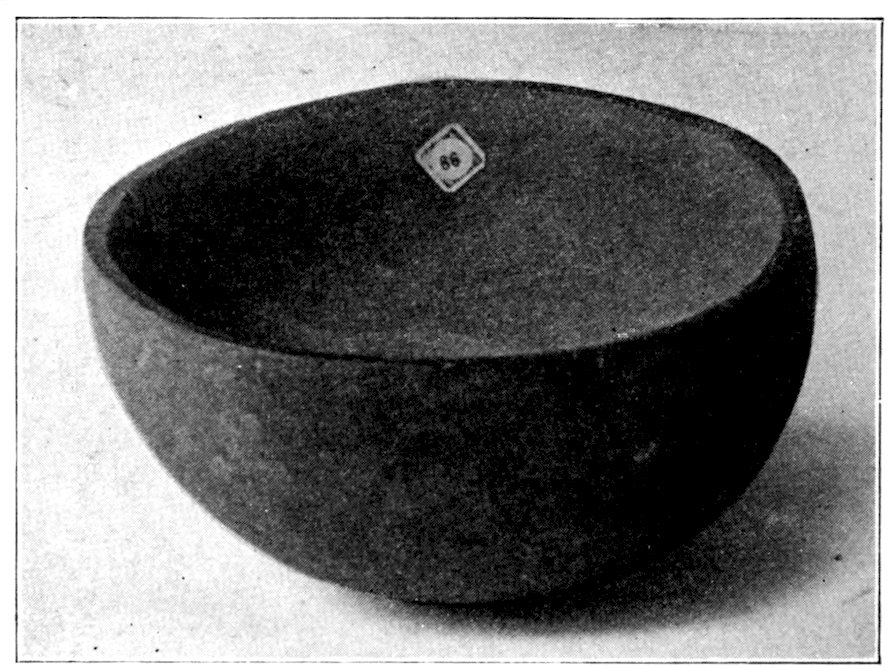
Fig. 518. (S. 1–3.) Stone bowl from the collection of H. S. Hurlbutt, Libertyville, Illinois.
Fig. 517 is a long, beautifully polished, roller pestle, about twenty-six inches in length and owned by Mr. S. R. Turner, Riverside, Rhode Island, and Fig. 513 is a roller pestle with an effigy head carved at one end. It is impossible to determine what this effigy represents. This is from the Salem collection, was found near Ipswich, and is about thirty inches in length.
115Doubtless there are not a few objects classed as mortars which were food receptacles. I have included several in this chapter. The conditions under which some of these more highly finished bowls are found leads us to admit ignorance of their true meaning.
Fig. 518 is a delicate stone bowl from Illinois; Fig. 519 is a limestone bowl, shown one third size. This was found in the oblong mound of the Hopewell Group in 1901, by our survey. Neither of these specimens is to be classed as a mortar. Both are highly finished, and the limestone bowl is an unusual specimen, nothing just like it having been found in America. We cannot imagine that these were made use of to contain ordinary food.
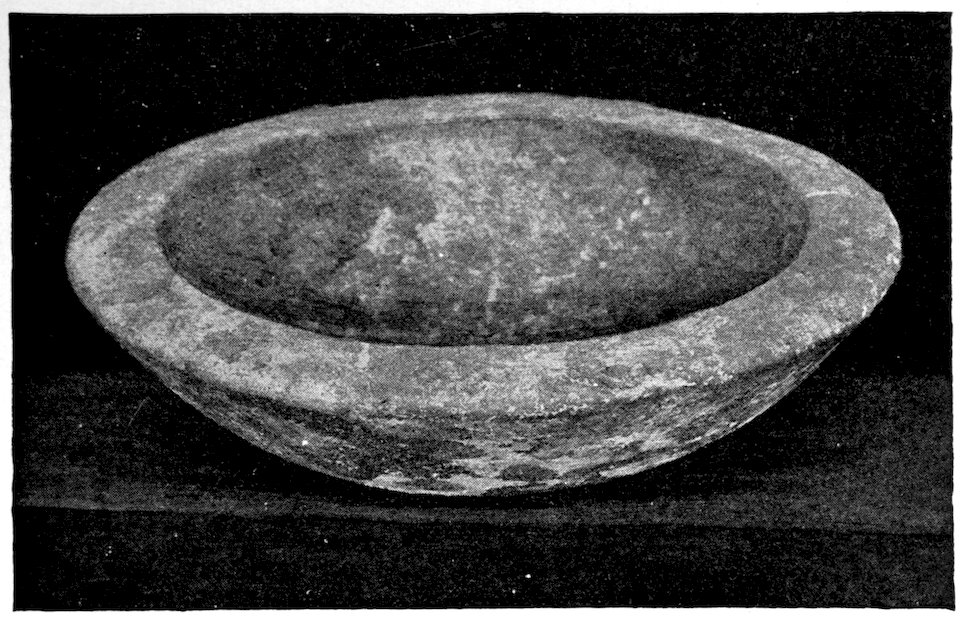
Fig. 519. (S. about 1–3.) Stone bowl of twelve or thirteen pounds weight. Cut from solid limestone. It is somewhat like the type of bowls found on the Pacific Coast, and nothing comparable to it has been discovered in our Ohio Valley mounds.
Mr. C. E. Brown writes of his region:—
“A small number of stone pestles have been found in Wisconsin, and a few hollowed-out stones which appear to have been employed as mortars. The Wisconsin savages employed wooden mortars for crushing their corn and wild rice. These were hollows cut into the side of logs or made of sections of logs hollowed out. Wooden pestles were employed with these. At Lake Winnebago and elsewhere in the Fox River Valley are large boulders upon the tops of which are 116shallow depressions in which the Indians of recent times are known to have ground corn.”

Fig. 519 A. (S. 1–7.) Two are of steatite, and one of limestone. They were found in eastern Kentucky. From the collection of B. H. Young, Louisville, Kentucky.
There are no special conclusions to be reached with reference to mortars and pestles. An inspection, in any public museum, of collections from the Northwest Coast, Pacific Coast, and New England will acquaint the readers with the fact that both the mortar and the pestle were sometimes highly ornamented and worked into fanciful forms. Fig. 516, a remarkable metate from Professor Barr’s collection, is an illustration of the point I have in mind. Metates of this character are common in Mexico and Central America. Those who have studied symbolism see evidences of phallic worship in many of the pestles from California and the Northwest. The range in all tools and receptacles needed in the Indian’s domestic science, is considerable, and covers the entire field from the rough pebble to the effigy pestle, or the metate, almost table-like in character.
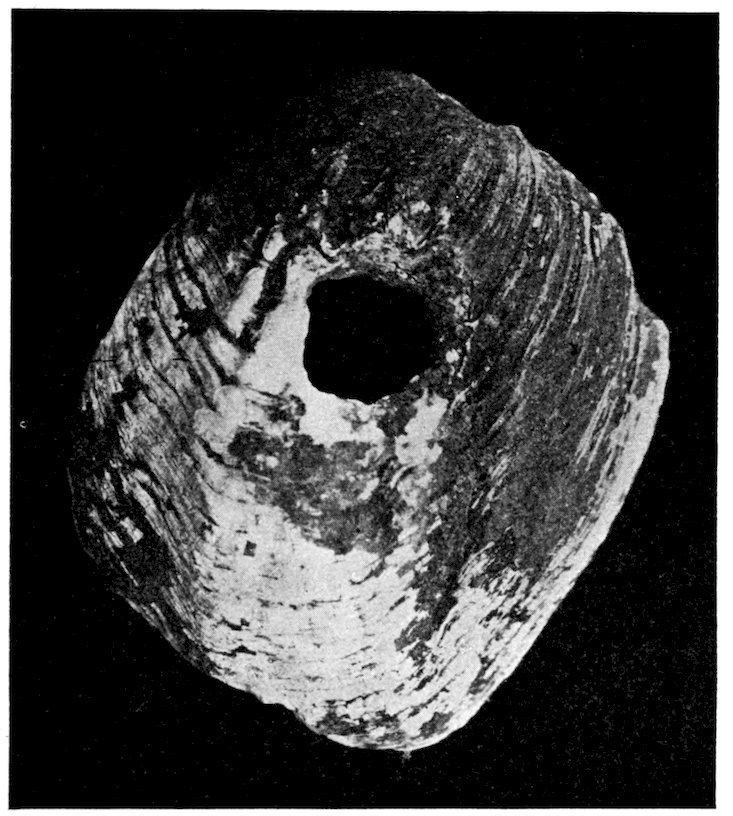
Fig. 520. (S. 1–1.) Shell hoe from the village-site at Fort Ancient, Ohio.
Aboriginal man used shell and bone for a variety of purposes. He frequently made of these substances the same forms that he did in flint or stone, and if one were classifying under use, one would include, under arrow-points, not only those of flint, but of bone and shell as well. The same is true of the beads and of flat ornaments, which may be of shell, or bone, quite as often as of stone. But since we have begun to classify these objects according to material, it is necessary to place under the above head many artifacts that would naturally fall into another subdivision, were we to ignore materials.

Fig. 521. (S. 1–4.) Collection of B. Beasley, Montgomery, Alabama.
Generally throughout North America shells were made use of for ornamentation. Shell beads are as widely distributed as chipped implements and more generally found throughout the United States than pottery. In fact, in most cemeteries, mounds, and cliff-houses where human burials occur, are strings of beads of various kinds and sizes. I might enumerate all the shells found in both fresh water and salt, and made use of by the natives in America, but this is hardly required. However, were I writing more extendedly upon shell objects, it would be necessary to give all the names. These are purposely omitted.
The classification of shell objects is as follows:—
Under No. 1 there are the following subdivisions:—
Under No. 2:
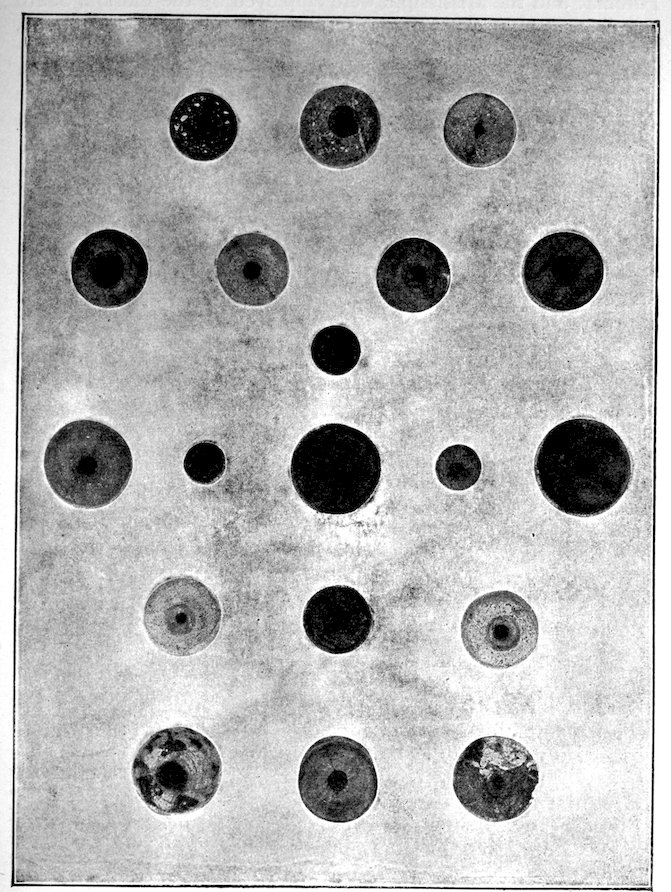
Fig. 521 A. (S. 1–2.) Beads from Trigg County, at mouth of Little River, where it enters the Cumberland River, Kentucky. Bennett H. Young’s collection.
120The larger shells of the Atlantic Coast between the mouth of the Potomac and the Mississippi were employed by the Florida, South Carolina, and Louisiana Indians as digging-tools, heads to clubs, etc.
Mr. Clarence B. Moore, during the course of his extensive explorations in Florida and Alabama, found great quantities of large shells which had been used as domestic tools. It is well known that the shell mounds of Florida equal in size many mounds of earth or stone, farther north.
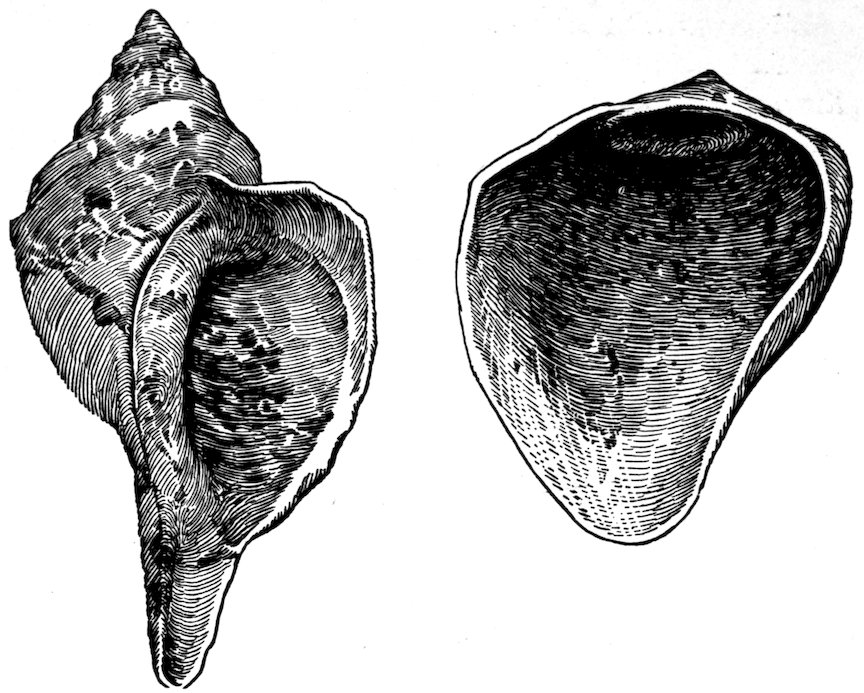
Fig. 522. (S. 1–4.) Large shells, Hopewell Mounds, Ohio.
In the North, the fresh-water unio shells were made general use of as hoes, such as is shown in Fig. 520, which was found at Fort Ancient, Ohio, on the village-site along the banks of the Miami River. It was much easier to perforate these shells and use them as hoes than to work out flint or wooden hoes. Persons who explore ancient sites find them in the ash-pits. The edges are always battered, or worn smooth, proving that they were of importance as agricultural implements.
Short, heavy shells were perforated and fastened to clubs for weapons and digging-tools. Moore describes and illustrates many of these.[19]
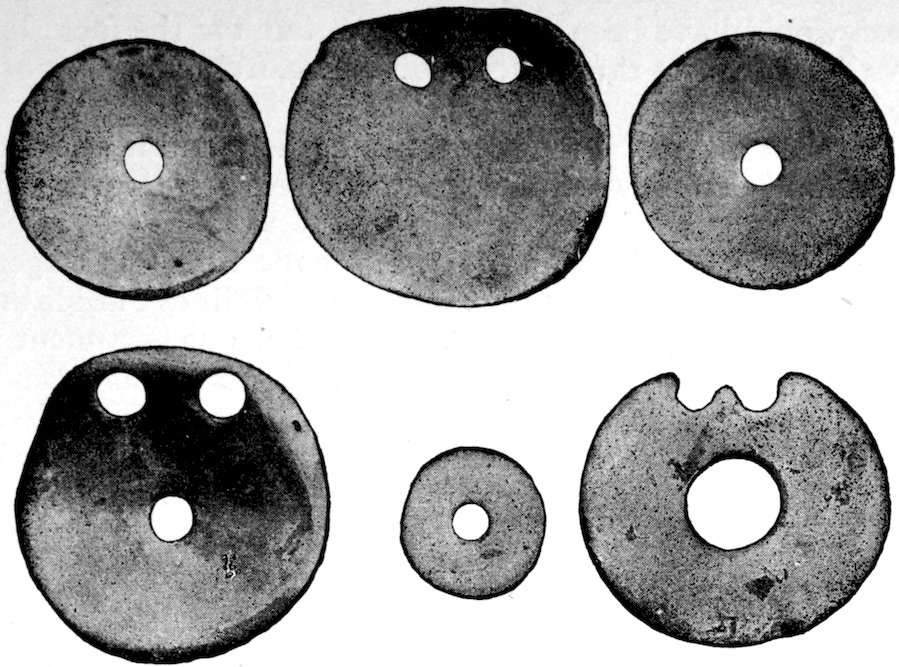
Fig. 523. (S. 1–1.) The typical shell nose and ear ornaments are shown in this illustration. These six were found by W. C. Mills on the Baum Village-Site, Ross County, Ohio.
Bits of shell may have been set in handles, for use as “swords,” after the manner of South Sea natives.
However, while shells were useful for other purposes, yet it was for ornamentation that most of them were used.
Fig. 521, from the collection of Mr. B. Beasley, Montgomery, Alabama, is an illustration of small disc beads in the centre, larger beads about the margin and the string of rude and irregular shell beads enclosing the rectangular exhibit referred to. This is about one fourth size. Shell beads range in size from minute ones as small as those on the black background in the centre of the picture, to others three inches in diameter. Mr. Clarence B. Moore found shell beads as large as walnuts in his Florida and Alabama explorations.
Fig. 521 A shows a number of various shell beads, together with a few stone beads from mounds and graves at the mouth of Little River, Kentucky.
Large numbers of pearl beads, have been found in the altar mounds of the Scioto Valley, Ohio, and in the South. De Soto’s narrative states that the Indians, in 1540–42, possessed many bushels of these pearls. Some were of beautiful form and high lustre. All 122of these would have been very valuable, but for the fact that the natives drilled a hole through each one, thus, from our point of view, ruining them.
It has been estimated that the pearl beads found in the altars of the Hopewell Group, when new and undrilled, were worth upwards of a million dollars.
Practically all shell ornaments were made from the larger unio shells and also from the busycon and pyrula shells of Florida and the Carolinas. Fig. 522 presents one of these shells as yet uncut which was found in a mound at the Hopewell Group and another which has been cut down into the form of a large dipper or drinking-vessel.

Fig. 524. (S. varying.) Shell ornaments from California. Peabody Museum collection, Cambridge, Massachusetts.
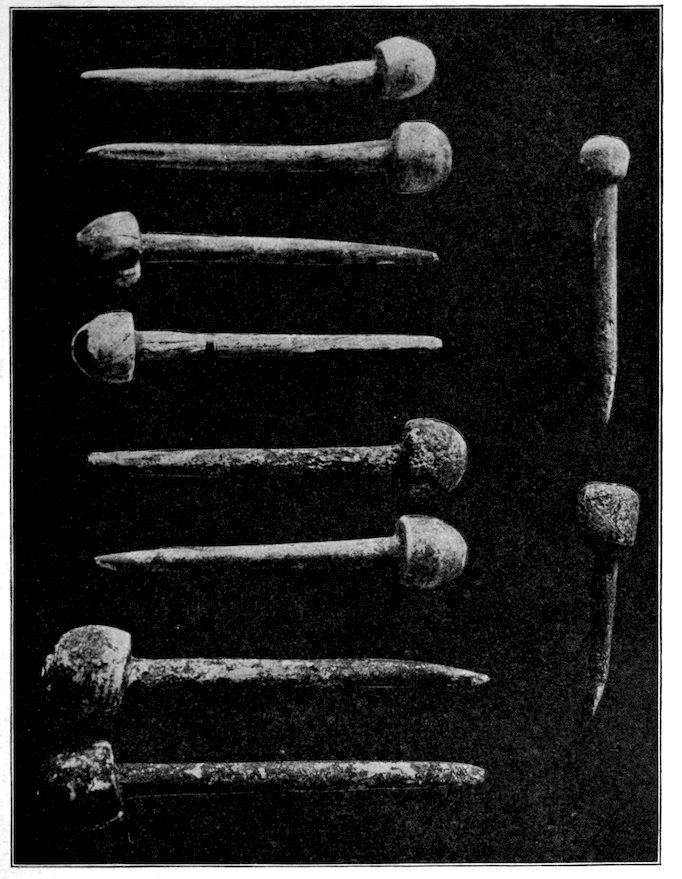
Fig. 525. (S. 3–7.) This figure illustrates some of the shell hairpins, rather rare in Ohio, but frequently found in the South. These are from the collection of Mr. John T. Reeder, Houghton, Michigan, and were found in Alabama and Tennessee. It would be impossible to drill with these, and by common consent they are called hairpins.
The ornamentation on large shell gorgets is complicated and characteristic. I am not sufficiently familiar with California shell gorgets to state whether they are ever engraved. Fig. 529, from Professor Barr’s collection, presents as highly developed gorgets as I have seen from the Pacific Coast. It is in the mounds and stone graves of the Cumberland and Tennessee valleys that the art in engraving or decorating gorgets seems to have reached its height. In Figs. 530, 531, 532, 533. 534, and 535 are presented beautiful specimens 124from the collections of Mr. John T. Reeder, Colonel Young, and the Smithsonian Institution.
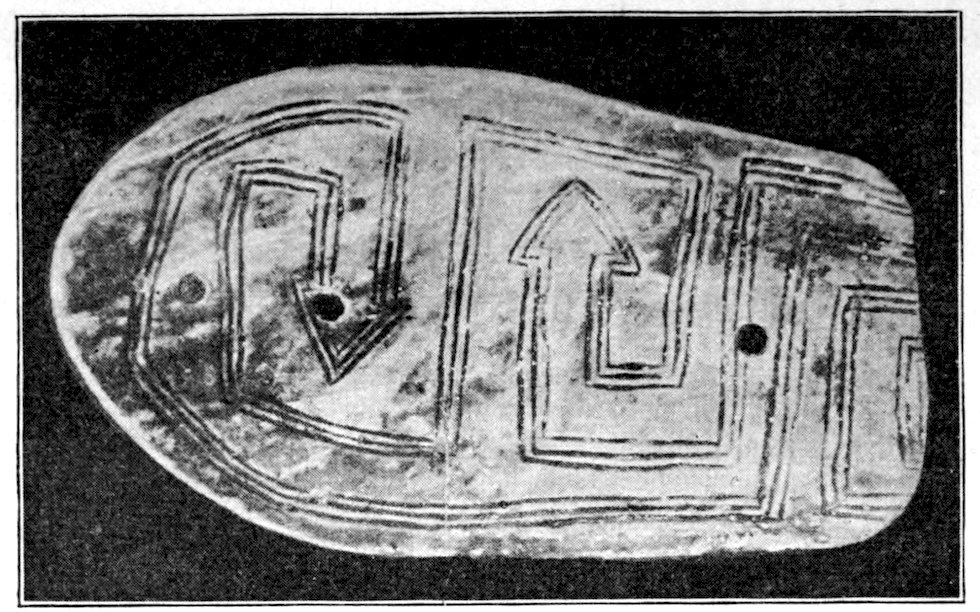
Fig. 526. (S. 1–2.) An engraved shell gorget found in the glacial kame burials in northern Ohio. This is shown half size and is a remarkable specimen. The material is from a large fresh-water unio.
Professor William H. Holmes of the Smithsonian Institution has studied shell objects more than any one else in this country. I quote from his description of Fig. 534:[20]
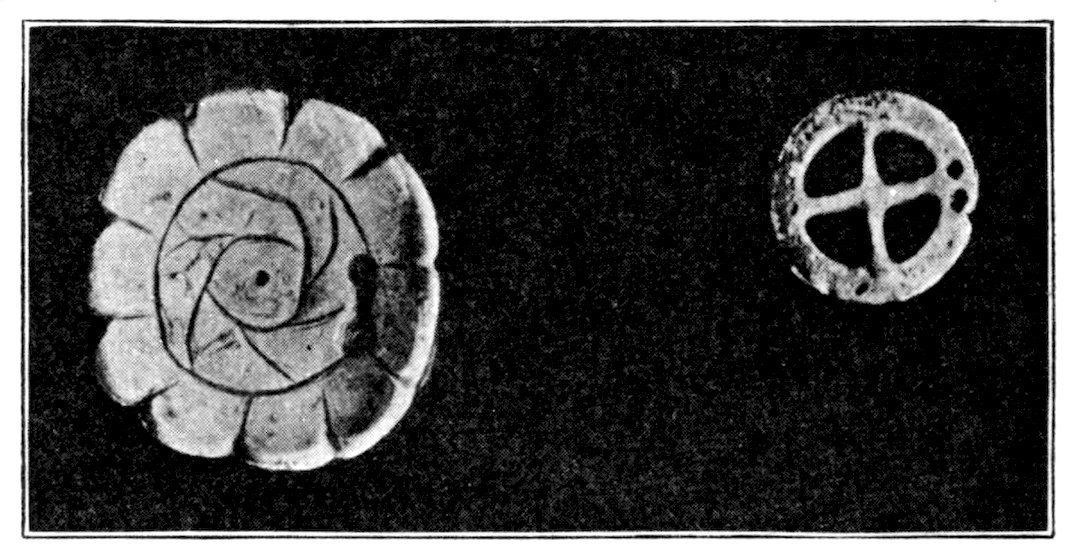
Fig. 527. (1–2.) Two small shell ornaments from the collection of John T. Reeder, Houghton, Michigan. These were found in a mound on Long Island, Tennessee. The one to the right is especially interesting in that the body of the shell is cut out, forming the bars of the cross. Such gorgets are exceedingly rare.
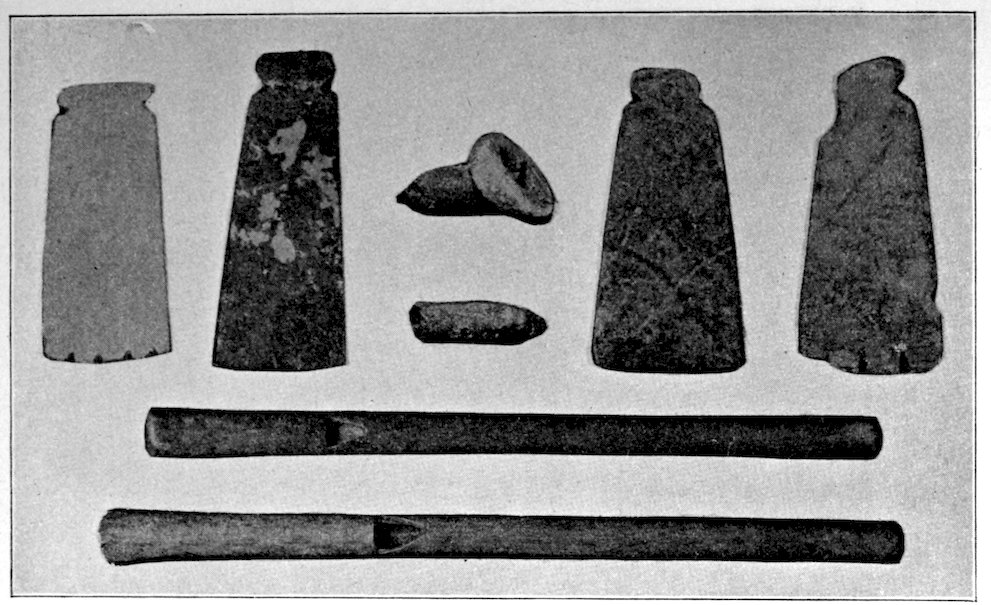
Fig. 528. (S. 1–2.) Four flat pendants found in Pilot Mound, Manitoba, by Henry Montgomery. Two copper beads and one shell bead, Pilot Mound, Manitoba. Two bone whistles, respectively nine and ten inches long, from mound near Sourisford, Manitoba.
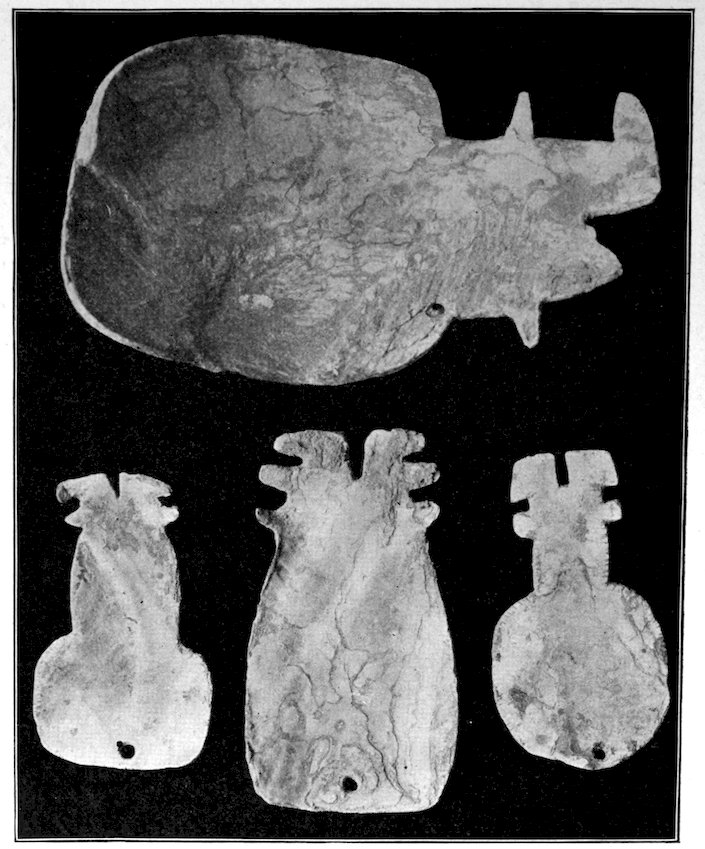
Fig. 529. (S. 1–3.) James A. Barr collection, Stockton, California.
“Among the many interesting relics obtained from mounds and burial-places in the Mississippi Valley are the engraved shell gorgets, a number of which are now preserved in our museums. The most recent addition to this class of objects was obtained by the National Museum from Mr. C. A. Nelson of Eddyville, Lyon County, Kentucky, and comes from a burial-place encountered in opening a stone-quarry near Eddyville. It is a symmetric saucer-shaped gorget, Fig. 534, five inches in diameter and made apparently from the expanded lip of a conch shell (Busycon perversum). It is unusually well preserved, both faces retaining something of the original high polish of the ornament. Two perforations placed near the margin served as a means of suspension. The back or convex side is quite plain, while the face is occupied by the engraving of a human figure which extends entirely across the disc. It will be seen by reference to the illustration that this figure is practically identical in many respects with others already published.[21] It is executed in firmly incised lines and is partially inclosed by a border of nine concentric lines. The position of the figure is that of a discus-thrower. The right hand holds a discoidal object, the arm being thrown back as if in the act of casting the disc. The left hand extends outward to the margin of the shell and firmly grasps a wand-like object having plumes attached at the upper end, the lower end being peculiarly marked, and bent inward across the border lines. The face is turned to the left; the right knee is bent and rests on the ground, while the left foot is set forward as it would be in the act of casting the disc. The features are boldly outlined; the eye is diamond-shaped, as is usual in the delineations of this character in the mound region. A crest or crown representing the hair surmounts the head; the lower lobe of the ear contains a disc from which falls a long pendant ornament, and three lines representing paint or tattoo marks extend across the cheek from the ear to the mouth. A bead necklace hangs 127down over the chest and the legs and arms have encircling ornaments. The lower part of the body is covered with an apron-like garment attached to the waistband, and over this hangs what appears to be a pouch with pendant ornaments. The moccasins are of the usual Indian type and are well delineated. A study of this figure strongly suggests the idea that it must represent a disc-thrower engaged, possibly, in playing the well-known game of chunky.”
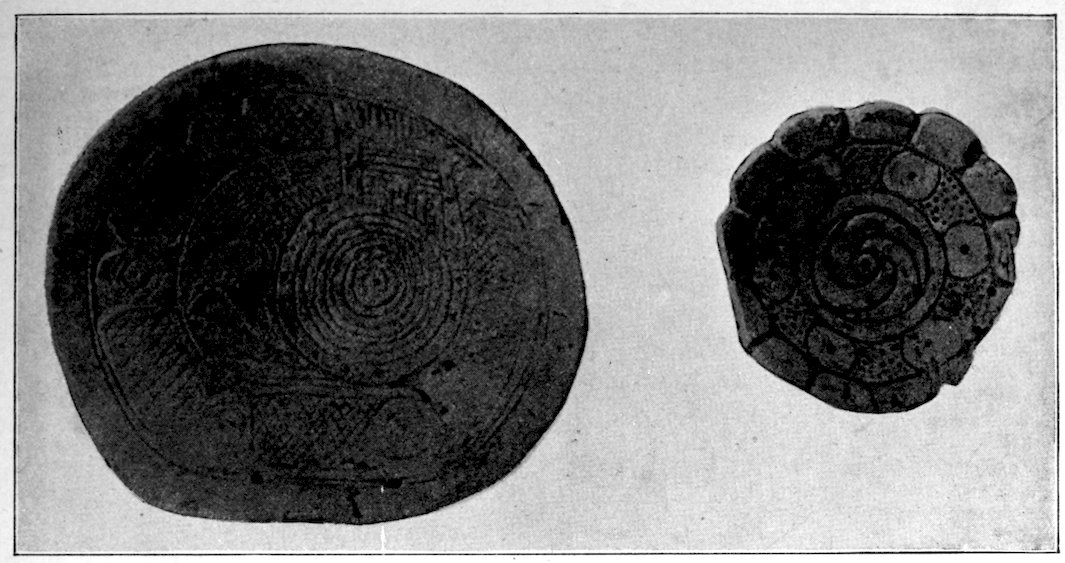
Fig. 530. (S. 2–3.) Collection of J. T. Reeder, Houghton, Michigan.
Regarding Fig. 535 of Colonel Young’s collection, Professor Holmes writes me, under date of March 28, 1910, as follows:—
“The shell gorget from Lincoln County, Kentucky, is exceptionally large, being six inches in diameter. The design is engraved on the concave surface and represents a double-headed eagle treated in a very conventional manner. The heads are well drawn, but the bodies are simplified so that two legs only with characteristic talons are shown. The tail is single. The work corresponds in style to similar delineations on clay and other materials throughout a large part of the Gulf States, as shown fully in the works of Mr. Clarence B. Moore. It is not possible to say whether or not the duplication of the heads had any significance, or whether it is the result simply of the common practice in primitive art of employing modified natural forms to accommodate the spaces to be embellished. That the eagle, however, had some special significance with the peoples concerned, may be taken for granted.”
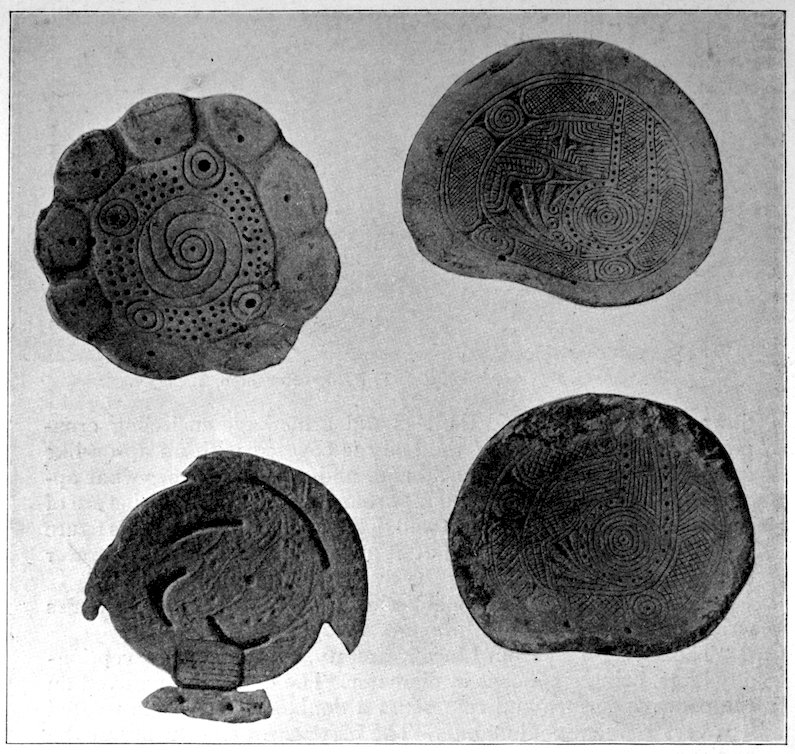
Fig. 531. (S. 2–3.)
Collection of J. T. Reeder, Houghton, Michigan. The upper figure is from a mound on Long Island, Tennessee River, Jackson County, Alabama. The lower figure is from a mound at the mouth of Chickamauga Creek, Hamilton County, Tennessee.
Fig. 532. (S. 2–3.)
Collection of J. T. Reeder, Houghton, Michigan. The upper figure is from a mound at Citico Furnace, Chattanooga, Tennessee. The lower figure is from a mound at Long Island, near Bridgeport, Jackson County, Alabama.
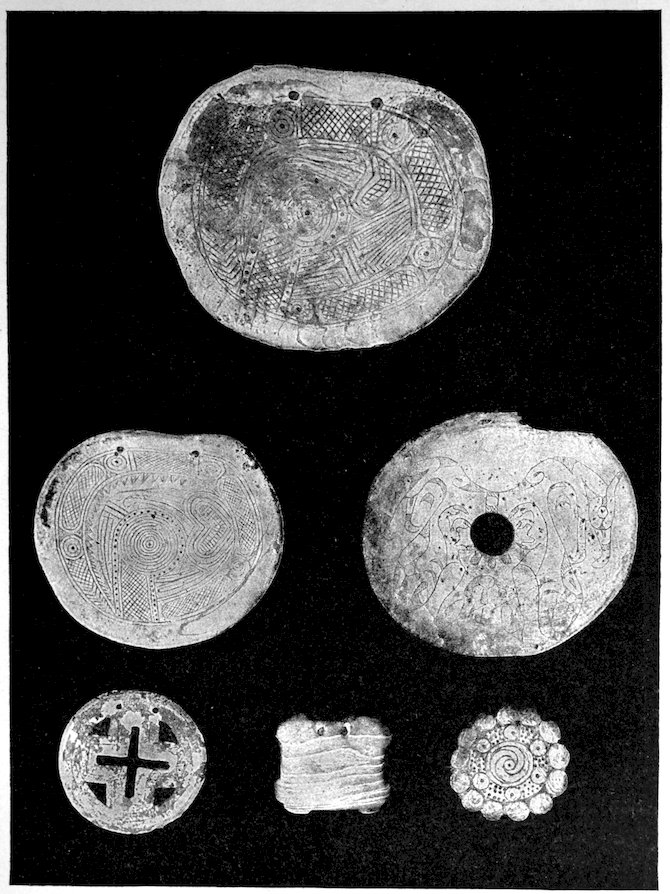
Fig. 533. (S. 1–3.) Shell gorgets from Kentucky. Bennett H. Young’s collection.
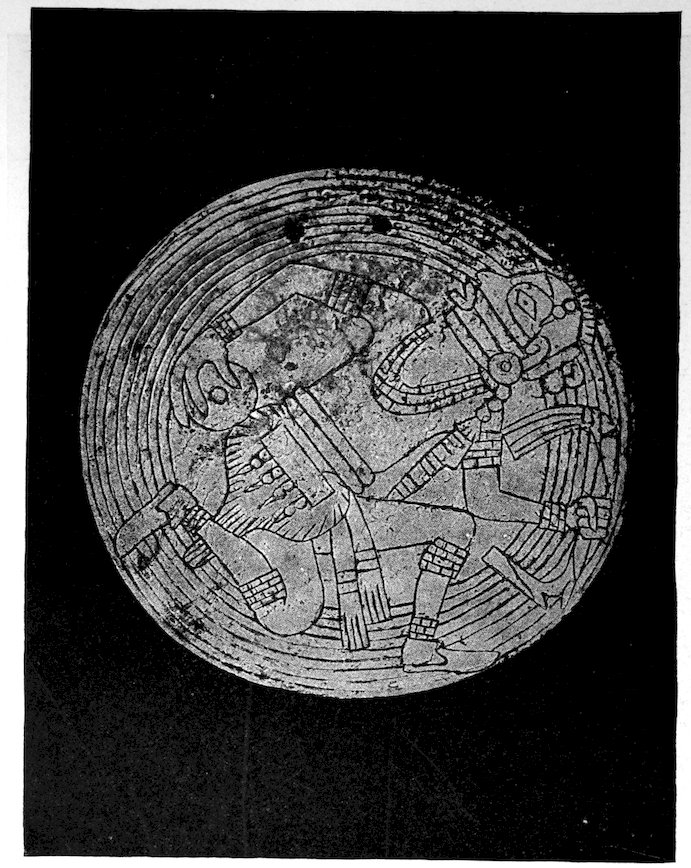
Fig. 534. (S. 2–3.) Shell gorget from Lyon County, Kentucky. United States National Museum collection.
Fig. 533 presents six beautiful engraved gorgets from Colonel Young’s collection, who has in his exhibit as many engraved shells as any other collector in this country. For many years he has interested himself in the archæology of Kentucky and has preserved 131thousands of specimens. No. 3 in this plate is shown in a larger form in Fig. 535. No. 4 is one of the rare gorgets with the design of the cross worked out by cutting entirely through the shell. No. 6 is practically the same as the right-hand specimen in Fig. 530, only that it is worked in higher relief. The exact meaning of these carvings is unknown at the present time.
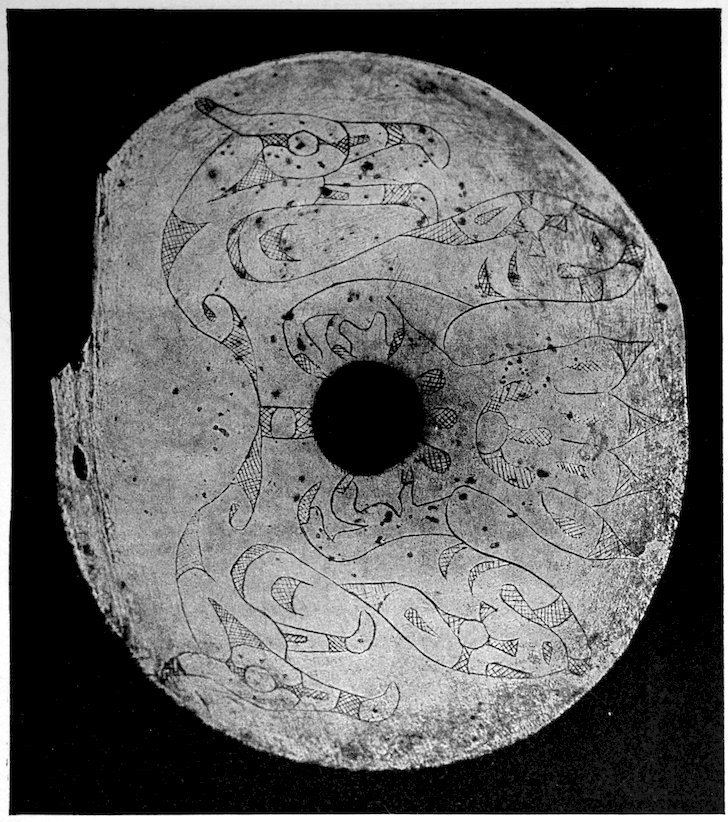
Fig. 535. (S. 2–3.) Collection of Bennett H. Young, Louisville, Kentucky.
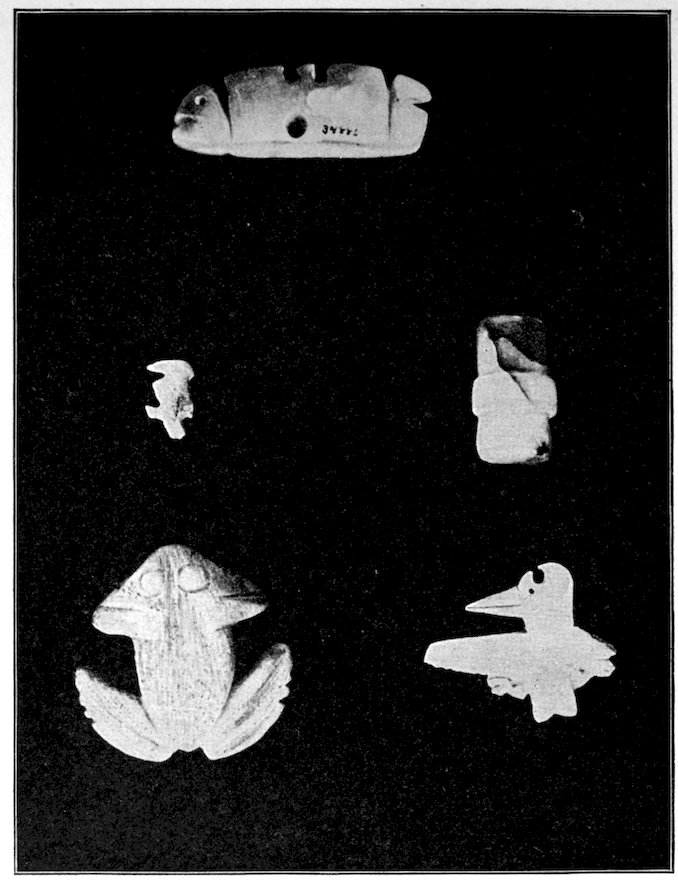
Fig. 536. (S. 1–1.) Shell frog, two shell effigies, onyx bead, and effigy fish (jade?). From the large ruin near Mesa, Arizona.
The natives living in the great pueblos of the Salado Valley, southern Arizona, and in fact throughout that entire region, made use of a great many shells found along the shores of the Gulf of California. Not only did they make ordinary beads, after the manner of the Northern Indians, but they also made finger-rings and bracelets. These have been so frequently illustrated, I have purposely left them out. They worked all manner of effigies out of shell, as is shown in Figs. 536–37, from the collection at Andover. These specimens were obtained by me while exploring in 1897 and 1898 for Mr. R. S. Peabody, founder of the Department at Andover.
133There are also shell frogs inlaid with turquoise—real mosaic work. Dr. Fewkes has illustrated some effigies of this nature, in his reports, and Dr. Pepper found numbers of them at the great Chaco Group of ruins, northern New Mexico. When the first shell frogs were discovered by the late Frank Hamilton Cushing, some of the archæologists went so far as to say that Cushing had made these, but now so many of them have been found that Cushing’s original contentions are verified.
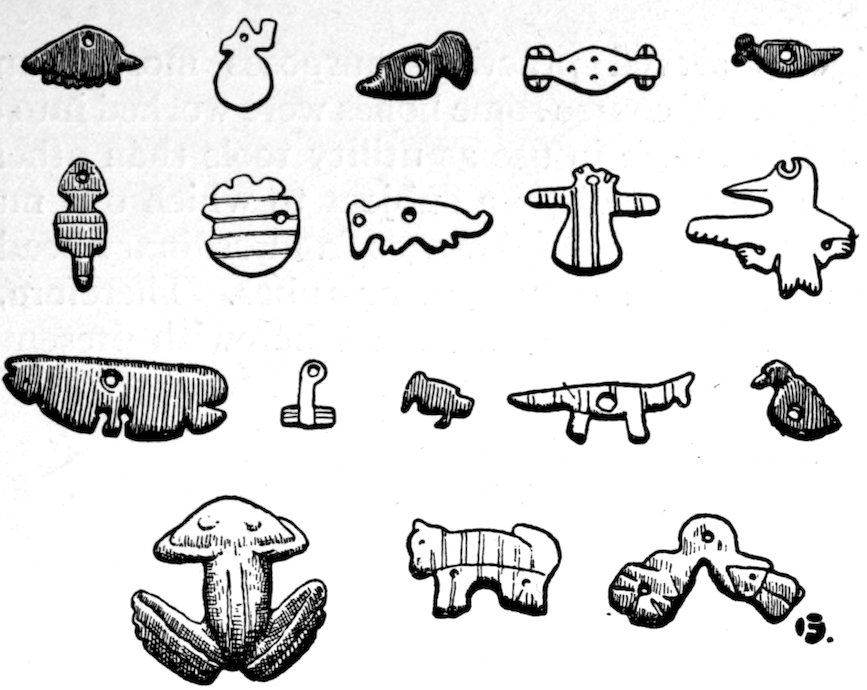
Fig. 537. (S. 1–2 to 1–3.) Shell objects from Arizona.
It is surprising, the skill of prehistoric man in carving. When Squier and Davis made their exploration of the mounds of the Mississippi Valley, they found many highly carved and ornamented pipes. Years afterwards, observers who were unjustly skeptical endeavored to prove that these were made with rat-tail files or were the work of white traders. Since the time of Squier and Davis, even more remarkable carvings, work in copper, intricate designs on shell, and various tablets have been unearthed, in numbers, and by men against whom no charge could be made.
It will be seen by an inspection of the few shell objects that I have illustrated that, notwithstanding the lack of iron tools, aboriginal man in America was no mean artist.
Bone objects served practical purposes more than they did ornamental uses. Of course some bones were worked into ornaments, but more of them were in use as utility tools than otherwise. The classification of bone tools is a subject to which one must give no little thought, for the material ranges from ordinary beads to highly decorated and grooved cylinders, or tubes. Therefore, I am not fully satisfied with the classification I herewith present, and hope at a future date to improve upon it.
Bone objects in the United States were in widespread use, and they served many purposes. In the Mississippi Valley more of them were worked into beads and awls than into anything else, but on the Great Plains they were made use of for many purposes. The tips of antlers were sharpened and fastened on arrows. In the Mandan country, North Dakota, and elsewhere in the West where stone was scarce, the bones of the buffalo served as clubs, the shoulder blades as digging-tools, and the ribs were polished and ground to an edge and used as knives and scraping-tools. The teeth of carnivorous animals were mounted as ornaments, and long slender bones of the smaller animals were cut into beads. Bone and horn spoons were doubtless common in all parts of the United States.
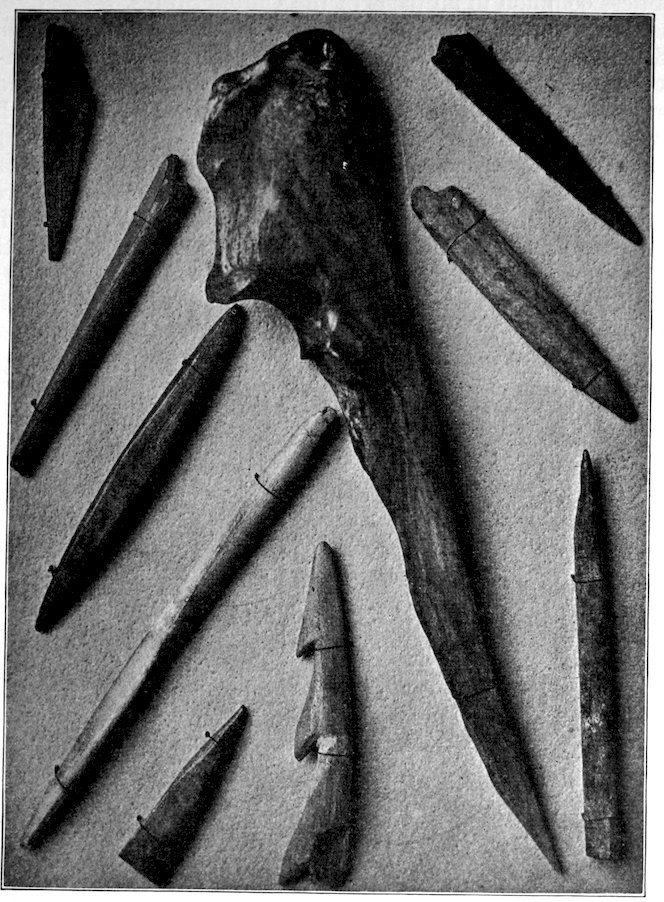
Fig. 538. (S. 1–1.) Typical bone awls from the collection of S. D. Mitchell, Ripon, Wisconsin.
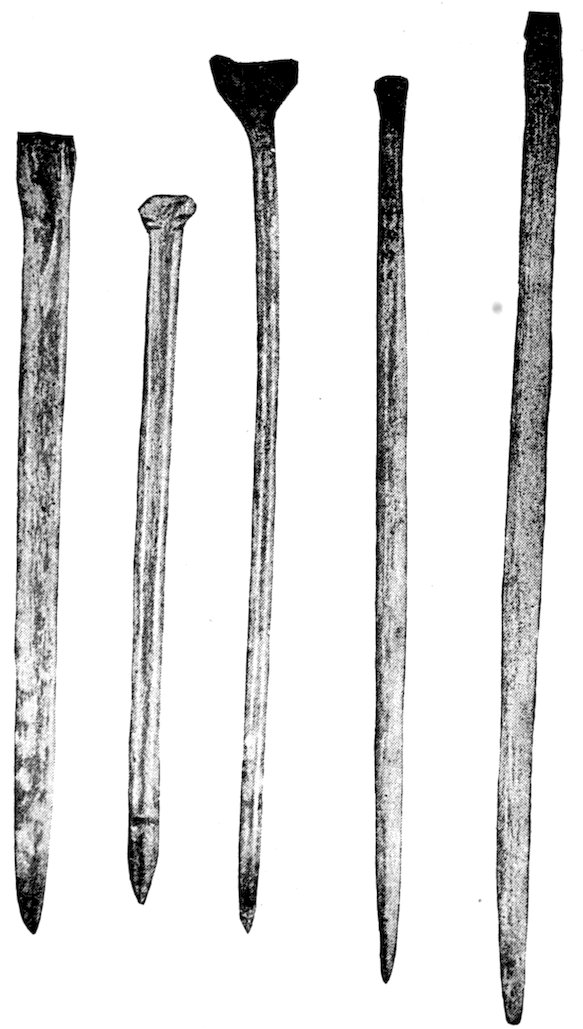
Fig. 539. (S. 2–3.) Blunt-pointed awls found with burials. Baum Village-Site, Ohio. William C. Mills’s collection.
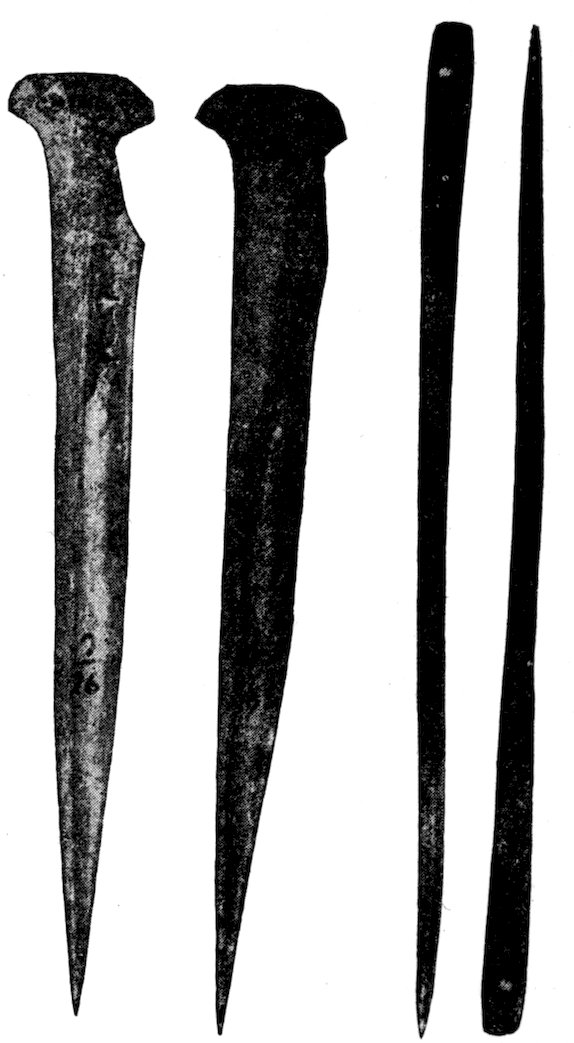
Fig. 540. (S. about 3–4.) To the left, bone awls made from the tarsometatarsus of the wild turkey. To the right, bone needles. All from the Harness Mound, Scioto Valley, Ohio.
A larger percentage of bone awls have been recovered from village-sites than of other objects in bone, excepting beads. The ash-pits of village-sites preserved practically everything encompassed by them because of the preservative quality of ashes. Therefore, I have always believed that the proportion of bone awls to other things is no criterion as to the use of bone among the aborigines. In the caves of the Ozarks, during three seasons of exploration, we recovered upwards of a hundred bone awls. More than fifty were taken from the ashes of Kelley Cavern alone. It must be remembered that these caves, as is also true of the village-sites of central United States and the South, mark the residence place of natives where, perhaps, 137women predominated. Assuming that because of wars there were usually more women than men,—and I think that the early American history will bear out this statement,—the domestic arts were in excess of the other arts; and even if the persons engaged in domestic science were in the minority there would naturally be more cooking, garment-making, weaving, and general domestic science in vogue in a village or a cave or a cliff-dwelling than elsewhere. It is not surprising, therefore, that awls and hammer-stones, pestles and mortars, rough axes and hoes should predominate in such places. An unknown number of bone effigies and bone tools that must have been made and used by the ancient people have disappeared, because as in the case of textile fabrics they were not preserved unless buried in ashes.
Aboriginal man was very saving. When he killed a deer or a bear he not only made use of the meat and the hide, but also of the bones and sinews. The proof of such economy lies in any large village-site, where one finds in the ashes bones of practically every bird, animal, and fish formerly in the neighborhood. And these bones have been broken, or cut, or sawed. Some of them indicate the beginning of workmanship, many of them are broken to extract the marrow, and others are perfect. The exhibit is just such as one would expect from the camp-site of savages. After the feast was over and the bones cast out, in the ensuing days, when these bones had become more or less dry, the man, the woman, or perhaps the boy, gathered them up and worked them into the forms presented in this chapter.
The use of bones for harpoons was widespread. In fact no substance is more convenient. The skeletal remains of numerous animals, birds, and fish furnished the Indians with bones of various sizes and shapes, and it is quite likely that such bones as could be made use of were stored away, and that the aborigines selected the bone suited to their purpose and went to work on it to manufacture the harpoon, or the awl, or the ornament. Harpoons seem to have been more in use in the North than in the South, and more are found in the St. Lawrence basin, Canada, and northern New England, and New York State, than elsewhere in the United States. The same is true of the Eskimo country, where bone harpoon-points are very common. Illustrations 538, 541, 542, present four different bone harpoons.
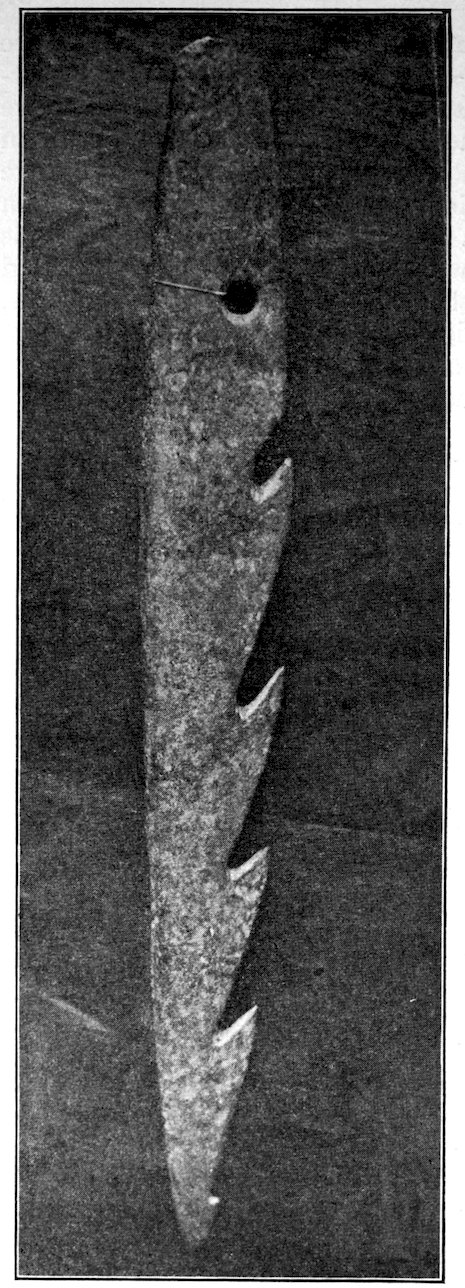
Fig. 541. (S. 2–3.) Bone harpoon. P. D. Winship’s collection, Park Rapids, Minnesota.

Fig. 542. (S. 1–2.) (See Fig. 543 for description.)
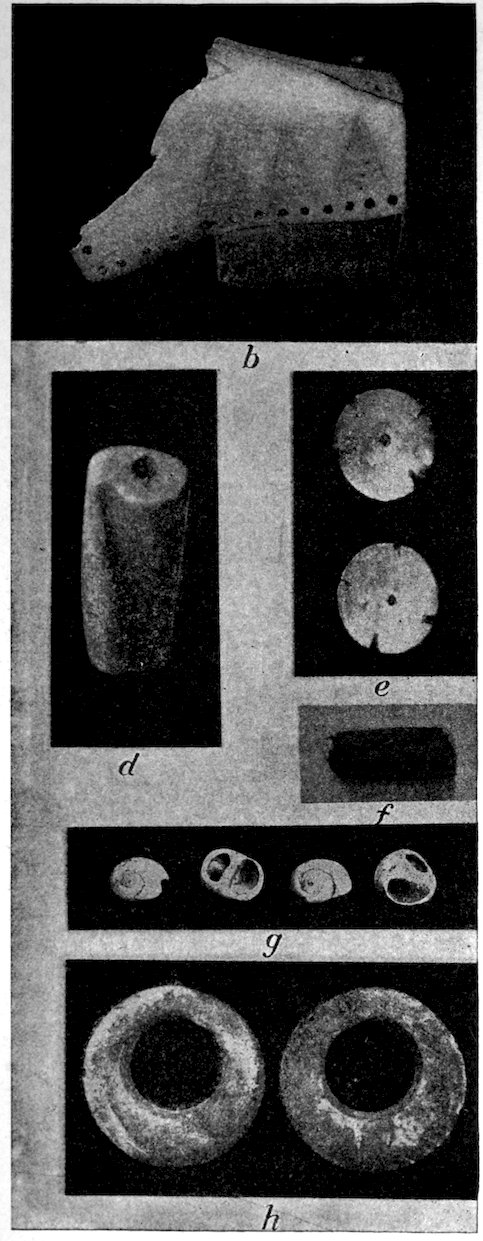
Description of Figs. 542 and 543.
Objects of antler, bone, shell, and copper from North Dakota mounds:
a. Deer antler tines, showing perforations and notches.
b. Bone anklet, somewhat broken, but showing entire length in front.
c. Carved tine of a deer’s antler.
d. Bead made from the columella of a marine shell.
e. Pearly shell buttons or ornaments, perforated or notched; found with the anklet shown in b.
f. Flat piece of copper coiled into a bead.
g. Small marine shells perforated by grinding.
h. Pearly shell rings, probably a portion of a necklace.
i. Bone fishing-spear.
From Henry Montgomery’s collection, Toronto, Canada.

Fig. 543. (S. 1–2.)
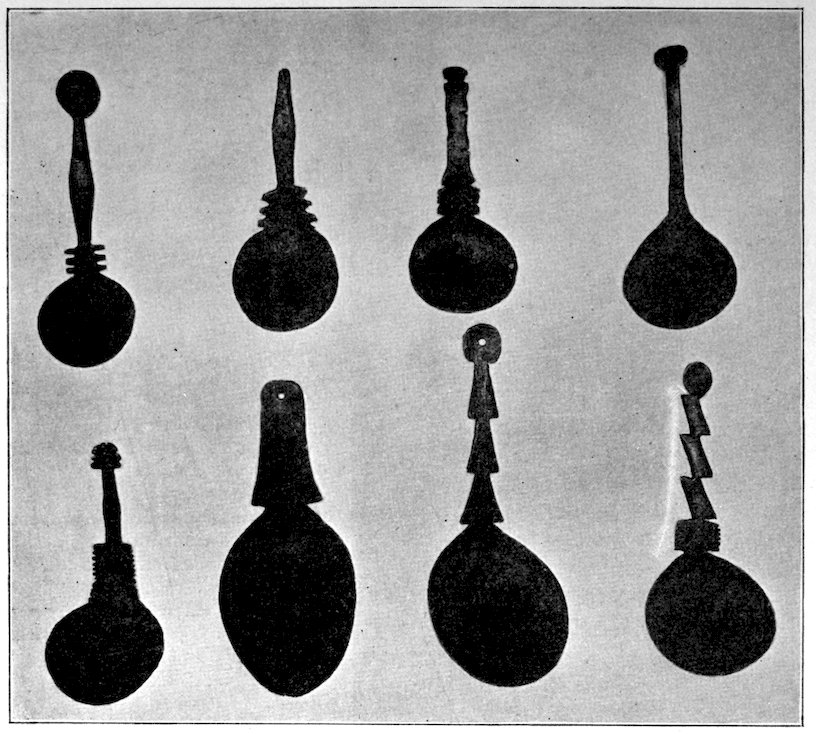
Fig. 544. (S. 1–3.) Elk-horn spoons, from Humboldt County, California. H. K. Deisher’s collection.
It is not difficult to explain the preponderance of harpoons in the North and the scarcity of them in the South. They are essentially a cold-climate implement. In the St. Lawrence region, where they abound, nets and traps cannot be used save during summer and fall. The winter sets in early, and the spring is late. While fish were harpooned when on the spawning-beds, yet most of the harpooning was done in the winter. Even to this late date the Ojibwa Indians spear great quantities of fish in the winter season. Pickerel, pike, muscalonge are attracted by a moving bait. The Indian cuts a hole through the ice, and erects a small structure to shield himself from the wind. An effigy of a fish made of wood or bone, or in these modern times of tin, is dangled about four or five feet beneath the ice. Large fish approach this decoy, and as they are more sluggish in their movements in the winter, the Indian has no difficulty in driving the spear into such one as he wishes, before it is able to draw out of range. I suppose that the method did not vary in 141ancient times. Naturally, where possible, the Indians preferred to set nets or build fish-weirs. But practically all the nets and weirs of ancient times have long since disappeared.
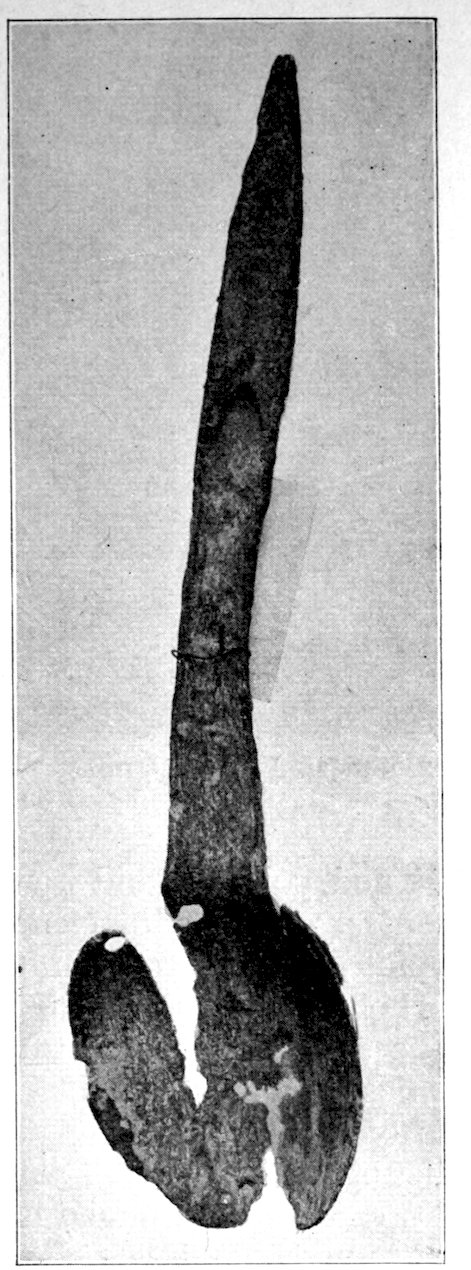
Fig. 545. (S. 3–4.) This is a long spoon, badly decayed, but sufficiently preserved for us to determine its character. It is about six inches in length. It was found under an old building in Salem, Massachusetts, and is in the Peabody Museum. Very few bone or horn spoons, ladles, and dishes of the Indians remain, and yet we know that a great many were made and used by primitive man in the United States.
Fig. 541 illustrates a large, strong harpoon of bone. This spear has several prominent barbs. The muscalonge and sturgeon of the far North were large, strong fish and required a heavy spear to hold them. Whether the Indians of the Lake Superior region in ancient times made use of the spear with a detachable point, to which was attached a cord and float, I am unable to state. Possibly they made use of devices of that sort.
In the East and the North the harder and heavier bones, such as the horns of elk, deer, and moose, were made use of as gouges, celts, and scrapers. Numbers of these have been found at Madisonville cemetery, in the Little Miami Valley, ten miles north of Cincinnati, and also in the Iroquois sites along the Mohawk River in western New York. Mr. David Boyle, Curator of the Provincial Museum, Toronto, presents descriptions of a number of horn implements in his publications.[22]
Bones were made use of as spoons, and ladles. Numerous examples of these are not wanting in the museums. The longer, slender bones were ground and polished 142and pointed, and may have served as hairpins and cloak-fasteners. A splendid example of what we have considered bone hairpins was taken from the ashes in Kelley Cavern, Arkansas. This bone was found at a depth of five feet, and is nine inches long.
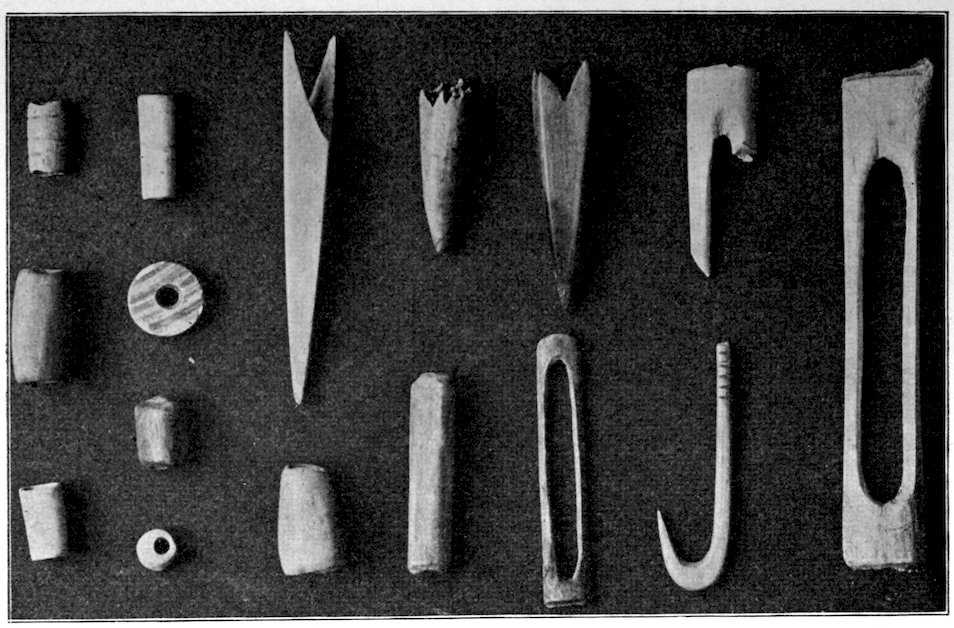
Fig. 546. (S. 2–3.) Beads, arrow-points, and bone fish-hooks, from the Mandan Village-Site, North Dakota.
The slender bones of turkeys and geese were often made into whistles, the medicine-men used them, and bone tubes were frequently employed by shamans in drawing the evil spirit from the bodies of the sick. Small digits were worked into necklaces. Special bones of certain animals, it is supposed, were the property of the medicine-men and were used in their incantations. The skull of the buffalo played an important part in the mythology except among Plains tribes. I shall not treat of that phase of the subject in this volume, but refer readers to the list of titles in the Bibliography, under Buffalo; which will be found to contain full descriptions of the ceremonies connected with the buffalo. In another part of this work (Volume I, pages 208–09) I refer to the importance of the buffalo to Indians through an extent of territory fifteen hundred by one thousand miles.
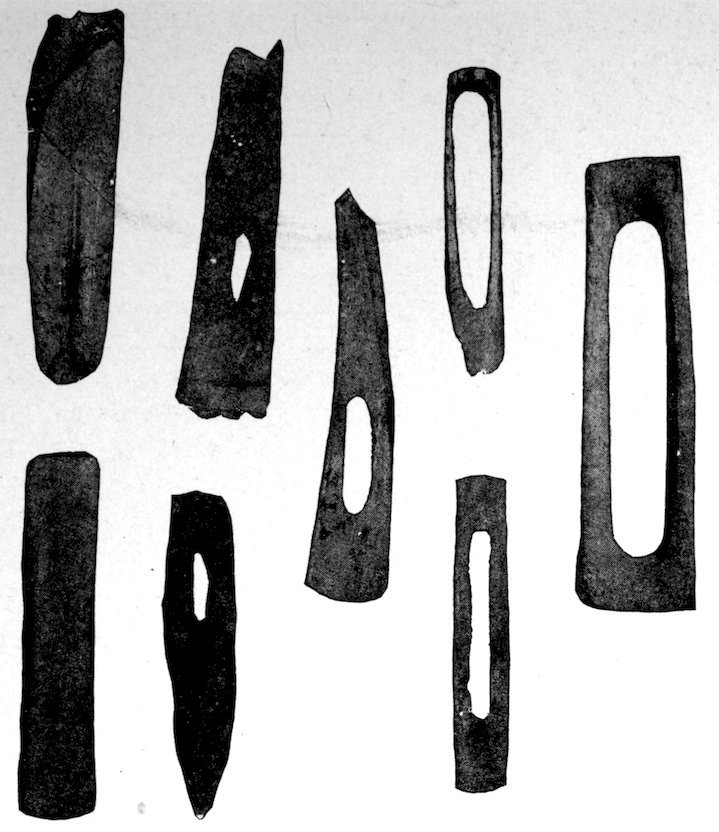
Fig. 547. (S. 2–3.) Stages of fish-hook manufacture. Gartner Mound, Ohio.
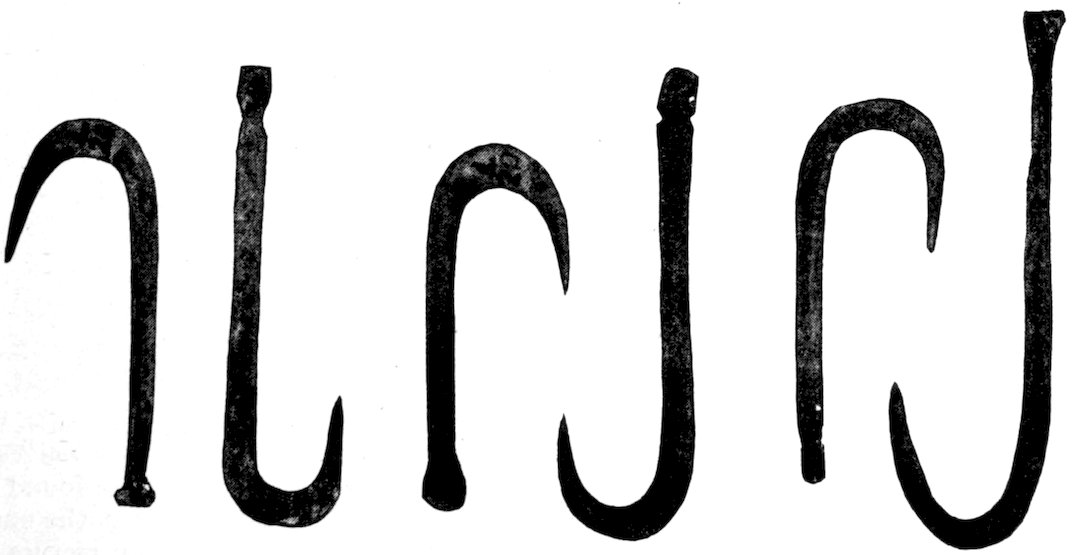
Fig. 548. (S. 1–1.) Typical fish-hooks found in the Baum Village-Site, Ohio.
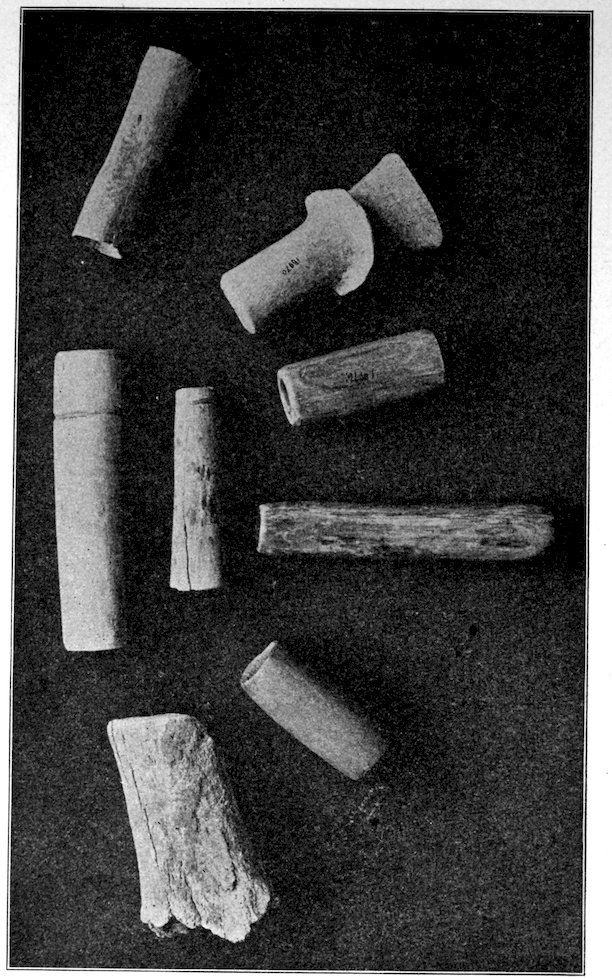
Fig. 549. (S. about 1–3.) Andover collection. The long bones of large animals were cut or sawed into proper lengths, the openings in the ends enlarged and flint knives inserted. This figure presents eight such tool-handles. The two at the top were found in a gravel-pit in central Ohio, together with human skeletons. Flint knives lay at the end of each of these two bones. The decayed bone shown in the lower part of the picture was also found in a gravel burial and a slender flint knife rested against it. The position of the knives and the bones leaves me to conclude that these bones were knife-handles.
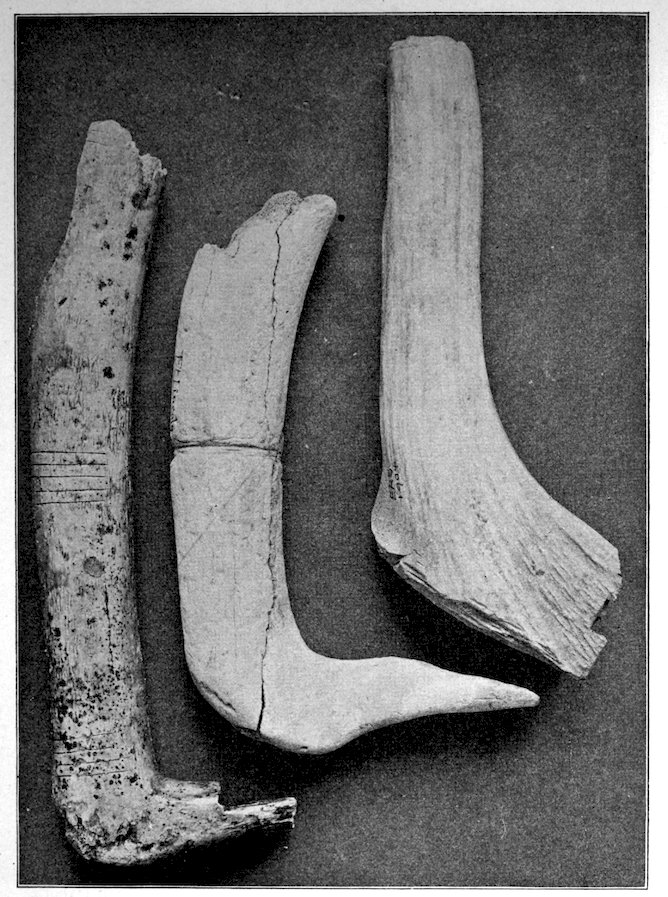
Fig. 550. (S. 1–3.) Bone tool-handles from the villages along the Upper Missouri River. Andover collection.
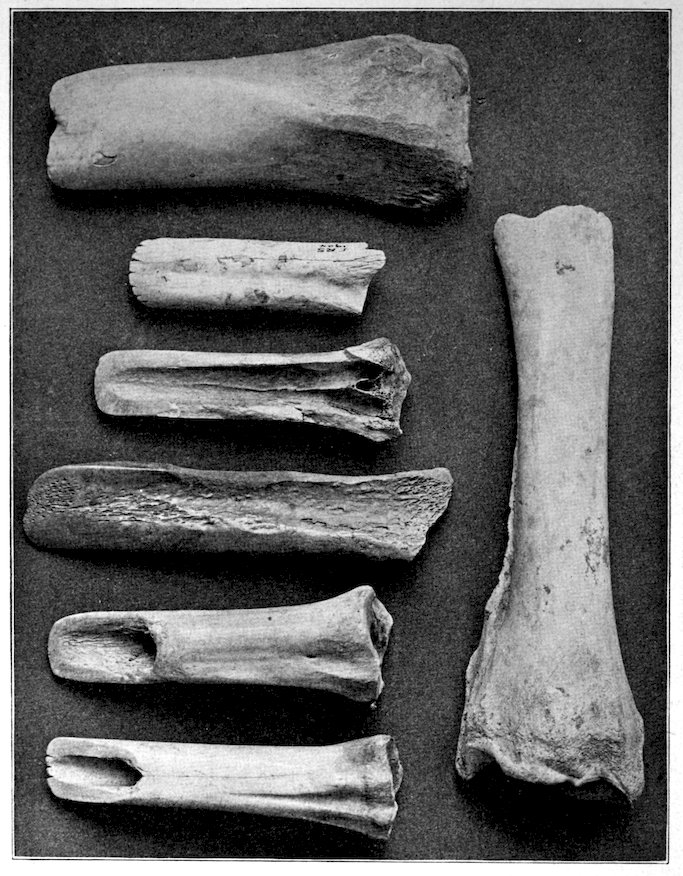
Fig. 551. (S. 1–3.) A series of bone celts from the Mandan Site, North Dakota.
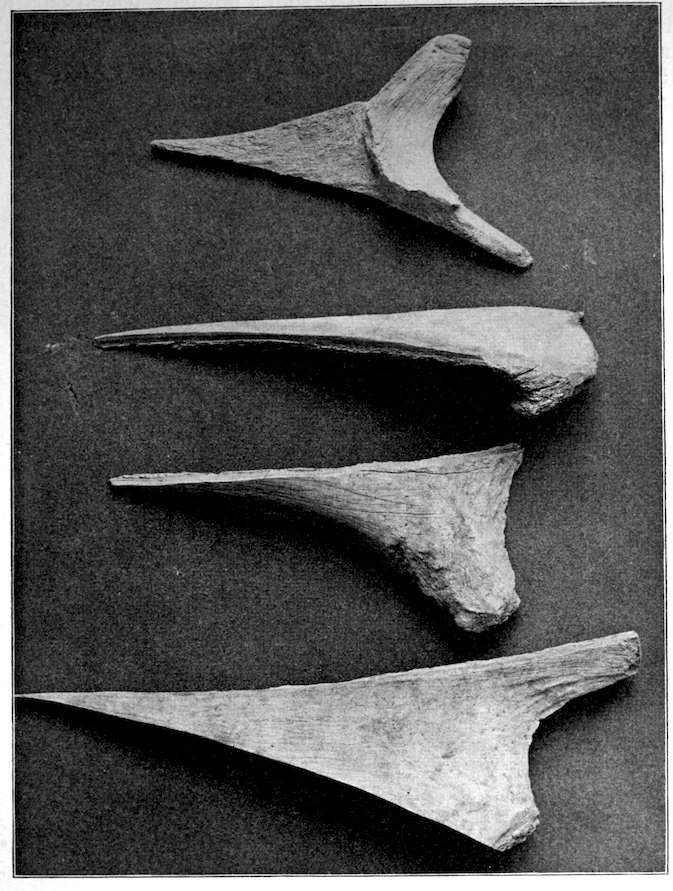
Fig. 552. (S. 1–2.) Bone objects from Mandan Sites. Portions of head-dresses. (See page 154.)
148Fig. 546 is interesting in that it shows not only bone beads to the left, but also three bone arrow-points (top row in the centre) and fish-hooks in process of manufacture. Professor William C. Mills published a valuable paper on the manufacture of fish-hooks.[23]
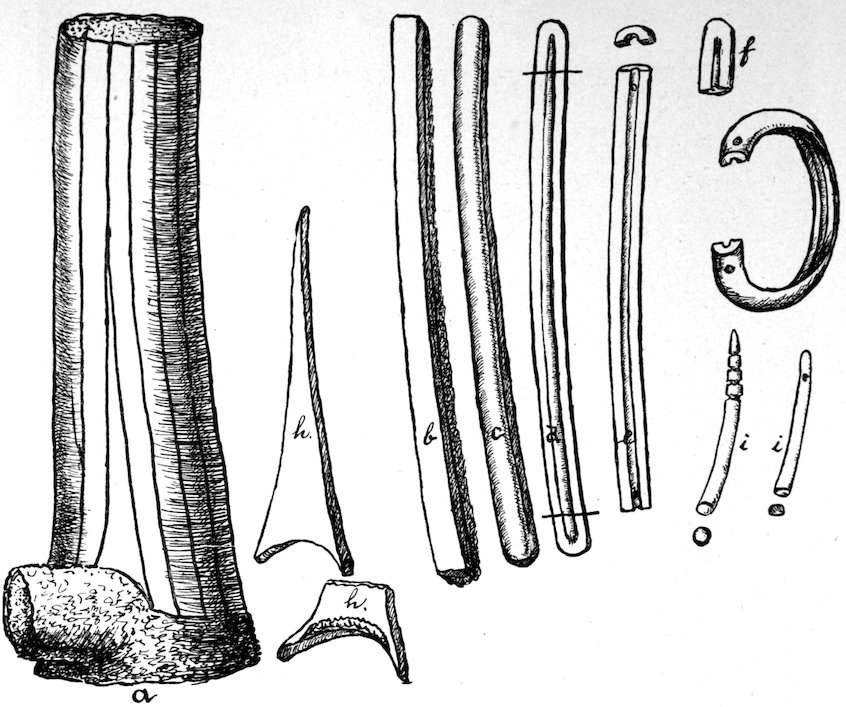
Fig. 552 A. (S. 1–3.) How the Mandans made bracelets and head-dresses. (See pages 154, 155.)
Professor Mills found in the ash-beds of the Baum Village-Site bones which had been cut down until a narrow rim on both sides remained. I show Professor Mills’s finds in Figs. 547–48.
Professor Mills’s finds of unfinished as well as completed fish-hooks enabled his museum to secure the best series of such objects in the United States.
Having split the bones and ground them down until they were thin, the Indians would cut through the objects near either end, 149thus producing from a split bone two fish-hooks. Or, the entire bone yielded four fish-hooks. One side is cut long, the other short, thus forming the shank and bar. In Fig. 546 the entire process is shown. The split bone, to the right, the broken bone above the perfect fish-hook. To complete fish-hooks it was necessary to round the base, sharpen the point, cut out a little more space between the shank and the point, and notch the shank in order that the line might be attached.
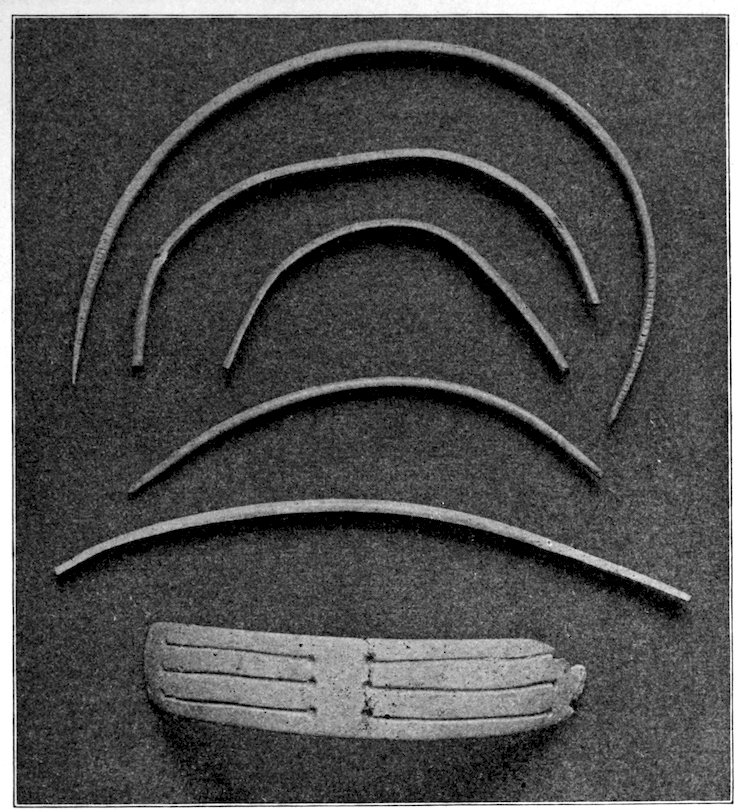
Fig. 553. (S. 1–2.) Mandan bone ornaments.
Something over twenty years ago, when I was living in Ohio, I received a communication from Mr. E. R. Steinbrueck of Mandan, 150North Dakota. He wished to begin the study of American archæology, to devote special attention to the ancient village-site of the Mandan Indians, made famous by George Catlin’s paintings and descriptions. I wrote to Mr. Steinbrueck a number of letters advising him. During the ensuing years, Mr. Steinbrueck spent many seasons in the exploration of the Mandan and other sites. His collection of bone and stone implements, amounted to about 8000 specimens.
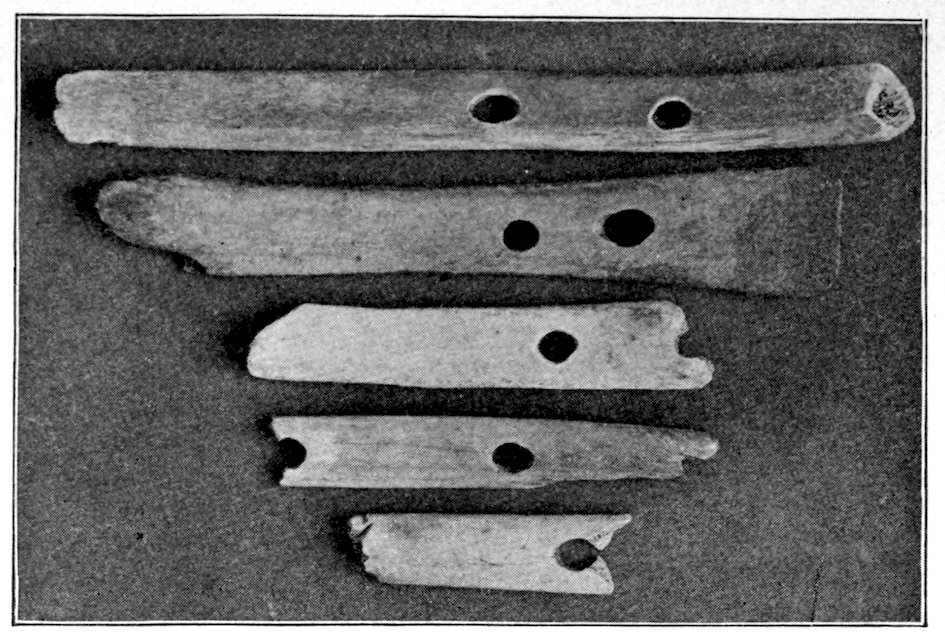
Fig. 554. (S. 1–3.) Mandan bone objects. This figure represents some perforated bones from Mandan sites. Many similar to these have been found at Madisonville. The holes are polished on the edges, and aside from the theory that they were used to straighten arrow-shafts, no one seems to know the exact purpose of them. A few are shown in Fig. 555. Peabody Museum collection, from Madisonville, Ohio.
Mr. Steinbrueck wished to have his collection preserved in a fireproof building, and as it was through me he began collecting, he wished Phillips Academy to purchase his exhibit. Through the kindness of Professor Edward H. Williams, Jr., of Woodstock, Vermont, this disposition of the collection was brought about, and the collection is to-day on exhibition in our museum. I call particular attention to this Mandan exhibit, for the reason that it is, so far as I am aware, the best and largest collection of bone implements exhumed from one site, in America.
Suitable stone seems to have been scarce in the Mandan country, and the natives made use of the shoulder blades, ribs, and other heavy bones of buffalo, elk, and deer for various purposes, and 151these strong bones served them quite as well as would stone. An inspection of the illustrations of various Mandan objects will acquaint readers with the wealth of material secured by Mr. Steinbrueck.
I call particular attention to Figs. 550 to 555. In Fig. 550 are shown heavy bone handles in which were inserted small stone celts employed as scraping- and cutting-tools. This type was common on the Plains and has been described by Professor Mason and others. The handle is so strong that it would last almost a lifetime, and the Indian women needed but to sharpen the inserted celt, rather than to make a new handle.
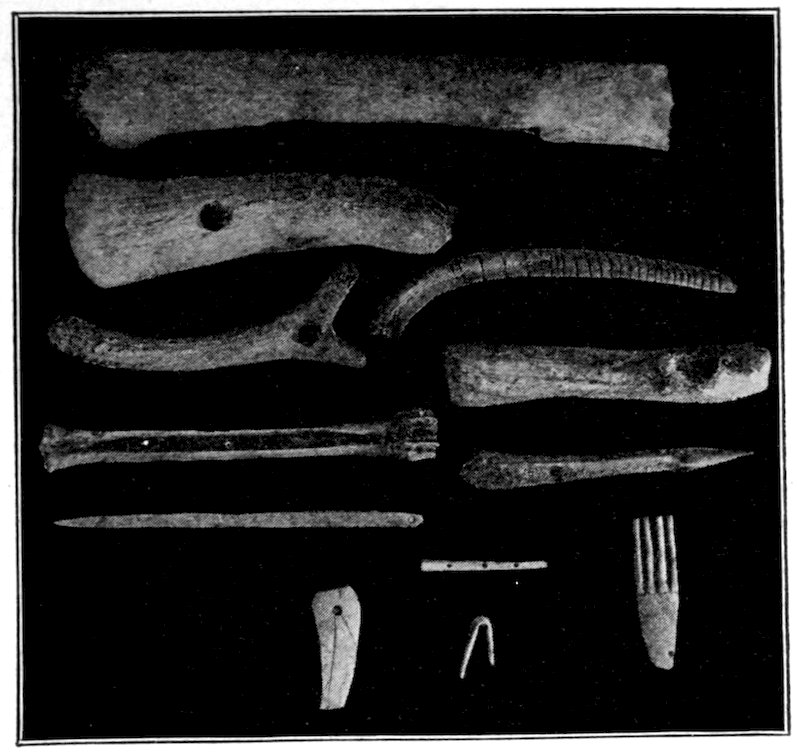
Fig. 555. (S. 1–5.) This presents a bone hairpin, a fish-hook, a flute and harpoon, two bone celts, a perforated antler of an elk, and a long bone partially cut into bits, all of which were found in the graves at Madisonville, Ohio. Peabody Museum collection, Cambridge, Massachusetts.
The figure of the bone celts (551) shows that nearly all of them were hollowed after the manner of Eastern stone gouges. The second specimen from the top is highly polished on the edge and there are eight places where notches have been worn into the bone. Similar wearing is noticed on the lower specimens.
The Mandans raised much corn, beans, and squashes, and the large shoulder blades of the buffalo and elk were made use of by 152these Indians as spades and hoes. There are more than one hundred of them in our collection.
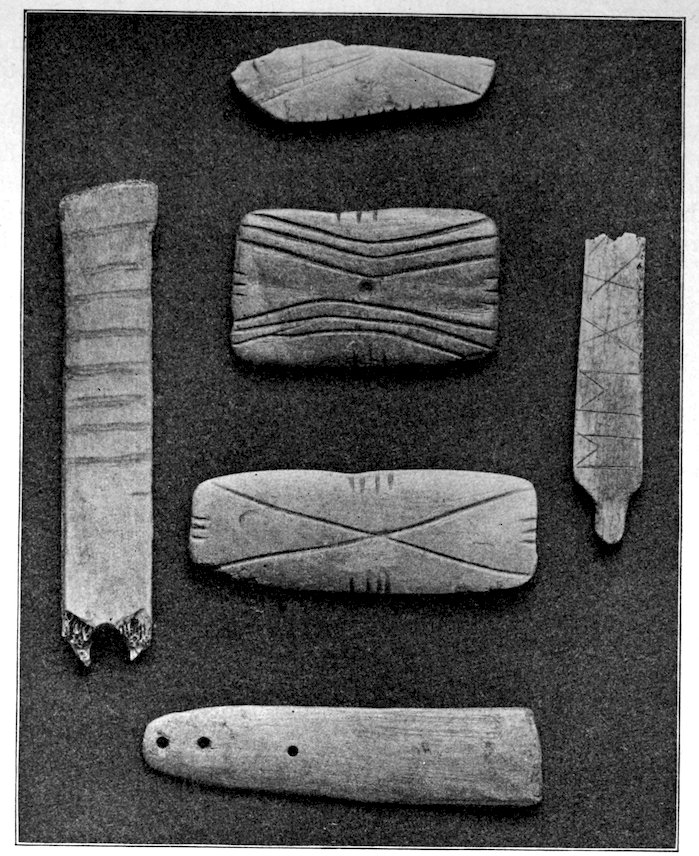
Fig. 556. (S. 1–2.) Mandan bone ornaments.
Mr. Steinbrueck, at my request, wrote me at considerable length and sent me several books of field-notes. Particularly interesting are his descriptions of objects shown in Figs. 552, 552 A, and 553. I quote from his letter:—
“After a number of years of continuous researches in the ancient Indian village-sites on or about the Heart River and along 153the Missouri River, I have gradually learned to read the purpose, the use, and also, in some instances, the manufacture of certain horn and bone implements and ornaments of the Mandan Indians.”
It would appear that the late J. V. Brower and Rev. G. L. Wilson and Mr. Steinbrueck made explorations in common during several seasons.
“... On our sociable excursions, we used to find three-cornered pieces of elk-horn (Fig. 552) which showed considerable work. They were long and pointed, had a round base, showed the incision of a sharp instrument along the edges, were scraped at both sides; in short, seemed to be shaped for some purpose, which we could not guess. Probably they were intended for some kind of an awl, or some other object of use or ornament. It was strange, though, that we found such quantities of them and all in the same state of more or less finish, and still we never found an implement of a shape similar to these peculiar triangular pieces of horn. We called them ‘unfinished implements of horn, purpose unknown.’”
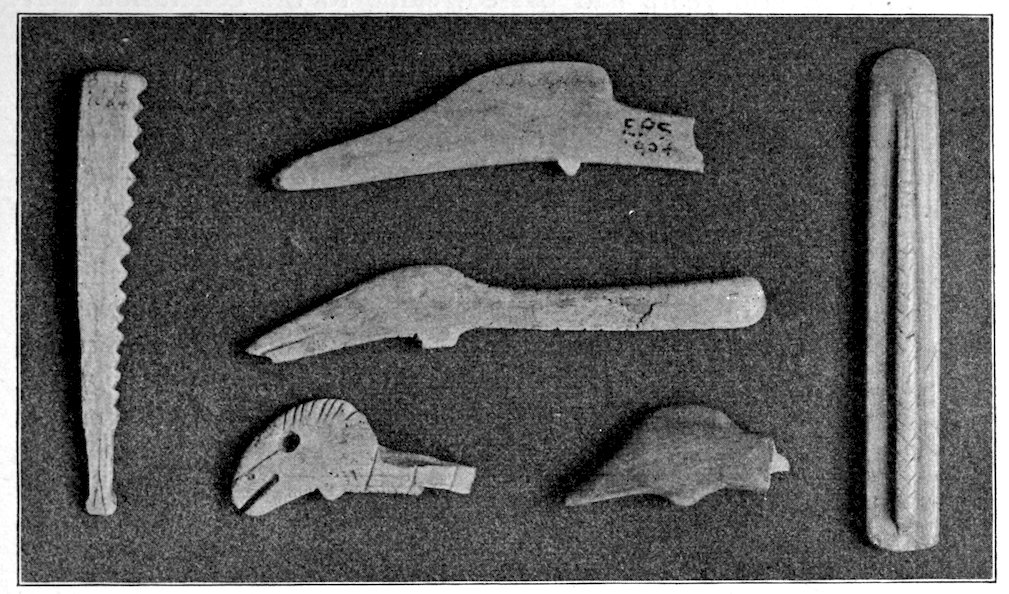
Fig. 557. (S. 1–2.) Bone ornaments and effigies. Three of these may represent goose heads. The bone to the right is ridged, and on the elevation are notches.
After Mr. Brower returned East, and Rev. Mr. Wilson moved away from Mandan, Mr. Steinbrueck continued investigations, 154and after several years had passed, came to the conclusion that the triangular pieces were discarded objects, obtained during the process of manufacture of other forms. Mr. Steinbrueck has drawn a series of outlines conveying his ideas as to the manufacture of these objects, which I reproduce in Fig. 552 A. Reference to the letters in Fig. 552 A will make clear Mr. Steinbrueck’s contentions.

Fig. 558. (S. 3–4.) Teeth of the opossum and raccoon. Harness Mound, Ohio.
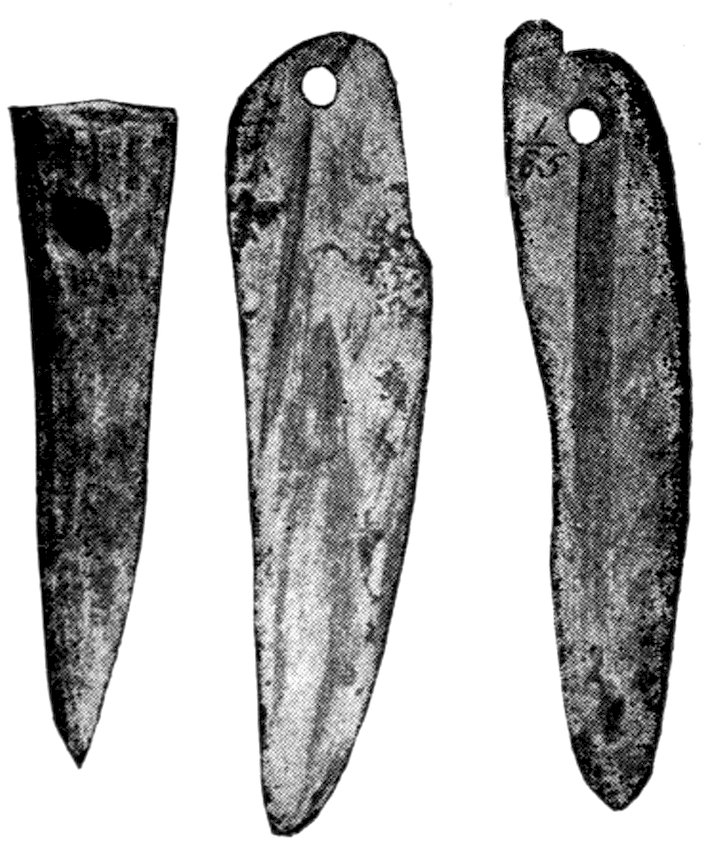
Fig. 559. (S. 2–3.) To the left in Fig. 559 is an arrowpoint made of deer-horn, with a perforation for attachment to the shaft. The other two are pendants made of ocean shell. These are from the Baum Village-Site, Ohio.
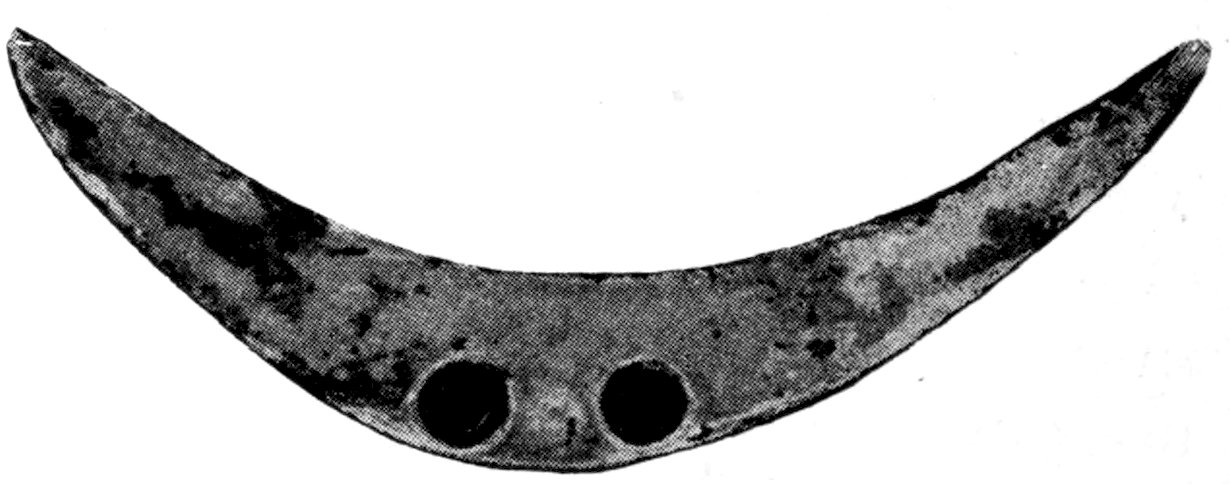
Fig. 560. (S. 1–3.)
Shell crescent. Gartner Mound, Ohio. These three figures are from the collection of W. C. Mills.
“The part of the elk-horn for the bracelets was chosen just above the first prong (a). The horn was scraped all around to a smooth surface. Next, incisions were made with a flint knife, parallel to each other, up and down the horn, to the soft inside of the horn. Thus long narrow strips (b) were formed, which were easily (c) loosened from the stem. Next, the inside was smoothed down and 155the edges rounded off. Then, on the inside generally, not always, a groove was cut for the easier bending (a). The measure of the arm or wrist was taken and a hole bored at each end according to size of arm or wrist, and above the holes the bracelet was cut (e). We found an abundance of those short pieces (f). Then finally, there remained nothing to be done but soak the straight bracelet piece, maybe in hot bear-grease, and bend it. Most of the bracelets (g) are made in that shape and manner. There are also thinner, narrower ones, without a groove and ornamented at the ends or incised (i-i), maybe for the purpose of tying together. One of the necklaces I found, and which is among the specimens at Phillips Academy, represents a snake, one end showing the head, the other end the tail. Perfect horn bracelets are very scarce, owing to their fragility. The first I found was broken in many pieces. I gave it to Mr. Brower, who was much exalted over it, saying that that was the first complete bracelet he ever saw; and although broken, it is now restored. It is erroneous and was a mistake to state that bracelets were made from ribs of small animals. A test will prove the truth of my statement, that they all are made from horn and particularly from the elk-horn.
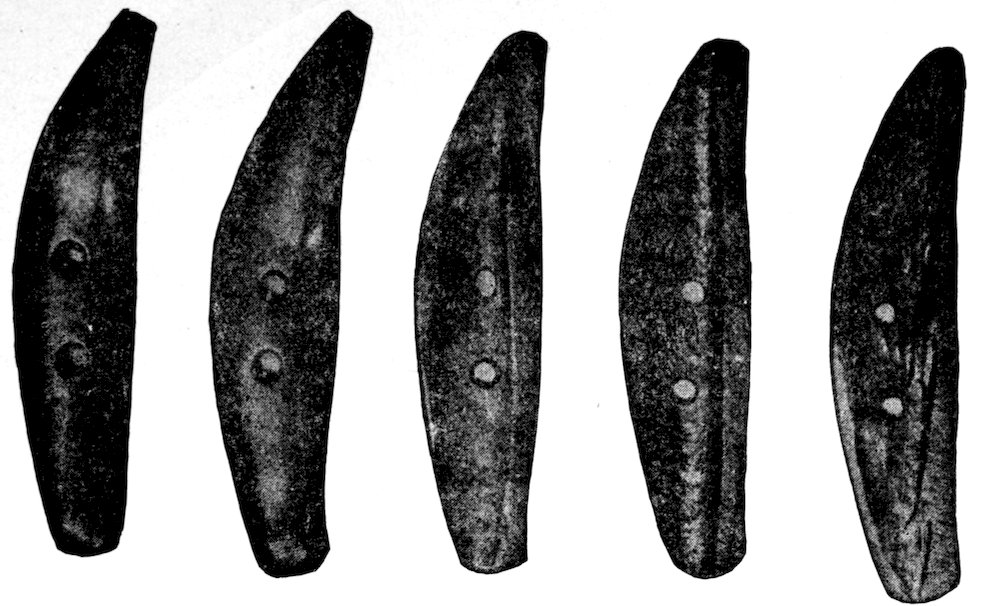
Fig. 561. (S. 2–3.) Bear-tusks in which pearl beads were inserted as ornaments. These are cut and polished, the bases being cut squarely off or diagonally, for what purpose is unknown. These specimens were found in various mounds, Ross County, Ohio, as were several other objects illustrated in this chapter.
“The manufacture of headgear from the buffalo, or the elk-horn, 156was brought about in the same manner. The buffalo-horn or the elk-horn was incised, after shaving smooth, from top to bottom, or vice versa, one incision opposite the other, thus forming two exact counterparts. Then they were cut or ornamented to fit the head and the taste of the wearer. The pieces were scraped thin and smooth from both sides, and then polished.”
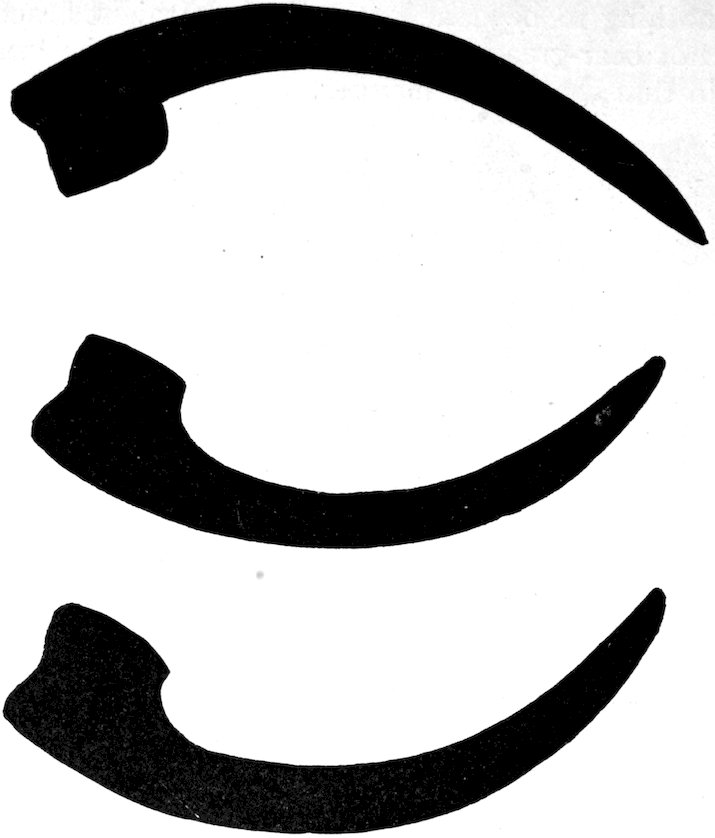
Fig. 562. (S. 1–1.) Dug up by W. C. Mills from Ohio mounds, as were the specimens shown in Figs. 558 to 565.
I shall conclude the chapter on bone objects with some remarks from Mr. Charles E. Brown, concerning the distribution of bone implements in the Wisconsin-Michigan region:—
“The largest local collection of bone implements is that of Mr. S. D. Mitchell of Green Lake. It includes harpoon-heads, awls, tubes, and other articles obtained from a so-called ‘sacred spring’ into which it is thought that these and other objects were cast by 157early savages, probably for the purpose of propitiating some evil spirit supposed to dwell therein.

Fig. 563. (S. 1–1.) Cut bear-tusks, and tusks in which pearl beads are inserted. From Ohio mounds.

Fig. 564. (S. 3–4.) Engraved bone, Harness Mound, Ohio.

Fig. 565. (S. 1–1.) Engraved bone, Hopewell Mound, Ohio.

Fig. 566. (S. 1–1.) Engraved bone, Hopewell Mound.
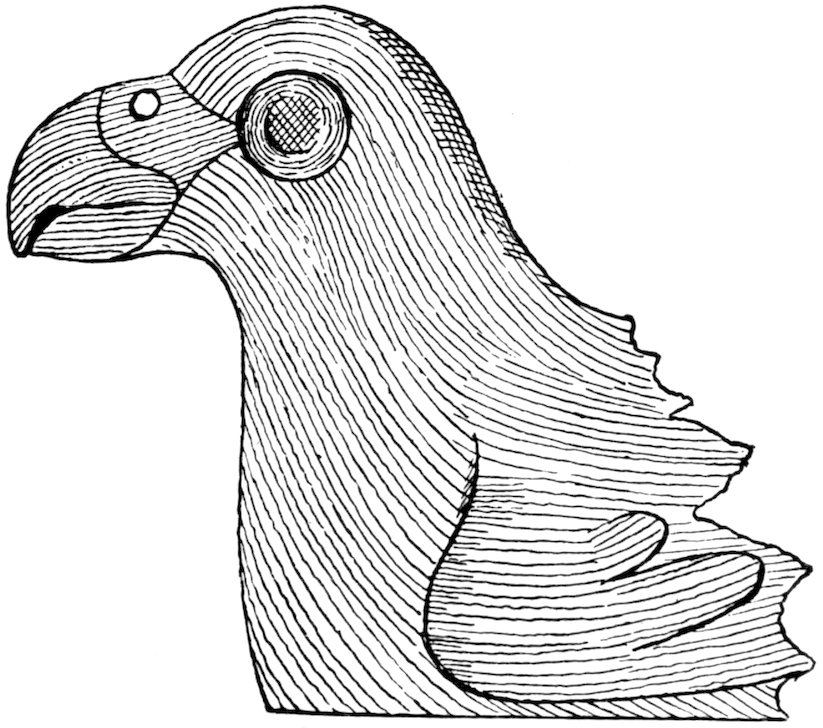
Fig. 567. (S. 1–1.) Bone effigy, Hopewell Mound, Ohio.
“Bone implements and ornaments of these and other classes have also been recovered from various village-sites, refuse-heaps, and mounds. Bone awls are the most numerous. Among these are a few bone beads, scrapers, and needles. Two ribbons, probably those of the moose, were obtained from a mound at Eagle Corners. Both are transversely notched by cuts along one edge. One bears thirty-four cuts, the other thirty-three. The most casual examination ... reveals the evidence of rubbing over the projections between the notches. Dr. Frederick Starr, who has described these specimens, refers to them as ‘rattles,’ and states that ‘they not only might have been used for dance-timing, but were certainly so used.’[24] It is probable that some of our native copper perforators were once mounted in bone or antler handles. The Winnebago Indians still occasionally mount wire nails in handles of bone for use as perforators in sewing buckskin. Bone awls are also occasionally found in use among these Indians and the local Chippewa. Medicine-tubes made of sections of bone or horn were formerly employed. Pendants made of the perforated canine teeth of the bear are occasionally found in graves and on camp-sites. Mr. Richard Herrmann of Dubuque has reported the finding of two combination bone knives and spoons, several awls and arrow-points, two eagle claw ornaments, a bone needle with part of the eye 160intact, and a musical instrument from a mound near Garner, in Grant County.”
Dr. W. J. Hoffmann mentions the former use of bone fish-hooks and notched bone arrow-shaft smoothers among the Wisconsin Menomini. For evening strands of basswood fibre in cord-making, these Indians use the perforated shoulder blade of a deer or other animal.[25]
“Radisson found that the early Bœuf Sioux of the upper Mississippi Valley tipped their arrows with antler points. A few antler arrow-points have been found in Wisconsin. These are similar to those recovered in Ohio during the recent explorations of Dr. W. C. Mills. In the H. P. Hamilton collection is a portion of an antler which is ornamented with incised designs. It was found in the city of Manitowoc. In the same collection is a small human effigy carved from a piece of antler. Other antler objects found in Wisconsin include awls, a pendant, a tube, and several articles the exact function of which is still undetermined. Cut sections of antler are occasionally found on local village-sites. In the collection of Mr. J. P. Schumacher, at Green Bay, is a pipe made of the tip of a buffalo-horn. On its surface are several incised figures. Pieces of the tusk of a mammoth were obtained with other articles in a Grant County mound. Doubtless a much larger number of both bone and antler implements will yet be found in Wisconsin. Local archæologists have but recently turned their attention to these.”
Mr. Charles E. Brown, Dean of the Museum of the Wisconsin Historical Society, Madison, has prepared for me this chapter on copper objects. Mr. Brown’s long association with the Milwaukee Public Museum, and his knowledge of copper collections throughout the United States, have made him an authority on this subject.
I have added a few concluding paragraphs to Mr. Brown’s able paper.
The number of native copper articles already recovered from Wisconsin fields, village-sites, mounds, and graves is very large, possibly exceeding that already obtained from the balance of the United States. A careful estimate places the total number of such articles collected in the state up to the present time at not less than twenty thousand.
Although the collecting of these implements in Wisconsin has already continued for nearly forty years the supply has not yet become exhausted.
The opening to cultivation of new lands in the central and northern portions of the state, the increase in the number of collectors, and the more careful examination of old sites, cause each passing year to add its large number to the total already in collections.
In an address delivered in 1876 before the Wisconsin Historical Society, Professor James D. Butler made the statement that the Society was then the proud possessor of 109 native copper implements. The Smithsonian Institution then owned 30 specimens; the Wisconsin Natural History Society of Milwaukee, 14; Dr. Increase A. Lapham, 11; Milton College, 4; and Beloit College, 1. At the present day there are in the combined collections of the State Historical Museum, Logan Museum at Beloit, Milwaukee Public Museum, and of Mr. H. P. Hamilton and of Mr. S. D. Mitchell nearly four thousand specimens.
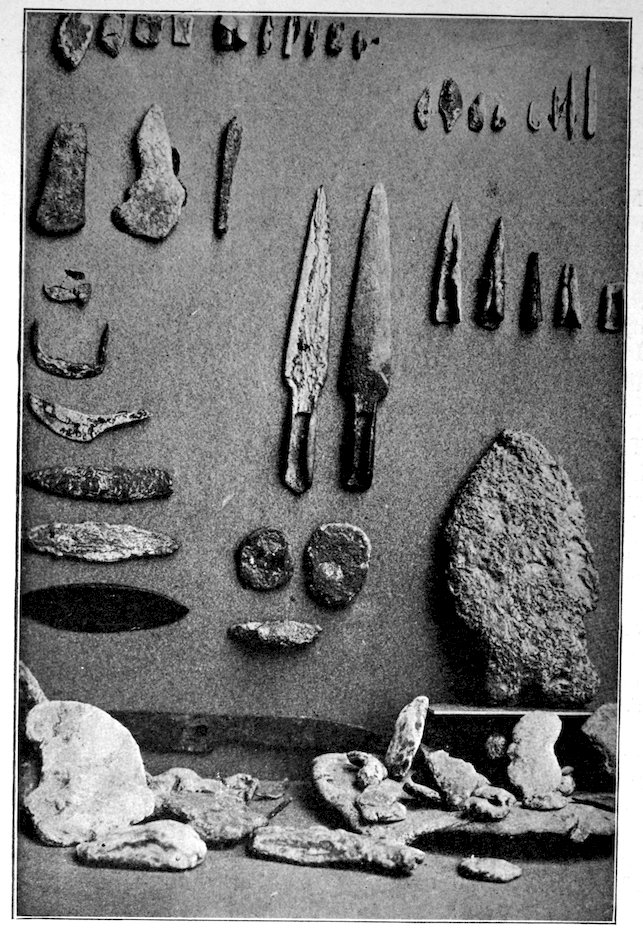
Fig. 568. (S. 1–4.) A group of copper nuggets and implements owned by S. D. Mitchell, Ripon, Wisconsin.

Fig. 569. (S. 5–8.) Copper beads and small cylinders. Collection of S. D. Mitchell, Ripon, Wisconsin.
164A very large number of other specimens are in other public and private collections in Wisconsin and other states. To the activity of the Wisconsin Archæological Society and of its members is due the very great increase in recent years of the number of copper implements in local educational institutions.
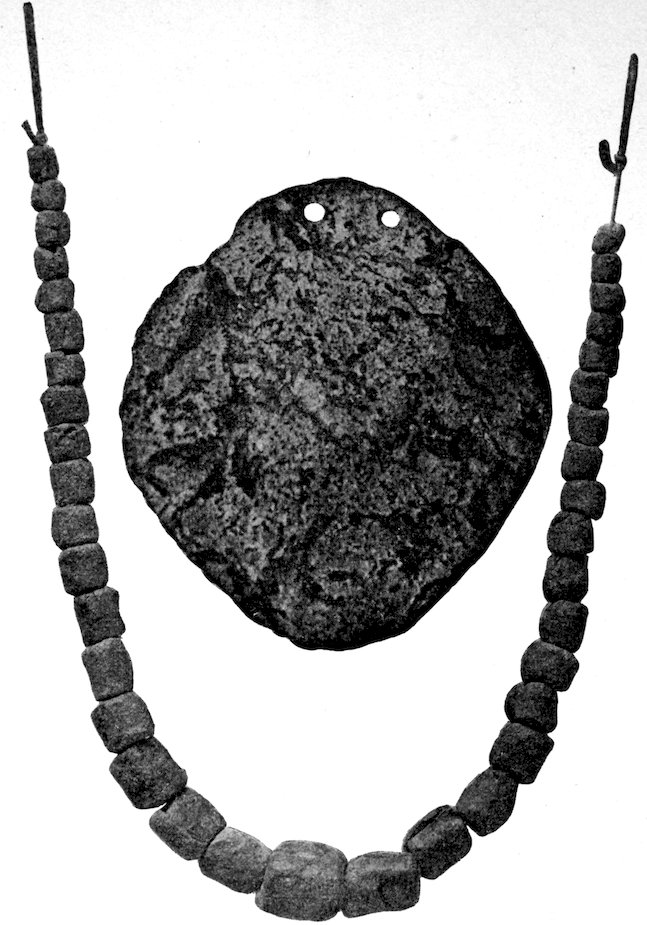
Fig. 570. (S. 2–3.) Copper gorget, W. H. Ellsworth’s collection. Copper beads, H. P. Hamilton’s collection. The gorget came from the banks of Silver Lake, Kenosha County, Wisconsin.
165There is evidence to show that in pioneer days a very considerable number of such implements, their value being unappreciated, found their way into the hands of roving pedlers and junk dealers and afterwards into the founder’s crucible. In several institutions are implements which have been rescued from such a fate.
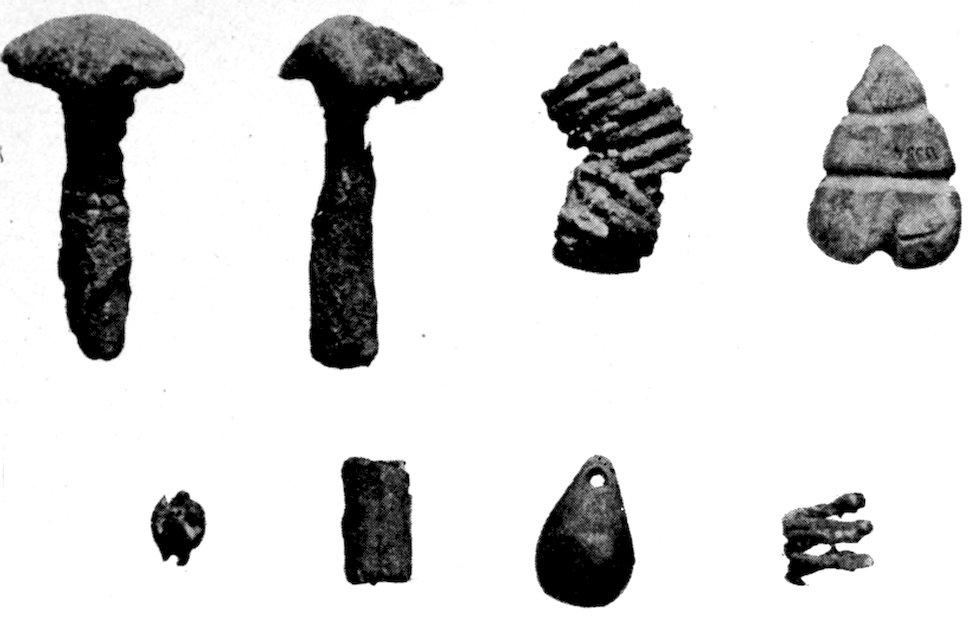
Fig. 571. (S. 1–2.) Copper and stone pendants from the cemetery at the mouth of the Wabash. Andover collection.
Others have been found useful by their original finders and wholly or partially destroyed.
I continue: The conclusion now universally accepted among archæologists is that there is no reason for attributing the working of the copper deposits or fabrication of the implements to any other people than the Indians. The early explorers found both the northern and southern tribes in this country using implements and ornaments of native copper often in common with those of stone. From South America almost to Canada various travellers refer to this metal being in the possession of or employed by the natives. Many of these accounts have been so often quoted by writers on North American archæology that they are entirely familiar to the student, and there is therefore no necessity of repeating them here. There is no doubt that some of these accounts refer to European metal obtained from earlier visitors or traders, or possibly from shipwrecks along the coast. Thus the natives soon became quite proficient in fashioning it into articles adapted or better adapted to their needs than the ruder articles which they then employed.
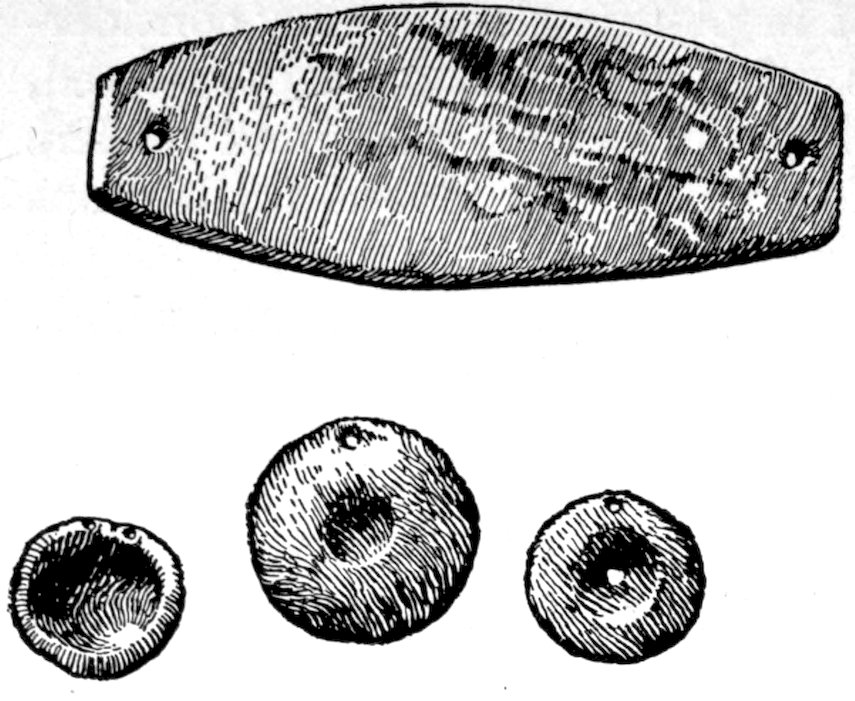
Fig. 572. (S. 1–2.) Copper ornament and discs from the Hopewell Group,
Ohio.
It is equally certain that other accounts refer to the native metal or to objects fashioned therefrom.
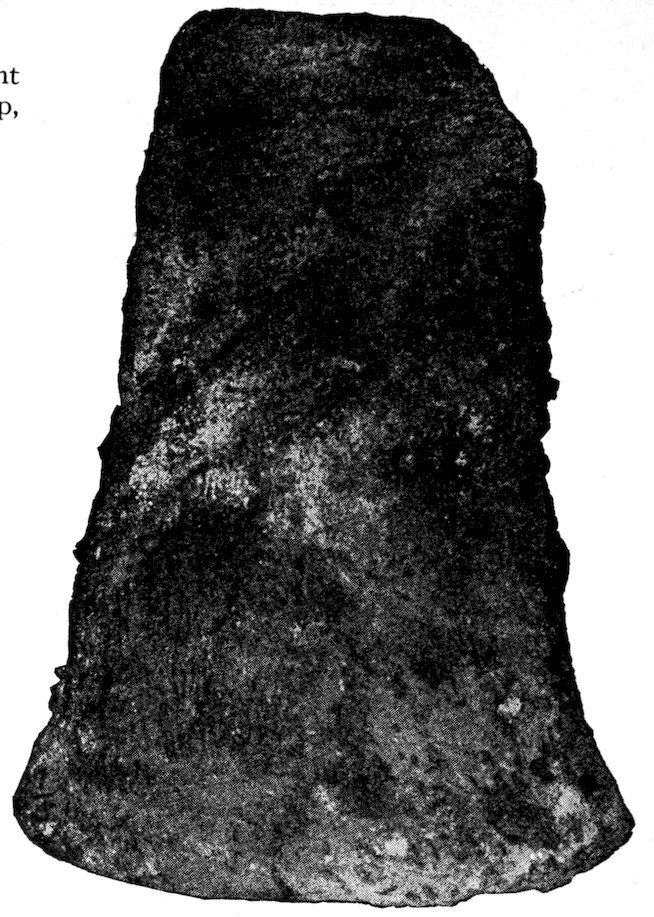
Fig. 573. (S. 7–8.) Copper axe, Harness Mound, Ohio. Professor Mills states: “This axe was taken from a mound belonging to a group eight miles south of Chillicothe. Both sides of the object are greatly corroded and covered with a finely woven fabric. Beneath the fabric there seems to have been the skin of some short-haired animal. The axe was found near the left knee of an uncremated skeleton.”
Whether the working of the copper deposits or the fabrication of copper implements in this section of the country, thought to have been begun at least several centuries before, was discontinued before the coming of the white man, or whether the industry was continued or at least to some extent resumed by the descendants of the pre-Columbian miners and artificers during and after his intrusion, is still in dispute. It is doubtful whether this matter will ever be satisfactorily settled.
The accounts of the Jesuits, as given in the “Relations,” give the impression that while the Wisconsin Indians of that period were evidently familiar with the sources of the metal, they regarded it with superstition and employed it only in a reverential way. Radisson, however, found native copper ornaments in use among the Bœuf (or Buffalo) band of 167Dakota, in Minnesota in 1661–62. Alexander Henry, as a result of his visit to Lake Superior in a later day, stated that the Indians there obtained copper for the manufacture of implements and ornaments. In recent times, Indian agents testified to the use of copper implements among the Wisconsin Winnebago and Chippewa. Native copper implements have also occasionally been recovered from local mounds, where they were found in association with metal kettles, glass beads, and other articles of European manufacture.
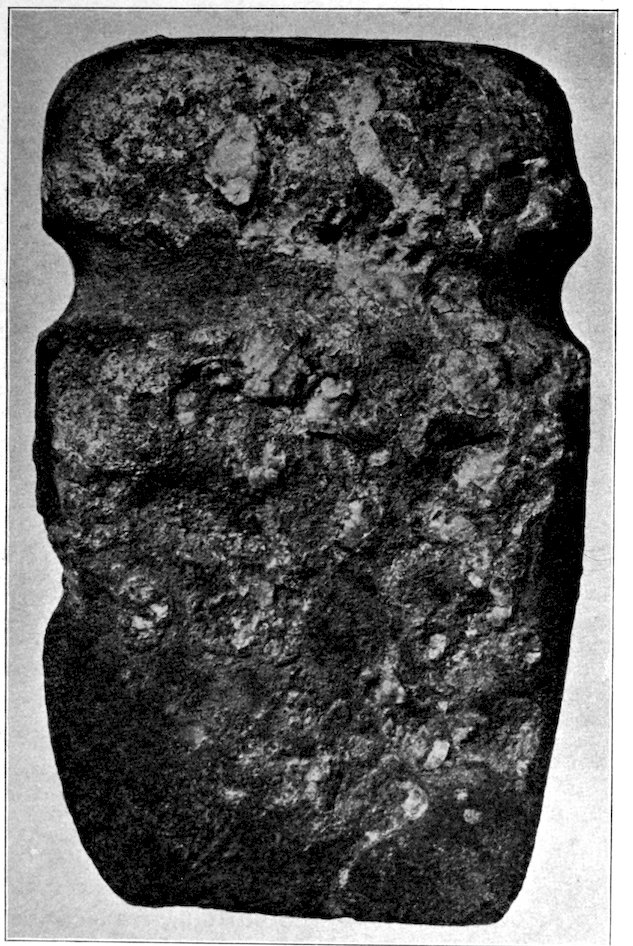
Fig. 574. (S. about 1–1.) From a mound on the banks of Black Snake River, Utah. Milwaukee Public Museum collection.
168The evidence of the mounds and of the earlier village-sites is to the effect that before the coming of white man the use of copper had become quite general among the Indian tribes of the upper Mississippi Valley.

Fig. 575. (S. 1–4.) Copper spuds or axes. Collection of Logan Museum, Beloit, Wisconsin.
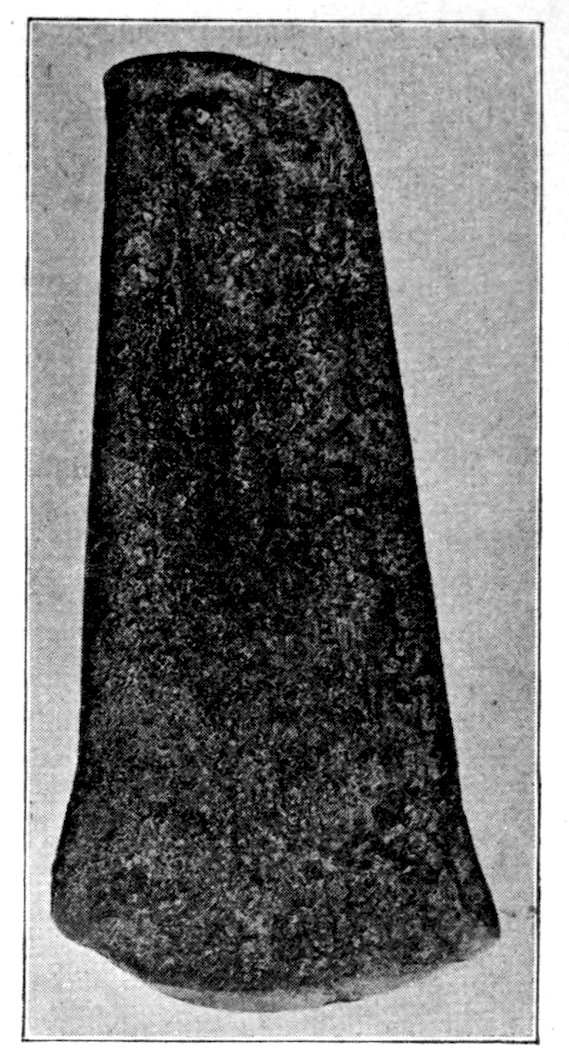
Fig. 576. (S. about 1–3.) Collection of S. D. Mitchell, Ripon, Wisconsin.
It is very probable that the native metal first became known to them through the accidental discovery of small nuggets among the debris of the glaciers, and as it quickly came into demand, was traced to its source in the Lake Superior region. These deposits they mined, cutting it into shapes convenient for transportation to their villages, where it was fashioned into articles for their own use, or for the purpose of trade with distant tribes.
Nowhere in this entire valley do copper implements, however, appear to have entirely replaced those of stone, the use of which was continued until quite recent times. The manufacture of copper implements doubtless extended through several centuries. The Siouan Winnebago and Dakota of Wisconsin, being nearest the source of supply, possessed of course the greatest quantity. Even among them the use of copper artifacts did not in prehistoric times equal the use of others. Among the outlying tribes in other states copper implements were yet probably somewhat of a luxury, when the intrusion of the Algonquian tribes into Wisconsin made more and more difficult, and finally altogether shut out access to the Lake Superior mines. It appears certain that the Chippewa after their occupation of the copper region, did do at least a small amount of digging for the metal which for purposes of trade, or for other uses, they found of value. This continued until the arrival of the traders laden with desirable articles caused a suspension of mining operations, and diverted the attention of the Indian from mining to other pursuits....
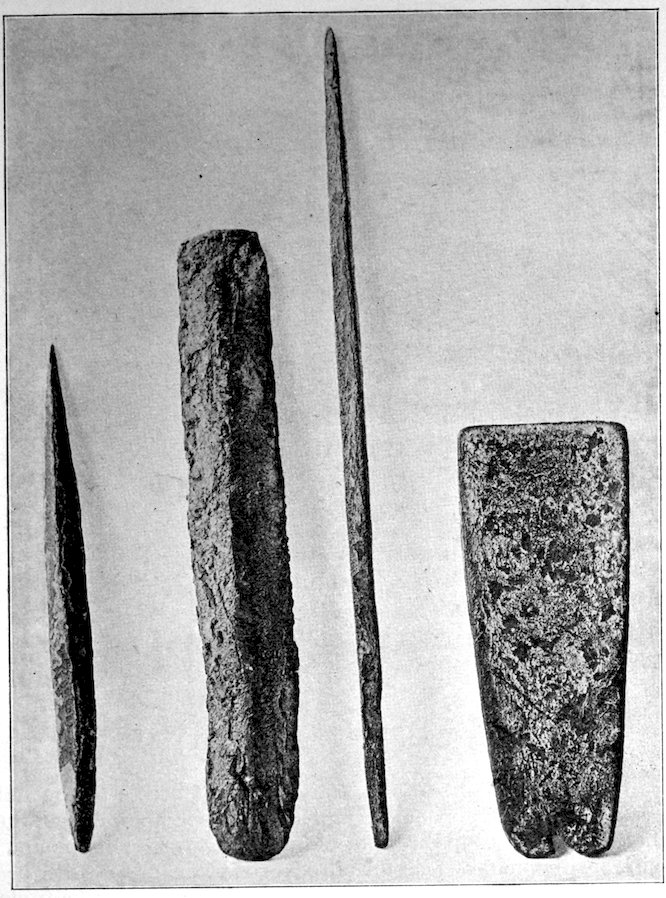
Fig. 577. (S. 5–11.) Copper awls and chisels. Collection of S. D. Mitchell, Ripon, Wisconsin.
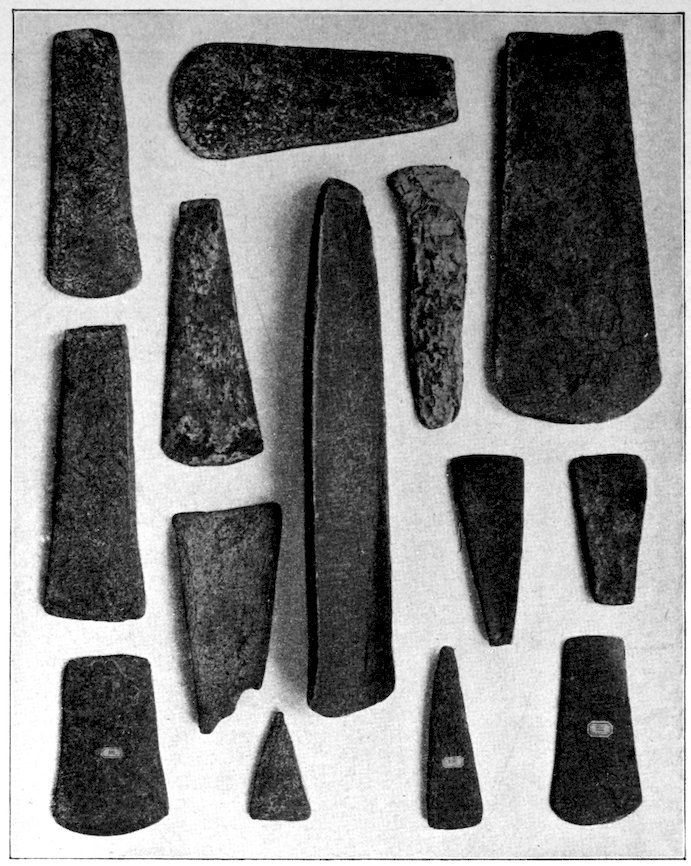
Fig. 578. (S. 1–4.) Copper axes. H. P. Hamilton’s collection, Two Rivers, Wisconsin.
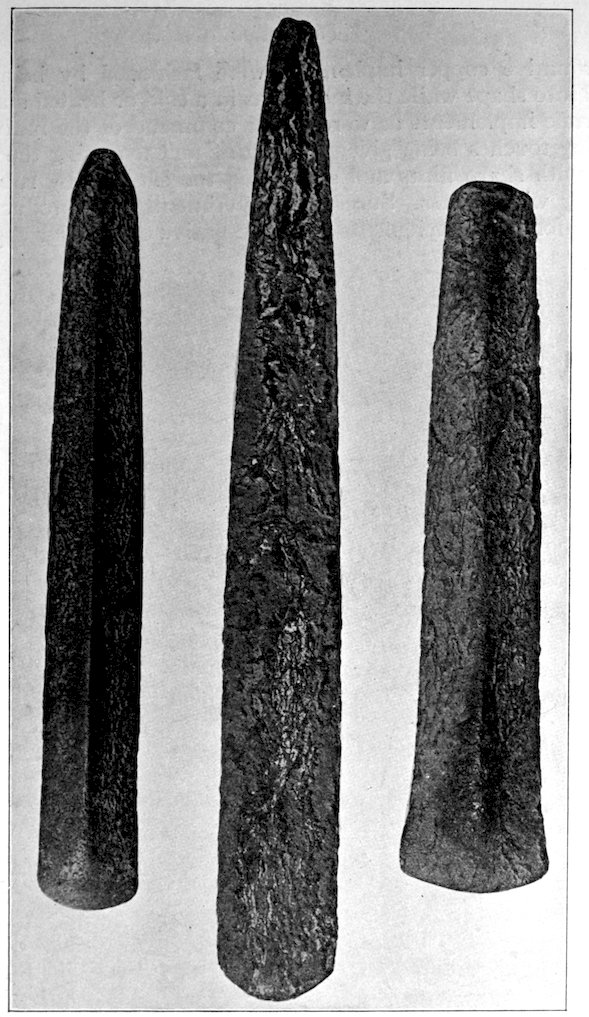
Fig. 579. (S. about 1–2.) Copper chisels; the left and central ones were found near Clintonville, Waupaca County, Wisconsin. The right-hand one, near Chilton, Calumet County, Wisconsin. Milwaukee Public Museum collection.
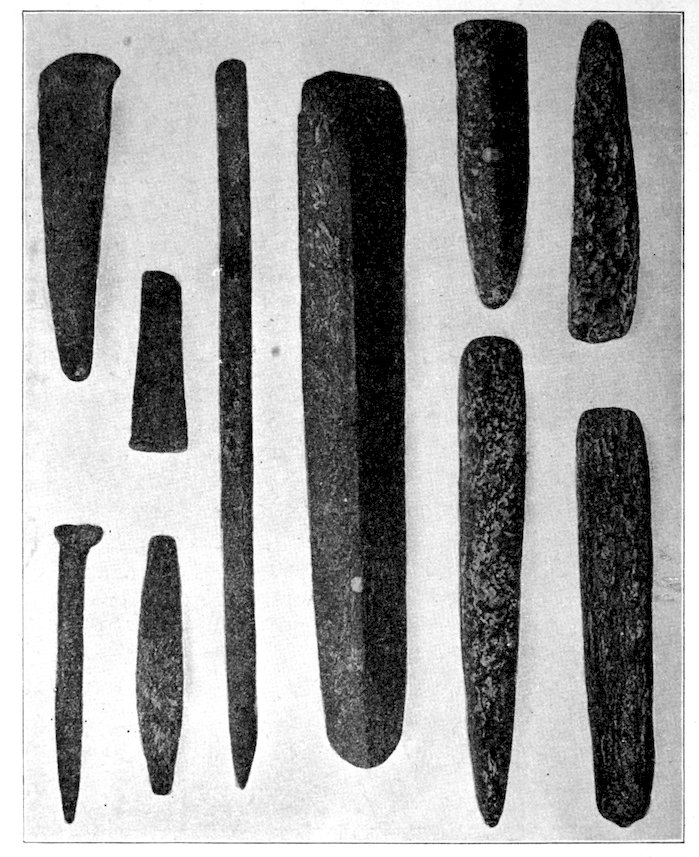
Fig. 580. (S. about 1–4.) Three copper punches and seven chisels. H. P. Hamilton’s collection, Two Rivers, Wisconsin.
Our native copper implements were fashioned by being hammered into shape while the metal was in a cold or heated state with such rude implements as were at the command of the natives, the finishing touches being given by cutting and trimming the uneven edges with sharp flints and smoothing the surfaces by rubbing or grinding with stones. Successful experiments in reproducing the various forms of implements from the native or nodular copper by 173these primitive processes have been made by the late Frank H. Cushing, and by other archæologists. Mr. Gerard Fowke is authority for the following statement:—
“So far as its working qualities are concerned, copper at ordinary temperature is much more malleable than pure soft iron; and it is much more easily worked into shape when at a red heat than when cold. If hammered cold it must be annealed occasionally, otherwise it becomes brittle. It is somewhat hardened by pounding, which will account for the harder edge of celts and other aboriginal specimens beaten out thin.”[26]
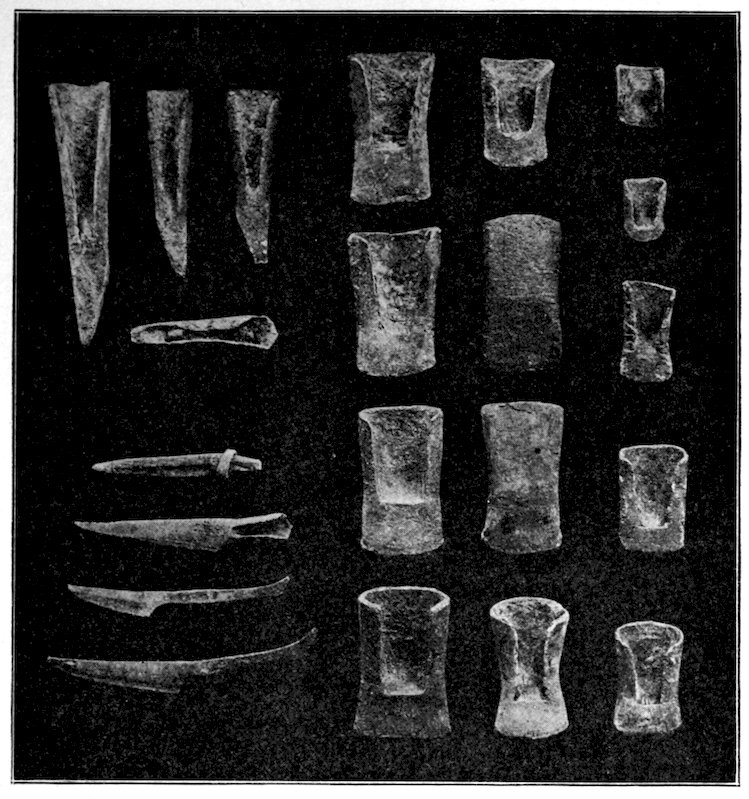
Fig. 581. (S. 1–5.) Collection of J. T. Reeder, Houghton, Michigan. 13 copper spuds, 4 pick-pointed knives, 4 knives. All except one from Michigan.
The theory that any of these implements may have been cast is now discarded by archæologists. There is no evidence to show 174that our local aborigines possessed any knowledge of the working of this metal in the broad sense.
“Even if copper could be melted in an open fire, which is very doubtful, it must not be overlooked that Indians had no materials of which to make crucibles or moulds capable of withstanding such heat. Admitting they had clay receptacles which would have answered these purposes, there is no way of handling the molten metal with safety.”[27]
While it is probable that many copper implements were fabricated in the vicinity of the workings, it is now perfectly clear that fragments of the native ore were also carried away to be cut up and fashioned into implements elsewhere. The possession of such masses by the aborigines was noted by the early explorers and missionaries. On the extensive village-sites at Two Rivers, Sheboygan, Green Lake, and elsewhere have been obtained numerous small chips, scales, and fragments of copper, plainly indicating that the manufacture of implements was carried on there. Elsewhere in the state have been found lumps of the metal exhibiting tool-marks, and other indications of working.
To fully discuss this phase of the subject would require many pages. The student must therefore content himself with such information as can be condensed into a comparatively limited space.
Implements and ornaments of native copper are distributed commonly or sparingly throughout a large portion of the eastern half of the United States and in some states west of the Mississippi River. Outside of our own state, numbers of them have been recovered in Minnesota, Iowa, Illinois, Ohio, and West Virginia, and also from the mounds and stone graves and village-sites in the states of Kentucky, Tennessee, North Carolina, and Georgia. Mr. Clarence B. Moore, whose explorations have been very extensive, has reported their existence in the mounds of Florida and elsewhere in the extreme South. From five mounds on the St. John’s River in Florida he obtained ornaments of sheet-copper with repoussé designs, beads of sheet-copper, beads of wood, shell, and limestone copper coated, copper effigies of the turtle and the serpent, and piercing implements of copper. Dr. C. C. Abbott long ago recorded the existence of copper implements in the Delaware Valley.
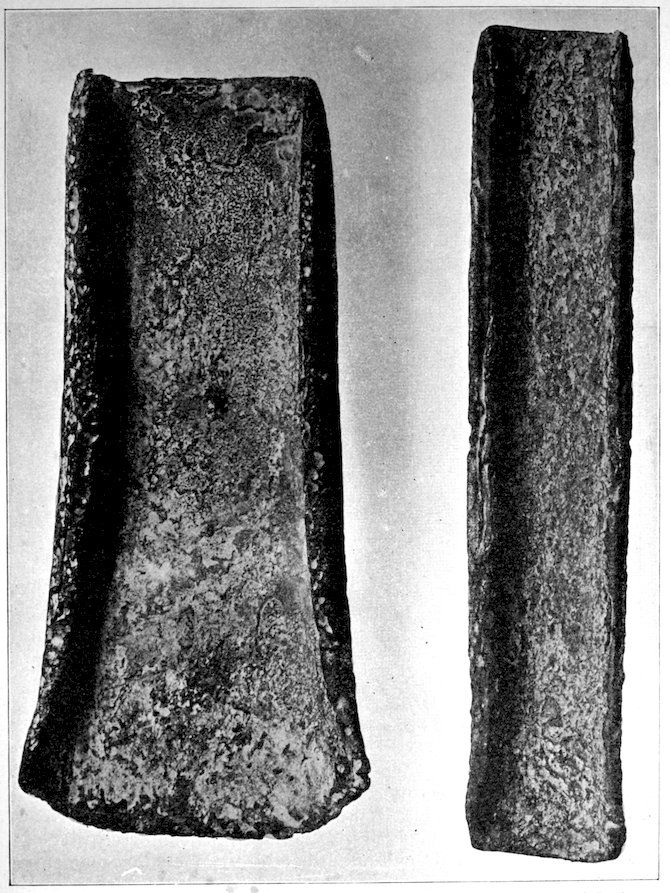
Fig. 582. (S. 3–4.) Copper gouges. The one to the left was found near Westford, Dodge County, Wisconsin. The one to the right was found near Chilton, Wisconsin.
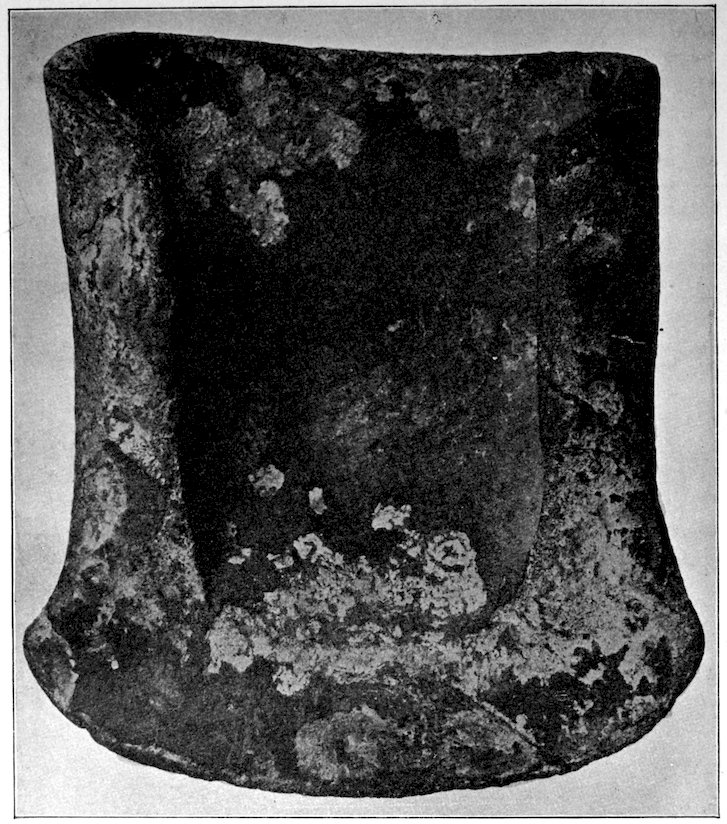
Fig. 583. (S. 1–1.) Copper spud from Mercer, Iron County, Wisconsin. Loaned to the Milwaukee Public Museum by Mr. R. L. Ball.
As a result of his researches, Rev. W. M. Beauchamp recently issued under the auspices of the University of the State of New York, at Albany, two finely illustrated bulletins, one descriptive of the metallic implements and the other of the metallic ornaments of the New York Indians.
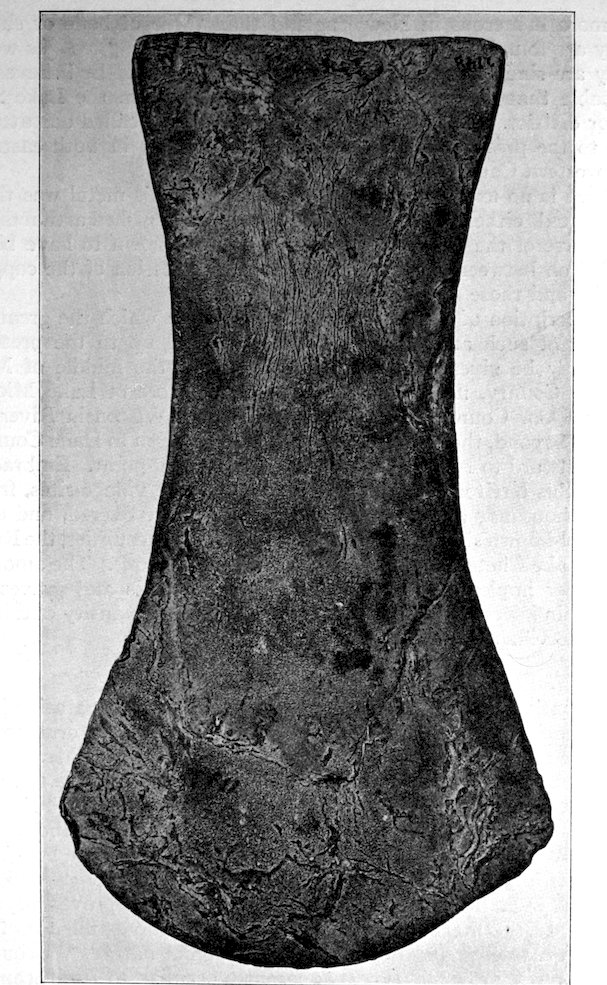
Fig. 584. (S. 5–6.) Copper axe. Found in a mound on Green Bay Road, one mile north of Milwaukee. Milwaukee Public Museum collection.
178Professor G. H. Perkins states that objects of this metal are far more numerous in New England than those of bone or shell. They are found not only on the surface, but in the graves as well. They are similar in form to Wisconsin artifacts, and he believes it probable that all are made of metal obtained from the Lake Superior district. Dr. David Boyle and others have called our attention to the presence of native copper implements in both eastern and western Canada.
There is no longer any doubt that much of this metal was thus distributed, either in the unworked state or as finished artifacts, in the course of the trades or regular exchanges known to have been carried on between the aborigines holding possession of the copper district and those of other regions.
A description of the Wisconsin districts from which the greatest number of such artifacts have been recovered up to the present time may be given as extending from about the middle of Milwaukee County, northward along the west shore of Lake Michigan to Door County, thence westward to the Wisconsin River or slightly beyond, thence southward along this stream to Dane County and eastward to Milwaukee County, the starting-point. Embraced within this territory are the extensive lake shore village-sites, from which thousands of articles have already been recovered, and certain well-known sites in Green Lake and adjoining counties, the Rush Lake, Lake Chetek, and similarly productive regions. The amount of copper implements obtained from the mounds and graves of Wisconsin is very small when compared with the quantity obtained from the village-sites and fields.
The native copper artifacts of Wisconsin admit of separation into two principal classes, designated as implements and ornaments. Of these the former class is by far the more numerous. Mr. Henry P. Hamilton estimates that articles of utility constitute fully 95 per cent of the copper artifacts found in Wisconsin.
It is but natural that on account of its proximity to the source of supply we should find in our own state not only a more bountiful supply of implements, but a greater range of classes, types, and varieties as well. The correctness of this conclusion is proven beyond doubt. In the matter of the number and artistic excellence of its copper ornaments and objects of a ceremonial nature, Wisconsin, while possessing some types apparently peculiar to itself, cannot properly be said to lead. The artistically cut or embossed sheet-copper discs, gorgets, and plates, the spool-shaped objects and copper-sheathed stone and wooden ornaments of Ohio, Illinois, and the South, are here conspicuous by their almost total absence.

Fig. 585. (S. 1–1.) Copper spud with incised zigzag decoration. Fond du Lac, Wisconsin. Milwaukee Public Museum collection.
180No one Wisconsin collection contains all of the classes and types of the implements described in this bulletin. An examination of almost any local copper cabinet, however small, is almost certain to reveal the presence of some object that is original or peculiar; or some variation of a well-known type not elsewhere to be seen. The difficulties attending the making of a proper classification are therefore apparent. Especially among the objects classed as arrow- and spear-points the number of well-established types, of varieties and infrequent forms, is particularly numerous. In a somewhat lesser degree this is also true of other classes of implements.
Among spear- and arrow-points especially, there appears to be a gradual development from the primitive leaf-shaped, through the stemmed, to the numerous and well-executed socketed forms. In this case the important element in the transition from one form to another is in the manner of hafting. A gradual transition in some instances from well-marked types of one class into those of another may also be noted. The uses of many of these implements, because of their close resemblance to modern articles, are readily understood. The precise function of others is not so readily ascertained.
An examination of a large series of any of these should convince us that each had its special function, although probably also employed for such other exigencies as might arise.
In the following pages the various classes of local copper implements and ornaments are described and such information and suggestions concerning their workmanship, purposes, frequency, and distribution given as is now obtainable.
Large numbers of these implements have been recovered from Wisconsin soil and are to-day represented by one or several examples in nearly every local copper collection. They vary in weight from half a pound to three pounds, rarely more, and in size from three to ten inches. So far as is known no hafted copper axe has yet been recovered. Probably the usual and most satisfactory method of hafting one of these implements was to insert it between the parts of a cleft stick, to which it was afterwards secured by winding the stick above and below it with strips of hide, a number of turns being also taken around or across it. There are at least three well-established types of these implements, which may be briefly described as follows:—
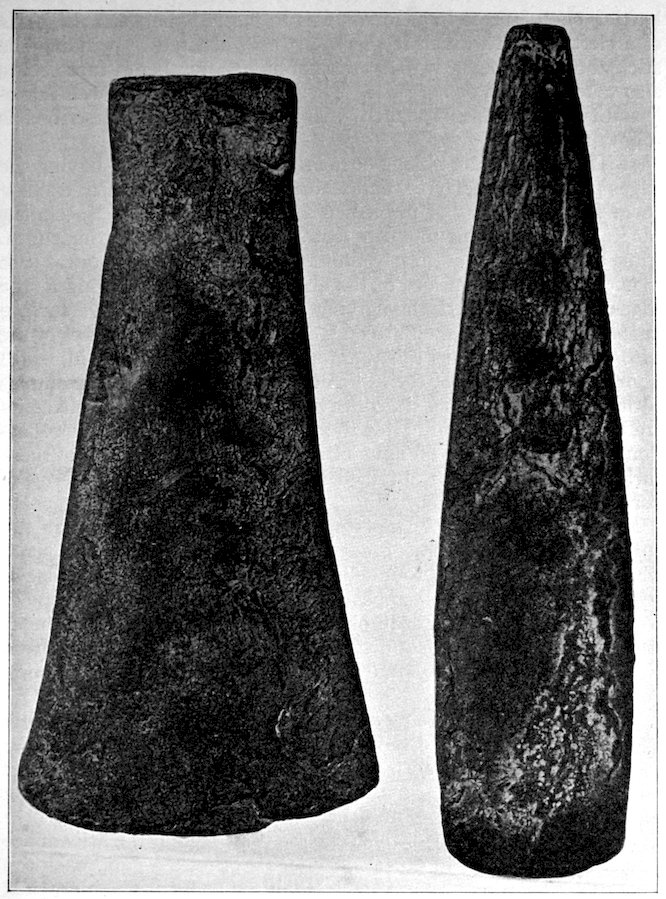
Fig. 586. (S. 2–3.) Copper axe, Washington County, Wisconsin. Copper chisel, near Charleston, Calumet County, Wisconsin.
1821. Those which are oblong or nearly oblong in outline, having the edges parallel or nearly so, and whose breadth is such as to exclude them from the class of implements known as chisels. Specimens range from less than four up to seven or more inches in length. They are generally of nearly uniform thickness throughout. (See Figs. 576, 578.) A variety of the above type has the margin at the edges slightly elevated, thus giving a depressed or concave surface in the centre, and from end to end, on one or both broad faces of the axe. In some examples this margin is fully one half inch in width at or near the middle of the axe. A curious feature of some examples of this uncommon form is the concave cutting edge. Such implements are to be seen in a number of the larger public and private collections in Wisconsin. So far as can be ascertained no examples of these curious axes have been obtained in surrounding states, where the normal form also occurs.
2. Axes with straight, tapering edges. They are widest at the cutting edge and become gradually narrower towards the head, which is either square, rounded, or pointed. The cutting edge is straight or convex. This appears to be the most common type of copper axe. The largest example known is fourteen inches in length and the smallest only two inches. The large specimen comes from Neillsville, Clark County, and is in the State Historical Museum. (See Fig. 578.)
3. A third and less frequent type has the edges curving equally from the cutting edge to the head. Most examples are quite thin, broad and flat. The head is square and sometimes nearly as broad as the cutting edge. By reason of their broad, expanding cutting edges, some of these axes may be appropriately described as bell-shaped. Fine specimens of this type are to be seen in the Milwaukee Public Museum, and in other collections. These axes approach the modern axes in form. In the H. P. Hamilton collection is a notched copper axe which comes from the vicinity of Horicon. It is rather rude and is irregularly oval in outline. Mr. M. C. Long has in his Kansas City collection the only grooved copper axe known.
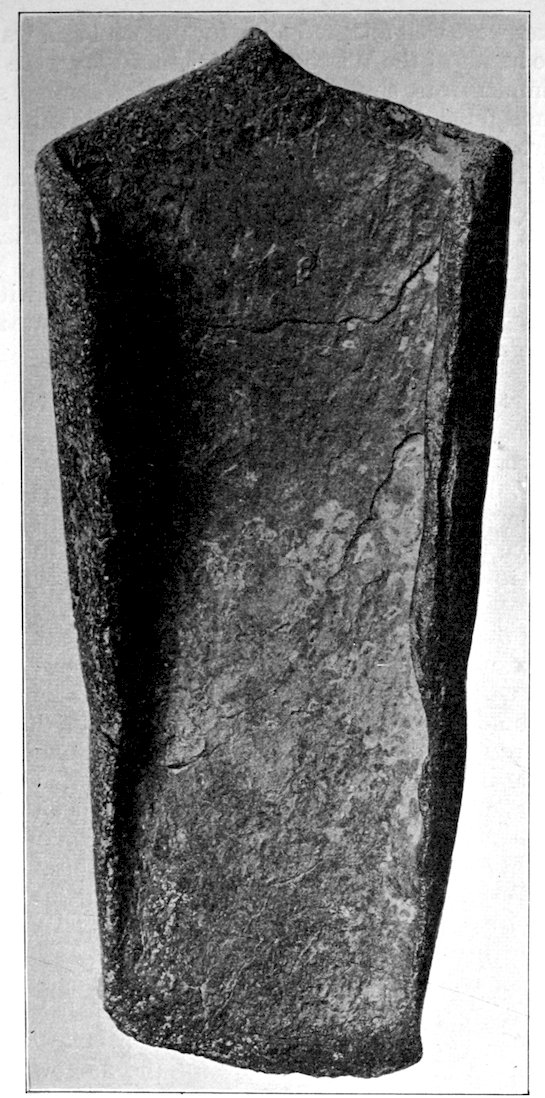
Fig. 587. (S. 1–1.) Copper spud, Island Lake, near Gagan, Oneida County, Wisconsin. Milwaukee Public Museum collection.
184Copper axes were well adapted alike for peaceful and warlike pursuits. In the hands of the Wisconsin aborigines they were undoubtedly useful implements, superseding at best the clumsy stone axe or hatchet, and possibly being in their turn laid aside for the more serviceable iron axe of the fur-trader.
Employed in warfare or the chase they would be terrible weapons. As tools they were probably especially useful in the felling of trees, the shaping of log canoes, the erection of dwellings, barricades, and stockades.
They may have been employed in connection with or without fire. It has been suggested that some of the smaller implements may have served as wedges.
The aboriginal copper implements known as chisels are of nearly as frequent occurrence in local cabinets as the implements of the foregoing class. In the H. P. Hamilton collection there is to be seen an especially fine series of at least a dozen or more examples, ranging in size from five to fifteen inches and in weight from five ounces to five and three fourths pounds. An equally fine series is in the Field Museum.
The office of these fine implements probably included the excavating of wooden canoes, mortars, and other vessels. Their employment in connection with the mining operations of the Indians has been mentioned. Some specimens exhibit upon their heads the flattening which would result from their being used in conjunction with a wooden mallet, club, stone, or other weighty object. Others show no such marks and were probably employed without such agencies. Rev. W. M. Beauchamp states that a large proportion of the copper articles found in New York are of the celt (axe) or chisel form. Professor G. H. Perkins has described similar implements from New England. At least three distinct types of these implements are known to occur in Wisconsin:—
1. The first of these is broadest at the cutting edge. The edges taper gradually upward from the cutting edge to a pointed, rounded, or squared head. They are usually thickest at or below the middle, the flat or convex surface sloping toward the narrow extremity. Some of these have the upper surface convex and the lower surface flat. The broad or narrow sides may be either convex or flat. Fine implements of this form are to be seen in the H. P. Hamilton, State Historical Museum, and other local collections. A few approach fourteen inches in length. (See Fig. 579.)
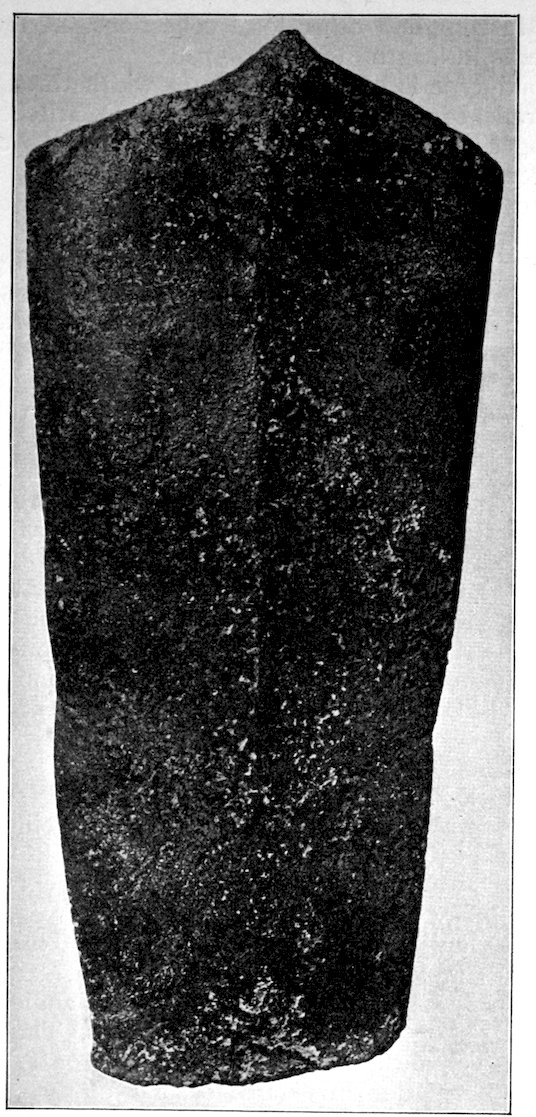
Fig. 588. (S. 1–1.) Back view of Fig. 587. Milwaukee Public Museum collection.
1862. A second type is of nearly uniform width throughout, with straight, parallel edges. A specimen in the S. D. Mitchell collection has a cutting edge at either extremity. Implements of this type are to be seen in various Wisconsin cabinets. They range from about five to ten or more inches in length, and from one and one half to two inches in width. (See Fig. 580.)
3. A third and less frequent type is characterized by a more or less prominent median ridge, which traverses its upper surface from within an inch or more of the cutting edge to the opposite extremity. From this ridge the surface bevels off evenly on either side toward the edge. The lower surface is usually flat, thus giving a triangular section. The edges are generally parallel for at least three quarters of the distance back from the cutting edge, whence they taper or curve gradually to the rounded head. A few are of nearly uniform width throughout, with an angular or squared head. Several of these implements have the upper extremity abruptly narrowed and prolonged into a short tang, as if intended to be set into a wooden handle. A few are curved or bowed from extremity to extremity. Some specimens have an expanded, curved cutting edge. One of the largest of these ridged chisels is fourteen and three fourths inches in length. It is in the H. P. Hamilton collection and comes from the town of Oshkosh, Winnebago County. (See specimen to the left, Fig. 579.)
In northwestern Wisconsin have been obtained a limited number of copper implements bearing a close resemblance in form to some of the so-called stone spuds or spade-shaped implements, after which they were probably patterned. They are rather broad, flat implements, of nearly uniform thickness throughout, and from six to eight or more inches in length. The broad, narrow blades are semicircular or crescentic in outline. From them the handle tapers backward to a squared or slightly rounded extremity. The narrow sides are flattened. The author is indebted to Professor T. H. Lewis for sketches and information in regard to some of these, which were obtained by him at Lake Chetek, Barron County, Wisconsin; at St. Paul, Minnesota, and at Ontonagon, Michigan.
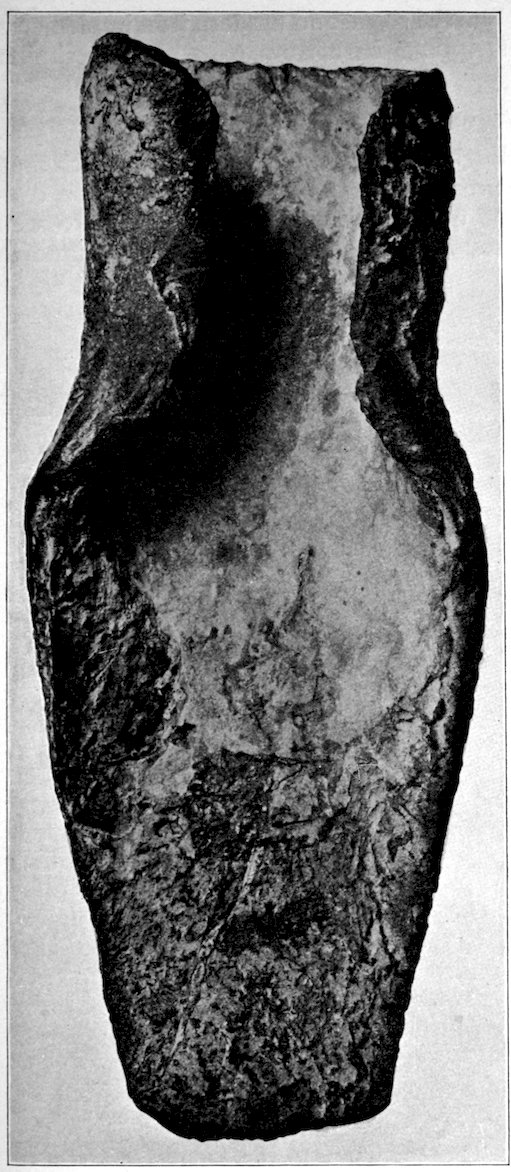
Fig. 589. (S. 6–7.) Copper spud from near Pewaukee Lake, Waukesha County, Wisconsin.

Fig. 590. (S. 3–5.) Copper spear. S. D. Mitchell’s collection, Ripon, Wisconsin.
188The conclusion, probably correct, in regard to these implements is that they were employed, like the stone and modern iron implements which they resemble, in stripping bark from trees and for similar purposes.
These implements are closely allied to the chisels, from which they are distinguished by the presence on their lower surface of a concavity sometimes reaching quite to the middle. They are well adapted for working out rounded or oval holes or hollows, and in Wisconsin are generally considered to have been wood-working tools. Elsewhere they were probably also employed like the more common stone gouges in quarrying and working steatite, catlinite, and similar deposits useful to the aborigines. Such implements are to be seen in the H. P. Hamilton, Field Museum, and one or two other collections.
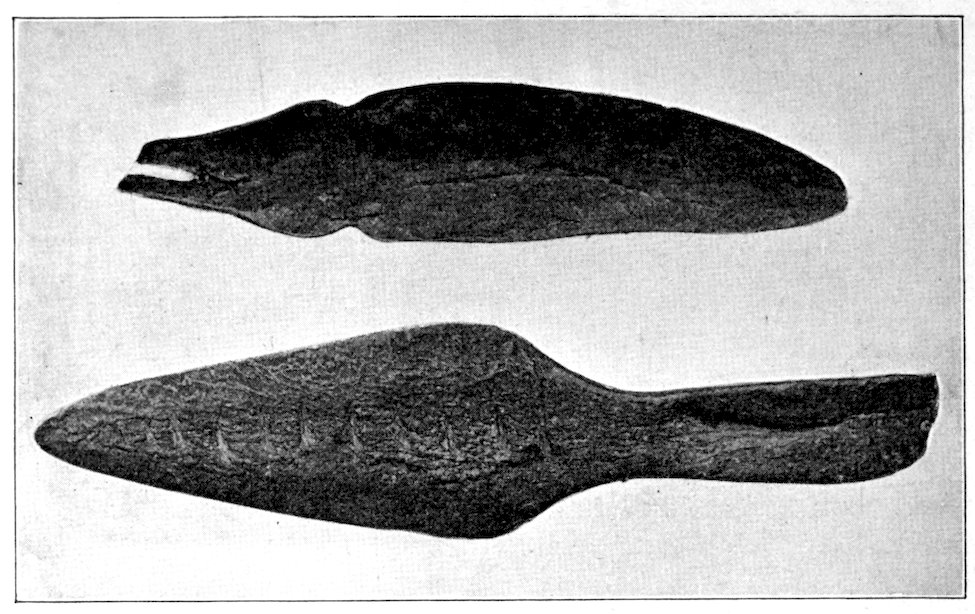
Fig. 591. (S. about 1–1.) Copper spears. Found on Bluff Point, near Penn Yan, New York. Collection of L. G. Ogden, Penn Yan, New York.
Several specimens known to the author approach seven inches in length.
Professor Perkins mentions copper gouges as being rare in New England, where stone gouges are a common and characteristic implement. Neither stone nor metal gouges are of frequent occurrence in Wisconsin.
These implements have also been called spuds, winged chisels, and hoes. Of these the term “spud,” though unsatisfactory, appears to be that in most general use at the present time. This name, as has already been shown, is likewise applied to a rather numerous class of stone implements of quite different pattern and use. Several theories as to the possible function of these implements have been advanced. It has been suggested that they were ice-cutting tools, or agricultural implements.
An examination of a large series of them suggests the correctness of the now prevailing opinion that they were employed in shaping wooden canoes and executing tasks of a like nature. Properly hafted, their general adaptability to such service is plain.

Fig. 592. (S. 1–2.) Various copper implements. University of Vermont collection.
190A somewhat similar tool is also employed by modern woodworkers.
1. There are at least two well-marked types of these implements. The first of these is generally nearly square, less frequently oblong in outline. The flanges of the implement are turned inward to form a socket, at the base of which is a hip or shoulder, against which the tip of the wooden handle abuts. The blade is elevated above the socket and is provided with a straight or slightly curved cutting edge. The back of the implement, opposite the socket, is flat or transversely convex, and slopes or curves downward to the cutting edge. This is certainly the most common type, and has been obtained in many parts of Wisconsin, Michigan, and Minnesota. Examples have also been collected in Ohio, Illinois, and Iowa. The average specimen appears to be about three inches in length by two and a half inches in width. The smallest known is only one and a fourth inches and the largest six and a fourth inches in length. Fine series of these implements are to be seen in the Logan Museum, Field Museum, State Historical Museum, Milwaukee Museum, H. P. Hamilton, and other collections. In weight adzes of this type vary from a few ounces to one and a half or more pounds. (Fig. 581.)
2. A second type differs from the preceding mainly in the fact that the extremity of the socket is angular in outline and that the flanges are bent straight upward or inward, instead of curved. The hip at the base of the socket is also often absent. The back is generally flat or transversely rounded, and in some specimens traversed from the top to the cutting edge by a pronounced median ridge. A specimen in the Milwaukee Public Museum has the middle of its back ornamented with a double row of zigzag incisions. Its blade is also ornamented. (Fig. 583.)
These implements are as a class larger than the foregoing. Of a dozen or more examples which the writer has examined in the Hamilton and other local cabinets, none are below five inches in length and two and a fourth inches in breadth, the largest known being six inches in length and three inches in breadth. The weight of these specimens ranges from twelve ounces to nearly two pounds.
There are also a small number of peculiar forms, each represented by a single example. These vary in the length and breadth of the flanges and the shape of the blade. When a sufficient number of these shall have been recovered, it may be advisable to expand the present classification to include them. Many of the implements included in the adze class are admirable for their symmetry and perfection. A specimen secured in the Lake Superior region has a portion of the wooden handle still fitted in the socket.
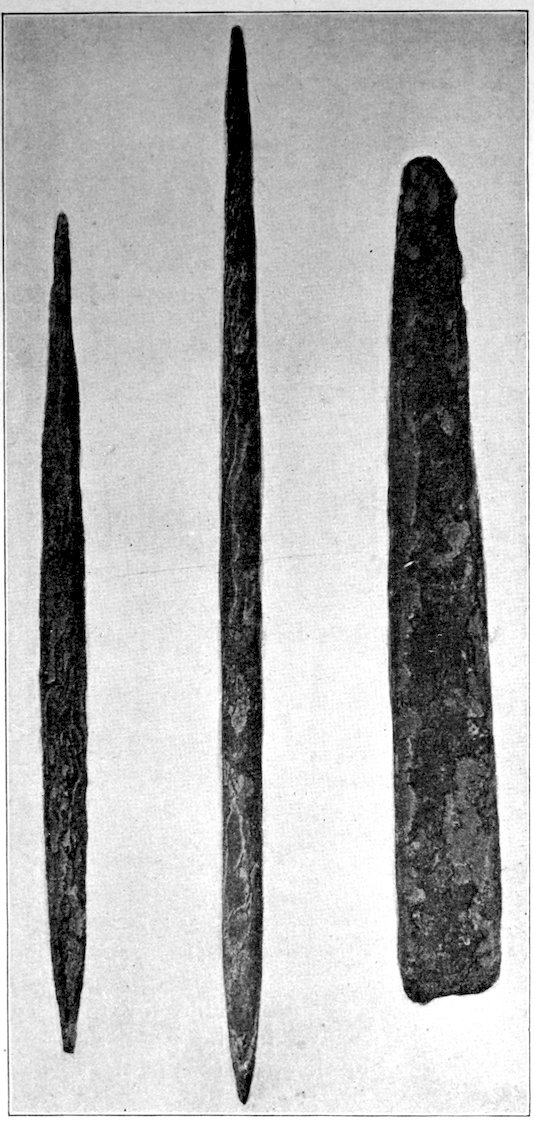
Fig. 593. (S. 2–3.) Copper chisel and awls. Logan Museum collection, Beloit, Wisconsin.
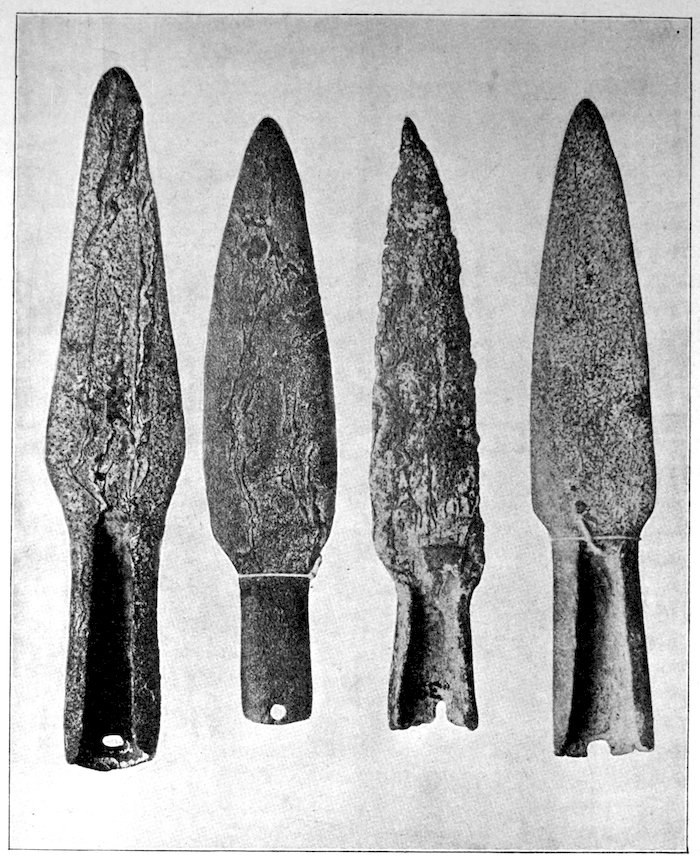
Fig. 594. (S. 2–3.) Copper spears. Collection of the Logan Museum, Beloit, Wisconsin.
Of the copper implements known as spatulas only a small number of examples have as yet been recovered in Wisconsin. The blade of these artifacts is usually broad and thin and irregularly rounded or somewhat triangular in outline. The handle is short, seldom more than three eighths of an inch in thickness, and nearly square or somewhat rectangular in section. Specimens are to be seen in the State Historical Museum, Milwaukee Public Museum, and other local collections. They range from four to nearly six inches in length.
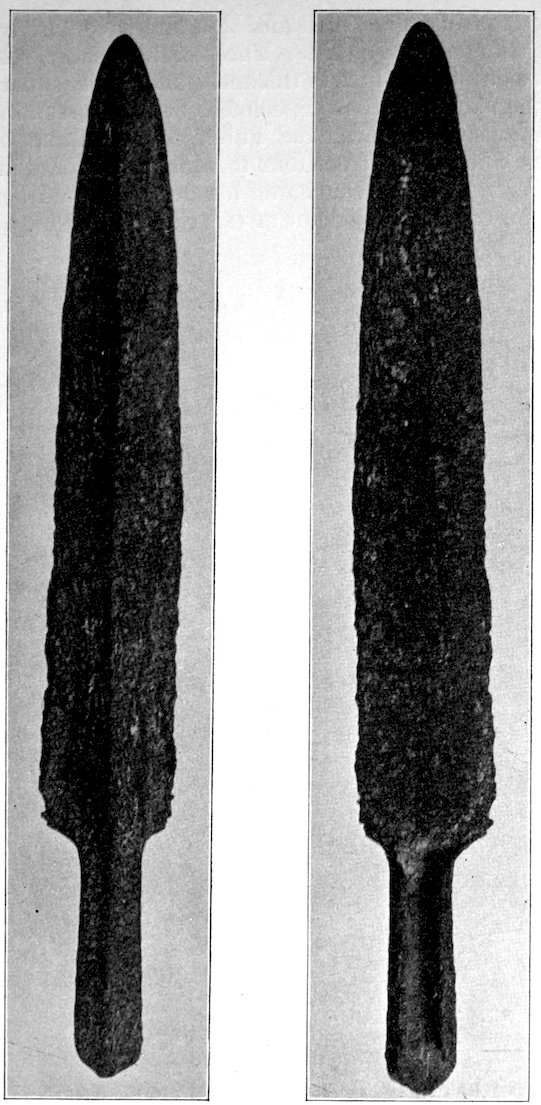
Fig. 595. (S. about 3–4.) Copper ridged spear-point, socket tang. From Coloma, Waukesha County, Wisconsin. Milwaukee Public Museum collection.
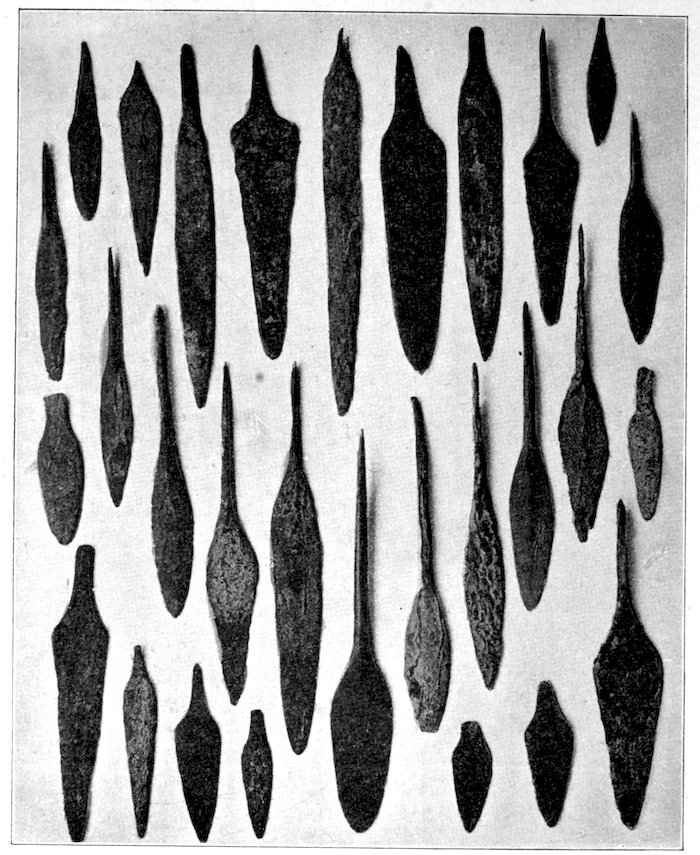
Fig. 596. (S. 1–4.) Copper spears. Collection of H. P. Hamilton, Two Rivers, Wisconsin.
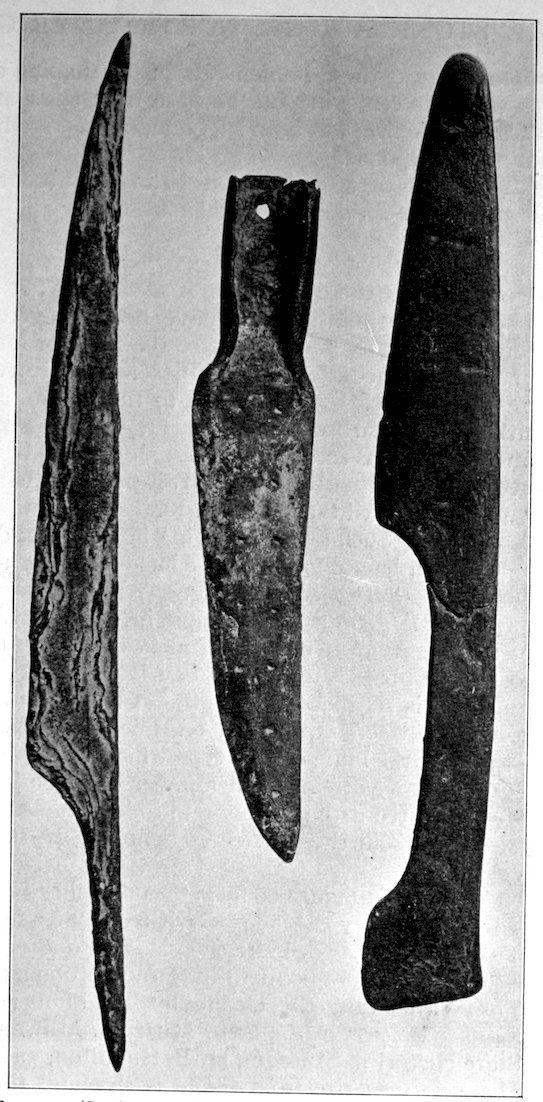
Fig. 597. (S. about 3–5.) Copper knives. Left to right: Hartford, Washington County, Wisconsin; Merton, Waukesha County, Wisconsin; Wayne, Washington County, Wisconsin.
196The Reverend W. H. Beauchamp has described and figured both an iron and a copper implement of this class from New York. The possible employment of these implements in the shaping of aboriginal earthenware, the removing of the flesh from skins and bones, and of the scales from fish, has been suggested. They are but poorly adapted for use as spoons.
The small number of specimens on hand at present makes it undesirable to venture an opinion of their utility.
In point of numbers these easily rank second to the numerous class of socketed spear-points. They have been recovered in considerable numbers in many parts of the state. At least four distinct types and some intermediate and peculiar forms are recognized. The close resemblance of some of these to the white man’s knife has frequently been remarked upon.
1. The most frequent form has a usually straight back and oblique curved or straight cutting edge. It is provided with a generally short, tapering, pointed tang, suitable for insertion into a wooden, bone, or horn handle. Such knives, ranging in size from diminutive specimens one inch in length up to twelve inches, are not uncommon in local collections. (Left specimen, Fig. 597.)
An exceptionally large and fine example in the Oshkosh Library collection measures seventeen and a half inches in length and weighs eleven ounces. The blade is one and a half inches in breadth at its base, and the tang is six inches in length. A few have the cutting edge of the blade beveled. In the R. Kuehne collection is a small hammered native silver knife of this type which was obtained from the vicinity of Sheboygan. A small number of these knives have their blades ornamented with incisions and indentations. Specimens of these are to be seen in the H. George Schuette, H. P. Hamilton, and other collections.
2. A second type is distinguished from the preceding by the greater breadth of its broad curved blade, which terminates in a broadly rounded point. In this style of knife the blade on one or both sides is frequently traversed from point to tang by a pronounced median ridge. The broad, flat tang also terminates in a blunt point. Such implements are to be seen in the Field Museum, Milwaukee Public Museum, State Historical Museum, H. P. Hamilton, and other collections. These vary in size from six to twelve and three fourths inches in length and from one and a fourth to two and an eighth inches in the extreme breadth of the blade. (One in Fig. 568.)
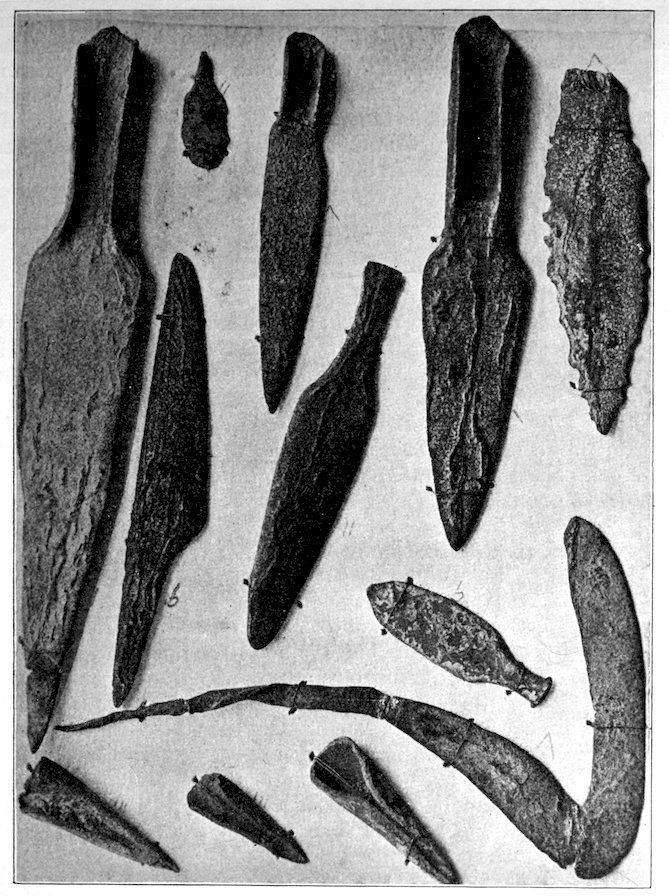
Fig. 598. (S. 2–3.) Copper spears, knives, and arrow-points. Collection of S. D. Mitchell, Ripon, Wisconsin.
1983. A third type, locally known as the “handled copper knife,” differs from the preceding styles mainly in having the tang so uniformly broad as to obviate the necessity of a wooden or other handle. Only a small number of these are in collections. A fine specimen is seven inches in length. The handle is two and a half inches in length, and of a nearly uniform breadth of three fourths of an inch. It comes from Pardeeville, Columbia County, and is in the Logan Museum at Beloit. A knife in the J. T. Reeder collection, at Houghton, Michigan, has a broad copper ferule still encircling its tang. The tip of the tang is bent over, meeting the ferule. (Fig. 581, left specimen, near centre.)
4. Socketed knives. These resemble the knives of the type first described in the shape of their blades. They are provided with a socket similar to those of the socketed spears. A small number of these have been found and are to be seen in the H. P. Hamilton, H. George Schuette, and other Wisconsin collections. They range from two to nine inches in size.
In these knives the cutting edge is usually along the right, rarely along the left side of the blade. A specimen in a Milwaukee collection has its blade ornamented with indentations. A small number of knives of peculiar forms are also to be seen in local cabinets. (See Fig. 597.)
1. Leaf-shaped points. (Fig. 598, upper right-hand specimen.) These vary considerably in form and size, measuring from two to six or more inches in length. The average size appears to be about four inches. Some are oval in outline, others elliptical, lanceolate, or almond-shaped, the elliptical forms appearing to predominate. The points are not numerous. One or more specimens are to be seen in all of the larger Wisconsin collections.
A small number of lanceolate forms in the Hamilton collection have the added feature of a median ridge which traverses either side of the blade from end to end. These range from two and three fourths to nine inches in length.
2. Stemmed, flat points. (Fig. 603—to the right. Fig. 598—lower central specimen.) These are of quite common occurrence in Wisconsin collections. These points are generally quite flat and of nearly uniform thickness throughout. The stem is of uniform breadth or tapers slightly toward its extremity. In the former form 199it sometimes expands at the base. The base is sometimes indented. In the Field Museum there is a fine specimen of this variety from Montello, Marquette County. It is nearly seven inches in length.
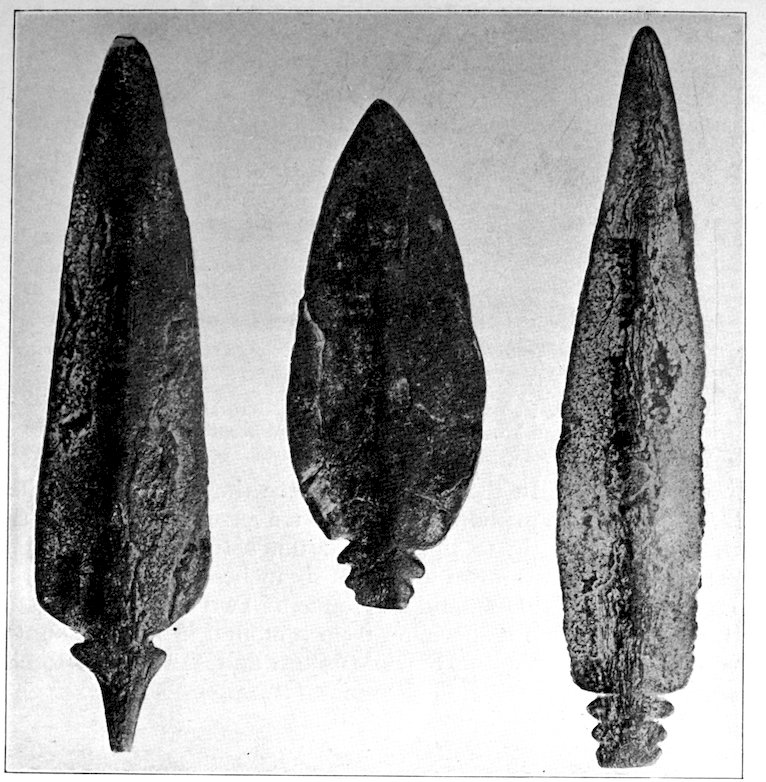
Fig. 599. (S. 4–5.) Copper spear-points. Left to right: Merton, Waukesha County, Wisconsin; Colgate, Waukesha County, Wisconsin; Wayne, Barton County, Wisconsin. Milwaukee Public Museum collection.
The blade varies considerably in shape and size. The smallest example known is one and three fourths and the largest about eight inches in length. The average size appears to be about three inches. A very small number have the face of the blade ornamented with indentations, usually arranged in two parallel rows.
2 a. Ridged points. (Fig. 595.) These and several of the succeeding forms are, strictly speaking, only well-established varieties of 200the preceding type. In the present instance they are distinguished by the presence of a median ridge which traverses both faces of the point, usually from tip to tip. This is not a frequent form. The largest specimen now known measures six inches in length. It is in the H. P. Hamilton cabinet and was found at Two Rivers. Professor T. H. Lewis obtained a specimen from a mound in Pepin County. Other specimens are in the Field Museum and Milwaukee Public Museum and several private collections.
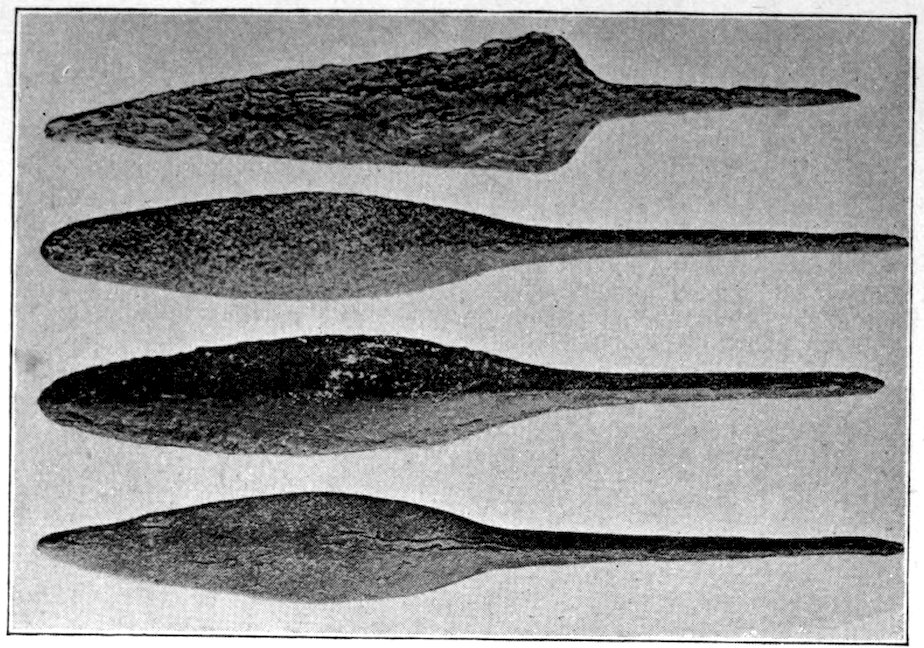
Fig. 600. (S. 1–2.) Copper spear-heads. Rat-tail type. Logan Museum collection, Beloit, Wisconsin.
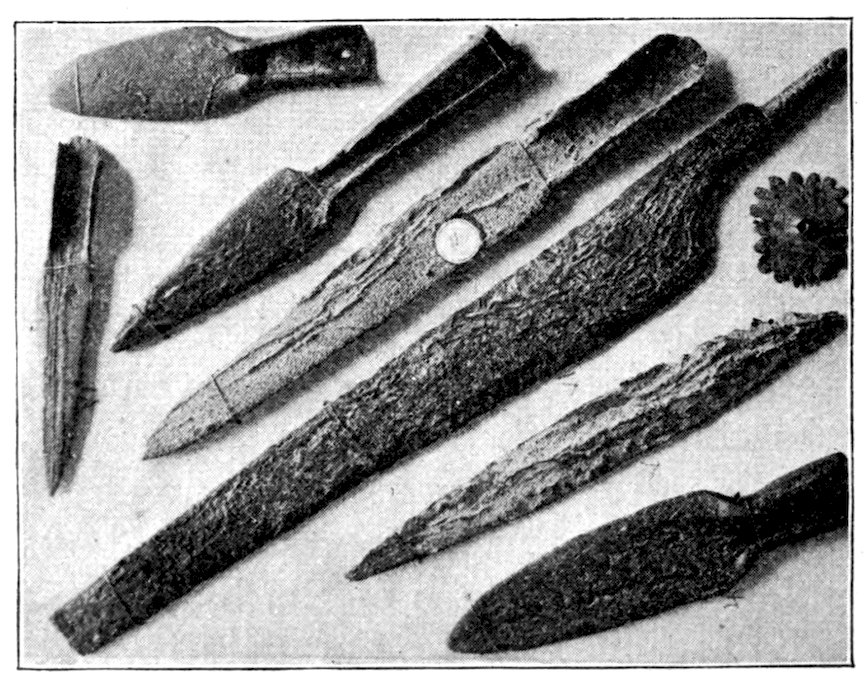
Fig. 601. (S. 1–3.) Copper spears and knives. Collection of S. D. Mitchell, Ripon, Wisconsin.
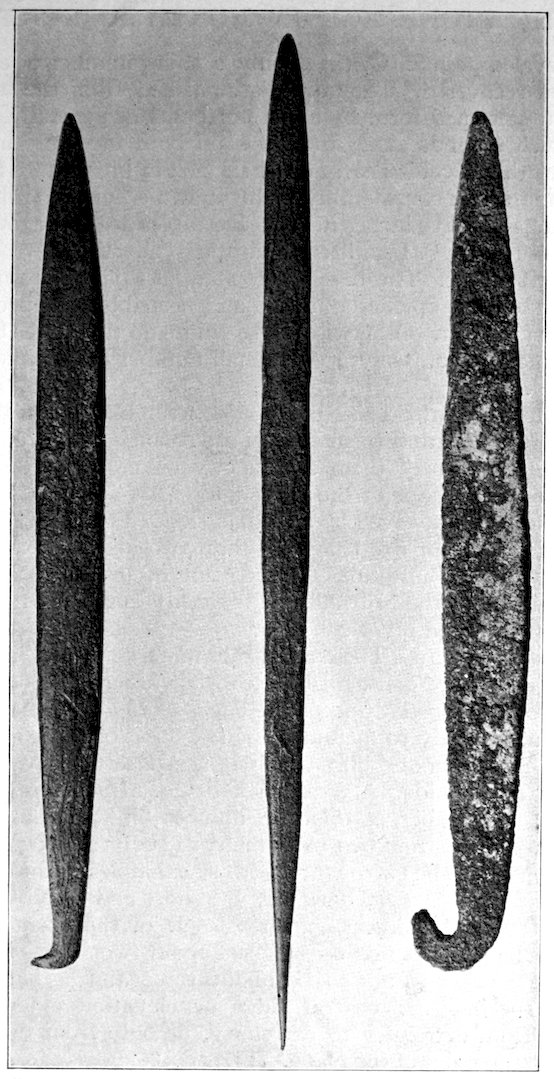
Fig. 602. (S. 2–3.) Copper punch, hooked end, to right; from Barton, Wisconsin. Copper punch to left; from Waukesha County, Wisconsin. Copper punch in the centre, Wisconsin. Milwaukee Public Museum collection.
2022 b. Beveled points. Of these only a small number of examples have been recovered. They are distinguished from the most frequent flat, stemmed form by a distinct bevel of generally uniform width which extends along the edges on both faces of the blade. Sometimes this bevel is nearly one half inch in breadth. The shape of the blade varies considerably. The known specimens range from two and a half to five inches in size. Examples are to be seen in the Field Museum, H. P. Hamilton, and other collections.
2 c. Eyed points. The base of the stem in this rare form is provided with an eye, opening outward and probably intended for the reception of a rivet. Otherwise these points do not differ from the flat, stemmed types. Only a very small number of specimens have been found.
2 d. Notched points. These bear a close resemblance to a numerous class of flint arrow- and spear-points, after which they are probably patterned. No two of them are exactly alike. They differ from each other in the shape of the blade and shape and position of the notch. A few are traversed by a median ridge. Some have indented bases. They vary in size from less than two and up to six inches in length. Such points are of infrequent occurrence. Specimens are in existence in the Milwaukee Public Museum, Field Museum, Logan Museum, and other collections.
2 e. Toothed points. These are rather remarkable and interesting implements, and are distinguished from all others by the peculiar angular toothing or serration of the edges of the stem, the purpose of which is evidently to facilitate the fastening of the point to the wooden shaft or handle, into which it was inserted, by means of sinews or strips of hide. A greater solidity of attachment was thus secured. The number of opposite notches on the stem varies in different examples, from two to as many as six or seven. The usual number appears to be two or three. Most examples of this type are long and narrow. A few, however, are short and broad, and elliptical in outline. The largest known example of this form is about nine and a half inches and the smallest about two inches in length. The average size appears to be about three and a half inches. In many specimens a central ridge or elevation extends along either side from extremity to extremity, or only from the base of the stem to the point of the blade. (Fig. 599.)
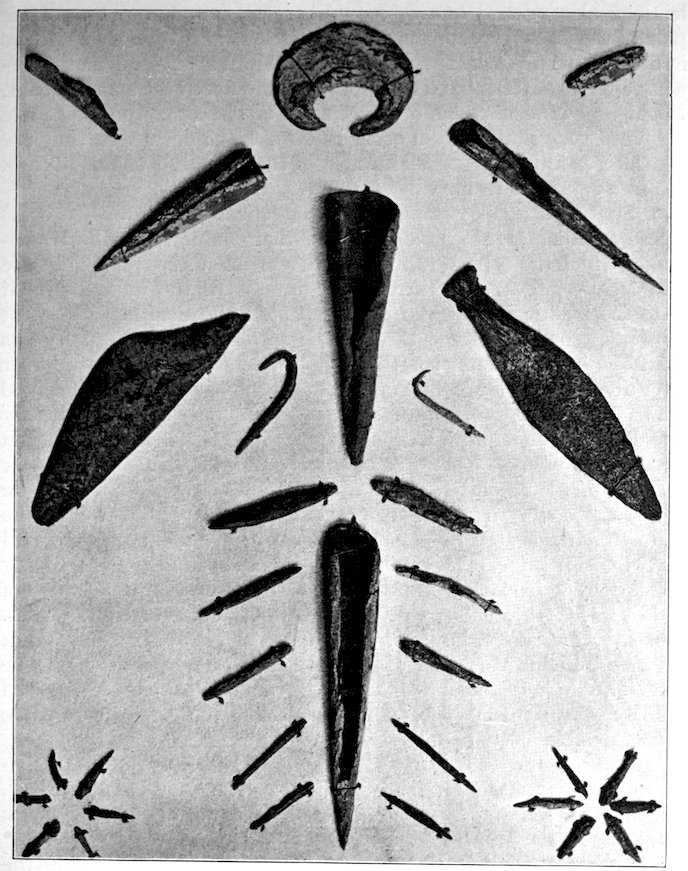
Fig. 603. (S. 1–3.) Copper knives, awls, fish-hooks, and other objects. S. D. Mitchell’s collection, Ripon, Wisconsin.
204In both the F. M. Benedict and H. P. Hamilton collections are large and fine series of these points. Upon a specimen in the latter collection indications of cloth wrappings are to be seen. Other collections also possess one or a number of examples. The greater part of the known specimens are from the Fox and Wolf river valleys in northeastern Wisconsin. Now and then flint spear-points of somewhat similar pattern have been found in and about the same district. Michigan has furnished a few specimens of the copper points. Slate points of very similar form occur in New England, where they are regarded as knives. A small number of copper points of this pattern are also reported to have been found there.
3. Spatula-shaped points. (Fig. 596, central ones, and Fig. 600.) These peculiar points have obtained their name from the resemblance which the typical form bears to a chemist’s spatula. They are also locally known as “rat-tailed points.” In the most frequent form the blade is rather flat and somewhat elliptical in outline. It does not generally exceed three inches in length, being usually less than one half the total length of the implement. A small number have an elliptical, lanceolate or very rarely elongated lozenge-shaped blade. The usually long, tapering stem is generally circular or nearly circular in section, and is well adapted for insertion into a perforation or socket in a wooden shaft or handle. Several specimens have near the tips of their pointed stems a succession of rudely cut opposite notches, probably intended to prevent the easy withdrawal of the point from the shaft. A very small number have the blade traversed by a median ridge. The smallest specimen of this type of copper point now known is four inches and the largest nine and a half inches in length. A large number attain the size of eight inches. Fine specimens are to be seen in the State Historical Museum, Logan Museum, Field Museum, Hamilton, and other collections. The Reverend Mr. Beauchamp has noted the occurrence of a limited number of specimens in New York. A small number of iron trade points of similar shape have been found.
4. Short-stemmed points. The blade is generally long and triangular in shape, the stem short, cylindrical, and pointed at the end. The average size of these points appears to be about six inches. (Fig. 596.)
The largest example now known is twelve inches in length, the stem measuring only about three inches. This is not a frequent form of copper point. Fine specimens are to be seen in the Field Museum, Hamilton, and other collections. A cache of four of these singular points found at Chilton, Calumet County, is to be seen in the Milwaukee Public Museum. The Reverend W. M. Beauchamp has described similar spear-points from New York.
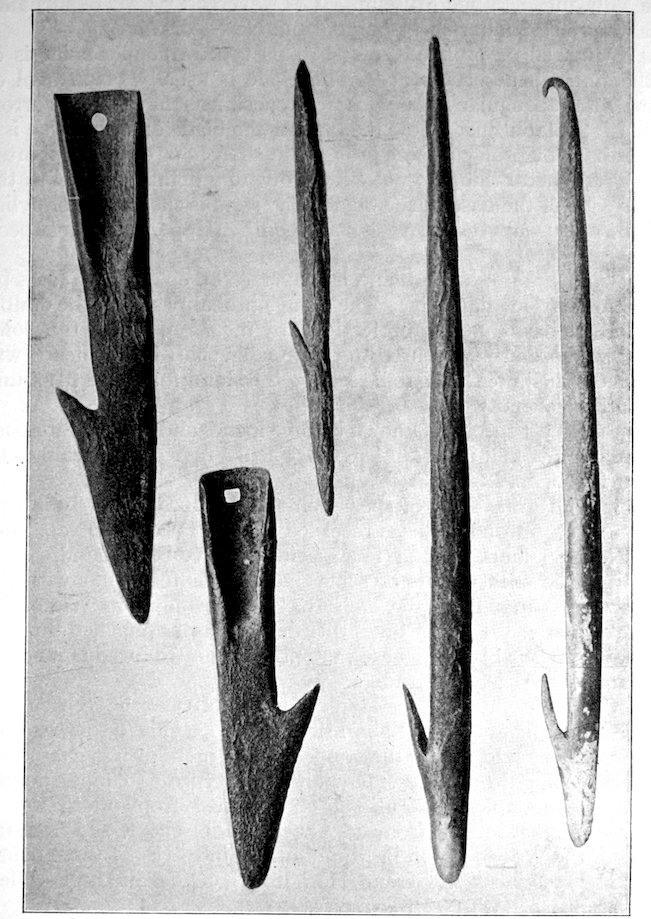
Fig. 604. (S. 1–1.) Copper harpoons. Logan Museum collection, Beloit, Wisconsin.
2064 a. Barbed or pronged points. This type of copper point is of rather infrequent occurrence. The blade is usually of an oval or somewhat triangular shape. A few specimens have long narrow blades. Situated just below the base of the blade on either side is a single barb or prong. These prongs are sharply or obtusely pointed and as a general thing do not extend out to a point in line with the outer edge of the base of the blade. The stem is short, flat, or cylindrical, and usually tapers to a sharp point. (Upper left-hand specimen, Fig. 592.)
In some examples the blade is traversed on one or both faces by a well-defined median ridge. The prongs probably served the double purpose of barbs and of projections, by means of which the point could be more firmly secured to the wooden shaft into which it was inserted. Such points are to be seen in the Hamilton, Field Museum, and other collections.
The smallest specimen known is three inches and the largest about seven and one half inches in length. The average size appears to be about four inches.
This interesting form of spear-point also occurs sparingly in surrounding states, and has been recorded from as far east as New York and New England, where a few specimens have been found.
Large iron spear-points of somewhat similar form, but with the projections squared at the ends, have been found in Wisconsin. Some of these have hearts and other devices cut or punched through the face of their blades. These were probably introduced among the Indians by the early fur-traders.
5. Conical points. A very large number of these have been collected from the extensive Lake Michigan shore village-sites in Wisconsin, of which locations they appear to be more or less characteristic, replacing to a large extent all other types of copper points. Some fine examples have also been obtained from other sites in counties farther inland; from the Lake Superior shore, and from the Lake of the Woods region in Minnesota. Fine series of these points are to be seen in the A. Gerend, Hamilton, Kuehne, and other collections. (Fig. 598, three lower figures.)
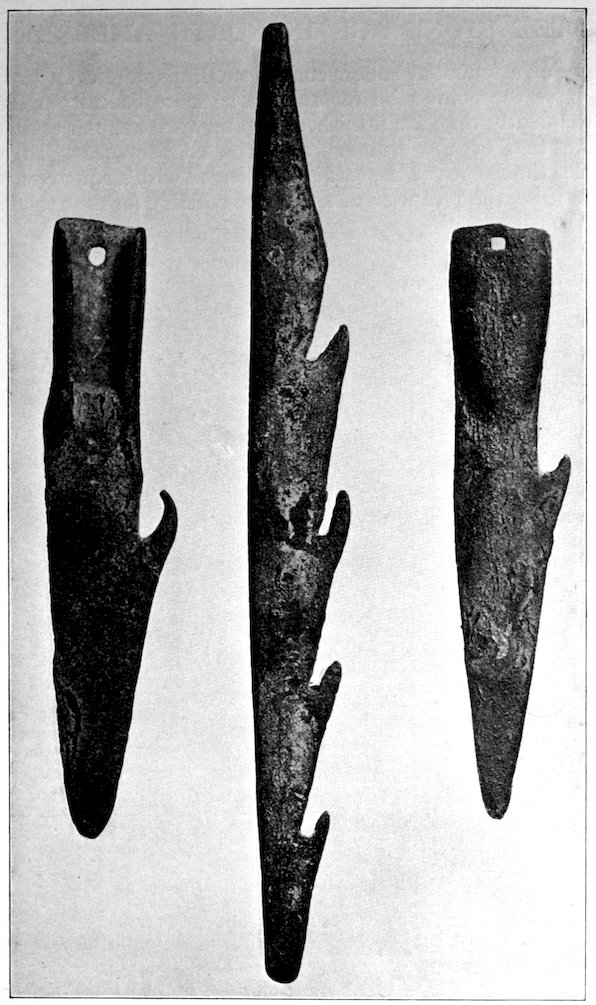
Fig. 605. (S. about 3–4.) Copper harpoons. Left to right: Hartford, Washington County, Wisconsin; Wisconsin; Wauwatosa, Milwaukee County, Wisconsin. Milwaukee Public Museum collection.

Fig. 606. (S. 1–2.) Copper harpoon. Collection of S. G. Crump, Pittsford, New York.
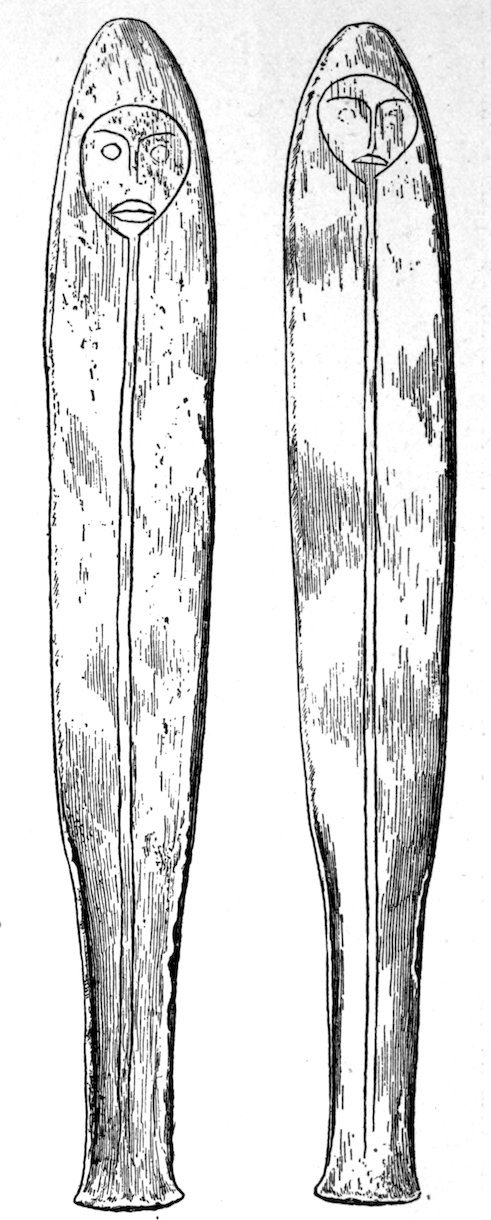
Fig. 607. (S. 1–8.) Front and reverse of a copper war-club. Dug out of a prehistoric grave at Spuzzum, British Columbia. Obtained by Mr. James Teit.
These points vary in length from less than one inch up to six inches or more. The majority, however, are of small size and do not exceed two inches in length. The most prevalent form is fashioned in the shape of an attenuated hollow cone of small diameter. Other specimens have the point solid for an inch or more back from the tip. Less frequently they are furnished with an open angular socket and hip like that of the ordinary socketed copper spear. In a few examples the flanges of the socket are pierced with a square or round hole, as if for the reception of a rivet, or possibly for the attachment of a light line. A few have a rivet-hole also at the base of the socket. It has been stated that these points have occasionally been found with fragments of the wooden shaft filling or extending beyond the socket. Their presence in numbers upon the sandy lake shore sites where the aboriginal residents appear to have depended largely upon the fishing industry for subsistence, appears to indicate their employment in such a connection. Possibly in the shooting or spearing of fish.
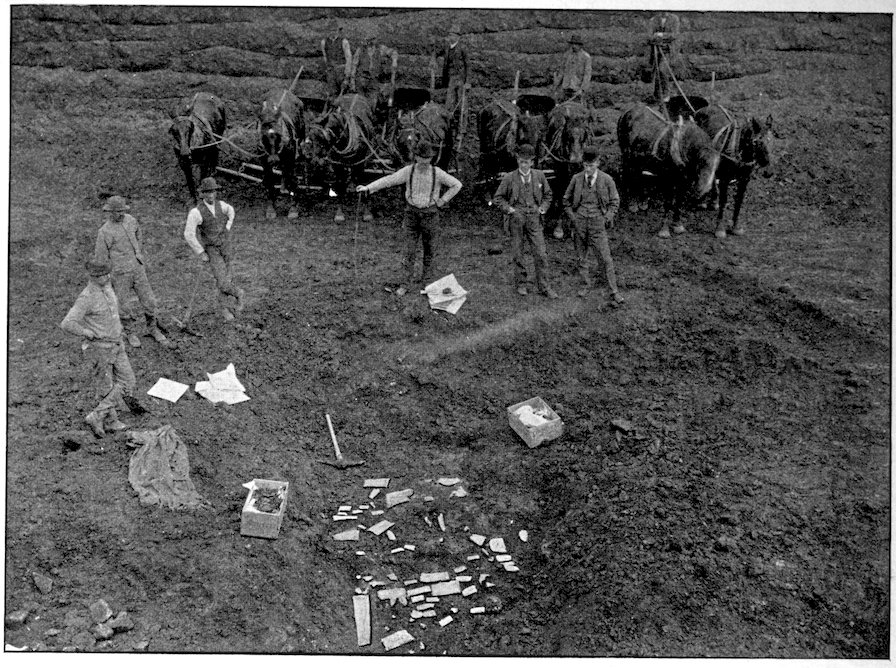
Fig. 608. The base of the Effigy Mound, Hopewell Group. Explored in 1891–92. Copper axes and plates in the foreground, lying as found. Teams, thirty to forty feet distant, and two feet higher than the deposit.
2106. Ridged socketed points. If we except from consideration the very numerous small awls and fish-hooks, we may truthfully state that this is by far the most common type of copper implement occurring in Wisconsin.
Thousands of these points have been collected in Wisconsin, and probably as many or an even greater number are yet to be recovered from the soil.
They are represented in greater or less numbers in every Wisconsin and in many other collections.
This type and its varieties are too well and widely known to require much of a description. They are frequently symmetrically and beautifully wrought, indicating a degree of skill on the part of their aboriginal makers that is unsurpassed. The blade varies considerably in length and breadth. The stem is provided with flanges which are bent straight upward or inward, thus forming an angular socket for the reception of the wooden shaft. Some points having fragments of this shaft still in place have been found. This form is rarely if ever provided with a rivet-hole. In most examples there is a dip or shoulder in the socket at the connection of the stem and blade, against which the head of the wooden shaft abutted. A distinctive feature of these points is the pronounced central ridge which traverses the back of the implement from end to end. It is this feature which has gained for this style of point the local name of “bayonet-backed spear-point.” The tip of the stem is also usually angularly pointed. A small number of these points have the upper surface of their blades ornamented with indentations variously arranged in double rows or lines. This type of copper point has been found as far to the south as the Gulf, as far east as New England, westward to the Missouri, and northward into Canada.
The largest example known to have been found in Wisconsin measures thirteen inches in length. It is in the E. C. Perkins collection. The average size is between three and five inches.
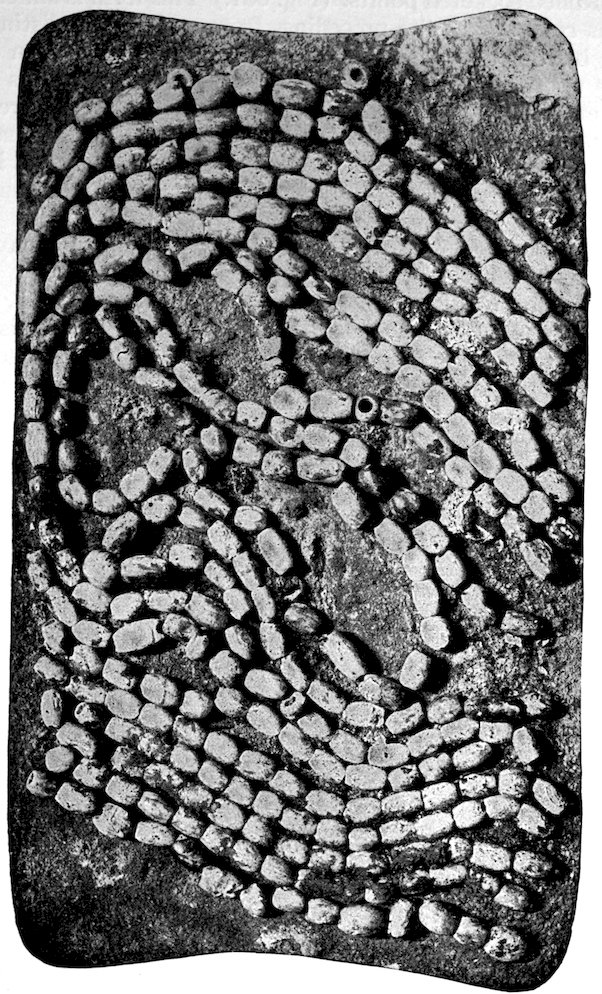
Fig. 609. (S. 3–5.) Large copper plate covered with shell beads, Seip Mound, Ohio. W. C. Mills’s collection.
2126 a. Rolled socketed points. (Fig. 601.) This form is almost if not quite as common as the preceding, from which it is distinguished mainly by the fact that the back of the blade and stem are not usually upon the same plane. The central ridge also is absent. Many examples are provided with a rivet-hole (very rarely with two, one above the other) within the socket near the base of the stem. Specimens with a small copper rivet or nail still in place in the socket are of not infrequent occurrence in Wisconsin collections.
At least two well-defined varieties of these points may be recognized:—
1. The first of these is provided with a short, broad, oval, or almond-shaped blade. The stem and socket in this form is usually broadest at the base, tapering or narrowing toward the blade. The average length of these specimens is about four inches. A large specimen found at Ripon, Fond du Lac County, measures seven inches in length, and two inches in breadth near the base of the blade. Specimens of this type may be seen in the Hamilton, State Historical Museum, Logan Museum, and other collections.
2. The second form is furnished with a long, narrow, lanceolate blade, often twice or more than twice as long as the stem. The socket and stem rarely taper upward and are of more nearly equal width throughout. In both this and the preceding form the flanges of the socket are rolled inward, in some instances nearly meeting. The average length of these points appears to be about five inches. The largest specimen known measures eleven and one half inches in length. Such specimens are to be seen in nearly every Wisconsin cabinet.
In the very limited number of the smaller specimens the face of the blade, rarely the back, is ornamented with indentations. The edges of the blade are also sometimes beveled.
Among the smaller specimens is observed a variety in which the length of the stem equals or exceeds that of the blade. In some specimens the socket has the appearance of having been formed by excavating the stem, the narrow flanges being continuous with the blade instead of cut and turned inward as in the ordinary form. A small number of iron socketed spear-points, not differing greatly from the ordinary socketed copper point, have been found.
Peculiar points. In several Wisconsin collections are several spear-points of curious form not included under any of the foregoing descriptions or represented, so far as can be learned, in other Wisconsin cabinets.
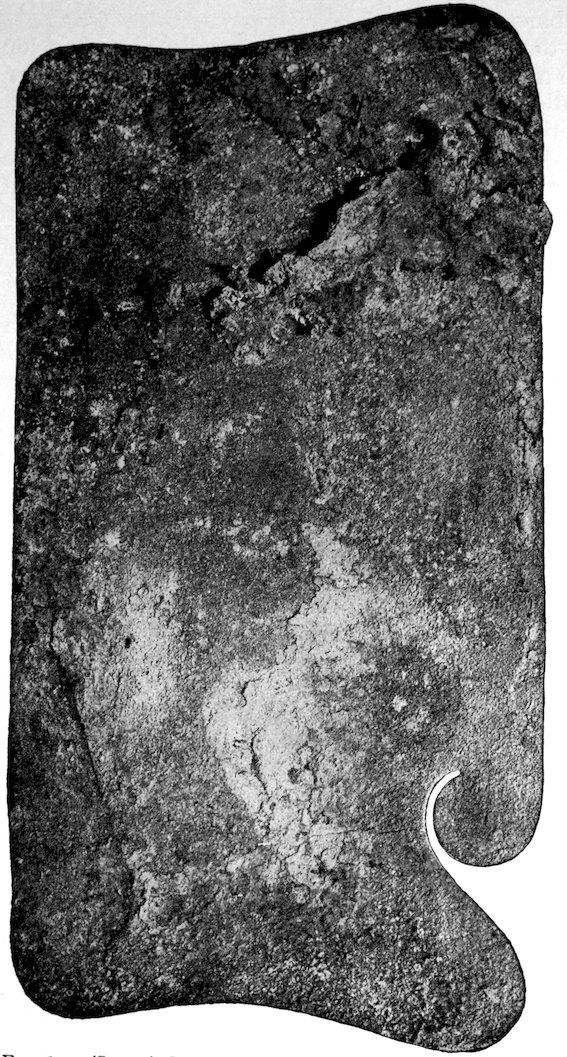
Fig. 610. (S. 1–1.) Ornamented copper plate, Seip Mound, Ohio. W. C. Mills’s collection.
214One of these in the H. P. Hamilton collection has a long slender blade and a very short socket. It is seven and one quarter inches in length and comes from Two Rivers, Manitowoc County. Its blade is ornamented with a row of nine indentations.
In the Milwaukee Public Museum is a series of three peculiar socketed spear-points of an average length of about eight and one half inches. The blade of each of these is very long and narrow, with straight edges, and terminates in a sharp point. The stem is very short and narrow in comparison with the blade and broadens into a short socket at its base. One specimen has the middle of its blade, from near the base toward the middle, ornamented with a continuous zigzag indentation. Another has upon its blade a series of dots arranged in a triangular form. Two of these points come from Fond du Lac County, and the other from Sheboygan County.
The purpose of these implements is too plain to make any explanation necessary. Four distinct types of harpoon-points, none of which are as yet known to be of other than very infrequent occurrence, have been obtained in Wisconsin. What special application any of these several patterns may have had is not yet clear. The following is a brief description of them:—
1. The first are short, flattish points seldom exceeding two and a half inches in length. (Fig. 605, to the left.) One edge of these implements is either straight or presents a continuous curve from extremity to extremity. The other edge is curved or straight from the point downward to about opposite the middle of the implement, where it terminates in a barb. From thence it narrows to the other extremity, thus forming a stem. Occasionally this is notched on either side near its base. Small numbers of these points have been recovered from the village-sites along the Lake Michigan shore.
2. A second and less frequent form is cylindrical in section and tapers to a sharp point at each extremity. (Fig. 604, second from right.) Removed from one extremity by several inches, more or less, is a stout and very pronounced barb. All are of large size. A particularly large specimen measures ten and three fourths inches in length and about one half inch in diameter at the middle. Others are to be seen in the State Historical Museum and H. P. Hamilton collections. Mr. Clarence B. Moore has figured and described a large example obtained by him in Florida.
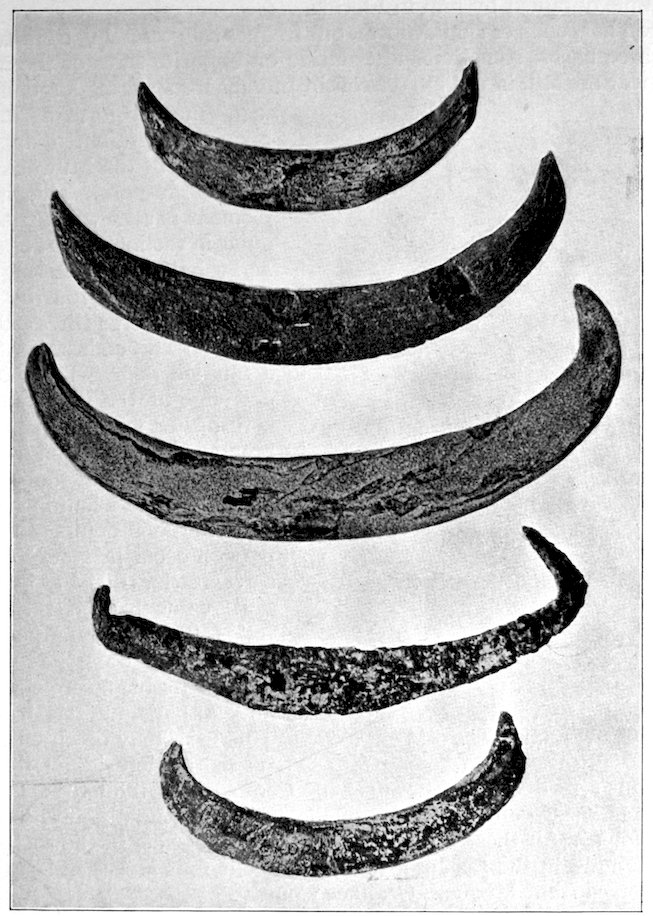
Fig. 611. (S. 2–3.) Copper crescents. Collection of Logan Museum, Beloit, Wisconsin.
216Iron harpoons of similar form, but frequently possessing from two to three barbs, sometimes alternating on opposite sides of the implement are still in use by Wisconsin Indians for spearing large fish.
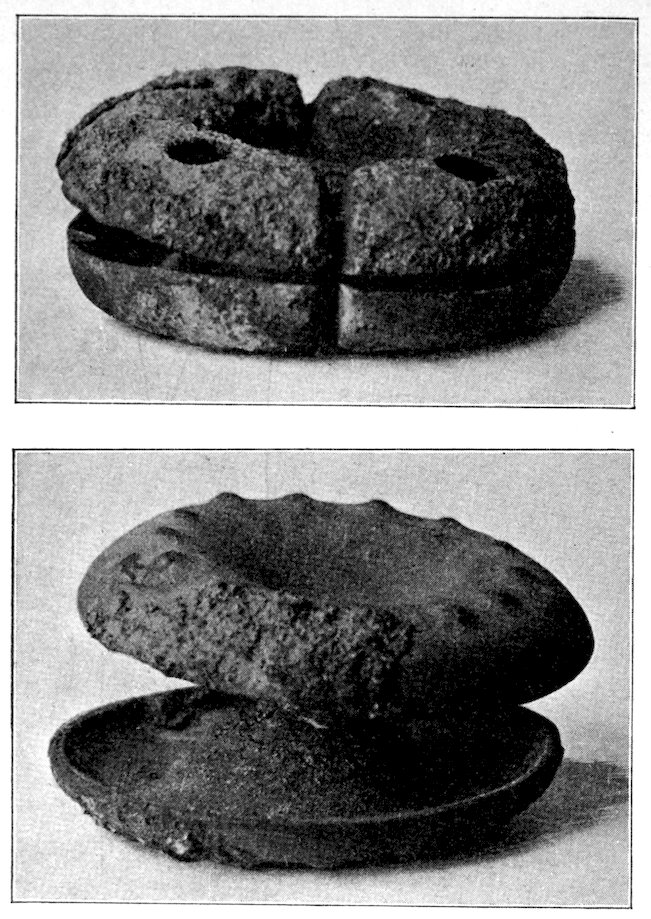
Fig. 612. (S. 1–1.) Ear ornaments from the Hopewell Group, Ohio.
3. Another form of harpoon is represented by a specimen in the Milwaukee Public Museum. This implement is somewhat triangular in section, about eight and a half inches in length and about three fourths of an inch in breadth at the middle. The ends taper to a blunted point. The thinner edge of the implement is furnished with four stout, broad barbs, separated from each other by a distance of about one and a half inches. Bone harpoon-points of this pattern occur in New York and Ontario. (Like Fig. 606.)
4. A fourth type, the so-called “socketed harpoon-point” (Fig. 604), has one edge of its blade prolonged into a barb at the base. This barb may be on either the right or left side. Otherwise this type does not differ in shape from some of the flat-backed, socketed spear-points. Only a small number of these points have been found. All these are provided with a rivet-hole in the socket. An example in the Logan Museum is about four inches in length, and comes from Mequon, Ozaukee County.
In this class of objects, which are as yet alluded to by students and collectors by either of the above or other names, are included the largest copper implements found in Wisconsin. They are rod-like in form, usually circular or square, less frequently rectangular in section, and taper to a point at one or both ends. Large specimens of each of these several patterns have been found. The largest is in the Field Museum. It is about forty inches in length, one inch in diameter at the middle, and tapers to a point at either extremity. It weighs five and a quarter pounds and was obtained from a burial-mound on the Abraham place, at Peshtigo, Marinette County.
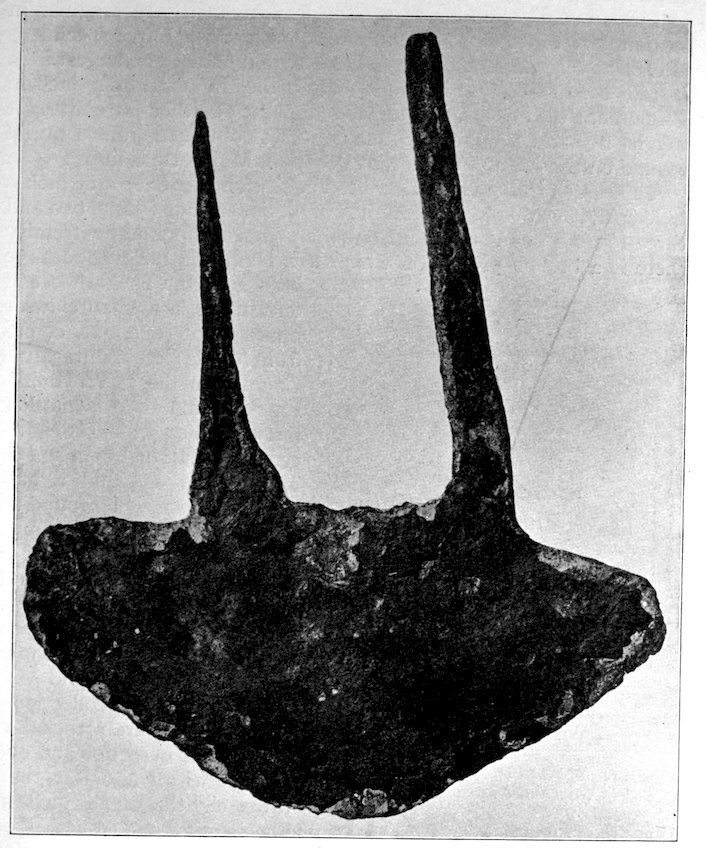
Fig. 613. (S. 1–1.) Copper crescent-shaped object obtained near Chattanooga, Tennessee. Milwaukee Public Museum collection.
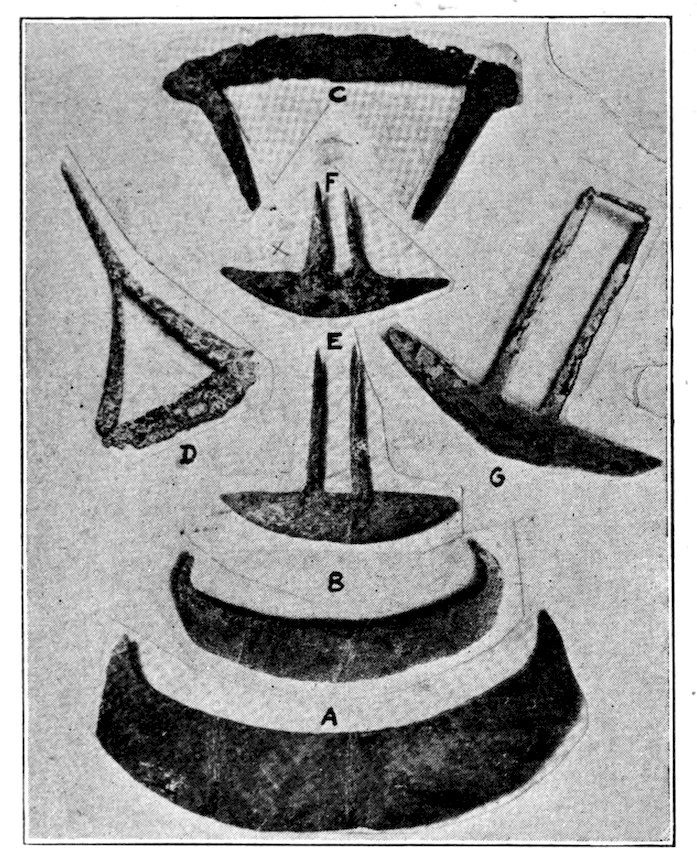
Fig. 614. (S. 1–3.) Copper crescents. Collection of Wisconsin Archæological Society.
A specimen in the H. P. Hamilton collection is twenty-nine inches in length, seven eighths of an inch in diameter, and weighs two and three fourths pounds. About one inch from the pointed extremity there is a broken projection which Mr. Hamilton believes to have been a barb. The other end terminates in a small claw or broken out eye. It comes from Maple Creek, Outagamie County. In the T. W. Hamilton collection there is another fine specimen which is eighteen and a half inches in length and weighs one and a half pounds. A specimen found at New Haven, Adams County, is fourteen and a half inches in length and weighs one and three eighths pounds. Other large specimens are to be seen in the Logan Museum, State Historical Museum, and Milwaukee Museum collections. Some of these are rather flat, rectangular in section and one inch in width and less than three eighths of an inch in thickness. They are pointed at one extremity and rounded or blunted at the other. Some other large specimens are known to have been cut in two and otherwise maltreated by the persons who found them.
In the Field Museum collections implements of this pattern ranging from eight inches or less up to the largest size are classed as 219“pikes.” That they were employed as weapons is extremely doubtful. It has been suggested that they may have been heated and employed in the burning-out of wooden canoes or wooden vessels. There is reason to believe that some of the lighter forms were mounted in wooden handles, at least one example with an accompanying copper ferule having been found at Milwaukee.
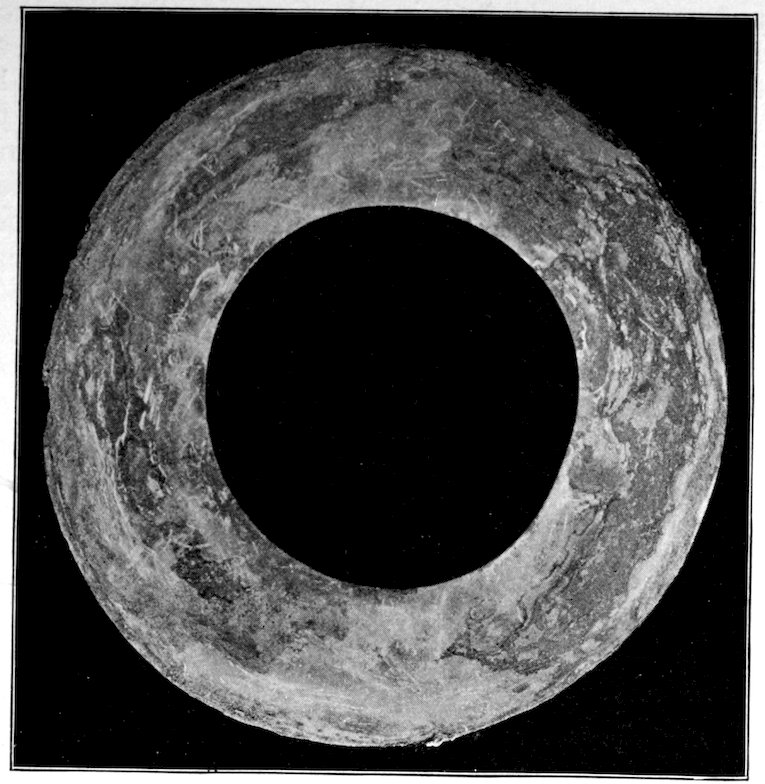
Fig. 615. (S. 2–3.) Copper saucer-shaped object. Hopewell Group, Ohio.
These have been obtained nowhere in greater numbers than in the Lake Michigan coastal region in Wisconsin. They vary in size from about one to six inches or more, and in thickness from one sixteenth to one half an inch. The greater number are of very small size.
The simplest and most frequent form is a slender cylindrical piece of metal pointed at one or both extremities. A second and usually stouter form is either round or square in section and tapers from a well-marked shoulder at or near the middle to both extremities. 220Sometimes one end only is pointed. Occasionally also the upper half of the implement is straight and the lower half tapers to a point. Many of these small implements were probably mounted in handles of wood, bone, or antler, the object of the shoulder being to prevent their passing too far into the handle. Several specimens mounted in antler handles have been found. Similar implements of bone and stone have been found in Wisconsin. Most of them were probably employed in drilling holes in wood, bone, or stone, in piercing skins, and for similar purposes. The Eskimo are said to employ somewhat similar implements of bone for catching waterfowl. They are used by attaching a line to the centre, the bone spindle being baited with a small fish into which the implement is inserted lengthwise. Large fish are captured by them in the same manner. We have no record of the employment of such methods by Wisconsin Indians.
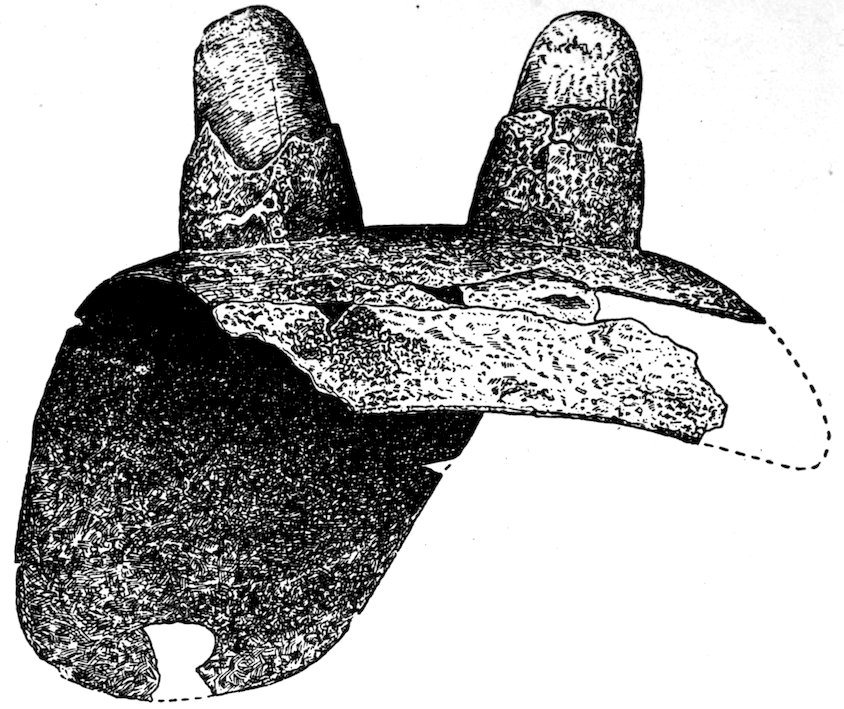
Fig. 616. (S. 1–2.) Possibly this was the crown of a head-mask. It seems to indicate growing antlers, or those of a young buck. When found the horns or projections were downward and the raised surface uppermost. Hopewell Group, Ohio.
In a number of Wisconsin cabinets are to be seen copper implements locally known as “spikes,” taking their names from the close 221resemblance which they bear to the modern articles. These vary somewhat in shape and size.
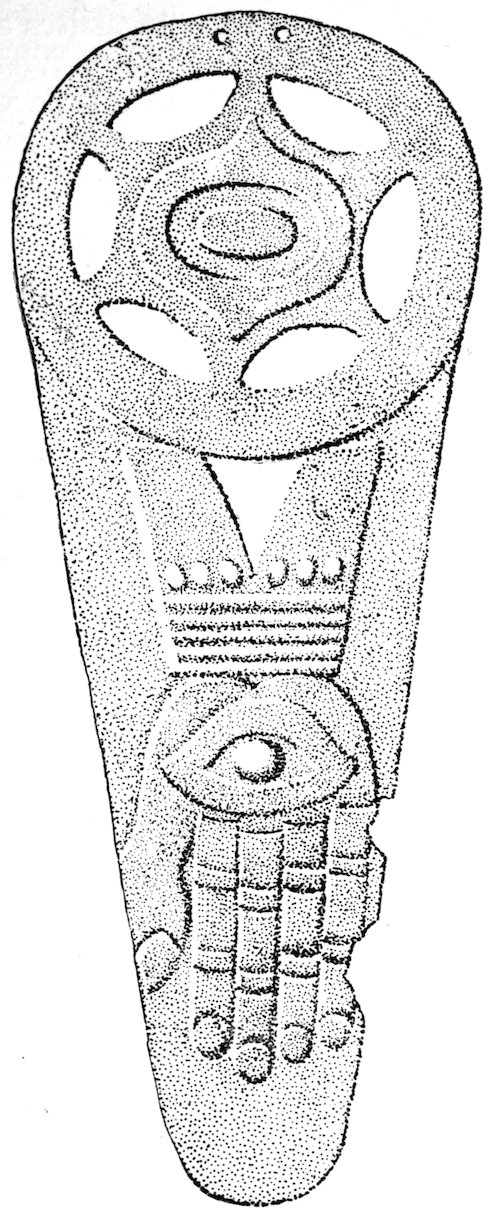
Fig. 617. (S. 1–1.) Pendant of sheet-copper. C. B. Moore’s explorations.
One specimen is four and a half inches in length, one fourth of an inch in thickness, with one extremity pointed and the other enlarged and blunted to form a head. Another is seven inches in length and tapers gradually downward from the head, where it is three fourths of an inch in diameter, to the point.
A few specimens are decidedly square in section.
An examination of the heads indicates that they are not the result of pounding while in use, but constitute an intentional feature of these implements. No suggestion has been offered as to their function. They may be simply perforators or drills. Some of the stouter implements, with broad, flattish points, may have been employed as chisels.
These are obtained from the same sites as the foregoing and are frequently associated with them, though not nearly as numerous. All are provided with eyes, and except in their somewhat ruder fashioning do not differ from the needles in ordinary domestic use at the present day. Their purpose requires no explanation.
These implements range in size from less than two to as much as eight and an eighth inches. The average size appears to be between two and three inches. Such implements are to be seen in many of the eastern Wisconsin collections. 222In the Milwaukee Public Museum is a small series of copper needles from Mexico.
Hundreds of these and fragments of many others have been collected from the aboriginal village- and camp-sites on the west shore of Lake Michigan in Wisconsin. They have also been obtained in numbers from the village-sites at Green Lake and at various other localities along the upper Wisconsin, Fox, Wolf, and Little Wolf rivers, and elsewhere in this part of the state where good fishing was to be had. Some have also been found far to the north along the Lake Superior shore.
Most specimens are of small size, from less than an inch up to two inches in length. The largest known example is four inches in length. They are generally circular, though sometimes decidedly square in section. The points curve and slant outward and inward at all angles and degrees of curvature. None possess any indication of a barb.
The shank at the point of attachment to the line is most frequently straight. Sometimes, however, it is notched, flattened, bent over and flattened, or bent over to form an eye. A few specimens have been collected which have bits of sinew or twisted fibre still attached to the shank. Fine series of these useful articles are to be seen in many local collections.
In the H. P. Hamilton collection there is a series of ten fish-hooks obtained from the bank of the Little Wolf River, in the township of Muckwa, in Waupaca County. These are from two and a half to two and three fourths inches in length, the strongly and broadly curved hook reaching up to about opposite the middle of the shank. Some are circular and others square in section, and all are of a nearly uniform thickness of one fourth of an inch. Several have the tips of the shank flattened, and all are heavily incrusted with soil and verdigris, plainly indicating the manner in which they had lain upon and across each other.
In a few of the large Wisconsin cabinets are to be seen a very small number of implements whose exact functions are unknown and which cannot be placed in any of the various classes here described.
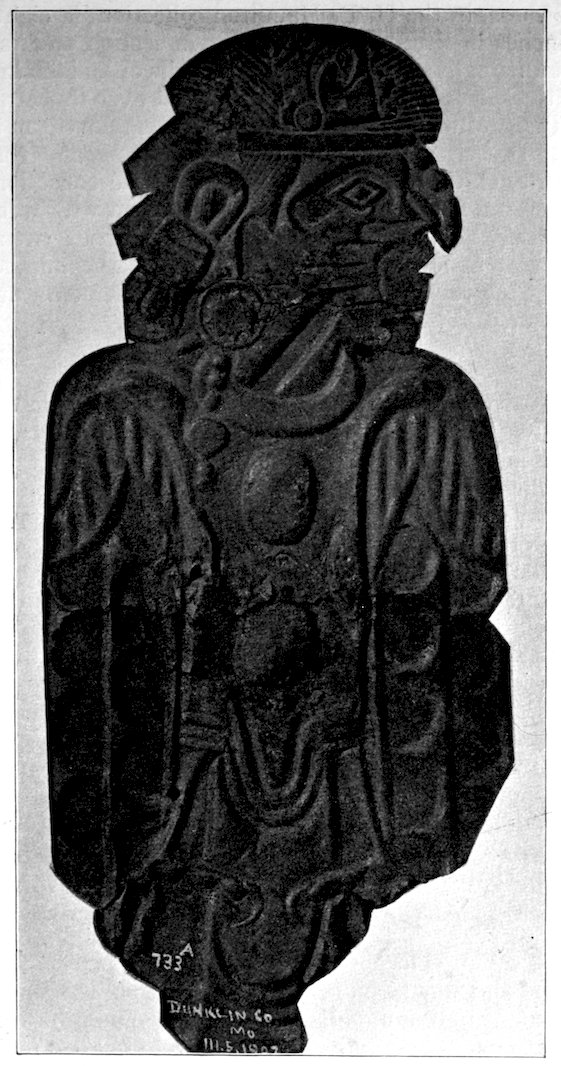
Fig. 618. (S. 1–2.) Remarkable effigy in copper. Collection of J. M. Wolfing, St. Louis, Missouri.
224One of these, in the H. P. Hamilton collection, is eight and one quarter inches in length. It is circular in section and tapers to a point at either extremity. It is seven eighths of an inch in diameter near the thicker extremity and is knotty all over the surface. Mr. Hamilton suggests that it may have been employed as a club or bludgeon. It weighs eight and one half ounces and comes from Little Chute, Outagamie County. In the same collection there is also to be seen a long, curved, flattish implement which, it has been suggested, may have served as a sword. It is about twenty inches in length and about one inch in width near the middle. It was obtained with a cache of six other copper implements at Oconto, Oconto County, Wisconsin.
The only specimens in native copper of this interesting and widely distributed class of ceremonial objects are in the H. P. Hamilton collection. One is of the ordinary butterfly pattern with expanding wings. Both specimens were found at Oconto, Oconto County, and were included in a remarkable cache of copper implements and ornaments, consisting of a crescent, sword, chisel, leaf-shaped blade, and two arrow-points. This specimen, weighing five ounces, is three and one half inches in length, and one and one fourth inches in width across the elevated part at the middle. The broad wings are one and one fourth inches in length and one and one half inches in width across their outer edges. The perforation at the middle is of one inch in length and has a short diameter of half an inch. A second specimen in the same cabinet is of the so-called “pick” shape. It weighs two and one fourth ounces. It is five inches in length and only one inch in width across the widest part, near the middle. The narrow wings are two and one fourth inches in length and taper to a rounded point, the perforation at the middle being half an inch in diameter.
The most common local form of copper bead is somewhat spherical in shape and was fashioned by rolling together a small, narrow strip or welt of native metal, varying in thickness from less than one eighth to one fourth of an inch or more, only one or two turns of which were necessary to make a rude bead of quite large size. Beads of this kind have been obtained in large numbers from Wisconsin 225village-sites, graves, and, sometimes, from the mounds. Quantities of them, as many as one hundred or more, have occasionally been taken from a single grave.
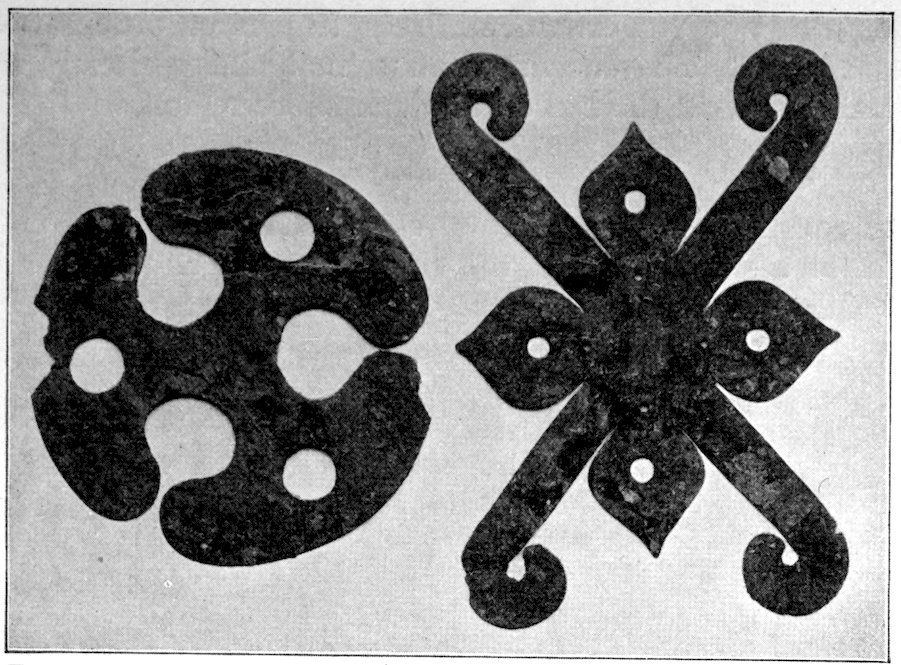
Fig. 619. (S. 1–3.) Unknown symbols in sheet-copper, Hopewell Group.
In several Wisconsin collections fine strings or necklaces of such beads may be seen. Beads of this form have also been obtained in Ohio, northern Illinois, Michigan, and Minnesota. The Reverend W. M. Beauchamp has mentioned their occurrence in New York.
A second and quite common form of copper bead is made of a thin sheet of metal rolled into the form of a cylinder.
They vary in diameter from one eighth to one quarter of an inch or more, sometimes exceed two inches in length. They are of quite common occurrence on the Lake Michigan shore and on some inland village-sites. From aboriginal village-sites at Two Rivers and on the shores of Green Bay small cylinders formed by twisting thin sheets of native copper between the fingers in a spiral shape are found.
These are also made of thin sheets of native copper. They are of small size, conical or somewhat conical in shape, and open at both extremities. It is believed that these served as bangles, probably taking the place, in the past, of the small metal discs, brass or tin cones, brass thimbles or bells with which it was the custom, among 226the later Indians, to ornament dress fringes or other articles of wearing apparel. They occur on aboriginal village-sites in the Fox River Valley and in the Lake Michigan shore region.
These consist of small, narrow rods or strips of metal bent into the form of a simple circlet, the ends abutting or nearly meeting. Occasionally the rods are thickest at the middle and taper to a point at the extremities. Some may have served equally well as ear-rings. Specimens are occasionally found in the Lake Michigan shore region, as well as elsewhere in the state.
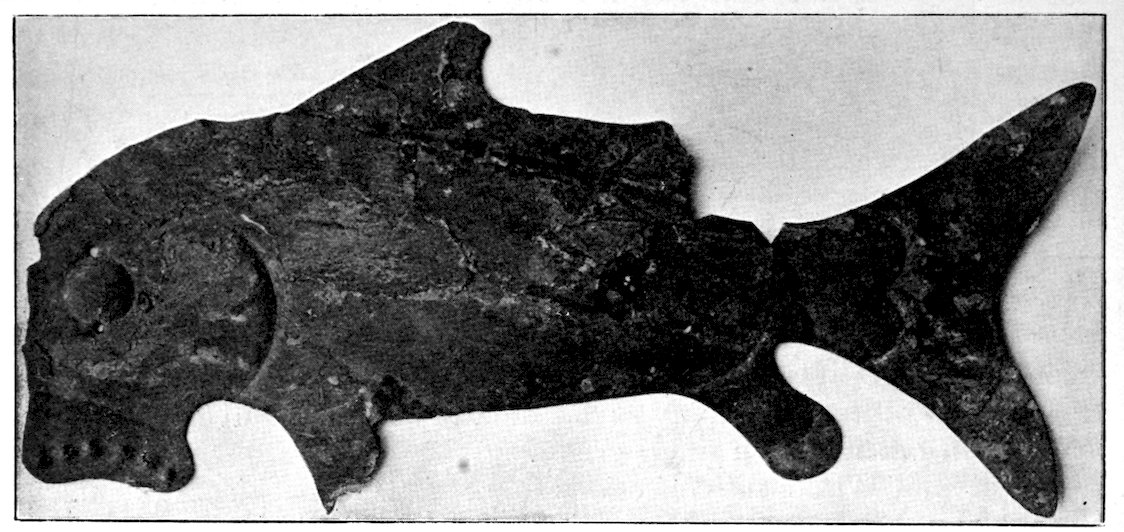
Fig. 620. (S. 1–2.) Copper fish. Hopewell Group. Field Museum collection, Chicago.
The fondness of the later Indians for such ornaments is well known, and it is quite probable that they were also in rather general use among the earlier aborigines.
In the S. D. Mitchell collection is a small crescent-shaped copper ornament which may have served as an ear-ring or nose-ring, being well adapted for such use. It measures one and three eighths inches in extreme width, and was obtained from an Indian village-site in Green Lake County. Similar specimens are in several other local collections.
The Reverend W. M. Beauchamp states that the earliest metallic 227ear-rings in use among New York aborigines were probably those of copper wire coiled and flattened, and believes it possible that perforated discs and coins may have served the same purpose in early historic times, but that they were more likely to have been employed in some other way. Glass and shell beads, and probably many other things, were so utilized.
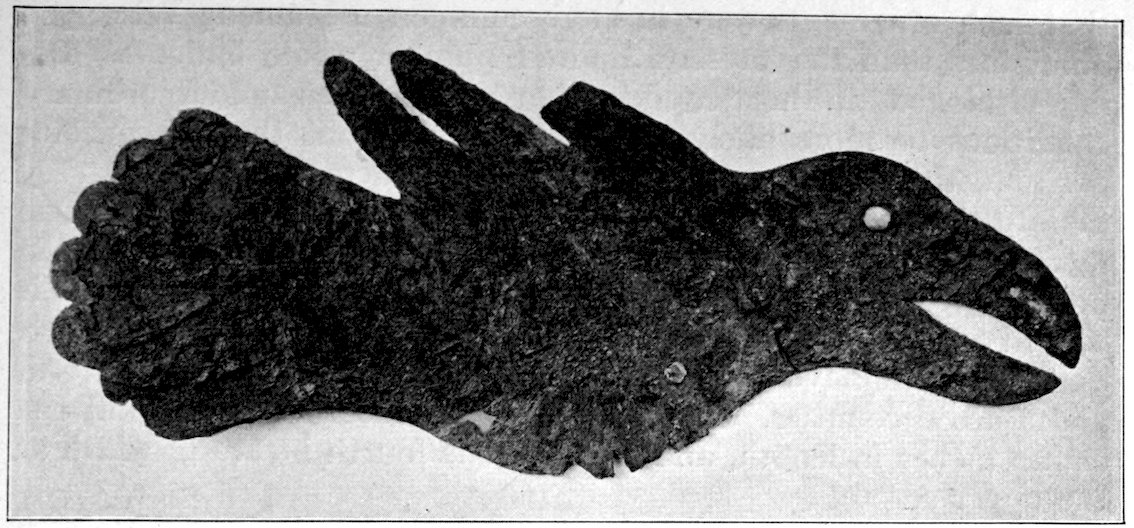
Fig. 621. (S. 1–4.) Copper eagle. Hopewell Group. Field Museum collection, Chicago.
Professor T. H. Lewis has obtained ornaments of this class during mound explorations conducted by him at Prairie du Chien, Crawford County, and Wyalusing, Grant County, in Wisconsin. Ear-spools have been obtained from various localities in Ohio, Illinois, and the South. Some of these are rather elaborately ornamented with embossed figures. In the Field Museum collections are specimens which were taken from the mounds of the celebrated Hopewell Group in Ohio.
A specimen in the Ohio State Archæological and Historical Society’s collections has still attached to it a fragment of the string or cord by means of which it was probably attached to the ear of its aboriginal owner. Similar objects of stone overlaid with sheet-copper have been described by various authors.
Careful inquiry has shown the existence of only a small number of these in Wisconsin collections. It is quite possible, however, 228that such ornaments were in more common use among Wisconsin aborigines than the present limited number would indicate. Being fashioned of sheet-copper, they would even under ordinary conditions be more likely to suffer destruction, through decomposition, than many other less fragile artifacts, which show very plainly the effects of chemical action during their interment. One form of pendant is triangular in shape and is provided at the broad upper extremity with two perforations, by which means it could be attached, by a cord, to the person of its aboriginal owner. Such pendants have been found in Winnebago, Jefferson, Crawford, and Barron counties. One of the largest measures three and one eighth inches in length, and one and one fourth inches in width at the upper edge.
Sheet-copper pendants of circular shape have also been obtained. These have perforations near the edge or at the middle. The largest specimen known is about three and one quarter inches in diameter. Pendants of this form have been obtained in Kenosha, Jefferson, Dane, Columbia, Grant, Crawford, Barron, Burnett, Winnebago, and Brown counties. A few specimens of other forms have also been recovered.
In this class of copper ornaments are at present included a number of thin, flattish objects, the basis of all of which appears to be the crescent, either plain or variously modified by the addition of prongs or other prolongations arising from the inner or upper edge, near the middle or extremities.
There is probably little doubt that the greater number of the objects included in this class were worn by our primitive Indians as breast ornaments, being fastened to the neck by means of cords. In this way several of them may have been worn, one below the other. The adaptability of certain of the pronged forms for use as hair ornaments is noticeable.
Large numbers have been collected in Wisconsin, and others will probably be found as old sites are more thoroughly explored, and new lands opened to cultivation. The existing examples appear to have been obtained, for the most part, from the village-sites and graves, where they sometimes occur in association with copper beads and other articles of personal adornment. But very few have been recovered from the burial-mounds of the state.
229A few have also been found in Minnesota, northern Michigan, and Illinois. The finest series of these copper crescents, representing nearly all of the known types, is in the H. P. Hamilton collection. The following is a brief description of the Wisconsin types of copper crescents:—
1. One of the simplest, although uncommon forms, has the upper edge quite straight and the lower ones broadly curved. Specimens have been found in Manitowoc County, and in Houghton County, Michigan.

Fig. 622. (S. 2–3.) Mica ornament. Hopewell Group.
2. A closely allied type has both edges curved, approaching more nearly the true crescent form. The degree of curvature varies considerably in the small number of specimens known. Specimens have been found in Washington, Sheboygan, Marquette, Crawford, and Barron counties. Minnesota has produced several specimens: one from Monroe County, having both extremities notched to allow for suspension. (Fig. 611.)
3. A third type, the so-called “canoe-shaped” crescent, usually has its lower and upper edges curving equally and formed at the extremities into a short point or embryo prong, directed inward. This is the most frequent Wisconsin type, and examples of it are to be seen in many collections. The largest and finest example now known (10 × 2¼ inches, weight 20 ounces) is in the Hamilton collection, and was found in the city of Oconto, Oconto County. Michigan and Minnesota have also yielded a number of specimens. (See Fig. 611.)
4. A fourth type has the prongs or points at the extremities of greater length and directed upward or inward. Specimens have been found in Calumet, Door, Sheboygan, and Marquette counties. They vary in length from five to seven and one half inches. (One in Fig. 568.)
2305. In a fifth type the prolongations, arising from the extremities of the upper edge of the curved base, approach each other and unite to form a central spike, which is usually circular in section and formed by the prolongations being twisted about each other. Specimens have been obtained in Price, Manitowoc, Green Lake, Waukesha, Washington, and Columbia counties. One has been found in Minnesota. (Fig. 614, specimen D.)
6. Another peculiar type is furnished with a pair of spikes or prongs, usually rather long, and either flat or cylindrical in section, which arise on either side of the middle of the curved top (or base). (Fig. 613.) Specimens have been obtained in Columbia, Pierce, Washington, and Vernon counties. One has been found in Ottertail County, Minnesota. These specimens range from four to eight inches in length, the prongs being from three to four inches long. A modification of this type has the prongs united at their points by a short cross-bar. (Specimen G in Fig. 614.)
In the Milwaukee Public Museum are two broad, flat strips of native copper which may have been worn as headbands.
Both of these fragments, originally curved, have the appearance of having been straightened, by the finders, and may have formed a part of the same band. The larger (six inches by one inch) and the smaller (three and five eighths inches by one inch), and less than one fourth of an inch in thickness, are ornamented along either edge and down the middle with a row of deep indentations. The locality is Sheboygan County. On the skulls of two skeletons in a mound in Crawford County were found thick copper plates. The larger of these was ornamented along two edges with a double row of indentations, and measured eight inches long by four inches wide. The other plate was about four and one half inches square.
Mr. Brown has called attention to the distribution of copper and has described these objects so thoroughly that no remarks on my part are necessary. However, I wish to offer, briefly, one or two suggestions.
Copper seems to have played an important part in aboriginal life in this country. As the natives possessed neither gold nor silver and because silver ornaments are extremely rare, one may say that silver was not in use; copper appealed to them as being something 231beyond the ordinary, if not possessing supernatural powers. There was no other substance which they could hammer into shape, or slightly anneal and work more easily. No other malleable material possessed that bright, beautiful color and was capable of such polish. Therefore, copper appealed to the aborigines, and they made general use of it more as an ornament, or a totem, than for ordinary utility; that is, save in the “copper belt,” where it was so common that tools were made of it.
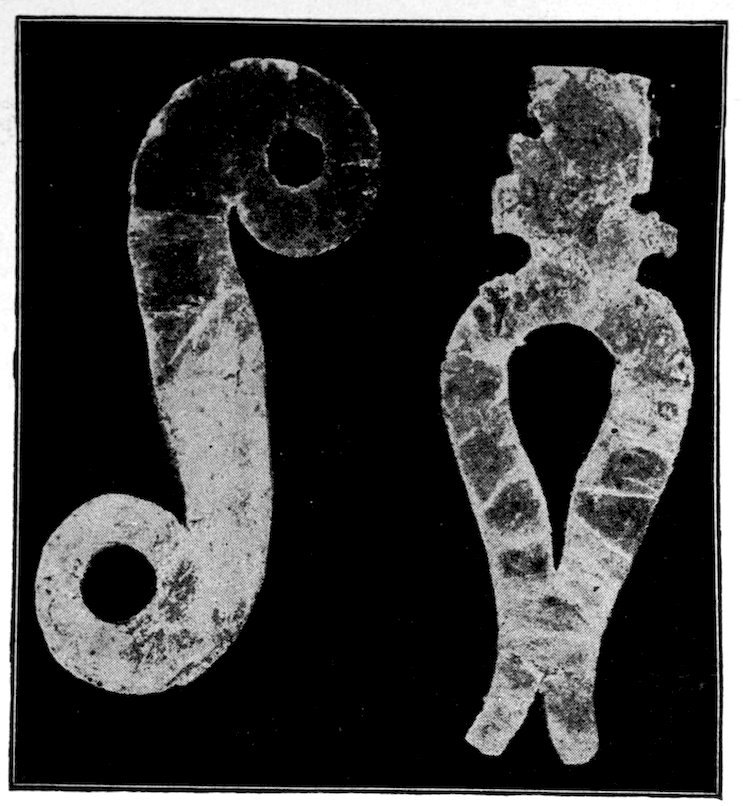
Fig. 623. (S. 3–4.) Mica ornaments. Ohio mounds. Collection of W. C. Mills, Columbus, Ohio.
What the Northern Indians received in exchange for the copper has always been a mystery to me. In Wisconsin and Michigan where drift copper occurred in large quantities, and where it still may be found, it is likely that the natives carried on an extensive trade in copper and that the peoples of Ohio passed it on, one may suppose, to the South. This trade was extensive because not only in our museums are there thousands of copper objects, but there are many more in the hands of private collectors, and in the mounds of the Mississippi Valley where there has been much digging, great quantities of hatchets, plates, nose-rings, and spools are dug up from time to time.
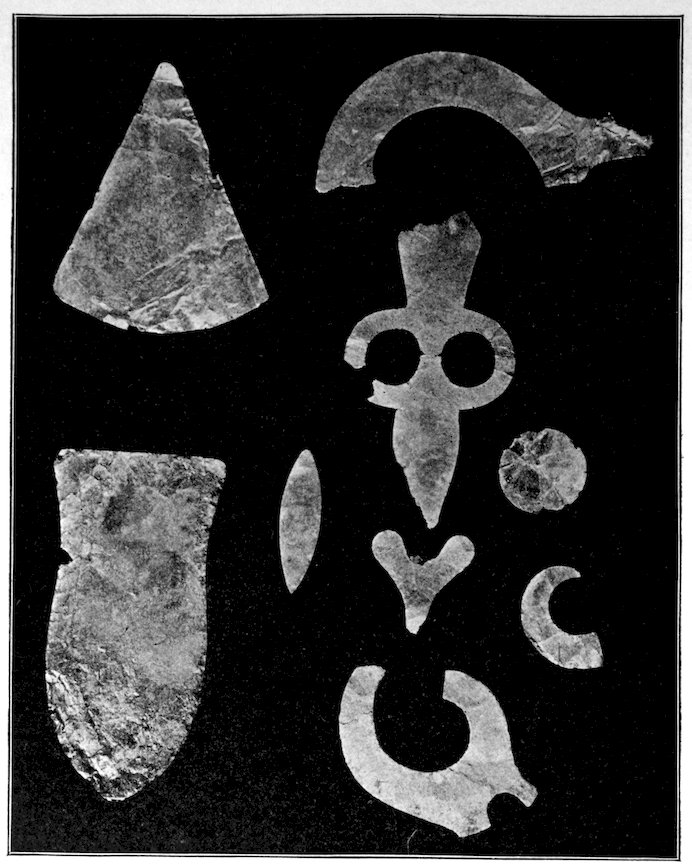
Fig. 624. (S. 1–3.) Mica ornaments from mounds of the Hopewell Group. Field Museum collection, Chicago.
One may question whether the presence of copper in the Ohio Valley really means extensive aboriginal commerce or trade. I say Ohio Valley because more mound copper is found there than elsewhere, although the South should by no means be excluded. Copper and other foreign materials abound in the middle and lower Mississippi Valley. Yet upon the shores of Lake Superior, about the copper range, on the streams and lakes of Wisconsin and Michigan where lived the Indians who possessed so much copper that they made of it hatchets, fish-hooks, knives, spear-points, etc., usually 233are to be found no Southern types save a few pipes and problematical forms in slate. What did these Northern natives receive in return for the quantities of copper which they must have bartered? Did they receive bird-stones, gorgets, pipes, etc.? Their bird-stones are very like those of Indiana and Ohio, yet they have a broad bird effigy usually with ears on both sides of the head which is not found save occasionally in southern Ohio and Indiana, and seldom in the South where mound copper is common. Their gorgets and pipes appear to be local. It has occurred to me that the peoples of Indiana and Ohio, and possibly the South, made raids in the copper country, or found copper nuggets in the drift, or mined their own copper, or robbed the Northern peoples of such copper as they wanted. If there had been any extensive aboriginal trade, we should surely find more evidence of it.
Mr. Clarence B. Moore[28] has conclusively proved that the copper taken from the Southern mounds and Ohio mounds is prehistoric and not of European origin. Some of the gentlemen connected with the Smithsonian Institution and affiliated museums contend that the fine repoussé work, on sheet-copper, could not have been made by aborigines working with stone tools.
A few words regarding the illustrations. An inspection of all the figures in this chapter, marked from the Hopewell Group, give some idea of the remarkable copper effigies, ornaments, cut designs, etc., comprising the Hopewell collection. This is now on exhibition in the Field Museum of Natural History, Chicago, and can be seen by any person who will take the pains to visit that institution. It is justly considered the greatest prehistoric copper collection in the United States. In the Hopewell Group altars hundreds and hundreds of copper ear ornaments were found, all more or less affected by heat. Professor Mills has dug up many ornaments of these same kinds and says of them:—
“Copper ear ornaments were frequently met with in the graves, and twenty specimens were secured. They were invariably found in pairs. The manufacture of these ornaments required skill, as well as a high degree of advancement in ornamental art. The mode of manufacture of the ear ornaments, although two different types were found, was similar. One type was made of two concavo-convex plates, and were connected by a cylindrical column; but only a few 234pairs of this type were found. The other type, which was most common, was made of four plates of copper, two of which are circular, and two concavo-convex. The concavo-convex plates are attached to the circular pieces, which form the inside of the ornament. The discs are connected with a small cylinder of copper. This figure is a good illustration showing two views of the second type of ear ornaments. Other copper ornaments were found sparingly in the burial cists. From one grave a large copper crescent was removed, and from another, six large copper balls.”
Sometimes the copper plates were highly ornamented and cut or trimmed. Fig. 610 is thus described by Professor Mills:—
“The plate shown in this figure is perhaps the heaviest and smoothest of all the plates taken from Seip Mound. The scroll pattern cut upon one side of the plate represents the first specimen of the kind taken from the mounds of Ohio, as far as known. The plate was wrapped in leather when it was placed in the grave, and portions still adhere to the plate, as shown in the cut.”
Of the interesting pendants in sheet-copper, Fig. 617, exhumed from a mound in Moundville, Alabama, Mr. Moore has to say:—
“The upper part of the pendant has parts excised to form a six-pointed star within a circle. On the body of the star, repoussé, is a symbol to which we shall revert later. Below is an excised triangle; beneath which is part of an arm encircled by a string of beads and an extended hand bearing on it the open eye, all repoussé.”
The decayed cloth, the fragments of skins and the curious, fine silt, usually about a handful, lying around copper objects, indicate that they were at one time carefully wrapped up. If we had preserved to us some of these wrappings, not a little light might be shed on the use of the more highly developed copper problematical forms in the United States.
I am indebted to the directors of the Milwaukee Public Museum for making illustrations of the finest copper objects in their collections: Figs. 574, 579, 582–89, 595, 597, 599, 602, 605, 613.
It would be comparatively easy for one to write a lengthy chapter upon textile fabrics. But because of the limited space now at my disposal and for the further reason that “The Stone Age” is purposely restricted chiefly to descriptions of art in stone rather than in fabrics, this chapter must necessarily be brief.
It is unfortunate that almost none of the fabrics of prehistoric times, made use of by the natives of that period, are in existence to-day, and aside from pieces of mats and here and there a bit of cloth from the dry caves of Kentucky and the Ozark Mountains, there is nothing in our museums to give a clue as to the nature and material of the garments, robes, blankets, etc. We are dependent chiefly on history for our knowledge of the use of textile fabrics.
But in the Southwest the aridity of the climate, together with the fact that the walls of the cliff-houses kept out the occasional rains, and that the sands of the desert drifting over the ruined pueblos, worked in harmony to preserve a goodly number of fragments of textile fabrics. Some of these are in the American Museum, New York City, others in Washington, Denver, and Philadelphia museums. All are of great interest and were made use of by stone-age man.
The copper plates found in the mounds of the Mississippi Valley sometimes contain impressions of cloth and other fabrics. There are occasionally bits of charred cloth, found in altars or ash-pits or between copper plates. Professors Holmes, Mills, Putnam, and others have described these in various reports.
An inspection of the material illustrated in this chapter will acquaint readers with the fact that the natives of Kentucky made use of various plants, the favorite of which is the ordinary flag, for the manufacture of baskets, sandals, etc.
In the Southwest, desert plants, such as the yucca, possessing elasticity and strength, were employed for a multitude of purposes.
Could we have preserved for our inspection the textile fabrics made use of in the Mississippi Valley, we doubtless should observe that primitive man in this great region employed utensils, garments, weapons, tools, and other things made of perishable material.
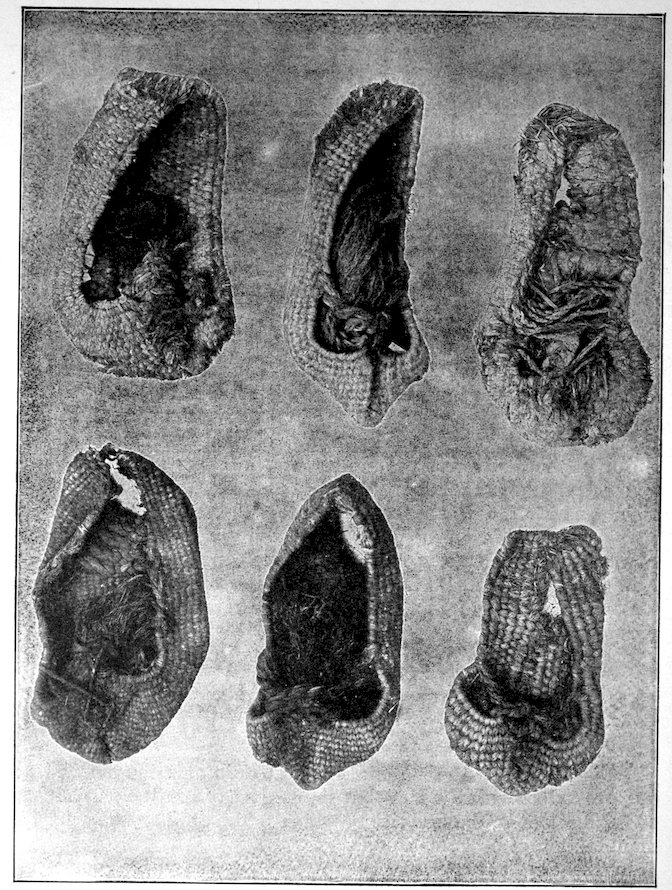
Fig. 625. (S. 1–4 to 1–5.) Sandals from Salts Cave, made of bark and wild hemp. Collection of Bennett H. Young, Louisville, Kentucky.
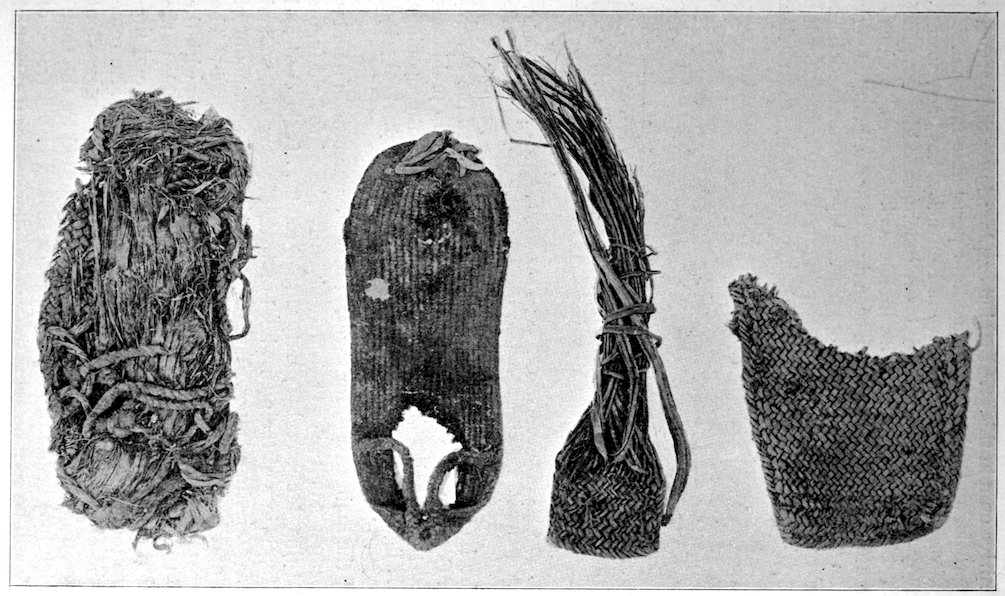
Fig. 626. (S. about 1–3.) Andover collection. Three sandals and an unfinished object from Pueblo Bonito, Chaco Group, New Mexico. Found by W. K. Moorehead.

Fig. 627. (S. 2–5.) Moccasin worn through at toe and heel, from Salts Cave. Material, leaves of cat-tail. Collection of Bennett H. Young, Louisville, Kentucky.
Salts Cave, near Mammoth Cave in Kentucky, has been recently explored by Colonel Young, and I am indebted to him for proof-sheets of his work, “Discoveries in Kentucky Caves.” Colonel Young states that the cave has been known for a hundred years and is an extremely interesting place. Upon examination he ascertained that many holes had been dug in the cave floor (for it is covered with debris and cave earth), apparently by the ancient people who had at some time lived there. Contrary to the caverns in the Ozarks, this cave has been visited and explored in prehistoric times, and the remains of man are not confined to the openings, where it is light, but extend for several miles through the various labyrinths. Colonel Young writes:—
“Along the main cavern for several miles are numerous fireplaces and ash-heaps; small piles of stone, evidently placed to hold fagots used in lighting; innumerable partly burned torches of cane-reed, and even the footprints of the men who, hundreds of years ago, walked along these majestic avenues. The cave contains a large amount of saltpeter, and has a mean temperature of fifty-four degrees. The atmosphere of the interior is dry and pure, and this, together with the nitrous matter in the earth, has produced conditions favorable to the preservation of all kinds of materials. About the hearths and fireplaces were found hundreds of fragments of gourds, and also some shells of the aboriginal squash, both of which were in an excellent state of preservation. Torches of reed, to be counted by the thousands, which had been filled with grease or soaked in oil, traces of which may still be seen on some specimens, appeared as if they had been cast aside but yesterday. Along the main avenues and the second or lower layer of caves, as well as in many side avenues, these torches were found. Those who have spent much time in this cavern say that they have discovered no places where these and other traces of aboriginal man are absent.
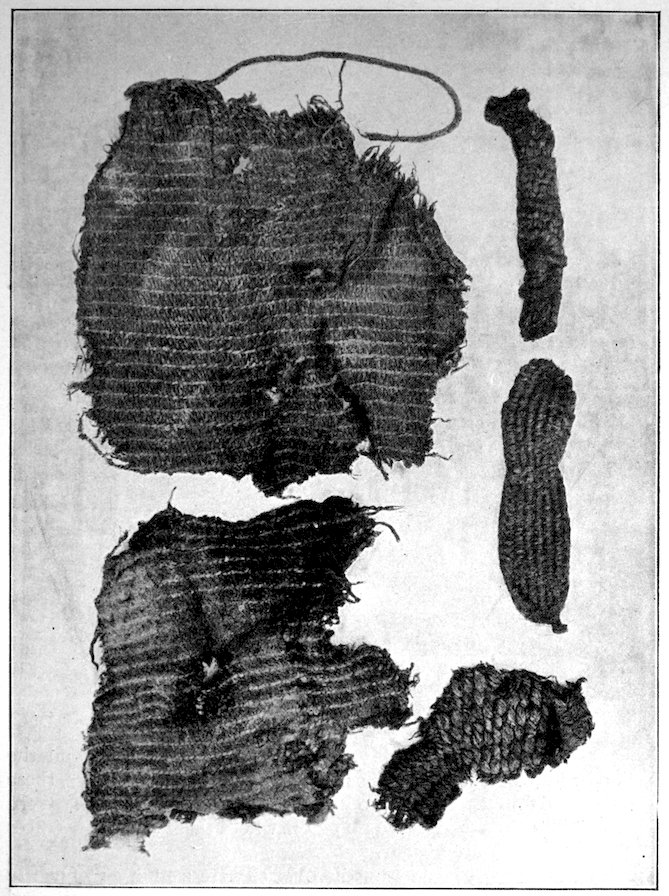
Fig. 628. (S. 1–4.) Collection of Bennett H. Young, Louisville, Kentucky. Moccasins and pieces of cloth from Salts Cave.
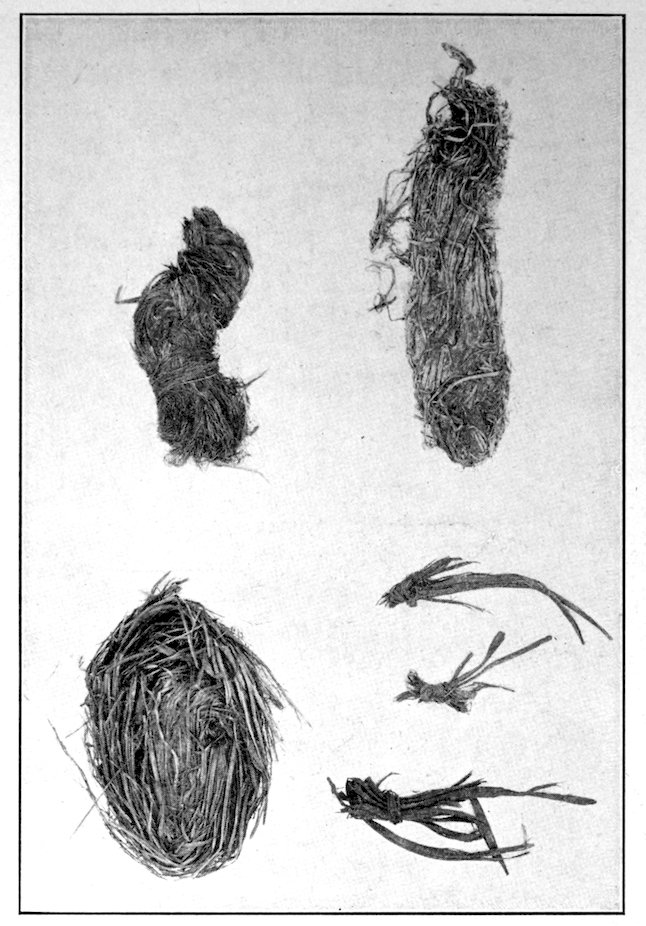
Fig. 629. (S. 1–4.) Flags, wild hemp, and other materials used in making cloth. From Salts Cave. Collection of Bennett H. Young, Louisville, Kentucky.
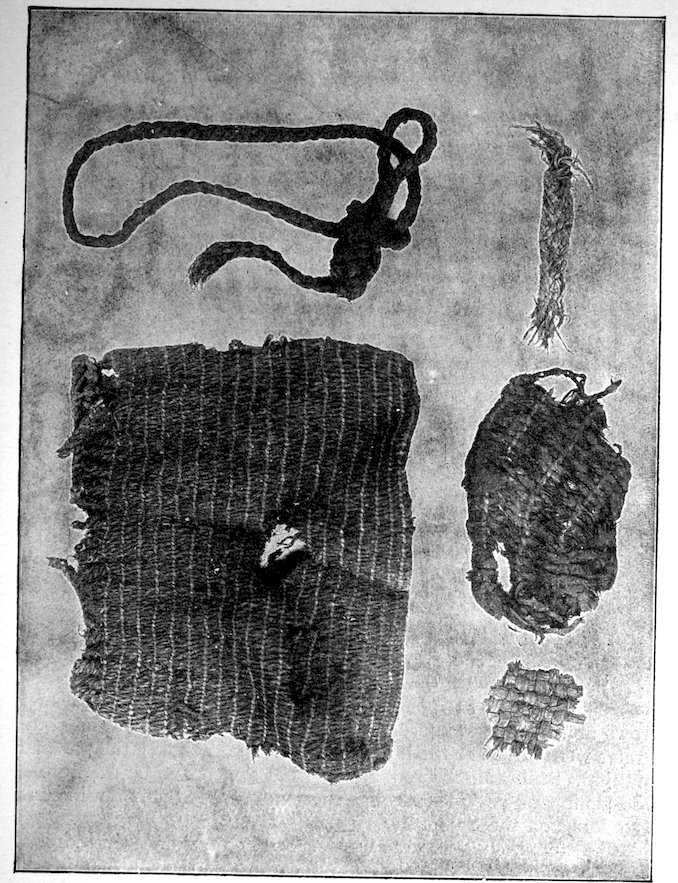
Fig. 630. (S. varying.) Collection of Bennett H. Young, Louisville, Kentucky. Bag of woven cloth from Salts Cave—nine by seven inches; plaited rope; fragments of cloth.
242“Among the most interesting discoveries were a number of neatly braided slippers or sandals, and fragments of textile art. Several materials seem to have been used in the manufacture of these. Some were made of the fibre of the cat-tail, or Typha, a plant which grows abundantly in the ponds in the southern part of the state. Others were woven of the inner bark of trees, probably the pawpaw and linn. Still others were made of what appears to be the fibre of wild hemp, and yet others from a species of grass which grew in great abundance on the Barrens of Kentucky.
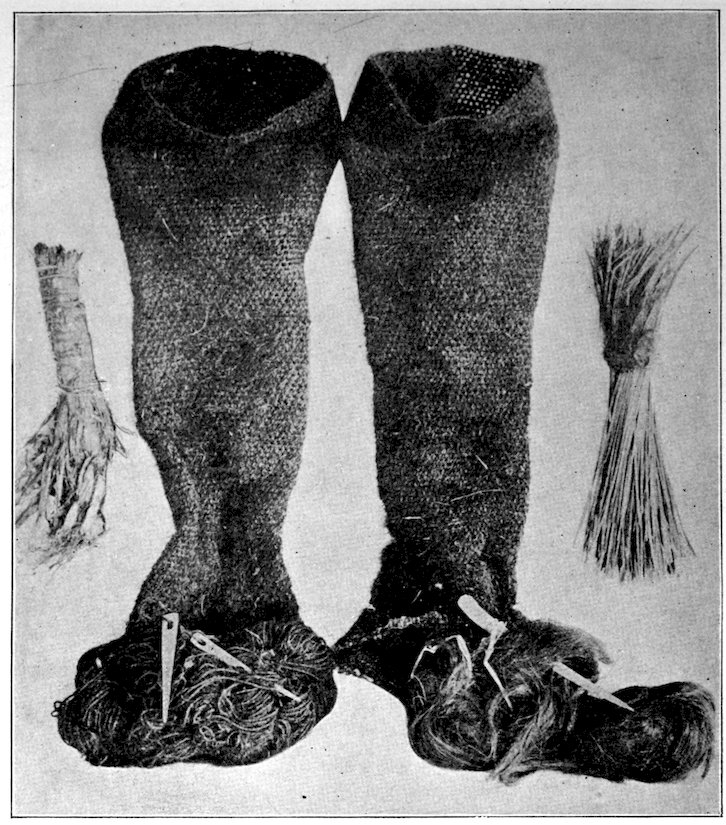
Fig. 631. (S. 1–4.) Pair of leggings, with the bone needles used in making them. From cave-house ruins in eastern Utah, 1895. Collection of Henry Montgomery.
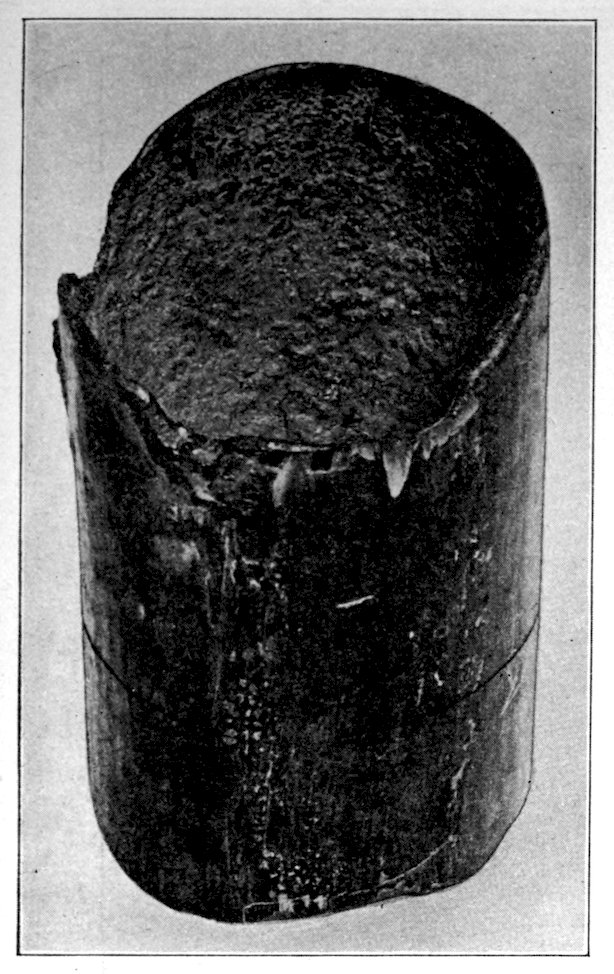
Fig. 632. (S. 1–5.) Wooden pail or tub from cave-house ruins, San Juan County, Utah, 1894. H. Montgomery’s collection.
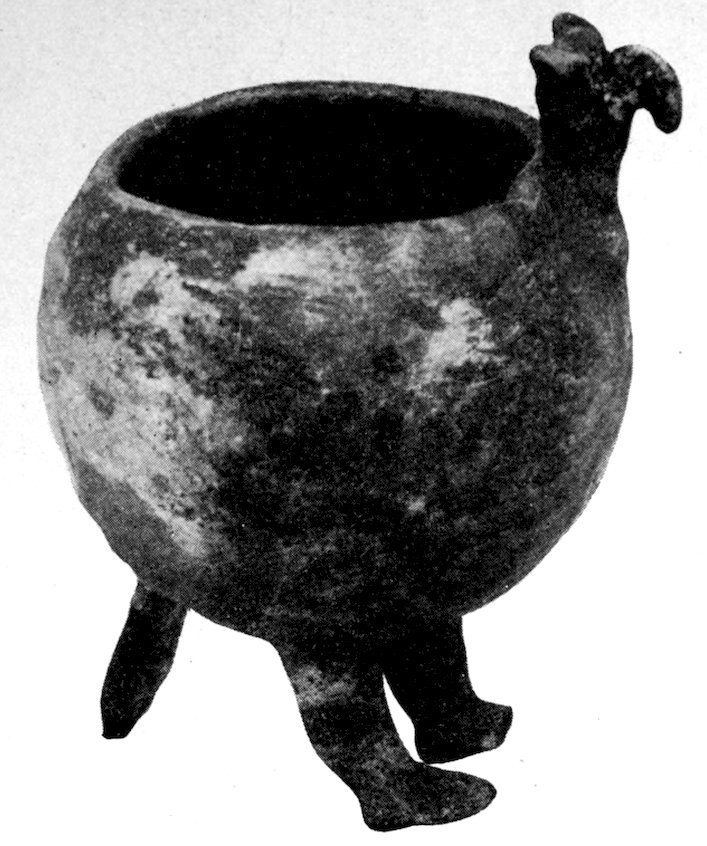
Fig. 633. (S. reduced 2–3.) Vase, turkey form. Feathers are indicated by marks made with black paint. Collection of B. H. Young, Louisville, Kentucky.
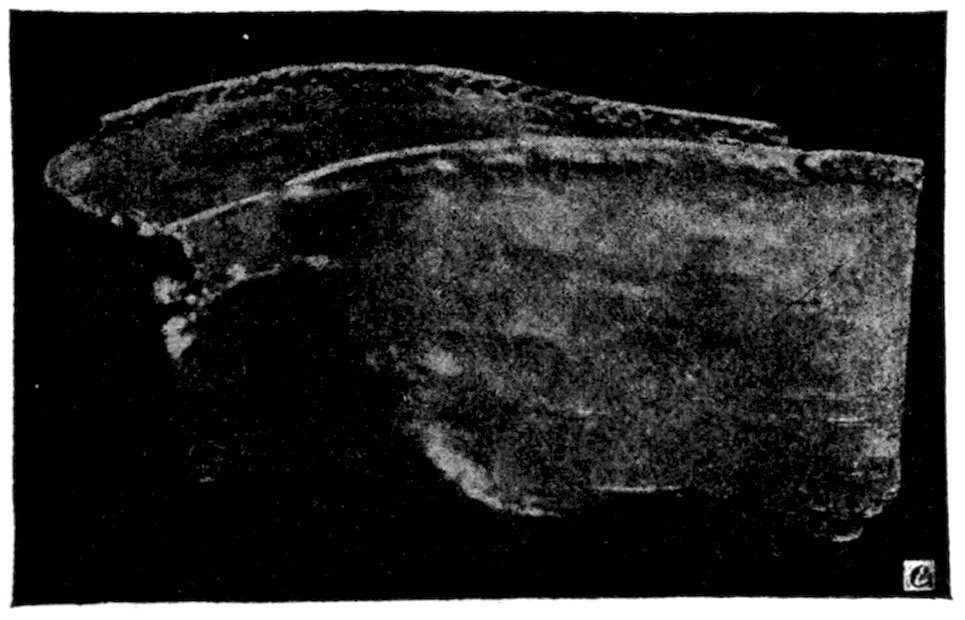
Fig. 634. (S. 1–3.) Birch bark from a burial-pit in North Dakota. Henry Montgomery’s collection, Toronto.
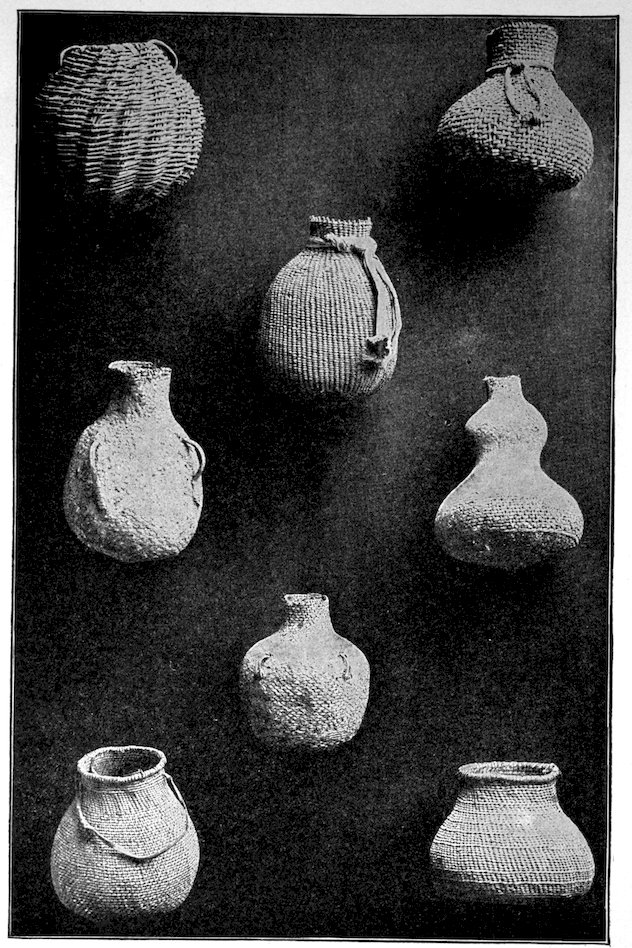
Fig. 635. (S. 1–7.) Old wicker and twined baskets from the Pueblo of Zuñi, New Mexico. This figure shows some old so-called Zuñi-ware, collected for the Bureau of American Ethnology by James Stevenson, in New Mexico, long ago.
245“The sandals show several distinct forms of braiding; the material of the more delicate and graceful appears to be the wild hemp, and the plait on the outer side exhibits a beautiful triangular figure. They have raised sides from the heel to the toe, the braids being worked forward, uniting in a seam in the middle line above the toes. Over the instep many were laced with cords, the lacing still being preserved in some of the specimens. Frequently long ornamental tassels were placed above the instep. These slippers are found in the crevices of the rock and on the ledges in out-of-the-way places where they evidently had been cast aside by these people. All show signs of wear at toe and heel. Several display a more or less skillful attempt on the part of the owner at mending or darning. This was done sometimes with cord, but frequently with bark. In size they vary from small ones, made for children, to specimens corresponding to a number seven shoe.”
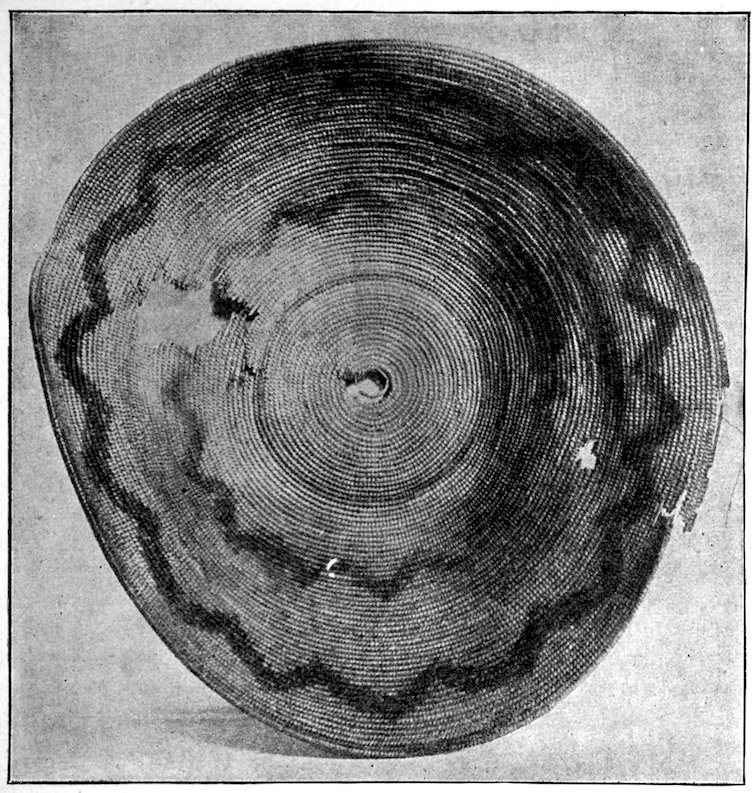
Fig. 636. (S. 1–4.) Coiled bowl-tray of the ancient basket-makers, cliffs of southeastern Utah. Ornamented by two sinuous rings in black. Collection of American Museum of Natural History, New York.
246While we have some numbers of textiles preserved for our inspection, yet our study of the subject is somewhat narrowed. As has been previously stated, the bulk of prehistoric artifacts are composed of more lasting materials. It is unfortunate that we have so few of the garments, robes, head-dresses, baskets, wooden and other things once in use in America.
Thorough exploration of the caves and caverns, the cliff-houses and ruined pueblos may bring to light quantities of this textile and wooden material, and I would urge that such investigations be carried on. Many of the caverns are ransacked by curiosity-seekers, and soon all the objects buried therein will have disappeared.
In Volume 1, of this work, on page 26, is presented the classification of the Nomenclature Committee with reference to pottery, which covers, as a matter of course, all the specimens illustrated in this chapter.
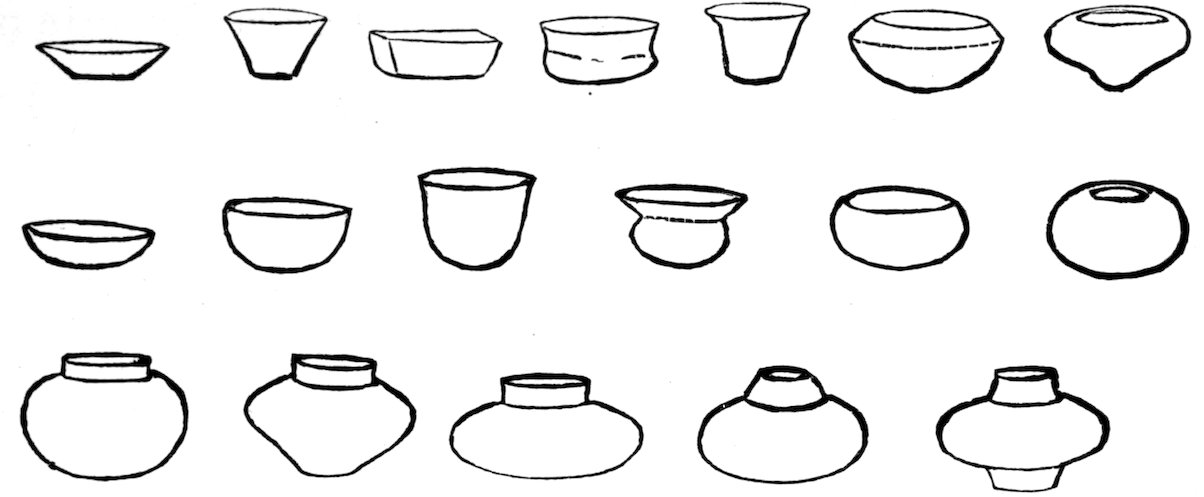
Fig. 637. (S. varying.) Outlines showing range of form of vases. Middle Mississippi Valley Group.
While it is true that a great deal of pottery has been taken from mounds, graves, cliff-houses and ruined pueblos by expeditions under my direction, yet I have never made a detailed study of ceramic art in America, although in a certain sense familiar with the forms found throughout this country.
It would be presumptuous for one to write of a certain phase of archæology that has been more ably and exhaustively treated by some one who is a recognized authority. And in pottery we have two scholars, whose explorations and studies place them first, Professor W. H. Holmes and Mr. Clarence B. Moore. Professor Holmes’s “Aboriginal Pottery of the Eastern United States”[29] will be taken as the last word on the subject. And Mr. Moore’s eighteen reports of explorations in Florida, Georgia, Alabama, and Mississippi illustrate all the forms in clay found in that extensive region.
248There is in the United States no collection of Southern mound pottery equal in extent to that obtained by Mr. Moore. His explorations have been of great benefit to science, and it is no exaggeration to state that his works shed very great light on prehistoric art as well in pottery as in other materials.
Therefore, I have quoted by permission from both Professor Holmes and Mr. Moore, and made use of numerous illustrations from their reports, including the outlines of types prepared by the former.
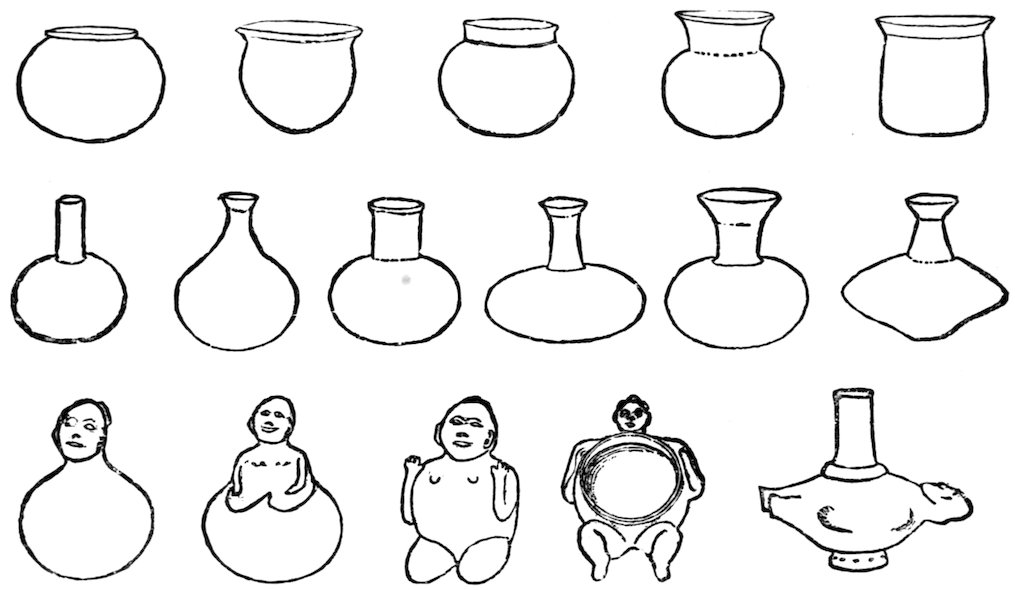
Fig. 638. Outlines showing range of form of vases. Middle Mississippi Valley Group.
Pottery may be said to be the barometer indicating the culture stage of any people. In the far North there is no pottery. In the St. Lawrence basin pottery is insignificant. In New England the few artistic specimens of decorative pottery have been made much of by observers, but these rare examples of the ceramic art indicate progress on the part of a few individuals. There was no real potters’ art north of the Ohio River or east of the Wabash. True, there are some good examples of fine pottery from the Ohio mounds, but the ancient Northern peoples made but little progress in ceramic art save on the part of a few individuals living in the Scioto Valley, southern Ohio. In the Iroquois country it appears that the natives were on the verge of developing art in pottery, and had they remained in their barbaric splendor two centuries longer, it is quite likely that they would have made remarkable advance in the potters’ art. Much of their pottery is decorated, but it is crudely so. Their pipes of pottery were highly developed, ornate, and interesting. But these have been considered under the chapter devoted to pipes and smoking customs.
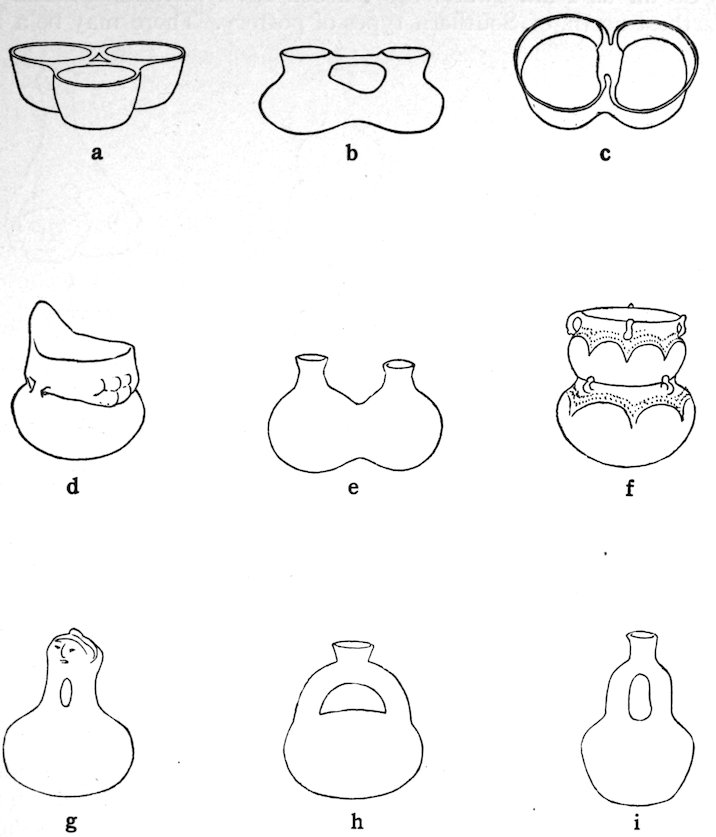
Fig. 639. Vases of compound form. Middle Mississippi Valley Group.
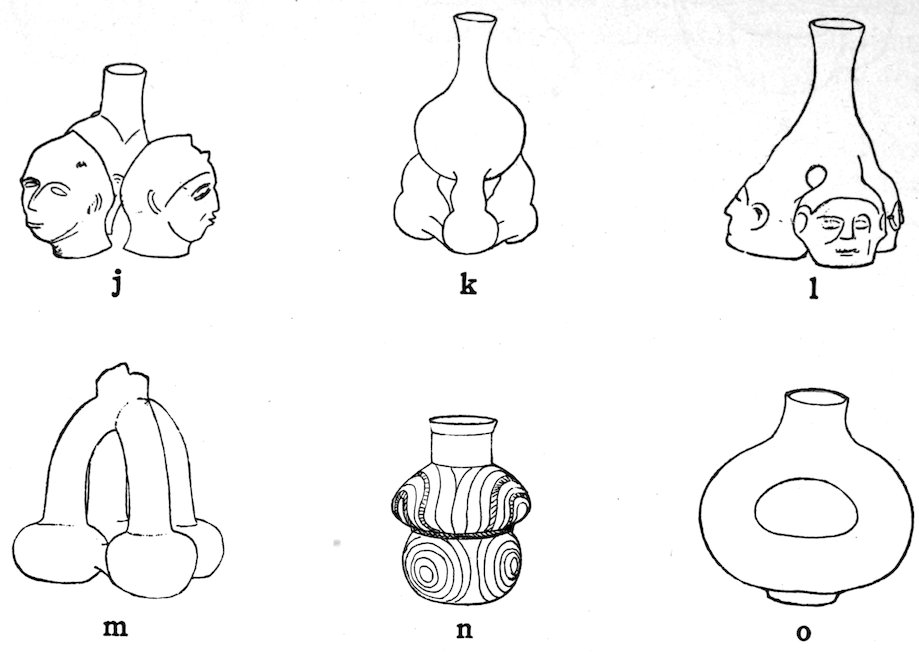
Fig. 640. Vases of compound form. Middle Mississippi Valley Group.
So far as I am aware, the Wabash River in Indiana marks the farthest north, of Southern types of pottery. There may be a few strays now and then, but the cemetery explored by Mr. Anderson for Mr. Peabody, at that place, brought to light more than one hundred jars, bowls, and effigies, all of distinct types. (A few are shown in Fig. 681.) Elsewhere north of the Ohio and east of the Wabash, I have not known of effigy pottery being found.[30] Throughout the Ohio Valley there are some fine specimens of ceramic art found in the mounds. But the pottery, as a rule, between the Wabash and the Alleghenies is of the Fort Ancient culture. Some of it is shown in Figs. 648, 649.
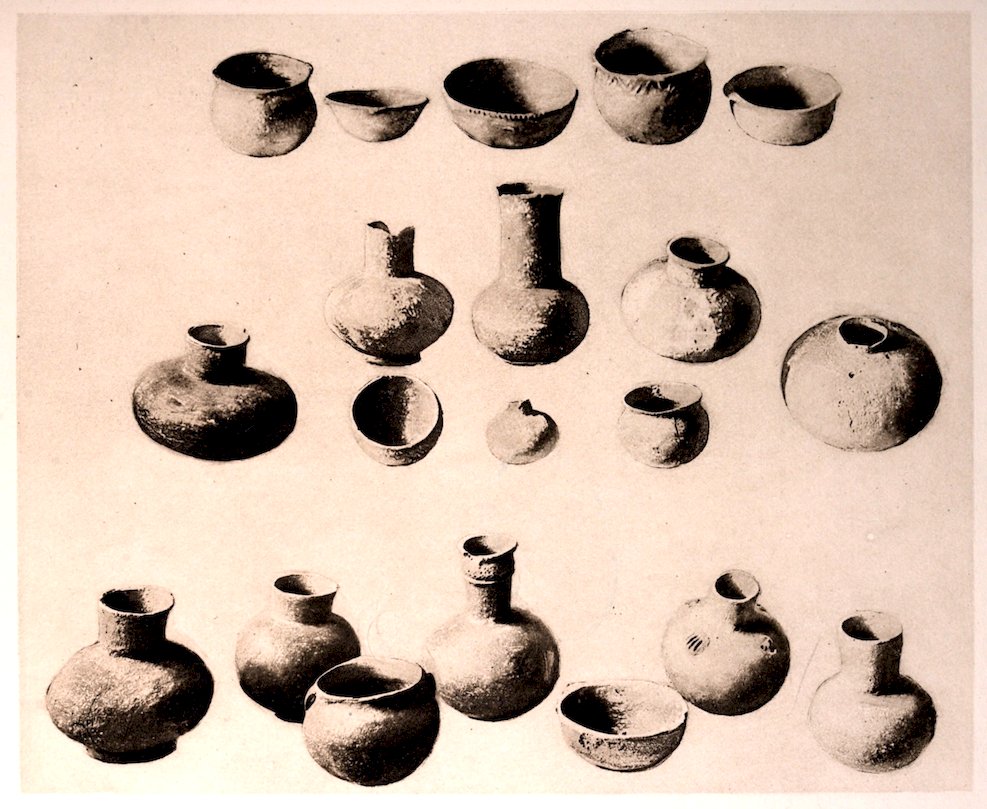
Fig. 641. (S. about 1–10.)
Collection of pottery, from mounds and graves in southeastern Missouri. From F. P. Graves’s collection, Doe Run, Missouri.
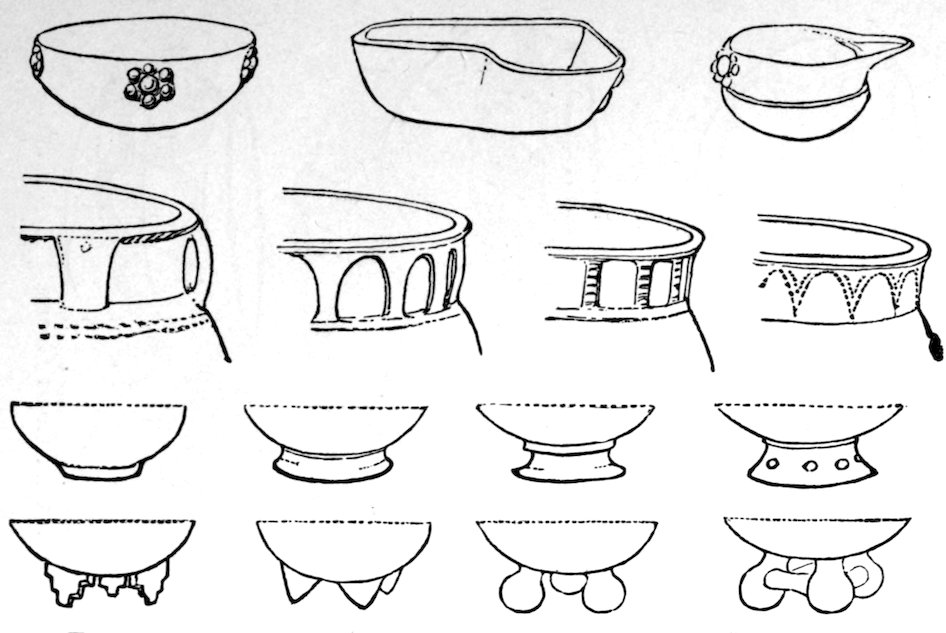
Fig. 642. Outlines showing various features of vase elaboration. Middle Mississippi Valley Group.
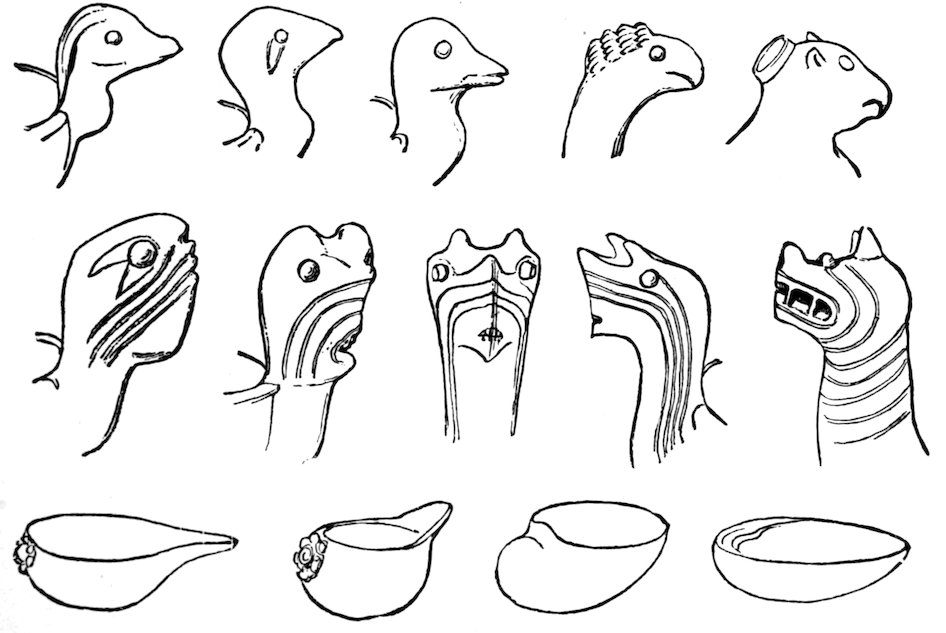
Fig. 643. Outlines showing various features of vase elaboration. Middle Mississippi Valley Group.
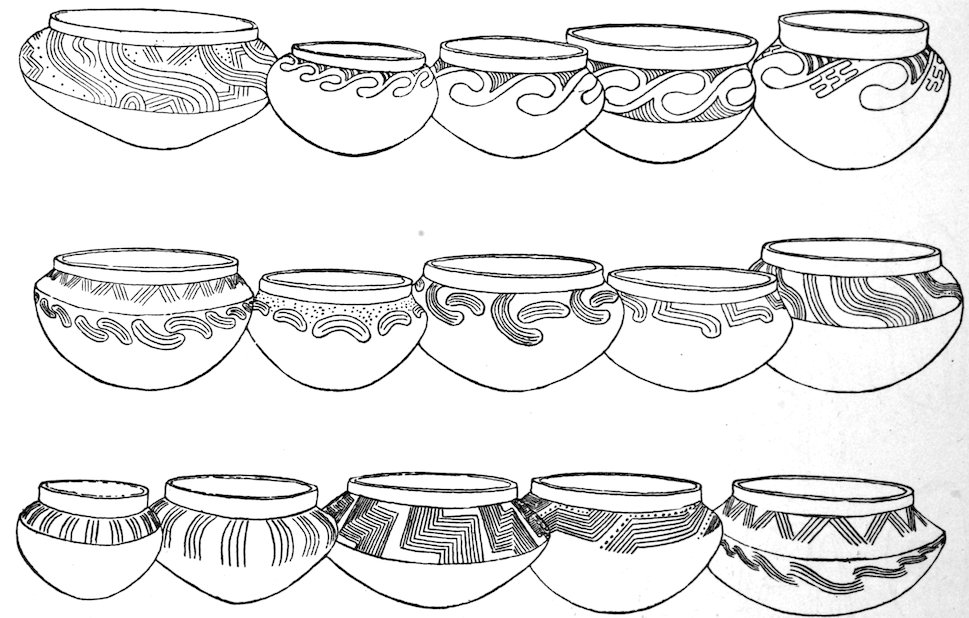
Fig. 644. Vases from a mound on Perdido Bay. Gulf Coast Group.
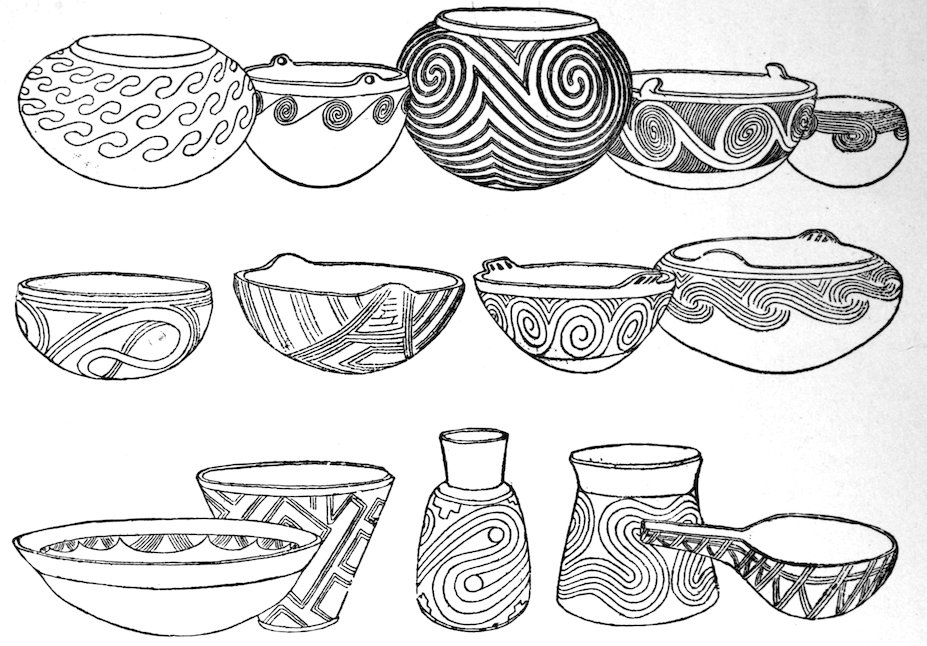
Fig. 645. Vases from a mound on Perdido Bay. Gulf Coast Group.
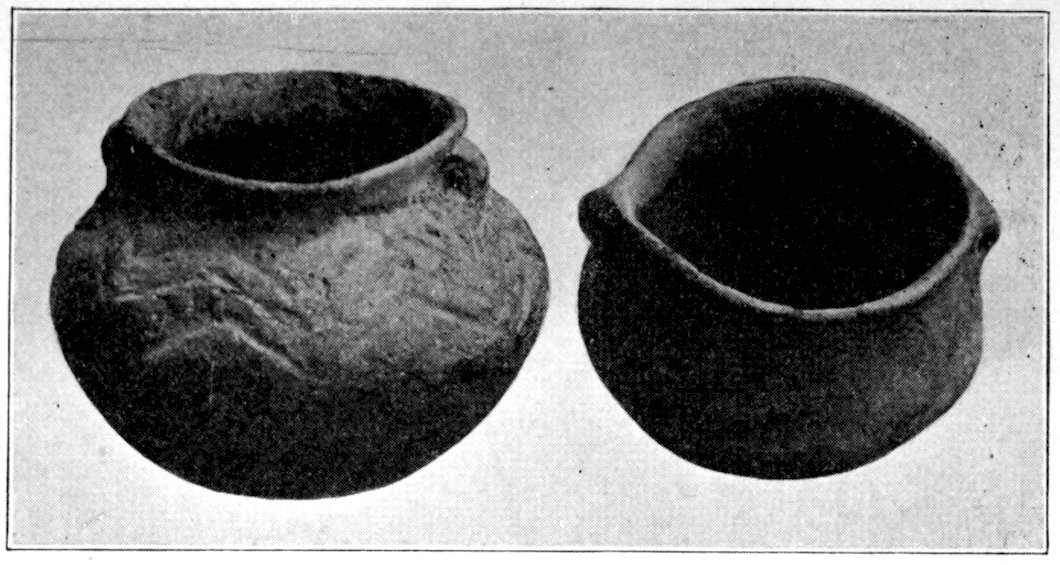
Fig. 646. (S. 1–4.) Wisconsin bowls. S. D. Mitchell’s collection, Ripon, Wisconsin.
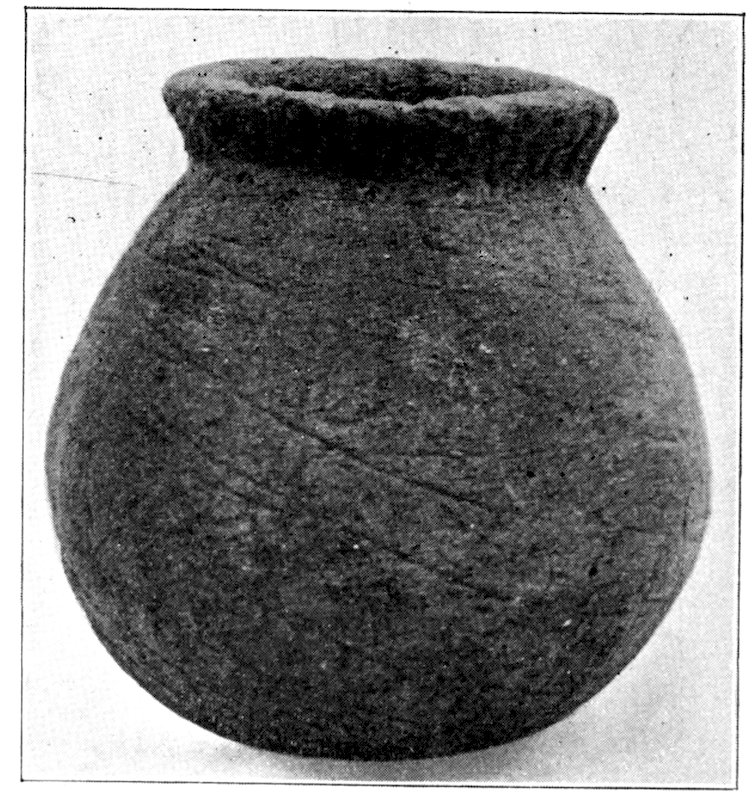
Fig. 647. (S. 1–4.) Urn of pottery. From mound in western Ontario. Collection of Henry Montgomery.
At the great cemetery at Madisonville, Ohio, the pottery does not exhibit skill in modeling or high finish. All the pottery of this great region appears to be crudely made, of inferior materials, tempered with pulverized unio shells or sand. In Indiana and Illinois there are occasional effigies found in the mounds, but one must pass to the Cumberland and Tennessee valleys, and to the St. Francis basin of Arkansas, to southeastern Missouri, and to the region about Memphis and Nashville for the highest ceramic art of the Southern Mound-Builders. These people were peculiarly skilled in the potter’s art, and all the museums of the country are filled with their handiwork. Professor Holmes has commented on it at great length in the 257publication cited. The potters’ art was highly developed in regions explored by Mr. Moore, as is attested by the specimens presented in Figs. 678, 670–673. But effigy pottery in Florida, Georgia, and Alabama is rarer than in Arkansas and Missouri. On the contrary, there is more decorative pottery (with incised lines, tracings of snakes and birds) in the region explored by Mr. Moore than in the middle Mississippi Valley.
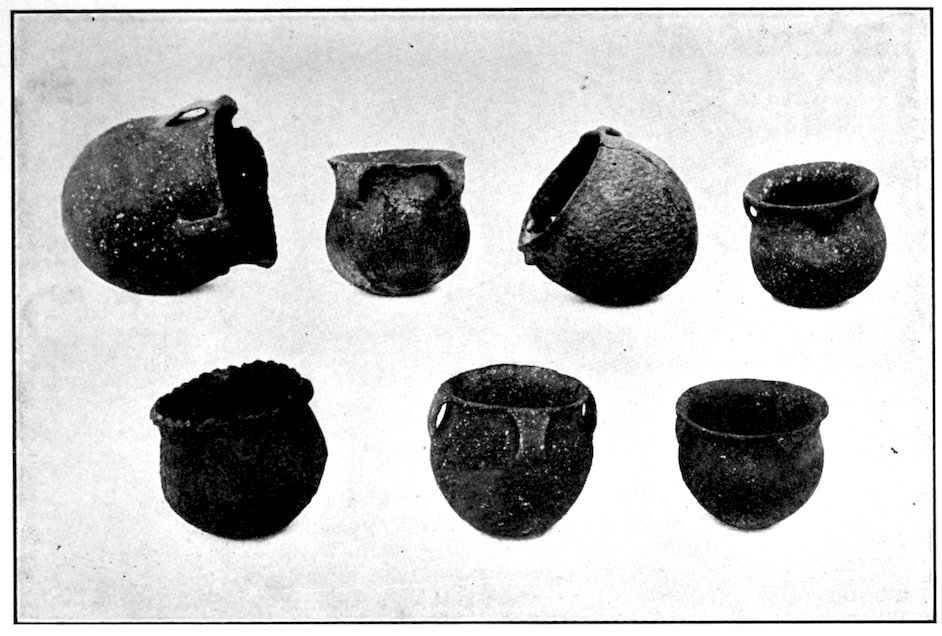
Fig. 648. (S. about 1–6.) The two central ones in the upper row and the left-hand specimen in the lower row are corrugated; from northeastern Kentucky. The others are from southern Kentucky. Collection of Bennett H. Young, Louisville, Kentucky.
Through the Great Plains there is a dearth of pottery. The buffalo hunters had little need of it. The cemeteries and mounds of the Indian Territory and Oklahoma, and of that long stretch of country flanking the Arkansas River, produce good pottery, but not comparable with that of the stone graves and mounds of the central South.
Northwestern California, the entire Rocky Mountains present an anomaly in archæology in that no pottery—save here and there a stray—is found. The Cliff-Dweller country, by which I mean the Colorado River Valley, including its tributaries, abounds in pottery of the highest type found on the American continent.
258But while admitting that the Cliff-Dweller pottery was superior in finish, material, and form of bowls, bottles, and dishes, yet the effigies of the South and the middle Mississippi Valley are superior to effigies found in the Cliff-Dweller country.
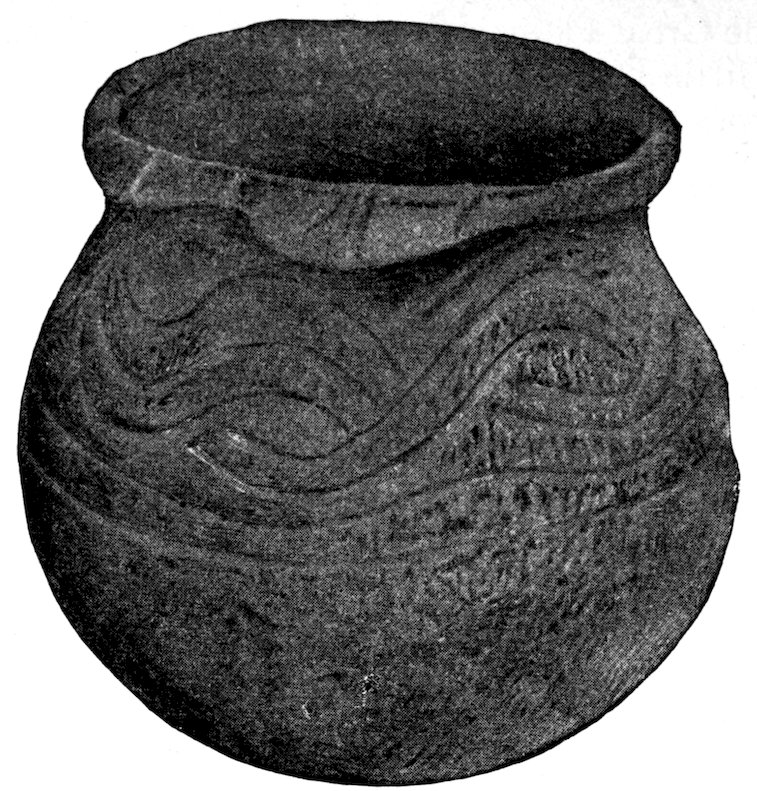
Fig. 649. (S. 1–2.) Perfect pottery found with a skeleton, Gartner Mound, Ohio. W. C. Mills’s collection, Columbus, Ohio.
The uses of pottery are primarily domestic. Whether bowls, jars, and other forms were used as receptacles in which to boil or stew or bake matters not. Man invented pottery because it was more convenient for him to make a receptacle out of clay and bake the clay than to hollow a bowl out of stone. He moved in the line of least resistance, and it was easier to make a bowl or a dish from clay than to carve such a utensil from stone. While Indians roasted much of their meat on the end of sticks, or baked the food in the ashes, yet they preferred to boil and stew their foods. This is especially true of the established villages where a profusion of pottery fragments abounds. It is natural to suppose that as the ceramic art developed, to the variety of forms in clay, man added the dish, the waterbottle, the effigy, and more or less complicated forms of the jar or the bowl. And because nothing but true cooking-pots are found in the Lake Superior region, New England, the Delaware and Susquehanna valleys, I claim that the pottery art was not developed in those regions beyond the manufacture of rough utensils to be used about the fire. And although there is some mound pottery in Ohio of such finish and character as to designate it as above, and pottery was made use of in the culinary arts, yet these examples are rare and denote rather a high culture in a certain locality than proficiency in ceramic art. It is only in the central and southern portions of the Mississippi Valley and in the Cliff-Dweller country that pottery-making became an art.
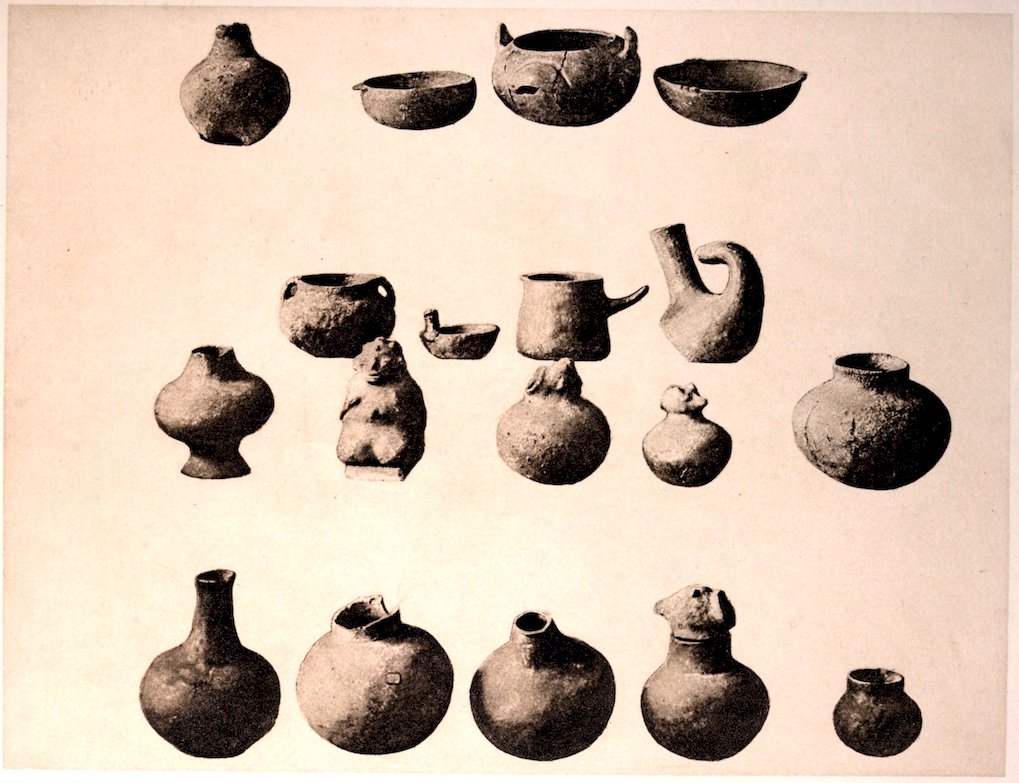
Fig. 650. (S. about 1–10.)
Various jars, bottles, and bowls, from graves and mounds in southeastern Missouri. Collection of F. P. Graves, Doe Run, Missouri.
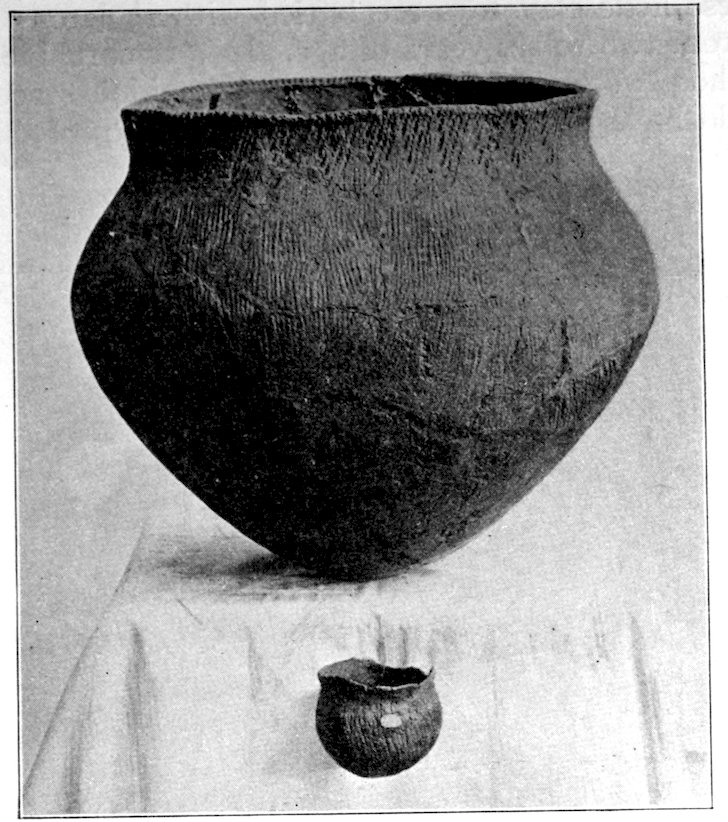
Fig. 651. (S. about 1–5.) The small vessel is just the size of a teacup. The restored vessel has a diameter of eleven inches at the top. Found at Two Rivers, Wisconsin. Collection of H. P. Hamilton, Two Rivers, Wisconsin.
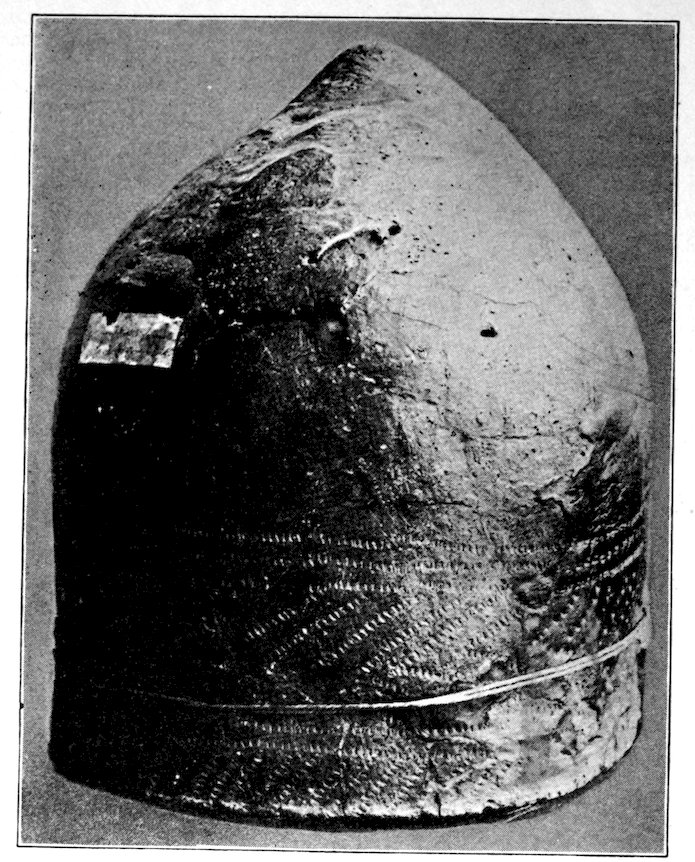
Fig. 652. (S. about 1–5.) This pottery has been carefully restored. It was found in Warehouse Point, Connecticut, and is thirty-eight and one half inches in circumference and fifteen inches high. Collection of A. E. Kilbourne, East Hartford, Connecticut.
Indeed in the Tennessee stone graves, and at the village at the mouth of the Wabash River in Indiana, there have been found numerous clay rattles and clay toys. The latter take the form of small bowls and dishes. With them are frequently small clay pebbles. These little clay toys are buried with skeletons of children ranging from two to six years of age. It is remarkable that these people, whom we have considered as in the middle stage of barbarism, should have invented the toy. It is quite probable that the women who made these clay dishes were not influenced by knowledge of similar things in use among Europeans, for the Tennessee graves and the Wabash cemetery appear to be prehistoric. Such discoveries as the presence of these dishes alongside of little children suggest that we should go slowly in our statements that most of the time of the aborigines was given up to warfare and barbaric ceremonies. We know not the whole story of their daily life, but every year there are additions to the sum of human knowledge, and such finds as I have enumerated emphasize the human side of these people.
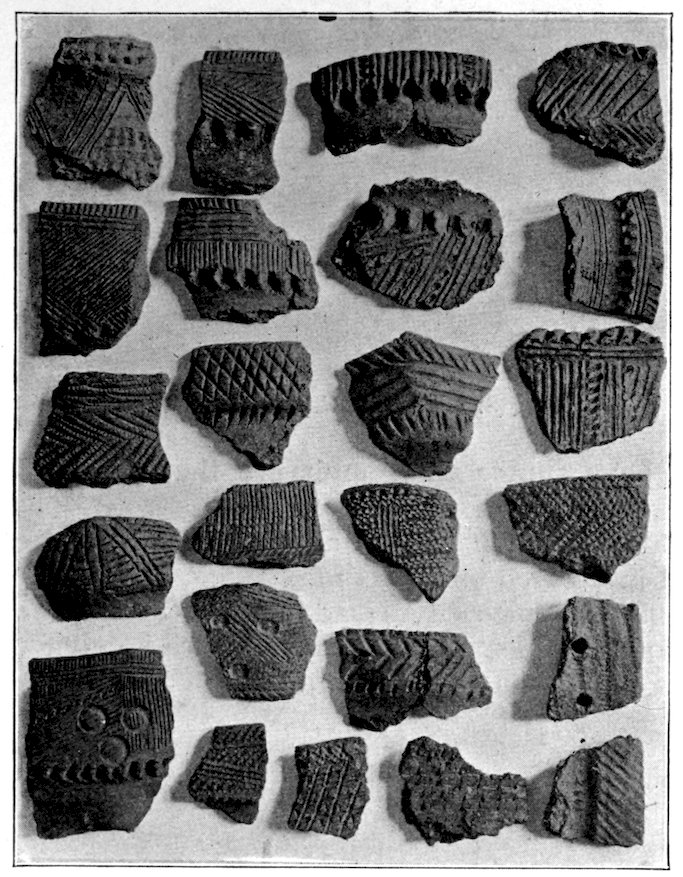
Fig. 653. University of Vermont collection.
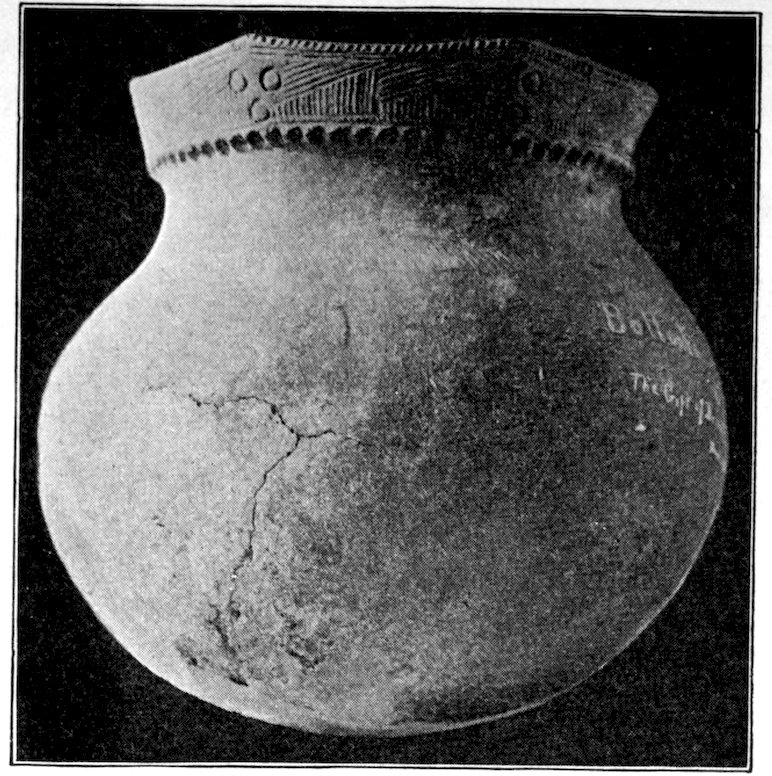
Fig. 654. (S. 1–3.) University of Vermont collection.
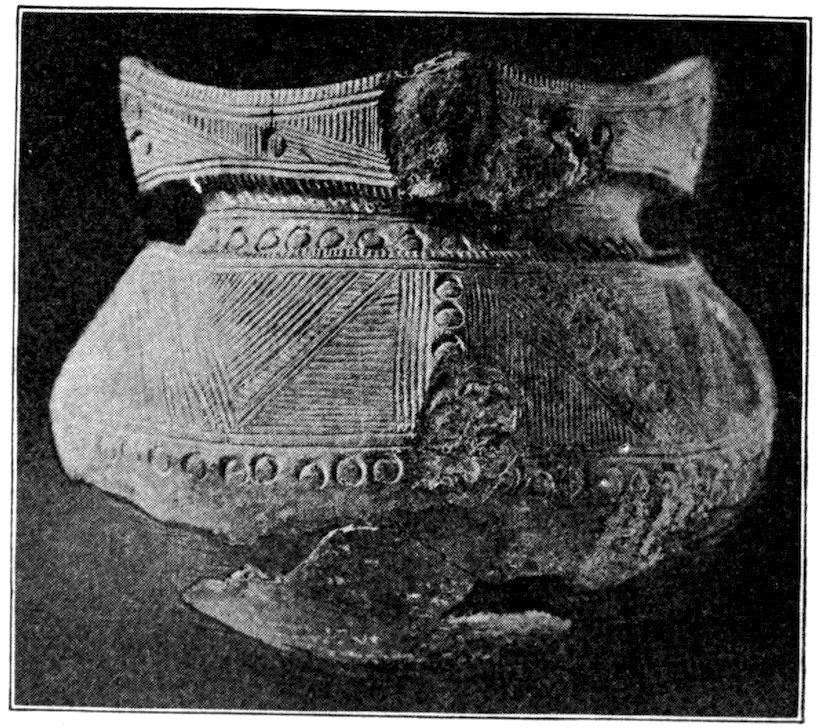
Fig. 655. (S. 1–3.) University of Vermont collection.
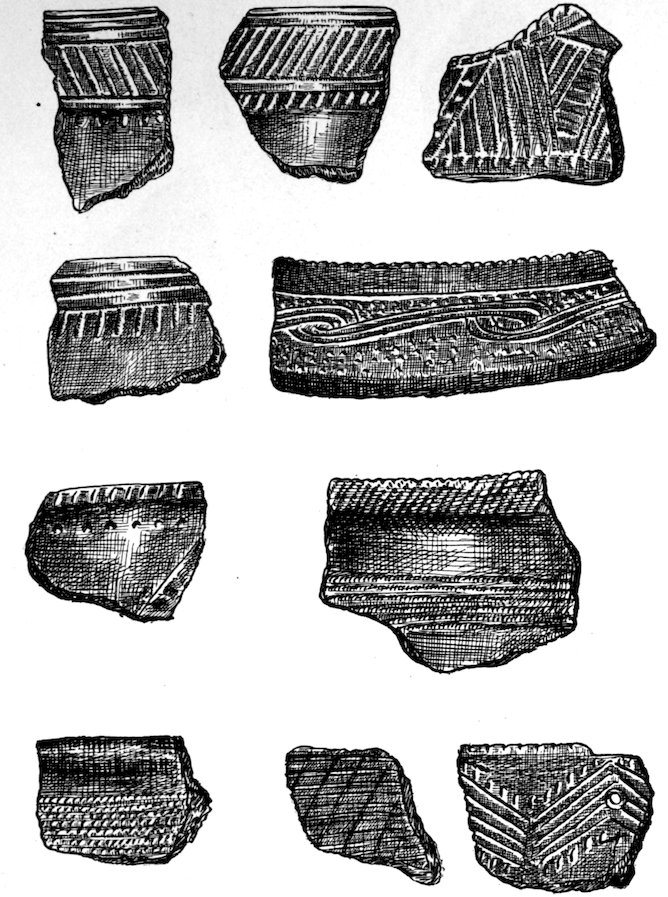
Fig. 656. (S. 1–2.) Broken pottery from Ohio and Pennsylvania sites. Andover collection.
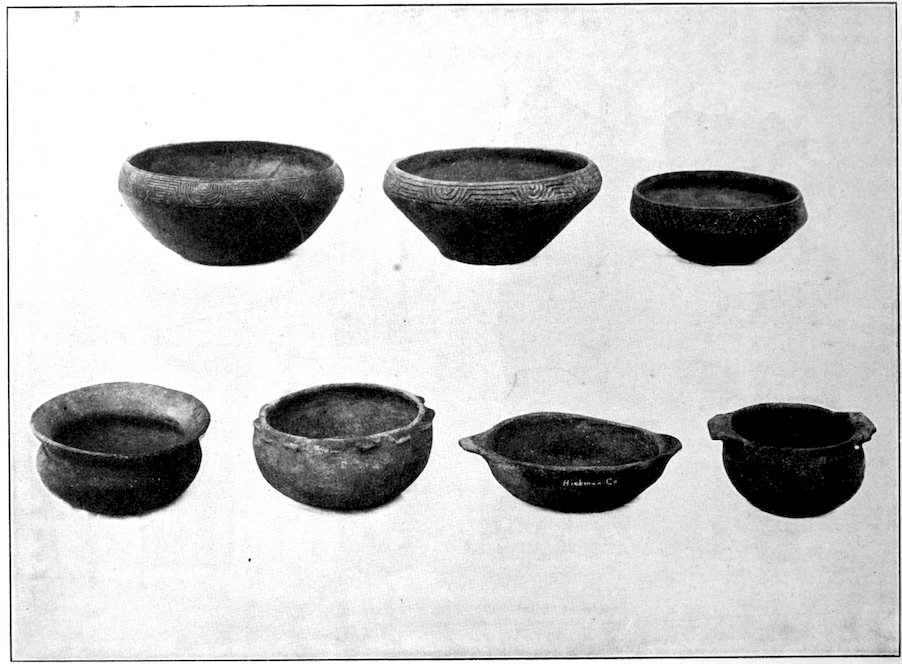
Fig. 657. (S. 1–5.) Bowls from Kentucky graves and mounds. B. H. Young’s collection.
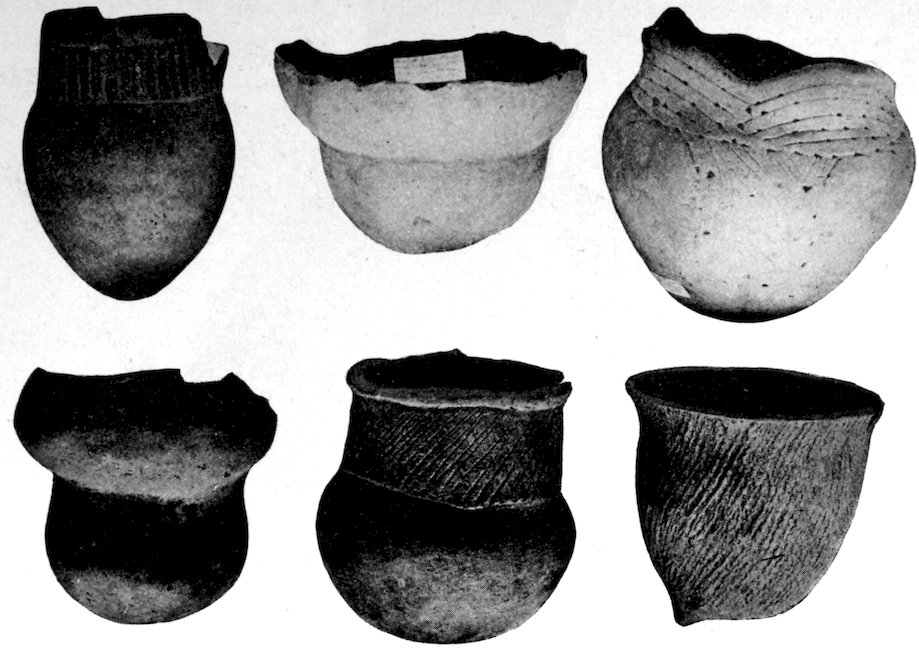
Fig. 658. (S. 1–4.) Florida pottery. Andover collection.
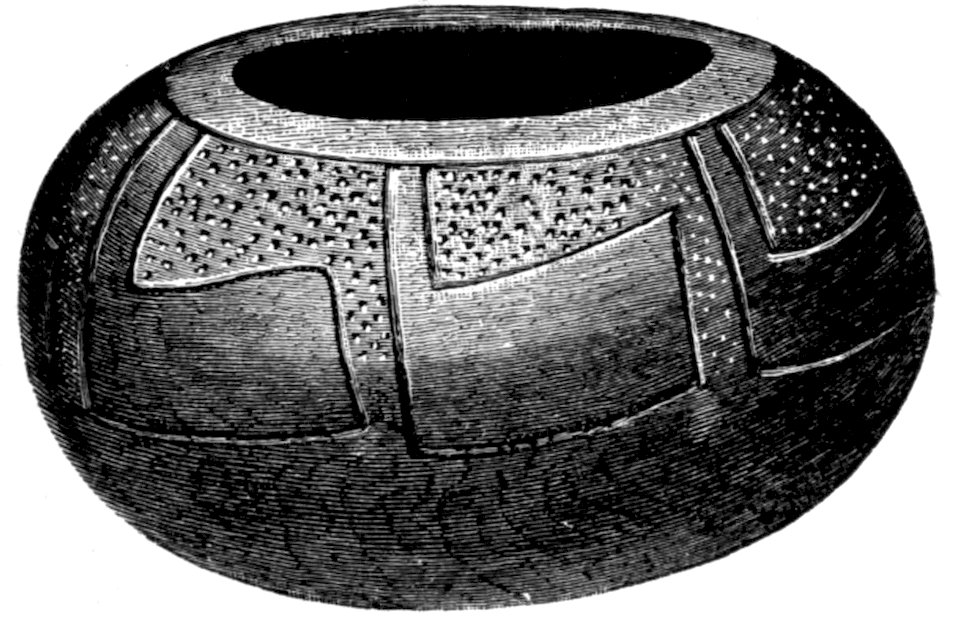
Fig. 659. (S. 1–3.) Vessel, from Arkansas. Davenport Academy collection. Middle Mississippi Valley Group.
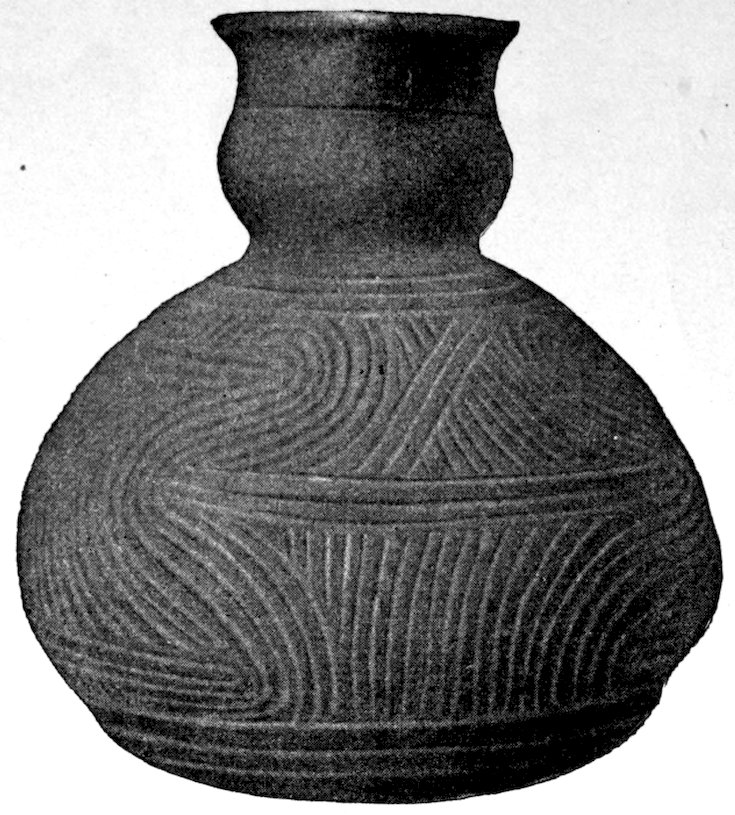
Fig. 660. (S. 1–2.) Vase with incised design. From Louisiana.

Fig. 661. (S. 1–4.) Florida pottery. Phillips Academy collection.
269The ceramic arts among the aborigines embrace not only clay forms used in cooking and ollas for cooling, rather common in hot countries; but also effigies were made of clay, there were clay spindle-whorls, also clay rings, discs, and objects we know not the use of. Clay beads have been found in a number of places. Illustrations, with brief descriptions, are presented of all these clay things. It is quite likely that on the large village-sites in the Tennessee and Cumberland valleys, extending from central Kentucky to central Tennessee and northern Alabama, many sun-dried clay objects, or objects imperfectly burned, have disappeared through climatic agencies. I have remarked on the importance of comparing historic sites with prehistoric sites and have insisted that this should be done. I shall show, in the chapter cited above, that the prehistoric as well as the modern Indians selected the most favorable localities for villages; therefore modern villages were often built on the site occupied by a prehistoric building. The presence of stone, clay, bone, and shell objects on these sites indicates that the population was greater in prehistoric times than in modern. The fabrics and the wooden objects of ancient times have long since disappeared, as have most such things of even two centuries ago. It is observed on many sites that there are no shell objects even in the ash-pits, and few bone objects.
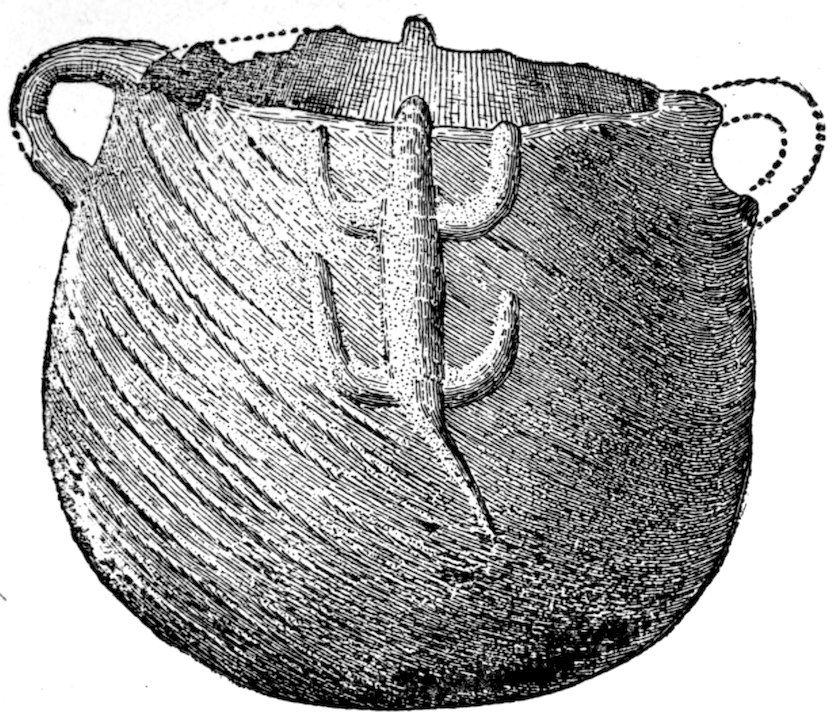
Fig. 662. (S. 1–3.) Vase from Madisonville, Ohio. Ohio Valley Group.
I take this to mean that such sites are the oldest of all. The things that are preserved are only those of such substances as resist atmospheric agencies. If one will study a village-site, walking back and forth across the ploughed field for hours,—as I have done,—one will observe that there are pieces of pottery of firm texture. There are other pieces of pottery ready to disintegrate. The same is true of shells. While one’s conclusions as to pottery are based upon the specimens he finds, yet I do not consider it at all visionary to 270assume that forms in clay, other than pottery, were in use among the Indians. I, myself, have picked up fragments of pottery in such disintegrated condition that they could be crumbled up between the thumb and index finger.
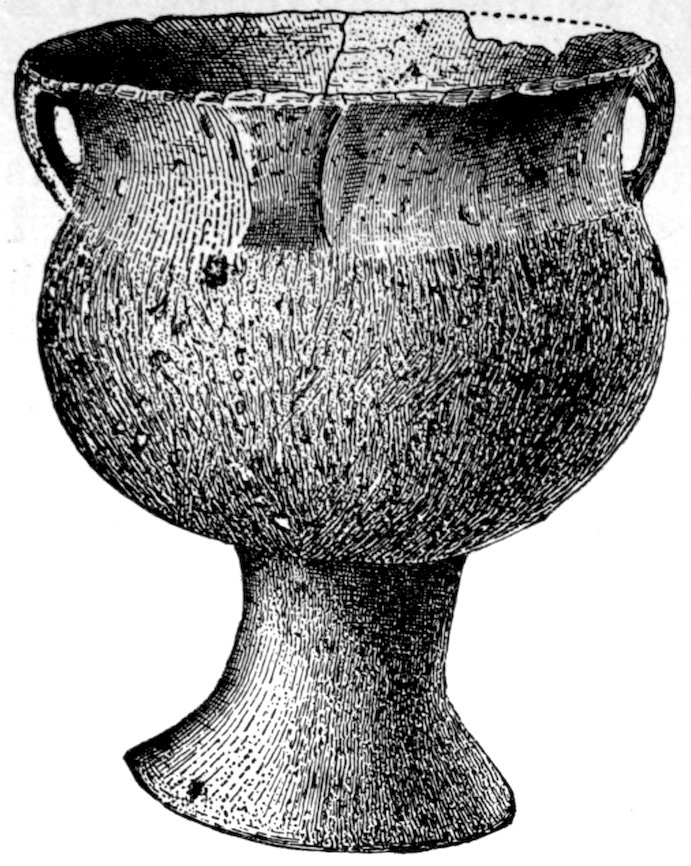
Fig. 663. (S. 1–4.) Vase from a mound at Madisonville, Ohio. Ohio Valley Group.
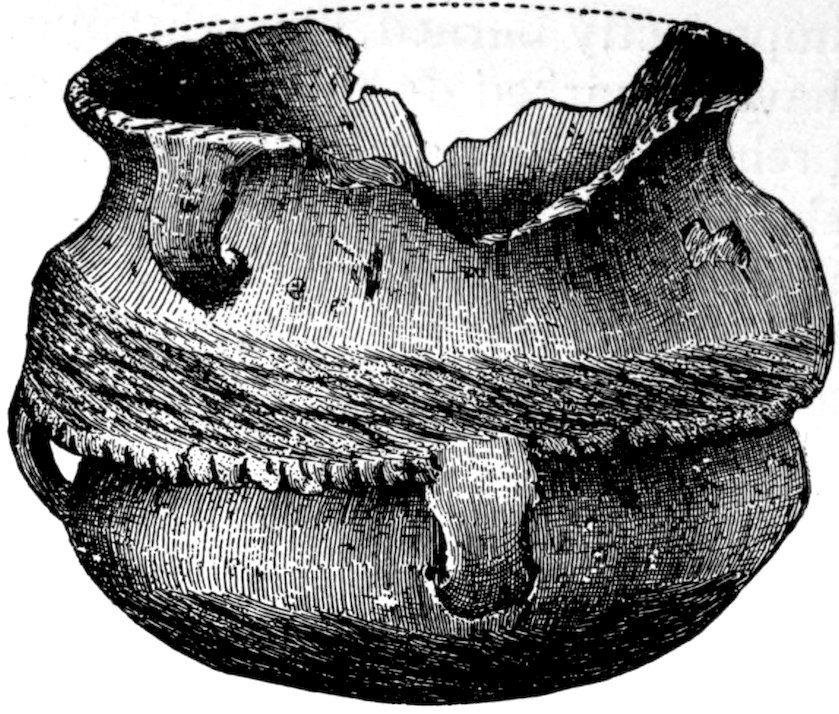
Fig. 664. (S. 1–2.) Vase from a mound at Madisonville, Ohio Valley.

Fig. 665. (S. a little over 1–3.) Vessel, from Arkansas. Middle Mississippi Valley Group.
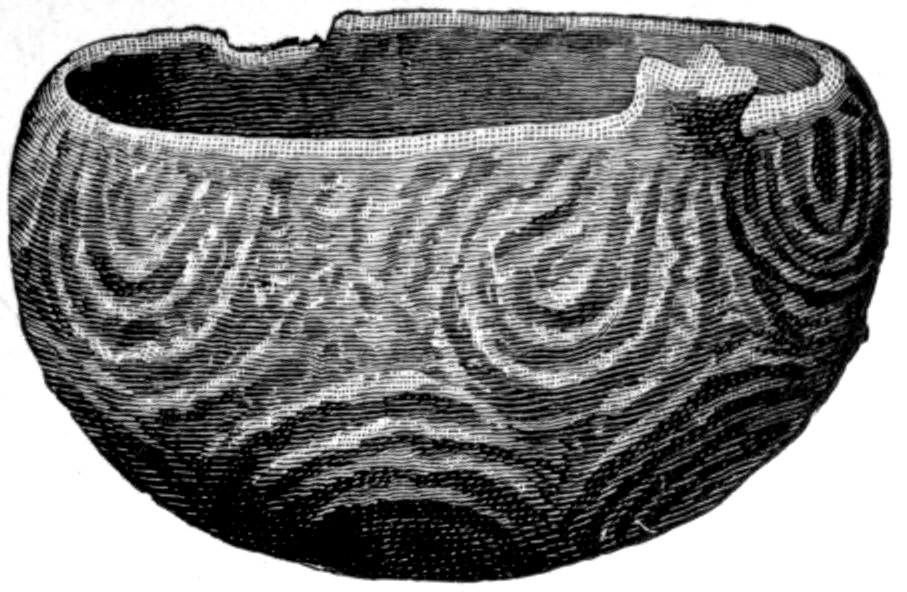
Fig. 667. (S. 1–3.) Vessel, from Arkansas. Davenport Academy collection.
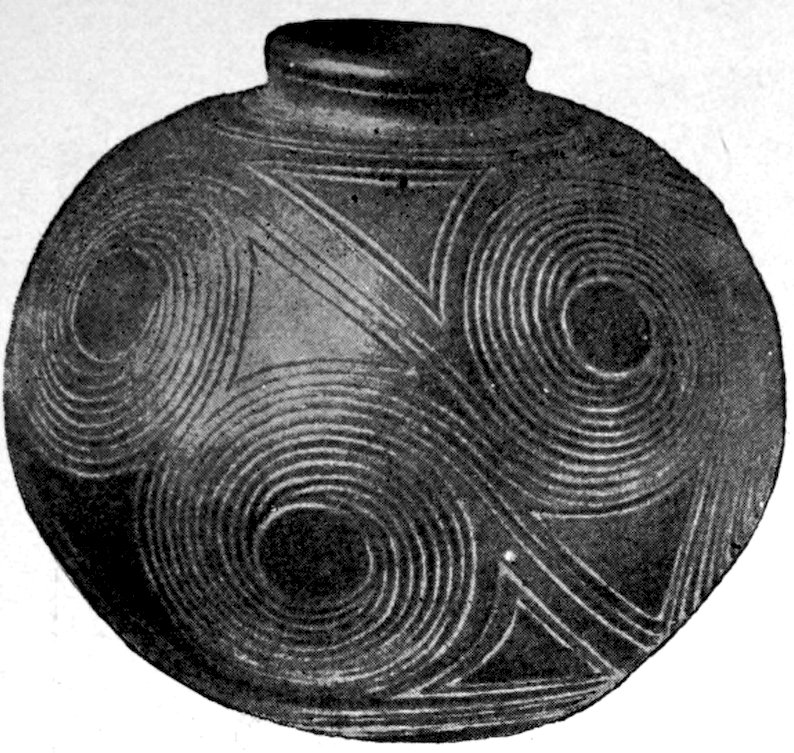
Fig. 666. (S. 1–3.) Vase with incised design. Lower Mississippi Valley.
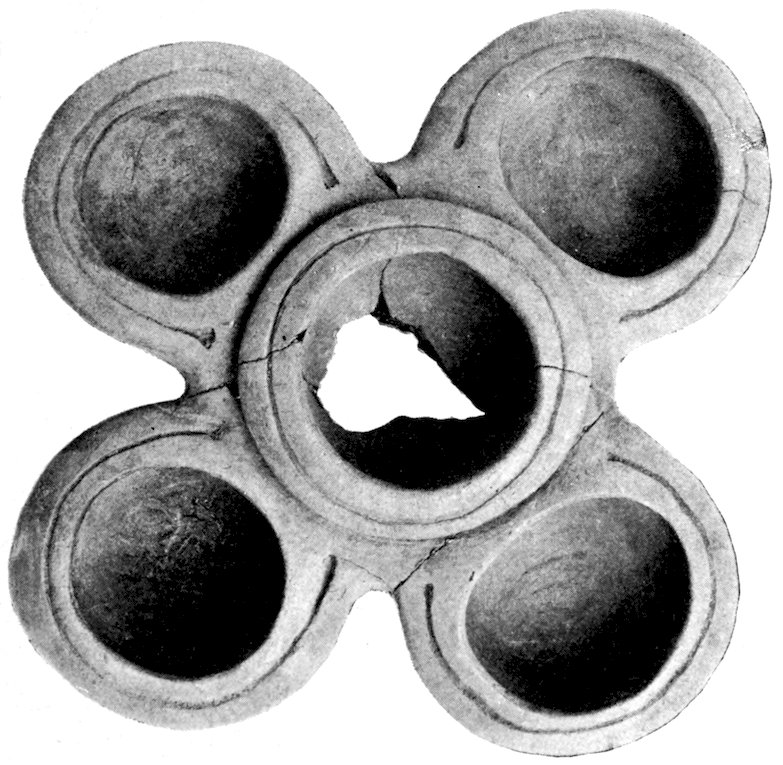
Fig. 668. (S. 1–3.) From a mound near West Bay P. O. “Certain Aboriginal Remains of the Northwest Florida Coast,” p. 131, Fig. 1.
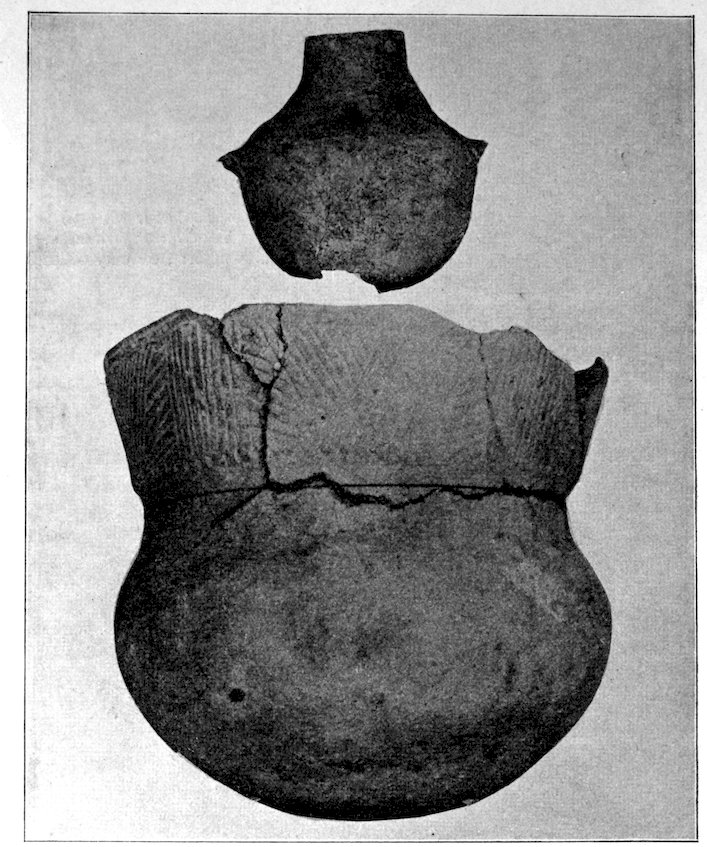
Fig. 669. (S. 1–2.) Clay vessels from Iroquoian sites, New York. Collection of the Buffalo Society of Natural Sciences, Buffalo, New York.
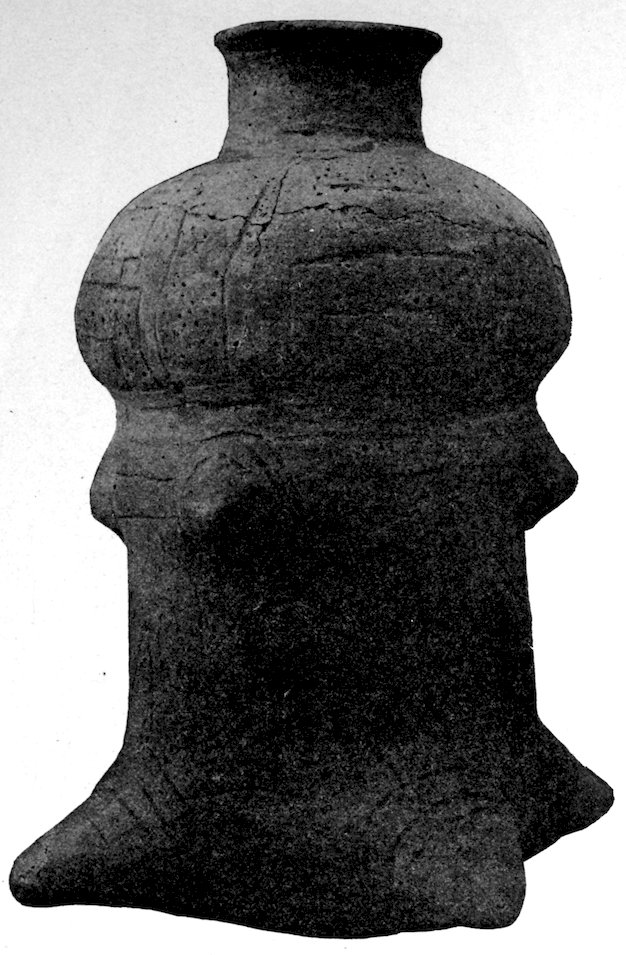
Fig. 670. (S. 2–3.) Peculiar jar found during C. B. Moore’s explorations. A vase, probably unique, of compound form, representing a short-necked bottle imposed upon a vessel of eccentric shape, having a series of four projecting lobes, above and below. The ware is most inferior. The decoration, faintly and rudely executed, consists partly of the scroll and partly of parallel lines and punctate markings.
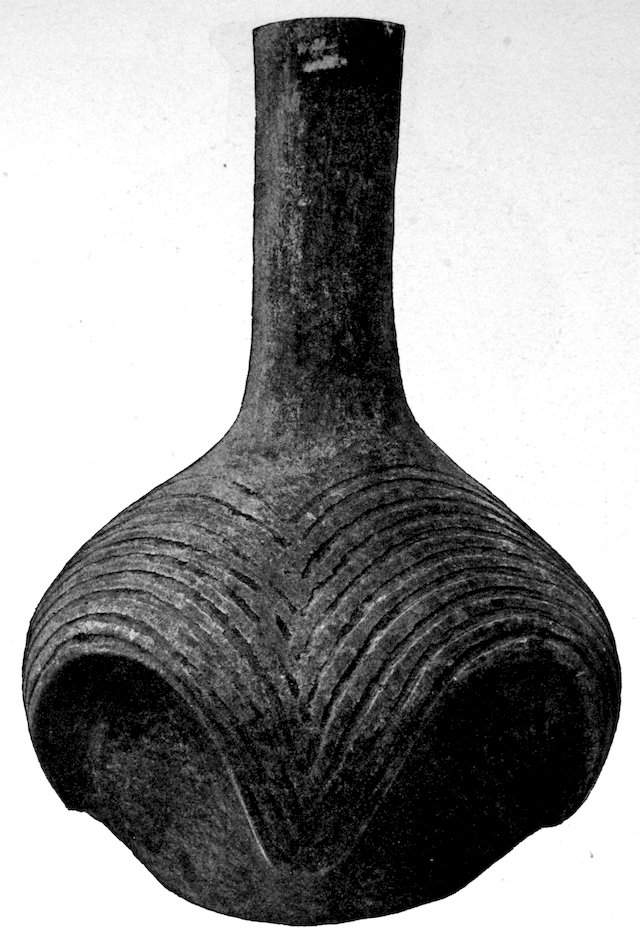
Fig. 671. (S. 2–3.) Mound place. A bottle of gray ware, having a flat base and a most unusual shape of body—possibly a compound form. The decoration consists of series of curved trailed lines above the spaces in the lower part of the body.
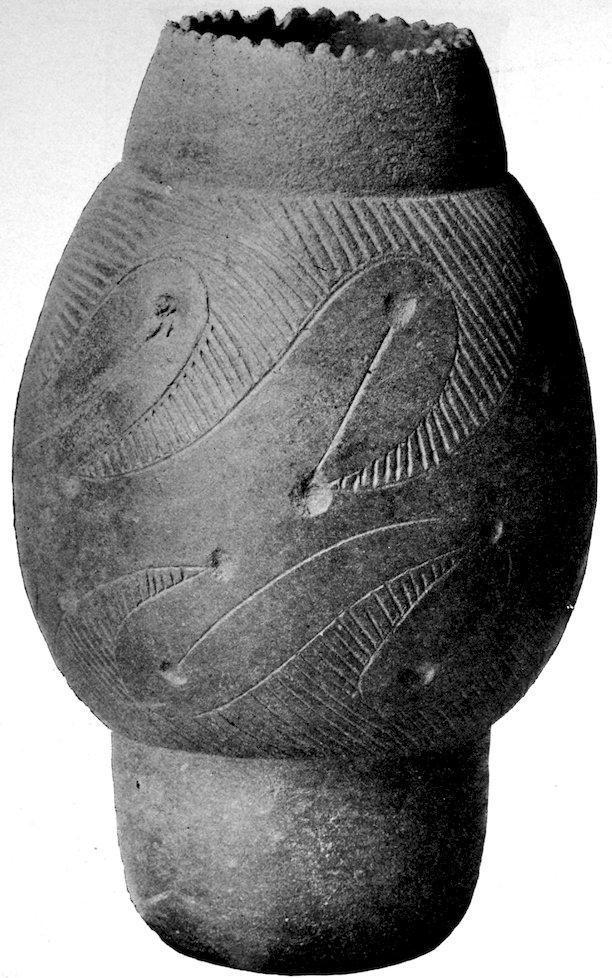
Fig. 672. (S. 1–1.) Mound below Hare’s Landing. “Mounds; Moundville Revisited; Mounds of Chattahoochee and Flint River.” Moore, p. 431, Fig. 3.
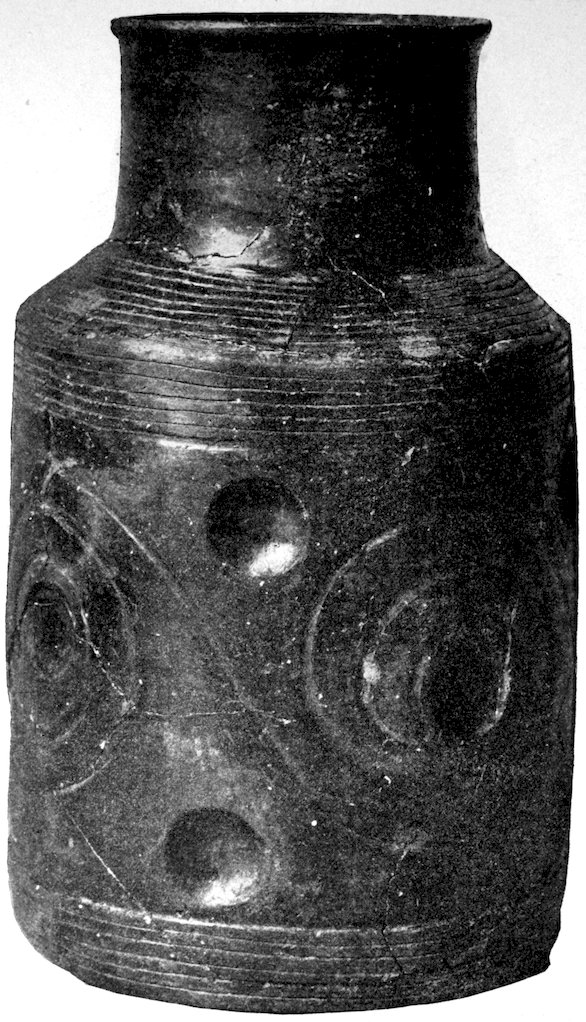
Fig. 673. (S. 3–4.) This jar was badly crushed, and lay apart from human remains. Put together, it proved to be a beautiful jar of highly polished ware. The decoration is made of scrolls, depressions, and incised encircling lines.
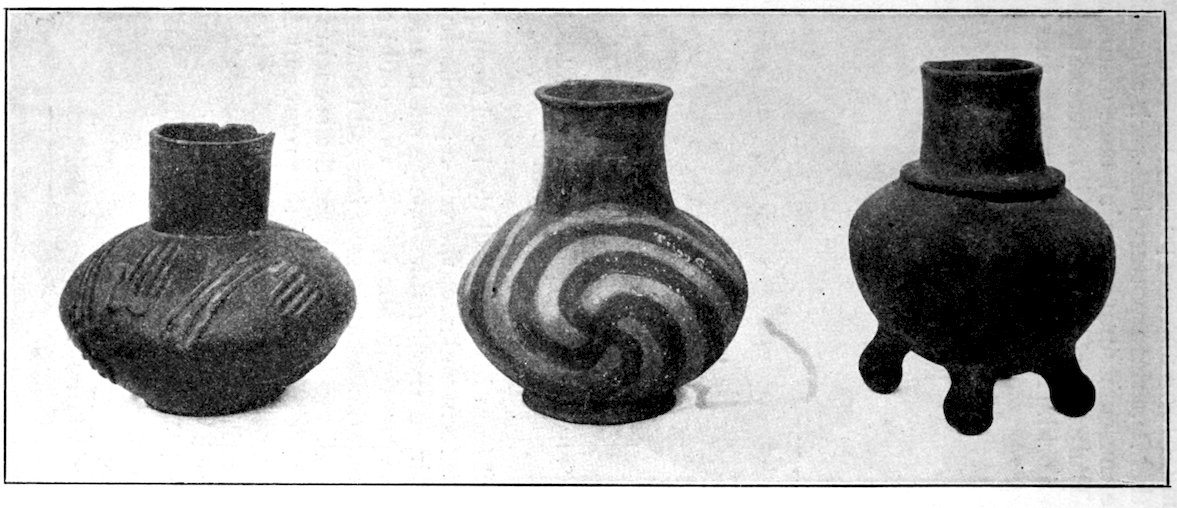
Fig. 674. (S. 2–9.) Three fine decorated jars from graves in southwestern Kentucky. B. H. Young’s collection, Louisville.
278The range of pottery in America both north and south is from the rudest, thick, clumsy bowl, such as has been found in Kansas or Nebraska or in certain parts of New England, to the highest art of the ancient Cliff-Dwellers. I do not say highest art of the Pueblo people, for the modern Pueblo art does not equal that of the ancient Pueblos or Cliff-Dwellers. It must be remembered, when studying American pottery, that although a bowl from Arkansas, a bottle from Mississippi, a dish from Tennessee, or a pitcher from New Mexico may be of similar form and like pottery found in Greece, Egypt, or Europe, yet this American pottery has such an individuality of its own that the museum curator can at once distinguish the one from the other. Truly American pottery is different from that found elsewhere in the world. It may seem a paradox and yet it is true that while the bowl from Missouri and the bowl from ancient Rome may be of the same form and size, there is a peculiarity observed in the American specimen that enables one to set it aside as distinct and peculiar to the American aborigines. One could assemble and mingle in a museum a thousand vessels, jars, and bowls from all over the world, remove all the labels, and yet the students of American ceramics would at once pick out those that represent American art.
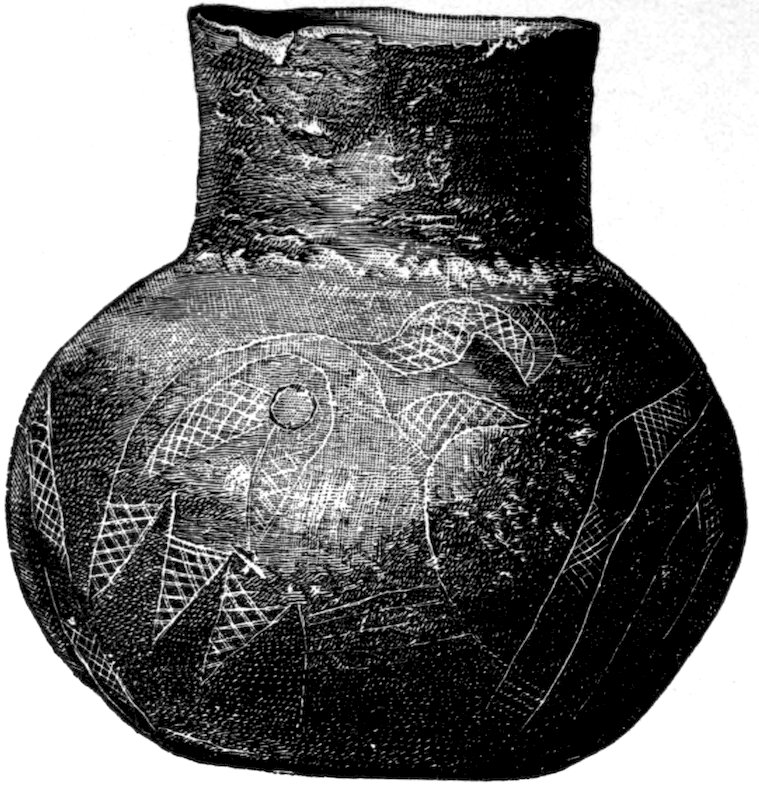
Fig. 675. (S. 1–3.) Vase with incised design. From Mississippi. Davenport Academy collection.
Professor Holmes, in his publication previously cited, divides the pottery of the United States into seven groups:—
Middle Mississippi Valley Group.
Upper Mississippi Valley, or Northwest Group.
Ohio Valley Group.
Iroquoian Group.
Atlantic Algonquin Group.
South Appalachian Group.
Gulf Coast Group.
About the pottery of New England he states:—
“The vessels were mere pots, and the pipes, although sometimes 279ornamented with incised lines and indentations, are mainly the simple bent trumpet of the more southern areas. The clay is tempered usually with a large percentage of coarse sand, the finish is comparatively rude, and the ornament, though varied, is always elementary. The surfaces have, in many cases, been textured with cord-covered paddles, and over these, or on spaces smoothed down for the purpose, are various crude patterns made with cords, bits of fabric, roulettes, and pointed tools of many varieties. The use of the roulette would seem to link the art of this Abnaki region very closely with that of the middle Atlantic States and portions of the upper Mississippi region.”
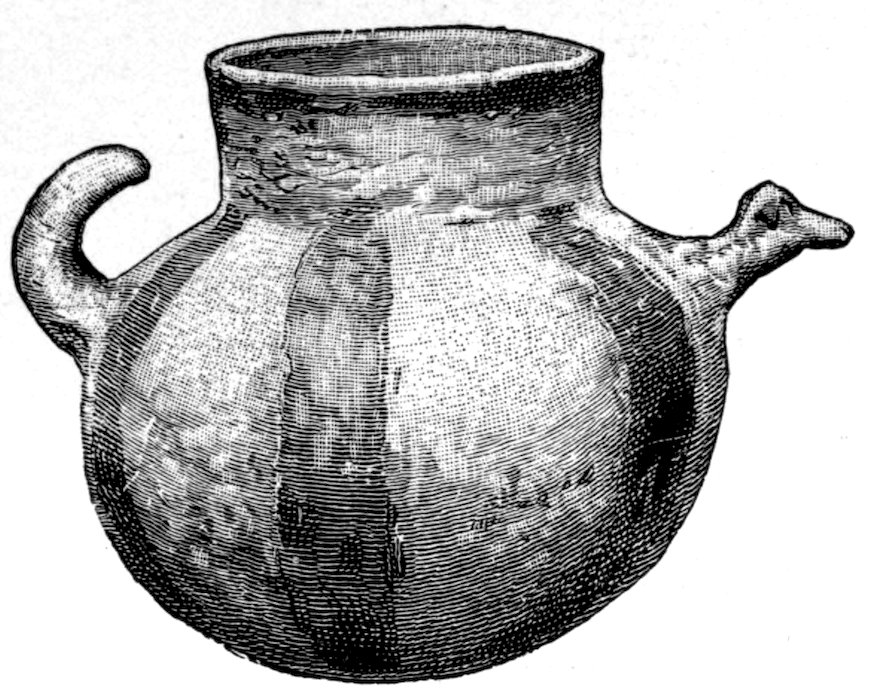
Fig. 676. (S. 1–3.) Vessel imitating animal form; from Arkansas. Middle Mississippi Valley Group. Davenport Academy collection.
In New Jersey, in the Chesapeake region, the pottery-ware is to a large extent of Algonquin type, although some Iroquoian wares are found.
As in the case of New England, the forms are simple, the pottery crudely made. But of course there are found fragments exhibiting considerable skill in manufacture. These may be exotic types, and their presence due to knowledge of the art of more advanced tribes, or to barter or exchange.
The lower Mississippi mounds furnish some very superior pottery, though many of the bowls, dishes, and jars taken from the mounds of that region are no more skillfully made than those of the St. Francis and Cumberland valleys. There are some examples of black pottery, very highly finished, found along the Red River. Professor Holmes says of these:—
280“The most striking characteristics of the better examples of this ware are the black color and the mechanical perfection of construction, surface finish, and decoration. The forms are varied and symmetric. The black surface is highly polished and is usually decorated with incised patterns. The scroll was the favorite decorative design, and it will be difficult to find in any part of the world a more chaste and elaborate treatment of this motive.”
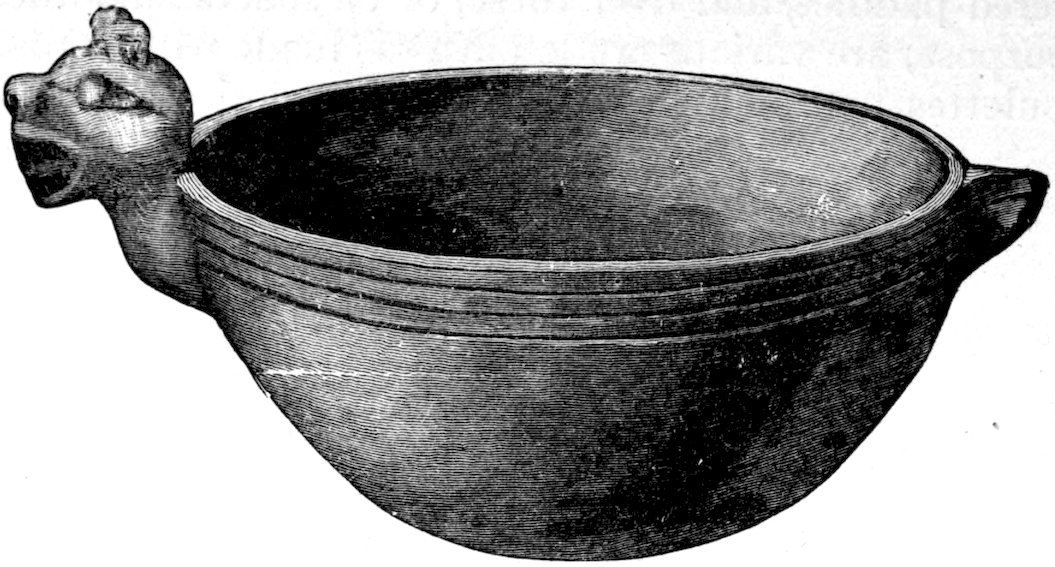
Fig. 677. (S. 1–3.) Vessel imitating animal form; from Arkansas.
Professor Holmes devotes special attention to the southern Appalachian stamped ware. Most of the specimens in the Smithsonian came from the Savannah River Valley. Mr. Moore has dug up a great deal of this pottery along the Atlantic seaboard. The designs are stamped by means of a paddle. Professor Holmes gives us the following description:—
“Although some of the peculiar designs with which the paddle stamps were embellished may have come, as has been suggested, from neighboring Antillean peoples, it is probable that the implement is of Continental origin. It is easy to see how the use of figured modeling-tools could arise with any people out of the simple primitive processes of vessel-modeling. As the walls were built up by means of flattish strips of clay, added one upon another, the fingers and hand were used to weld the parts together and to smooth down the uneven surfaces. In time various improvised implements would come into use—shells for scraping, smooth stones for rubbing, and paddle-like tools for malleating. Some of the latter, having textured surfaces, would leave figured imprints on the plastic surface, and these, producing a pleasing effect on the primitive mind, would lead to extension of use, and, finally, to the invention of special tools and the adding of elaborate designs. But the use of figured surfaces seems to have had other than purely decorative functions, and, indeed, in most cases, the decorative idea may have been secondary.
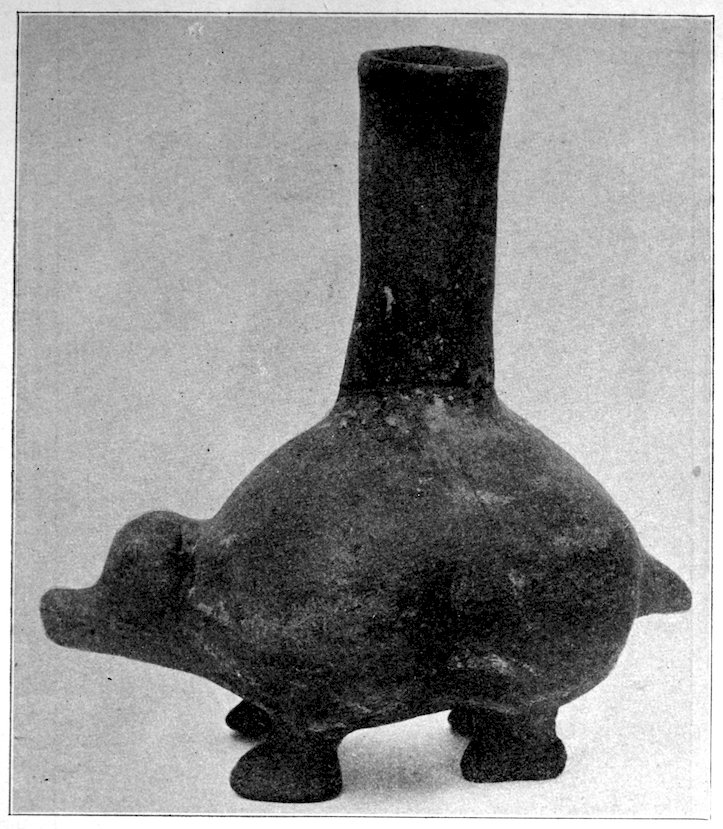
Fig. 678. (S. 1–2.) Effigy bottle. Collection of E. E. Baird, Poplar Bluff, Missouri.
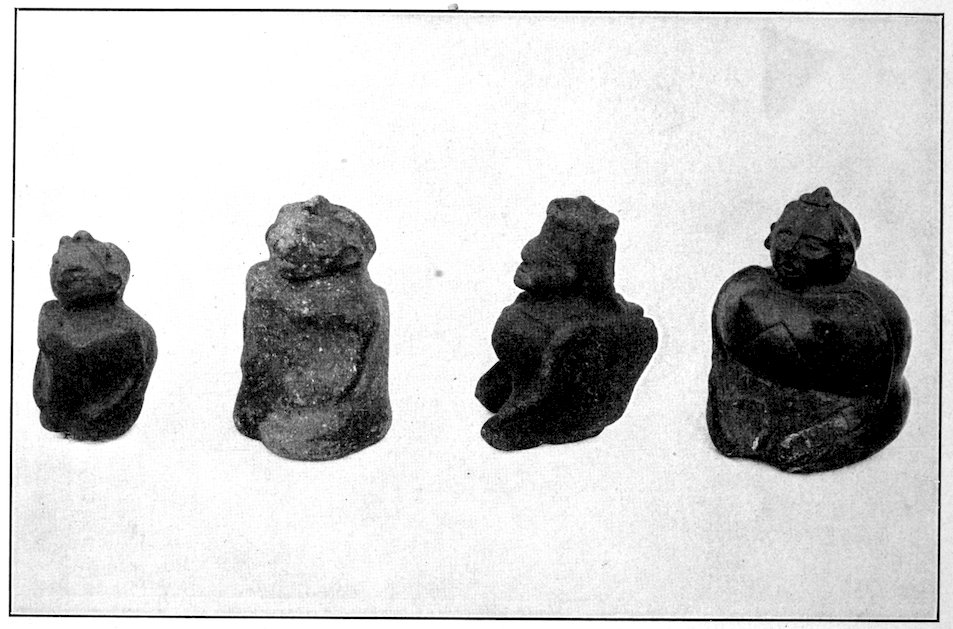
Fig. 679. (S. 1–4.) Effigy pottery from southwestern Kentucky. B. H. Young’s collection, Louisville.
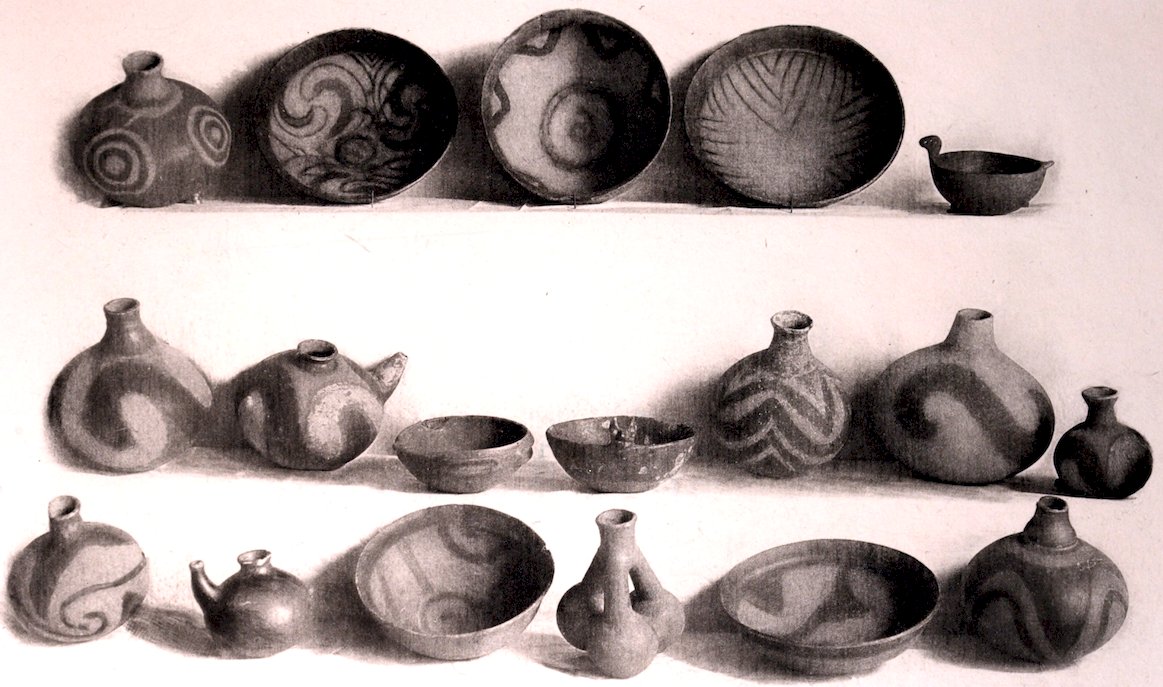
Fig. 680. (S. about 1–8.)
Decorated and painted bowls and jars typical of the best pottery, from the Middle Mississippi Valley. Taken from mounds and graves of Arkansas and Missouri. From the collection of F. P. Graves, Doe Run, Missouri.
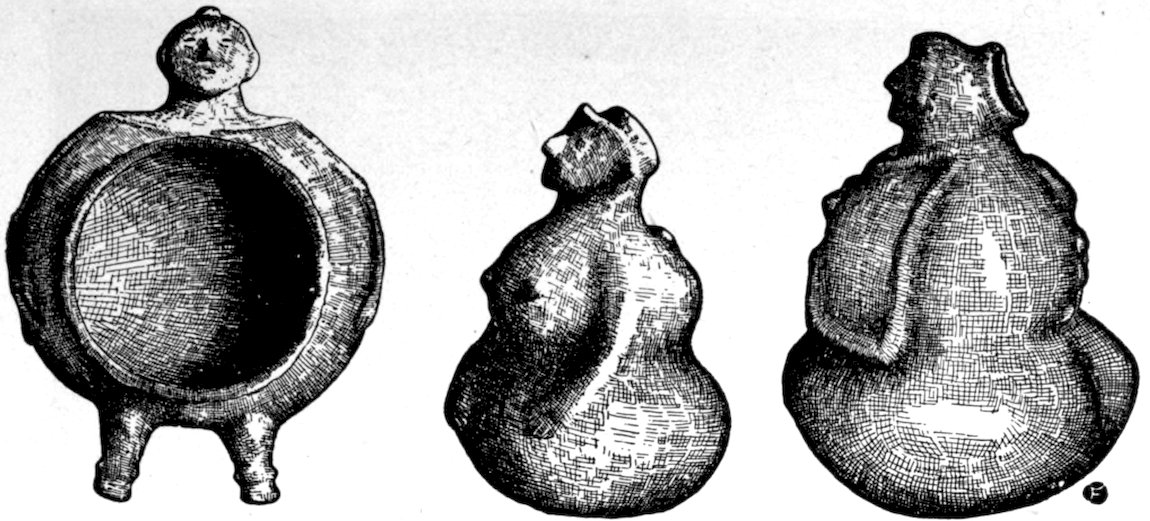
Fig. 681. (S. 1–5.) Three effigy bowls. From the Wabash Cemetery.
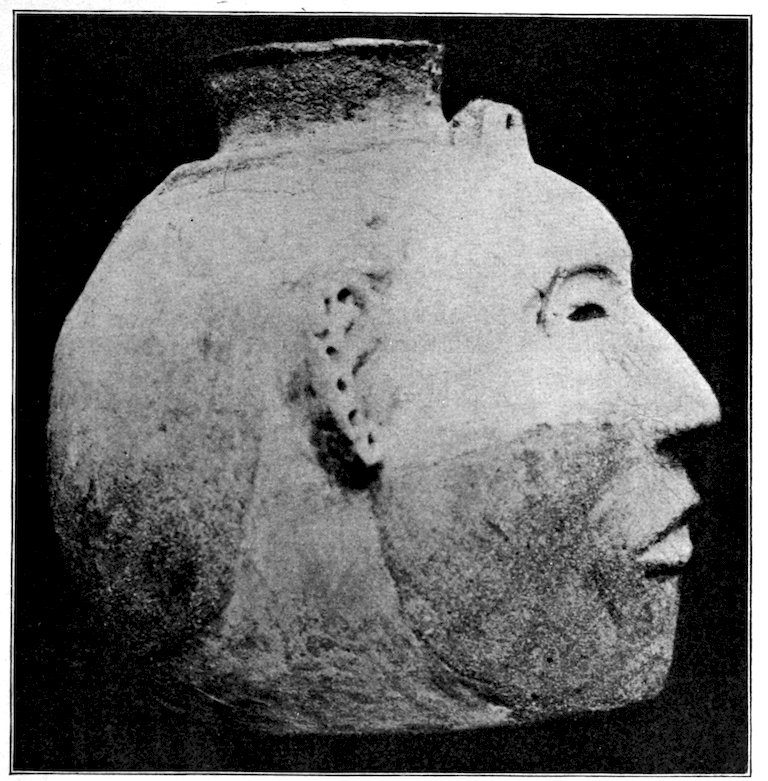
Fig. 682. (S. 1–2.) Remarkable effigy bowl in clay. Supposed to be a life-mask. Found near Blythesville, Mississippi County, Arkansas. From burial-site which was being washed away by river. Side view. Collection of H. M. Braun, East St. Louis, Illinois.
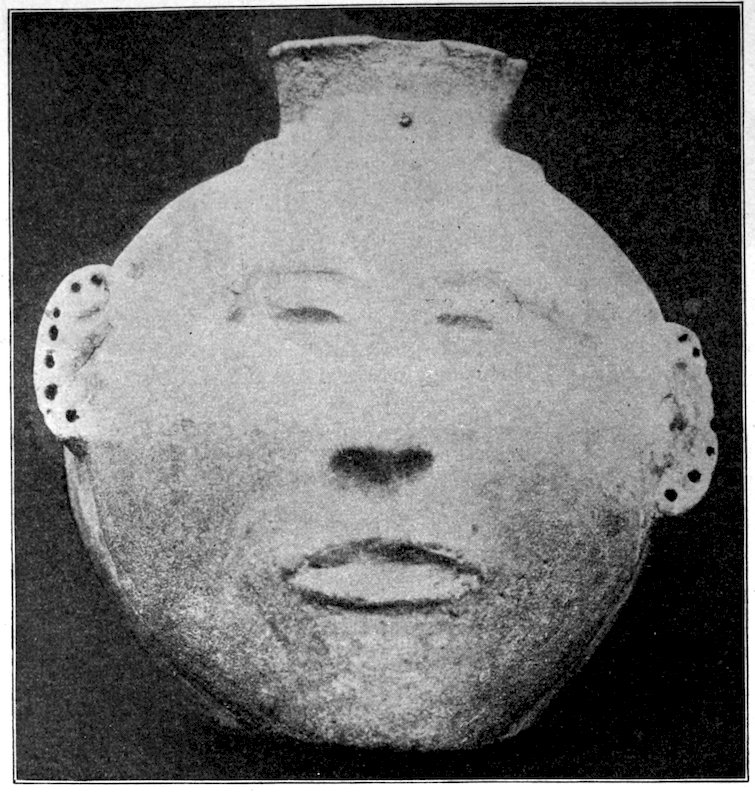
Fig. 683. (S. 1–2.) Front view of Fig. 682.
“It will be observed by one who attempts the manipulation of clay that striking or paddling with a smooth surface has often the tendency to extend flaws and to start new ones, thus weakening the wall of the vessel, but a ribbed or deeply figured surface properly applied has the effect of welding the clay together, of kneading the plastic surface, producing numberless minute dovetailings of the clay which connect across weak lines and incipient cracks, adding greatly to the strength of the vessel.
“That the figured stamp had a dual function, a technic and an esthetic one, is fully apparent. When it was applied to the surface 287it removed unevenness and welded the plastic clay into a firm, tenacious mass. Scarifying with a rude comb-like tool was employed in some sections for the same purpose, and was so used more generally on the inner surface, where a paddle or stamp could not be employed. That this was recognized as one of the functions of the stamp is shown by the fact that in many neatly finished vessels, where certain portions received a smooth finish, the paddle had first been used over the entire vessel, the pattern being afterward worked down with a polishing-stone. However, the beauty of the designs employed and the care and taste with which they were applied to the vases bear ample testimony to the fact that the function of the stamp as used in this province was largely esthetic.”
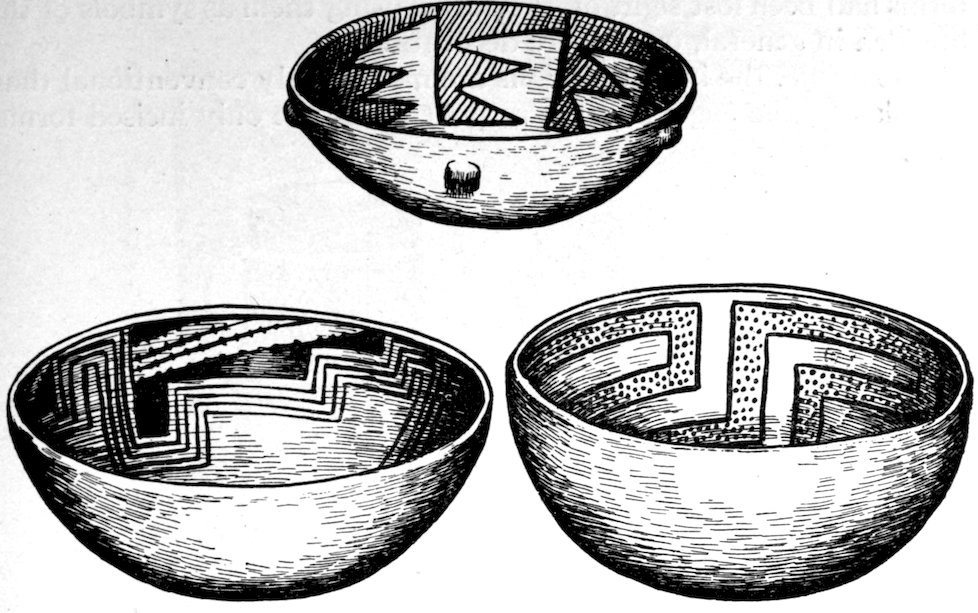
Fig. 684. (S. 1–3.) Three typical bowls from the Chaco Group of ruins, New Mexico. Dug up from debris in a lower room, Pueblo Bonito, in 1897, by W. K. Moorehead.
Of the life element in decoration on pottery, Professor Holmes writes at some length. He assembled a number of vessels on which were various decorations representing man, quadrupeds, birds, reptiles, batrachians, and fishes. “The conclusion reached is that there is at least a large degree of consistency, and that particular forms of creatures may be recognized far down the scale toward the geometric. Exceptions were noted, however. The symbols are occasionally intermingled, as if the significance of the particular 288forms had been lost sight of, the potter using them as symbols of the life idea in general, or as mere decorations.
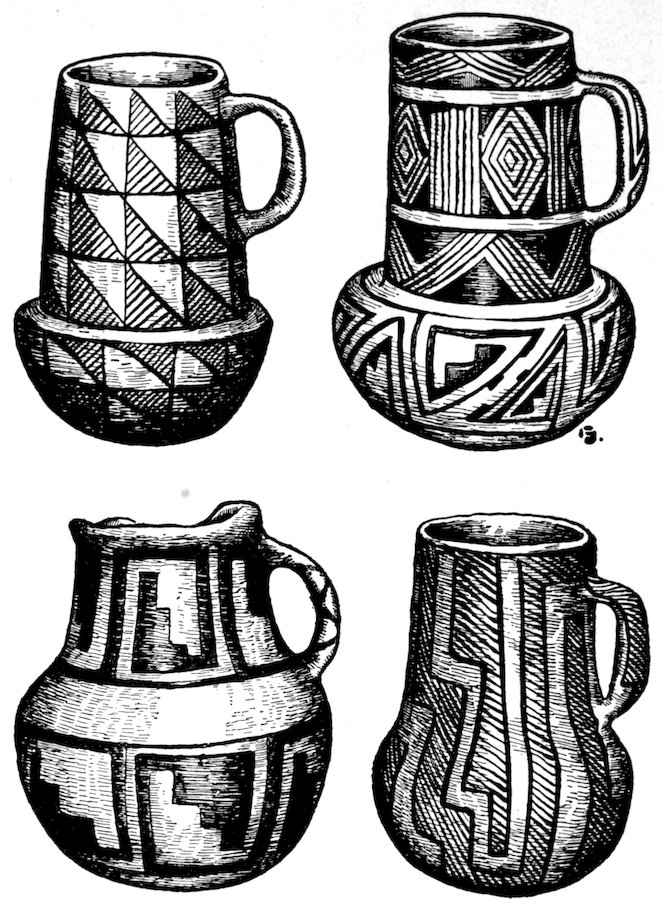
Fig. 685. (S. about 1–4.) Four typical Chaco pitchers. Andover collection.
“As a rule, the incised designs are more highly conventional than the plastic, the eagle and the serpent being the only incised forms, so far as has been observed, realistically treated; but it was possible to recognize others through their association with the modeled forms. In vessels furnished with the head of a bird in relief, for example, the same kind of incised figures were generally found around the vessel, and these are recognized as being more or less fully conventionalized representations of wings. The same is true of the fish and its gills, fins, and tail; of the serpent and its spots and rattles, and of the frog and its legs. The relieved figures, realistically treated, become thus a key to the formal incised designs, enabling 289us to identify them when separately used. It will be seen, however, that since all forms shade off into the purely geometric, there comes a stage when all must be practically alike; and in independent positions, since we have no key, we fail to distinguish them, and can only say that whatever they represented to the potter they cannot be to us more than mere suggestions of the life idea. To the native potter the life concept was probably an essential association with every vessel.”

Fig. 686. (S. 1–4.) Double jar from the Chaco Group. Found in a lower room in Pueblo Bonito.
All writers on pottery observe a great difference between the ware of the North and that of the South. Professor Holmes points to this in more than one place in his writings, and he asks this question: “Is it due to differences in race? Were the Southern tribes as a body more highly endowed than the Northern, or did the currents of migration, representing distinct centres of culture, come from opposite quarters to meet along this line. Or does the difference result from the unlike environments of the two sections, the one fertile and salubrious, encouraging progress in art, and the other rigorous and exacting, checking tendencies in that direction? Or does the weakening art impulse indicate increasing distance from the great art centres in the far South, in Mexico, and Yucatan?”
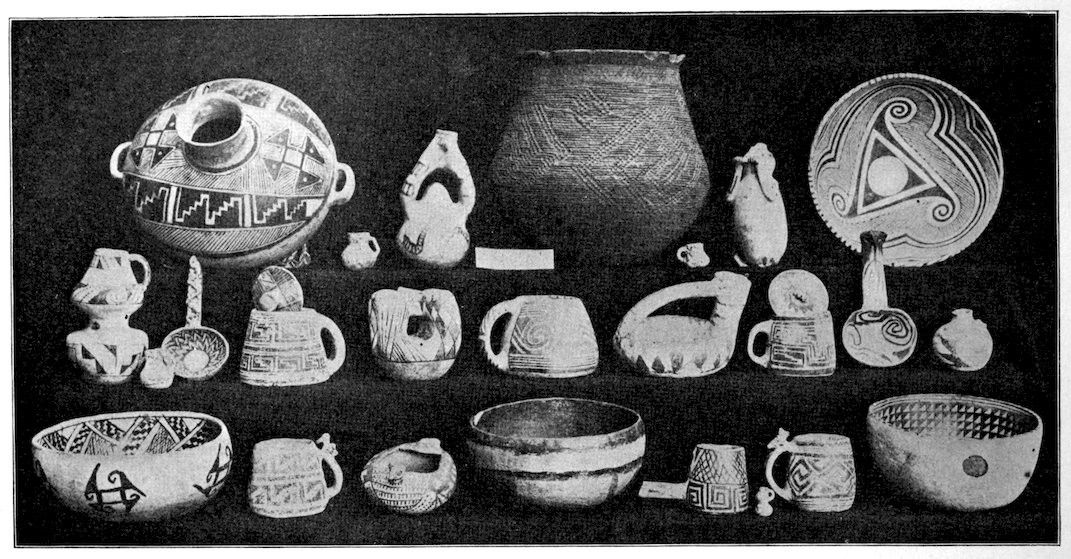
Fig. 687. (S. 1–8.) A beautiful collection of ceramics from cliff-houses in Utah and New Mexico. M. C. Long’s collection, Kansas City, Missouri.
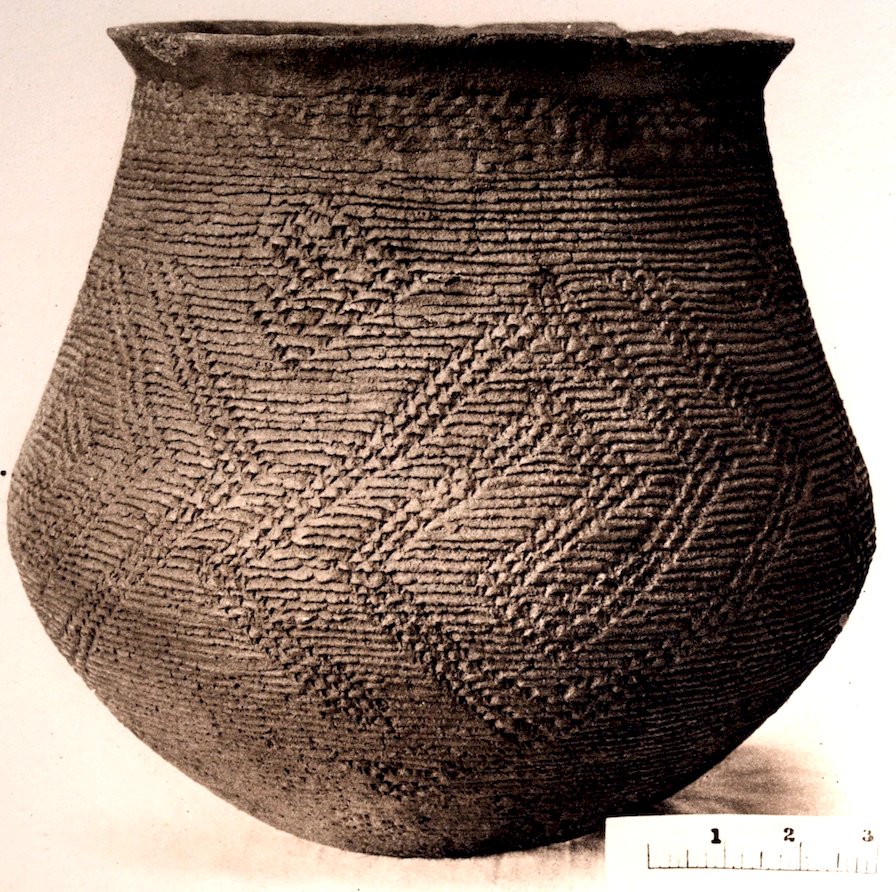
Fig. 688. (S. indicated.)
A jar of “coiled ware,” from a cliff-house in New Mexico. Collection of M. C. Long, Kansas City, Missouri.
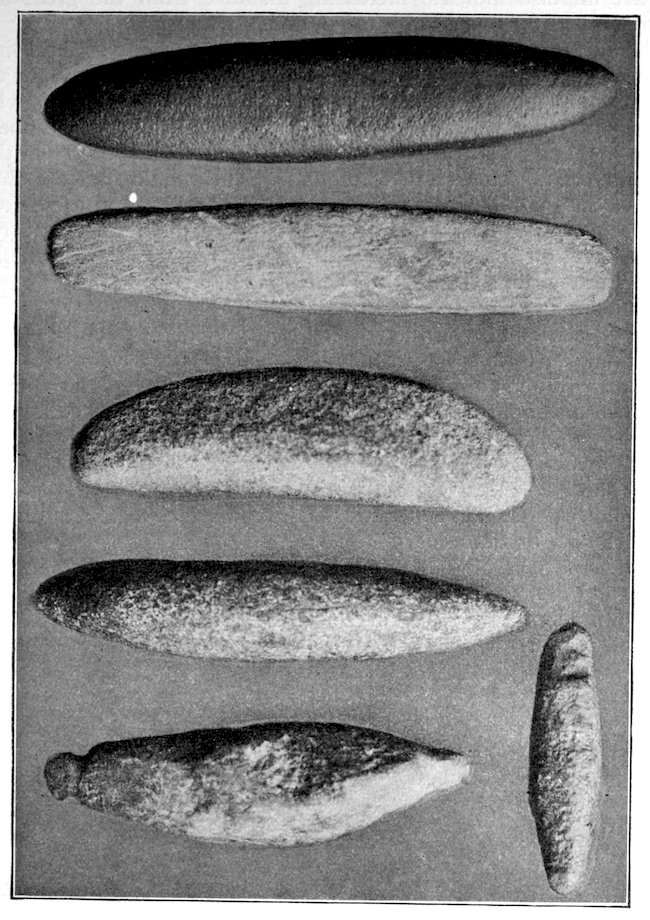
Fig. 689. (S. 1–3.) Stones used in smoothing pottery, kneading clay, etc.
294The antiquity of pottery in this country is a question of absorbing interest. Perhaps the shell mounds of Florida shed more light on this question than do other remains. Mr. Clarence B. Moore, who has explored for several seasons, and thoroughly opened numbers of shell mounds, states that sometimes there was no pottery in the lower layers of some of these mounds. This would indicate that some of the shell mounds are very old, and had been in use before the discovery and utilization of pottery by our aborigines. I regret that I have not space to quote Mr. Moore’s remarks at length, but must refer readers to his reports, which take up this important question in detail.
Mr. Brown reports on the pottery of his region as follows:—
“About thirty-five specimens of the earthenware vessels of the Wisconsin Indians are now in existence. Most of these have been described and figured in the Wisconsin Archeologist. The largest of these vessels in the J. P. Schumacher collection at Green Bay is twenty inches in height and twenty-two inches in diameter at the widest part. It has the great capacity of two and one fourth bushels. The smallest specimen is in the H. P. Hamilton collection and is of about the size of an ordinary cup.
“Other pottery objects found in Wisconsin include pipes, a few beads, and perforated discs made of potsherds.”
I am indebted to Professor Holmes for Figures 637 to 646, 659, 660, 662 to 667, 675, 677, and to Mr. Moore for Figures 668 to 674.
The hematite beds in various portions of the United States furnished the Indians with paint and with implements. Hematite, like copper, being different from other materials with which he was familiar appealed to the aborigine. Its bright red color attracted him, and although he found most of it very hard, yet he made use of it to a remarkable extent when one considers how refractory it was for him to work. Hematite is found on the surface in large quantities in portions of Missouri and Arkansas, in western Virginia, Ohio, and elsewhere. Most of the hematite seems to come from Missouri. It was common there, and therefore the native made of it grooved hematite axes, which he did not do elsewhere in this country. One supposes that hematite was exchanged and bartered with remote tribes. Just as in the case of copper, the natives of Louisiana, Mississippi, Indiana, and Michigan prized their hematite highly and made of it their most perfect plummet-shaped ornaments, hematite celts, and such other objects as it was possible for them to manufacture. The softer kinds of hematite were ground into paint, and there are frequently found on the village-sites along the Ohio River small blocks of hematite worn to flat surfaces. There is in the Arkansas region a very hard blue-red or blue-gray hematite. How the Indians cut this into symmetrical oval plummets has always been a mystery to me. If the rough nugget was ground by means of other stones or sand, one is scarcely able to conceive how the finished article was produced. The process must have been long and laborious, much more so than the manufacture of an effigy pipe, or the making of a problematical form.
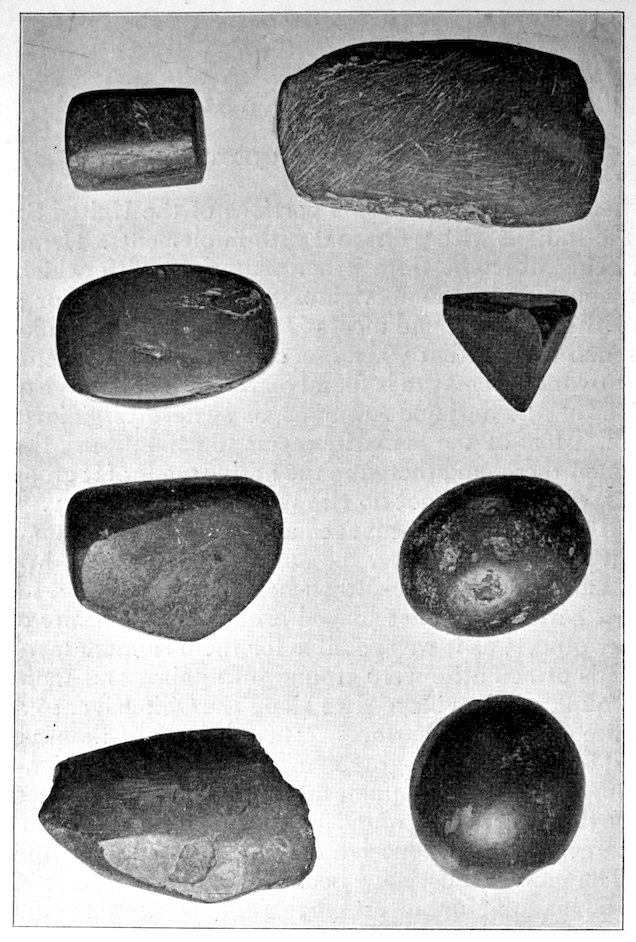
Fig. 690. (S. 1–1.) Eight hematite objects from the Andover collection. In the upper right-hand corner is a hematite pebble, polished on two of its angles and rough on the other side. This illustrates how hematite was cut and ground until reduced to the desired shape. Flint scratchings are still plain on the surface. Just beneath it is a triangular bit of hematite. This is of soft hematite. The flat surface may be due to grinding in order to obtain paint. Beneath are two hematite cones. The four specimens to the left represent hematite objects in various stages of manufacture.
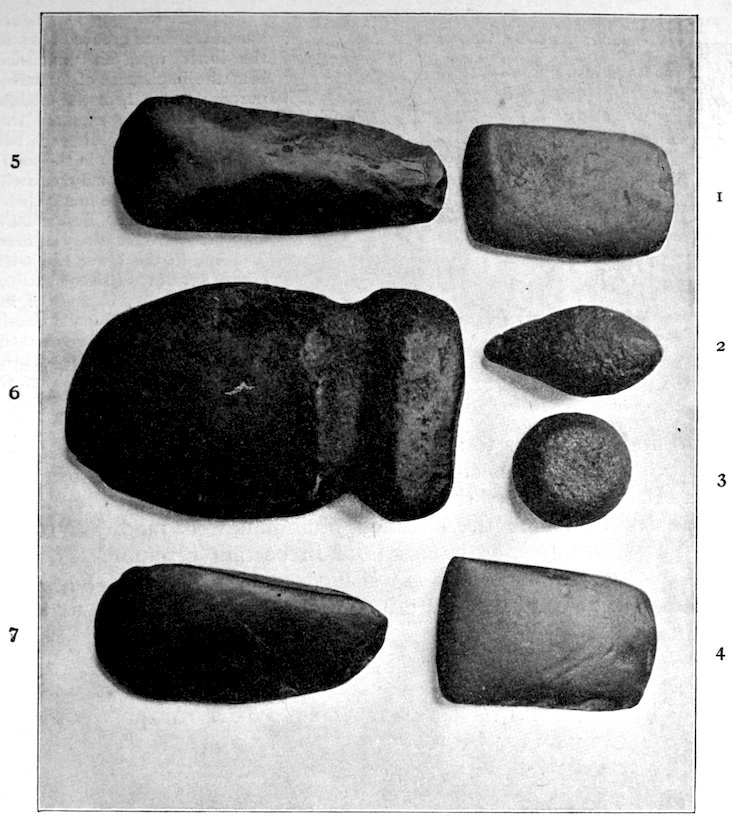
Fig. 691. (S. 1–2.)
These are from the collection of George Y. Hull, St. Joseph, Missouri.
1. Celt from mound, Andrew County, Missouri. Smooth and well made but not polished.
2. Plumb much pitted by age, surface find, Callaway County, Missouri.
3. A fine truncated cone used as a paint-grinder. Top of cone is worn and depressed from use. Surface find, Callaway County, Missouri.
4. Finely polished celt, surface find, Doniphan County, Kansas.
5. From an old grave near the village-site at Wathena, Kansas.
6. Axe with flat top and flat side,—a surface find, Callaway County, Missouri.
7. From an old village-site at King Hill, St. Joseph, Buchanan County, Missouri.
The difference between the celts is self-evident, numbers 1 and 4 being square, and 5 and 7 oval.
298The hard gray hematite referred to resists the knife and will wear an ordinary file in a short time, yet in the altar mounds of the Ohio Valley, and in the older graves (not graves of the historic period) are found numbers of these slender hematite plummets (see Fig. 700) worked from the hardest and most refractory iron ore. It is unfortunate that the earliest tribes known to the voyagers and explorers in this country had no hematite objects in use among them. If so, I fail to find references to such objects. This is unfortunate because hematite certainly was considered as more than of passing importance. It is quite likely that because it was so difficult to deduce it to the desired shape the so-called plummets were made use of, as Dr. Yates suggests, as stones used in certain ceremonies, or by shamans, or as charm-stones. I have seen unfinished hematite plummets, but cannot work out a satisfactory theory as to their manufacture.

Fig. 692. (S. 1–5.) This figure illustrates three grooved axes in the lower row; an unfinished hematite implement of unknown purpose and a hematite nodule above. Hematite axes are frequently found in Missouri, but seem rare elsewhere in the country. The groove may entirely encircle them, or be faintly indicated on the back. But usually they are grooved entirely around. The one in the lower left-hand corner has a broad, sharp, cutting edge. Naturally, because of its hardness, hematite made excellent axes. They retained their edges longer and more nearly approached the modern iron axe than any other aboriginal tool.
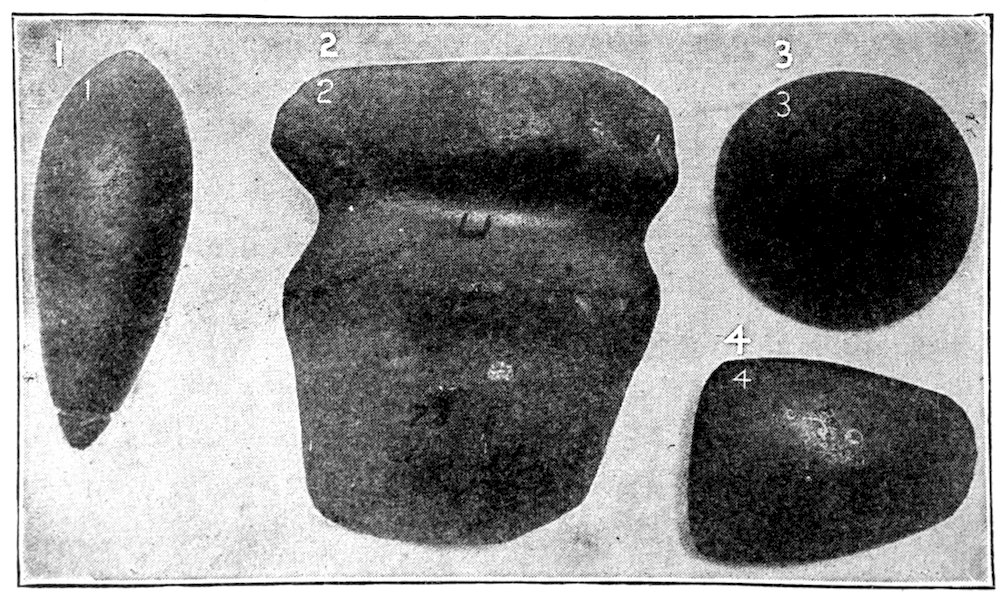
Fig. 693. (S. 1–2.) Hematite objects from the collection of Dr. Henry M. Whelpley, St. Louis, Missouri. Hematite plummet to the left, grooved axe in the centre, a hematite cone to the right, a celt in the lower right-hand corner.
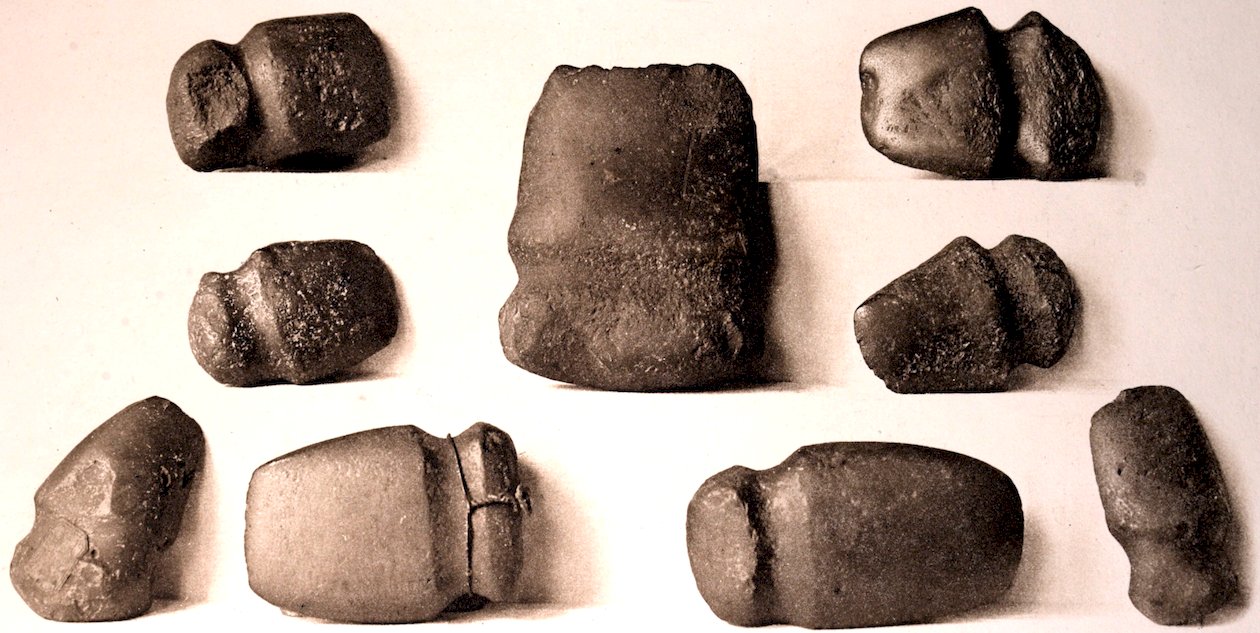
Fig. 694. (S. about 1–3.)
Group of nine grooved hematite axes, from eastern and central Missouri. Collection of F. P. Graves, Doe Run, Missouri.
301I have presented a series of figures covering all the known forms of hematites. No classification was attempted by the Nomenclature Committee, and the following is of my own make:—
| Elongated or oval hematites. | Plummet-shaped. (Fig. 700.) |
| Egg-shaped. (Fig. 699.) | |
| Egg-shaped, flattened. (Fig. 697, lower row.) | |
| Cone-shaped. (Fig. 697, upper part.) | |
| Edged hematites. | Celt form, oval. (Fig. 691, specimens 5 and 7.) |
| Celt form, beveled edge. (Fig. 693, lower right.) | |
| Axe form. (Figs. 694, 695.) | |
| Irregular forms. (Fig. 701.) | |
| Paint-stone hematite. (Fig. 690, second from the top.) |
Hematite being valuable, may have served several purposes and doubtless did. The small celts might have been set in the heads of war-clubs and securely gummed in place. I have no particular evidence as to this, but have always believed that some of them were so used. Occasionally, one finds hematite ornaments and hematite bicaves. The information one is able to impart with reference to hematite implements and their use is an illustration of the disadvantages under which we labor in dealing with some of our archæological problems. There are certain phases of prehistoric life with
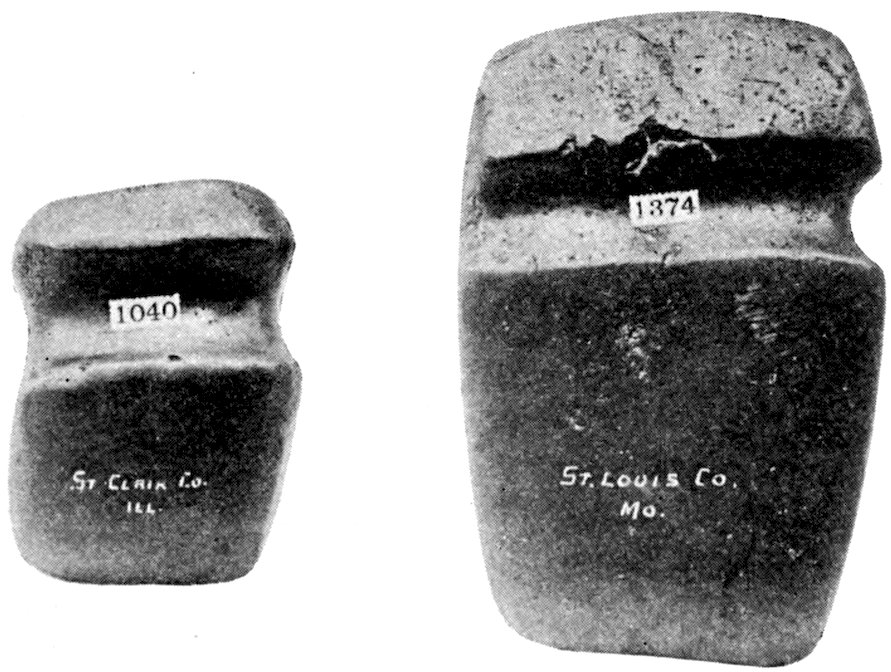
Fig. 695. (S. 1–2.) Two of the best grooved axes I have ever seen are shown in this figure, from the collection of Mr. Braun, East St. Louis, Illinois. There is one in the National Museum, and one in the New York Museum, each of which weighs over ten pounds, and they are nearly as symmetrical as Mr. Braun’s largest axe.
302which we are familiar. Others we know nothing of save as we learn by continuous study, by gleaning a fact here and there from the specimens themselves, and from exploration.
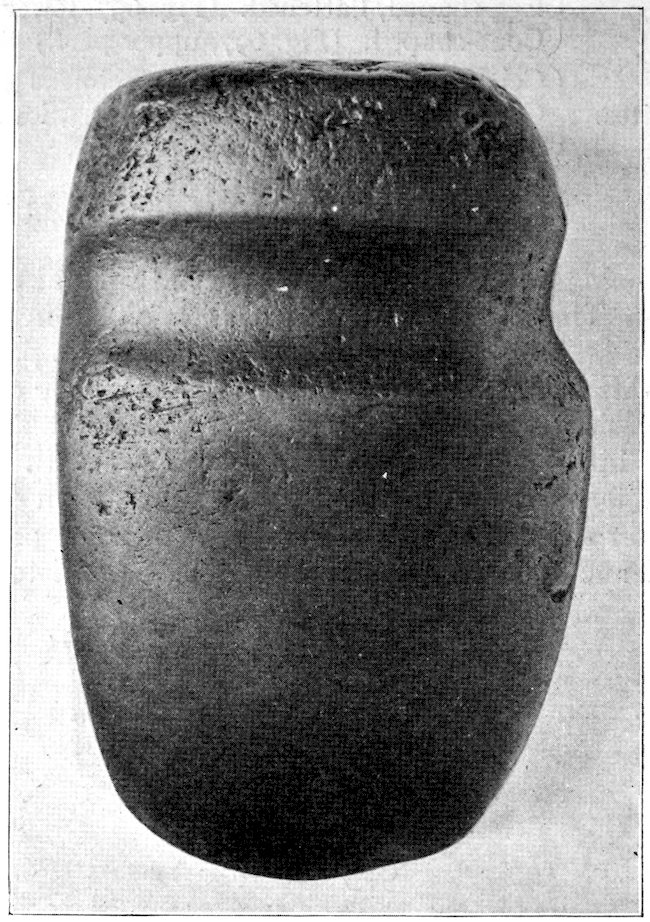
Fig. 696. (S. 1–1.) A beautiful hematite axe from the collection of Henry M. Whelpley, St. Louis, Missouri. This was found in central Missouri.
In the collection at Andover there are about four hundred hematite objects. The collections in the Smithsonian and American Museum of Natural History are much larger. Doubtless we should be quite surprised if we were able to reconstruct the past and see to what use these strange iron ore specimens were put by the natives who worked so long and laboriously to bring them into a state of perfection.
Mr. C. E. Brown, reporting on the hematites of his region, states:
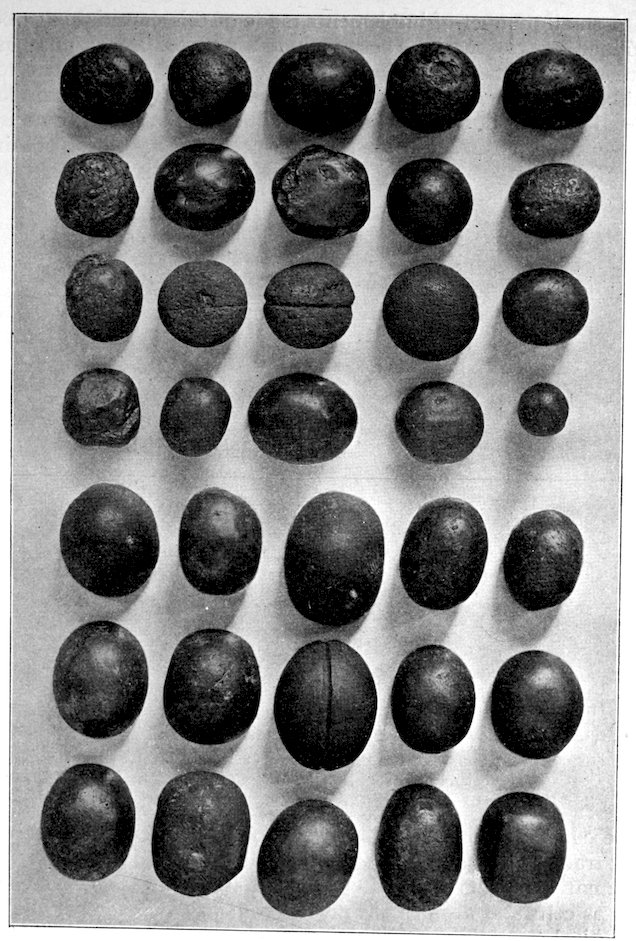
Fig. 697. (S. 1–2.) Hematite cones. Collection of H. M. Whelpley, St. Louis, Missouri. Localities: Missouri, Illinois, and Arkansas.
304“A small number of implements made of this material have been obtained in Wisconsin. These include a grooved axe, a number of celts, several cones and plummets, a gorget, and a pipe. The total number of specimens of all classes at present known to exist in local collections does not exceed thirty specimens. Nearly all come from southern Wisconsin counties. Several specimens have been obtained as far north in the state as Winnebago County. It is likely that some of these hematite implements were introduced into the state through early trades with middle Mississippi Valley tribes.”
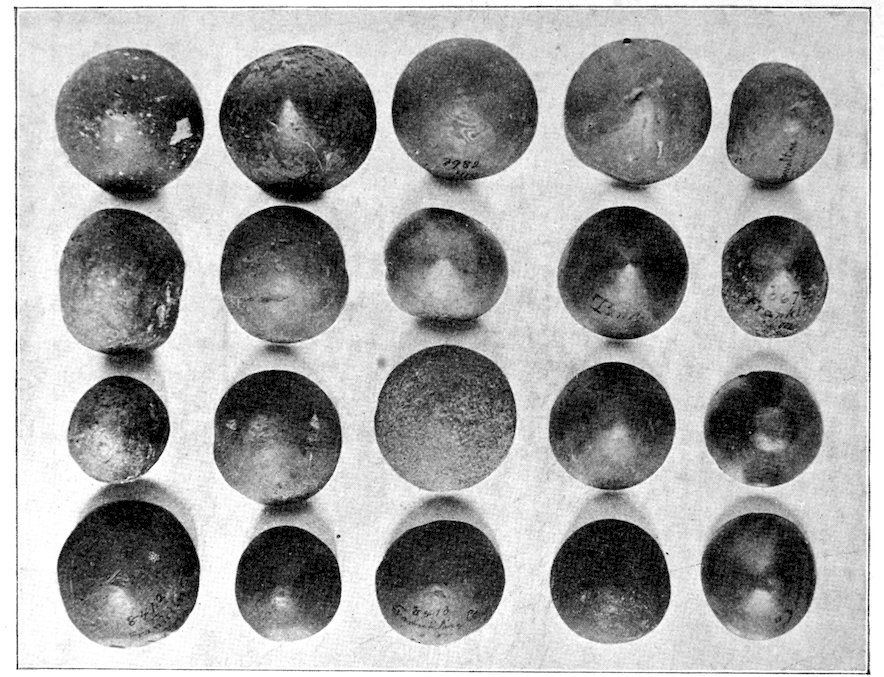
Fig. 698. (S. 1–2.) Hematite cones. Collection of Henry M. Whelpley, St. Louis, Missouri. From Illinois, Missouri, Arkansas.
Hematite objects do not seem to have served as tools—save perhaps as celts and axes—but on the contrary they are of the problematical class. The bright color of the stone and its peculiar properties doubtless appealed to stone-age man. The fact that hematite celts are found in graves and mounds and also hematite plummets, whereas ordinary stone axes are seldom, if ever, found in mounds or graves, would strengthen the hypothesis that objects made of this peculiar stone were considered apart from the ordinary run of artifacts.
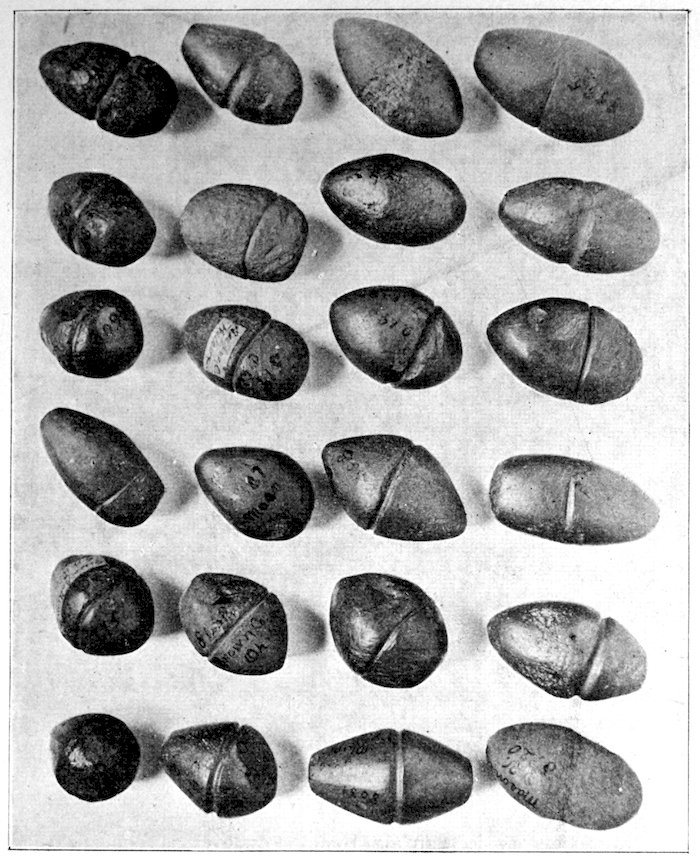
Fig. 699. (S. 1–2.) Hematite plummets, grooved in the centre. Collection of Henry M. Whelpley, St. Louis, Missouri.
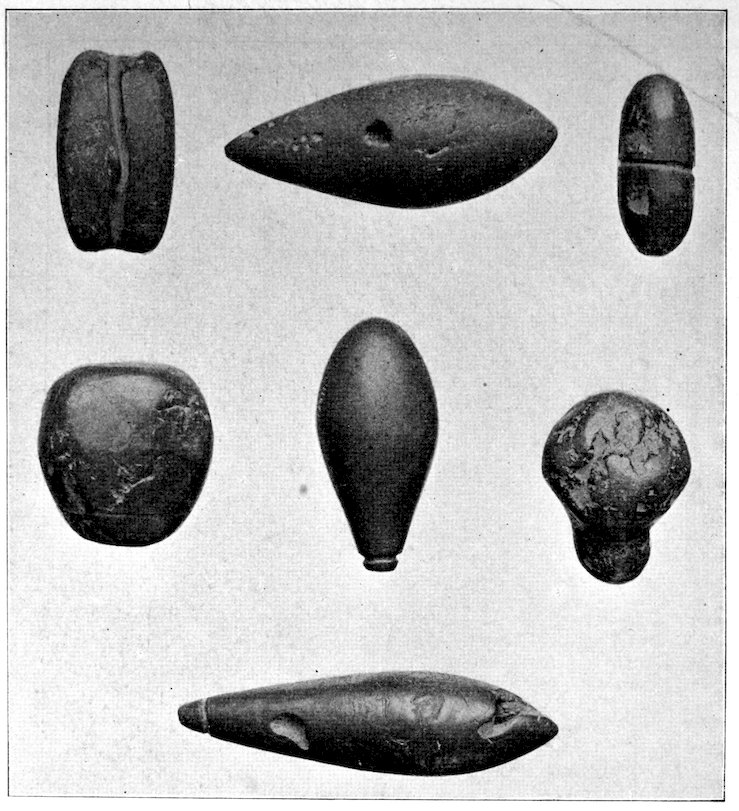
Fig. 700. (S. 1–2.) These objects are also from the Andover collection and show the various types of plummets. In the centre is a fine plummet of steel gray hematite, very hard. Beneath it, a hematite a trifle softer in which there are some flaws. At the top, an unfinished hematite pecked and ground into shape, but not polished or grooved. On either side of the centre, ruder hematite plummets, and at the top, to the left, a grooved hematite object, the groove extending around the longest periphery of the object. To the right is a small plummet, grooved in the centre.
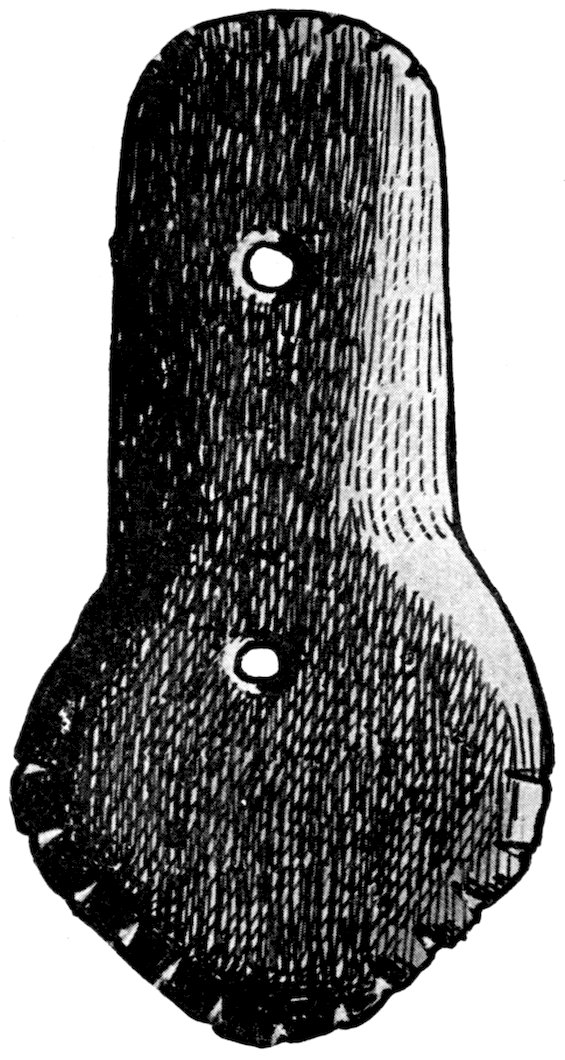
Fig. 701. (S. 1–1.) This ornament is made of hematite. It is remarkable in that both ends are decorated by notches. On the upper end there are eleven notches or incised lines; on the lower or broad end there are fourteen lines. This specimen is not a type but an anomaly. It is of heavy, pure hematite and not of stone discolored by iron oxide as are many of the ornaments. It was extremely difficult to work because of the density and hardness of the material. Aside from these facts this form is peculiar. The edges are slightly beveled. The specimen shows unmistakable evidence of antiquity because of the patina, and the cuttings (striæ) are irregular and have been made with flint and not with steel. Ross County, Ohio. Andover collection.
The reduction of the harder hematites to symmetrical plummets and cones must have been a severe task for workmen possessed of no metallic tools. Truly the ancient artisan who had the patience to cut and grind gray hematite (the hardest of all) “worked at his task with a resolute will.” It must be remembered that there are not a few but hundreds of these hematite problematical forms worked from most refractory iron ore.
After one has attempted to describe and illustrate most of the types of ancient artifacts occurring in America, one discovers that there are numerous objects which scarcely fall under any of the classifications. These I have placed under this chapter devoted to miscellaneous objects. At some future time I hope to consider these at greater length, for it will be quite possible to devote an entire chapter to the club and paddle-like implements of the Pacific Coast, another to the slate knives of New England, and additional ones to the arrow-shaft straighteners, or the cup-stones—all of which are illustrated in the ensuing pages.
In Figs. 702, 703, and 703 A are shown some of the curious stone club and paddle-like implements of the Pacific Coast. Reverend H. C. Meredith, a collector of some experience in California, called these “stone ceremonial swords,” and described those shown in Fig. 702 as follows:—
“This figure shows two rare ceremonial knives. No. 2 is of fine sandstone, about sixteen inches long, with a broad blade that is reduced to a sharp edge. It was found on a village-site near Vacaville, and would make a formidable weapon.
“No. 3 is a double-edged and beautiful specimen. The material is mottled green and white serpentine. It is finely polished, and not much less than eighteen inches long. It is in the collection of Mr. A. B. Carr, Etna Mills. Two specimens similar to this one, but not nearly so fine, are in the Jewett collection. All three specimens are from Siskiyou. Like the chipped ceremonials, these knives are of extreme age, if not prehistoric. Work of this class is not done by the Indians of to-day.”
Whether the paddle-shaped implements in the two following figures are to be considered as “ceremonial swords,” I am not sufficiently familiar with California archæology to state.
Fig. 703 presents three remarkable specimens from Oregon and Colorado; collection of E. D. Zimmerman, Kutztown, Pennsylvania. The purpose of these strange objects is unknown to me. They are wrought with considerable skill and evidently performed some function in ancient times.
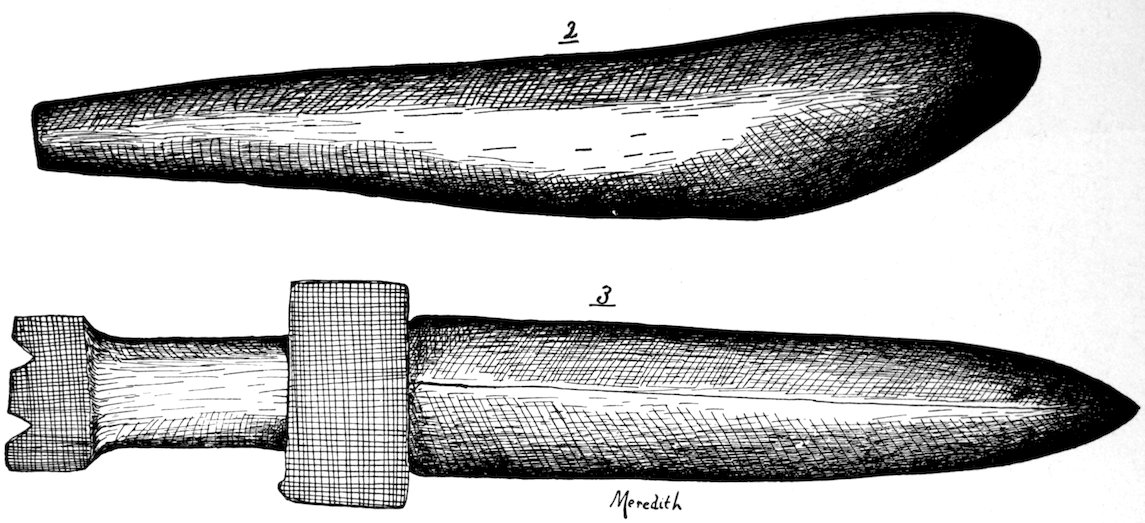
Fig. 702. (S. 2–7.) Stone ceremonial knives. California. Collection of A. B. Carr and H. C. Meredith.
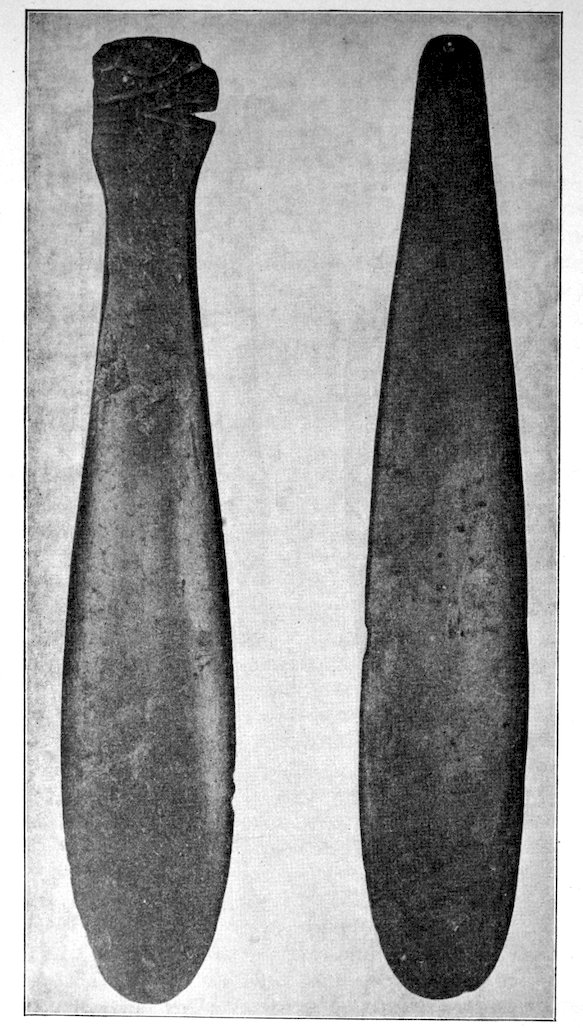
Fig. 703. (S. about 1–3.) Stone clubs, from Oregon and Washington. Collection of E. D. Zimmerman.

Fig. 703 A. (S. about 1–5.) Stone club from near Florence, Lane County, Oregon; found on a village-site about three miles from the Pacific Ocean. A duplicate club was found at the same place later. Collection of A. F. Barrott, Owego, New York.
Fig. 704 A illustrates four of the curious club-heads, or perforated stones, common in California and Arizona. Various theories have been advanced as to these; the most sensible of which appears to me to be the statement that they were made use of as weights, to facilitate the use of digging-tools or sticks. There is some reason for the acceptance of this theory, as the discs are found in regions where the raising of crops by means of irrigation was known to the natives.
Fig. 705 is an illustration of a singular tool-handle, somewhat common near the Columbia River and farther north along the Pacific Coast. A fine one is in the possession of Dr. John Fargo of Los Angeles, California, and it is identical with this one.
Slate was made use of by the New England Indians not only for arrow- and spear-points but knives as well. Fig. 707, reproduced from Dr. William Beauchamp’s article,[31] shows nine slate knives from sites along the Seneca and Oneida rivers and Oneida Lake, western New York.
In Fig. 710 are figured two beautiful slate knives from the Peabody Museum collection, Salem, Massachusetts.
I was very fortunate in procuring for examination the remarkable specimen shown in Fig. 711. It presents a woman’s knife of black slate in the original handle. When Mr. B. W. Arnold of Albany went north to Alaska some years ago, he found this knife in the hands of a woman who was using it in cutting open fish. He purchased it from her and placed it in his collection. It illustrates the method of mounting.
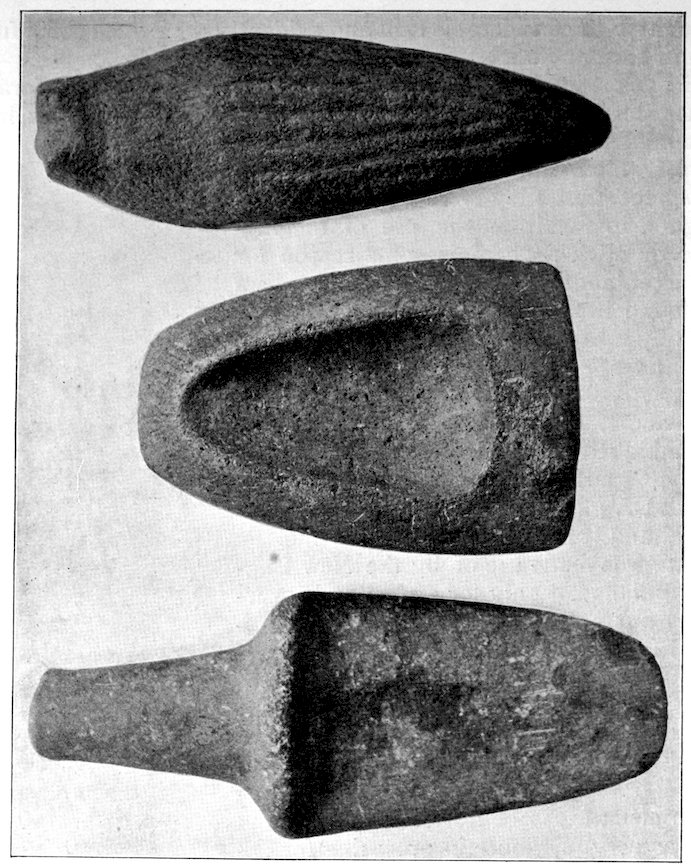
Fig. 704. (S. about 1–3.) Three remarkable specimens from Oregon and Colorado. E. D. Zimmerman’s collection.
313The handle is crudely cut out of wood, and the only things modern about it are the strings which hold it in place, they being ordinary twine.
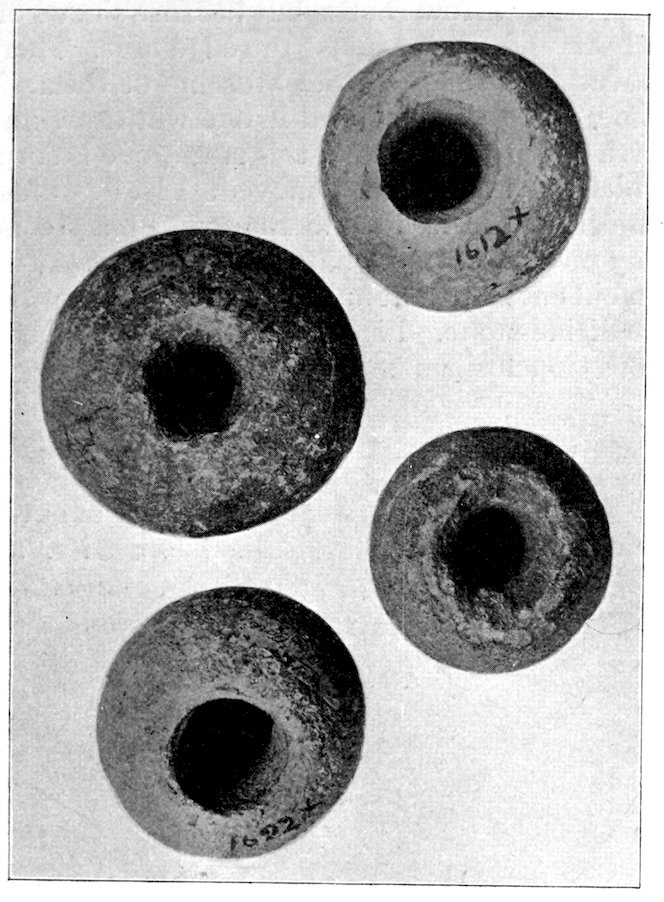
Fig. 704 A. (S. 1–3.) Four curious club-heads or perforated stones, common in California. Beloit College collection.
But perhaps as interesting as any other of the objects are the oval and flat stones with creases or depressions across them, which are supposed to be the result of straightening or reducing arrow-shafts, lance-handles, and other long, slender objects. All of those shown in Figs. 706, 708, and 709 exhibit differences. Those in Fig. 706, collected by Professor Montgomery, are neatly made and ornament-like in shape.
Mr. Bardwell’s specimen, Fig. 708, is an ordinary bit of sandstone 314on which there are two deep grooves at right angles. We have a number of them in our Andover collection, and I have shown five in Fig. 709.
Most archæologists agree that the stones were used for the purpose named. Near caverns, rock-shelters, and along bluffs we find that the surface of gritty stones or ledges exhibit such grooves. Fig. 712 is a sinew stone, or an oval stone much creased and worn, not by friction caused by arrow-shafts, but because sinews or cords have been drawn back and forth against the edge of it. There is another singular grooved stone in the State Museum of Iowa. The curator calls it a stone “corn-sheller,” and if one will draw an ear of corn back and forth over the surface of this stone, one is surprised at the ease with which the kernels are removed. Fig. 715 illustrates three unknown objects found in Pueblo Bonito. Fig. 716 is interesting in that it may or may not be a natural formation. It was found on the site of an old encampment and may have been considered by the Indians a medicine-stone. Figs. 717, to and including 721, I shall refer to in the Conclusions of “The Stone Age.”
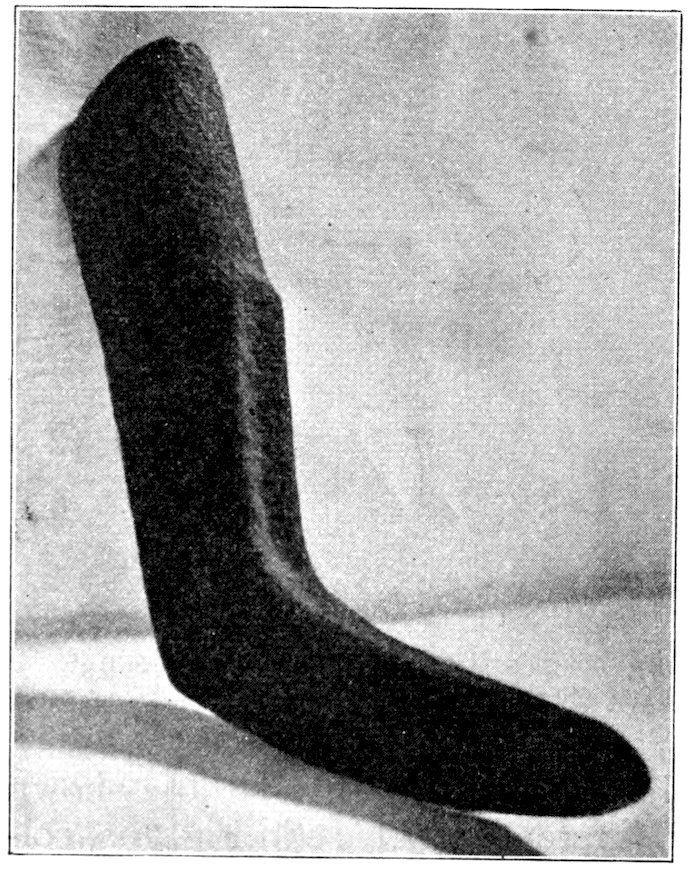
Fig. 705. (S. 1–4.) Stone tool-handle. Collection of Frank O. Putnam, Campbell, California.
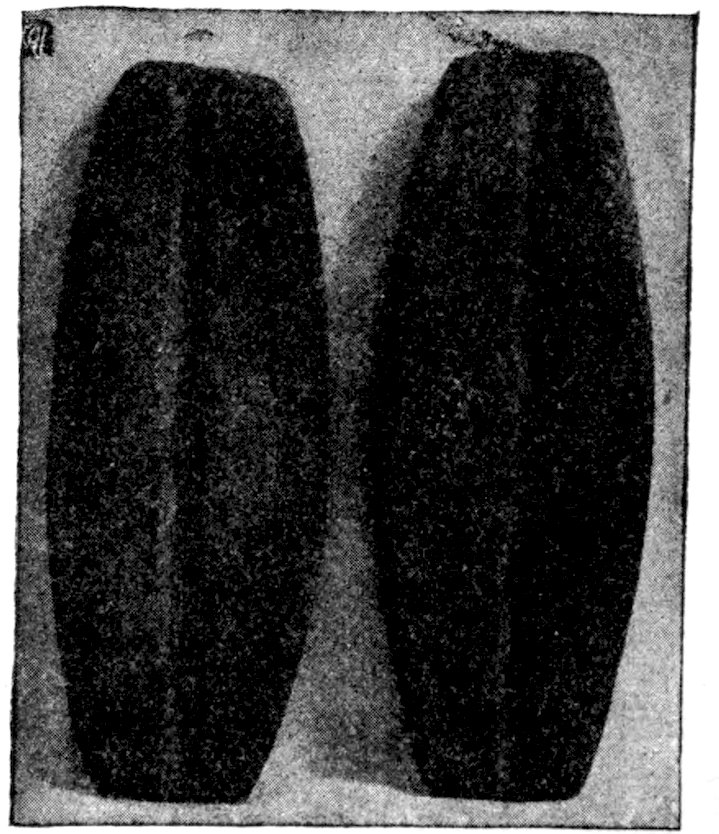
Fig. 706. (S. 1–2.) Grooved sandstone arrow- and needle-sharpeners found near the surface of a mound, North Dakota. Collection of Henry Montgomery.
I wish to speak at some length on Fig. 713. This specimen is one of the cup-stones about which there has been so much discussion. It is something over ten by seven and a half inches in diameter, and on the upper surface are fifteen distinct cup-shaped depressions. It is of sandstone and about two inches thick.
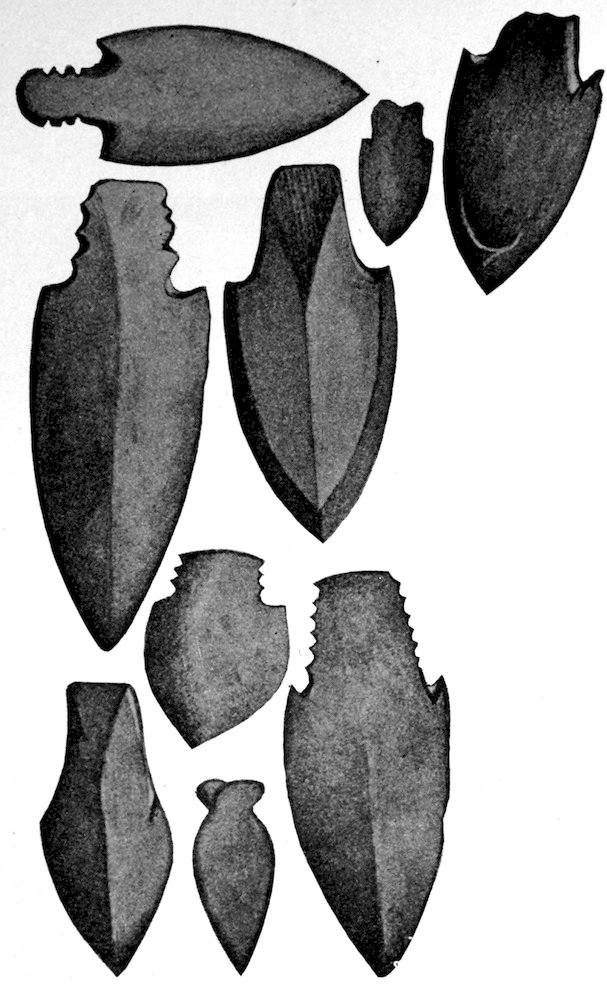
Fig. 707. (S. 1–1.) Slate knives. New York State Museum collection.
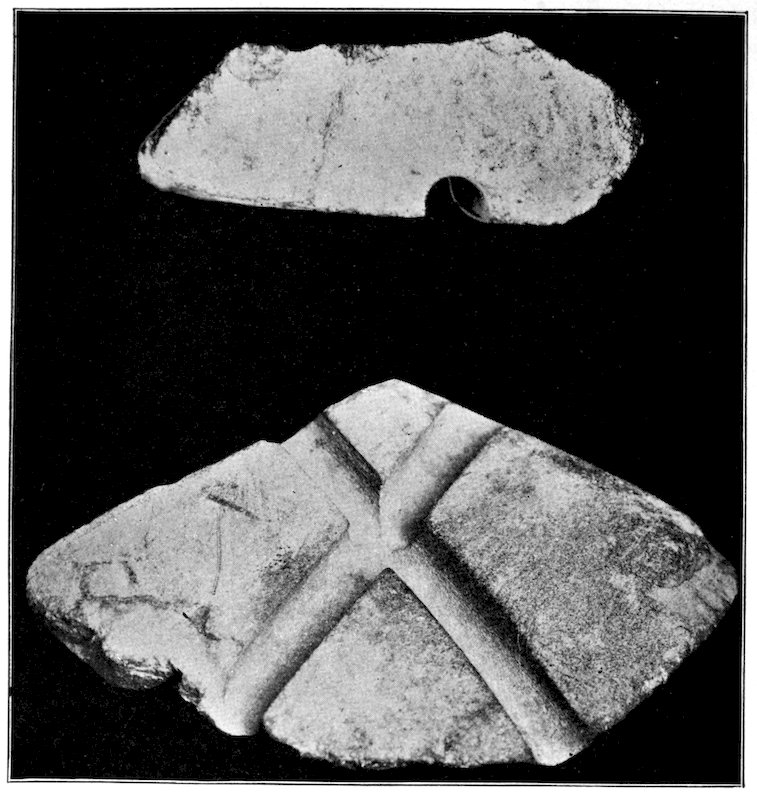
Fig. 708. (S. 1–1.) Grooved stone found on the island of Martha’s Vineyard by Ralph D. Bardwell. Collection of Robert D. Bardwell, Pittsfield, Massachusetts.
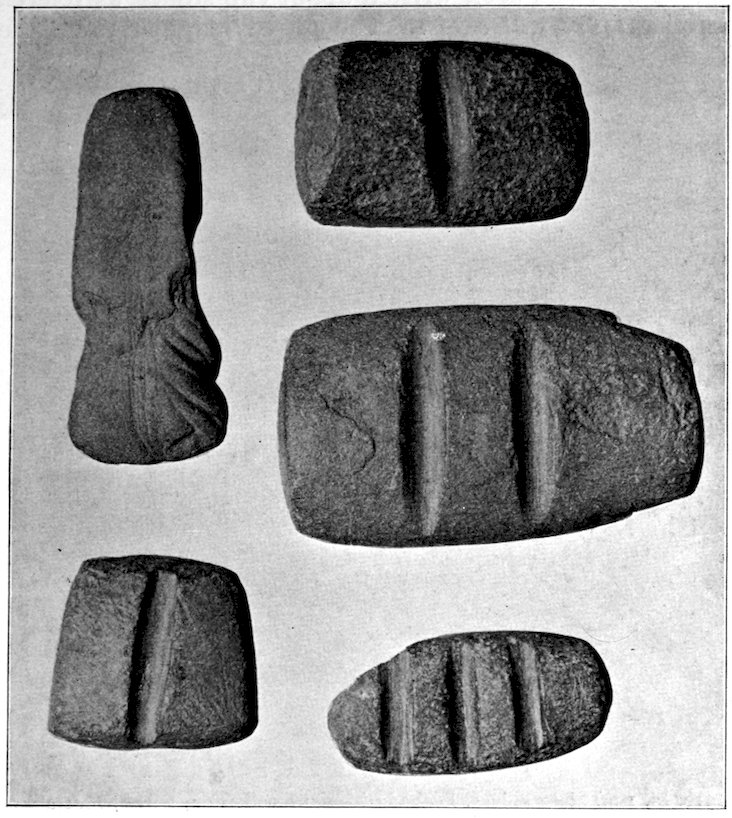
Fig. 709. (S. 1–2.) Grooved stones found in various parts of the United States. Phillips Academy collection.
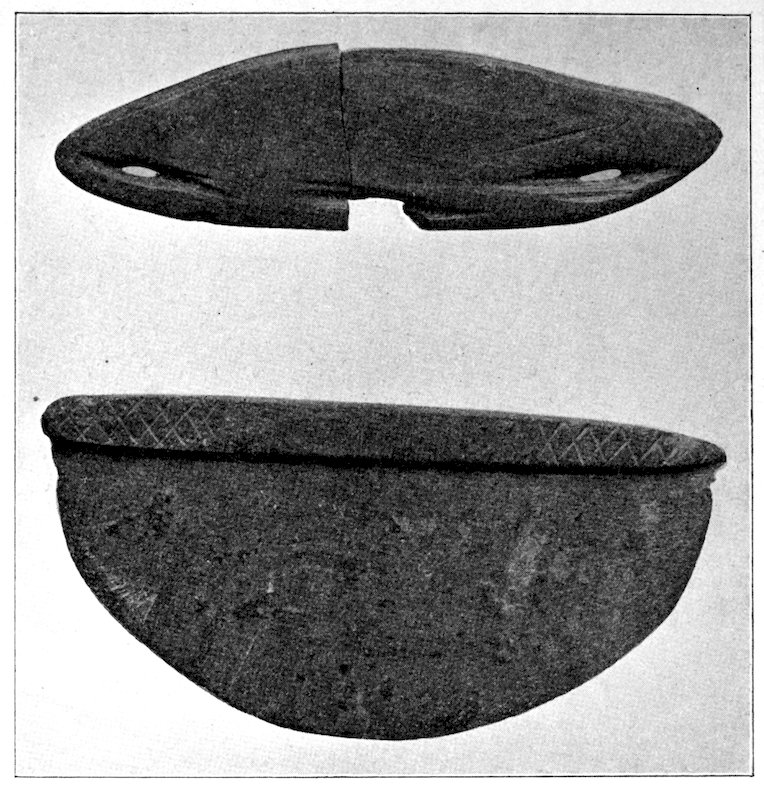
Fig. 710. (S. 1–2.) Slate knives. Peabody Museum collection, Salem, Massachusetts.
A great deal has been written about cup-stones, as reference to the Bibliography will attest. The pitted hammer-stone, the cup-stone, and the crude discoidal are more or less related. Cup-stones themselves have never been satisfactorily explained, and it is my opinion that such ones as are shown in Fig. 713 mean more than that they were ordinary depressions in which nuts were cracked. However, one must do justice to those who believe that they were used for that purpose. There is a suggestion along the lines of that theory which I would wish to make.
The Indians used large quantities of hickory-nuts, walnuts, and butternuts. The early historians tell us that they threw these into kettles of hot water; the oil rising to the top, they skimmed it off for future use.
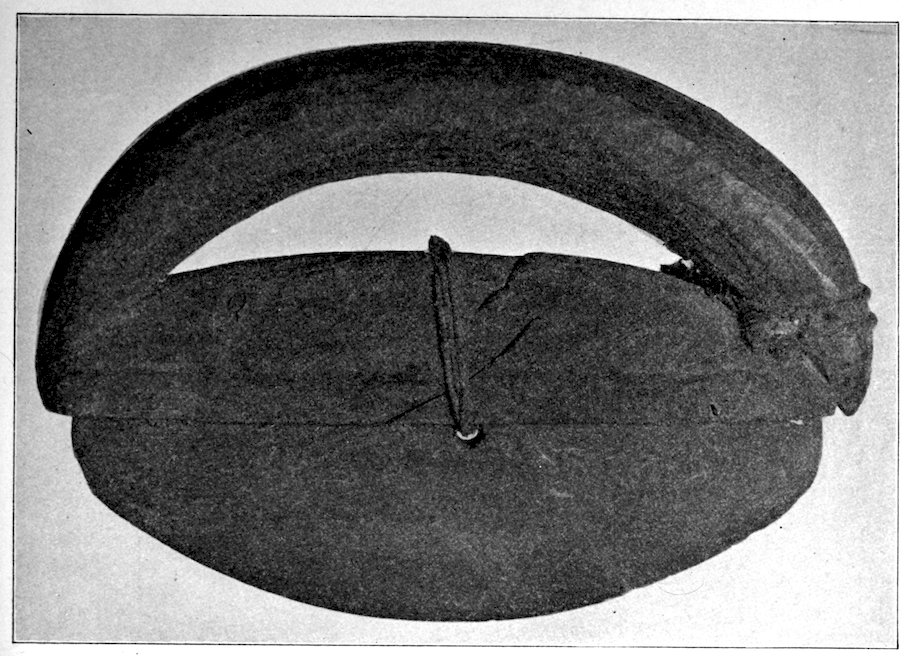
Fig. 711. (S. 1–1.) Slate knife in handle. B. W. Arnold’s collection, Albany, New York.
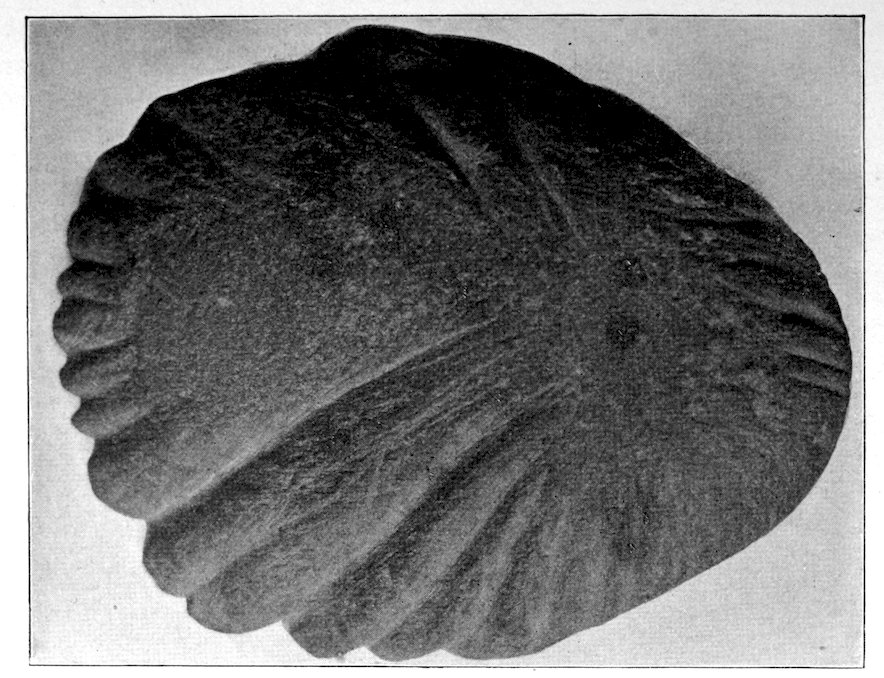
Fig. 712. (S. 2–3.) Sinew stone found near New Berlin, New York, on the surface. Collection of Henry W. Bagg, New Berlin, New York.
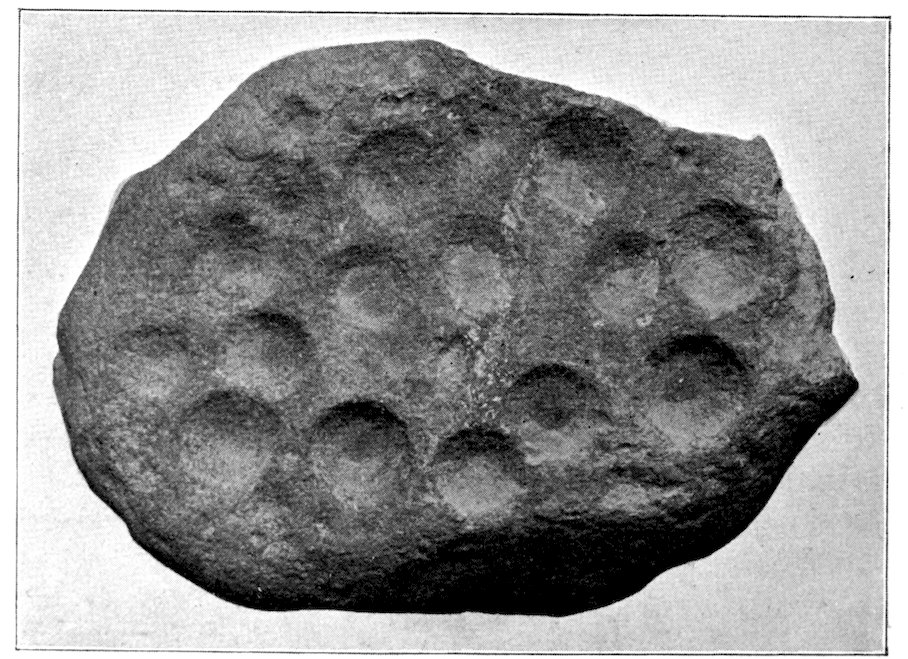
Fig. 713. (S. 1–3.) Cup-stone from the Mohawk Valley, western New York. Phillips Academy collection.

Fig. 714. (S. 1–4.) Stone corn-sheller(?); made of gray quartzite. The plane surface is eight by fifteen inches. Shows fractures on nearly all sides, as though it had been much larger. The corrugations have a sharp, cutting-like edge. Found in a creek in Kansas. Collection of the Historical Department of Iowa.
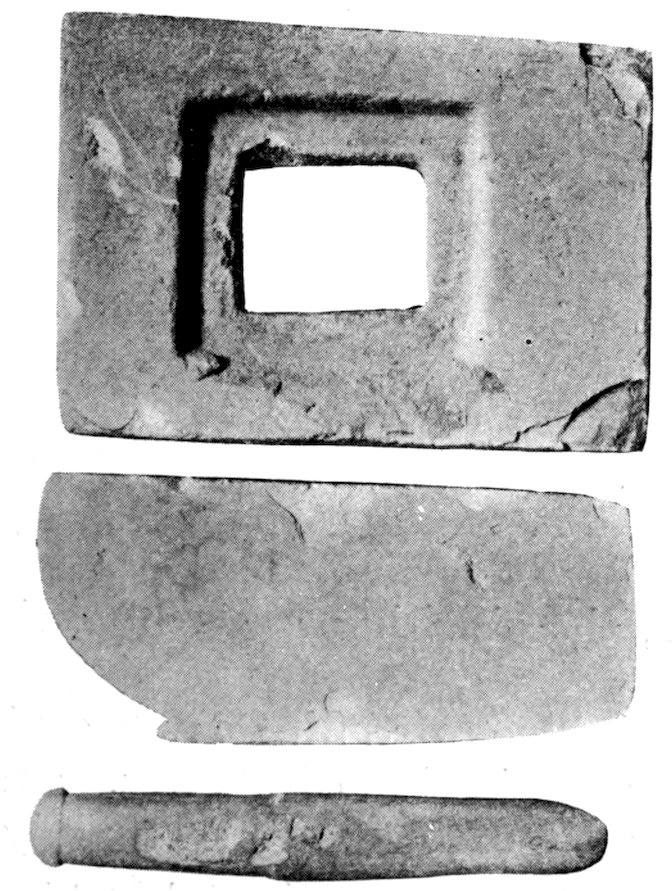
Fig. 715. (S. 1–6.) A stone, with square hole (for unknown purpose), a sandal last, and a stone sword from the Chaco Group. Phillips Academy collection.
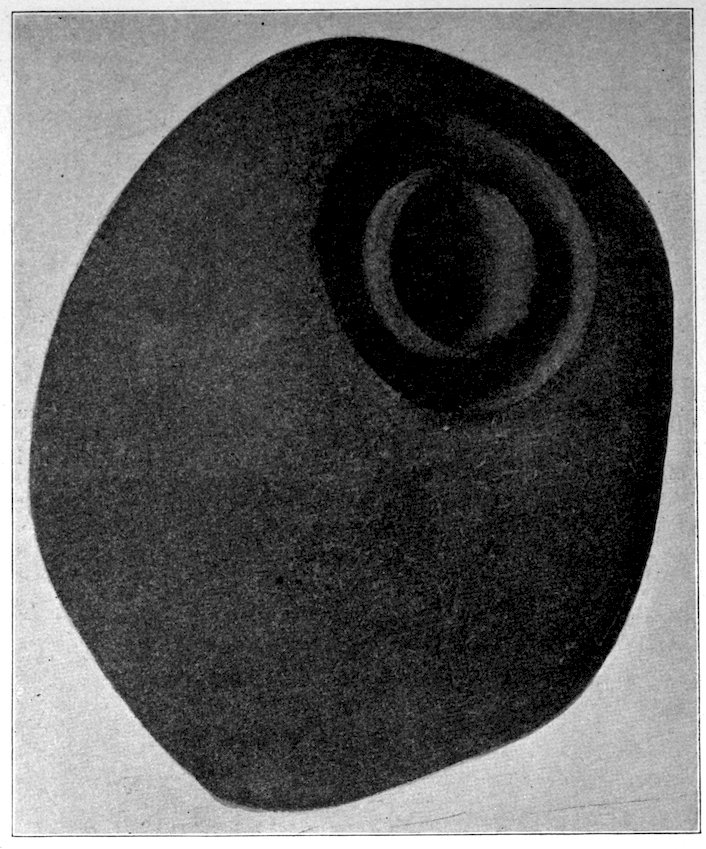
Fig. 716. (S. 1–2.) Cup-stone. Collection of Logan Museum, Beloit, Wisconsin.
On such a stone as is illustrated fifteen nuts could be placed at one time and crushed by a single blow of a heavy, flat slab. If they used cup-stones for this purpose, they would naturally employ stones in which there were many cups rather than the average stones containing one or two cups. If so used, the work proceeded rapidly; one person crushing and two others placing the nuts in position. As the stone weighs no more than six or seven pounds, it could be quickly raised and the contents dumped into a receptacle.
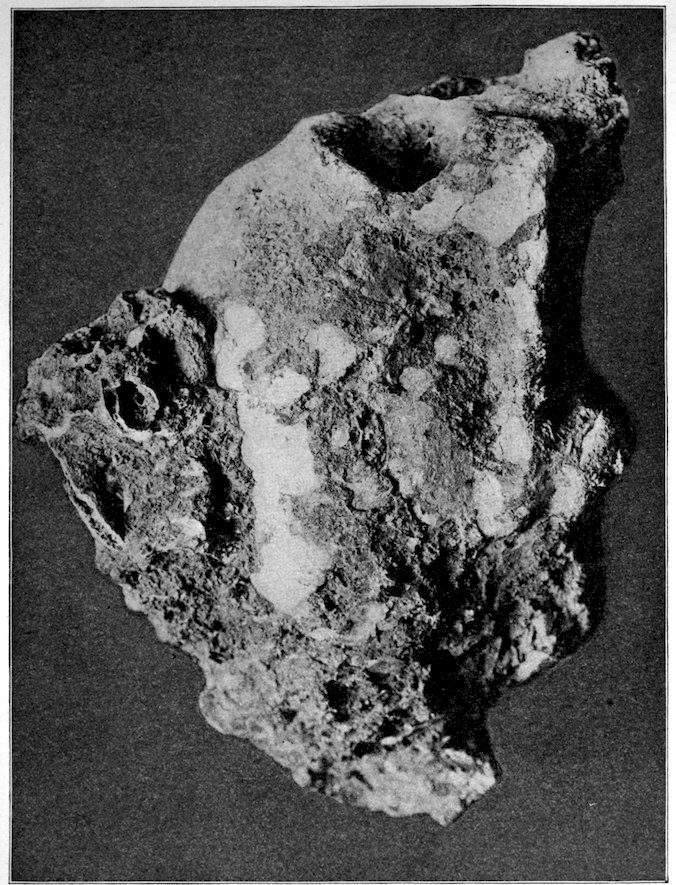
Fig. 717. (S. 1–2.) Skull from a Florida shell heap. (See page 351.) Peabody Museum collection, Cambridge, Massachusetts.
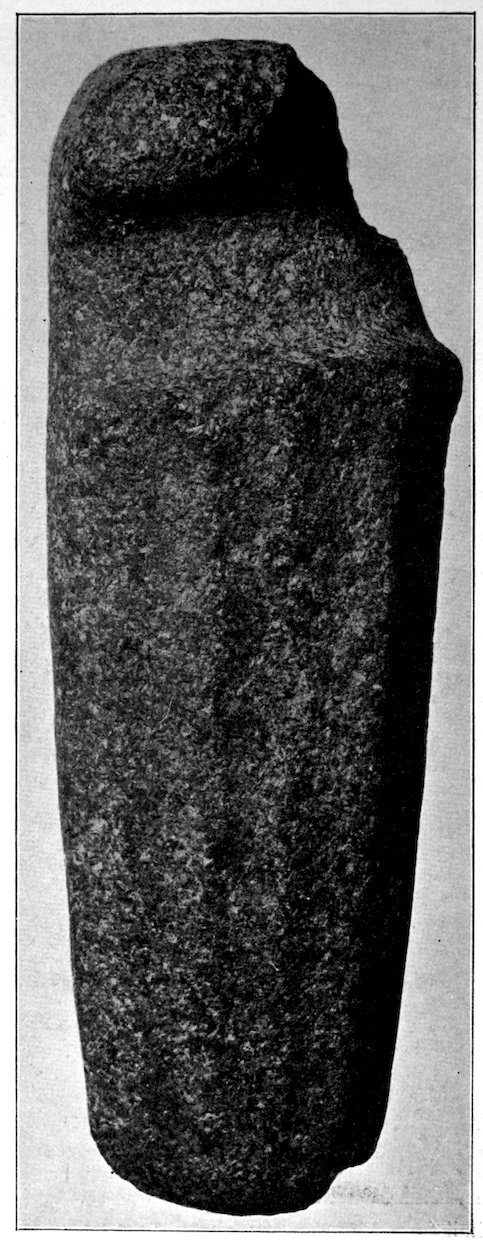
Fig. 718. (S. 1–1.) Grooved stone axe from Allington, Washington County, Wisconsin. Collection of the Milwaukee Public Museum.
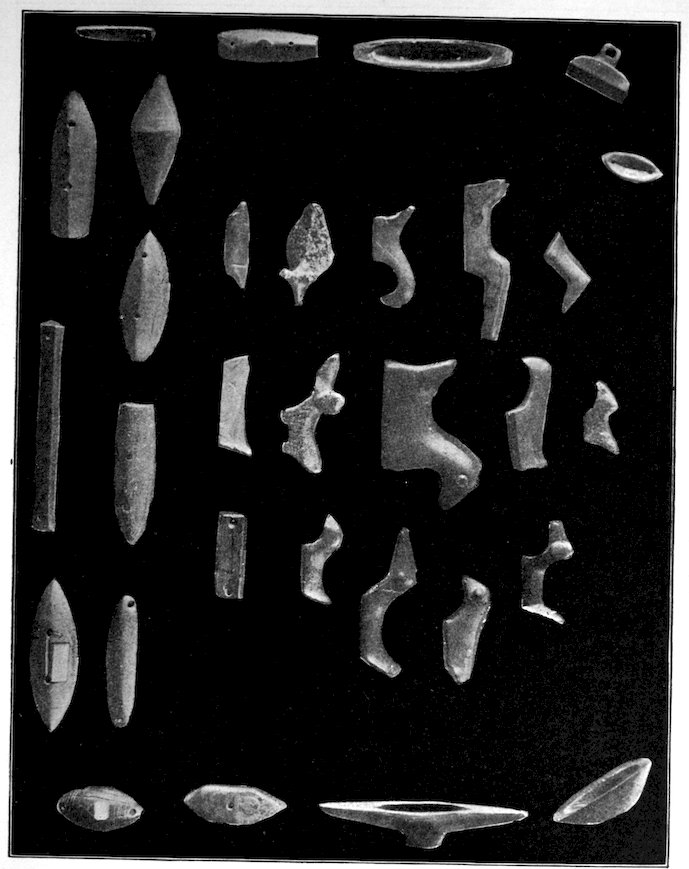
Fig. 719. (S. 1–5.) A group of bird-stones, boat-shaped objects and other problematical forms. J. T. Reeder’s collection, Houghton, Michigan.
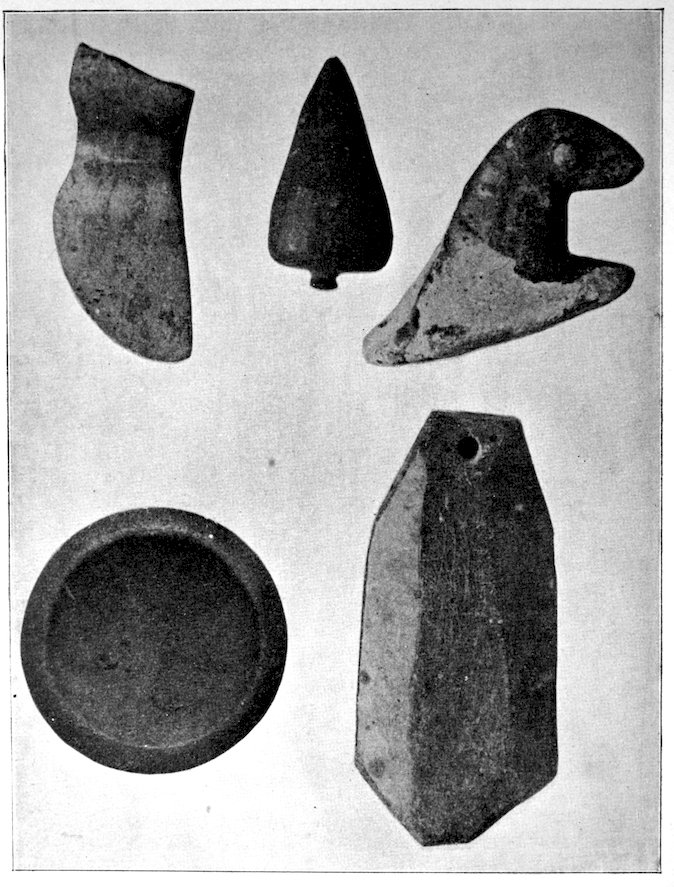
Fig. 720. (S. 2–3.) Problematical forms from near Burlington, Vermont. Collection of G. H. Perkins.
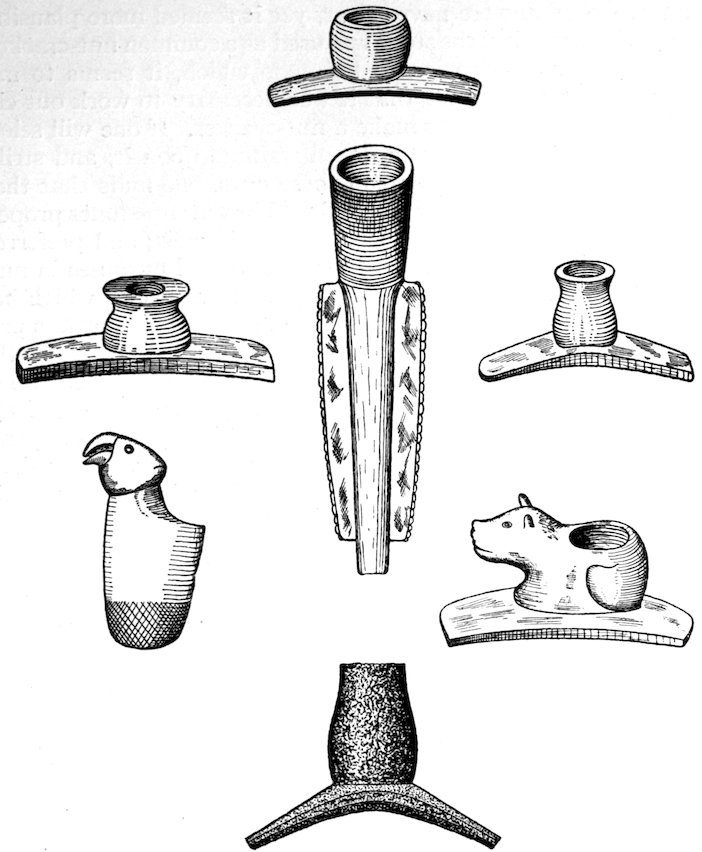
Fig. 720 A. (S. 1–4.) A group of mound pipes. L. W. Hills collection, Fort Wayne, Indiana.
328But while this may be true, it has always seemed to me that the pitted stones may be made use of in some way as controlling or regulating the apparatus used in drilling. While all the details of such an explanation were never clear, yet it seemed more plausible than the statement that the stone was used as a common nut-cracker. There is another observation to be made which, it seems to me; militates against the theory that it was necessary to work out circular depressions in order to make a nut-cracker. If one will select a flat, smooth slab and place a dozen walnuts upon it, and strike with another flat slab evenly upon these nuts, one finds that they are crushed quite as completely as if placed in the cup-stones proper. The Indians wished the oil rather than the kernels; and preferred the nuts completely crushed. And for all practical purposes in nut-cracking, two flat surfaces are fully as good as a surface which has been cupped. Again, stones having deep pits on their surfaces prevent the crushing of more than half of each nut. If one studies the cup-stones carefully, one will observe that some of the pitted stones are very smooth, others may be rough. In the exact centre of the pits is a small depression. In some instances this depression appears as if it was the result of a revolving object; in other words, a drill. I cannot believe that the cracking of nuts in these depressions would produce the effect just described.
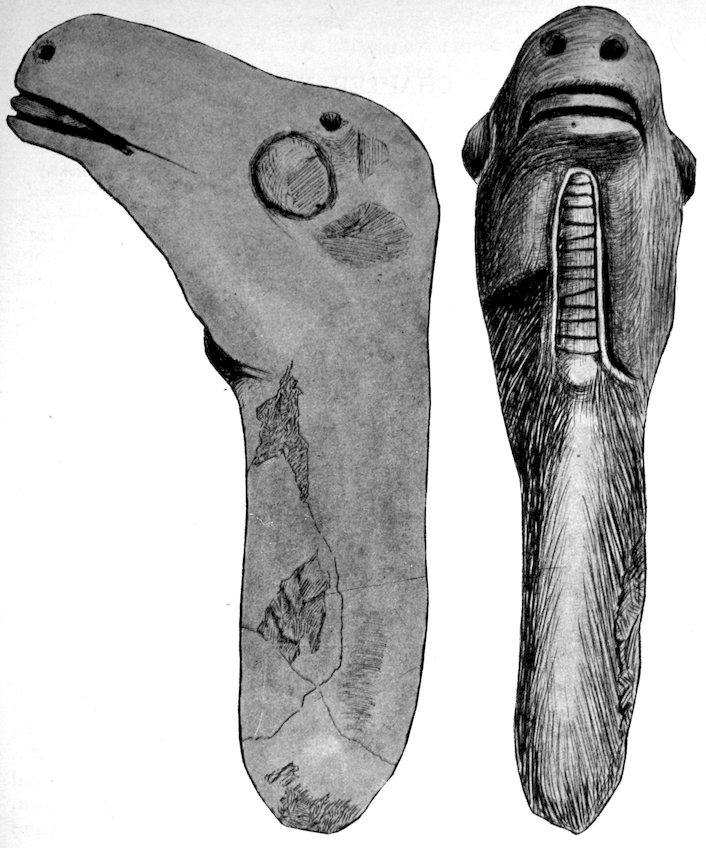
Fig. 721. (S. 1–2.) Front and side view of an effigy in stone. Collection of Edward Beatty, Santa Rosa, California.
For the most part throughout Ontario, Quebec, and the more eastern provinces of the Dominion of Canada, the ancient stone and bone and other objects of handiwork of the aborigines are similar or nearly similar to those found in the New England States of the Union. There are, however, some exceptions more or less marked. The history of the seventeenth century tells some interesting things about the aboriginal peoples of this part of Canada. To some extent the location and movements of the Algonquins, Hurons, and Iroquois (“Five Nations”) have become known. But the knowledge of these and of their predecessors in that region is far too limited. Much remains to be learned about the occupation of the country during the preceding centuries. Archæological work appears to have revealed several occupations, and the implements, utensils, and ornaments of different tribes have probably been mixed. Hence, it is often difficult to distinguish them with certainty.
Some of these objects of manufacture have been found uncovered upon the surface of the ground, or partially covered by the soil; others have been dug or ploughed out by the farmer and road-maker in their operations; and other artifacts as well as human skeletons have been taken from pits or excavations six to eight feet in depth. In only a few localities of eastern Canada have mounds been discovered containing specimens of the work of ancient or prehistoric man. There have been found, however, numerous aboriginal village-sites with many bits of pottery, caches of charred corn, and various sorts of kitchen refuse and primitive domestic tools and ornaments.
The following are the principal kinds of ancient artifacts found in this part of the Dominion:—
Bone articles, such as needles, awls, knives, scrapers, and harpoons.
331Shell objects, mostly made from marine shells which had been obtained in tropical or sub-tropical seas.
Rude chert, quartzite, and flint objects, some of which are ovate-leaf-shaped, much like the form of certain palæoliths of Dordogne, France.
Drills or borers made of chert and quartzite.
Arrow-heads of chert, quartzite, and flint, barbed and unbarbed, and of various forms.
Spears of slate, often having the tang laterally serrated.
Stone knives and scrapers, rude or well-finished; generally made of limestone or of chert.
The chert used in the manufacture of scrapers, drills, and arrow-heads was doubtless procured from the Devonian rocks in southwestern Ontario, where it occurs in abundance near Lakes Erie and Huron.
Stone axes and adzes, often called “celts.” These are usually made of amphibole and hornblende, related minerals, one a light-green and the latter dark-green in color, and both being hard, tenacious, and durable. Occasionally, however, celts of gneissoid material are found. In nearly all cases these wedge-shaped axes or celts have good form and are highly polished. No doubt they were sometimes used as spades or digging-tools.
Well-made gouges, of the same minerals as those in the “celts,” also occur in many localities.
Pipes of sandstone, limestone, and quartzite. Usually these exhibit good workmanship. Examples from Ontario are not wanting in which the bowl alone consists of stone, each having a horizontal opening for the insertion of a bone or wooden stem. Some have a perforation at the bottom bored diagonally, probably for the suspension of an ornament. Occasionally one is found having stem and bowl in one piece, and these are chiefly made from a comparatively hard variety of steatite or soapstone. Such are more frequently found northwards toward Hudson Bay, and they may perhaps be referred to the Eskimo, as steatite is used by this people in the manufacture of pipes as well as of culinary utensils. A pipe made from Mexican or Utah onyx, and having a human face-mask carved upon it, has been found in southwestern Ontario.
Gorgets. These are of many kinds as to their form and also the stone from which they are made. Circular, oval, cylindrical, tubular, and elongate flattened forms occur. The last-named are often nearly 332rectangular, flat, polished pieces of stone, perforated by one, two, or three holes. These are sometimes known as banner-stones. The smaller ones may have been used as ornaments in the head-dress, a cord of the hair of the head being fastened through one of the perforations, and feathers inserted in the others. The banner-stone with a single central perforation is somewhat rare, those with two or three perforations being more numerous. Banner-stones of reddish hematitic slate have recently been found here; but striped Huronian slate from the rocks of northern Ontario is the usual material from which they have been fashioned.
Amulets, charms, or ceremonial stones. These are bird-like or animal-like in shape, or rather they have the form of some imaginary animal partly avian and partly mammalian. There are holes bored diagonally through portions of the lower side, apparently for suspension of these stones by strings. Amulets are usually three or four inches long. Most of them are regularly formed and beautifully polished. The material is Huronian slate. But one recently obtained by the writer is of limestone, and has a length of nineteen inches, a height of six inches, and a thickness of five inches. The holes are large and extend from side to side in the upper part of what represents the neck and back of the bird.
Copper artifacts are not uncommon in Ontario and some other eastern localities, although they are not at all plentiful. The material is native copper from Michigan in the vicinity of Lake Superior. Occasionally native silver occurs in spots throughout the article. Well-formed celts or axes, and spears are found. Knives and beads also occur. The copper celt often has a flat side and a sloping raised side, the latter consisting of two flat faces sloping laterally from a central longitudinal elevation. Both sides of the spear slope toward the edge in a similar manner; there is a tang for insertion into a wooden or other handle, and there are usually two lateral projections at the base of the blade. The beads are of two kinds, namely, small, circular beads rudely fashioned, yet in shape somewhat like the ordinary modern beads of white people; and the long, thin leaf of copper loosely rolled, to constitute a small tube through which the string had to pass.
Pottery or earthenware objects. The pottery of this region is greatly broken. It consists principally of sherds or fragments of vessels of different sizes and designs. There are, however, a few perfect vessels of pottery, and there are many unbroken pottery 333tobacco-pipes here. The forms of the pipes and their decorative designs are numerous. Some of these are shown in Fig. 434, Toronto University collection.
With regard to the date of the aforesaid objects of man’s handiwork, it may here be stated that none of them are very recent, and that only the simpler forms, such as some of the arrow-heads, scrapers, and skewers, were made within the last four or five hundred years. There can be little doubt that most of them were made many centuries ago; although, of course, many of them may have been used in more recent times by the aboriginal successors of their manufacturers.
In the region of the great plains between Lake Superior and the Rocky Mountains the prehistoric artifacts differ greatly from those of eastern Canada. Here are many earthworks of the ancient mound-builders, some of which have yielded characteristic mound products, differing considerably from the stone-age relics of the East; and in this region also are found large numbers of grooved hammers and mauls rarely found in Ontario and Quebec. In Ontario the stone “celt” or wedge is very common; but in Manitoba, with the exception of the extreme eastern part of the province, the celt is practically absent. With its decline and disappearance farther west, and especially towards the borders of Saskatchewan, the grooved hammers appear in great numbers, and in a great variety of forms and sizes. Stone discs and grooved axes likewise occur on the plains. Another stone tool absent from Manitoba is the amphibole gouge, of which well-formed, beautiful specimens occur in Ontario and farther east.
Stone hammers and mauls. The hammers and mauls are long and short, broad or thick, and narrow, nearly uniform in thickness, or else tapering more or less toward one end. Most of them are between four and six inches in length, but some have been found almost a foot in length and six inches in thickness. These latter are, of course, very heavy, and must have been used in pounding or splitting hard or tough, heavy substances. The correct name for such is beetle, maul, or mallet. One specimen of a grooved hammer found in the region is made from a true hematite nodule and is only three fourths of an inch in length. Some mauls and hammers have a complete continuous groove near the middle of the stone; 334but in most cases there is half an inch or more ungrooved, the furrow ceasing at the point from which the handle of the implement is directed. The usual rocks employed in their manufacture are gneiss and granite; but limestone and amphibole sometimes occur. Ungrooved mauls and hammers have been found, and occasionally one almost spherical in shape. No fluted specimens have been reported.
Stone discs. Circular stone plates or discs are not of frequent occurrence in this region; yet quite a number have been found. Like the beetles and hammers, they are generally turned up by the farmer’s plough in the cultivation of his farm. These discs are made of fine-grained sandstone and gneissoid rocks, and a few have been found bearing carvings upon them. In a measure these Manitoba discs remind one of the interesting stone discs and plates of Alabama described by Mr. Clarence B. Moore, but they are usually of a simpler type than those of the South.
Stone spade or shovel. In a mound in 1907 the writer found a stone implement which strongly resembles the modern shovel in form and size.
Stone axes. Only a few axes are known here, and they have prominent ridges bounding the central encircling groove.
Arrow-heads of quartzite and flint are tolerably numerous. Very few examples have been taken from the earthworks, nearly all having been discovered by digging or ploughing the soil. Most of the latter are rudely finished, while those discovered in the older mounds usually exhibit superior workmanship.
One specimen of blade or unbarbed arrow-head in the possession of the writer has a well-marked patina over its entire surface. It is about three inches in length, and an inch and three quarters wide at its base. Its material is translucent flint or agate. The patination of this flint artifact must have required a long period of time, perhaps one thousand years or more. It was ploughed out of the prairie at a depth of five or six inches.
A few flint scrapers have been collected.
Pipes of stone. These are straight tubular bowls made of catlinite or red “pipestone” from Minnesota, beautifully formed and polished. They have been found only in the burial-mounds, and they do not at all resemble the modern Indian pipes.
Objects made from bone. These are not numerous in this district. They consist chiefly of bone skewers and awls, whistles made from the ulna of the wing of the eagle or other large bird of flight (see 335Fig. 528), bone armlets and beads. The armlets have holes by which they were evidently laced or fastened upon the arms, and they are usually decorated by grooves and notches. They are made from broad, flat bones, generally the scapulæ of the larger animals. A bone blade or knife is sometimes found. A comb-like hide-dressing bone tool, an arrow-nock, and primitive bone beads have been recently taken from mounds by the writer. Only a very few simple ornaments of deer antler have been found.
Shell objects. There is a variety of articles here made from sea-shells and river-shells. A large spoon is made from one of the valves of the shell of the fresh-water mollusc Unio. But the majority are ornaments, and are made out of univalve shells from the ocean. Oblong, flat pendants, large circular rings, oval, circular, and tubular beads of shell occur.
Objects of copper consist chiefly of thin sheets of native copper rolled in such a way as to form tubular beads. Sometimes larger pieces of rude sheets of copper have been found. This copper must have been brought from some locality near Lake Superior, where copper-mining was carried on in prehistoric times.
Pottery or earthenware objects. Numerous fragments of pottery bowls, dishes, cups, and other vessels occur in some localities, usually in fields where the sod has been ploughed for the first time, and where the location is convenient to a stream or lake. Occasionally pottery sherds have been found at greater depths, even to two or three feet. In such cases they were evidently covered by olay and sands deposited from the overflow of the waters in some former period of time, no doubt many centuries ago. In some of the most ancient burial-mounds a few perfect vessels of pottery have been discovered. These are small urns with flaring rims and more or less decoration, the principal part of which consists in most instances of a continuous, deep groove running spirally around the entire body of the vessel.
Only one example of a pipe made of pottery has yet been reported from this region. This is a large pipe, having bowl and stem in one piece, found by the writer in a burial-mound in 1908. Both the stem and bowl are decorated with grooves.
The urns here referred to and the straight tubular stone pipes previously mentioned are precisely similar to most of those found by the writer in numerous mounds in Dakota some years ago. The shell articles, pendants, rings, and beads also afford strong evidence 336in support of the view that they who reared most, if not all, of the mounds of Manitoba and North Dakota were one and the same people.
The remains of prehistoric and ancient people hitherto discovered in Utah consist principally of the ruins of various houses in the cliffs and valleys, and the contents thereof. Besides these there are ancient irrigation ditches of some size and importance in the southern part of Utah. There are also petroglyphs or rock carvings of various kinds upon the vertical faces of many of the rock cliffs; and what appear to be tracks or prints of the human foot in volcanic rock have been found in one or two places.
While the houses whose ruins occur in the broad valleys of Utah vary in size and in the number of rooms, and also in the structure of their floors and the interior finish of their walls, they may all be regarded as belonging to the same class of mud or adobe structures. The cliff-houses, however, differ in so far as some are stone buildings, others mostly adobe, and others small caves just large enough for occupation as dwellings or for use as storage-bins.
The more important artifacts obtained from the ruins of Utah are here enumerated and described:—
Wooden pail or bucket, from a cave (see Fig. 632). This is formed by digging out a piece of the trunk of a tree.
Flails of several shapes are found. These are from three to four feet long, and have one end wide and flat for a length of fifteen to eighteen inches. They were used for beating the yucca plant and cedar bark in making yarn or thread. Doubtless some of these wooden articles may have been used also for digging in the earth.
Two atlatls from this region have been described, one by Professor Otis T. Mason in 1892, and the second by the present writer in 1894. (See The Archæologist for November, 1894, “Prehistoric Man in Utah,” by Henry Montgomery.) The latter atlatl or throwing-stick had two loops of rawhide and a shallow groove upon it. There had been a piece broken off the upper part.
Wooden pipes were discovered in 1894, along with mummies and relics, in cave-house ruins in eastern Utah. These are nearly ovoid in shape; the passage is not curved or bent; and they have short bone stems cemented in position for use.
Knitted and plaited articles occur.
Corn-sacks made of the fibre of the bark of the cedar tree have been obtained by me in the caves of some of the canyon Cliff-Dwellers.
Baskets, mats, and sandals, chiefly of yucca fibre, have been found with the bodies of half a dozen mummies and elsewhere in caves in eastern Utah. These show artistic skill in their manufacture. In January, February, and March, 1894, Mr. C. B. Lang made an important collection in three caves of San Juan County, Utah, which he asked the writer to examine at that time and to make report thereon to the scientific and other journals. With that end in view I made an examination and had a number of photographs of the collection made. Only a few of these were used in publication. Some of the remaining unpublished photographs are herein reproduced for the edification of our readers. (See Fig. 631, pair of leggings, and Fig. 634, birch bark.) Mr. George H. Pepper described a number of similar articles from other localities in Utah, and referred them to a distinct race or tribe to which he gave the name “basket-makers.” As sacks and mats of much the same character have been found by the writer in other caves along with the ordinary Cliff-Dweller’s artifacts and skeletons, the propriety of separating these people from the Cliff-Dwellers proper seems, for the present at least, somewhat doubtful.
Robes and mantles or shawls made of the feathers of wild turkeys were also taken from cave-house ruins in eastern Utah. Several mummies were found clothed with such feather robes, and some wearing sandals of yucca fibre, and others having deerskin coverings upon their feet.
Pipe-stems, pieces of hollow bone of suitable length, cut from the hollow wing-bones of birds.
Skewers and awls of bone are numerous.
Circular and oblong pieces of bone. No doubt some of these were used in playing games.
Beads of bone of various sizes.
Beads made out of teeth, probably of the mountain lion, an animal which is present in considerable numbers in the Wahsatch and Uintah Mountains.
Beads made out of shells from the ocean.
Metates and rubbing-stones, for grinding maize. These corn-grinding mills are often quite large, and sometimes weigh as much as a hundred pounds. In the year 1892 the writer found a heavy metate in a cliff-house in a place one thousand feet above the stream in the bottom of the canyon, and in a spot very difficult of access.
Arrow-heads of obsidian, chalcedony, and quartz. They are mostly small, barbed, and well-formed. Many of them are translucent, and some are transparent. Both obsidian and chalcedony occur in nature in southern Utah.
One straight pipe-bowl of catlinite was found in a cave-house in San Juan County. This may perhaps indicate intercourse with the tribes of Dakota or Minnesota.
A nearly pear-shaped pipe-bowl of beautifully polished onyx was found with mummified human bodies and wooden flails and fibre mats in a cave in eastern Utah (see Fig. 436). It had a stem of bone in position, fastened in place by some sort of black cement or fireproof substance, which also lined the inside of the pipe-bowl.
Stone mauls and hammers are to be mentioned as occurring in Utah. They are generally provided with a groove in which the pliant, tough, wooden handle is fastened.
Grooved stone axes likewise occur.
Oblong and other-shaped pendants and ornaments of turquoise and green variscite have been found in the valley houses.
Pipe-bowls of several kinds, straight and curved. Some well-formed pottery pipes were found by the writer in 1890 in valley-house ruins.
Balls an inch or two in diameter made of partially baked clay. Probably used for games of some sort.
339Vessels in the form of bowls and jugs. The bowls are of regular form, well glazed and tastefully decorated with painted designs, mostly on the inside.
The jars have one or two handles, and are of many sizes, some being very large. Occasionally the jars are highly embellished externally by painted designs of various and interesting kinds. Similar bowls, jars, and pipes of pottery are found in both the valley- and the cliff-house ruins.
That the people who built and inhabited the cave- and cliff-houses and the valley houses were one and the same race of people can hardly be doubted. This was pointed out by the writer in 1894. The stone corn-mills, the pipes, the arrow-points, the bowls and jars of pottery, are similar. The house structures were, of course, slightly different, owing to the difference in their environment. But both peoples were agriculturists, both built small rooms or houses for storing corn, gourds, water, and implements, both had arrows for defense and the chase, and both manufactured superior pottery similar in the quality of the material and also in decoration.
The former Territory of Dakota included that portion of the country now forming the States of North and South Dakota.
The ancient specimens of handiwork in the Dakota Territory of the early “eighties” comprised surface “finds,” which were mostly stone mauls, hammers, and axes, rude bone and pottery articles of old village-sites, and also various kinds of mound products.
The principal artifacts are here enumerated:—
Leather or tanned hide, found occasionally in mound burial-pits. Although evidently very old, it appears to have been carefully tanned, and to have been part of the hide of a buffalo.
Baskets made from the bark of the birch tree. These are small and are nearly all of similar pattern. Usually the basket consists of but one piece of bark cut in such a manner that it could be bent and fashioned into a neat basket and stitched together where the parts overlapped. Sometimes two and even three rows of holes are present, showing great regularity, and that a small needle and thread must have been used in the work.
Pear-shaped deer antler pipe-bowls, three and one half inches long, and two and one fourth inches wide at the top, have been found by the writer. (See Fig. 428, F.)
Deer antler, perforated near one end.
Deer antler tyne, perforated and notched. Perhaps this served as a message stick.
Deer antler tyne, peculiarly cut and furrowed. Probably a tool. (See Fig. 542.)
Bone harpoons for spearing or catching large fishes such as the Great Lake pike of Devils Lake.
Bone anklet, with ornamental carving, and having holes near two opposing margins for lace-strings, and other holes perhaps for the attachment of ornaments.
Bone tubes or pipe-stems, cut from the hollow bones of birds’ wings.
Bone awls, needles, and knife-blades.
These comprise objects made from fresh-water shells as well as those made from ocean shells.
Among these are the following:—
Circular pearly ornaments like buttons, with a central aperture and four marginal notches at regular intervals. Large pearly shell rings thicker and wider on one side. (See Fig. 543, E.) Usually more than twenty of these rings have been found together near a human skull and in such a position that there seems no doubt they had formed the principal part of a necklace.
Oblong pearly pendants, notched near one end for the cord of attachment, and decorated with four or five notches on the other extremity. (See Fig. 528.)
Long beads made from the columella of shells of the ocean gasteropod, Fulgur perversa, of frequent occurrence also in the mounds of the Mississippi Valley. (See Fig. 543, D.)
Small shell beads made by grinding the ocean shells Nerita, Natica, and Marginella on the shoulder of the spire. (See Fig. 543, G.)
Scoop or spoon, made from a valve of the bivalve mollusc Unio, 341the common fresh-water mussel. This has a very short handle cut on it, and it is ornamented with a few notches on the margin.
Sharpening-stones. Ovoid objects made of coarse sandstone and having a groove in the centre of one side. These were for sharpening bone awls and needles and probably for grinding shells and other articles into the desired shapes.
The stone mauls and hammers were plentiful in the southern portions of Dakota; but were absent from a large part of the Territory near the forty-ninth parallel. Most were grooved near the middle, and they varied considerably in size and shape. There were also some grooved stone axes, some of which possess a prominent ridge beside the furrow and upon the side between the furrow and the edge end of the axe.
Barbed flint and agate spears. Some are very large. All are translucent and exhibit workmanship of a high order. They are found in the burial-mounds, and are very rare. (See Fig. 214 A.)
Flint and agate arrow-heads. Only a very few of these occur. They are also well made.
Effigy stones. Two slender stone serpents have been reported from South Dakota. One of these is said to have six curves or convolutions.
Stone pipes. (See Fig. 428.) These are made of catlinite or red pipestone, and are regularly formed and beautifully polished. They are all straight tubes constituting bowls, and vary in length from two to ten inches. One taken out of a mound by the writer was ten and one quarter inches long (twenty-six cm.). The stem was at least in some cases made from the hollow ulnar bone of the wing of a large bird; for bone stems of this character were found with several of the pipes. Hollow pieces of wood may perhaps also have been used as pipe-stems. This straight tubular pipe is very characteristic of the mounds of North Dakota, Manitoba, and Saskatchewan, very few of other kinds having as yet been reported from this prairie region.
Stone tablets. Flat pieces of stone are sometimes found; but they are very rare. One of these found by Montgomery in 1889 is made from pipestone or catlinite and has the figure of an animal carved upon each side. (See Fig. 310.) One of the carvings is probably meant to represent a beaver, and the figure upon the other side of 342the tablet is a representation of a buffalo cow with open mouth, and the figure of a stone spear-head with shaft attached, pointing to the heart. It would seem to indicate that the buffalo had been shot in the heart by the spear or large arrow, and in consequence the mouth is represented as being wide open. Some, however, interpret the position of the spear and shaft to mean the “line of life,” which may possibly be the correct interpretation. Another tablet found by Montgomery in a burial-mound has the figure of a beaver carved upon each side, one representing the upper surface of the animal, and the other being a side view.
The articles made of copper are few in kind and number. They are chiefly simple cylindrical tubular beads and rudely formed spear-heads of native copper.
The writer has found a number of vessels of pottery in the burial-mounds of northern Dakota. All of them are small urn-shaped vessels of coiled ware, and almost all of them were found in a perfect condition. In most cases their decoration is a continuous spiral groove around the body of the urn, terminating near the centre of the bottom of the vessel. In a few instances the decorative design is different; and some are provided with four holes in the rim for suspension by cords.
On the Mandan village-sites and in the more southern parts of Dakota many fragments of pottery jars and vessels are found. These have various incised decorative designs, and in some cases ears or small handles are present. Much of this pottery closely resembles the pottery of the eastern part of the continent.
There have been tobacco-pipes of unbaked clay found by the writer in the burial-mounds of this region. One form of these consists simply of a bowl with a straight tubular passage. (See Fig. 429.) It is nearly of the same design as that of the catlinite pipe.
A second kind (see Fig. 429) has stem and bowl in one piece and is bent or curved so that the stem is at right angles with the bowl as in modern pipes. These pipes, like some of the catlinite pipes taken 343from the ancient mounds, showed evidence of much usage, there being a considerable incrustation or deposit within the bowl from the burning of kinni-kinnic of some kind.
While some of the artifacts herein enumerated and described were undoubtedly made by Sioux and Mandan Indians, it appears quite certain that the products of the mound burial-pits, that is, the spirally grooved urns, the tubular pipes, antler tynes, and sea-shell ornaments, belonged to some other ancient tribe, possibly to the ancient Arikaras, or to a yet earlier tribe.
Naturally, the Conclusions to “The Stone Age” are somewhat long, and while I have embodied them all under two chapters, yet they have been grouped under subdivisions, as will be observed by readers.
We should first consider a subject which has been given, it would seem, scant attention. I refer to the fact that generally throughout the American continent are unmistakable evidences of a considerable population in ancient times. At present there are about three hundred and sixty thousand Indians in the United States and Canada. Perhaps more than half of these show the effects of marriage with whites or negroes. The population of to-day is no criterion of that in ancient times. In studying field evidence of population, we must bear in mind that the Indian of both periods made use of perishable materials. This is an essential fact to be noted during the course of our studies. Much that both the historic and prehistoric Indian made use of was composed of cloth, iron, wood, brass, leather, etc. It is quite true that the wood, leather, cloth, etc., of prehistoric times would disappear, but the stone, bone, shell, clay, and copper objects remained. Iron rusts quickly, and the use of iron was widespread from the time of the settlement on the New England coast (1620) down to the present. A great deal of iron was introduced by De Soto in Florida, South Carolina, Georgia, Alabama, Arkansas; and by Coronado in the Southwest. Both of these expeditions were in the years 1540–1543, and on them hundreds of Spaniards penetrated into the interior carrying thousands of objects, chiefly of iron. All of this must have had an effect on the natives throughout a considerable portion of North America.
I have elsewhere referred to the difference between historic and modern sites, but the subject is important and has been, it seems to me, passed over or not appreciated by others, and it is necessary to emphasize the difference between the ancient and the modern again. The significant fact is that all of this iron has disappeared leaving 345here and there a streak of rust, and that upon the modern sites were left quantities of glass beads and other objects that are not perishable. These were in use among the natives, yet few of these things remain; the only exception being noted in the sites of the Iroquois of western New York, where the modern artifacts predominate.
In previous articles I have called attention to the fact that on the four or five Shawano sites in the State of Ohio, there were large bodies of Indians assembled during the period embraced between (roughly) 1700 and 1812. These Indians helped to make American history. They were fairly numerous, of unquestioned ability, and produced such men as Tecumseh and his brother the Prophet. Their leaders, Tecumseh and Cornstalk, were engaged in twenty-two actions with our troops; numerous traders were among them, and they sent many expeditions against the frontiers. Yet, if one walks over these populous sites of historic times, one finds practically nothing save here and there a glass bead or a broken tomahawk.
In any one of perhaps two or three hundred places where prehistoric villages occurred, an observer may find great quantities of chips, spawls, broken implements, broken pottery, etc. The needs of ancient man were few, his implements simple and confined to the types illustrated in this work. Therefore, the presence of the unnumbered evidences of human residence indicates either a great length of occupation, or large numbers of Indians for a short period of time.
I never believed that the population in America exceeded one million (north of Mexico) at any time, assuming that the field evidence is against the statement so often made that there are as many Indians in America to-day as at the time of the discovery.
If the Ohio Valley had been occupied by mound-building people when La Salle and Hennepin made their voyages of discovery, these worthy and zealous explorers would have made reference to it in their reports. But La Salle and Hennepin heard of the great Illinois towns on the river of the same name in that state and journeyed from Quebec to visit those towns. There were thousands of Indians living in the Illinois country, but Ohio appears to have had little population—that is of Indians, and none whatsoever of mound-building people.
Between Aurora and Lawrenceburg, Indiana, if the Ohio River has not during a recent flood covered the bottoms with silt, there may be seen a village-site nearly three miles in extent. I visited it in 1898 346and collected upwards of three thousand specimens from the surface in a week’s time.
The Indian population was most numerous on that great artery, the Mississippi River and its tributaries. Perhaps we have not fully recognized the importance played by this “Father of Waters” in prehistoric times. Throughout the Mississippi Valley are several climates varying from extreme cold in northern Minnesota to the semi-tropical of Louisiana; from the aridity of the foothills of the Rocky Mountains to the salubrious climate of Tennessee; from the cold of the extreme Northwest to that of Pennsylvania. The Mississippi Valley comprises altitude and sea level, mountains and plains, every kind of soil and every specimen of plant and animal life found in North America above the City of Mexico.
It would appear that man had penetrated to the heads of every stream tributary to the Mississippi. Through the Colorado basin, throughout the length and breadth of all the Southern rivers; to the rivers of New England, the great St. Lawrence basin, and the Red River of the North, and even far Yukon in Alaska,—these primitive stone-age people carried their simple arts and established their villages. In the Cumberland and Tennessee valleys such multitudes of them lived that even after a hundred years of ruthless destruction of the stone grave cemeteries, there still remain thousands of unopened sepulchres.
Apropos of these stone graves, General Gates P. Thruston, of Nashville, who has studied ancient man in Tennessee more than forty years, reports by letter to me as follows: “I think that there must have been forty thousand graves within twenty-five miles of Nashville. I should think there were probably at one time as many as one hundred thousand prehistoric inhabitants in the two valleys. The village-sites and cemeteries cannot be numbered.”
The officials at Washington have underestimated, it seems to me, the number of Indians in the United States, because they have recorded the Indian of the historic period rather than the Indian of the past. De Soto and Coronado both reported continuous population throughout the regions traversed by them. Yet shortly after the year 1700 small-pox, measles, cholera, and other diseases destroyed entire tribes. Untold thousands of our Indians perished during these epidemics. The case of the Mandans is well known. The early colonists made frequent reference to the spread of these plagues throughout the country.
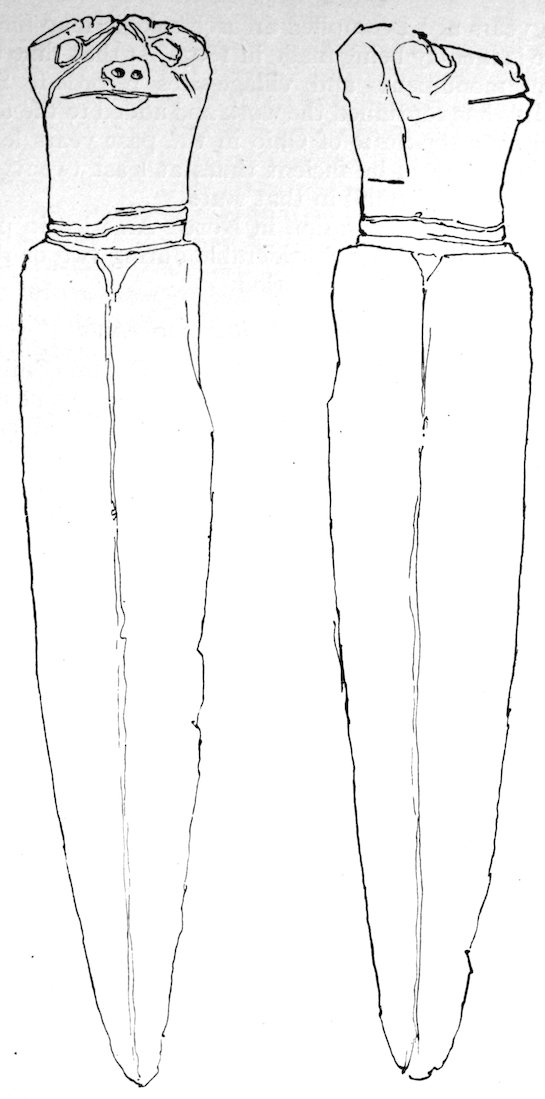
Fig. 722. (S. 1–2.) Views of an unknown object of stone, found in 1885 on a ranch on the Columbia River, Oregon. W. F. Parker’s collection, Omaha.
348Fourteen years ago I compiled an archæologic map for the State of Ohio; the last entry being made in 1897. At that time there were 3292 various monuments and village-sites recorded. Since then Professor Mills has continued the work and added to the total. Constant travel over the State of Ohio in the past years leads me to believe that there were in ancient times at least twenty thousand monuments great and small in that state.
All considered, the population in North America in pre-Columbian times must have been considerable during two or three thousand years, if not for a longer period.
It is unfortunate that Coronado, De Soto, Captain Smith, Hennepin, Marquette, and the Pilgrim Fathers did not give us more detail about stone-age times. When these explorers, or adventurers, or colonists came here, many of the Indians were still in the stone age. One of the best references that I have seen is that by Coronado’s historian, who states that in the mountain region along the Colorado River there lived many wild tribes who were barbarous; “eat human flesh, worship painted and sculptured stones, and are much given to witchcraft and sorcery.” These men represented savage and not barbaric stone-age times. They appear to have been exceedingly fleet of foot, great hunters, very courageous, and quite different from later Indians. The historian, speaking of one of these tribes, says:
“The third language is that of the Acaxes, who are in possession of a large part of the hilly country and all of the mountains. They go hunting for men just as they hunt animals. They all eat human flesh, and he who has the most human bones and skulls hung up around his house is most feared and respected. They live in settlements and in very rough country, avoiding the plains. In passing from one settlement to another, there is always a ravine in the way which they cannot cross, although they can talk together across it. At the slightest call five hundred men collect, and on any pretext kill and eat one another. Thus it has been very hard to subdue these people, on account of the roughness of the country, which is very great.”
It has been known for many years that the Seri Indians living on an island in the Gulf of California are still in the stone age. Professor W J McGee, of the Bureau of Ethnology, visited these Indians and wrote a long report concerning them.[32] This book should be read 349by students, as it gives an insight into what prehistoric times must have been. McGee states a number of interesting facts which I repeat, with some changes, in condensed form.
The Seris are bitterly opposed to foreigners, and he considers “their race sense is perhaps the strongest ever known.” This is due to their living alone and apart on this small island away from other tribes. They had bitter experiences with the cruel Spaniards nearly three centuries ago, which was a contributing factor in bringing about this condition. They use shells, with which the sea-front abounds, for knives, cups, dishes, dippers, and other utensils.
The natural, water-worn pebbles need no chipping or fashioning to make of them hammers and crushers. Occasionally some of these implements exhibit a little work to bring them into better shape. The seacoast abounded in thousands of water-worn stone objects, of such forms as made them convenient for use by the Seri Indians.
Practically no chipped implements occurred. McGee searched patiently but found only two, both of which were arrow-points. The water-worn stones were used in the hand and not hafted, the aim serving as the handle. “The Seri are wonderfully quick in using these stones”—the motions being faster than if one held the end of the handle in which the stone was fashioned. The social organization of these people is very peculiar. The oldest women are matrons who seem to dominate each community. In the case of the best-looking young woman of the tribe, who would not be photographed, the matron commanded that she permit a picture to be taken, and she, who had strenuously objected, at once consented. When any of these people marry with aliens, they are outlawed or driven away from the other Seri.
The graves of the Seri are simple pits in which the body is placed with accompaniment of objects belonging to the deceased in life. If such burials—near the surface—were made in very ancient times in more moist or humid climates, it is certain that all bone and other perishable objects would have disappeared and only the stone things remained. We would then be unable to determine that a grave once there existed, and it is possible—I do not say probable—that such graves may have been made in times of extreme antiquity in the North or South, and that all of the softer substances and bones have disappeared. In that event, these graves of an early culture would not appear to us as graves, but as a small cache of rude implements.
350Aside from these two references I have found a few others, but because of limited space, I am unable to present them here.
Dr. Charles Peabody kindly furnished me with an interesting statement regarding the use of the bicaves or discoidals, which is herewith submitted:—
“At the Village of the Houmas. There are eighty cabins, and in the middle of the village a fine level square, where from morning to night there are young men who exercise themselves in running after a flat stone which they throw in the air from one end of the square to the other, and which they try to have fall on two cylinders that they roll where they think that the stone will fall.”[33]
We should consider quite briefly this subject. As was remarked on pages 32–4, man may have occupied America in times of great antiquity. Personally, I cannot understand how all the different Indian dialects developed in comparatively recent times. It would seem that several thousand years at least were required for so many and diversified tongues to have developed among our aborigines.
Not being a geologist, it would be presumptuous for me to pass opinion on questions in which geology played prominent part. What little is offered, therefore, is based upon study of man’s handiwork and distribution of his implements rather than upon geologic evidence. There has been not a little said concerning the observations of Mr. Ernest Volk and Dr. Charles C. Abbott in New Jersey, as both of these men have labored for many years near Trenton, upon fields and in the sands and gravels. Recently Dr. Abbott published three pamphlets.[34] There are some personalities in these pamphlets which might have been omitted, and one or two statements to which some persons might object. But on the whole these three pamphlets sum up all of Dr. Abbott’s observations during the past thirty years, with reference to New Jersey archæology and the antiquity of man in the Delaware Valley.
Waiving these minor considerations, which no broad-minded man would treasure up against Dr. Abbott, we may safely assume that both he and Mr. Volk are real archæologists. That is, they understand conditions as they existed in ancient times, and that is something that few men of to-day grasp. It cannot be learned from reading 351the reports, from studying in museums, or through obtaining a degree from one of our universities. Both Volk and Abbott have worked hard. There was no fuss made about it. It was a continuous grind day after day, week in and week out, year upon year.
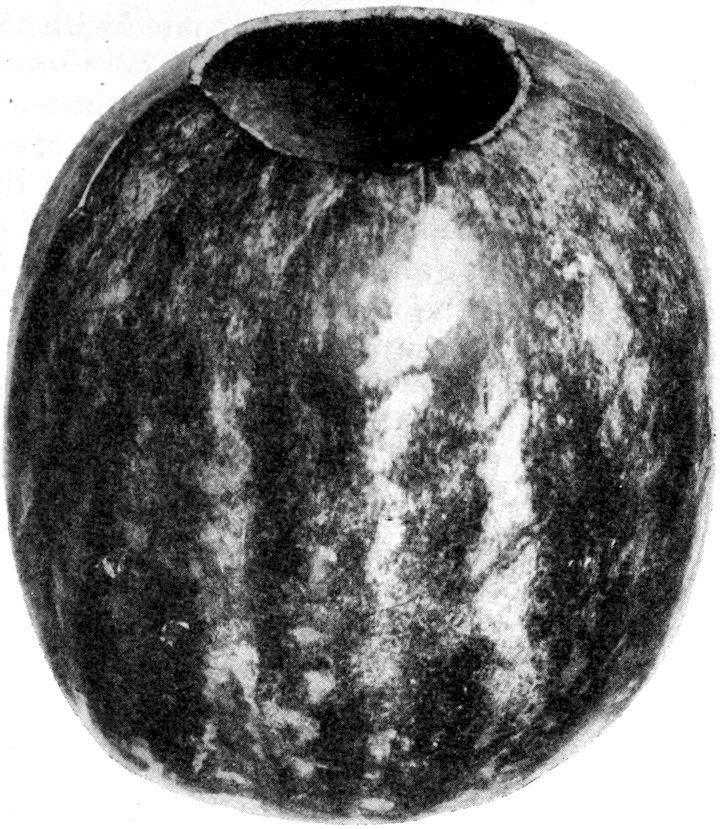
Fig. 723. (S. about 1–3.) A remarkably well-preserved gourd water-jug. Found in the ashes of Salts Cave, Kentucky. B. H. Young’s collection, Louisville, Kentucky.
No man can dig a pit in the ground and fill it up so that it conforms to the surrounding natural strata. Such a place always shows disturbed soil or clay. Walk along the riverbank, where the water has washed out a line of fence and left the marks of the post-holes, and observe; note gravel-banks anywhere in this country where aborigines buried in graves, and as white men haul away the gravel and expose the bank, one is able to see clearly defined the outlines of the graves. The same is true of the holes of burrowing animals and of tree-roots, etc. The beds of streams mentioned by Dr. Abbott in his work play an important part in archæology. When the implements found in them were lost, the streams were active. Since 352then they have filled up. The character of one deposit in the Delaware Valley investigated by Abbott and Volk differs from that of another, and the differences are so striking, the deposits being in the one place sand, and in another place glacial clay, in another place river gravel, that one cannot but believe that a considerable period of time elapsed between these various cultures.
In many sections of the country are found not only chipped implements, but other implements heavily coated with patina, which is an incrustation accruing by time alone. There are other worn specimens which appear very old. Select some of these and compare them with objects from the Mandan or Iroquois sites, or even from the mounds in the Ohio Valley, and one will observe the apparent difference in the age of these specimens. The Mandan pottery and some of the Iroquois pottery are even at this late date coated with soot. There is no soot on the mound pottery. Along the Atlantic Coast, and in the South, flint implements are sometimes coated with patina. In Florida shell heaps are occasionally found skeletons at great depth. Mr. Clarence B. Moore considered the lower strata of the larger shell heaps to be very old.
There was a skull found by Dr. Wyman during the course of his exploration many years ago in the base of a shell mound in Florida.[35] I present a picture of it in Fig. 717. The cranium is heavily incrusted by cemented shells. Such a burial must be of great age.
These shell heaps accumulate very slowly during the occupancy of the sites by many generations of Indians. This skull, and the skull found at Lansing, Kansas, at a depth of twenty-five or thirty feet, and other finds, are evidences of considerable antiquity. Dr. Hrdlička has said that the Lansing man was of the same type as the modern Indian. This does not mean that it is modern, for Assyrian and Egyptian crania five or more thousand years old have been taken from the tombs, and it would require experts to distinguish them from crania of living people.
Prof. Edward H. Williams, Jr., of Woodstock, Vt., suggested to me that an expert analysis be made of the surface of certain problematic forms and ornaments finished and unfinished. Therefore, I gave to Prof. Williams some forty objects from our Andover collection, and he made a careful examination, as did his friend Prof. John D. Irving of Lehigh University, who is secretary of the Geological 353Society of America, and an expert in such matters. Some of these specimens are found to be old, a few very old, and others more or less recent. I shall quote a few of his observations. The numbers refer to catalogue numbers in our books:—
“22517—From Georgia. This is a fine-grained diabase. Prof. Irving reports that the ophitic structure is very well marked. This object has been buried for some time, and the surface is weathered, and has been pitted since it was worked.
“23449—Syenitic Gneiss. The feldspar had begun to kaolinize before the pebble was worked. Since working the surface has been considerably etched, and the hornblende is left rising above the surface. This black mineral has also been decomposed since working, and the iron component has rusted and stained the horn.
“34772—Extremely fine-grained muscovite schist with grains of magnetite. This was weathered before working, and the magnetite has almost wholly rotted to soft dark spots. There was some etching of the surface since working.
“4137—Foliated greenish talc. The lighter pits and scratches are recent. The surface is darker than the fresh fracture, and shows age and handling.
“18414—This is a much decomposed rock of the trap variety, which has become so weathered and softened that it has become almost entirely chlorite. It looks very much like an argillite. It belongs to one of the ‘greenstone’ rocks.”
As to the exact number of years required for this weathering, it is impossible to state, but since these specimens were considered from a geological and mineralogical point of view, and critically analyzed by two entirely competent men, it is safe to assume that a few hundred years would not account for the disintegration. I do not know whether these things are a few hundred or several thousand years old, but the analysis shows that the stone weathered to some considerable extent, and this would be indication of age. It would be interesting to analyze some of the Iroquois objects and to compare.
The different cultures in America would appear to be evidence of the antiquity of man. One cannot imagine that the Cliff-Dwellers and mound-building tribes, that the stone-grave people, or the cave people in the Ozarks, or the shell-heap people of Florida, or the Plains tribes, and finally, the woods and mountain Indians, who never made any monuments of any description—that all these cultures developed in a few hundred years. They are so totally different, 354and are so influenced and modified by climate and local conditions, that it would appear plausible that several thousand years must have elapsed before these sharp lines of distinction developed. Again, while all Indians have skins more or less red, the variation in physical appearance among our aborigines is surprising. No one could fail to distinguish an Ojibwa from an Iroquois, or a Sioux from an Apache, or an Osage from a Seminole, even if one had no knowledge of Indian language or customs. Environment and habitat must have influenced these tribes and affected their stature and physical conditions.
Among our American aborigines one trait stands out prominently, and that is the art of adapting themselves to existing and local conditions and environments. Perhaps no race so readily appreciated that it must depend entirely upon its own resources. We find, therefore, that it is immaterial whether the native Americans live in Maine or in Florida, in North Dakota, or Texas; they selected the most available materials. If the stone was easily chipped or of such consistency that it could be made use of, they adopted that stone for certain implements. If the stone was refractory and not easily chipped or worked, they did the best that they could with it. Therefore it is not always a criterion of poor workmanship nor does it indicate low degree of culture if the implements are crude and roughly and imperfectly made. It even means that there is no good material at hand and that the Indians selected the best they were able to secure and worked it out as well as they were able. Again, in certain sections implements made of good material are to be found, also of poor, coarse, local materials. Frequently the good material was transported from a distance. It may have come through trade or by means of conquest. That is immaterial. The point is that the natives naturally preferred materials more easily worked, but that they were not always able to obtain them. It is quite likely that few of the tribes were friendly in prehistoric times. The natives of a given river valley may have desired the better material to be found two or three hundred miles distant from their habitat, but because of the hostility of the nation living in that section where better material could be obtained, they were unable by either trade or conquest to obtain it, and had to be content with such unsatisfactory chert or other stone as occurred in their immediate locality. I think that this factor entered largely into prehistoric life.
355But if no suitable stone could be obtained, the Indians made use of bone or other substances. In several references to the Mandan village-sites in this work, the point was made that the Mandans used the large bones of the buffalo for a multitude of purposes. This was because suitable stone was scarce, and for the further reason that the bones were more easily worked and shaped than stone. In certain sections of the Mississippi Valley where materials of all kinds were in abundance many varieties of stone, shell, etc., were employed.
The readiness with which the native adapted himself to conditions is shown in the house structure of the Indians. Those of cold climates lived in very different structures from those of the South. And the Plains Indians employed skin coverings, whereas the woods Indians made use of bark or of logs, and the Pacific Coast Indians used quantities of hewn boards.
This is an interesting subject, and could be followed at considerable length did space permit.
Too much has been made of the presence of stone and bone tools among modern tribes. While there have been numerous instances of such clinging to old forms, yet students of modern Indian life, by their constant reference to these recurrences, have given a wrong impression to the world.
It is generally known and accepted that art passes through periods of transition. As an example one might cite the Renaissance. No student of art would confuse the Renaissance with an earlier or later period. Examples of earlier art still persisting during the early Renaissance are in evidence. But as the influence of the Renaissance broadened, all art of that period was affected, or leavened by it, and presently practically all art was Renaissance.
This is precisely true of Indian art. We search diligently to find an old, really old Navajo blanket to-day, and we pay a fabulous price for it. Likewise we search—but in vain—for old wooden bowls, painted buffalo robes, and feather mantles. The utmost corners of remote South America are visited by explorers from Harvard, the American Museum, and Berlin and London museums. Why? To discover primitive man untouched by civilization in order to record his arts and folk-lore, religion, and daily life, undefiled by contact with our civilization. Is it found? Scarcely an example remains—all is tinged and influenced even as the Renaissance changed the preRenaissance. 356If one will reflect a moment, one will agree that this is all true.
Examples of sculptures in stone, carving of shell, effigies in copper, ceramic art in the Cliff-Dweller country are in our leading museums. I would recommend readers to go to these museums and compare that real art with the wretched examples in vogue among the Indians at the present time.
I have said so much regarding ancient arts in various places in this book that now I wish to speak more particularly regarding certain tribes of Indians, among whom I spent the spring and summer of the year 1909, and contrast their art with stone-age art.
In March, 1909, I was sent by the Department of the Interior to investigate the condition of the Ojibwa Indians. I returned several weeks later and was again sent out the first of July and remained on the White Earth Reservation until in October. Because our work was to establish who were the full bloods, we came in contact with all the Indians of the Ojibwa tribe who claim to have no white or negro blood in their veins.
Among our eighteen or twenty witnesses, who were chiefs and persons ranging from seventy to eighty-five years of age, and who were familiar with the history of the Ojibwa, with the parents and grandparents of those whom we established to be full bloods, were several members of the grand medicine society, the Midiwewin. These persons were frequently examined by me through our interpreters—all of whom were the most competent we were able to procure and the best on the reservation—as to the past history of the Ojibwa tribe. The old record-keeper, commonly called Daydodge, but whose real name is Bay-bah-dwung-gay-aush, aged eighty-two, had a remarkable memory. To him had been related all the Hiawatha traditions by the Indians, and he was able to carry back history about one hundred and twenty years. This man told me that there were few, if any, stone implements in use among his people when he was a boy, and he did not think that stone objects were in use to any extent when his grandparents were children. He said that occasionally a woman hafted a stone celt and used it in scraping or cutting, that some stone mallets were to be found when his grandparents were young, but he thought that the French and English traders’ goods had displaced all stone articles in use among the Ojibwa.
As Major Powell found many linguistic stocks in North America in recent times, so we find quite as many cultures in ancient times. But the language of these people being unknown to us, we must study them through their implements. Some of these are widespread, while others are local. Consider, for instance, the saddle-shaped or bird-shaped stones, of which numbers are illustrated in chapter XXV. These, after great study, one must conclude originated in a certain tribe long ago. It is not proper to call them Iroquois, or Delaware; if they existed in historic times one might be more correct in stating that the Eries, or the Snake People, referred to by the Delawares in their Lenni-Lenape tradition, made and used them. Certainly they are not Iroquoian in character. Their very distribution would indicate that they are a product of Northern people of stone-age culture. As against this the bicave and discoidal stone is of central South culture and not of New England, the North, or West. Under other chapters I have presented some conclusions, and these will not be repeated here. Axes, flint implements, copper (by Mr. Brown), and several other divisions of artifacts have been already separated into their culture-groups. At the present writing there are so many new types on exhibition in public and private collections which formerly were considered products of individual fancy, that it is quite difficult for one to determine the number and extent of the prehistoric cultures in the United States.
However, one must make a beginning. In presenting what appears to me to establish various local cultures, I am quite aware that future observers—when the knowledge of this intricate subject is more widespread—may add or detract from my observations. The cultures mentioned, therefore, must be considered in the nature of pioneer observations, subject to development or change as archæologic knowledge expands and becomes more perfect.
In New Brunswick and Maine and about the mouth of the St. Lawrence there are the ever-present flint implements and chipped 358objects, and also numbers of slate points, which may be either problematical forms or winged spear-points and arrow-heads. Many of the slate points found by Mr. C. C. Willoughby in graves at Oldtown, Maine, appear to me to be too long and slender to have made effective weapons. Yet they may have served as such. The adze and gouge and the adze-blade celt are numerous in New England. I have commented on the types of chipped objects and how they differ in various sections of the country, so that it is not necessary to re-enter upon a lengthy dissertation on this question.
In New England proper, the region east of the Hudson River, the slate points are not common, and gradually disappear west of the Connecticut Valley. But the adze and the gouge and the long roller pestle abound in numbers. There are also strange effigies of whale, and rude effigies so rough that one does not know what the maker intended to represent. Plummet-shaped stones are also common. But the slate gorget and ornament, and the bell-shaped pestle, the discoidal and bicave, and many other forms, are almost wanting. The pipes are not common and far inferior to those of the Ohio Valley and Middle South and the South. New England, then, may be divided into two culture-groups, that east of the Merrimack River and that lying between the Merrimack and the Hudson. These are related to each other, but differences may be observed.
The next culture-group is that of eastern Canada, north of Lake Erie and Lake Ontario. All of this region is marked by Iroquois influence, and the tribes preceding the Iroquois left exceedingly crude and rude handiwork in stone. The forms which may be considered to be pre-Iroquoian are very like those of the Lake Champlain district. A splendid collection of them is on exhibition in the Provincial Museum, Toronto, where Mr. David Boyle labored for many years to bring about the preservation of Canadian antiquities.
Between the Hudson and the line drawn between Buffalo, New York, and Baltimore, there are at least two cultures and indications of one or two more. In northern New York is the famous Iroquoian culture of which so much has been written—and by more competent observers—that I would not dare describe it here.
Suffice it to say that an inspection of the pipes, pottery, bone implements, etc., from Iroquoian graves and village-sites will acquaint one even superficially interested in archæology with the fact that the Iroquoian culture is plainly different from anything else on the American continent. Whether the Iroquois, previous to 359their famous Hiawatha, were organized and had developed this peculiar art is a question for others to decide. But the freshness of the Iroquoian pipes and pottery and the general tone of the objects—and by tone I mean that appearance which most of them possess—indicate that they show European influence—lead the archæologist to conclude that as to antiquity they are not in the class with the other objects found in America. It has always been my opinion that five or six centuries of time are sufficient to account for their production. None of them look old in the sense that objects from other sites appear old.
In southern New York and throughout New Jersey and Delaware we have chipped and polished implements which are supposed to stand for the prehistoric Delawares, and these types appear, in the main, very old. They are more than weather-beaten, many of them were on the verge of disintegration. Time alone can account for such condition. The Delaware Valley and the Susquehanna must have been ideal places for prehistoric man. In both the climate was not severe; game, nuts, herbs, fish, and other necessities of life abounded. A careful inspection of the work done by Dr. Charles C. Abbott and Mr. Ernest Volk leads me to believe that these men have, beyond question, established that man lived in the Delaware Valley three or four thousands of years ago. Rude axes and peculiar ornaments also abound. The gouge is rare. The adze is scarcely ever found, while the problematical forms are totally different from those of the Middle West and the Middle South. The roller pestle occurs, but it may not be considered a local type. Copper is found in limited quantities, hematite is almost entirely wanting, and effigy pipes are very rare. The Weaves, now and then discovered, may be considered as strays brought in by means of barter or exchange. The projectile points are as a rule slender, and are easily distinguished from those of New England, New York State, or Canada. Jasper, argillite, quartzite, and rhyolite predominate.
The next culture-group is that of central and western Pennsylvania, wherein many New Jersey and New York State types occur. The problematical forms, the black chert, arrow-points, the jasper knives, and the notched hoes or axes may be said to enable one to distinguish this region from other culture-groups of the East, even if they are more or less related. West Virginia may be said to lie on the border-line between Pennsylvania, Kentucky, and Ohio. Hematite appears in the valleys of the Kanawha and other streams 360in West Virginia. The monitor pipes also appear, together with certain forms of axes, spear-heads, and knives which are found in greater numbers in Kentucky and Ohio.
Ohio and Kentucky stand as two separate cultures separated by the Ohio River. Yet the Ohio River was made use of by prehistoric man from above Pittsburg to its mouth at Cairo. Along the stream itself one may discern, on both north and south bank sites, all kinds of cultures, thus proving that the Ohio River was not only a thoroughfare but the thoroughfare in prehistoric times. It is only when one proceeds up the streams from the Ohio back fifty or a hundred miles in Illinois, Kentucky, Indiana, and Ohio that one observes how the local cultures have developed. The culture of the Muskingum and Scioto in Ohio are practically the same; the Miami is different. The Wabash in Indiana is yet another culture and the Illinois yet a third. In Kentucky the Cumberland and Tennessee are in a class by themselves, separate from the others mentioned. These two latter rivers are so long, and as each is navigable far into the State of Tennessee, I feel certain that five or six cultures may be clearly differentiated within their valleys. I have referred to the stone-grave culture of this region elsewhere. It merits further detailed study on the part of archæologists.
In the State of Illinois are long yellow chert spear-heads and lance-heads and knives, some of which have slightly turned points. Many of these are not unlike the Scandinavian daggers. In Michigan and Wisconsin there is a wealth of copper, many of the sugar quartz spears and knives, large numbers of peculiar winged problematical forms which have been quite fully illustrated in this work. The Illinois and Wisconsin cultures are separate and distinct.
Northern Illinois contains types of Wisconsin and Michigan as well as numbers of central Illinois forms. At Sandwich in DeKalb County there is a large collection owned by Mr. Henry W. Franck, who sent me numerous photographs of his exhibit. This collection illustrates the mingling of types of three cultures and is of great archæological importance.
Passing west to the Mississippi in Missouri we have the so-called hematite belt. Along the Missouri River occur great quantities of iron ore, and the natives worked this into hematite axes, celts, plummets, etc. This region of central Missouri appears to be different from southwestern Missouri. Central and western Missouri (outside of the Ozarks) are also different from the cultures bordering along the Mississippi River, or eastern Missouri.
361In Kansas and Iowa we have the large notched hatchets which are peculiar to that section of the country, the white flint of Iowa, the dark chert of Kansas, and the minute arrow-heads, the small almost square hand-axes, the profusion of yellow chert and poor jasper hide-scrapers. These are always typical of the buffalo country. But the strangest culture, it seems to me, in America is that of the cave region of the Ozark Mountains, where Dr. Peabody and myself made several investigations. In southwestern Missouri, northwestern Arkansas, and Indian Territory, in both limestone and sandstone formation, are some thirty-five or more natural caverns which had been inhabited by man. In these are great quantities of ashes and debris. Our inspection of four or five of these caves, the study of local collections, and an examination of village-sites in the region revealed the fact that chipped implements of the village-sites are of different stone from those from the ashes in the caverns. That man in the Ozark region had no pipes, no slate articles, no problematical forms, no roller or bell-shaped pestles, no shell ornaments, no copper, no hematite, no celts, no grooved axes, etc. I say none, although in the entire region one slate article, one pipe, and two axes have been found. These may be considered as brought in by later Indians. The chipped implements are rough—save here and there a long, slender, well-chipped object; they are seldom well made. There is a profusion of sandstone mano-stones and mortars. There is every indication that the culture is extremely old and very primitive, as stalagmites have formed (notably in Jacob’s Cavern) over some of the human remains. This Ozark culture, as stated above, was carefully worked out by Peabody and myself, and was found to be an anomaly in American archæology. I am persuaded that there are other and equally peculiar local cultures to be found if one searches diligently.
The Southern culture shows local developments. It is chiefly distinguished by its pottery, which is different in Florida from that of Missouri and from Louisiana. The flint implements also differ, as do many of the types in stone. In Florida stone celts occur, but axes are extremely rare.
In Texas there is peculiar culture, chiefly of chipped implements of a rough sort and small minute arrow-points well made, with little or no pottery, with almost an entire absence of problematical forms, and of copper, little hematite, etc.
Throughout the entire Rocky Mountain chain, from northern 362British Columbia to the Colorado’s headwaters, is a peculiar “mountain culture.” From this is excepted the Columbia Valley proper, where large pestles occur, also polished paddle-shaped stones, minute chipped objects, and various problematical forms. The mountain chain proper (back from the Coast) is different as to culture, and large chipped discs abound, also short, round pestles, rubbing-stones, hand-hammers, large grooved hammers. Eastern types are entirely wanting, and many of the chipped objects may be distinguished from those of the Coast or the Columbia Valley.
Stone objects in the Rocky Mountains are not very numerous. This is explained on the ground that before the coming of the whites it was not necessary for the Indians to live in the mountains to any appreciable extent. Naturally, they preferred the valleys in the foothills where there was more game. The tribes were driven to the mountains by their enemies. The oldest Sioux have told me (at Pine Ridge) that they never liked to go into the main range of the Black Hills because evil spirits dwelt there.
The cultures in the Colorado basin might be divided into several groups—the Cliff-Dwellers, the Pueblo culture, the Cave-Dwellers, and the boulder ruin people. These might be classified by Dr. Fewkes as all belonging to the same class. I do not know with reference to that, but the implements, the surface indications, and the character of the burials lead me to suppose that the cave people of southern Utah and the boulder ruin people of San Juan Valley were to be considered as distinct from those of the great cliff-houses and of the modern pueblo towns. There is a wealth of material in this region in the way of fine pottery, turquoise beads, delicate chipped implements, shell ornaments and bracelets, etc. We learn much of prehistoric times by exploration in the cliff-houses, for the reason that the climate is exceedingly arid and that the objects are placed back in the rooms where no moisture can penetrate to them, even when it occasionally rains.
Therefore, axes are found in their original handles; wooden tools, throwing-sticks, and baskets, sandals, knives in wooden handles, mats, ropes, and other things that would perish in the North or the South, are preserved. Thus we have splendid opportunity to study how the ancient man mounted and used these various tools, etc.
Dr. Yates and the late Reverend Mr. Meredith have shown in their articles[36] that two separate cultures existed on the Pacific Coast, 363one in northern, and the other in southern California. In addition to these there is the famous culture of the Columbia Valley, which is somewhat different from others. Numerous figures and the delicate arrow-points in that region have been presented in the foregoing pages. Along the Northwest Coast there is yet another culture.
The Canadian and Utah and Dakota cultures have been described by Professor Montgomery in Chapter XXXV. I have run over these various cultures very rapidly. Much more could be said regarding each one. The finding of different kinds of implements on a given site may indicate different cultures, for it is probable that a favorable site was selected by subsequent tribes after it had been abandoned by the first occupants. This should be borne in mind by students.
During the Boston meeting of the Anthropological Association, December 27, 1909, at the conclusion of a paper on “Myths of the Cayapa Indians of South America,” by Dr. S. A. Barrett, remarks were offered by several gentlemen, including Dr. Franz Boas. He took occasion to emphasize how important was Dr. Barrett’s work among a people as yet untouched by civilization, and as the point of view of these Cayapa Indians was so different from ours, it was difficult for us to understand their motives and conceptions. All truly primitive people live in a world so apart and removed from our own that one should be able by long study to place himself mentally in that world. Because many observers were not in sympathy with the thoughts of these primitive peoples, and could not forget that they (the observers) were the product of a higher culture, therefore, much misinformation has been disseminated regarding primitive beliefs and customs. Other ethnologists spoke along similar lines.
The above is a truism that every student of prehistoric times should realize, and at the risk of wearying my readers I repeat—and I trust these are not vain repetitions—that we must realize what the term stone age conveys. Nothing that we have in use to-day was known to stone-age man—even so common a thing as fire is confined and changed to suit our will.
Various effigies, polished problematical forms, bright copper, shell or mica, pottery, textile fabrics, and forms in wood—these were the extent of his art. He knew no horizon beyond the stone effigy, the ornamented gorget, etc. A colored stone, piece of copper, or anything in stone unusual attracted his eye. I believe that these 364appeared to him different from ordinary stones. For the same reason he must have considered hematite as more or less of a mystery. It is very hard to work, and because of its heaviness and the difficulty of reduction to desired shape, one may surmise it appealed to him as a “mystery stone.”
It is clear, from the amount of hematite and copper in public and private collections, that both were highly prized. That hematite was far harder to work than common stone did not deter the ancient man from digging, grinding, cutting, and polishing the steel gray hematites (as hard as any stone) to the desired size. Truly he worked “at his task with a resolute will, over and over again.” I should like to propose to any person who has lightly waved aside the skill or patience of the ancient worker, that that person select a chunk of the hard gray iron ore (not the soft kind) and set to work with a stone hammer and some flint flakes and a block of sandstone to make a hematite plummet. A week’s labor on the specimen will increase the respect of the sceptic for the stone-age artist.
We are just beginning to appreciate the point of view of the stone-age man. At present our knowledge is imperfect. Particularly, do I feel this personally and realize the responsibility resting on one’s shoulders when one attempts to describe and classify, in a large sense, the stone implements, etc., of ancient times. Even if one does one’s best, such a work must, for the present at least, remain a pioneer undertaking, and those who come afterwards will make of the faintly marked pioneer trail a broad and substantial highway along which others may travel and find, I trust, guide-posts unnecessary.
When we realize the point of view, the mind, and the concept of the stone-age man fully, we shall, quite likely, understand the true import of the strange problematical polished stones so common in the Mississippi Valley. These stand for more than mere ornaments. The very name “ceremonial,” which was afterwards changed by that able archæologist Professor Holmes to problematical, is a confession of ignorance. These problematical forms are found in Wisconsin, West Virginia, New England, Louisiana, Ohio, and Arkansas, and although varying through a multitude of shapes, yet apparently convey substantially the same idea. To the people who lived entirely in the stone-age times, these must have represented certain “sacred mysteries,” to white men and later Indians entirely unknown. The same is true of the abnormally large axes in copper or in stone, of the large chipped implements in Tennessee and on the 365Pacific Coast. None of these things could have served a real purpose. One cannot strike or cut with the “ceremonial swords” shown in Fig. 161, neither can the axe illustrated in Fig. 263 A be made use of for cutting. Such things as these illustrate the height or perfection of stone-age art, and we must seek their explanation and purposes along other lines than those suggested by common every-day usage, to which the smaller and more easily made objects were put.
Before concluding my remarks on the stone age in North America, I would call attention to the necessity of more and careful field work, and an understanding of the difference between various sites rather than continued museum work, or the reading of reports and publications. That man who considers arts and crafts of tribes to have been pretty much the same in America is very ignorant concerning real archæology. It has been the purpose of this volume to emphasize differences in the arts and crafts among prehistoric tribes. Archæology is like any other comprehensive subject; it requires study, discriminating care, and enthusiasm. One should further add, it requires inspiration. A man who does not love to hunt specimens for the sake of hunting them has not his heart in the work.
We have had many mounds examined, plans have been drawn, the skeletons carefully set down as so many feet from each other. A report is published in regard to that mound, and instead of intelligent observations on the meaning of the evidence ascertained, there is usually nothing but a dry and statistical statement of the distances of the skeletons from a given point. Of course it is necessary to make a survey of mounds and other remains. And it is equally important to have reports, but I do not think that it is necessary to publish field notes—which are no more than survey notes—and call them a report. Many of the reports published in recent years have missed the essential thing in American archæology. They have emphasized the mathematical features of our explorations. They are as if one published tabulated census reports, but offered no explanations as to what the number and assembling of the people in the United States meant. If no conclusions of value are to be drawn from the exploration of a given site, then it seems to me that wealthy people who send out expeditions are wasting their money, and the scientists their time. We are training young men in our universities and museums to measure mounds and village-sites very 366carefully. All this is eminent and proper, but we are losing sight of the meaning of those same village-sites and mounds and their relation to others and to prehistoric culture in general.
The explorer Stanley made a statement in his work “Darkest Africa,” which I have never forgotten. The scientist Emin Bey was much interested in examining a human skull and measuring it very carefully and setting down the measurements. Stanley was not interested in the skull. He wished to know something regarding the life of the man to whom it once belonged. If some of our students would, for a few years, lay aside cameras, ground-plans, tape-lines, and get down to real field work, much more progress would ensue. The study of sites, collections, types, and local conditions should be placed first, it seems to me.
In Science, April 15, 1910, there appeared an open letter written by Professor B. C. Gruenberg of De Witt Clinton School, New York, along the very lines I have indicated. I quote a paragraph:—
“We all know that there can be no true science that does not rest solidly upon facts. But the thought must often occur to many of us that there is some danger, especially among the younger scientists, that we may become obsessed with an exaggerated sense of the value of facts as such. Is there not too much emphasis laid by many professors in charge of research students on the mere accumulation of observational, statistical, or experimental facts, with too little attention to that side of science which concerns itself with those analytical and synthetic processes that convert facts into valuable ideas? It seems to me that this latter kind of work needs at the present time at least as much encouragement as the other. Of course, there is the possibility for ‘thinking’ to degenerate into profitless speculation; but we are certainly as much in need of the results of thinking about the facts already accumulated as we are of more facts.”
Such studies as those of Professor Holmes on pottery and quarries; such explorations as Mr. C. B. Moore’s in the South; the work done by Volk and Abbott in New Jersey, where they very carefully set aside the argillite and the quartzite and chipped implements as found in different places under different conditions; such work as Professor Mills has done in Ohio in differentiating the Hopewell and the Fort Ancient culture, are things that will count, and works that will stand. A surveyor should measure mounds, number skeletons, and draw plans. The librarian should read reports and compile statistics, 367but it requires a real archæologist to do the work that I have referred to above.
Squier and Davis, whose “Ancient Monuments of the Mississippi Valley” may be justly considered our standard work upon the mounds, not only explored, but they drew conclusions which, with here and there an exception, or a slight change, will stand at the present time. For many years Dr. Cyrus Thomas used all the tremendous energies of the Bureau of Ethnology to dispute the statements of those hard-working, painstaking, philosophical pioneers Squier and Davis. To-day we know that the culture they described is different from the Shawano, Cherokee, or other cultures which Thomas wished to establish in the Ohio Valley. The work of that distinguished citizen of Illinois, George Sellars, will bear comparison with the work of any other man since his day in the study of chipped flint objects, and if any one doubts the statement let him read and ponder upon Sellars’s complete narrative in the Smithsonian Report for 1885, and then read what has been said since by others.
Aside from the technical study of American archæology, there is a certain charm and fascination in investigation of these ancient remains. Although it has been thirty years since I found my first arrow-head, I never cease to feel a thrill of pleasure when, walking about the shores of lakes or streams, I happen to find one of these evidences of the real and the simple life. One’s mind, if he is inclined to dwell upon prehistoric times in America, naturally reverts to the past under such circumstances, and I close this work with a quotation from Dr. Abbott’s recent publication, “When as many a day has drawn to its close, while yet I lingered in the field and every sign of white man’s industry faded from view, the scattered trees became again a forest, the cry of the cougar and bleat of the fawn were heard, the bark of the fox and howling of the wolf filled the air, a lurid light of a camp-fire lit the sky; the days of the Indian had returned, nor did the illusion pass away until homeward bound, my hand was on the latch.”
For obvious reasons this bibliography is not complete; to make an exhaustive catalogue of the titles dealing with the stone age in America would require the inclusion of many articles in out-of-the-way periodicals and newspapers that are now lost or out of print; in the next place, if made complete, even within the limits of possibility, such a list would require a separate volume out of all proportion to the dimensions of the present work.
In view of these facts, therefore, the attempt has been made, first, to give the publications to which reference has been made in the text; second, to present a list of general works of standard reputation, most of which are provided either with indexes or tables of contents raisonnés; third, to give some of the more important series of publications of individual authors dealing especially with excavations whose results are germane to the matter of the volumes; and fourth, to set forth a classified list of references by the use of which a student can at least learn something about the desired subject and at the same time may receive suggestions as to the methods and the literature necessary to further research.
In view of the change in archæological processes and opinions that has often occurred in a comparatively short space of time, the arrangement of the titles is made as a whole in chronological order.
Catlin, G. North American Indians. New York. 1841.
Squier, E. G., and Davis, E. H. Ancient Monuments of the Mississippi Valley. Smithsonian Contributions to Knowledge, I. 1847.
Squier, E. G. The Serpent Symbol. New York. 1851.
Baldwin, J. D. Ancient America. New York. (1871.)
Foster, J. W. Prehistoric Races of the United States. Chicago. 1873.
Jones, C. C. Antiquities of the Southern Indians. New York. 1873.
Abbott, C. C. The Stone Age in New Jersey. Report of the Smithsonian Institution, 1875, pp. 246–380. 1875.
Wyman, J. Fresh-Water Shell Mounds of the St. John’s River, Florida. Peabody Academy of Science, Fourth Memoir. Salem. 1875.
Abbott, C. C. Palæolithic Implements in the Valley of the Delaware River. Peabody Museum Report, 10, pp. 30 ff. 1877. Peabody Museum Report, II, pp. 225 ff. 1878.
Conant, A. J. Footprints of Vanished Races. St. Louis. 1879.
MacLean, J. P. The Mound Builders. Cincinnati. 1879.
370Evers, E. Ancient Pottery of South Eastern Missouri. St. Louis Academy of Science. 1880.
Short, J. T. The North Americans of Antiquity. New York. 1880.
Whitney, J. D. The Auriferous Gravels of the Sierra Nevada of California. Contributions to American Geology, vol. II. Cambridge. 1880.
de Nadaillec, Marquis. Pre-Historic America. Translated by N. D’Anvers. New York. 1884.
Mercer, H. C. The Lenape Stone. New York. 1885.
McAdams. Records of Ancient Races. St. Louis. 1887.
Shepherd, H. A. Antiquities of the State of Ohio. Cincinnati. 1887.
Read, M. C. Archæology of Ohio. Cleveland.
Wilson, T. Palæolithic Period of the Stone Age. Report of the United States National Museum, 1888, pp. 677 ff. 1888.
Thruston, G. P. Antiquities of Tennessee. Cincinnati. 1890.
Fowke, G. Stone Art. Report of the Bureau of Ethnology, 13, pp. 57 ff. 1891–92.
Wilson, T. Primitive Industry. Report of the Smithsonian Institution, 1892, pp. 521 ff. 1892.
Berlin, A. F. Lehigh Island and its Relics. The Archæologist, 1, Jan., 1893, pp. 13 ff. 1893.
Nordenskiöld, G. The Cliff-Dwellers of the Mesa Verde. Stockholm. 1893.
Schmidt, E. Vorgeschichte Nordamerikas. Braunschweig. 1894.
Wilson, T. The Swastika. Report of the United States National Museum, 1894, pp. 763 ff. 1894.
Prehistoric Art. Report of the United States National Museum, 1896, pp. 325 ff. 1896.
Arrow-Points, Spear-Points, and Knives. Report of the United States National Museum, 1897, I, pp. 811 ff. 1897.
Thomas, C. Introduction to the Study of North American Archæology. Cincinnati. 1898.
Dellenbaugh, F. S. The North Americans of Yesterday. New York. 1901.
Fowke, G. Archæological History of Ohio. Columbus. 1902.
Lewis, A. B. Tribes of the Columbia Valley and the Coast of Washington and Oregon. Memoirs of the American Anthropological Association, vol. I, pp. 147 ff. Index and Bibliography. 1905–1907.
Abbott, C. C. Archæologia Nova Cæsarea. Three Pamphlets. Trenton. 1907–8.
Mills, W. C. Certain Mounds and Village Sites in Ohio. Vol. I, 1907. Vol. II, Part 1, 1909.
Barrett, S. A. The Ethno-Geography of the Pomo and Neighboring Indians. University of California Publications in American Archæology and Ethnology, vol. 6, no. 1. Bibliography and Map. 1908.
Randall, E. O. The Masterpieces of the Ohio Mound Builders. Columbus.
371Boas Anniversary Volume. New York. 1906.
Putnam Anniversary Volume. New York. 1909.
Moorehead, W. K. See last pages of Bibliography for titles.
de Mortillet, G. and A. Musée Préhistorique. Paris. 1881.
Evans, Sir John. Ancient Stone Implements of Great Britain. London. 1897.
Hodge, F. W. Handbook of American Indians North of Mexico. Part I. Bulletin of the Bureau of Ethnology, no. 30, part I. 1907.
Forrer, R. Reallexikon der Prähistorischen, Klassischen und Frühchristlichen Altertümer. Berlin and Stuttgart. 1907.
Schlemm, J. Wörterbuch zur Vorgeschichte. Berlin. 1908.
Déchelette, J. Manuel d’Archéologie, I. Paris. 1908.
Boyle, D. Compare the Archæological Reports of the Province of Ontario, being parts of the Appendices of the Reports of the Minister of Education of Ontario. Toronto, from 1887.
Beauchamp, W. M. Aboriginal Chipped Stone Implements of New York. Bulletin of the New York State Museum, vol. 4, no. 16. 1897.
Polished Stone Articles used by the New York Aborigines. Bulletin of the New York State Museum, vol. 4, no. 18. 1897.
Earthenware of the New York Aborigines. Bulletin of the New York State Museum, vol. 5, no. 22. 1898.
Aboriginal Occupation of New York. Bulletin of the New York State Museum, vol. 7, no. 32. 1900.
Wampum and Shell Articles used by the New York Indians. Bulletin of the New York State Museum, vol. 8, no. 41. 1901.
Horn and Bone Implements of the New York Indians. Bulletin of the New York State Museum, no. 50. 1902.
Metallic Implements of the New York Indians. Bulletin of the New York State Museum, no. 55. 1902.
Metallic Ornaments of the New York Indians. Bulletin of the New York State Museum, no. 73, Archæology 8. 1903.
Perch Lake Mounds. Bulletin of the New York State Museum, no. 87, Archæology 10. 1905.
372Aboriginal Use of Wood in New York. Bulletin of the New York State Museum, no. 89, Archæology 11. 1905.
Aboriginal Place Names of New York. Bulletin of the New York State Museum, no. 108, Archæology 12. 1907.
Civil, Religious, and Mourning Councils, and the Ceremonies of Adoption of the New York Indians. Bulletin of the New York State Museum, no. 113, Archæology 13. 1907.
Erie Village and Burial Sites. Bulletin of the New York State Museum, no. 117, Archæology 14. 1907.
Mills, W. C. Compare the following references to the Ohio Archæological and Historical Quarterly:
Vol. VIII, pp. 309 ff. Field-Work.
Vol. XIII, pp. 129 ff. Gartner Mound and Site.
Vol. XV, pp. 45 ff. Baum Site.
Vol. XVI, pp. 113 ff. Harness Mound.
Vol. XVIII, pp. 269 ff. Seip Mound.
Moore, C. B. Compare the following references to the Journal of the Academy of Natural Sciences, Philadelphia:
Certain Sand Mounds of the St. John’s River, Fla. Part I. 1894.
Certain Sand Mounds of the St. John’s River, Florida. Part II. 1894.
Certain River Mounds of Duval County, Fla.
Two Sand Mounds on Murphy Island, Fla.
Certain Sand Mounds of the Ocklawaha River, Fla. 1895.
Certain Sand Mounds of the Georgia Coast. 1897.
Certain Aboriginal Mounds of the Coast of South Carolina.
Certain Aboriginal Mounds of the Savannah River.
Certain Aboriginal Mounds of the Altamaha River.
Recent Acquisitions.
A Cache of Pendant Ornaments. 1898.
Certain Aboriginal Remains of the Alabama River. 1899.
Certain Antiquities of the Florida West Coast. 1900.
Certain Aboriginal Remains of the North West Florida Coast. Part I. 1901.
Certain Aboriginal Remains of the North West Florida Coast. Part II. 1902.
Certain Aboriginal Remains of the Tombigbee River. 1901.
Certain Aboriginal Mounds of Florida Central West Coast.
Certain Aboriginal Mounds of the Apalachicola River. 1903.
Certain Aboriginal Remains of the Black Warrior River.
373Certain Aboriginal Remains of the Lower Tombigbee River.
Certain Aboriginal Remains of Mobile Bay and Mississippi Sound.
Miscellaneous Investigations in Florida. 1905.
Moundville Revisited.
Crystal River Revisited.
Mounds of the Lower Chattahoochee and Lower Flint Rivers.
Notes of the Ten Thousand Islands, Florida. 1907.
Certain Mounds of Arkansas and Mississippi. 1908.
Antiquities of the Ouachita Valley. 1909.
Adobe.
Hodge, F. W. The Archæologist, vol. III, p. 265. 1895.
American Anthropologist, vol. 10, p. 302. 1897. (Adobe balls.)
Holmes, W. H. American Anthropologist, vol. 7, n. s., p. 205. 1905.
Adzes.
Crosby, H. A. Wisconsin Archæologist, July, 1903, pp. 91 ff. “The Triangular Stone Adze.” 1903.
Smith, H. I. American Anthropologist, vol. 8, n. s., pp. 298 ff. 1906.
Willoughby, C. C. American Anthropologist, vol. 9, n. s., pp. 296 ff. “New England.” 1907.
Agricultural Implements.
Rau, C. Arch. für Anthropologie, vol. 14, pp. 1–9. A general paper. 1870.
Williams, F. H. American Archæologist, July, 1898, pp. 177–8. 1898.
Willoughby, C. C. American Anthropologist, vol. 8, n. s., pp. 129–130. “New England.” 1906.
Altars.
Putnam, F. W. Kansas City Review, vol. VII, no. 1, pp. 32 ff. Ohio. 1883.
Gordon, G. B. Memoirs of the Peabody Museum, vol. I, 1, p. 15. Copan, Honduras. 1896.
Fewkes, J. W. American Anthropologist, vol. 10, p. 129. Tusayan, 1897.
American Anthropologist, vol. 3, n. s., p. 215. 1901.
Maler, T. Memoirs of the Peabody Museum, vol. IV, nos. 1 and 2. Guatemala. 1908.
374Amulets.
Bourke, J. G. American Anthropologist, vol. 3, p. 61. 1890.
Wilson, T. Journal of American Folk-Lore, 1891, pp. 144–6. 1891. Bellucci Collection.
Farrington, O. Journal of American Folk-Lore, 1900, pp. 199 ff. 1900.
Hough, W. Report of the United States National Museum, 1901, p. 344. Arizona. 1901.
Fewkes, J. W. American Anthropologist, vol. 5, n. s., p. 679. West Indies. 1903.
Report of the Bureau of Ethnology, vol. 25, p. 138. Porto Rico. 1903–4.
Hamy, E. T. Journal de la Société des Américanistes de Paris, n. s. 2, pp. 323 ff. 1905.
Montgomery, H. See Science, Oct. 29, 1909, pp. 613, ff. Ontario. 1909.
See American Anthropologist, vol. 11, n. s., p. 470. 1909.
Anchor Stones.
Rau, C. Prehistoric Fishing, pp. 94 and 192. 1884.
Anklets.
Moorehead, W. K. Primitive Man in Ohio, p. 110. 1892.
Montgomery, H. American Anthropologist, vol. 8, pl. XXXIV. North Dakota. 1906.
American Anthropologist, vol. 10, n. s., p. 37. Manitoba. 1908.
Argillite.
Abbott, C. C. Archæologia Nova Cæsarea, etc. (Often.)
Arrows.
Van Epps, P. M. American Antiquarian, 1880, p. 57. New York. 1880.
Rau, C. Prehistoric Fishing, pp. 56, 83, and 293. 1884.
Nissley, J. R. American Antiquarian, 1886, p. 301. Ohio and Illinois. 1886.
Smith, H. I. American Antiquarian, 1889, pp. 249 ff. Michigan. 1889.
Murdoch. American Anthropologist, vol. 3, p. 64. Glass Arrows. 1890.
Bourke, J. G. American Anthropologist, vol. 3, p. 56. Apache. 1890.
Mason, Holmes, Hoffman, Hough, Wilson, Flint, Bourke. American Anthropologist, vol. 4, pp. 45 ff. A symposium. 1891.
Dorsey, J. O. Report of the Bureau of Ethnology, 13, p. 286. Omaha. 1891–2.
Hoffman. Report of the Bureau of Ethnology, 14, pp. 275 ff. Menominee. 1892–93.
Hoffman. The Archæologist, vol. 1, p. 39. Poisoned Arrows. 1893.
375Holmes, W. H. Report of the Bureau of Ethnology, 15, plates XXXII-XLVII. 1893–94.
Waddell, L. A. American Anthropologist, vol. 8, p. 94. 1895.
Cushing, F. H. American Anthropologist, vol. 8, pp. 307 ff. Bows and Arrows. 1895.
Wilson, T. Report of the United States National Museum, 1896, pp. 325 ff. “Prehistoric Art.” 1896.
Nelson, E. W. Report of the Bureau of Ethnology, 18, p. 161. Eskimo. 1896–97.
Snyder, J. F. The Antiquarian, 1897, p. 231. 1897.
Peet, S. D. American Antiquarian, vol. 19, p. 26. Distribution. 1897.
Wilson, T. Report of the United States National Museum, 1897, I, pp. 811 ff. A general discussion. 1897.
Poole, W. H. American Anthropologist, vol. 11, p. 45. 1898.
Willoughby, C. C. American Anthropologist, vol. 3, n. s., p. 431. Antler-pointed Arrows. 1901.
Wilson, T. American Anthropologist, vol. 3, n. s., pp. 513 ff. 1901.
L’Anthropologie, 12, pp. 568 ff. A classification. 1901.
Williston. International Congress of Americanists, p. 335. Kansas. 1902.
Moore, C. B. International Congress of Americanists, p. 40. Florida. 1902.
Dorsey, G. A. American Anthropologist, vol. 5, n. s., p. 644. 1903.
Smith, H. I. Memoirs of the American Museum of Natural History, vol. IV, p. 142. British Columbia. 1903.
Dorsey, G. A. Publications, 99. Field Columbian Museum, pp. 1 ff. Cheyenne. 1905.
Note. American Antiquarian, vol. 29, p. 114. 1907.
Herrmann, R. Records of the Past, 1907, pp. 79 ff. Upper Mississippi Valley. 1907.
Winchell, N. H. Records of the Past, 1907, p. 150. 1907.
Holmes, W. H. American Anthropologist, vol. IX, n. s., p. 125. 1907.
Brown, C. E. Wisconsin Archeologist, 1907, pp. 65 ff. 1907.
Peet, S. D. American Antiquarian, vol. 30, pp. 259 ff. 1908.
Spinden, H. J. Memoirs of the American Anthropological Association, vol. II, pt. 3, p. 227. Nez Percé. 1908.
Straley, W. Records of the Past, 1908, p. 263. Nebraska. 1908.
Arrow-Shaft Straighteners.
Ehrenreich, P. Zeitschrift für Ethnologie, 1900, I, pp. 15 and 24. Ohio and California. 1900.
Dixon, R. B. Bulletin of the American Museum of Natural History, vol. 17, 3. p. 134. California. 1905.
Art.
Whittlesey, C. American Antiquarian, vol. 3, p. 13. Ethnography. 1880.
376Holmes, W. H. Report of the Bureau of Ethnology, 2, pp. 179 ff. Art in Shell. 1880–81.
Report of Bureau of Ethnology, 4, pp. 437 ff. Ceramics. 1882–83.
Transactions of the Anthropological Society, Washington, vol. 2, pp. 94 ff. Shell. 1883.
Report of the Bureau of Ethnology, 6, pp. 195 ff. Textile Art. 1884–85.
Report of the Bureau of Ethnology, 6, pp. 13 ff. Chiriqui. 1884–85.
Putnam, F. W. Bulletins of the Essex Institute, vol. XVIII, pp. 155 ff. Conventionalization. 1887.
Holmes, W. H. Report of the Bureau of Ethnology, 13, pp. 9 ff. Textile Art. 1891–92.
Fowke, G. Report of the Bureau of Ethnology, 13, pp. 49 ff. Stone Art. 1891–92.
McGuire, J. D. American Anthropologist, 1893, p. 307. Stone Art. 1893.
Holmes, W. H. American Association for the Advancement of Science, 1893, pp. 291 ff. The Processes. 1893.
Report of the Bureau of Ethnology, 15, pp. 1 ff. The Potomac Region. 1893–94.
Putnam and Willoughby. American Association for the Advancement of Science, vol. XLIV, pp. 302 ff. 1896.
Wilson, T. Report of the United States National Museum, 1896, pp. 325 ff. 1896.
Boas, F. Bulletin of the American Museum of Natural History, IX, pp. 123 ff. North Pacific Indians. 1897.
Wilson, T. American Archæologist, 1898, pp. 281 ff. 1898.
Wissler, C. International Congress of Americanists, p. 340. 1902.
Boas, F. Popular Science Monthly, vol. LXIII, p. 481 ff. 1903.
Wissler, C. Bulletin of the American Museum of Natural History, 1904, pp. 231 ff. Sioux. 1904.
Kroeber, A. L. Publications of the University of California, vol. 2, 3, p. 159. California. 1904–07.
Gordon, G. B. Transactions of the University of Pennsylvania, vol. 1, 3, pp. 132 ff. Serpent Motive. 1905.
Holmes, W. H. Boas Anniversary Volume, pp. 179 ff. 1906.
Spinden, H. J. Memoirs of the American Anthropological Association, vol. 2, 3, p. 233. Nez Percé. 1908.
Atlatls.
Bahnson, K. Archiv für Ethnographie, vol. 2, pp. 217 ff. South America. 1889.
377Seler, E. Archiv für Ethnographie, vol. 3, pp. 137 ff. Mexico. 1890.
Rink, H. American Anthropologist, vol. 4, p. 274. Alaska. 1891.
Nuttall, Z. Archæological and Ethnological Papers of the Peabody Museum, vol. 1, no. 3, pp. 169 ff. 1891.
Mason, O. T. American Anthropologist, vol. 5, p. 66. California. 1892.
Montgomery, H. The Archæologist, vol. 2, pp. 230 ff. Utah. 1894.
Peabody, C. Papers of the Peabody Museum, vol. 3, no. 2, p. 50. Mississippi. 1904.
Bushnell, D. I. Jr. American Anthropologist, vol. 7, n. s., p. 218. 1905.
Axes.
Stevenson, J. Report of the Bureau of Ethnology, 2, pp. 375 ff. Walpi. 1880–81.
Douglass, A. E. American Antiquarian, 1880–81, pp. 100 ff. Florida. 1880–81.
McGuire, J. D. American Anthropologist, vol. 5, pp. 166 ff. 1892.
Fisher, A. W. The Archæologist, vol. III, p. 75. 1895.
Laidlaw, G. E. American Antiquarian, vol. 19, pp. 68 ff. Ontario. 1897.
Peet, S. D. American Antiquarian, vol. 21, p. 100. Cliff-Dweller. 1899.
Peterson, C. A. Records of the Past, 1903, p. 27. Missouri. 1903.
Records of the Past, 1903, p. 351. Iowa. 1903.
Peet, S. D. American Antiquarian, vol. 28, p. 227. 1906.
Winchell, N. H. Records of the Past, 1907, p. 145. 1907.
Gesner, A. T. Records of the Past, 1908, p. 243. Minnesota. 1908.
Fewkes, J. W. American Anthropologist, vol. 10, n. s., p. 633. 1908.
Banner-Stones.
Fountain, G. H. American Archæologist, 1898, p. 186. 1898.
Williams, F. H. American Archæologist, 1898, pp. 201 ff. 1898.
Peet, S. D. American Antiquarian, vol. 19, p. 26. Distribution. 1897.
Robinson, C. H. Wisconsin Archeologist, 1908, p. 134. 1908.
Basalt.
McGuire, J. D. American Anthropologist, vol. 5, p. 169. 1892.
Basketry.
Swan, J. G. Smithsonian Contributions, XVI, p. 45. Cape Flattery. 1870.
Montgomery, H. American Association for the Advancement of Science, 1889, p. 343. North Dakota. 1889.
Matthews, W. American Anthropologist, vol. 7, p. 202. Navajo. 1894.
Dixon, R. B. American Anthropologist, vol. 2, n. s., pp. 266 ff. 1900.
378Farrand, L. Memoirs of the American Museum of Natural History, pp. 391 ff. Salishan. 1900.
Holmes, W. H. Anthropological Studies in California, pp. 155 ff. 1900.
Fewkes, J. W. Report of the Bureau of Ethnology, 22, pt. 1, p. 98. Pueblo. 1900–01.
Mason, O. T. American Anthropologist, vol. 3, n. s., pp. 109 ff. 1901.
Stevenson, M. C. Report of the Bureau of Ethnology, 23, p. 373. Zuñi. 1901–02.
Pepper, G. H. Journal of American Museum of Natural History, vol. II, no. 4, Suppl. p. 22. Utah. 1902.
Mason, O. T. Report of the United States National Museum, 1902, pp. 171–548. A general paper. 1902.
Emmons, G. T. Memoirs of the American Museum of Natural History, vol. III, Anthropology II, pp. 229. 1903.
Goddard, P. L. Publications of the University of California, vol. 1, no. 1, p. 38. Hupa. 1903–04.
Kroeber, A. L. Publications of the University of California, vol. 2, no. 4, pp. 106 ff. 1904–07.
Dixon, R. B. Bulletin of the American Museum of Natural History, vol. 17, Pt. 3, pp. 145 ff. 1905.
Montgomery, H. American Anthropologist, vol. 8, pp. 644 ff. Dakota. 1906.
Note. American Antiquarian, vol. 29, pp. 168 ff. 1907.
Speck, F. D. Memoirs of the American Anthropological Association, vol. 2, pt. 2, p. 109. Creek. 1907.
Transactions of the University of Pennsylvania, vol. 2, pt. 2, p. 160. Osage.
Hough, W. Bulletin of the Bureau of Ethnology, 35, p. 24. South-Western Culture. 1907.
Note. American Antiquarian, vol. 30, p. 353. 1908.
Harrington, M. R. American Anthropologist, vol. 10, p. 410. Lenape. 1908.
Barrett, S. A. Publications of the University of California, vol. 7, no. 3, pp. 136 ff. Pomo. 1908.
Kissell, M. L. Science, Dec. 24, 1909, p. 933. Classification. 1909.
Speck, F. G. Anthropological Publications, University of Pennsylvania, vol. 1, no. 1, p. 31. Yuchi. 1909.
Beads.
Henshaw, H. W. American Anthropologist, vol. III, p. 104. 1890.
Peet, S. D. American Antiquarian, vol. 14, p. 61. 1892.
Hoffman, W. J. Report of the Bureau of Ethnology, 14, p. 267. 1892–93.
Smith, H. I. The Archæologist, vol. 1, p. 52. Michigan. 1893.
Fewkes, J. W. Report of the Bureau of Ethnology, 25, p. 108. Porto Rico. 1903–04.
379Richmond, J. F. Ohio Archæological and Historical Quarterly, 1907, p. 448. Florida. 1907.
Kroeber, A. L. Publications of the University of California, vol. VIII, 2, p. 63. Cahuilla Indians. 1908.
Bird-Stones.
Moorehead, W. K. The Birdstone Ceremonial. A general discussion.
Brown, C. E. Wisconsin Archeologist, vol. 8, i, pp. 5 ff. Wisconsin. 1909.
Blankets.
Pepper, G. H. The Making of a Navajo Blanket. New York. 1902.
Bobbins.
Berlin, A. F. The Antiquarian, 1897, p. 172. 1897.
Bodkins.
McGuire, J. G. Report of the United States National Museum, 1894, pp. 623 ff. Primitive Drilling. 1894.
Bone and Bone Implements.
Rau, C. Prehistoric Fishing, pp. 7, 13, 46, 120, etc. 1884.
Moorehead, W. K. Fort Ancient, p. 43. 1890.
Howe, G. L. The Archæologist, vol. II, p. 254. California. 1894.
Mason, O. T. International Congress of Anthropology. Chicago, p. 73, 1894.
Smith, H. I. Memoirs of the American Museum of Natural History, II, Anthropology, I, no. III, p. 134. 1899.
Fewkes, J. W. Report of the Bureau of Ethnology, 22, I, p. 93. Pueblo. 1900–01.
Mason, O. T. American Anthropologist, vol. 3, n. s., p. 121. Perforators. 1901.
Holmes, W. H. American Anthropologist, vol. 4, n. s., p. 120. Indian Territory. 1902.
Smith, H. I. Memoirs of the American Museum of Natural History, vol. 4, p. 171. (Anthropology, III, IV.) British Columbia. 1903.
Fewkes, J. W. Report of the Bureau of Ethnology, 25, p. 192. Porto Rico. 1903–04.
Peabody, C., and Moorehead, W. K. Bulletin of Phillips Academy, I, p. 18. Jacobs Cavern, Missouri. 1904.
Peabody, C. Papers of the Peabody Museum, vol. 3, 2, p. 50. Mississippi. 1904.
Smith, H. I. Bulletin of the American Museum of Natural History, 1904, p. 197. Washington, State. 1904.
Dixon, R. B. Bulletin of the American Museum of Natural History, vol. 17, pt. 3, p. 140. California. 1905.
380Sinclair, W, J. Publications of the University of California, vol. 2, I, p. 12. Potter Creek Cave. 1904–07.
Wintemberg, W. J. Records of the Past, 1905, p. 271. Attiwandarons. 1905.
Gesner, A. T. Records of the Past, 1905, p. 366. Mandans. 1905.
Will, G. F., and Spinden, H. J. Papers of the Peabody Museum, vol. 3, pt. 4, p. 172. Mandans. 1906.
Gordon, G. B. Transactions of the University of Pennsylvania, vol. 2, I, p. 103. Ohio. 1906.
Merriam, J. C. American Anthropologist, vol. 8, n. s., pp. 224. Caves of California. 1906.
Putnam, F. W. American Anthropologist, vol. 8, n. s., pp. 229 ff. Caves of California. 1906.
Montgomery, H. American Anthropologist, vol. 8, n. s., p. 648. Dakota. 1906.
Boas, F. Bulletin of the American Museum of Natural History, vol. 15, pt. 2, pp. 383 ff., and frequently. 1907.
Barbour, E. H. Records of the Past, 1907, pp. 44 ff. 1907.
Winchell, N. H. Records of the Past, 1907, p. 156. Nebraska Loess. 1907.
Hough, W. Bulletin of the Bureau of Ethnology, 35, p. 23. South West. 1907.
Brown, C. E. Wisconsin Archeologist, 1907, p. 68. Wisconsin Caches. 1907.
Spinden, H. J. Memoirs of the American Anthropological Association, vol. 2, pt. 3, p. 189. Nez Percé. 1908.
Moorehead, W. K. Bulletin of the Phillips Academy, Andover, 4, p. 98. Fort Ancient. 1908.
Lowie, R. H. Anthropological Papers of the American Museum of Natural History, vol. 2, pt. 2, p. 173. Northern Shoshone. 1909.
Bowls.
Holmes, W. H. Report of the Bureau of Ethnology, 4, pp. 257 ff. Pueblo. 1882–83.
Report of the Bureau of Ethnology, 4, pp. 360 ff. Mississippi Valley. 1882–83.
Smyth, S. G. Records of the Past, 1905, p. 340. Pennsylvania. 1905.
Will, G. F., and Spinden, H. J. Papers of the Peabody Museum, vol. 3, 4, p. 116. Mandans. 1906.
Moorehead, W. K. Bulletin of the Phillips Academy, Andover, no. 3, pp. 47 ff. Chaco. 1906.
Willoughby, C. C. American Anthropologist, vol. 10, n. s., pp. 423 ff. Wooden Bowls of the Algonquins. 1908.
381Bows and Arrows. (See also under Arrows.)
Mason, O. T. Report of the Smithsonian Institution, 1893, pp. 631 ff. General North American discussion. 1893.
Frisbin, J. S. The Archæologist, vol. I, p. 70. 1893.
Knight, E. H. A Study of Savage Weapons, p. 74.
Goddard, P. E. Publications of the University of California, vol. 1, 1, p. 32. Hupa. 1903–04.
Mylius, E. Archiv für Anthropologie, N. F. III, pp. 219 ff. The Theory. 1905.
Gordon, G. B. Transactions of the University of Pennsylvania, vol. 2, pt. I, p. 79. Eskimo. 1906.
Wissler, C. Anthropological Papers of the American Museum of Natural History, vol. I, pt. 2, p. 50. The Medicine Bow. 1907.
Willoughby, C. C. American Anthropologist, vol. 9, n. s., p. 81. Virginia. 1907.
Sapir, E. American Anthropologist, vol. 9, p. 272. Oregon. 1907.
Harrington, M. R. American Anthropologist, vol. 10, p. 414. 1908.
Dixon, R. B. American Anthropologist, vol. 10, p. 213. California. 1908.
Kroeber, A. L. Anthropological Papers of the American Museum of Natural History, vol. I, pt. 4, p. 150. 1908.
Sparkman, P. S. Publications of the University of California, vol. 8, 4, p. 205. Luiseño. 1908.
Peet, S. D. American Antiquarian, vol. 30, p. 261. 1908.
Lowie, R. H. Anthropological Papers of the American Museum of Natural History, vol. 2, pt. 2, p. 192. Shoshone. 1909.
Bracelets.
Nelson, E. W. Report of the Bureau of Ethnology, 18, p. 58. Eskimo. 1896–97.
Montgomery, H. American Anthropologist, vol. 8, p. 646. Dakota. 1906.
Buffalo.
Allen, in Memoirs of the Geological Survey of Kentucky, I, pt. II. 1876.
Chittenden. Fur Trade. 1902.
Hornaday, in Report of the National Museum, 1887, 1889.
Alvar Nunez Cabeça de Vaca, Relation of. B. Smith, translator. 1871.
Winship. Coronado Expedition, 14th Report of the Bureau of American Ethnology. 1896.
Buffalo Hair.
Bushnell, D. I., Jr. American Anthropologist, vol. 11, n. s., p. 401. A general discussion. 1909.
382Burials.
Yarrow, H. C. Report of the Bureau of Ethnology, I, pp. 89 ff. A general discussion. 1879–80.
Bahnson, K. Aarb. f. Nord. Old. og Hist. 1882. Discussion on America, pp. 125 ff. 1882.
Montgomery, H. Proceedings of the American Association for the Advancement of Science, 1889, p. 343. 1889.
American Anthropologist, vol. 8, pp. 640, 641, 642. 1906.
Toronto Globe, August 3, 1878.
Moore, C. B. International Congress of Americanists, p. 28. 1902.
Peabody, C. Papers of the Peabody Museum, vol. 3, 2, p. 24. Mississippi. 1904.
Moore, C. B. American Anthropologist, vol. 6, n. s., p. 660. Urn-burial. 1904.
Mills, W. C. Records of the Past, 1906, p. 348. Ohio. 1906.
Pepper, G. H. Ancient Basket Makers of South Western Utah, pp. 5–7.
Gardner, W. American Antiquarian, vol. 31, p. 78. Nebraska. 1909.
Caches. (Also, see Discs.)
Holmes, W. H. Report of the Bureau of Ethnology, 15, p. 79. Potomac-Chesapeake Province. 1893–94.
Volk, E. Memoirs of the International Congress of Anthropology, Chicago, pp. 140 ff. New Jersey. 1894.
Brown, C. E. Records of the Past, 1905, pp. 82, ff. Wisconsin. 1905.
“The Implement Caches of the Wisconsin Indians.” Wisconsin Archeologist, vol. 6, no. 2, pp. 47 ff. 1907.
Calendar Stone.
Blake, W. W. Records of the Past, 1903, p. 16. 1903.
Carrying Industry.
Mason, O. T. American Anthropologist, 1889, pp. 21 ff. 1889.
Carvings.
Henshaw, H. W. Report of the Bureau of Ethnology, 2, pp. 123 ff. 1880–81.
Catlinite.
Brower. “Kansas Explorations,” pp. 33 and 64.
McGuire, J. D. American Anthropologist, vol. 5, pp. 168 and 173. 1892.
Montgomery, H. American Anthropologist, vol. 8, n. s., p. 645. Dakota. 1906.
American Anthropologist, vol. 10, pp. 36 and 39.
Manitoba and Saskatchewan. 1908.
383Celts.
Holmes, W. H. Report of the Bureau of Ethnology, 6, p. 30. Chiriqui. 1884–85.
Proudfit, S. V. American Anthropologist, vol. 1, p. 337. Potomac Region. 1888.
Willoughby, C. C. Papers of the Peabody Museum, vol. 1, no. 6, p. 43. Maine. 1898.
Williams, F. H. American Archæologist, 1898, pp. 147–48. 1898.
Fewkes, J. W. Miscellaneous Collections of the Smithsonian Institution, vol. 45, p. 106. Porto Rico. 1903.
American Anthropologist, vol. 6, n. s., p. 595. Cuba. 1904.
Squier, G. H. Wisconsin Archeologist, 1905, p. 33. Wisconsin. 1905.
Richmond, J. F. Ohio Archæological and Historical Quarterly, vol. 16, p. 448. Florida. 1907.
Ceremonials.
Welch, L. B., and Richardson, J. M. American Antiquarian, vol. 4, pp. 43 ff. Ohio. 1881.
Williams, F. H. American Archæologist, 1898, p. 182. 1898.
Ward, H. L. Bulletin of the Wisconsin Society of Natural History, Oct., 1906, p. 160. Michigan. 1906.
Kroeber, A. L. Anthropological Papers of the American Museum of Natural History, vol. 1, pt. 4, p. 268. Gros Ventre. 1908.
Nomenclature Report. American Anthropologist, vol. 11, n. s., pp. 114 ff. 1909.
Charm-Stones.
Yates, L. C. Report of Smithsonian Institution 1886, pt. 1, pp. 296 ff. 1886.
Chisels.
Carr, L., and Shaler, N. S. Prehistoric Remains of Kentucky, p. 18. 1876.
Nelson, E. W. Report of the Bureau of Ethnology, 18, p. 86. Eskimo. 1896–97.
Laidlaw, G. E. American Antiquarian, vol. 19, pp. 68 ff. Ontario. 1897.
Chisels.
Smith, H. I. Memoirs of the American Museum of Natural History, vol. 4, p. 162. British Columbia. 1903.
Willoughby, C. C. American Anthropologist, vol. 9, p. 77. Virginia. 1907.
Chipped Artifacts.
Smith, H. I. American Anthropologist, vol. 11, p. 359. British Columbia. 1909.
384Clay.
Montgomery, H. American Anthropologist, vol. 8, p. 646. Dakota. 1906.
Clubs.
Knight, E. H. Report of the Smithsonian Institution, 1879, p. 214. 1879.
Combs.
Nelson, E. W. Report of the Bureau of Ethnology, 18, p. 57. Eskimo. 1896–97.
Laidlaw, G. E. American Archæologist, 1899, p. 16. 1899.
Thalbitzer, W. Meddelelser on Grönland, vol. XXVIII pp. 467 ff. East Greenland. 1909.
Cones.
Brown, C. E. Wisconsin Archeologist, 1909, pp. 139 ff. Wisconsin. 1909.
Copper.
Atwater, C. Archæologia Americana, pp. 162, etc. 1820.
Putnam, F. W. Archæological Explorations in Tennessee, p. 307. 1878.
Schmidt, E. Archiv für Anthropologie, vol. II, pp. 65 ff. North America. 1879.
Butler, J. D. American Antiquarian, vol. 3, p. 33. 1880.
Lewis, T. H. American Antiquarian, vol. 11, p. 293. 1889.
Montgomery, H. Proceedings of the American Association for the Advancement of Science, 1889, p. 344. 1889.
Henshaw, H. W. American Anthropologist, vol. 3, p. 103. 1890.
Packard, R. L. American Antiquarian, vol. 15, pp. 67 and 152. 1893.
Thomas, C. American Archæology, p. 109. 1898.
Hamilton. American Archæologist, 1898, p. 158. 1898.
Laidlaw, G. E. American Antiquarian, vol. 21, p. 83. Ontario. 1899.
Lathrop, J. H. American Antiquarian, vol. 23, p. 248. 1901.
Hamilton, H. P. Wisconsin Archeologist, vol. I, 3, pp. 7 ff. 1901.
Moore, C. B. International Congress of Anthropology, Chicago, pp. 27 ff. 1902.
MacLean, J. P. Ohio Archæological and Historical Quarterly, vol. 12, p. 57. 1903.
Moorehead, W. K. Ohio Archæological and Historical Quarterly, vol. 12, p. 317. 1903.
McGuire, Moore, Putnam, Willoughby, Moorehead, etc. American Anthropologist, vol. 5, no. 1, n. s. A symposium. 1903.
Brown, C. E. Wisconsin Archeologist, vol. 3, pp. 49 ff. Implements. 1904.
Wisconsin Archeologist, vol. 3, pp. 101 ff. Ornaments. 1904.
385Montgomery, H. American Anthropologist, vol. 8, p. 644. 1906.
American Anthropologist, vol. 10, p. 36. 1908.
Peet, S. D. American Antiquarian, vol. 28, pp. 213 ff. 1906.
Smith, H. I. Wisconsin Archeologist, vol. 6, pp. 20 ff. 1906–07.
Willoughby, C. C. American Anthropologist, vol. 9, pp. 73 ff. 1907.
Mead, C. W. Peruvian Mummies, p. 15. 1907.
Copper Tablets.
Thomas, C. American Anthropologist, vol. 4, p. 245. 1891.
McGuire, J. G. American Anthropologist, vol. 5, p. 175. 1892.
Thruston, G. P. American Antiquarian, vol. 14, p. 96. 1892.
Cradles.
Mason, O. T. Report of the United States National Museum, 1887, pp. 161 ff. 1887.
Cup-stones.
Rau, C. In Contributions to North American Ethnology, vol. 5, 1882. (U. S. Geog. and Geol. Survey of the Rocky Mountain Region.)
Fountain, G. H. The Antiquarian, 1897, p. 272. 1897.
Laubach, C. American Archæologist, 1898, p. 185. 1898.
Ivey, H. J. American Archæologist, 1898, p. 46. 1898.
Stilwell, L. W. American Archæologist, 1898 p. 51. 1898.
Discs.
Holmes, W. H. Report of the Bureau of Ethnology, 2, pp. 267 ff. 1880–81.
Snyder, J. F. The Archæologist, 1893, p. 181. 1893.
Moorehead. American Archæologist, 1898, p. 39. 1898.
Fewkes, J. W. Miscellaneous Collections of the Smithsonian Institution, 45, p. 125. West Indies. 1904.
Holmes, W. H. American Anthropologist, vol. 7, n. s., p. 210. 1905.
Smith, H. I. American Anthropologist, vol. 8, n. s., p. 305. Lower Columbia Valley. 1906.
Brown, C. E. Wisconsin Archeologist, 1907, pp. 53 ff. 1907.
Hartman, C. V. American Anthropologist, vol. 9, p. 447. Tennessee. 1907.
Brown, C. E. Wisconsin Archeologist, vol. 8, no. 4. 1909.
Earthenware.
Lawson, P. V. Wisconsin Archeologist, vol. 1, pp. 96 ff. 1902.
Gerend, A. Wisconsin Archeologist, vol. 4, pp. 4 ff. 1904.
Gerend, A., and Brown, C. E. Wisconsin Archeologist, vol. 4, pp. 19 ff. 1904.
Effigies.
Editorial Article. American Antiquarian, vol. 10, p. 384. 1888.
Peet, S. D. American Antiquarian, vol. 12, p. 211. 1890.
386Moorehead, W. K. American Archæologist, 1898, p. 209. 1898.
Wardle, H. N. International Congress of Americanists, p. 213. Mexico. 1902.
Moorehead, W. K. Records of the Past, pp. 246 S. Southwest. 1902.
Pepper, G. H. Human Effigy Vases. Chaco. 1906.
Ashmead, A. S. American Anthropologist, vol. 9, p. 738. Peru. 1907.
Holmes, W. H. American Anthropologist, vol. 9, pp. 691 ff. 1907.
Eolithic Problem.
MacCurdy, G. G. American Anthropologist, vol. 7, pp. 425 ff. 1905.
Fire and Fire-Places.
Catlin. North American Indians, p. 82. 1841.
Robinson, C. H. “The First Fire-Place.”
Richey, W. E. Early Spanish Explorations and Indian Implements, p. 9.
Hough, W. American Anthropologist, 1890, pp. 359 ff. 1890.
Mills, W. C. Records of the Past, 1903, p. 351. 1903.
Sheldon, A. E. American Anthropologist, vol. 7, n. s., p. 46. South Dakota. 1905.
Fewkes, J. W. American Anthropologist, vol. 10, n. s., p. 390. Southwestern Kivas. 1908.
Fish-Hooks.
Brown, C. E. Wisconsin Archeologist, 1904, p. 83. 1904.
Flint and Chert.
Mercer, H. C. International Congress of Anthropology, p. 63. 1894.
Wright, G. F. Proceedings of the American Association for the Advancement of Science. Springfield, p. 296. 1895.
Seever, W. J. The Antiquarian, 1897, p. 141. Tennessee. 1897.
Snyder, J. F. The Antiquarian, 1897, p. 160. 1897.
Barrett, A. F. The Antiquarian, 1897, p. 252. New York. 1897.
Brooks, J. M. American Archæologist, 1898, p. 39. Missouri. 1898.
Hamilton, H. P. American Archæologist, 1898, p. 158. 1898.
Barnard, W. C. Records of the Past, 1905, p. 307. Missouri. 1905.
Gesner, A. T. Records of the Past, 1905, p. 364. Mandan. 1905.
Fowke, G. Bulletin of the Phillips Academy, Andover, no. 3, Appendix. Flint Ridge, Ohio. 1906.
Barnard, W. C. Records of the Past, 1906, p. 89. Missouri. 1906.
Blackman, E. E. Records of the Past, 1907, p. 103. Nebraska. 1907.
Food.
Carr, L. Proceedings of the American Antiquarian Society, April, 1895. 1895.
Frauds.
Jenks, A. E. American Anthropologist, 1900, pp. 292 ff. 1900.
387Kelsey, F. W. American Anthropologist, vol. 10, n. s., pp. 48 ff. Michigan. 1908.
Furnaces.
Flower, F. A. Records of the Past, 1907, p. 184. Illinois and Wisconsin. 1907.
Games.
Culin, S. Report of the Bureau of Ethnology, 24. A general discussion. 1902–03.
Gorgets.
Holmes, W. H. Report of the Bureau of Ethnology, 2, pp. 179 ff. Art in Shell. 1880–81.
Thomas, C. Bulletin of the Bureau of Ethnology, no. 4, p. 34. 1889.
Myer, W. E. The Archæologist, vol. 2, p. 6. Tennessee. 1894.
Starr, F. The Antiquarian, 1897, p. 57. Mexico. 1897.
Thruston, G. P. American Antiquarian, vol. 19, p. 96. Southern States. 1897.
Williams, F. H. American Archæologist, 1898, p. 182. 1898.
Peabody, C., and Moorehead, W. K. Bulletin 2, Phillips Academy, Andover. A general discussion. 1906.
Gouges.
Perkins, G. H. International Congress of Anthropology, p. 89. Champlain Valley. 1894.
Laidlaw, G. E. American Anthropologist, vol. 19, p. 68. Ontario. 1897.
Williams, F. H. American Archæologist, 1898, p. 180. 1898.
Willoughby, C. C. Papers of the Peabody Museum, vol. 1, no. 16, p. 23. Maine. 1898.
Graves.
Thomas, C. American Anthropologist, vol. 4, pp. 109 ff. Shawnees. 1891.
Deans, J. American Antiquarian, vol. 14, pp. 41 ff. British Columbia. 1892.
Thruston, G. P. The Archæologist, 1893, p. 146. Tennessee. 1893.
Cleaveland. The Archæologist, 1893, p. 189. Ohio River. 1893.
Smith, H. I. Records of the Past, 1904, pp. 243 ff. British Columbia. 1904.
Nickerson, W. B. Records of the Past, 1908, p. 52. Illinois. 1908.
Grinding-Stones.
Hough, W. American Anthropologist, vol. 10, p. 191. Arizona. 1897.
Grooved Axes.
Brown, C. E. Wisconsin Archeologist, vol. 1, p. 13. 1901.
Collie, G. L. Wisconsin Archeologist, vol. 7, p. 125. 1908.
388Gypsum.
Bandelier, A. F. Report of the Archæological Institute of America, 5, p. 74. 1884.
Hammer-Stones.
McGuire, J. D. American Anthropologist, vol. 4, pp. 301 ff. 1891.
Jenney, W. P. American Anthropologist, vol. 4, p. 317. 1891.
Smith, W. G. “Man the Primeval Savage,” p. 121. 1894.
Mercer, H. C. The Archæologist, vol. 2, p. 276. 1894.
Beauchamp, W. M. The Archæologist, vol. 2, p. 318. 1894.
Snyder, J. F. The Archæologist, vol. 2, p. 378. 1894.
Remsburg, G. J. The Archæologist, vol. 3, p. 175. 1895.
Williams, F. H. American Archæologist, 1898, p. 87. 1898.
Mason, O. T. American Anthropologist, vol. 11, p. 382. Alaska and Hawaii. 1898.
Phillips, W. A. Proceedings of the American Association for the Advancement of Science, p. 362. Columbus. 1899.
Dorsey, G. A. Publications, 51, Field Museum. 1900.
MacCurdy, G. G. American Anthropologist, vol. 7, n. s., pp. 454 ff. Palæolithic and Eolithic. 1905.
Smith, H. I. American Anthropologist, vol. 8, n. s., p. 299. Columbia Valley. 1906.
Notes. American Antiquarian, vol. 29, p. 344. 1907.
Holmes, W. H. American Anthropologist, vol. 9, n. s., p. 125. 1907.
Branch, C. W. American Anthropologist, vol. 9, n. s., p. 318. West Indies. 1907.
Boas, F. Bulletin of the American Museum of Natural History, 15, 2, p. 379. Eskimo. 1907.
Harpoons.
Hayes, S. Journal of the Cincinnati Society of Natural History, Jan., 1895. Ohio.
Mason, O. T. Report of the United States National Museum, 1900, pp. 189 ff. Distribution. 1900.
Smith, H. I. American Antiquarian, vol. 29, pp. 115 ff. 1907.
Boas, F. Bulletin of the American Museum of Natural History, 15, 2, p. 397. Eskimo. 1907.
Heddle-Frame.
Mason, O. T. Report of the United States National Museum, 1899, p. 488. 1899.
Hematite.
Fowke, G. The Archæologist, vol. 2, p. 345. 1894.
Moorehead, W. K. Ohio Archæological and Historical Quarterly, vol. 5, p. 236. 1897.
Bushnell, D. I., Jr. Records of the Past, 1903, p. 154. Missouri. 1903.
389Hoes.
Brown, C. E. Wisconsin Archeologist, Oct., 1902, pp. 15 ff. 1902.
Moore, C. B. American Anthropologist, vol. 5, n. s., p. 498. A general discussion. 1903.
Idols.
Atwater, C. Archæologia Americana, p. 210. 1820.
Peet, S. D. American Antiquarian, vol. 14, pp. 197 ff. A general discussion. 1892.
Fewkes, J. W. Smithsonian Miscellaneous Collections, vol. 45, p. 120. West Indies. 1903.
American Anthropologist, vol. 6, n. s., p. 589. Cuba. 1904.
Implements.
Proudfit, S. V. American Antiquarian, vol. 3, p. 277. Missouri River. 1880.
Wilson, C. B. American Antiquarian, vol. 5, p. 181. Mexico. 1883.
Nelson, E. W. Report of the Bureau of Ethnology, 18, p. 80. Eskimo. 1896–97.
Hrdlička, A. American Anthropologist, vol. 6, p. 66. Yaqui. 1904.
Bushnell, D. I., Jr. American Anthropologist, vol. 6, n. s., p. 295. Ozark Region. 1904.
MacCurdy, G. G. American Anthropologist, vol. 7, pp. 434 ff. Eolithic. 1905.
Gilder, R. F. American Anthropologist, vol. 9, p. 706. Nebraska. 1907.
Industries.
Powell, J. W. American Anthropologist, 1899, p. 319. Technology. 1899.
Iron.
Holmes, W. H. American Anthropologist, vol. 5, n. s., p. 503. Missouri. 1903.
Iron Age.
Mason, O. T. American Anthropologist, June, 1896, p. 191. Its Introduction into America. 1896.
Jade.
Meyer, A. B. American Anthropologist, vol. 1, p. 231. 1888.
Gordon, etc. Memoirs of the Peabody Museum, vol. 1, no. 1, p. 24. Copan. 1896.
Laidlaw, G. E. Archæological Report, Ontario, p. 85. 1896–97.
Brown, A. P. Bulletin of the University of Pennsylvania, April, 1898, p. 140. 1898.
Hill-Tout, C. American Archæologist, p. 35. 1898.
Smith, H. I. American Archæologist, 1898, p. 72. 1898.
390Hill-Tout, C. American Archæologist, 1898, p. 152. 1898.
Brown, A. P. American Archæologist, 1898, p. 290. 1898.
Jasper.
Mercer, H. C. The Archæologist, vol. 1, p. 1. 1893.
American Anthropologist, vol. 7, p. 80. 1894.
Van Epps, P. M. The Archæologist, vol. 2, p. 29. 1894.
Laubach, C. American Archæologist, 1898, pp. 144, and 265. 1898.
Jet.
Pepper, G. H. American Anthropologist, vol. 7, n. s., pp. 191 ff. 1905.
Knives.
Nissly, J. R. The Archæologist, vol. 1, p. 67. 1893.
Smith, W. G. “Man, the Primeval Savage,” p. 247. 1894.
Willoughby, C. C. Papers of the Peabody Museum, 1898, p. 44. Maine. 1898.
American Naturalist, Jan., 1902. 1902.
Dorsey, G. A. Publications, 75, Field Museum, p. 59. Arapaho. 1903.
Dixon, R. B. Bulletin of the American Museum of Natural History, vol. 17, no. 3, p. 132. Maidu. 1905.
Willoughby, C. C. American Anthropologist, vol. 9, n. s., p. 77. Virginia. 1907.
Brown, C. E. Wisconsin Archeologist, 1907, pp. 61 ff. 1907.
Labrets.
Nelson, E. W. Report of the Bureau of Ethnology, 18, p. 44. Eskimo. 1896–97.
Lance-Heads.
Breton, A. International Congress of Americanists, New York, p. 65. 1902.
Lansing Skeleton.
Holmes, W. H. American Anthropologist, vol. 4, n. s., p. 743. 1902.
Williston, S. W. International Congress of Americanists, New York, p. 85. 1902.
Upham, W. Records of the Past, 1902, p. 273. 1902.
Wright, G. F. Records of the Past, 1903, p. 119. 1903.
Winchell, N. H. Records of the Past, 1907, p. 151. 1907.
Leaf-shaped Implements.
Read, M. C. American Antiquarian, vol. 1, p. 98. 1878.
Smith, H. I. The Archæologist, vol. 1, p. 52. Michigan. 1893.
Mano Stones.
Kroeber, A. L. Publications of the University of California, vol. VIII, no. 2, p. 51. Cahuilla. 1908.
391Manual Concepts.
Cushing, F. H. American Anthropologist, 1892, pp. 289 ff. 1892.
Masks.
Dall, W. H. Report of the Bureau of Ethnology, p. 73. 1881–82.
Metates.
Holmes, W. H. Report of the United States National Museum, 1900, p. 179. California. 1900.
Dixon, R. B. Bulletin of the American Museum of Natural History, vol. 17, pt. 3, p. 138. Maidu. 1905.
Du Bois, C. G. Publications of the University of California, vol. 8, no. 3, p. 185. Luiseño. 1908.
Mica.
Holmes, W. H. Report of the Bureau of Ethnology, 15, p. 105. 1893–94.
Minerals.
Rau, C. Report of the Smithsonian Institution, 1872–73. “Aboriginal Trade.” Copper, Galena, Obsidian, Mica, Slate, Flint, Pipestone, Shells, and Pearls.
Holmes, W. H. Report of the Bureau of Ethnology, 6, p. 35. Chiriqui. 1884–85.
Blake, W. W. American Antiquarian, 1887, pp. 164 ff. Aztecs. 1887.
Tassin, W. Report of the United States National Museum, 1897, 1, pp. 649–688 and 749–810. 1897. Lead, Iron, Copper, Silver, Crystals, etc. Agate, Cassiterite, Calcite, Chalcedony, Emery, Flint, Fluorite, Hornblende, Jadeite, Jasper, Nephrite, Pyrite, Quartz, Tin, Turquoise.
Brown, C. E. Wisconsin Archeologist, 1907, pp. 66 ff. 1907.
Mortars.
Holmes, W. H. American Anthropologist, 1899, p. 115. 1899.
Bourke, J. G. American Anthropologist, vol. 3, p. 61. South West. 1890.
Brunner, H. L. American Anthropologist, vol. 4, p. 385. Texas. 1891.
Perkins, C. H. International Congress of Anthropology, p. 90. Champlain Valley. 1894.
Fewkes, J. W. Report of the Bureau of Ethnology, 25, p. 106. Porto Rico. 1903–04.
Kemp, J. F. Records of the Past, 1906, p. 191. Oregon. 1906.
Mills, W. C. Records of the Past, 1906, p. 346. Ohio. 1906.
Fewkes, J. W. American Anthropologist, vol. 10, p. 630. Porto Rico. 1908.
Kroeber, A. L. Publications of the University of California, vol. 8, 2, p. 51. Cahuilla. 1908.
392Mortuary Stones.
Du Bois, C. G. American Anthropologist, vol. 9, p. 484. California. 1907.
Musical Instruments.
Hoffman, W. J. Report of the Bureau of Ethnology, 14, p. 77. Menominee. 1892–93.
Holmes, W. H. Report of the Bureau of Ethnology, 20, p. 34. Eastern United States. 1898–99.
Dorsey, G. A. Publications, 75, Field Museum, p. 42. Arapaho. 1903.
Mead, C. W. “Musical Instruments of the Incas.” Peru. 1903.
Russell, F. Report of the Bureau of Ethnology, 26, p. 166. Pima. 1904–05.
Dixon, R. B. Bulletin of the American Museum of Natural History, vol. 17, pt. 3, p. 221. Maidu. 1905.
Bushnell, G. I., Jr. American Anthropologist, vol. 8, n. s., p. 676. Virginia. 1906.
Kroeber, A. L. Bulletin of the American Museum of Natural History, vol. 18, 4. Arapaho. 1907.
Spinden, H. J. Memoirs of the American Anthropological Association, vol. 2, pt. 3, p. 230. Nez Percé. 1908.
Lowie, R. H. Papers of the American Museum of Natural History, vol. 2, pt. 2, p. 219. Shoshone. 1909.
Necklaces.
Kroeber, A. L. Bulletin of the American Museum of Natural History, vol. 18, no. 4, p. 440. Arapaho. 1907.
Neolithic Implements.
Note. American Antiquarian, vol. 2, p. 177. 1880.
Cresson, H. T. The Archæologist, vol. 2, p. 163. 1894.
Net-Sinkers.
West, G. A. Wisconsin Archeologist, vol. 7, pp. 131 ff. 1908.
Obsidian.
McGee, W. J. American Anthropologist, vol. 2, p. 301. Nevada. 1889.
McGuire, J. D. American Anthropologist, vol. 5, p. 169. Manufacture. 1892.
Fewkes, J. W. Report of the Bureau of Ethnology, 17, 2, p. 732. 1895–96.
Brower, J. V. “Missouri River,” p. 23. 1896.
Meredith. American Archæologist, 1898, p. 320. 1898.
Holmes, W. H. American Anthropologist, vol. 2, n. s., p. 405. Mexico. 1900.
393MacCurdy, G. G. American Anthropologist, vol. 2, n. s., p. 417. Aztec. 1900.
Lawson, P. V. Wisconsin Archeologist, vol. 2, pp. 95 ff. 1903.
Rust, H. N., and Kroeber, A. L. American Anthropologist, vol. 7, n. s., pp. 688 ff. 1905.
Ornaments.
Putnam, F. W. Report of the Peabody Museum, vol. II, p. 310. 1878.
Peet, S. D. American Antiquarian, vol. 1, p. 380. 1887.
Henshaw, H. W. American Anthropologist, vol. 3, p. 103. 1890.
Thompson, E. H. Memoirs of the Peabody Museum, vol. I, p. 18. Yucatan. 1897.
Fewkes, J. W. Report of the Bureau of Ethnology, 22, p. 87. Pueblo. 1900–01.
Seler, E. Bulletin of the Bureau of Ethnology, 28, p. 59. Mexican Feather Work. 1904.
Willoughby, C. C. American Anthropologist, vol. 7, n. s., p. 506. New England. 1905.
American Anthropologist, vol. 9, pp. 70 ff. 1907.
Pearls.
Carr, L. Proceedings of the American Antiquarian Society, 1897, p. 65. 1897.
Pendants.
Thompson, E. H. Memoirs of the Peabody Museum, vol. 1, 2, p. 19. Yucatan. 1897.
Willoughby, C. C. Papers of the Peabody Museum, vol. 1, 6, p. 24. Maine. 1898.
Perforated Stones.
Henshaw, H. W. Bulletin of the Bureau of Ethnology, 2, pp. 5 ff. California. 1887.
Fison, L. American Anthropologist, vol. 2, p. 177. New Britain. 1889.
Perforators.
McGuire, J. D. Report of the United States National Museum, 1894, pp. 623 ff. A general discussion. 1894.
Mason, O. T. International Congress of Anthropology, p. 73. 1894.
Sherman, G. M. American Archæologist, 1898, p. 45. 1898.
Bushnell, D. I., Jr. American Anthropologist, vol. 10, n. s., p. 540. Virginia. 1908.
West, G. A. Wisconsin Archeologist, vol. 8, 2, pp. 37 ff. 1909.
Pestles.
Smith, H. I. American Anthropologist, vol. 1, n. s., p. 363. 1899.
394Holmes, W. H. American Anthropologist, vol. 9, n. s., p. 124. Middle Atlantic Shell-Heaps. 1907.
Bushnell, D. I., Jr. American Anthropologist, vol. 10, n. s., p. 544. 1908.
Sinclair, W. J. Publications of the University of California, vol. 7, 2, p. 113. 1908.
Kroeber, A. L. Publications of the University of California, vol. 8, 2, p. 51. Cahuilla. 1908.
Pictographs.
Brown, E. American Antiquarian, vol. 2, p. 257. 1880.
Note. American Antiquarian, vol. 6, p. 119. 1884.
Barber, E. A. American Antiquarian, vol. 6, p. 386. 1884.
Hoffman, E. A. American Anthropologist, vol. 1, p. 209. Ojibwa. 1888.
Mallery, G. Report of the Bureau of Ethnology, 10, pp. 31 ff. A general discussion. 1888–89.
Emerson, E. R. American Antiquarian, vol. 11, p. 381. 1889.
Rawson, A. L. American Antiquarian, vol. 14, p. 221. 1892.
Gunckel, L. American Antiquarian, vol. 15, p. 223. Southwest. 1893.
Montgomery, H. The Archæologist, vol. 2, p. 335. Utah. 1894.
Fewkes, J. W. Report of the Bureau of Ethnology, 17, 2, p. 545. Arizona. 1895–96.
American Anthropologist, vol. 5, n. s., p. 441. Porto Rico. 1903–04.
Report of the Bureau of Ethnology, 15, pp. 148 ff. Porto Rico. 1903–04.
Smithsonian Miscellaneous Collections, vol. 45, p. 132. West Indies. 1904.
Smith, H. I. Records of the Past, 1905, p. 125. Colorado Valley. 1905.
Bierbower, Mrs. S. Records of the Past, 1905, p. 231. New Mexico. 1905.
Pittier de Fabriga, H. Memoirs of the American Anthropological Association, vol. 1, 5, p. 307. Colombia. 1905–07.
Moorehead, W. K. Bulletin 3, Phillips Academy, Andover, p. 159. A Pictograph on Birch Bark.
Hewett, E. L. Bulletin of the Bureau of Ethnology, 32, p. 11. Southwest. 1906.
Sherwood, C. C. Ohio Archæological and Historical Quarterly, vol. 17, p. 307. 1908.
Emmons, G. V. American Anthropologist, vol. 10, n. s., p. 221. Alaska, 1908.
Pitted Stones.
Holmes, W. H. American Anthropologist, vol. 9, n. s., p. 124. 1907.
395Pipes.
Beauchamp, W. M. American Antiquarian, vol. 4, p. 326. 1882.
Douglass, A. E. American Antiquarian, vol. 11, p. 348. 1889.
Thomas, C. Bulletin of the Bureau of Ethnology, 4, p. 39. 1889.
Henshaw, H. W. American Anthropologist, vol. 3, p. 103. Georgia. 1890.
Peet, S. D. American Antiquarian, vol. 13, p. 267. 1891.
McGuire, J. G. American Anthropologist, vol. 5, p. 170. 1892.
Peet, S. D. American Antiquarian, vol. 14, p. 69. 1892.
McWhorter, L. V. The Archæologist, 1893, p. 56. West Virginia. 1893.
Clark, C. W. The Archæologist, vol. 2, p. 84. Mississippi. 1894.
Berlin, A. F. The Archæologist, vol. 2, p. 278. A general discussion. 1894.
Beauchamp, W. M. The Archæologist, vol. 2, p. 349. 1894.
Perkins, C. H. International Congress of Anthropologists, p. 88. Champlain Valley. 1894.
Fewkes, J. W., Stephen, A. M., and Owen, J. G. Journal of American Ethnology and Archæology, vol. 4, p. 31. Southwest. 1894.
Fewkes, J. W. Report of the Bureau of Ethnology, 17, 2, p. 733. Southwest. 1895–96.
Laidlaw, G. E. American Antiquarian, vol. 19, p. 138. Ontario. 1897.
McGuire, J. D. Report of the United States National Museum, 1897, 1, pp. 351 ff. A general discussion. 1897.
Holmes, W. H. Report of the Bureau of Ethnology, 20, pp. 45 and 173. Eastern United States. 1898–99.
Laidlaw, G. E. American Archæologist, 1899, p. 16. 1899.
Cadle, C. Records of the Past, 1902, p. 218. 1902.
Dorsey, G. A. Publications, 75, Field Museum, p. 43. Arapaho. 1903.
Goddard, P. E. Publications of the University of California, vol. 1, 1, p. 37. Hupa. 1903–04.
West, G. A. Wisconsin Archeologist, vol. 4, nos. 3 and 4. Wisconsin. 1905.
Dixon, R. B. Bulletin of the American Museum of Natural History, vol. 17, pt. 3, p. 138. 1905.
Dorsey, G. A. Publications, 103, Field Museum, p. 76. Cheyenne. 1905.
Berlin, A. F. Proceedings of the Wyoming Historical and Geological Societies, p. 108. A general discussion. 1905.
Montgomery, H. American Anthropologist, vol. 8, n. s., p. 646. Dakota. 1906.
The Archæologist, vol. 2, pp. 228 to 232. 1894.
Ward, H. L. Bulletin of the Wisconsin Natural History Society, April, 1906, p. 9. Wisconsin. 1906.
396Herrmann, R. Records of the Past, 1906, p. 237. 1906.
Spinden, H. J. Memoirs of the American Anthropological Association, vol. 2, 3, p. 188. Nez Percé. 1908.
McGuire, J. D. American Anthropologist, vol. 10, p. 346. Kentucky. 1908.
Plummets.
Snyder, J. F., and Muhlig, F. M. The Antiquarian, 1897, p. 101. 1897.
Willoughby, C. C. Papers of the Peabody Museum, 1898, p. 29. Maine. 1898.
Williams, F. H. American Archæologist, 1898, p. 181.
Peabody, C. Bulletin of the University of Pennsylvania, May, 1901, pp. 125 ff. A general discussion. 1901.
Brown, C. E. Wisconsin Archeologist, 1909, pp. 139 ff. 1909.
Pottery.
Putnam, F. W. Archæological Explorations in Tennessee, p. 318. 1878.
Barbour, E. A. American Antiquarian, vol. 1, p. 61. 1878.
Holmes, W. H. Report of the Bureau of Ethnology, 4, pp. 257 ff. Pueblo. 1882–83.
Report of the Bureau of Ethnology, 4, pp. 361 ff. Mississippi Valley. 1882–83.
Report of the Bureau of Ethnology, 4, pp. 437 ff. Form and Ornament. 1882–83.
Report of the Bureau of Ethnology, 6, pp. 53 ff. Chiriqui. 1884–85.
American Anthropologist, vol. 2, pp. 246 ff. 1889.
Henshaw, H. W. American Anthropologist, vol. 3, pp. 102 ff. Georgia. 1890.
Holmes, W. H. American Anthropologist, vol. 3, pp. 324 ff. 1890.
Shrew, J. P. American Antiquarian, vol. 13, p. 154. 1891.
Holmes, W. H. American Anthropologist, vol. 5, pp. 67 and 149 ff. 1892.
Hales, H. The Archæologist, vol. 1, p. 219. Coiled Ware. 1893.
Mooney, J. American Anthropologist, vol. 6, pp. 283 ff. Arizona. 1893.
Pollard, J. G. The Pamunkey Indians, p. 18. Virginia. 1894.
Perkins, G. H. International Congress of Anthropology, p. 87. Champlain Valley. 1894.
Cushing, F. H. International Congress of Anthropology, p. 217. 1894.
Fewkes, J. W. Report of the Bureau of Ethnology, 17, 2, pp. 569 ff. Arizona. 1895–96.
Gordon, G. B., etc. Memoirs of the Peabody Museum, vol. 1, no. 1, p. 26. Copan. 1896.
Nelson, E. W. Report of the Bureau of Ethnology, 18, p. 201. Eskimo. 1896–97.
397Thompson, E. H. Memoirs of the Peabody Museum, vol. 1, 2, p. 13. Loltun. 1897.
Memoirs of the Peabody Museum, vol. 1, 3, p. 11. Labna. 1897.
Laidlaw, G. E. American Antiquarian, vol. 19, p. 138. Ontario. 1897.
Starr, F. Bulletin 2 of the University of Chicago, Department of Anthropology, pp. 4 ff. Mexico. 1897.
Mercer, H. C. Publications of the University of Pennsylvania, vol. 6, p. 111. Maine. 1897.
Willoughby, C. C. Journal of American Folk-Lore, 1897, pp. 9 ff. Decoration. 1897.
Gellenbaugh, F. S. American Anthropologist, vol. 10, p. 48. Death Masks. 1897.
Cushing, F. H. The Antiquarian, 1897, p. 8. Florida. 1897.
Gordon, G. B. Memoirs of the Peabody Museum, vol. 1, nos. 4–5. Uloa Valley. 1898.
Williams, F. H. American Archæologist, 1898, p. 57. 1898.
Smith, H. I. American Archæologist, 1898, p. 72. 1898.
Poole, W. H. American Anthropologist, vol. 11, p. 42. 1898.
McGee, W. J. American Anthropologist, vol. 11, p. 88. 1898.
Fewkes, J. W. American Anthropologist, vol. 11, p. 165. Arizona. 1898.
Holmes, W. H. Report of Bureau of Ethnology, 20, pp. 1 ff. Eastern United States. 1898–99.
Fewkes, J. W. Report of the Bureau of Ethnology, 22, pp. 56 ff. Little Colorado Valley. 1900–01.
Stevenson, M. C. Report of the Bureau of Ethnology, 23, p. 373. Zuñi. 1901–02.
Pepper, G. H. American Museum Guide Leaflet, 6, p. 9. Utah. 1902.
Moore, C. B. International Congress of Americanists, p. 31. “Killed Pottery.” 1902.
Lawson, P. V. American Antiquarian, 1902, pp. 157 ff. Wisconsin. 1902.
Fewkes, J. W. Report of the Bureau of Ethnology, 25, pp. 179 ff. Porto Rico. 1903–04.
Thompson, E. H. Memoirs of the Peabody Museum, vol. 3, 1, p. 6. Yucatan. 1904.
Reid, W. M. Records of the Past, 1904, p. 184. Mohawk Valley. 1904.
Peabody, C. Papers of the Peabody Museum, vol. 3, 2, pls. XII ff. Mississippi. 1904.
Hodge, F. W. American Anthropologist, vol. 6, n. s., p. 581. Hopi. 1904.
Note. Records of the Past, 1904, p. 62. 1904.
398Gerend, A. Wisconsin Archeologist, October, 1904, p. 3. 1904.
Russell, F. Report of the Bureau of Ethnology, 26, pp. 126 ff. Pima. 1904–05.
Holmes, W. H. American Anthropologist, vol. 7, n. s., p. 211. Southwest. 1905.
Hrdlička, A. American Anthropologist, vol. 7, p. 487. Apache. 1905.
Wren, C. Proceedings and Collections of the Wyoming Historical and Geological Society, pp. 137 ff. Wyoming Valley. 1905.
Gordon, G. B. Transactions of the University of Pennsylvania, vol. 2, pt. 1, p. 83. Eskimo. 1906.
Montgomery, H. American Anthropologist, vol. 8, n. s., p. 642. Dakota. 1906.
Will, D. F., and Spinden, H. J. Papers of the Peabody Museum, 3, 4, p. 175. Mandan. 1906.
Peet, S. D. American Antiquarian, vol. 28, p. 277. A general discussion. 1906.
Flower, F. A. Records of the Past, 1906, p. 102. Lake Superior. 1906.
Herrmann, R. Records of the Past, 1906, p. 237. Mississippi Valley. 1906.
Mills, W. C. Records of the Past, 1906, p. 346. Ohio. 1906.
Herrmann, R. Records of the Past, 1906, p. 366. Pueblo. 1906.
MacCurdy, G. G. American Anthropologist, vol. 9, n. s., p. 174. Staten Island. 1907.
Speck, F. G. Memoirs of the American Anthropological Association, 2, 2, p. 109. Creek. 1907.
Holmes, W. H. American Anthropologist, vol. 9, n. s., p. 126. 1907.
Hartman, C. V. American Anthropologist, vol. 9, n. s., p. 307. Costa Rica. 1907.
Branch, C. W. American Anthropologist, vol. 9, n. s., p. 325. West Indies. 1907.
Gilder, R. F. American Anthropologist, vol. 9, n. s., p. 710. Nebraska. 1907.
MacCurdy, G. G. Yale Alumni Weekly, June 19, p. 5. 1907.
Note. American Antiquarian, vol. 30, p. 49. Wyoming. 1908.
Sparkman, P. S. Publications of the University of California, vol. 8, 4, p. 201. Luiseño. 1908.
Harrington, M. R. American Anthropologist, vol. 10, pp. 399 ff. South Carolina. 1908.
Gesner, A. Records of the Past, 1908, p. 243. Minnesota. 1908.
Straley, M. W. Records of the Past, 1908, p. 263. Nebraska. 1908.
Kroeber, A. L. Publications of the University of California, vol. 8, 2, p. 54. Cahuilla. 1908.
Montgomery, H. American Anthropologist, vol. 10, n. s., p. 34. 1908.
399Lowie, R. H. Anthropological Papers of the American Museum, vol. 2, pt. 2, p. 177. Shoshone. 1909.
Gilder, R. F. American Anthropologist, vol. 11, n. s., p. 71. 1909.
Speck, F. G. Publications of the University of Pennsylvania, vol. 1, no. 1, pl. III. Yuchi. 1909.
Primitive Cultures.
Moorehead, W. K. Putnam Anniversary vol., pp. 137 ff. Ohio. 1909.
Primitive Man.
Dall. Contributions to North American Ethnology, 1. 1877.
Shaler. Report of the Peabody Museum, vol. ii, no. 1. 1877.
Foster. Prehistoric Races. 1878.
Putnam. Reports of the Peabody Museum. 1876 ff.
Whitney. Auriferous Gravels. 1879.
Putnam. Proceedings of the Boston Society of Natural History, XXI. 1881–83.
Bancroft. Native Races, IV. 1882.
Morse. Proceedings of the American Association for the Advancement of Science, XXXIII. 1884.
Nadaillac. Prehistoric America. 1884.
Putnam. Proceedings of the Boston Society of Natural History, XXIII. 1885–88.
Skertchley. Journal of the Anthropological Institute, XVII. 1888.
Wilson. Report of the United States National Museum, 1888. 1888.
Wright, G. F. Proceedings of the Boston Society of Natural History, XXIII. 1888.
Abbott. Proceedings of the Boston Society of Natural History, XXIII. 1888.
Proceedings of the American Association for the Advancement of Science, XXXVII. 1888.
McGee. Popular Science Monthly, Nov., 1888.
American Anthropologist, vol. 2. 1889.
Gilbert. American Anthropologist, vol. 2. 1889.
Haynes. In Winsor, Narrative and Critical History of America, vol. 1. 1889.
Wright, G. F. Ice Age in North America. 1889.
Powell. The Forum. 1890.
Thomas. Report of the Bureau of Ethnology, 12. 1890–91.
Becker. Bulletin of the Geological Society of America, II. 1891.
McGee. American Antiquarian, vol. 13. 1891.
American Anthropologist, vol. 5. 1892.
Holmes. Science, November 25, 1892.
Wright, G. F. Man and the Glacial Period. 1892.
Claypole. Popular Science Monthly for April, 1893.
400Wright, G. F. Popular Science Monthly for May, 1893.
Holmes. Journal of Geology, 1, nos. 1 and 2. 1893.
Science, January 25, 1893.
McGee. American Anthropologist, vol. 6. 1893.
Mercer. American Naturalist, XXVII. 1893.
Claypole. American Geologist, XVIII. 1896.
Kümmel. Proceedings of the American Association for the Advancement of Science, XLVI. 1897.
Mercer. Proceedings of the American Association for the Advancement of Science, XLVI. 1897.
Publications of the University of Pennsylvania, VI. 1897.
Putnam. Proceedings of the American Association for the Advancement of Science, VI. 1897.
Salisbury. Proceedings of the American Association for the Advancement of Science, VI. 1897.
Science, December 31, 1897.
Wilson. Report of the United States National Museum, 1897, 1.
Auringer. American Archæologist for February, 1898.
Thomas. American Archæology. 1898.
Blake. Journal of Geology, VII, 7. 1899.
Dall. Proceedings of the Academy of Natural Sciences, Philadelphia. 1899.
Holmes. Report of the Smithsonian Institution, 1899.
American Anthropologist. 1899.
Putnam. Report of the Smithsonian Institution, 1899.
Report of the American Museum of Natural History, 1900.
Holmes. Report of the Smithsonian Institution, 1901.
Brower. Memoirs, V. 1902.
Chamberlin and Brower. Journal of Geology, vol. X. 1902.
Fowke. Archæological History of Ohio. 1902.
Holmes. Report of the Smithsonian Institution, 1902.
Hrdlička. Bulletin of the American Museum of Natural History, XVI. 1902.
Upham. Science for August 29, 1902.
Williston. Science for August 1, 1902.
Winchell. American Geologist for September, 1902.
Holmes. Report of the Smithsonian Institution, 1903.
Hrdlička. American Anthropologist, vol. 5, n. s. 1903.
Peterson. Records of the Past, vol. 2. 1903.
Winchell. Bulletin of the Geological Society of America, XIV. 1903.
Sinclair. Publications of the University of California, 11, 1. 1904.
Munro. Archæological and False Antiquities. 1905.
Wright, D. F. Records of the Past, vol. 4. 1905.
Abbott. Archæologia Nova Cæsarea. 1907, etc.
401Hrdlička. Bulletin of the Bureau of Ethnology, 33. 1907.
Winchell. Records of the Past, vol. 6. 1907.
Owen. Records of the Past, vol. 8. 1909.
Volk. Peabody Museum Papers, vol. 5. 1910.
Quarries.
Holmes, W. H. Report of the Bureau of Ethnology, 15, p. 33. District of Columbia. 1893–94.
Dorsey, G. A. Publications of the Field Columbian Museum. Anthropological ser. 51. Wyoming. 1900.
Moorehead, W. K. Bulletin 3 of the Phillips Academy of Andover, p. 126. Tennessee. 1906.
Fowke, G. Bulletin 3 of the Phillips Academy of Andover, Appendix. Ohio. 1906.
Quartz.
Babbitt, F. E. American Antiquarian, vol. 3, pp. 18 ff. Minnesota. 1880.
Proceedings of the American Association for the Advancement of Science, p. 333. Little Falls. 1890.
Bushnell, D. I., Jr. American Anthropologist, vol. 10, n. s., p. 547. Virginia. 1908.
Quartzite.
Brown, C. E. Transactions of the Wisconsin Academy of Arts, Science, and Letters, vol. XV, part 11.
Rattles.
Starr, F. Proceedings of the Davenport Academy of Science, 9, p. 181. 1901–03.
Du Bois, C. G. Publications of the University of California, vol. 8, 3, p. 185. Luiseño. 1908.
Sparkman, P. G. Publications of the University of California, vol. 8, 4, p. 210. Luiseño. 1908.
Wren, C. Proceedings and Collections of the Wyoming Historical and Geological Society, vol. 10, pp. 195 ff. Pennsylvania, 1908.
Rope.
McGee, W J American Anthropologist, vol. 10, p. 114. Mexico. 1897.
Sandals.
Snyder, J. F. American Archæologist, 1899, pp. 5 ff. 1899.
Pepper, G. H. Journal of the American Museum of Natural History, 1902, p. 11. Utah. (Guide Leaflet, 6.) 1902.
Scrapers.
Turner, L. M. American Anthropologist, vol. 1, p. 186. Naskopie. 1888.
402Perkins, G. H. The Archæologist, 1, p. 59. 1893.
Dilg, K. The Antiquarian, 1897, p. 127. 1897.
Williams, F. H. American Archæologist, p. 90. 1898.
Pepper, G. H. American Anthropologist, vol. 7, pp. 187 ff. (n. s.) Pueblo Bonito. 1905.
Gilder, R. F. Records of the Past, 1909, p. 6. Wyoming. 1909.
Shell.
Putnam, F. W. Explorations in Tennessee, p. 335. 1878.
Holmes, W. H. Report of the Bureau of Ethnology, 2, pp. 179, ff. Art in Shell. 1880–81.
Montgomery, H. Proceedings of the American Association for the Advancement of Science, 1889, p. 343. Dakota. 1889.
Reynolds, E. R. American Anthropologist, vol. 2, p. 252. Potomac Region. 1889.
Peet, S. D. American Antiquarian, vol. 13, p. 264. A general discussion. 1891.
Thomas, C. American Anthropologist, vol. 4, p. 237. Shawnee. 1891.
Snodgrass, J. The Archæologist, vol. 2, p. 115. Ohio. 1894.
Chidsey, C. E. The Archæologist, vol. 2, p. 141. Pascagoula. 1894.
Howe, G. L. The Archæologist, vol. 2, p. 254. California. 1894.
Fewkes, J. W. American Anthropologist, vol. 9, p. 359. Pacific. 1896.
American Antiquarian, vol. 18, p. 30. Prince Edward Island. 1896.
Carr, L. Proceedings of the American Antiquarian Society, 1897, p. 71. “Dress and Ornament.” 1897.
Snyder, J. F. The Antiquarian, 1897, p. 25. Washington (State). 1897.
Fountain, G. H. The Antiquarian, 1897, p. 48. New Jersey. 1897.
Calver, W. L. The Antiquarian, 1897, p. 87. New York City. 1897.
Laidlaw, G. E. American Antiquarian, vol. 19, p. 68. Ontario. 1897.
Wintemberg, W. J. Archæological Report of Ontario, 1900, p. 39. 1900.
Lawson, P. V. Wisconsin Archeologist, October, 1902, p. 6. 1902.
Fewkes, J. W. Report of the Bureau of Ethnology, 25, p. 192. Porto Rico. 1903–04.
Smith, H. I. Records of the Past, 1904, pp. 79 ff. British Columbia. 1904.
Records of the Past, 1904, p. 220. Dakota. 1904.
Dixon, R. B. Bulletin of the American Museum of Natural History, vol. 17, 3, p. 141. California. 1905.
Montgomery, H. American Anthropologist, vol. 8, n. s., pp. 643 ff. 1906.
Holmes, W. H. American Anthropologist, vol. 9, n. s., pp. 113 ff. Atlantic Tide-Water Province. 1907.
Branch, C. W. American Anthropologist, vol. 9, p. 322. (n. s.) West Indies. 1907.
403Hough, W. Bulletin of the Bureau of Ethnology, 35, p. 23. Southwest. 1907.
Montgomery, H. American Anthropologist, vol. 10, n. s. p. 38. Manitoba. 1908.
Lowie, R. H. Anthropological Papers, American Museum of Natural History, vol. 2, 2, p. 173. Shoshone. 1909.
Gilder, R. F. American Anthropologist, vol. 11, n. s., p. 70. Nebraska. 1909.
Shields.
Knight, E. H. A Study of Savage Weapons, p. 66.
Russell, F. Report of the Bureau of Ethnology, 26, p. 120. Pima. 1904–05.
Silver.
Kunz, G. F. American Antiquarian, vol. 9, p. 219. Florida. 1887.
Moorehead, W. K. Ohio Archæological and Historical Quarterly, vol. 7, p. 120. Ohio. 1898.
Harrington, M. R. Anthropological Papers of the American Museum of Natural History, vol. 1, 6, pp. 351 ff. Iroquois. 1908.
American Anthropologist, vol. 10, p. 413, n. s. 1908.
Skeletal Remains.
Montgomery, H. The Archæologist, vol. 2, p. 231. Utah. 1894.
Baker, F. American Anthropologist, vol. 11, pp. 357 ff. 1898.
Holmes, W. H. American Anthropologist, vol. 1, n. s., p. 623. Calaveras. 1899.
Chamberlin, T. C. Journal of Geology, vol. 10, 7, pp. 745 ff. Lansing. 1902.
Hrdlička, A. American Anthropologist, vol. 5, n. s., p. 323. Lansing. 1903.
MacCurdy, G. G. American Anthropologist, vol. 6, n. s., pp. 336 ff. 1904.
Wilder, H. H. American Anthropologist, vol. 7, p. 298, n. s. Massachusetts. 1905.
Moorehead, W. K. Bulletin 3 of Phillips Academy of Andover, p. 120. Kentucky. 1906.
Gates, H. Records of the Past, 1, 1906, pp. 271 ff. Minnesota. 1906.
Gilder, R. F. Records of the Past, 1907, p. 37. Nebraska. 1907.
Barbour, E. H. Records of the Past, 1907, p. 40. Nebraska. 1907.
Mead, C. W. Peruvian Mummies, p. 20. 1907.
Hrdlička. A. Bulletin of the Bureau of Ethnology, 33, pp. 9 ff. A general discussion. 1907.
Sinclair, W. J. Publications of the University of California, vol. 7, 2, p. 109. California. 1908.
Wright, F. B. Records of the Past, 1908, p. 167. 1908.
404Spades.
Rau, C. Report of the Smithsonian Institution, 1863, p. 379. “Agricultural Implements.” 1863.
Fowke, G. 13th Annual Report of the Bureau of Ethnology, “Stone Art,” p. 133. 1891–92.
Thruston, General Gates P. “Antiquities of Tennessee,” p. 222. 1897.
Spears.
Bourke, J. G. American Anthropologist, vol. 3, p. 56. A general discussion. 1890.
Holmes, W. J. American Anthropologist, vol. 4, p. 143. Shawnees. 1891.
Crawford, J. The Archæologist, vol. 3, p. 220, Nicaragua. 1895.
Nelson, E. W. Report of the Bureau of Ethnology, 18, 1, p. 147. Eskimo. 1896–97.
Holmes, W. H. American Anthropologist, 1902, p. 118. Indian Territory. 1902.
Dixon, R. B. Bulletin of the American Museum of Natural History, vol. 17, 3, p. 132. California. 1905.
Montgomery, H. American Anthropologist, vol. 8, p. 644. Dakota. 1906.
Blackman, E. Records of the Past, 1907, p. 78. Nebraska. 1907.
Spinden, H. J. Memoirs of the American Anthropological Association, vol. 2, pt. 3, p. 185. Nez Percé. 1908.
Spindle-Whorls.
Holmes, W. H. Report of the Bureau of Ethnology, 6, p. 149. Chiriqui. 1884–85.
Report of the Bureau of Ethnology, 20, p. 33. Eastern United States. 1898–99.
Fabriga, H. Pittier de. Memoirs of the American Anthropological Association, vol. 1, no. 5, p. 307. Colombia.
Spoons.
Montgomery, H. American Anthropologist, vol. 8, n. s., p. 645. Dakota. 1906.
Speck, F. G. Transactions of the University of Pennsylvania, vol. 2, pt. 2, p. 160. Osage. 1907.
Montgomery, H. American Anthropologist, vol. 10, n. s., p. 35. Manitoba. 1908.
Spuds.
Brown, C. E. Wisconsin Archeologist, vol. 2, 1, pp. 15 ff. 1902.
Steatite.
Holmes, W. H. Report of the Bureau of Ethnology, 15, pp. 106 ff. A general discussion. 1893–94.
405MacCurdy, G. G. American Anthropologist, vol. 5, n. s., p. 68. 1903.
Bushnell, G. I., Jr. American Anthropologist, vol. 10, 1908, p. 546. Virginia. 1908.
Skinner, A. American Anthropologist, vol. 10, n. s., p. 702. 1908.
Lowie, R. H. Anthropological Papers of the American Museum of Natural History, vol. 2, pt. 2, p. 174. Shoshone. 1909.
Stone and Stone Implements.
Sylvester, J. E. American Antiquarian, vol. 1, p. 73. Ohio. 1878.
Read, M. C. American Antiquarian, vol. 1, p. 139. Grave Creek. 1878.
Stevenson, J. Report of the Bureau of Ethnology, 2, p. 320. Zuñi. 1880–81.
Buckingham, H. American Antiquarian, vol. 3, p. 135. Oregon. 1881.
Rau, C. American Naturalist, July, 1881, pp. 536 ff. 1881.
Butler, J. D. American Antiquarian, vol. 4, p. 229. 1882.
Bandelier, A. F. Report of the Archæological Institute of America, 5, p. 74. 1884.
Gratacap, L. P. American Antiquarian, vol. 6, p. 244. Sacrificial Stone of Mexico. 1884.
Peet, S. D. American Antiquarian, vol. 9, p. 280. 1887.
Thomas, C. Bulletin of the Bureau of Ethnology, 8, p. 9. 1887.
Bulletin of the Bureau of Ethnology, 4, p. 22. Ohio. 1889.
McGuire, J. D. American Anthropologist, vol. 5, pp. 165 ff. A general discussion. 1892.
Holmes, W. H. American Anthropologist, vol. 6, pp. 1 ff. A general discussion. 1893.
Fowke, G. Ohio Archæological and Historical Quarterly, vol. 2, p. 514. 1893.
Mercer, H. C. American Naturalist, 1893, pp. 962 ff. 1893.
Berlin, A. F. The Archæologist, vol. 1, p. 53. Indiana. 1893.
Holmes, W. H. Report of the Bureau of Ethnology, 15, pp. 3 ff. Potomac-Chesapeake Province. 1893–94.
Newton, W. S. The Archæologist, vol. 2, p. 192. 1894.
Fowke, G. The Archæologist, vol. 2, p. 328. 1894.
Holmes, W. H. International Congress of Anthropology, pp. 120 ff. 1894.
Fowke, G. The Archæologist, vol. 3, p. 197. 1895.
Crawford. The Archæologist, vol. 3, p. 220. Nicaragua. 1895.
Wilson, T. The Archæologist, vol. 3, p. 179. 1895.
Fowke, G. The Archæologist, vol. 3, p. 300. 1895.
Fewkes, J. W. Report of the Bureau of Ethnology, 17, 2, p. 729. Arizona. 1895–96.
McGuire, J. D. American Anthropologist, vol. 9, p. 227. 1896.
Thomas, C. American Anthropologist, vol. 9, p. 405. 1896.
406Thomas, C. The Antiquarian, 1897, p. 63. (Cf. preceding article.)
Leeper, D. R. The Antiquarian, 1897, p. 197. 1897.
Laubach, C. The Antiquarian, 1897, p. 126. Delaware River. 1897.
Seever, W. J. The Antiquarian, 1897, p. 141. Tennessee. 1897.
Coover, A. B. The Antiquarian, 1897, p. 304. Ohio. 1897.
Starr, F. American Anthropologist, vol. 10, p. 45. Mexico. 1897.
Thomas, C. American Anthropologist, vol. 10, p. 376. Washington (State). 1897.
Powers, A. J. American Archæologist, 1898, p. 12. Georgia. 1898.
Thruston, G. P. American Archæologist, 1898, p. 225. 1898.
Thacker, W. H. American Archæologist, 1898, p. 189. San Juan Archipelago. 1898.
Ivey, H. J. American Archæologist, 1898, p. 289. 1898.
Laubach, C. American Archæologist, 1898, p. 296. 1898.
Williams, F. H. American Archæologist, 1898, p. 102. 1898.
Eisen, D. American Archæologist, 1898, p. 136. 1898.
Phillips, W. A. American Anthropologist, vol. 2, n. s., p. 37. Illinois. 1900.
Holmes, W. H. Report of the United States National Museum, 1900, p. 177. California. 1900.
Smith, H. I. American Anthropologist, vol. 3, n. s., pp. 289, 501, 726. Michigan. 1901.
Fewkes, J. W. American Anthropologist, vol. 4, p. 487, n. s. Hopi. 1902.
Wren, C. Proceedings of the Wyoming Historical and Geological Society, 1902–03, pp. 93 ff. p. 17, Pennsylvania. 1902–03.
Culin, S. American Anthropologist, vol. 5, n. s., p. 62. 1903.
Fewkes, J. W. Report of the Bureau of Ethnology, 25, pp. 110 and 167. Porto Rico. 1902–03.
Peabody, C. Papers of the Peabody Museum, vol. 3, no. 2, p. 40. Mississippi. 1904.
Fewkes, J. W. American Anthropologist, vol. 6, p. 593, n. s. Cuba. 1904.
Will, G. F., and Spinden, H. J. Papers of the Peabody Museum, vol. 3, no. 4, p. 163. The Mandans. 1906.
Smith, H. I. American Anthropologist, vol. 8, n. s., p. 305. Lower Columbia Valley. 1906.
Rust, H. N. American Anthropologist, vol. 8, n. s., p. 686. 1906.
Moorehead, W. K. American Anthropologist, vol. 10, p. 257. New Mexico. 1908.
Coover, A. B. Ohio Archæological and Historical Quarterly, vol. XVII, p. 38. Ohio. 1908.
Fewkes, J. W. American Anthropologist, vol. 10, n. s., p. 625. Porto Rico. 1908.
407Lowie, R. H. Anthropological Papers of the American Museum of Natural History, vol. 2, pt. 2, p. 173. Shoshone. 1909.
Stone Graves.
Peet, S. D. American Antiquarian, vol. 12, p. 329. 1890.
Thruston, G. P. The Archæologist, 1893, p. 146. Tennessee. 1893.
Thompson, A. H. American Antiquarian, vol. 23, p. 411. Tennessee. 1901.
Stone Monuments.
Simms, S. C. American Anthropologist, vol. 5, n. s., pp. 107 and 374. 1903.
Swastika.
Wilson, T. Report of the United States National Museum, pp. 757 ff. A general discussion. 1894.
Brower, C. de W. Records of the Past, 1907, pp. 236 ff. 1907.
Tablets.
Rau, C. Smithsonian Contributions to Knowledge, vol. XXII, p. 331. Palenque. 1879.
Campbell, J. American Antiquarian, vol. 4, p. 145. Davenport. 1882.
Brinton, D. G. The Archæologist, 1893, p. 201. Long Island. 1893.
Montgomery, H. American Anthropologist, vol. 8, p. 645. Dakota. 1906.
Moorehead, W. K. Bulletin 4 of the Phillips Academy, Andover, p. 135. “Guest.” 1908.
Tattooing.
Sinclair, A. T. American Anthropologist, vol. 11, n. s., p. 362. A general discussion. 1909.
Textiles.
Holmes, W. H. Report of the Bureau of Ethnology, 3, pp. 393 ff. 1881–82.
Dixon, R. B. Bulletin of the American Museum of Natural History, vol. 17, 3, p. 149. California. 1905.
Throwing-Stick.
Nelson, E. W. Report of the Bureau of Ethnology, 18, p. 152. Eskimo. 1896–97.
Note. American Antiquarian, vol. 29, p. 119. 1907.
Pepper, G. H. “The Throwing-Stick of a Prehistoric People.” (Southwest.)
Traps.
Mason, O. T. American Anthropologist, 1900, pp. 657 ff. A general discussion. 1900.
408Tubes.
Read, M. C. American Antiquarian, vol. 2, p. 53. 1879.
Turquoise.
Pepper, G. H. American Anthropologist, vol. 7, n. s., pp. 194 ff. Pueblo Bonito. 1905.
Wampum.
Parkman, F. The Jesuits in North America, p. xxxi.
Holmes, W. H. Report of the Bureau of Ethnology, 2, pp. 235 ff. 1880–81.
Adams, W. W. The Archæologist, vol. 1, p. 83. 1893.
Beauchamp, W. M. The Archæologist, vol. 2, p. 94. 1894.
Calver, W. L. American Antiquarian, 1897, p. 89. New York. 1897.
Beauchamp, W. M. American Antiquarian, vol. 20, p. 1. 1898.
War-Clubs.
Wickersham, J. American Antiquarian, vol. 17, p. 72. A general discussion. 1895.
Wedges.
Gilder, R. Records of the Past, 1909, p. 6. 1909.
Wood.
Hough, W. Report of the United States National Museum, 1888, pp. 531 ff. 1888.
Hale, J. P. American Antiquarian, 1897, p. 122. West Virginia and Kentucky. 1897.
Fewkes, J. W. Report of the Bureau of Ethnology, 25, p. 194. Porto Rico. 1903–04.
Russell, F. Report of Bureau of Ethnology, 26, p. 97. Pima. 1904–05.
Zoötechny.
Mason, O. T. American Anthropologist, 1899, p. 45. 1899.
As nearly all of my own articles, reports, and books deal with archæological subjects, I have thought best to include a bibliography of these, placed separately, although a few are referred to in various places in the preceding pages of the Bibliography.
American Antiquarian, The, 1887–1901. Numerous articles.
American Archæologist, 1897–1899. Columbus, Ohio. Numerous articles.
Archæologist, The, 1893–1895. Columbus, Ohio. Numerous articles.
Are the Hopewell Copper Objects Prehistoric? American Anthropologist, January-March, 1903.
409Bird Stone Ceremonial, The. 31 pp. 42 figures. Large pamphlet. Saranac Lake, N. Y. 1899.
Bird Stone Ceremonial and Suggestion of Archæologic Nomenclature. American Association for the Advancement of Science Report. 1900.
Cincinnati Society, Natural History. Various papers in Reports, 1888–1900.
Commercial vs. Scientific Collecting. Ohio Archæological and Historical Quarterly, January, 1904.
Exhibit from M. C. Hopewell’s Farm, Description of the. Ross County, Ohio. 20 pp. 9 full-page plates. Chicago, 1893.
Expedition to the Southwest. A score of illustrated articles in the Illustrated American, 1892. New York.
Exploration of Jacobs Cavern, The. Bulletin 1, Department of Archæology, Phillips Academy. 29 pp. 11 full-page plates; large foldingmap. Norwood, Mass., January, 1904. Co-author with Dr. C. Peabody.
Field Diary of an Archæological Collector, The. 71 large pp., 42 figures. American Inventor, Washington, D. C. March, 1903-April, 1904.
Field Work, Report of. 108 pp. 45 figs. Vol. V (1897) of the Ohio State Archæological and Historical Society Report. Columbus, Ohio.
Field Work, Report of. 96 pp. 22 figures. Vol. VII (1898) of the Ohio State Archæological and Historical Society Report. Columbus, Ohio.
First Report of the Curator of the Archæological Museum of the Ohio State University. Also Preliminary Exploration of Ohio Caves. 17 pp.; a table. Columbus, 1895.
Fort Ancient. 129 pp. 37 full-page plates; large folding map. Cincinnati, 1889. Robert Clarke Co.
Fort Ancient, Description of. 16 pp. 12 figures and large map. Vol. IV (1896) of the Ohio State Archæological and Historical Society Report. Columbus, Ohio.
Fort Ancient, the Great Prehistoric Earth Work of Warren County, Ohio. 166 pp. Pt. II, Bulletin IV, Department of Archæology, Phillips Academy, Andover, Mass. 1908.
Ghost Dance, The. 6 illustrated articles appearing in the Illustrated American. New York, January-March, 1891.
Gravel Kame Burials in Ohio. American Association for the Advancement of Science Report. 1902.
Hopewell Group, The. About 60 pages. 70 figures. Continued from May, 1897, to February, 1898, in the American Archæologist. Columbus, O.
Indian Tribes of Ohio, The. 109 pp. Vol. VII (1898) of the Ohio Archæological and Historical Society Report. Columbus, Ohio.
Metzger Mound, The. 10 pp. 4 figures. Proceedings of the Academy of Natural Sciences of Philadelphia. 1894.
Modern and Prehistoric Village Sites in Ohio, compared. American Association for the Advancement of Science Report. 1894.
410Narrative of Explorations in Arizona, New Mexico, etc. Bulletin III, Department of Archæology, Phillips Academy, Andover, Mass. 200 pp. 82 figures. 1906.
New Science, A, at the World’s Columbian Exposition. North American Review, 1903.
Ohio State Archæological and Historical Reports, The. Numerous articles. 1894–1895.
Popular Science News. 1895–1900. New York. Numerous articles.
Prehistoric Implements. 621 figures. 431 pp. Saranac Lake, New York. June, 1900.
Prehistoric Relics. 176 pp. 180 figures. Andover, Mass. 1904.
Primitive Man in Ohio. 246 pp. 54 figures. G. P. Putnam’s Sons. New York, 1892.
Primitive Cultures in Ohio, A Study of. Putnam Anniversary Volume, p. 137. Washington, D. C., 1909.
Recent Archæological Discoveries in Ohio. Scientific American Supplement, August, 1892.
Red Cloud, A Sketch of His Life. Boston Transcript, December 22, 1909.
Remarks upon the Sheet Copper Designs of the Hopewell Group, Ohio. American Association for the Advancement of Science Report. 1893.
Report of the Committee on Archæological Nomenclature. American Anthropologist, March, 1909.
Ruins at Aztec on the Rio La Plata, New Mexico. Explored 1892. American Anthropologist, June, 1908.
Ruins of Southern Utah, The. American Association for the Advancement of Science Report. 1892.
Science. 1890–1903. Numerous articles.
Singular Copper Implements and Ornaments from the Hopewell Group, Ross County, Ohio. American Association for the Advancement of Science Report. 1892.
So-called “Gorgets,” The. Bulletin II, Department of Archæology, Phillips Academy. 100 pp. 18 plates. Andover, Mass., 1906. Co-author with Dr. C. Peabody.
Unknown Forms of Stone Objects. Some 6 pp. 9 figures. Records of the Past, September, 1904. Washington, D. C.
Wilson, The Late Dr. Thomas. American Association for the Advancement of Science. Meeting at Pittsburg, Pa., 1902.
1. 418Smithsonian Report for 1896, p. 451, Dr. Thomas Wilson.
2. Wisconsin Archeologist, no. 1, vol. 8, 1908.
3. Smithsonian Report for 1896, p. 451.
4. Polished Stone Articles used by the New York Aborigines, p. 56. Albany, 1897.
5. Stone Art, Bureau of Ethnology Report for 1891–92, p. 125.
6. Gilman, G., in Smithsonian Report for 1873, p. 371.
7. Antiquities of the Southern Indians, p. 30.
8. Notes on Primitive Man in Ontario, by David Boyle. Toronto, 1895, p. 67.
9. Report of the United States National Museum, 1897, pages 361–645.
10. Wisconsin Archeologist, April-August, 1905, pages 40–171.
11. “The Aboriginal Pipes of Wisconsin,” Wisconsin Archeologist, vol. IV, nos. 3 and 4, p. 83.
12. North American Indian.
13. “The Aboriginal Pipes of Wisconsin,” Wisconsin Archeologist, vol. IV, nos. 3 and 4, p. 130.
14. Moundville Revisited, pp. 384–390.
15. “The Aboriginal Pipes of Wisconsin,” Wisconsin Archeologist, vol. IV, nos. 3 and 4, p. 125.
16. Report of the United States National Museum, 1897, p. 445.
17. E. A. Barber, The Antiquity of the Tobacco Pipe in Europe, quoting Rembert Dodoens on the virtues of colefoot in the “historie of plantes,” American Antiquarian, II, p. 6.
18. American Anthropologist, October-December, 1906, p. 686.
19. “Antiquities of the Florida West Coast,” Journal of the Academy of Natural Sciences, Philadelphia, 1900.
20. “Shell Ornaments from Kentucky and Mexico,” Smithsonian Miscellaneous Collections (quarterly issue), vol. XLV, p. 97. Published Dec. 9, 1903.
21. Holmes, in Second Annual Report, Bureau of Ethnology, pl. LXXIII.
22. Notes on Primitive Man in Ontario. Report of the Minister of Education for Ontario. Toronto, 1895, pp. 73–81.
23. Report for the year 1906, of the Ohio State Archæological and Historical Society.
24. Proceedings of the Davenport Academy of Science, vol. ix, pp. 181–183.
25. Fourteenth Annual Report, Bureau of American Ethnology.
26. Archæological History of Ohio, p. 712.
27. Archæological History, p. 713.
28. “Discussion as to Copper from the Mounds,” American Anthropologist, vol. v, no. 1, January-March, 1903.
29. Twentieth Annual Report of the Bureau of Ethnology, 1898–99.
30. “Explorations of the Wabash Cemetery,” Bulletin no. 3, Phillips Academy Publications, 1906.
31. “Polished Stone Articles used by the New York Aborigines,” Bulletin of the New York State Museum, vol. IV. no. 18.
32. Seventeenth Annual Report of the Bureau of Ethnology, 1895–96—The Seri Indians.
33. “Father Gravier’s Voyage down and up the Mississippi,” pp. 143, 144. Dated Feb. 16, 1701. From Early Voyages up and down the Mississippi. Albany, Joel Nunsell, 1861.
34. Archæologica Nova Cæsarea, nos. 1, 2, and 3. C. C. Abbott, M. D. Trenton, N. J.
35. Jeffries Wyman, Fresh-Water Shell Mounds of the St. John’s River, Florida, pp. 33, 64. Peabody Academy of Science, Fourth Memoir. Salem, Massachusetts, 1875.
36. Prehistoric Implements, sections 7 and 9.